Compositions And Methods For Nucleic Acid And/or Protein Payload Delivery
WATSON; Andre Ronald ; et al.
U.S. patent application number 16/701014 was filed with the patent office on 2020-03-26 for compositions and methods for nucleic acid and/or protein payload delivery. The applicant listed for this patent is LIGANDAL, INC.. Invention is credited to Christian FOSTER, Andre Ronald WATSON.
| Application Number | 20200095605 16/701014 |
| Document ID | / |
| Family ID | 62488586 |
| Filed Date | 2020-03-26 |
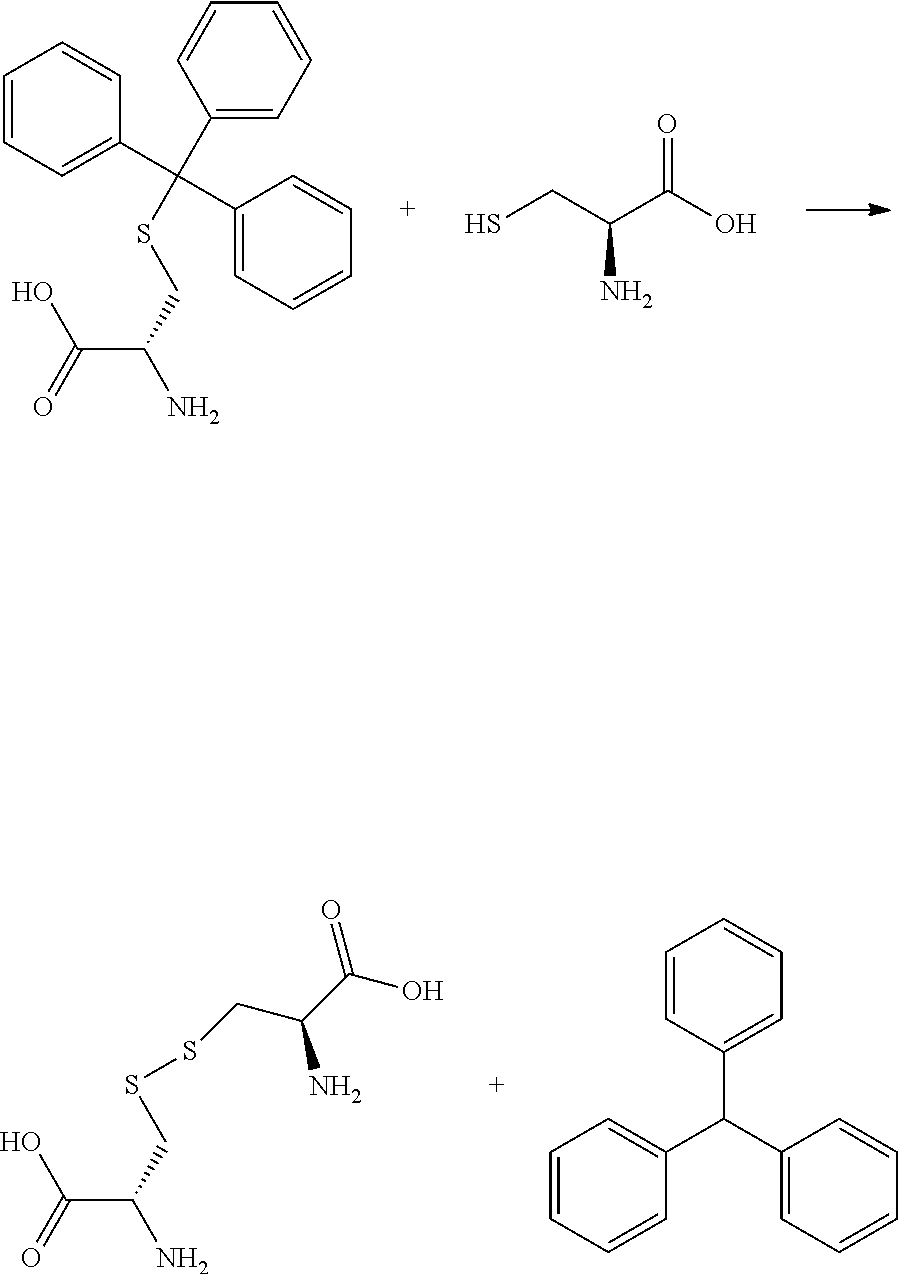




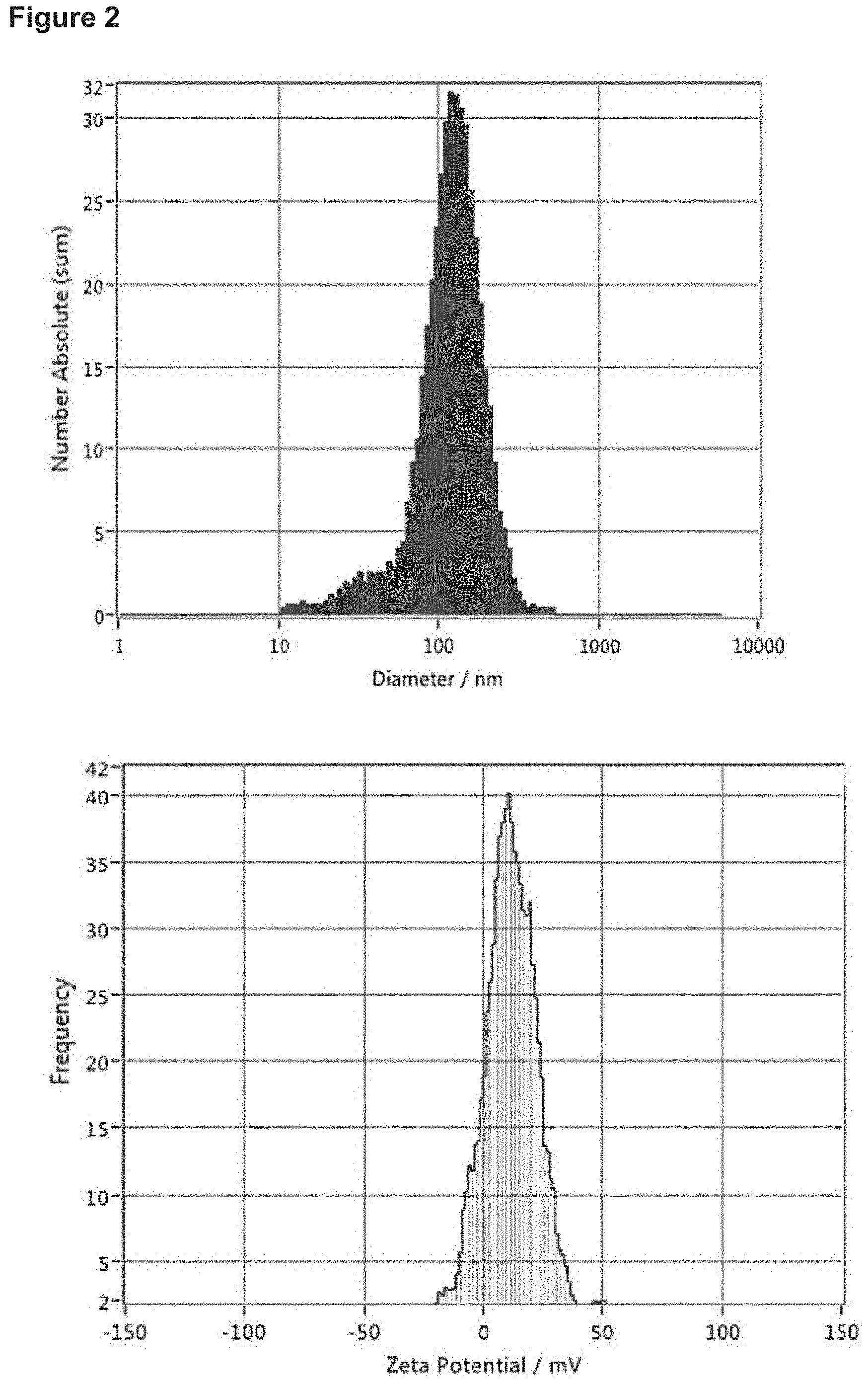
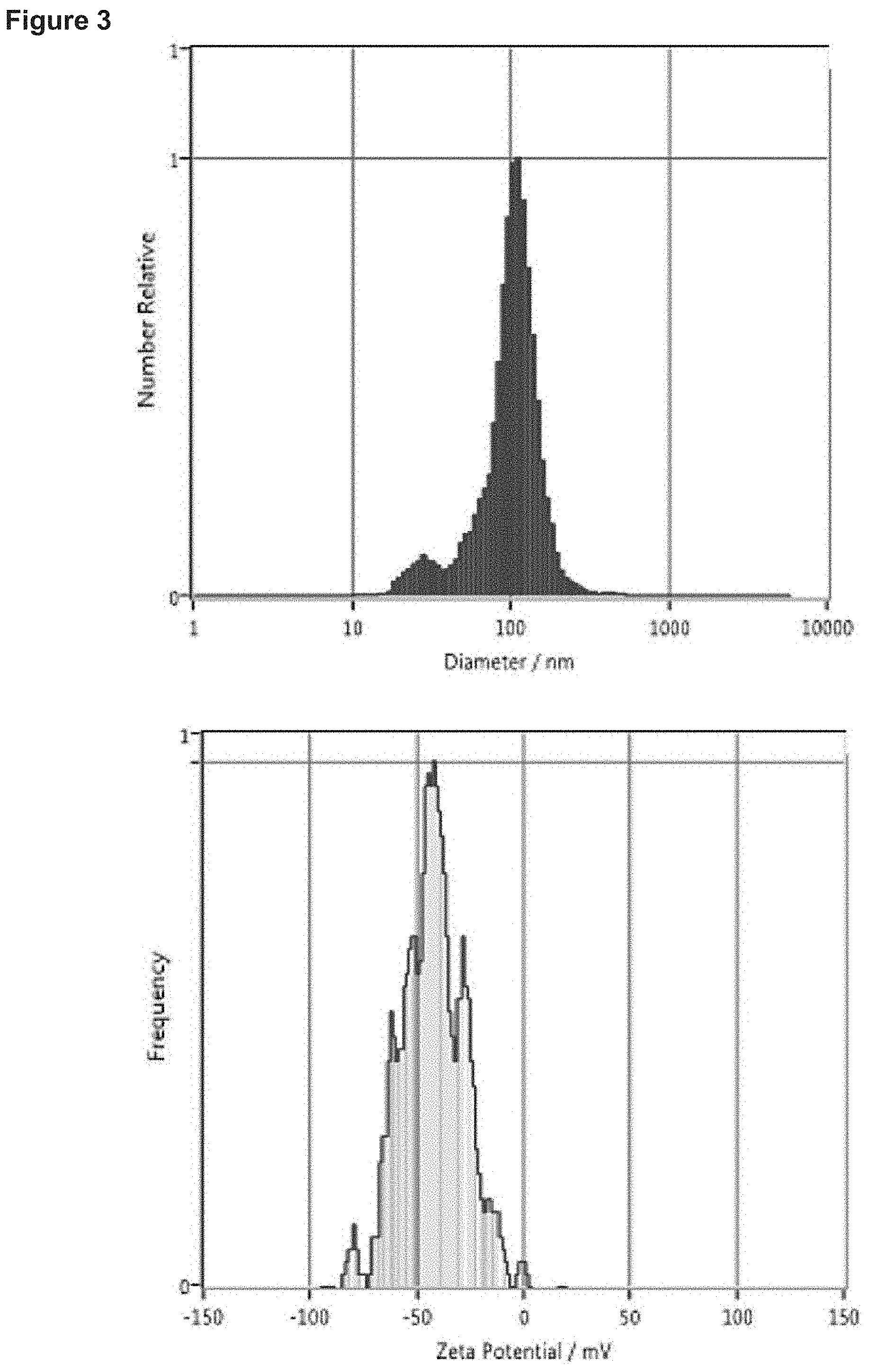
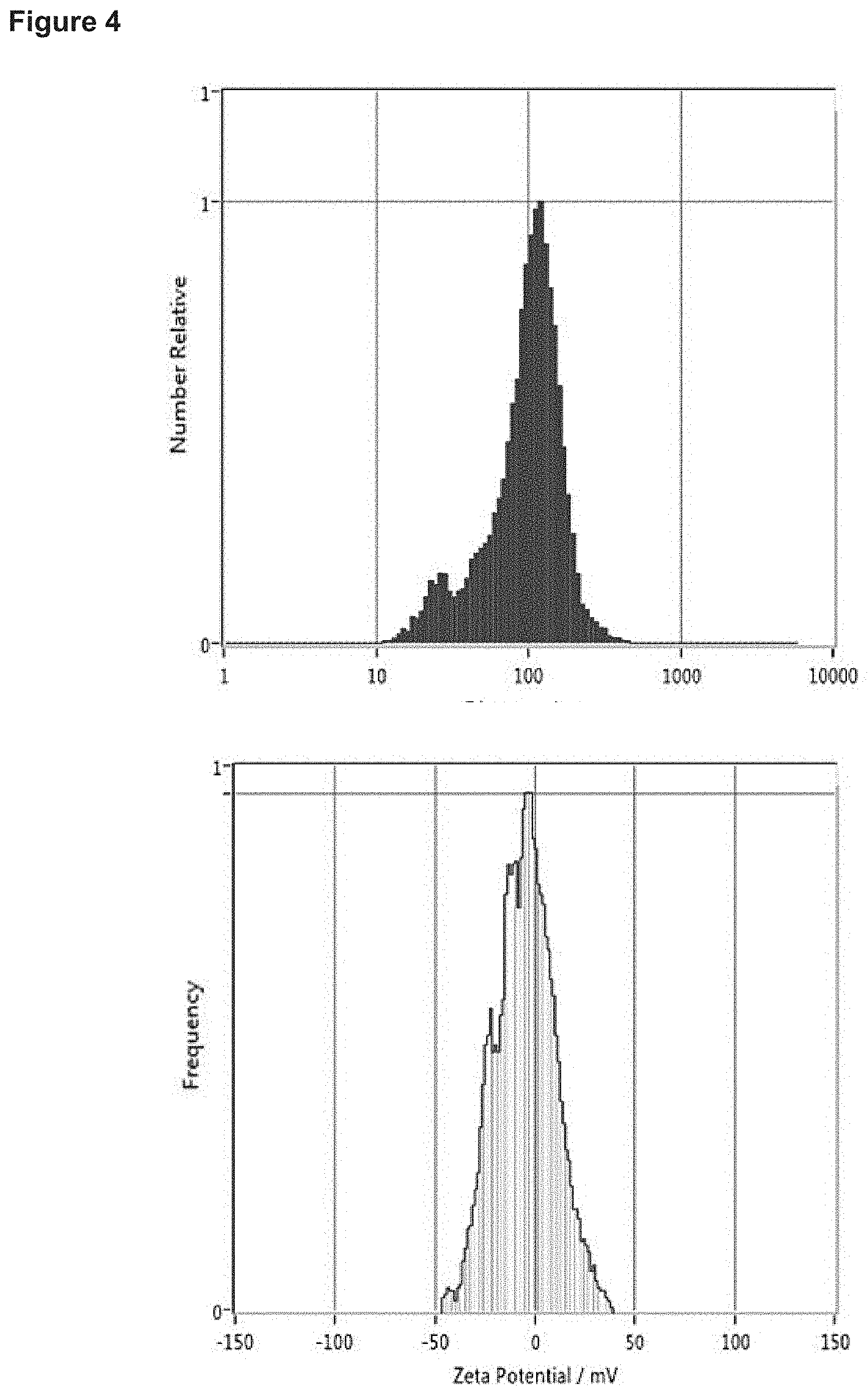


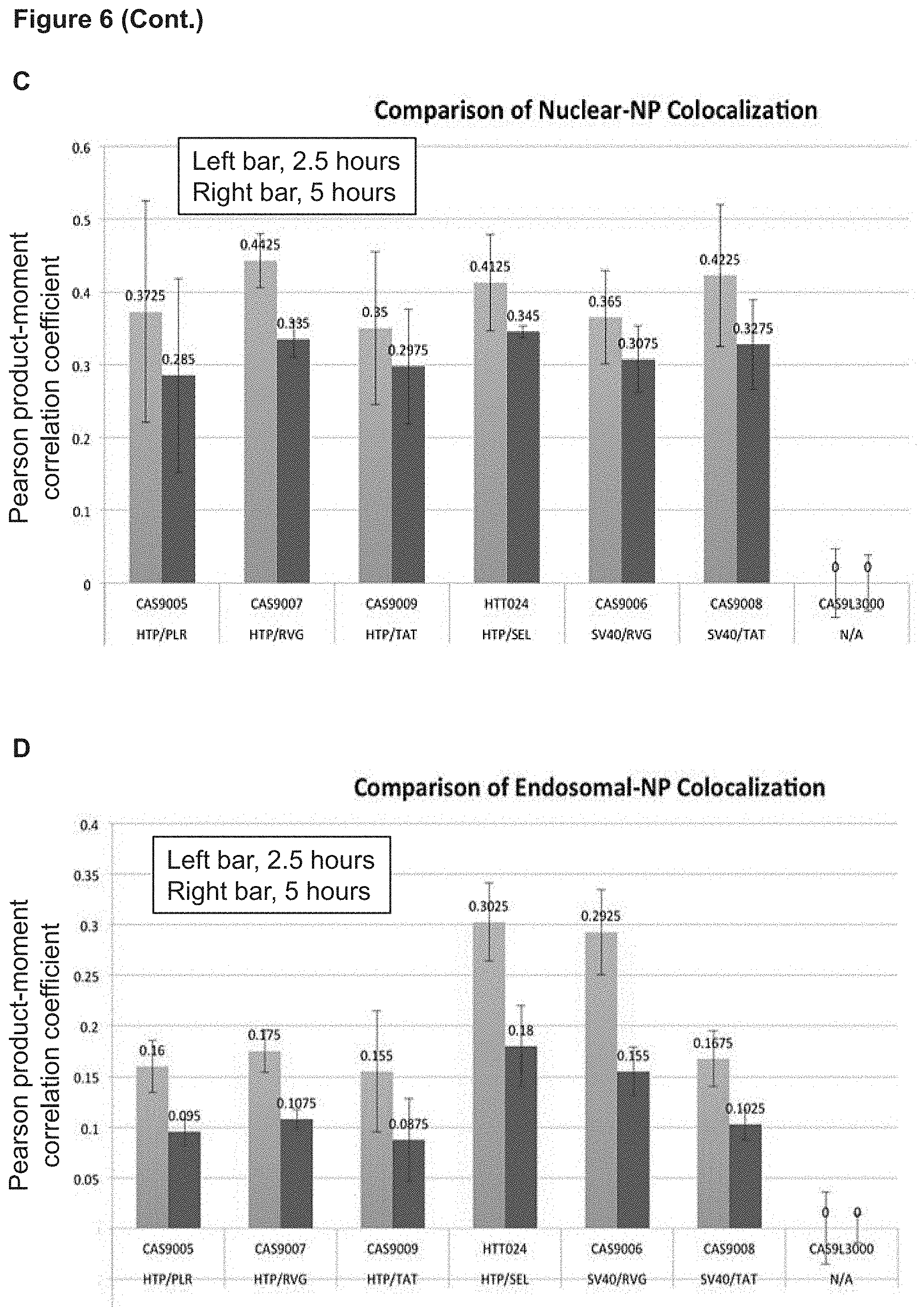

View All Diagrams
| United States Patent Application | 20200095605 |
| Kind Code | A1 |
| WATSON; Andre Ronald ; et al. | March 26, 2020 |
COMPOSITIONS AND METHODS FOR NUCLEIC ACID AND/OR PROTEIN PAYLOAD DELIVERY
Abstract
Provided are methods and compositions for nanoparticle delivery of payloads (e.g., nucleic acid and/or protein payloads) to cells. In some embodiments, a subject nanoparticle includes a core and a sheddable layer encapsulating the core, where the core includes (i) an anionic polymer composition; (ii) a cationic polymer composition; (iii) a cationic polypeptide composition; and (iv) a nucleic acid and/or protein payload; and where: (a) the anionic polymer composition includes polymers of D-isomers of an anionic amino acid and polymers of L-isomers of an anionic amino acid, and/or (b) the cationic polymer composition comprises polymers of D-isomers of a cationic amino acid and polymers of L-isomers of a cationic amino acid. In some cases, the polymers of D-isomers of an anionic and/or cationic amino acid are present at a ratio, relative to the polymers of L-isomers, in a range of from 10:1 to 1:10.
| Inventors: | WATSON; Andre Ronald; (San Francisco, CA) ; FOSTER; Christian; (Oakland, CA) | ||||||||||
| Applicant: |
|
||||||||||
|---|---|---|---|---|---|---|---|---|---|---|---|
| Family ID: | 62488586 | ||||||||||
| Appl. No.: | 16/701014 | ||||||||||
| Filed: | December 2, 2019 |
Related U.S. Patent Documents
| Application Number | Filing Date | Patent Number | ||
|---|---|---|---|---|
| 15842829 | Dec 14, 2017 | |||
| 16701014 | ||||
| 62434344 | Dec 14, 2016 | |||
| 62443567 | Jan 6, 2017 | |||
| 62443522 | Jan 6, 2017 | |||
| 62517346 | Jun 9, 2017 | |||
| Current U.S. Class: | 1/1 |
| Current CPC Class: | A61K 47/34 20130101; A61K 47/549 20170801; A61K 9/5146 20130101; A61K 47/64 20170801; A61K 31/7105 20130101; C12N 2310/14 20130101; C12N 15/111 20130101; A61K 47/42 20130101; C12N 15/85 20130101; C12N 2310/3517 20130101; A61K 48/0016 20130101; A61K 48/0075 20130101; A61K 48/0041 20130101; C12N 2310/20 20170501; A61K 47/6455 20170801; C12N 2320/32 20130101; A61P 3/10 20180101; A61P 37/00 20180101; A61K 9/0019 20130101; A61K 47/645 20170801; A61K 9/0085 20130101; C12N 15/87 20130101; C12N 15/102 20130101; A61P 35/00 20180101; A61K 47/6807 20170801; C12N 9/22 20130101; A61K 31/40 20130101; B82Y 5/00 20130101 |
| International Class: | C12N 15/85 20060101 C12N015/85; A61K 47/68 20060101 A61K047/68; A61K 48/00 20060101 A61K048/00; A61K 47/54 20060101 A61K047/54; A61K 31/7105 20060101 A61K031/7105; A61K 31/40 20060101 A61K031/40; A61K 47/42 20060101 A61K047/42; A61K 47/64 20060101 A61K047/64; A61P 37/00 20060101 A61P037/00; A61P 3/10 20060101 A61P003/10; A61P 35/00 20060101 A61P035/00; A61K 9/51 20060101 A61K009/51; A61K 47/34 20060101 A61K047/34; C12N 15/10 20060101 C12N015/10; B82Y 5/00 20060101 B82Y005/00; C12N 15/87 20060101 C12N015/87; A61K 9/00 20060101 A61K009/00; C12N 15/11 20060101 C12N015/11 |
Claims
1. A nanoparticle, comprising a core and a sheddable layer encapsulating the core, wherein the core comprises: (i) an anionic polymer composition; (ii) a cationic polymer composition; (iii) a cationic polypeptide composition; and (iv) a nucleic acid and/or protein payload, wherein (a) said anionic polymer composition comprises polymers of D-isomers of an anionic amino acid and polymers of L-isomers of an anionic amino acid; and/or (b) said cationic polymer composition comprises polymers of D-isomers of a cationic amino acid and polymers of L-isomers of a cationic amino acid.
2. The nanoparticle of claim 1, wherein said anionic polymer composition comprises a first anionic polymer selected from poly(D-glutamic acid) (PDEA) and poly(D-aspartic acid) (PDDA); and comprises a second anionic polymer selected from poly(L-glutamic acid) (PLEA) and poly(L-aspartic acid) (PLDA).
3. The nanoparticle of claim 1 or claim 2, wherein said cationic polymer composition comprises a first cationic polymer selected from poly(D-arginine), poly(D-lysine), poly(D-histidine), poly(D-ornithine), and poly(D-citrulline); and comprises a second cationic polymer selected from poly(L-arginine), poly(L-lysine), poly(L-histidine), poly(L-ornithine), and poly(L-citrulline).
4. The nanoparticle of any one of claims 1-3, wherein said polymers of D-isomers of an anionic amino acid are present at a ratio, relative to said polymers of L-isomers of an anionic amino acid, in a range of from 10:1 to 1:10.
5. The nanoparticle of any one of claims 1-4, wherein said polymers of D-isomers of a cationic amino acid are present at a ratio, relative to said polymers of L-isomers of a cationic amino acid, in a range of from 10:1 to 1:10.
6. The nanoparticle of any one of claims 1-5, wherein the sheddable layer is an anionic coat.
7. The nanoparticle of any one of claims 1-6, wherein the sheddable layer is pH and/or glutathione sensitive.
8. The nanoparticle of any one of claims 1-7, wherein the sheddable layer comprises one or more of: silica, a peptoid, a polycysteine, calcium, calcium phosphate, calcium sulfate, manganese, manganese phosphate, manganese sulfate, magnesium, magnesium phosphate, magnesium sulfate, iron, iron phosphate, iron sulfate, lithium, lithium phosphate, and lithium sulfate.
9. The nanoparticle of claim 8, wherein the sheddable layer is a silica coat.
10. The nanoparticle of any one of claims 1-9, further comprising a surface coat surrounding the sheddable layer.
11. The nanoparticle of claim 10, wherein the surface coat comprises a cationic component that interacts electrostatically with the sheddable layer.
12. The nanoparticle of claim 10 or claim 11, wherein the surface coat comprises one or more of: a polymer of a cationic amino acid, a poly(arginine), an anchoring domain, a cationic anchoring domain, a cell penetrating peptide, a viral glycoprotein, a heparin sulfate proteoglycan, and a targeting ligand.
13. The nanoparticle of any one of claims 10-12, wherein the surface coat is zwitterionic and multivalent.
14. The nanoparticle of any one of claims 10-13, wherein the surface coat comprises one or more targeting ligands.
15. The nanoparticle of claim 14, wherein at least one of the one or more targeting ligands is conjugated to an anchoring domain that interacts with the sheddable layer.
16. The nanoparticle of claim 15, wherein the anchoring domain is a cationic anchoring domain selected from RRRRRRRRR (SEQ ID NO: 15) and HHHHHH (SEQ ID NO: 16).
17. The nanoparticle of claim 15 or claim 16, wherein the anchoring domain is conjugated to the at least one of the one or more targeting ligands via a linker.
18. The nanoparticle of claim 17, wherein the linker is not a polypeptide.
19. The nanoparticle of claim 17, wherein the linker is a polypeptide.
20. The nanoparticle of any one of claims 17-19, wherein the linker is conjugated to the targeting ligand via sulfhydryl or amine-reactive chemistry, and/or the linker is conjugated to the anchoring domain via sulfhydryl or amine-reactive chemistry.
21. The nanoparticle of any one of claims 17-20, wherein said at least one of the one or more targeting ligands comprises a cysteine residue and is conjugated to the linker via the cysteine residue.
22. The nanoparticle of any one of claims 14-21, wherein said one or more targeting ligands provides for targeted binding to a family B G-protein coupled receptor (GPCR).
23. The nanoparticle of claim 22, wherein said targeting ligand comprises a cysteine substitution, at one or more internal amino acid positions, relative to a corresponding wild type amino acid sequence.
24. The nanoparticle of claim 22 or claim 23, wherein said targeting ligand comprises an amino acid sequence having 85% or more identity to the amino acid sequence HGEGTFTSDLSKQMEEEAVRLFIEWLKNGGPSSGAPPPS (SEQ ID NO: 1).
25. The nanoparticle of claim 24, wherein said targeting ligand comprises a cysteine substitution at one or more of positions L10, S11, and K12 of the amino acid sequence set forth in SEQ ID NO: 1).
26. The nanoparticle of claim 25, wherein said targeting ligand comprises the amino acid sequence HGEGTFTSDLCKQMEEEAVRLFIEWLKNGGPSSGAPPPS (SEQ ID NO: 2).
27. The nanoparticle of any one of claims 14-26, wherein the surface coat comprises one or more targeting ligands that provides for targeted binding to a cell surface protein selected from c-Kit, CD27, and CD150.
28. The nanoparticle of any one of claims 14-27, wherein the surface coat comprises one or more targeting ligands selected from the group consisting of: rabies virus glycoprotein (RVG) fragment, ApoE-transferrin, lactoferrin, melanoferritin, ovotransferritin, L-selectin, E-selectin, P-selectin, PSGL-1, ESL-1, CD44, death receptor-3 (DR3), LAMP1, LAMP2, Mac2-BP, stem cell factor (SCF), CD70, SH2 domain-containing protein 1A (SH2D1A), a exendin-4, GLP1, a targeting ligand that targets .alpha.5.beta.1, RGD, a Transferrin ligand, an FGF fragment, succinic acid, a bisphosphonate, CD90, CD45f, CD34, a hematopoietic stem cell chemotactic lipid, sphingosine, ceramide, sphingosine-1-phosphate, ceramide-1-phosphate, and an active targeting fragment of any of the above.
29. The nanoparticle of any one of claims 14-28, wherein the surface coat comprises stem cell factor (SCF) or a targeting fragment thereof, CD70 or a targeting fragment thereof, and SH2 domain-containing protein 1A (SH2D1A) or a targeting fragment thereof.
30. The nanoparticle of any one of claims 14-29, wherein the surface coat comprises one or more targeting ligands that provides for targeted binding to target cells selected from: bone marrow cells, hematopoietic stem cells (HSCs), hematopoietic stem and progenitor cells (HSPCs), peripheral blood mononuclear cells (PBMCs), myeloid progenitor cells, lymphoid progenitor cells, T-cells, B-cells, NKT cells, NK cells, dendritic cells, monocytes, granulocytes, erythrocytes, megakaryocytes, mast cells, basophils, eosinophils, neutrophils, macrophages, erythroid progenitor cells, megakaryocyte-erythroid progenitor cells (MEPs), common myeloid progenitor cells (CMPs), multipotent progenitor cells (MPPs), hematopoietic stem cells (HSCs), short term HSCs (ST-HSCs), IT-HSCs, long term HSCs (LT-HSCs), endothelial cells, neurons, astrocytes, pancreatic cells, pancreatic .beta.-islet cells, liver cells, muscle cells, skeletal muscle cells, cardiac muscle cells, hepatic cells, fat cells, intestinal cells, cells of the colon, and cells of the stomach.
31. The nanoparticle of any one of claims 14-29, wherein the surface coat comprises a two or more targeting ligands, the combination of which provides for targeted binding to cells selected from: bone marrow cells, hematopoietic stem cells (HSCs), hematopoietic stem and progenitor cells (HSPCs), peripheral blood mononuclear cells (PBMCs), myeloid progenitor cells, lymphoid progenitor cells, T-cells, B-cells, NKT cells, NK cells, dendritic cells, monocytes, granulocytes, erythrocytes, megakaryocytes, mast cells, basophils, eosinophils, neutrophils, macrophages, erythroid progenitor cells, megakaryocyte-erythroid progenitor cells (MEPs), common myeloid progenitor cells (CMPs), multipotent progenitor cells (MPPs), hematopoietic stem cells (HSCs), short term HSCs (ST-HSCs), IT-HSCs, long term HSCs (LT-HSCs), endothelial cells, neurons, astrocytes, pancreatic cells, pancreatic .beta.-islet cells, liver cells, muscle cells, skeletal muscle cells, cardiac muscle cells, hepatic cells, fat cells, intestinal cells, cells of the colon, and cells of the stomach.
32. The nanoparticle of any one of claims 1-31, wherein the cationic polypeptide composition comprises a polypeptide that comprises a nuclear localization signal (NLS).
33. The nanoparticle of claim 32, wherein the NLS comprises the amino acid sequence set forth in any one of SEQ ID NOs: 151-157 and 201-264.
34. The nanoparticle of any one of claims 1-33, wherein the cationic polypeptide composition comprises a histone tail peptide (HTP).
35. The nanoparticle of claim 34, wherein the HTP is conjugated to a cationic amino acid polymer.
36. The nanoparticle of claim 35, wherein the HTP is conjugated to a cationic amino acid polymer via a cysteine residue.
37. The nanoparticle of claim 35 or claim 36, wherein the cationic amino acid polymer comprises poly(lysine).
38. The nanoparticle of any one of claims 33-37, wherein said cationic polypeptide composition comprises histone peptides having a branched structure.
39. The nanoparticle of any one of claims 1-38, wherein the payload comprises one or more of: (i) a CRISPR/Cas guide RNA, (ii) a DNA molecule encoding a CRISPR/Cas guide RNA, (iii) a nucleic acid molecule encoding a CRISPR/Cas RNA-guided polypeptide, (iv) a CRISPR/Cas RNA-guided polypeptide, (v) a CRISPR/Cas guide RNA complexed with a CRISPR/Cas RNA-guided polypeptide, (vi) a nucleic acid molecule encoding a zinc finger protein (ZFP), (vii) a ZFP, (viii) a nucleic acid molecule encoding a transcription activator-like effector (TALE) protein, (ix) a TALE protein, and (x) a DNA donor template.
40. The nanoparticle of any one of claims 1-39, wherein the payload comprises (i) a CRISPR/Cas guide RNA and/or a DNA molecule encoding said CRISPR/Cas guide RNA; and (ii) a CRISPR/Cas RNA-guided polypeptide and/or a nucleic acid molecule encoding said CRISPR/Cas RNA-guided polypeptide.
41. The nanoparticle of claim 40, wherein the payload further comprises a DNA donor template.
42. A nanoparticle formulation, comprising: (a) a first nanoparticle according to any one of claims 1-41, wherein the payload comprises one or more of: (i) a CRISPR/Cas guide RNA, (ii) a DNA molecule encoding a CRISPR/Cas guide RNA, (iii) a nucleic acid molecule encoding a CRISPR/Cas RNA-guided polypeptide, (iv) a CRISPR/Cas RNA-guided polypeptide, (v) a CRISPR/Cas guide RNA complexed with a CRISPR/Cas RNA-guided polypeptide, (vi) a nucleic acid molecule encoding a zinc finger protein (ZFP), (vii) a ZFP, (viii) a nucleic acid molecule encoding a transcription activator-like effector (TALE) protein, and (ix) a TALE protein; and (b) a second nanoparticle comprising a nucleic acid payload that comprises a DNA donor template.
43. A multi-layered nanoparticle, comprising: (a) an inner core comprising a payload comprising a DNA donor template; (b) a first sheddable layer surrounding the inner core; (c) an intermediate core surrounding the first sheddable layer, wherein the intermediate core comprises one or more of: (i) a CRISPR/Cas guide RNA, (ii) a DNA molecule encoding a CRISPR/Cas guide RNA, (iii) a nucleic acid molecule encoding a CRISPR/Cas RNA-guided polypeptide, (iv) a CRISPR/Cas RNA-guided polypeptide, (v) a CRISPR/Cas guide RNA complexed with a CRISPR/Cas RNA-guided polypeptide, (vi) a zinc finger protein (ZFP), (vii) a DNA molecule encoding a ZFP, (viii) a transcription activator-like effector (TALE) protein, and (ix) a DNA molecule encoding a TALE protein; and (d) a second sheddable layer surrounding the intermediate core.
44. The multi-layered nanoparticle of claim 43, wherein the first and/or second sheddable layer comprises one or more of: silica, a peptoid, a polycysteine, calcium, calcium phosphate, calcium sulfate, manganese, manganese phosphate, manganese sulfate, magnesium, magnesium phosphate, magnesium sulfate, iron, iron phosphate, iron sulfate, lithium, lithium phosphate, and lithium sulfate.
45. The multi-layered nanoparticle of claim 43 or claim 44, comprising a surface coat surrounding the second sheddable layer.
46. The multi-layered nanoparticle of claim 45, wherein the surface coat comprises a cationic component that interacts electrostatically with the second sheddable layer.
47. The multi-layered nanoparticle of claim 45 or claim 46, wherein the surface coat comprises one or more of: a polymer of a cationic amino acid, a poly(arginine), a cell penetrating peptide, a viral glycoprotein, a heparin sulfate proteoglycan, and a targeting ligand.
48. The multi-layered nanoparticle of any one of claims 43-47, wherein the surface coat is zwitterionic and multivalent.
49. The multi-layered nanoparticle of any one of claims 43-48, wherein the surface coat comprises one or more targeting ligands.
50. A method of delivering a nucleic acid and/or protein payload to a target cell, the method comprising: contacting a eukaryotic target cell with the nanoparticle of any one of claims 1-41, the nanoparticle formulation of claim 42, and/or the multi-layered nanoparticle of any one of claims 43-49.
51. The method of claim 50, wherein the payload includes a gene editing tool.
52. The method of claim 50 or claim 51, wherein the payload includes one or more of: a CRISPR/Cas guide RNA, a DNA molecule encoding a CRISPR/Cas guide RNA, a CRISPR/Cas RNA-guided polypeptide, a nucleic acid molecule encoding a CRISPR/Cas RNA-guided polypeptide, a zinc finger nuclease, a nucleic acid molecule encoding a zinc finger nuclease, a TALE or TALEN, a nucleic acid molecule encoding a TALE or TALEN, and DNA donor template.
53. The method of any one of claims 50-52, wherein the target cell is a mammalian cell
54. The method of any one of claims 50-53, wherein the target cell is a human cell
55. The method of any one of claims 50-54, wherein the target cell is in culture in vitro.
56. The method of any one of claims 50-54, wherein the target cell is in vivo.
57. The method of claim 56, wherein said contacting includes a step of administering the nanoparticle to an individual
58. The method of claim 57, wherein the individual has Huntington's disease, ALS, Parkinson's disease, pancreatic cancer, diabetes, or von Willebrand's disease.
59. The method of any one of claims 50-58, wherein the nanoparticle includes a surface coat comprising a targeting ligand.
60. The method of claim 59, wherein the targeting ligand provides for target binding to cells selected from: bone marrow cells, hematopoietic stem cells (HSCs), hematopoietic stem and progenitor cells (HSPCs), peripheral blood mononuclear cells (PBMCs), myeloid progenitor cells, lymphoid progenitor cells, T-cells, B-cells, NKT cells, NK cells, dendritic cells, monocytes, granulocytes, erythrocytes, megakaryocytes, mast cells, basophils, eosinophils, neutrophils, macrophages, erythroid progenitor cells, megakaryocyte-erythroid progenitor cells (MEPs), common myeloid progenitor cells (CMPs), multipotent progenitor cells (MPPs), hematopoietic stem cells (HSCs), short term HSCs (ST-HSCs), IT-HSCs, long term HSCs (LT-HSCs), endothelial cells, neurons, astrocytes, pancreatic cells, pancreatic .beta.-islet cells, liver cells, muscle cells, skeletal muscle cells, cardiac muscle cells, hepatic cells, fat cells, intestinal cells, cells of the colon, and cells of the stomach.
61. The method of any one of claims 50-60, wherein the target cell is selected from: a bone marrow cell, a hematopoietic stem cell (HSC), a hematopoietic stem and progenitor cell (HSPC), a peripheral blood mononuclear cell (PBMC), a myeloid progenitor cell, a lymphoid progenitor cell, a T-cell, a B-cell, a NKT cell, a NK cell, a dendritic cell, a monocyte, a granulocyte, an erythrocyte, a megakaryocyte, a mast cell, a basophil, an eosinophil, a neutrophil, a macrophage, an erythroid progenitor cell, a megakaryocyte-erythroid progenitor cell (MEP), a common myeloid progenitor cell (CMP), a multipotent progenitor cell (MPP), a hematopoietic stem cell (HSC), a short term HSC (ST-HSC), an IT-HSC, a long term HSC (LT-HSC), an endothelial cell, a neuron, an astrocyte, a pancreatic cell, a pancreatic .beta.-islet cell, a liver cell, a muscle cell, a skeletal muscle cell, a cardiac muscle cell, a hepatic cell, a fat cell, an intestinal cell, a cell of the colon, and a cell of the stomach.
62. A branched histone molecule, comprising: one or more histone tail peptides (HTPs) conjugated to side chains of a cationic polymer.
63. The branched histone molecule of claim 62, wherein the cationic polymer comprises poly(arginine) or poly(lysine).
64. The branched histone molecule of claim 63, wherein up to 40% of the side chains of the cationic polymer are conjugated to said one or more HTPs.
Description
CROSS-REFERENCE
[0001] This application is a continuation of U.S. application Ser. No. 15/842,829, filed Dec. 14, 2017, which claims the benefit of U.S. Provisional Patent Application No. 62/517,346, filed Jun. 9, 2017, of U.S. Provisional Patent Application No. 62/443,567, filed Jan. 6, 2017, of U.S. Provisional Patent Application No. 62/443,522, filed Jan. 6, 2017, and of U.S. Provisional Patent Application No. 62/434,344, filed Dec. 14, 2016, all of which applications are incorporated herein by reference in their entirety.
INCORPORATION BY REFERENCE OF SEQUENCE LISTING PROVIDED AS A TEXT FILE
[0002] A Sequence Listing was provided in U.S. application Ser. No. 15/842,829 on Dec. 14, 2017, as a text file, "LGDL-004_SeqList_ST25.txt" created on Dec. 14, 2017 and having a size of 128 KB. The contents of the text file are incorporated by reference herein in their entirety.
INTRODUCTION
[0003] Effective introduction of nucleic acid and/or protein payloads into cells, e.g., for genome editing and/or altering gene expression, is an important objective for therapeutic strategies and for research methodologies. To achieve effective introduction of a payload, it is important to appropriately package the payload to protect it from degradation prior to cellular entry, to permit entry into cells, to direct the payload away from the lysosomal degradation pathway, and to direct delivery to the appropriate subcellular compartment. In addition, the timing of release of a payload from the packaging following cellular entry can influence the effectiveness of the payload.
[0004] Many nanoparticle-based technologies for payload delivery offer low levels of cellular transfection and limited effectiveness upon transfection. There is a need for compositions and methods that enhance effectiveness of payload delivery to cells.
SUMMARY
[0005] Provided are compositions and methods for delivery of payloads (e.g., nucleic acid and/or protein payloads) to cells (e.g., nanoparticle, viral, and non-viral delivery of payloads to cells). Nanoparticles designed for serum stability, targeted delivery to specific cell types, biomimicry of endogenous nucleic acid packaging via histones and nucleosome-like branched polymer, compartment-specific unpackaging within the nucleus, variable timed release kinetics, and methods of use thereof, are provided. In some embodiments, a subject nanoparticle includes a core and a sheddable layer encapsulating the core (e.g., providing for temporary stabilization of the core during cell delivery), where the core includes (i) an anionic polymer composition; (ii) a cationic polymer composition; (iii) a cationic polypeptide composition; and (iv) a nucleic acid and/or protein payload; and where: (a) the anionic polymer composition includes polymers of D-isomers of an anionic amino acid and polymers of L-isomers of an anionic amino acid, and/or (b) the cationic polymer composition includes polymers of D-isomers of a cationic amino acid and polymers of L-isomers of a cationic amino acid. In some cases, the polymers of D-isomers of an anionic amino acid are present at a ratio, relative to the polymers of L-isomers of an anionic amino acid, in a range of from 10:1 to 1:10. In some cases, the polymers of D-isomers of a cationic amino acid are present at a ratio, relative to said polymers of L-isomers of a cationic amino acid, in a range of from 10:1 to 1:10.
[0006] In some cases, a nanoparticle of the disclosure includes a surface coat, which surrounds the sheddable layer. The surface coat can include a targeting ligand that provides for targeted binding to a surface molecule of a target cell. In some cases, the targeting ligand is conjugated (with or without a linker) to an anchoring domain, e.g., for anchoring the targeting ligand to the sheddable layer of the nanoparticle.
[0007] Also provided are multi-layered nanoparticles that include a first payload (e.g., a DNA donor template) as part of the core, where the core is surrounded by a first sheddable layer, the first sheddable layer is surrounded by an intermediate layer that includes a second payload (e.g., a gene editing tool), and the intermediate layer is surrounded by a second sheddable layer. In some cases the second sheddable layer is coated with a surface coat (e.g., a surface coat that includes a targeting ligand.
[0008] Also provided are nanoparticle formulations including two or more nanoparticles in which the payload of a first nanoparticle includes a donor DNA template and the payload of a second nanoparticle includes a gene editing tool (e.g., (i) a CRISPR/Cas guide RNA; (ii) a DNA encoding a CRISPR/Cas guide RNA; (iii) a DNA and/or RNA encoding a programmable gene editing protein; and/or (iv) a programmable gene editing protein).
[0009] Also provided are methods of co-delivery of multiple payloads (e.g., two or more payloads) as part of the same package. For example, provided are method of delivering a nucleic acid and/or protein payload to a target cell, where the method includes contacting a eukaryotic target cell with a viral or non-viral delivery vehicle that includes (a) a gene editing tool; and (b) a nucleic acid or protein agent that induces proliferation of and/or biases differentiation of the target cell.
BRIEF DESCRIPTION OF THE DRAWINGS
[0010] The invention is best understood from the following detailed description when read in conjunction with the accompanying drawings. The patent or application file contains at least one drawing executed in color. Copies of this patent or patent application publication with color drawing(s) will be provided by the Office upon request and payment of the necessary fee. It is emphasized that, according to common practice, the various features of the drawings are not to-scale. On the contrary, the dimensions of the various features are arbitrarily expanded or reduced for clarity. Included in the drawings are the following figures.
[0011] FIG. 1 depicts results from a fluorimetric assay testing various parameters (e.g., cation:anion charge ratio) for condensation of nucleic acid payloads. The result showed, e.g., that a charge ratio of 2 works well for the condensation of plasmids encoding Cas9 and guide RNA molecules.
[0012] FIG. 2 depicts particle size and zeta potential distributions for nanoparticle cores that were generated. The data were obtained using a Particle Metrix ZetaView NTA instrument. Nanoparticle Size (peak) was 128.8 nm, and Zeta potential (peak) was +10.5 mV (100%).
[0013] FIG. 3 depicts particle size and zeta potential distributions for stabilized nanoparticle cores (cores encapsulated by a sheddable layer). The data were obtained using a Particle Metrix ZetaView NTA instrument. The stabilized cores had a size of 110.6 nm and zeta potential of -42.1 mV (95%).
[0014] FIG. 4 depicts data showing that nanoparticles with an outer shell (outer coat) that included RVG9R, which is Rabies Virus Glycoprotein (RVG) fused to a 9-Arg peptide sequence (as a cationic anchoring domain), had a characteristic particle size of 115.8 nm and a zeta potential of -3.1 mV (100%). Optimal outer coating yields a transition of zeta potential from -50 mV (for the silica coated core) to between 0 and -10 mV (after adding the outer shell).
[0015] FIG. 5 depicts results from cell culture experiments in which different nanoparticles were used to deliver nucleic acid payloads. The figure compares nanoparticles that include poly(D-glutamic Acid) as part of the core (in addition to poly(L-arginine)) to those that do not. The three rows represent replicates.
[0016] FIG. 6 (panels A-D) depicts microscopy images of neural stem cells that were contacted with nanoparticles that included CRISPR/Cas9 expression vectors as the nucleic acid payload. The core of the nanoparticles included poly(L-arginine) (a cationic polymer) tagged with a fluorophore (FITC). The endosome and nucleus were stained using Lysotracker (Red) and Hoescht 3342 (blue) respectively. Nanoparticles (and Lipofectamine 3000 as a control) were introduced to cells 16 hours after seeding. Cells were incubated with Hoescht 3342 and Lysotracker Red prior to imaging. Panels C-D present bar graphs that quantify colocalization of the nanoparticle core with the nucleus and with endosomes.
[0017] FIG. 7 (panels A-B) depicts microscopy images of peripheral blood mononuclear cells (PBMCs) that were transfected with nanoparticles that included mRNA encoding GFP as a nucleic acid payload. The images demonstrate that mRNA expression can be extended to 16 days with nanoparticles that include a core with, at a defined ratio, a polymer of D-isomers of an anionic amino acid and a polymer of L-isomers of an anionic amino acid. In this case, use of a nanoparticle core with a 2:1 ratio of poly(D-Glutamic acid) to poly(L-Glutamic Acid) resulted in maximum expression at 16 days (panel A=4 days; panel B=16 days).
[0018] FIG. 8 depicts a schematic representation of an example embodiment of a subject nanoparticle.
[0019] FIG. 9 depicts a schematic representation of an example embodiment of a subject nanoparticle. In this case, the nanoparticle is multi-layered, having a core (which includes a first payload) surrounded by a first sheddable layer, which is surrounded by an intermediate layer (which includes an additional payload), which is surrounded by a second sheddable layer, which is surface coated (i.e., includes an outer shell).
[0020] FIG. 10 (panels A-B) depicts schematic representations of example configurations of a delivery molecule of a surface coat of a subject nanoparticle. The delivery molecules depicted include a targeting ligand conjugated to an anchoring domain that is interacting electrostatically with a sheddable layer of a nanoparticle. Note that the targeting ligand can be conjugated at the N- or C-terminus (left of each panel), but can also be conjugated at an internal position (right of each panel). The molecules in panel A include a linker while those in panel B do not.
[0021] FIG. 11 provides a schematic diagram of a family B GPCR, highlighting separate domains to be considered when evaluating a targeting ligand, e.g., for binding to allosteric/affinity N-terminal domains and orthosteric endosomal-sorting/signaling domains. (Figure is adapted from Siu, Fai Yiu, et al., Nature 499.7459 (2013): 444-449).
[0022] FIG. 12 provides an example of identifying an internal amino acid position for insertion and/or substitution (e.g., with a cysteine residue) for a targeting ligand such that affinity is maintained and the targeting ligand engages long endosomal recycling pathways that promote nucleic acid release and limit nucleic acid degradation. In this case, the targeting ligand is exendin-4 and amino acid positions 10, 11, and 12 were identified as sites for possible insertion and/or substitution (e.g., with a cysteine residue, e.g., an S11C mutation). The figure shows an alignment of simulated Exendin-4 (SEQ ID NO: 1) to known crystal structures of glucagon-GCGR (4ERS) and GLP1-GLP1R-ECD complex (PDB: 3IOL), and PDB renderings that were rotated in 3-dimensional space.
[0023] FIG. 13 shows a tbFGF fragment as part of a ternary FGF2-FGFR1-HEPARIN complex (1fq9 on PDB). CKNGGFFLRIHPDGRVDGVREKS (highlighted) (SEQ ID NO: 43) was determined to be important for affinity to FGFR1.
[0024] FIG. 14 provides an alignment and PDB 3D rendering used to determine that HFKDPK (SEQ ID NO: 5) is a peptide that can be used for ligand-receptor orthosteric activity and affinity.
[0025] FIG. 15 provides an alignment and PDB 3D rendering used to determine that LESNNYNT (SEQ ID NO: 6) is a peptide that can be used for ligand-receptor orthosteric activity and affinity.
[0026] FIG. 16 provides non-limiting examples nuclear localization signals (NLSs) that can be used as part of a subject nanoparticle (e.g., as an NLS-containing peptide; as part of/conjugated to an NLS-containing peptide, an anionic polymer, a cationic polymer, and/or a cationic polypeptide; and the like). The figure is adapted from Kosugi et al., J Biol Chem. 2009 Jan. 2; 284(1):478-85. [Class 1, top to bottom (SEQ ID NOs: 201-221); Class 2, top to bottom (SEQ ID NOs: 222-224); Class 4, top to bottom (SEQ ID NOs: 225-230); Class 3, top to bottom (SEQ ID NOs: 231-245); Class 5, top to bottom (SEQ ID NOs: 246-264)].
[0027] FIG. 17 (panels A-B) depicts schematic representations of the mouse (panel A) and human (panel B) hematopoietic cell lineage, and markers that have been identified for various cells within the lineage.
[0028] FIG. 18 (panels A-B) depicts schematic representations of miRNA (panel A) and protein (panel B) factors that can be used to influence cell differentiation and/or proliferation FIG. 19 provides condensation curves on nanoparticles with payload: VWF-EGFP pDNA with peptide nucleic acid (PNA) Binding Site.
[0029] FIG. 20 provides condensation curves on nanoparticles with payload: NLS-CAS9-NLS RNP complexed to HBB gRNA.
[0030] FIG. 21 provides condensation curves on nanoparticles with payload: HBB gRNA.
[0031] FIG. 22 provides condensation curves on nanoparticles with payload: HBB gRNA.
[0032] FIG. 23 provides condensation curves on nanoparticles with payload: NLS-CAS9-NLS RNP complexed to HBB gRNA.
[0033] FIG. 24 provides condensation curves on nanoparticles with payload: VWF-EGFP pDNA with peptide nucleic acid (PNA) Binding Site.
[0034] FIG. 25 provides condensation curves on nanoparticles with payload: VWF-EGFP pDNA with peptide nucleic acid (PNA) Binding Site.
[0035] FIG. 26 provides condensation curves on nanoparticles with payload: RNP of NLS-CAS9-NLS with HBB gRNA.
[0036] FIG. 27 provides condensation curves on nanoparticles with payload: VWF-EGFP pDNA with peptide nucleic acid (PNA) Binding Site.
[0037] FIG. 28 provides condensation curves on nanoparticles with payload: Cy5_EGFP mRNA.
[0038] FIG. 29 provides condensation curves on nanoparticles with payload: BLOCK-iT Alexa Fluor 555 siRNA.
[0039] FIG. 30 provides condensation curves on nanoparticles with payload: NLS-Cas9-EGFP RNP complexed to HBB gRNA.
[0040] FIG. 31 provides data collected when using nanoparticles with Alexa 555 Block-IT siRNA as payload.
[0041] FIG. 32 provides data collected when using nanoparticles with ribonuclear protein (RNP) formed by NLS-Cas9-GFP and HBB guide RNA as payload.
[0042] FIG. 33 provides data collected when using nanoparticles with Cy5 EGFP mRNA as payload.
[0043] FIG. 34 provides data collected when using nanoparticles with payload: VWF-EGFP pDNA with Cy5 tagged peptide nucleic acid (PNA) Binding Site.
[0044] FIG. 35 provides data from a SYBR Gold exclusion assay showing fluorescence intensity decrease by addition of cationic polypeptide CD45_mSiglec_(4GS)2_9R_C followed by PLE100 and by further addition of the cationic polypeptide to RNP.
[0045] FIG. 36 provides data from a SYBR Gold exclusion assay showing fluorescence intensity variations by addition of cationic polypeptide CD45_mSiglec_(4GS)2_9R_C followed by PLE100 and by further addition of the cationic polypeptide to siRNA and SYBR Gold.
[0046] FIG. 37 provides data from a SYBR Gold exclusion assay showing fluorescence intensity variations by addition of cationic polypeptide histone peptide H2A followed by CD45_mSiglec_(4GS)2_9R_C and by further addition of PLE100 to RNP of NLS-Cas9-EGFP with HBB gRNA and SYBR Gold.
[0047] FIG. 38 provides data from a SYBR Gold exclusion assay showing fluorescence intensity variations by addition of cationic polypeptide histone peptide H4 together with CD45_mSiglec_(4GS)2_9R_C and by further addition of PLE100 to RNP of NLS-Cas9-EGFP with HBB gRNA and SYBR Gold.
[0048] FIG. 39 provides data from a SYBR Gold exclusion assay showing fluorescence intensity variations by addition of cationic polypeptide CD45_mSiglec_(4GS)2_9R_C fand by further addition of PLE100 to mRNA.
[0049] FIG. 40 provides data from a SYBR Gold exclusion assay showing fluorescence intensity variations by addition histone H4 and by further addition of CD45-mSiglec-(4GS)2_9R_c and PLE100 to mRNA.
[0050] FIG. 41 provides data from a SYBR Gold exclusion assay showing fluorescence intensity variations by addition histone H2A and by further addition of CD45-mSiglec-(4GS)2_9R_c and PLE100 to mRNA.
[0051] FIG. 42 provides data from a SYBR Gold exclusion assay from intercalation with VWF_EGFP pDNA showing fluorescence intensity variations by addition of cationic polypeptide CD45_mSiglec_(4GS)2_9R_C followed by PLE100.
[0052] FIG. 43 provides data from a SYBR Gold exclusion assay from intercalation with VWF_EGFP pDNA showing fluorescence intensity variations by addition of histone H4, followed by cationic polypeptide CD45_mSiglec_(4GS)2_9R_C followed by PLE100.
[0053] FIG. 44 provides data from a SYBR Gold exclusion assay from intercalation with VWF_EGFP pDNA showing fluorescence intensity variations by addition of histone H4, followed by cationic polypeptide CD45_mSiglec_(4GS)2_9R_C followed by PLE100.
[0054] FIG. 45 (panels A-C) provide data related to polyplex size distribution, silica coated size and zeta potential distribution, and ligand coated/functionalized particle size and zeta potential distribution.
[0055] FIG. 46 provides data related to branched histone peptide conjugate pilot particles.
[0056] FIG. 47 provides data related to project HSC.001.001 (see Table 5).
[0057] FIG. 48 provides data related to project HSC.001.002 (see Table 5).
[0058] FIG. 49 provides data related to project HSC.002.01 (Targeting Ligand--ESELLg_mESEL_(4GS)2_9R_N) (see Table 5).
[0059] FIG. 50 provides data related to project HSC.002.02 (Targeting Ligand--ESELLg_mESEL_(4GS)2_9R_C) (see Table 5).
[0060] FIG. 51 provides data related to project HSC.002.03 (Targeting Ligand--CD45_mSiglec_(4GS)2_9R_C) (see Table 5).
[0061] FIG. 52 provides data related to project HSC.002.04 (Targeting Ligand--Cy5mRNA-SiO2-PEG) (see Table 5).
[0062] FIG. 53 provides data related to project BLOOD.002.88 (Targeting Ligand--CD45_mSiglec_(4GS)2_9R_C) (see Table 5).
[0063] FIG. 54 provides data related to project BLOOD.002.89 (Targeting Ligand--CD45_mSiglec_(4GS)2_9R_C) (see Table 5).
[0064] FIG. 55 provides data related to project BLOOD.002.90 (see Table 5).
[0065] FIG. 56 provides data related to project BLOOD.002.91 (PLR50) (see Table 5).
[0066] FIG. 57 provides data related to project BLOOD.002.92 (Targeting Ligand--CD45_mSiglec_(4GS)2_9R_C) (see Table 5).
[0067] FIG. 58 provides data related to project TCELL.001.1 (see Table 5).
[0068] FIG. 59 provides data related to project TCELL.001.3 (see Table 5).
[0069] FIG. 60 provides data related to project TCELL.001.13 (see Table 5).
[0070] FIG. 61 provides data related to project TCELL.001.14 (see Table 5).
[0071] FIG. 62 provides data related to project TCELL.001.16 (see Table 5).
[0072] FIG. 63 provides data related to project TCELL.001.18 (see Table 5).
[0073] FIG. 64 provides data related to project TCELL.001.28 (see Table 5).
[0074] FIG. 65 provides data related to project TCELL.001.29 (see Table 5).
[0075] FIG. 66 provides data related to project TCELL.001.31 (see Table 5).
[0076] FIG. 67 provides data related to project TCELL.001.33 (see Table 5).
[0077] FIG. 68 provides data related to project TCELL.001.43 (see Table 5).
[0078] FIG. 69 provides data related to project TCELL.001.44 (see Table 5).
[0079] FIG. 70 provides data related to project TCELL.001.46 (see Table 5).
[0080] FIG. 71 provides data related to project TCELL.001.48 (see Table 5).
[0081] FIG. 72 provides data related to project TCELL.001.58 (see Table 5).
[0082] FIG. 73 provides data related to project TCELL.001.59 (see Table 5).
[0083] FIG. 74 provides data related to project CYNOBM.002.82 (see Table 5).
[0084] FIG. 75 provides data related to project CYNOBM.002.83 (see Table 5).
[0085] FIG. 76 provides data related to project CYNOBM.002.84 (see Table 5).
[0086] FIG. 77 provides data related to project CYNOBM.002.85 (see Table 5).
[0087] FIG. 78 provides data related to project CYNOBM.002.86 (see Table 5).
[0088] FIG. 79 provides data related to project CYNOBM.002.76 (see Table 5).
[0089] FIG. 80 provides data related to project CYNOBM.002.77 (see Table 5).
[0090] FIG. 81 provides data related to project CYNOBM.002.78 (see Table 5).
[0091] FIG. 82 provides data related to project CYNOBM.002.79 (see Table 5).
[0092] FIG. 83 provides data related to project CYNOBM.002.80 (see Table 5).
[0093] FIG. 84 provides data related to untransfected controls for CynoBM.002 samples.
[0094] FIG. 85 provides data related to lipofectamine CRISPRMAX delivery of NLS-Cas9-EGFP BCL11a gRNA RNPs.
[0095] FIG. 86 provides data related to project CynoBM.002 RNP-Only controls (see Table 5).
[0096] FIG. 87 provides data related to project CynoBM.002.82 (see Table 5).
[0097] FIG. 88 provides data related to project CynoBM.002.83 (see Table 5).
[0098] FIG. 89 provides data related to project CYNOBM.002.84 (see Table 5).
[0099] FIG. 90 provides data related to project CynoBM.002.85 (see Table 5).
[0100] FIG. 91 provides data related to project CynoBM.002.86 (see Table 5).
[0101] FIG. 92 provides data related to project CynoBM.002.75 (see Table 5).
[0102] FIG. 93 provides data related to project CynoBM.002.76 (see Table 5).
[0103] FIG. 94 provides data related to project CynoBM.002.77 (see Table 5).
[0104] FIG. 95 provides data related to project CynoBM.002.78 (see Table 5).
[0105] FIG. 96 provides data related to project CynoBM.002.79 (see Table 5).
[0106] FIG. 97 provides data related to project CynoBM.002.80 (see Table 5).
[0107] FIG. 98 provides data related to project CynoBM.002.81 (see Table 5).
[0108] FIG. 99 provides qualitative images of CynoBM.002 RNP-Only controls.
[0109] FIG. 100 provides data related to project HSC.004 (see Table 5) high-content screening.
[0110] FIG. 101 provides data related to project TCELL.001 (see Table 5) high-content screening.
[0111] FIG. 102 provides data related to project TCELL.001 (see Table 5) lipofectamine CRISPRMAX controls.
[0112] FIG. 103 provides data related to project TCell.001.1 (see Table 5).
[0113] FIG. 104 provides data related to project TCell.001.2 (see Table 5).
[0114] FIG. 105 provides data related to project TCell.001.3 (see Table 5).
[0115] FIG. 106 provides data related to project TCell.001.4 (see Table 5).
[0116] FIG. 107 provides data related to project TCell.001.5 (see Table 5).
[0117] FIG. 108 provides data related to project TCell.001.6 (see Table 5).
[0118] FIG. 109 provides data related to project TCell.001.7 (see Table 5).
[0119] FIG. 110 provides data related to project TCell.001.8 (see Table 5).
[0120] FIG. 111 provides data related to project TCell.001.9 (see Table 5).
[0121] FIG. 112 provides data related to project TCell.001.10 (see Table 5).
[0122] FIG. 113 provides data related to project TCell.001.11 (see Table 5).
[0123] FIG. 114 provides data related to project TCell.001.12 (see Table 5).
[0124] FIG. 115 provides data related to project TCell.001.13 (see Table 5).
[0125] FIG. 116 provides data related to project TCell.001.14 (see Table 5).
[0126] FIG. 117 provides data related to project TCell.001.15 (see Table 5).
[0127] FIG. 118 provides data related to negative controls for project TCell.001 (see Table 5).
[0128] FIG. 119 provides data related to project Blood.002 (see Table 5).
[0129] FIG. 120 provides data related to project TCell.001.27 (see Table 5).
[0130] FIG. 121 depicts charge density plots of CRISPR RNP (a possible payload), which allows for determining whether an anionic or cationic peptide/material should be added to form a stable charged layer on the protein surface.
[0131] FIG. 122 depicts charge density plots of Sleeping Beauty Transposons (a possible payload), which allows for determining whether an anionic or cationic peptide/material should be added to form a stable charged layer on the protein surface.
[0132] FIG. 123 depicts (1) Exemplary anionic peptides (9-10 amino acids long, approximately to scale to 10 nm diameter CRISPR RNP) anchoring to cationic sites on the CRISPR RNP surface prior to (2) addition of cationic anchors as (2a) anchor-linker-ligands or standalone cationic anchors, with or without addition of (2b) subsequent multilayering chemistries, co-delivery of multiple nucleic acid or charged therapeutic agents, or layer stabilization through cross-linking.
[0133] FIG. 124 depicts examples of orders of addition and electrostatic matrix compositions based on core templates, which may include Cas9 RNP or any homogenously or zwitterionically charged surface.
[0134] FIG. 125 provides a modeled structure of IL2 bound to IL2R.
[0135] FIG. 126 provides a modeled structure of single chain CD3 antibody fragments.
[0136] FIG. 127 provides a modeled structure of sialoadhesin N-terminal in complex with N-Acetylneuraminic acid (Neu5Ac).
[0137] FIG. 128 provides a modeled structure of Stem Cell Factor (SCF).
[0138] FIG. 129 provides example images generated during rational design of a cKit Receptor Fragment.
[0139] FIG. 130 provides example images generated during rational design of a cKit Receptor Fragment.
[0140] FIG. 131 provides example images generated during rational design of a cKit Receptor Fragment.
[0141] FIG. 132 provides circular dichroism data from analyzing the rationally designed cKit Receptor Fragment.
[0142] FIG. 133 depicts modeling of the stabilized conformation of the rationally designed cKit Receptor Fragment.
[0143] FIG. 134 depicts an example of a branched histone structure in which HTPs are conjugated to the side chains of a cationic polymer backbone. The polymer on the right represents the precursor backbone molecule and the molecule on the left is an example of a segment of a branched structure.
DETAILED DESCRIPTION
[0144] As summarized above, provided are compositions and methods for nanoparticle delivery of payloads (e.g., nucleic acid and/or protein payloads) to cells. In some embodiments, a subject nanoparticle includes a core and a sheddable layer encapsulating the core (e.g., providing for temporary stabilization of the core during cell delivery), where the core includes (i) an anionic polymer composition; (ii) a cationic polymer composition; (iii) a cationic polypeptide composition; and (iv) a nucleic acid and/or protein payload; and where: (a) the anionic polymer composition includes polymers of D-isomers of an anionic amino acid and polymers of L-isomers of an anionic amino acid, and/or (b) the cationic polymer composition comprises polymers of D-isomers of a cationic amino acid and polymers of L-isomers of a cationic amino acid. In some cases, the polymers of D-isomers of an anionic amino acid are present at a ratio, relative to the polymers of L-isomers of an anionic amino acid, in a range of from 10:1 to 1:10. In some cases, the polymers of D-isomers of a cationic amino acid are present at a ratio, relative to said polymers of L-isomers of a cationic amino acid, in a range of from 10:1 to 1:10.
[0145] In some cases, a nanoparticle of the disclosure includes a surface coat, which surrounds the sheddable layer. The surface coat can include a targeting ligand that provides for targeted binding to a surface molecule of a target cell. In some cases, the targeting ligand is conjugated (with or without a linker) to an anchoring domain, e.g., for anchoring the targeting ligand to the sheddable layer of the nanoparticle.
[0146] Also provided are multi-layered nanoparticles the include a first payload (e.g., a DNA donor template) as part of the core, where the core is surrounded by a first sheddable layer, the first sheddable layer is surrounded by an intermediate layer that includes a second payload (e.g., a gene editing tool), and the intermediate layer is surround by a second sheddable layer. In some cases the second sheddable layer is coated with a surface coat (e.g., a surface coat that includes a targeting ligand.
[0147] Also provided are nanoparticle formulations including two or more nanoparticles in which the payload of a first nanoparticle includes a donor DNA template and the payload of a second nanoparticle includes a gene editing tool (e.g., (i) a CRISPR/Cas guide RNA; (ii) a DNA encoding a CRISPR/Cas guide RNA; (iii) a DNA and/or RNA encoding a programmable gene editing protein; and/or (iv) a programmable gene editing protein).
[0148] Before the present methods and compositions are described, it is to be understood that this invention is not limited to the particular methods or compositions described, as such may, of course, vary. It is also to be understood that the terminology used herein is for the purpose of describing particular embodiments only, and is not intended to be limiting, since the scope of the present invention will be limited only by the appended claims.
[0149] Where a range of values is provided, it is understood that each intervening value, to the tenth of the unit of the lower limit unless the context clearly dictates otherwise, between the upper and lower limits of that range is also specifically disclosed. Each smaller range between any stated value or intervening value in a stated range and any other stated or intervening value in that stated range is encompassed within the invention. The upper and lower limits of these smaller ranges may independently be included or excluded in the range, and each range where either, neither or both limits are included in the smaller ranges is also encompassed within the invention, subject to any specifically excluded limit in the stated range. Where the stated range includes one or both of the limits, ranges excluding either or both of those included limits are also included in the invention.
[0150] Unless defined otherwise, all technical and scientific terms used herein have the same meaning as commonly understood by one of ordinary skill in the art to which this invention belongs. Although any methods and materials similar or equivalent to those described herein can be used in the practice or testing of the present invention, some potential and preferred methods and materials are now described. All publications mentioned herein are incorporated herein by reference to disclose and describe the methods and/or materials in connection with which the publications are cited. It is understood that the present disclosure supersedes any disclosure of an incorporated publication to the extent there is a contradiction.
[0151] As will be apparent to those of skill in the art upon reading this disclosure, each of the individual embodiments described and illustrated herein has discrete components and features which may be readily separated from or combined with the features of any of the other several embodiments without departing from the scope or spirit of the present invention. Any recited method can be carried out in the order of events recited or in any other order that is logically possible.
[0152] It must be noted that as used herein and in the appended claims, the singular forms "a", "an", and "the" include plural referents unless the context clearly dictates otherwise. Thus, for example, reference to "a cell" includes a plurality of such cells and reference to "the endonuclease" includes reference to one or more endonucleases and equivalents thereof, known to those skilled in the art, and so forth. It is further noted that the claims may be drafted to exclude any element, e.g., any optional element. As such, this statement is intended to serve as antecedent basis for use of such exclusive terminology as "solely," "only" and the like in connection with the recitation of claim elements, or use of a "negative" limitation.
[0153] The publications discussed herein are provided solely for their disclosure prior to the filing date of the present application. Nothing herein is to be construed as an admission that the present invention is not entitled to antedate such publication. Further, the dates of publication provided may be different from the actual publication dates which may need to be independently confirmed.
Methods and Compositions
[0154] Provided are methods and compositions for delivering a nucleic acid, protein, and/or ribonucleoprotein payload to a cell. In some embodiments a subject nanoparticle includes (i) a core that is encapsulated by (ii) a sheddable layer, and the sheddable layer is in some cases surrounded by (iii) a surface coat, which can include a targeting ligand. In addition to the description below, international patent application publication number WO2015042585 is hereby incorporated by reference in its entirety.
i. Nanoparticle Core
[0155] The core of a subject nanoparticle includes an anionic polymer composition (e.g., poly(glutamic acid)), a cationic polymer composition (e.g., poly(arginine), a cationic polypeptide composition (e.g., a histone tail peptide), and a payload (e.g., nucleic acid and/or protein payload). In some cases the core is generated by condensation of a cationic amino acid polymer and payload in the presence of an anionic amino acid polymer (and in some cases in the presence of a cationic polypeptide of a cationic polypeptide composition). In some embodiments, condensation of the components that make up the core can mediate increased transfection efficiency compared to conjugates of cationic polymers with a payload. Inclusion of an anionic polymer in a nanoparticle core may prolong the duration of intracellular residence of the nanoparticle and release of payload.
[0156] For the cationic and anionic polymer compositions of the core, ratios of D-isomer polymers to L-isomer polymers can be controlled in order to control the timed release of payload, where increased ration of D-isomer polymers to L-isomer polymers leads to increased stability (reduced payload release rate), which for example can enable longer lasting gene expression from a payload delivered by a subject nanoparticle. In some cases modifying the ratio of D-to-L isomer polypeptides within the nanoparticle core can cause gene expression profiles (e.g., expression of a protein encoded by a payload molecule) to be on the order of from 1-90 days (e.g. from 1-80, 1-70, 1-60, 1-50, 1-40, 1-30, 1-25, 1-20, 1-15, 1-10, 3-90, 3-80, 3-70, 3-60, 3-50, 3-40, 3-30, 3-25, 3-20, 3-15, 3-10, 5-90, 5-80, 5-70, 5-60, 5-50, 5-40, 5-30, 5-25, 5-20, 5-15, or 5-10 days). The control of payload release (e.g., when delivering a gene editing tool), can be particularly effective for performing genomic edits e.g., in some cases where homology-directed repair is desired.
[0157] In some embodiments, a nanoparticle includes a core and a sheddable layer encapsulating the core, where the core includes: (a) an anionic polymer composition; (b) a cationic polymer composition; (c) a cationic polypeptide composition; and (d) a nucleic acid and/or protein payload, where one of (a) and (b) includes a D-isomer polymer of an amino acid, and the other of (a) and (b) includes an L-isomer polymer of an amino acid, and where the ratio of the D-isomer polymer to the L-isomer polymer is in a range of from 10:1 to 1.5:1 (e.g., from 8:1 to 1.5:1, 6:1 to 1.5:1, 5:1 to 1.5:1, 4:1 to 1.5:1, 3:1 to 1.5:1, 2:1 to 1.5:1, 10:1 to 2:1; 8:1 to 2:1, 6:1 to 2:1, 5:1 to 2:1, 10:1 to 3:1; 8:1 to 3:1, 6:1 to 3:1, 5:1 to 3:1, 10:1 to 4:1; 4:1 to 2:1, 6:1 to 4:1, or 10:1 to 5:1), or from 1:1.5 to 1:10 (e.g., from 1:1.5 to 1:8, 1:1.5 to 1:6, 1:1.5 to 1:5, 1:1.5 to 1:4, 1:1.5 to 1:3, 1:1.5 to 1:2, 1:2 to 1:10, 1:2 to 1:8, 1:2 to 1:6, 1:2 to 1:5, 1:2 to 1:4, 1:2 to 1:3, 1:3 to 1:10, 1:3 to 1:8, 1:3 to 1:6, 1:3 to 1:5, 1:4 to 1:10, 1:4 to 1:8, 1:4 to 1:6, or 1:5 to 1:10). In some such cases, the ratio of the D-isomer polymer to the L-isomer polymer not 1:1. In some such cases, the anionic polymer composition includes an anionic polymer selected from poly(D-glutamic acid) (PDEA) and poly(D-aspartic acid) (PDDA), where (optionally) the cationic polymer composition can include a cationic polymer selected from poly(L-arginine), poly(L-lysine), poly(L-histidine), poly(L-ornithine), and poly(L-citrulline). In some cases the cationic polymer composition comprises a cationic polymer selected from poly(D-arginine), poly(D-lysine), poly(D-histidine), poly(D-ornithine), and poly(D-citrulline), where (optionally) the anionic polymer composition can include an anionic polymer selected from poly(L-glutamic acid) (PLEA) and poly(L-aspartic acid) (PLDA).
[0158] In some embodiments, a nanoparticle includes a core and a sheddable layer encapsulating the core, where the core includes: (i) an anionic polymer composition; (ii) a cationic polymer composition; (iii) a cationic polypeptide composition; and (iv) a nucleic acid and/or protein payload, wherein (a) said anionic polymer composition includes polymers of D-isomers of an anionic amino acid and polymers of L-isomers of an anionic amino acid; and/or (b) said cationic polymer composition includes polymers of D-isomers of a cationic amino acid and polymers of L-isomers of a cationic amino acid. In some such cases, the anionic polymer composition comprises a first anionic polymer selected from poly(D-glutamic acid) (PDEA) and poly(D-aspartic acid) (PDDA); and comprises a second anionic polymer selected from poly(L-glutamic acid) (PLEA) and poly(L-aspartic acid) (PLDA). In some cases, the cationic polymer composition comprises a first cationic polymer selected from poly(D-arginine), poly(D-lysine), poly(D-histidine), poly(D-ornithine), and poly(D-citrulline); and comprises a second cationic polymer selected from poly(L-arginine), poly(L-lysine), poly(L-histidine), poly(L-ornithine), and poly(L-citrulline). In some cases, the polymers of D-isomers of an anionic amino acid are present at a ratio, relative to said polymers of L-isomers of an anionic amino acid, in a range of from 10:1 to 1:10. In some cases, the polymers of D-isomers of a cationic amino acid are present at a ratio, relative to said polymers of L-isomers of a cationic amino acid, in a range of from 10:1 to 1:10.
Susceptibility of Nanoparticle Components
[0159] In some embodiments, timing of payload release can be controlled by selecting particular types of proteins, e.g., as part of the core (e.g., part of a cationic polypeptide composition, part of a cationic polymer composition, and/or part of an anionic polymer composition). For example, it may be desirable to delay payload release for a particular range of time, or until the payload is present at a particular cellular location (e.g., cytosol, nucleus, lysosome, endosome) or under a particular condition (e.g., low pH, high pH, etc.). As such, in some cases a protein is used (e.g., as part of the core) that is susceptible to a specific protein activity (e.g., enzymatic activity), e.g., is a substrate for a specific protein activity (e.g., enzymatic activity), and this is in contrast to being susceptible to general ubiquitous cellular machinery, e.g., general degradation machinery. A protein that is susceptible to a specific protein activity is referred to herein as an `enzymatically susceptible protein` (ESP). Illustrative examples of ESPs include but are not limited to: (i) proteins that are substrates for matrix metalloproteinase (MMP) activity (an example of an extracellular activity), e.g., a protein that includes a motif recognized by an MMP; (ii) proteins that are substrates for cathepsin activity (an example of an intracellular endosomal activity), e.g., a protein that includes a motif recognized by a cathepsin; and (iii) proteins such as histone tails peptides (HTPs) that are substrates for methyltransferase and/or acetyltransferase activity (an example of an intracellular nuclear activity), e.g., a protein that includes a motif that can be enzymatically methylated/de-methylated and/or a motif that can be enzymatically acetylated/de-acetylated. For example, in some cases a nucleic acid payload is condensed with a protein (such as a histone tails peptide) that is a substrate for acetyltransferase activity, and acetylation of the protein causes the protein to release the payload--as such, one can exercise control over payload release by choosing to use a protein that is more or less susceptible to acetylation.
[0160] In some cases, a core of a subject nanoparticle includes an enzymatically neutral polypeptide (ENP), which is a polypeptide homopolymer (i.e., a protein having a repeat sequence) where the polypeptide does not have a particular activity and is neutral. For example, unlike NLS sequences and HTPs, both of which have a particular activity, ENPs do not.
[0161] In some cases, a core of a subject nanoparticle includes a enzymatically protected polypeptide (EPP), which is a protein that is resistant to enzymatic activity. Examples of PPs include but are not limited to: (i) polypeptides that include D-isomer amino acids (e.g., D-isomer polymers), which can resist proteolytic degradation; and (ii) self-sheltering domains such as a polyglutamine repeat domains (e.g., QQQQQQQQQQ) (SEQ ID NO: 170).
[0162] By controlling the relative amounts of susceptible proteins (ESPs), neutral proteins (ENPs), and protected proteins (EPPs), that are part of a subject nanoparticle (e.g., part of the nanoparticle core), one can control the release of payload. For example, use of more ESPs can in general lead to quicker release of payload than use of more EPPs. In addition, use of more ESPs can in general lead to release of payload that depends upon a particular set of conditions/circumstances, e.g., conditions/circumstances that lead to activity of proteins (e.g., enzymes) to which the ESP is susceptible.
Anionic Polymer Composition
[0163] An anionic polymer composition can include one or more anionic amino acid polymers. For example, in some cases a subject anionic polymer composition includes a polymer selected from: poly(glutamic acid)(PEA), poly(aspartic acid)(PDA), and a combination thereof. In some cases a given anionic amino acid polymer can include a mix of aspartic and glutamic acid residues. Each polymer can be present in the composition as a polymer of L-isomers or D-isomers, where D-isomers are more stable in a target cell because they take longer to degrade. Thus, inclusion of D-isomer poly(amino acids) in the nanoparticle core delays degradation of the core and subsequent payload release. The payload release rate can therefore be controlled and is proportional to the ratio of polymers of D-isomers to polymers of L-isomers, where a higher ratio of D-isomer to L-isomer increases duration of payload release (i.e., decreases release rate). In other words, the relative amounts of D- and L-isomers can modulate the nanoparticle core's timed release kinetics and enzymatic susceptibility to degradation and payload release.
[0164] In some cases an anionic polymer composition of a subject nanoparticle includes polymers of D-isomers and polymers of L-isomers of an anionic amino acid polymer (e.g., poly(glutamic acid)(PEA) and poly(aspartic acid)(PDA)). In some cases the D- to L-isomer ratio is in a range of from 10:1-1:10 (e.g., from 8:1-1:10, 6:1-1:10, 4:1-1:10, 3:1-1:10, 2:1-1:10, 1:1-1:10, 10:1-1:8, 8:1-1:8, 6:1-1:8, 4:1-1:8, 3:1-1:8, 2:1-1:8, 1:1-1:8, 10:1-1:6, 8:1-1:6, 6:1-1:6, 4:1-1:6, 3:1-1:6, 2:1-1:6, 1:1-1:6, 10:1-1:4, 8:1-1:4, 6:1-1:4, 4:1-1:4, 3:1-1:4, 2:1-1:4, 1:1-1:4, 10:1-1:3, 8:1-1:3, 6:1-1:3, 4:1-1:3, 3:1-1:3, 2:1-1:3, 1:1-1:3, 10:1-1:2, 8:1-1:2, 6:1-1:2, 4:1-1:2, 3:1-1:2, 2:1-1:2, 1:1-1:2, 10:1-1:1, 8:1-1:1, 6:1-1:1, 4:1-1:1, 3:1-1:1, or 2:1-1:1).
[0165] Thus, in some cases an anionic polymer composition includes a first anionic polymer (e.g., amino acid polymer) that is a polymer of D-isomers (e.g., selected from poly(D-glutamic acid) (PDEA) and poly(D-aspartic acid) (PDDA)); and includes a second anionic polymer (e.g., amino acid polymer) that is a polymer of L-isomers (e.g., selected from poly(L-glutamic acid) (PLEA) and poly(L-aspartic acid) (PLDA)). In some cases the ratio of the first anionic polymer (D-isomers) to the second anionic polymer (L-isomers) is in a range of from 10:1-1:10 (e.g., from 8:1-1:10, 6:1-1:10, 4:1-1:10, 3:1-1:10, 2:1-1:10, 1:1-1:10, 10:1-1:8, 8:1-1:8, 6:1-1:8, 4:1-1:8, 3:1-1:8, 2:1-1:8, 1:1-1:8, 10:1-1:6, 8:1-1:6, 6:1-1:6, 4:1-1:6, 3:1-1:6, 2:1-1:6, 1:1-1:6, 10:1-1:4, 8:1-1:4, 6:1-1:4, 4:1-1:4, 3:1-1:4, 2:1-1:4, 1:1-1:4, 10:1-1:3, 8:1-1:3, 6:1-1:3, 4:1-1:3, 3:1-1:3, 2:1-1:3, 1:1-1:3, 10:1-1:2, 8:1-1:2, 6:1-1:2, 4:1-1:2, 3:1-1:2, 2:1-1:2, 1:1-1:2, 10:1-1:1, 8:1-1:1, 6:1-1:1, 4:1-1:1, 3:1-1:1, or 2:1-1:1)
[0166] In some embodiments, an anionic polymer composition of a core of a subject nanoparticle includes (e.g., in addition to or in place of any of the foregoing examples of anionic polymers) a glycosaminoglycan, a glycoprotein, a polysaccharide, poly(mannuronic acid), poly(guluronic acid), heparin, heparin sulfate, chondroitin, chondroitin sulfate, keratan, keratan sulfate, aggrecan, poly(glucosamine), or an anionic polymer that comprises any combination thereof.
[0167] In some embodiments, an anionic polymer within the core can have a molecular weight in a range of from 1-200 kDa (e.g., from 1-150, 1-100, 1-50, 5-200, 5-150, 5-100, 5-50, 10-200, 10-150, 10-100, 10-50, 15-200, 15-150, 15-100, or 15-50 kDa). As an example, in some cases an anionic polymer includes poly(glutamic acid) with a molecular weight of approximately 15 kDa.
[0168] In some cases, an anionic amino acid polymer includes a cysteine residue, which can facilitate conjugation, e.g., to a linker, an NLS, and/or a cationic polypeptide (e.g., a histone or HTP). For example, a cysteine residue can be used for crosslinking (conjugation) via sulfhydryl chemistry (e.g., a disulfide bond) and/or amine-reactive chemistry. Thus, in some embodiments an anionic amino acid polymer (e.g., poly(glutamic acid) (PEA), poly(aspartic acid) (PDA), poly(D-glutamic acid) (PDEA), poly(D-aspartic acid) (PDDA), poly(L-glutamic acid) (PLEA), poly(L-aspartic acid) (PLDA)) of an anionic polymer composition includes a cysteine residue. In some cases the anionic amino acid polymer includes cysteine residue on the N- and/or C-terminus. In some cases the anionic amino acid polymer includes an internal cysteine residue.
[0169] In some cases, an anionic amino acid polymer includes (and/or is conjugated to) a nuclear localization signal (NLS) (described in more detail below). Thus, in some embodiments an anionic amino acid polymer (e.g., poly(glutamic acid) (PEA), poly(aspartic acid) (PDA), poly(D-glutamic acid) (PDEA), poly(D-aspartic acid) (PDDA), poly(L-glutamic acid) (PLEA), poly(L-aspartic acid) (PLDA)) of an anionic polymer composition includes (and/or is conjugated to) one or more (e.g., two or more, three or more, or four or more) NLSs. In some cases the anionic amino acid polymer includes an NLS on the N- and/or C-terminus. In some cases the anionic amino acid polymer includes an internal NLS.
[0170] In some cases, an anionic polymer is added prior to a cationic polymer when generating a subject nanoparticle core.
Cationic Polymer Composition
[0171] A cationic polymer composition can include one or more cationic amino acid polymers. For example, in some cases a subject cationic polymer composition includes a polymer selected from: poly(arginine)(PR), poly(lysine)(PK), poly(histidine)(PH), poly(ornithine), poly(citrulline), and a combination thereof. In some cases a given cationic amino acid polymer can include a mix of arginine, lysine, histidine, ornithine, and citrulline residues (in any convenient combination). Each polymer can be present in the composition as a polymer of L-isomers or D-isomers, where D-isomers are more stable in a target cell because they take longer to degrade. Thus, inclusion of D-isomer poly(amino acids) in the nanoparticle core delays degradation of the core and subsequent payload release. The payload release rate can therefore be controlled and is proportional to the ratio of polymers of D-isomers to polymers of L-isomers, where a higher ratio of D-isomer to L-isomer increases duration of payload release (i.e., decreases release rate). In other words, the relative amounts of D- and L-isomers can modulate the nanoparticle core's timed release kinetics and enzymatic susceptibility to degradation and payload release.
[0172] In some cases a cationic polymer composition of a subject nanoparticle includes polymers of D-isomers and polymers of L-isomers of an cationic amino acid polymer (e.g., poly(arginine)(PR), poly(lysine)(PK), poly(histidine)(PH), poly(ornithine), poly(citrulline)). In some cases the D- to L-isomer ratio is in a range of from 10:1-1:10 (e.g., from 8:1-1:10, 6:1-1:10, 4:1-1:10, 3:1-1:10, 2:1-1:10, 1:1-1:10, 10:1-1:8, 8:1-1:8, 6:1-1:8, 4:1-1:8, 3:1-1:8, 2:1-1:8, 1:1-1:8, 10:1-1:6, 8:1-1:6, 6:1-1:6, 4:1-1:6, 3:1-1:6, 2:1-1:6, 1:1-1:6, 10:1-1:4, 8:1-1:4, 6:1-1:4, 4:1-1:4, 3:1-1:4, 2:1-1:4, 1:1-1:4, 10:1-1:3, 8:1-1:3, 6:1-1:3, 4:1-1:3, 3:1-1:3, 2:1-1:3, 1:1-1:3, 10:1-1:2, 8:1-1:2, 6:1-1:2, 4:1-1:2, 3:1-1:2, 2:1-1:2, 1:1-1:2, 10:1-1:1, 8:1-1:1, 6:1-1:1, 4:1-1:1, 3:1-1:1, or 2:1-1:1).
[0173] Thus, in some cases a cationic polymer composition includes a first cationic polymer (e.g., amino acid polymer) that is a polymer of D-isomers (e.g., selected from poly(D-arginine), poly(D-lysine), poly(D-histidine), poly(D-ornithine), and poly(D-citrulline)); and includes a second cationic polymer (e.g., amino acid polymer) that is a polymer of L-isomers (e.g., selected from poly(L-arginine), poly(L-lysine), poly(L-histidine), poly(L-ornithine), and poly(L-citrulline)). In some cases the ratio of the first cationic polymer (D-isomers) to the second cationic polymer (L-isomers) is in a range of from 10:1-1:10 (e.g., from 8:1-1:10, 6:1-1:10, 4:1-1:10, 3:1-1:10, 2:1-1:10, 1:1-1:10, 10:1-1:8, 8:1-1:8, 6:1-1:8, 4:1-1:8, 3:1-1:8, 2:1-1:8, 1:1-1:8, 10:1-1:6, 8:1-1:6, 6:1-1:6, 4:1-1:6, 3:1-1:6, 2:1-1:6, 1:1-1:6, 10:1-1:4, 8:1-1:4, 6:1-1:4, 4:1-1:4, 3:1-1:4, 2:1-1:4, 1:1-1:4, 10:1-1:3, 8:1-1:3, 6:1-1:3, 4:1-1:3, 3:1-1:3, 2:1-1:3, 1:1-1:3, 10:1-1:2, 8:1-1:2, 6:1-1:2, 4:1-1:2, 3:1-1:2, 2:1-1:2, 1:1-1:2, 10:1-1:1, 8:1-1:1, 6:1-1:1, 4:1-1:1, 3:1-1:1, or 2:1-1:1)
[0174] In some embodiments, an cationic polymer composition of a core of a subject nanoparticle includes (e.g., in addition to or in place of any of the foregoing examples of cationic polymers) poly(ethylenimine), poly(amidoamine) (PAMAM), poly(aspartamide), polypeptoids (e.g., for forming "spiderweb"-like branches for core condensation), a charge-functionalized polyester, a cationic polysaccharide, an acetylated amino sugar, chitosan, or a cationic polymer that comprises any combination thereof (e.g., in linear or branched forms).
[0175] In some embodiments, an cationic polymer within the core can have a molecular weight in a range of from 1-200 kDa (e.g., from 1-150, 1-100, 1-50, 5-200, 5-150, 5-100, 5-50, 10-200, 10-150, 10-100, 10-50, 15-200, 15-150, 15-100, or 15-50 kDa). As an example, in some cases an cationic polymer includes poly(L-arginine), e.g., with a molecular weight of approximately 29 kDa. As another example, in some cases a cationic polymer includes linear poly(ethylenimine) with a molecular weight of approximately 25 kDa (PEI). As another example, in some cases a cationic polymer includes branched poly(ethylenimine) with a molecular weight of approximately 10 kDa. As another example, in some cases a cationic polymer includes branched poly(ethylenimine) with a molecular weight of approximately 70 kDa. In some cases a cationic polymer includes PAMAM.
[0176] In some cases, a cationic amino acid polymer includes a cysteine residue, which can facilitate conjugation, e.g., to a linker, an NLS, and/or a cationic polypeptide (e.g., a histone or HTP). For example, a cysteine residue can be used for crosslinking (conjugation) via sulfhydryl chemistry (e.g., a disulfide bond) and/or amine-reactive chemistry. Thus, in some embodiments a cationic amino acid polymer (e.g., poly(arginine)(PR), poly(lysine)(PK), poly(histidine)(PH), poly(ornithine), and poly(citrulline), poly(D-arginine)(PDR), poly(D-lysine)(PDK), poly(D-histidine)(PDH), poly(D-ornithine), and poly(D-citrulline), poly(L-arginine)(PLR), poly(L-lysine)(PLK), poly(L-histidine)(PLH), poly(L-ornithine), and poly(L-citrulline)) of a cationic polymer composition includes a cysteine residue. In some cases the cationic amino acid polymer includes cysteine residue on the N- and/or C-terminus. In some cases the cationic amino acid polymer includes an internal cysteine residue.
[0177] In some cases, a cationic amino acid polymer includes (and/or is conjugated to) a nuclear localization signal (NLS) (described in more detail below). Thus, in some embodiments a cationic amino acid polymer (e.g., poly(arginine)(PR), poly(lysine)(PK), poly(histidine)(PH), poly(ornithine), and poly(citrulline), poly(D-arginine)(PDR), poly(D-lysine)(PDK), poly(D-histidine)(PDH), poly(D-ornithine), and poly(D-citrulline), poly(L-arginine)(PLR), poly(L-lysine)(PLK), poly(L-histidine)(PLH), poly(L-ornithine), and poly(L-citrulline)) of a cationic polymer composition includes (and/or is conjugated to) one or more (e.g., two or more, three or more, or four or more) NLSs. In some cases the cationic amino acid polymer includes an NLS on the N- and/or C-terminus. In some cases the cationic amino acid polymer includes an internal NLS.
Cationic Polypeptide Composition
[0178] In some embodiments the cationic polypeptide composition of a nanoparticle can mediate stability, subcellular compartmentalization, and/or payload release. As one example, fragments of the N-terminus of histone proteins, referred to generally as histone tail peptides, within a subject nanoparticle core are in some case not only capable of being deprotonated by various histone modifications, such as in the case of histone acetyltransferase-mediated acetylation, but may also mediate effective nuclear-specific unpackaging of components (e.g., a payload) of a nanoparticle core. In some cases a cationic polypeptide composition includes a histone and/or histone tail peptide (e.g., a cationic polypeptide can be a histone and/or histone tail peptide). In some cases a cationic polypeptide composition includes an NLS-containing peptide (e.g., a cationic polypeptide can be an NLS-containing peptide). In some cases a cationic polypeptide composition includes a peptide that includes a mitochondrial localization signal (e.g., a cationic polypeptide can be a peptide that includes a mitochondrial localization signal).
[0179] Histone Tail Peptide (HTPs)
[0180] In some embodiments a cationic polypeptide composition of a subject nanoparticle includes a histone peptide or a fragment of a histone peptide, such as an N-terminal histone tail (e.g., a histone tail of an H1, H2 (e.g., H2A, H2AX, H2B), H3, or H4 histone protein). A tail fragment of a histone protein is referred to herein as a histone tail peptide (HTP). Because such a protein (a histone and/or HTP) can condense with a nucleic acid payload as part of the core of a subject nanoparticle, a core that includes one or more histones or HTPs (e.g., as part of the cationic polypeptide composition) is sometimes referred to herein as a nucleosome-mimetic core. Histones and/or HTPs can be included as monomers, and in some cases form dimers, trimers, tetramers and/or octamers when condensing a nucleic acid payload into a nanoparticle core. In some cases HTPs are not only capable of being deprotonated by various histone modifications, such as in the case of histone acetyltransferase-mediated acetylation, but may also mediate effective nuclear-specific unpackaging of components of the core (e.g., release of a payload). Trafficking of a core that includes a histone and/or HTP may be reliant on alternative endocytotic pathways utilizing retrograde transport through the Golgi and endoplasmic reticulum. Furthermore, some histones include an innate nuclear localization sequence and inclusion of an NLS in the core can direct the core (including the payload) to the nucleus of a target cell.
[0181] In some embodiments a subject cationic polypeptide composition includes a protein having an amino acid sequence of an H2A, H2AX, H2B, H3, or H4 protein. In some cases a subject cationic polypeptide composition includes a protein having an amino acid sequence that corresponds to the N-terminal region of a histone protein. For example, the fragment (an HTP) can include the first 5, 10, 15, 20, 25, 30, 35, 40, 45, or 50 N-terminal amino acids of a histone protein. In some cases, a subject HTP includes from 5-50 amino acids (e.g., from 5-45, 5-40, 5-35, 5-30, 5-25, 5-20, 8-50, 8-45, 8-40, 8-35, 8-30, 10-50, 10-45, 10-40, 10-35, or 10-30 amino acids) from the N-terminal region of a histone protein. In some cases a subject a cationic polypeptide includes from 5-150 amino acids (e.g., from 5-100, 5-50, 5-35, 5-30, 5-25, 5-20, 8-150, 8-100, 8-50, 8-40, 8-35, 8-30, 10-150, 10-100, 10-50, 10-40, 10-35, or 10-30 amino acids).
[0182] In some cases a cationic polypeptide (e.g., a histone or HTP, e.g., H1, H2, H2A, H2AX, H2B, H3, or H4) of a cationic polypeptide composition includes a post-translational modification (e.g., in some cases on one or more histidine, lysine, arginine, or other complementary residues). For example, in some cases the cationic polypeptide is methylated (and/or susceptible to methylation/demethylation), acetylated (and/or susceptible to acetylation/deacetylation), crotonylated (and/or susceptible to crotonylation/decrotonylation), ubiquitinylated (and/or susceptible to ubiquitinylation/deubiquitinylation), phosphorylated (and/or susceptible to phosphorylation/dephosphorylation), SUMOylated (and/or susceptible to SUMOylation/deSUMOylation), farnesylated (and/or susceptible to farnesylation/defarnesylation), sulfated (and/or susceptible to sulfation/desulfation) or otherwise post-translationally modified. In some cases a cationic polypeptide (e.g., a histone or HTP, e.g., H1, H2, H2A, H2AX, H2B, H3, or H4) of a cationic polypeptide composition is p300/CBP substrate (e.g., see example HTPs below, e.g., SEQ ID NOs: 129-130). In some cases a cationic polypeptide (e.g., a histone or HTP, e.g., H1, H2, H2A, H2AX, H2B, H3, or H4) of a cationic polypeptide composition includes one or more thiol residues (e.g., can include a cysteine and/or methionine residue) that is sulfated or susceptible to sulfation (e.g., as a thiosulfate sulfurtransferase substrate). In some cases a cationic polypeptide (e.g., a histone or HTP, e.g., H1, H2, H2A, H2AX, H2B, H3, or H4) of a cationic polypeptide is amidated on the C-terminus. Histones H2A, H2B, H3, and H4 (and/or HTPs) may be monomethylated, dimethylated, or trimethylated at any of their lysines to promote or suppress transcriptional activity and alter nuclear-specific release kinetics.
[0183] A cationic polypeptide can be synthesized with a desired modification or can be modified in an in vitro reaction. Alternatively, a cationic polypeptide (e.g., a histone or HTP) can be expressed in a cell population and the desired modified protein can be isolated/purified. In some cases the cationic polypeptide composition of a subject nanoparticle includes a methylated HTP, e.g., includes the HTP sequence of H3K4(Me3)--includes the amino acid sequence set forth as SEQ ID NO: 75 or 88). In some cases a cationic polypeptide (e.g., a histone or HTP, e.g., H1, H2, H2A, H2AX, H2B, H3, or H4) of a cationic polypeptide composition includes a C-terminal amide.
[0184] Examples of Histones and HTPs
[0185] Examples include but are not limited to the following sequences:
TABLE-US-00001 H2A (SEQ ID NO: 62) SGRGKQGGKARAKAKTRSSR [1-20] (SEQ ID NO: 63) SGRGKQGGKARAKAKTRSSRAGLQFPVGRVHRLLRKGGG [1-39] (SEQ ID NO: 64) MSGRGKQGGKARAKAKTRSSRAGLQFPVGRVHRLLRKGNYAERVGAGAPVYLAAVLE YLTAEILELAGNAARDNKKTRIIPRHLQLAIRNDEELNKLLGKVTIAQGGVLPNIQAVLLPKK TESHHKAKGK [1-130] H2AX (SEQ ID NO: 65) CKATQASQEY [134-143] (SEQ ID NO: 66) KKTSATVGPKAPSGGKKATQASQEY [KK 120-129] (SEQ ID NO: 67) MSGRGKTGGKARAKAKSRSSRAGLQFPVGRVHRLLRKGHYAERVGAGAPVYLAAVLEY LTAEILELAGNAARDNKKTRIIPRHLQLAIRNDEELNKLLGGVTIAQGGVLPNIQAVLLPKKT SATVGPKAPSGGKKATQASQEY [1-143] H2B (SEQ ID NO: 68) PEPA-K(cr)-SAPAPK [1-11 H2BK5(cr)] [Cr: crotonylated (crotonylation)] (SEQ ID NO: 69) PEPAKSAPAPK [1-11] (SEQ ID NO: 70) AQKKDGKKRKRSRKE [21-35] (SEQ ID NO: 71) MPEPAKSAPAPKKGSKKAVTKAQKKDGKKRKRSRKESYSIYVYKVLKQVHPDTGISSKA MGIMNSFVNDIFERIAGEASRLAHYNKRSTITSREIQTAVRLLLPGELAKHAVSEGTKAVT KYTSSK [1-126] H3 (SEQ ID NO: 72) ARTKQTAR [1-8] (SEQ ID NO: 73) ART-K(Me1)-QTARKS [1-8 H3K4(Me1)] (SEQ ID NO: 74) ART-K(Me2)-QTARKS [1-8 H3K4(Me2)] (SEQ ID NO: 75) ART-K(Me3)-QTARKS [1-8 H3K4(Me3)] (SEQ ID NO: 76) ARTKQTARK-pS-TGGKA [1-15 H3pS10] (SEQ ID NO: 77) ARTKQTARKSTGGKAPRKWC-NH2 [1-18 WC, amide] (SEQ ID NO: 78) ARTKQTARKSTGG-K(Ac)-APRKQ [1-19 H3K14(Ac)] (SEQ ID NO: 79) ARTKQTARKSTGGKAPRKQL [1-20] (SEQ ID NO: 80) ARTKQTAR-K(Ac)-STGGKAPRKQL [1-20 H3K9(Ac)] (SEQ ID NO: 81) ARTKQTARKSTGGKAPRKQLA [1-21] (SEQ ID NO: 82) ARTKQTAR-K(Ac)-STGGKAPRKQLA [1-21 H3K9(Ac)] (SEQ ID NO: 83) ARTKQTAR-K(Me2)-STGGKAPRKQLA [1-21 H3K9(Me1)] (SEQ ID NO: 84) ARTKQTAR-K(Me2)-STGGKAPRKQLA [1-21 H3K9(Me2)] (SEQ ID NO: 85) ARTKQTAR-K(Me2)-STGGKAPRKQLA [-21 H3K9(Me3)] (SEQ ID NO: 86) ART-K(Me1)-QTARKSTGGKAPRKQLA [1-21 H3K4(Me1)] (SEQ ID NO: 87) ART-K(Me2)-QTARKSTGGKAPRKQLA [1-21 H3K4(Me2)] (SEQ ID NO: 88) ART-K(Me3)-QTARKSTGGKAPRKQLA [1-21 H3K4(Me3)] (SEQ ID NO: 89) ARTKQTAR-K(Ac)-pS-TGGKAPRKQLA [1-21 H3K9(Ac), pS10] (SEQ ID NO: 90) ART-K(Me3)-QTAR-K(Ac)-pS-TGGKAPRKQLA [1-21 H3K4(Me3), K9(Ac), pS10] (SEQ ID NO: 91) ARTKQTARKSTGGKAPRKQLAC [1-21 Cys] (SEQ ID NO: 92) ARTKQTAR-K(Ac)-STGGKAPRKQLATKA [1-24 H3K9(Ac)] (SEQ ID NO: 93) ARTKQTAR-K(Me3)-STGGKAPRKQLATKA [1-24 H3K9(Me3)] (SEQ ID NO: 94) ARTKQTARKSTGGKAPRKQLATKAA [1-25] (SEQ ID NO: 95) ART-K(Me3)-QTARKSTGGKAPRKQLATKAA [1-25 H3K4(Me3)] (SEQ ID NO: 96) TKQTAR-K(Me1)-STGGKAPR [3-17 H3K9(Me1)] (SEQ ID NO: 97) TKQTAR-K(Me2)-STGGKAPR [3-17 H3K9(Me2)] (SEQ ID NO: 98) TKQTAR-K(Me3)-STGGKAPR [3-17 H3K9(Me3)] (SEQ ID NO: 99) KSTGG-K(Ac)-APRKQ [9-19 H3K14(Ac)] (SEQ ID NO: 100) QTARKSTGGKAPRKQLASK [5-23] (SEQ ID NO: 101) APRKQLATKAARKSAPATGGVKKPH [15-39] (SEQ ID NO: 102) ATKAARKSAPATGGVKKPHRYRPG [21-44] (SEQ ID NO: 103) KAARKSAPA [23-31] (SEQ ID NO: 104) KAARKSAPATGG [23-34] (SEQ ID NO: 105) KAARKSAPATGGC [23-34 Cys] (SEQ ID NO: 106) KAAR-K(Ac)-SAPATGG [H3K27(Ac)] (SEQ ID NO: 107) KAAR-K(Me1)-SAPATGG [H3K27(Me1)] (SEQ ID NO: 108) KAAR-K(Me2)-SAPATGG [H3K27(Me2)] (SEQ ID NO: 109) KAAR-K(Me3)-SAPATGG [H3K27(Me3)] (SEQ ID NO: 110) AT-K(Ac)-AARKSAPSTGGVKKPHRYRPG [21-44 H3K23(Ac)] (SEQ ID NO: 111) ATKAARK-pS-APATGGVKKPHRYRPG [21-44 pS28] (SEQ ID NO: 112) ARTKQTARKSTGGKAPRKQLATKAARKSAPATGGV [1-35] (SEQ ID NO: 113) STGGV-K(Me1)-KPHRY [31-41 H3K36(Me1)] (SEQ ID NO: 114) STGGV-K(Me2)-KPHRY [31-41 H3K36(Me2)] (SEQ ID NO: 115) STGGV-K(Me3)-KPHRY [31-41 H3K36(Me3)] (SEQ ID NO: 116) GTVALREIRRYQ-K(Ac)-STELLIR [44-63 H3K56(Ac)] (SEQ ID NO: 117) ARTKQTARKSTGGKAPRKQLATKAARKSAPATGGVKKPHRYRPGTVALRE [1-50] (SEQ ID NO: 118) TELLIRKLPFQRLVREIAQDF-K(Me1)-TDLRFQSAAI [H3K79(Me1)] (SEQ ID NO: 119) EIAQDFKTDLR [73-83] (SEQ ID NO: 120) EIAQDF-K(Ac)-TDLR [73-83 H3K79(Ac)] (SEQ ID NO: 121) EIAQDF-K(Me3)-TDLR [73-83 H3K79(Me3)] (SEQ ID NO: 122) RLVREIAQDFKTDLRFQSSAV [69-89] (SEQ ID NO: 123) RLVREIAQDFK-(Me1)-TDLRFQSSAV [69-89 H3K79 (Mel), amide] (SEQ ID NO: 124) RLVREIAQDFK-(Me2)-TDLRFQSSAV [69-89 H3K79 (Me2), amide] (SEQ ID NO: 125) RLVREIAQDFK-(Me3)-TDLRFQSSAV [69-89 H3K79 (Me3), amide] (SEQ ID NO: 126) KRVTIMPKDIQLARRIRGERA [116-136] (SEQ ID NO: 127) MARTKQTARKSTGGKAPRKQLATKVARKSAPATGGVKKPHRYRPGTVALREIRRYQKS TELLIRKLPFQRLMREIAQDFKTDLRFQSSAVMALQEACESYLVGLFEDTNLCVIHAKRVTI MPKDIQLARRIRGERA [1-136] H4 (SEQ ID NO: 128) SGRGKGG [1-7] (SEQ ID NO: 129) RGKGGKGLGKGA [4-12] (SEQ ID NO: 130) SGRGKGGKGLGKGGAKRHRKV [1-21] (SEQ ID NO: 131) KGLGKGGAKRHRKVLRDNWC-NH2 [8-25 WC, amide] (SEQ ID NO: 132) SGRG-K(Ac)-GG-K(Ac)-GLG-K(Ac)-GGA-K(Ac)-RHRKVLRDNGSGSK [1-25 H4K5,8,12,16(Ac)] (SEQ ID NO: 133) SGRGKGGKGLGKGGAKRHRK-NH2 [1-20 H4 PRMT7 (protein arginine methyltransferase 7) Substrate, M1] (SEQ ID NO: 134) SGRG-K(Ac)-GGKGLGKGGAKRHRK [1-20 H4K5 (Ac)] (SEQ ID NO: 135) SGRGKGG-K(Ac)-GLGKGGAKRHRK [1-20 H4K8 (Ac)] (SEQ ID NO: 136) SGRGKGGKGLG-K(Ac)-GGAKRHRK [1-20 H4K12 (Ac)] (SEQ ID NO: 137) SGRGKGGKGLGKGGA-K(Ac)-RHRK [1-20 H4K16 (Ac)] (SEQ ID NO: 138) KGLGKGGAKRHRKVLRDNWC-NH2 [1-25 WC, amide] (SEQ ID NO: 139) MSGRGKGGKGLGKGGAKRHRKVLRDNIQGITKPAIRRLARRGGVKRISGLIYEETRGVLK
VFLENVIRDAVTYTEHAKRKTVTAMDVVYALKRQGRTLYGFGG [1-103]
[0186] As such, a cationic polypeptide of a subject cationic polypeptide composition can include an amino acid sequence having the amino acid sequence set forth in any of SEQ ID NOs: 62-139. In some cases a cationic polypeptide of subject a cationic polypeptide composition includes an amino acid sequence having 80% or more sequence identity (e.g., 85% or more, 90% or more, 95% or more, 98% or more, 99% or more, or 100% sequence identity) with the amino acid sequence set forth in any of SEQ ID NOs: 62-139. In some cases a cationic polypeptide of subject a cationic polypeptide composition includes an amino acid sequence having 90% or more sequence identity (e.g., 95% or more, 98% or more, 99% or more, or 100% sequence identity) with the amino acid sequence set forth in any of SEQ ID NOs: 62-139. The cationic polypeptide can include any convenient modification, and a number of such contemplated modifications are discussed above, e.g., methylated, acetylated, crotonylated, ubiquitinylated, phosphorylated, SUMOylated, farnesylated, sulfated, and the like.
[0187] In some cases a cationic polypeptide of a cationic polypeptide composition includes an amino acid sequence having 80% or more sequence identity (e.g., 85% or more, 90% or more, 95% or more, 98% or more, 99% or more, or 100% sequence identity) with the amino acid sequence set forth in SEQ ID NO: 94. In some cases a cationic polypeptide of a cationic polypeptide composition includes an amino acid sequence having 95% or more sequence identity (e.g., 98% or more, 99% or more, or 100% sequence identity) with the amino acid sequence set forth in SEQ ID NO: 94. In some cases a cationic polypeptide of a cationic polypeptide composition includes the amino acid sequence set forth in SEQ ID NO: 94. In some cases a cationic polypeptide of a cationic polypeptide composition includes the sequence represented by H3K4(Me3) (SEQ ID NO: 95), which comprises the first 25 amino acids of the human histone 3 protein, and tri-methylated on the lysine 4 (e.g., in some cases amidated on the C-terminus).
[0188] In some embodiments a cationic polypeptide (e.g., a histone or HTP, e.g., H1, H2, H2A, H2AX, H2B, H3, or H4) of a cationic polypeptide composition includes a cysteine residue, which can facilitate conjugation to: a cationic (or in some cases anionic) amino acid polymer, a linker, an NLS, and/or other cationic polypeptides (e.g., in some cases to form a branched histone structure). For example, a cysteine residue can be used for crosslinking (conjugation) via sulfhydryl chemistry (e.g., a disulfide bond) and/or amine-reactive chemistry. In some cases the cysteine residue is internal. In some cases the cysteine residue is positioned at the N-terminus and/or C-terminus. In some cases, a cationic polypeptide (e.g., a histone or HTP, e.g., H1, H2, H2A, H2AX, H2B, H3, or H4) of a cationic polypeptide composition includes a mutation (e.g., insertion or substitution) that adds a cysteine residue. Examples of HTPs that include a cysteine include but are not limited to:
TABLE-US-00002 (SEQ ID NO: 140) CKATQASQEY-from H2AX (SEQ ID NO: 141) ARTKQTARKSTGGKAPRKQLAC-from H3 (SEQ ID NO: 142) ARTKQTARKSTGGKAPRKWC (SEQ ID NO: 143) KAARKSAPATGGC-from H3 (SEQ ID NO: 144) KGLGKGGAKRHRKVLRDNWC-from H4 (SEQ ID NO: 145) MARTKQTARKSTGGKAPRKQLATKVARKSAPATGGVKKPHRYRPGTVALR EIRRYQKSTELLIRKLPFQRLMREIAQDFKTDLRFQSSAVMALQEACESY LVGLFEDTNLCVIHAKRVTIMPKDIQLARRIRGERA-from H3
[0189] In some embodiments a cationic polypeptide (e.g., a histone or HTP, e.g., H1, H2, H2A, H2AX, H2B, H3, or H4) of a cationic polypeptide composition is conjugated to a cationic (and/or anionic) amino acid polymer of the core of a subject nanoparticle. As an example, a histone or HTP can be conjugated to a cationic amino acid polymer (e.g., one that includes poly(lysine)), via a cysteine residue, e.g., where the pyridyl disulfide group(s) of lysine(s) of the polymer are substituted with a disulfide bond to the cysteine of a histone or HTP.
Modified/Branching Structure
[0190] In some embodiments a cationic polypeptide of a subject a cationic polypeptide composition has a linear structure. In some embodiments a cationic polypeptide of a subject a cationic polypeptide composition has a branched structure.
[0191] For example, in some cases, a cationic polypeptide (e.g., HTPs, e.g., HTPs with a cysteine residue) is conjugated (e.g., at its C-terminus) to the end of a cationic polymer (e.g., poly(L-arginine), poly(D-lysine), poly(L-lysine), poly(D-lysine)), thus forming an extended linear polypeptide. In some cases, one or more (two or more, three or more, etc.) cationic polypeptides (e.g., HTPs, e.g., HTPs with a cysteine residue) are conjugated (e.g., at their C-termini) to the end(s) of a cationic polymer (e.g., poly(L-arginine), poly(D-lysine), poly(L-lysine), poly(D-lysine)), thus forming an extended linear polypeptide. In some cases the cationic polymer has a molecular weight in a range of from 4,500-150,000 Da).
[0192] As another example, in some cases, one or more (two or more, three or more, etc.) cationic polypeptides (e.g., HTPs, e.g., HTPs with a cysteine residue) are conjugated (e.g., at their C-termini) to the side-chains of a cationic polymer (e.g., poly(L-arginine), poly(D-lysine), poly(L-lysine), poly(D-lysine)), thus forming a branched structure (branched polypeptide). Formation of a branched structure by components of the nanoparticle core (e.g., components of a subject cationic polypeptide composition) can in some cases increase the amount of core condensation (e.g., of a nucleic acid payload) that can be achieved. Thus, in some cases it is desirable to used components that form a branched structure. Various types of branches structures are of interest, and examples of branches structures that can be generated (e.g., using subject cationic polypeptides such as HTPs, e.g., HTPs with a cysteine residue; peptoids, polyamides, and the like) include but are not limited to: brush polymers, webs (e.g., spider webs), graft polymers, star-shaped polymers, comb polymers, polymer networks, dendrimers, and the like.
[0193] As an example, FIG. 134 depicts a brush type of branched structure. In some cases, a branched structure includes from 2-30 cationic polypeptides (e.g., HTPs) (e.g., from 2-25, 2-20, 2-15, 2-10, 2-5, 4-30, 4-25, 4-20, 4-15, or 4-10 cationic polypeptides), where each can be the same or different than the other cationic polypeptides of the branched structure (see, e.g., FIG. 134). In some cases the cationic polymer has a molecular weight in a range of from 4,500-150,000 Da). In some cases, 5% or more (e.g., 10% or more, 20% or more, 25% or more, 30% or more, 40% or more, or 50% or more) of the side-chains of a cationic polymer (e.g., poly(L-arginine), poly(D-lysine), poly(L-lysine), poly(D-lysine)) are conjugated to a subject cationic polypeptide (e.g., HTP, e.g., HTP with a cysteine residue). In some cases, up to 50% (e.g., up to 40%, up to 30%, up to 25%, up to 20%, up to 15%, up to 10%, or up to 5%) of the side-chains of a cationic polymer (e.g., poly(L-arginine), poly(D-lysine), poly(L-lysine), poly(D-lysine)) are conjugated to a subject cationic polypeptide (e.g., HTP, e.g., HTP with a cysteine residue). Thus, an HTP can be branched off of the backbone of a polymer such as a cationic amino acid polymer.
[0194] In some cases formation of branched structures can be facilitated using components such as peptoids (polypeptoids), polyamides, dendrimers, and the like. For example, in some cases peptoids (e.g., polypeptoids) are used as a component of a nanoparticle core, e.g., in order to generate a web (e.g., spider web) structure, which can in some cases facilitate condensation of the nanoparticle core.
[0195] One or more of the natural or modified polypeptide sequences herein may be modified with terminal or intermittent arginine, lysine, or histidine sequences. In one embodiment, each polypeptide is included in equal amine molarities within a nanoparticle core. In this embodiment, each polypeptide's C-terminus can be modified with 5R (5 arginines). In some embodiments, each polypeptide's C-terminus can be modified with 9R (9 arginines). In some embodiments, each polypeptide's N-terminus can be modified with 5R (5 arginines). In some embodiments, each polypeptide's N-terminus can be modified with 9R (9 arginines). In some cases, an H2A, H2B, H3 and/or H4 histone fragment (e.g., HTP) are each bridged in series with a FKFL Cathepsin B proteolytic cleavage domain or RGFFP Cathepsin D proteolytic cleavage domain. In some cases, an H2A, H2B, H3 and/or H4 histone fragment (e.g., HTP) can be bridged in series by a 5R (5 arginines), 9R (9 arginines), 5K (5 lysines), 9K (9 lysines), 5H (5 histidines), or 9H (9 histidines) cationic spacer domain. In some cases, one or more H2A, H2B, H3 and/or H4 histone fragments (e.g., HTPs) are disulfide-bonded at their N-terminus to protamine.
[0196] To illustrate how to generate a branched histone structure, example methods of preparation are provided. One example of such a method includes the following: covalent modification of equimolar ratios of Histone H2AX [134-143], Histone H3 [1-21 Cys], Histone H3 [23-34 Cys], Histone H4 [8-25 WC] and SV40 T-Ag-derived NLS can be performed in a reaction with 10% pyridyl disulfide modified poly(L-Lysine) [MW=5400, 18000, or 45000 Da; n=30, 100, or 250]. In a typical reaction, a 29 .mu.L aqueous solution of 700 .mu.M Cys-modified histone/NLS (20 nmol) can be added to 57 .mu.L of 0.2 M phosphate buffer (pH 8.0). Second, 14 .mu.L of 100 .mu.M pyridyl disulfide protected poly(lysine) solution can then be added to the histone solution bringing the final volume to 100 .mu.L with a 1:2 ratio of pyridyl disulfide groups to Cysteine residues. This reaction can be carried out at room temperature for 3 h. The reaction can be repeated four times and degree of conjugation can be determined via absorbance of pyridine-2-thione at 343 nm. As another example, covalent modification of a 0:1, 1:4, 1:3, 1:2, 1:1, 1:2, 1:3, 1:4, or 1:0 molar ratio of Histone H3 [1-21 Cys] peptide and Histone H3 [23-34 Cys] peptide can be performed in a reaction with 10% pyridyl disulfide modified poly(L-Lysine) or poly(L-Arginine) [MW=5400, 18000, or 45000 Da; n=30, 100, or 250]. In a typical reaction, a 29 .mu.L aqueous solution of 700 .mu.M Cys-modified histone (20 nmol) can be added to 57 .mu.L of 0.2 M phosphate buffer (pH 8.0). Second, 14 .mu.L of 100 .mu.M pyridyl disulfide protected poly(lysine) solution can then be added to the histone solution bringing the final volume to 100 .mu.L with a 1:2 ratio of pyridyl disulfide groups to Cysteine residues. This reaction can be carried out at room temperature for 3 h. The reaction can be repeated four times and degree of conjugation can be determined via absorbance of pyridine-2-thione at 343 nm.
[0197] In some cases, an anionic polymer is conjugated to a targeting ligand.
Nuclear Localization Sequence (NLS)
[0198] In some embodiments a cationic polypeptide (e.g., a histone or HTP, e.g., H1, H2, H2A, H2AX, H2B, H3, or H4) of a cationic polypeptide composition includes (and/or is conjugated to) one or more (e.g., two or more, three or more, or four or more) nuclear localization sequences (NLSs). Thus in some cases the cationic polypeptide composition of a subject nanoparticle includes a peptide that includes an NLS. In some cases a histone protein (or an HTP) of a subject nanoparticle includes one or more (e.g., two or more, three or more) natural nuclear localization signals (NLSs). In some cases a histone protein (or an HTP) of a subject nanoparticle includes one or more (e.g., two or more, three or more) NLSs that are heterologous to the histone protein (i.e., NLSs that do not naturally occur as part of the histone/HTP, e.g., an NLS can be added by humans). In some cases the HTP includes an NLS on the N- and/or C-terminus.
[0199] In some embodiments a cationic amino acid polymer (e.g., poly(arginine)(PR), poly(lysine)(PK), poly(histidine)(PH), poly(ornithine), poly(citrulline), poly(D-arginine)(PDR), poly(D-lysine)(PDK), poly(D-histidine)(PDH), poly(D-ornithine), poly(D-citrulline), poly(L-arginine)(PLR), poly(L-lysine)(PLK), poly(L-histidine)(PLH), poly(L-ornithine), or poly(L-citrulline)) of a cationic polymer composition includes (and/or is conjugated to) one or more (e.g., two or more, three or more, or four or more) NLSs. In some cases the cationic amino acid polymer includes an NLS on the N- and/or C-terminus. In some cases the cationic amino acid polymer includes an internal NLS.
[0200] In some embodiments an anionic amino acid polymer (e.g., poly(glutamic acid) (PEA), poly(aspartic acid) (PDA), poly(D-glutamic acid) (PDEA), poly(D-aspartic acid) (PDDA), poly(L-glutamic acid) (PLEA), or poly(L-aspartic acid) (PLDA)) of an anionic polymer composition includes (and/or is conjugated to) one or more (e.g., two or more, three or more, or four or more) NLSs. In some cases the anionic amino acid polymer includes an NLS on the N- and/or C-terminus. In some cases the anionic amino acid polymer includes an internal NLS.
[0201] Any convenient NLS can be used (e.g., conjugated to a histone, an HTP, a cationic amino acid polymer, an anionic amino acid polymer, and the like). Examples include, but are not limited to Class 1 and Class 2 `monopartite NLSs`, as well as NLSs of Classes 3-5 (see, e.g., FIG. 16, which is adapted from Kosugi et al., J Biol Chem. 2009 Jan. 2; 284(1):478-85). In some cases, an NLS has the formula: (K/R) (K/R) X.sub.10-12(K/R).sub.3-5. In some cases, an NLS has the formula: K(K/R)X(K/R).
[0202] In some embodiments a cationic polypeptide of a cationic polypeptide composition includes one more (e.g., two or more, three or more, or four or more) NLSs. In some cases the cationic polypeptide is not a histone protein or histone fragment (e.g., is not an HTP). Thus, in some cases the cationic polypeptide of a cationic polypeptide composition is an NLS-containing peptide.
[0203] In some cases, the NLS-containing peptide includes a cysteine residue, which can facilitate conjugation to: a cationic (or in some cases anionic) amino acid polymer, a linker, histone protein for HTP, and/or other cationic polypeptides (e.g., in some cases as part of a branched histone structure). For example, a cysteine residue can be used for crosslinking (conjugation) via sulfhydryl chemistry (e.g., a disulfide bond) and/or amine-reactive chemistry. In some cases the cysteine residue is internal. In some cases the cysteine residue is positioned at the N-terminus and/or C-terminus. In some cases, an NLS-containing peptide of a cationic polypeptide composition includes a mutation (e.g., insertion or substitution) (e.g., relative to a wild type amino acid sequence) that adds a cysteine residue.
[0204] Examples of NLSs that can be used as an NLS-containing peptide (or conjugated to any convenient cationic polypeptide such as an HTP or cationic polymer or cationic amino acid polymer or anionic amino acid polymer) include but are not limited to (some of which include a cysteine residue):
TABLE-US-00003 (SEQ ID NO: 151) PKKKRKV (T-ag NLS) (SEQ ID NO: 152) PKKKRKVEDPYC-SV40 T-Ag-derived NLS (SEQ ID NO: 153) PKKKRKVGPKKKRKVGPKKKRKVGPKKKRKVGC (NLS SV40) (SEQ ID NO: 154) CYGRKKRRQRRR-N-terminal cysteine of cysteine-TAT (SEQ ID NO: 155) CSIPPEVKFNKPFVYLI (SEQ ID NO: 156) DRQIKIWFQNRRMKWKK (SEQ ID NO: 157) PKKKRKVEDPYC-C-term cysteine of an SV40 T-Ag- derived NLS (SEQ ID NO: 158) PAAKRVKLD [cMyc NLS]
For non-limiting examples of NLSs that can be used, see, e.g., Kosugi et al., J Biol Chem. 2009 Jan. 2; 284(1):478-85, e.g., see FIG. 16 of this disclosure.
Mitochondrial Localization Signal
[0205] In some embodiments a cationic polypeptide (e.g., a histone or HTP, e.g., H1, H2, H2A, H2AX, H2B, H3, or H4), an anionic polymer, and/or a cationic polymer of a subject nanoparticle includes (and/or is conjugated to) one or more (e.g., two or more, three or more, or four or more) mitochondrial localization sequences. Any convenient mitochondrial localization sequence can be used. Examples of mitochondrial localization sequences include but are not limited to: PEDEIWLPEPESVDVPAKPISTSSMMMP (SEQ ID NO: 149), a mitochondrial localization sequence of SDHB, mono/di/triphenylphosphonium or other phosphoniums, VAMP 1A, VAMP 1B, the 67 N-terminal amino acids of DGAT2, and the 20 N-terminal amino acids of Bax.
Payload
[0206] Nanoparticles of the disclosure include a payload, which can be made of nucleic acid and/or protein. For example, in some cases a subject nanoparticle is used to deliver a nucleic acid payload (e.g., a DNA and/or RNA). The nucleic acid payload can be any nucleic acid of interest, e.g., the nucleic acid payload can be linear or circular, and can be a plasmid, a viral genome, an RNA (e.g., a coding RNA such as an mRNA or a non-coding RNA such as a guide RNA, a short interfering RNA (siRNA), a short hairpin RNA (shRNA), a microRNA (miRNA), and the like), a DNA, etc. In some cases, the nucleic payload is an RNAi agent (e.g., an shRNA, an siRNA, a miRNA, etc.) or a DNA template encoding an RNAi agent. In some cases, the nucleic acid payload is an siRNA molecule (e.g., one that targets an mRNA, one that targets a miRNA). In some cases, the nucleic acid payload is an LNA molecule (e.g., one that targets a miRNA). In some cases, the nucleic acid payload is a miRNA. In some cases the nucleic acid payload includes an mRNA that encodes a protein of interest (e.g., one or more reprogramming and/or transdifferentiation factors such as Oct4, Sox2, Klf4, c-Myc, Nanog, and Lin28, e.g., alone or in any desired combination such as (i) Oct4, Sox2, Klf4, and c-Myc; (ii) Oct4, Sox2, Nanog, and Lin28; and the like; a gene editing endonuclease; a therapeutic protein; and the like). In some cases the nucleic acid payload includes a non-coding RNA (e.g., an RNAi agent, a CRISPR/Cas guide RNA, etc.) and/or a DNA molecule encoding the non-coding RNA. In some embodiments a nucleic acid payload includes a nucleic acid (DNA and/or mRNA) that encodes IL2R.alpha. and IL12R.gamma. (e.g., to modulate the behavior or survival of a target cell), and in some cases the payload is released intracellularly from a subject nanoparticle over the course of from 7-90 days (e.g., from 7-80, 7-60, 7-50, 7-40, 7-35, or 7-30 days). In some embodiments a nucleic acid payload includes a nucleic acid (DNA and/or mRNA) that encodes BCL-XL (e.g., to prevent apoptosis of a target cell due to engagement of Fas or TNF.alpha. receptors). In some embodiments a nucleic acid payload includes a nucleic acid (DNA and/or mRNA) that encodes
Foxp3 (e.g., to promote an immune effector phenotype in targeted T-cells). In some embodiments a nucleic acid payload includes a nucleic acid (DNA and/or mRNA) that encodes SCF. In some embodiments a nucleic acid payload includes a nucleic acid (DNA and/or mRNA) that encodes HoxB4. In some embodiments a nucleic acid payload includes a nucleic acid (DNA and/or mRNA) that encodes SIRT6. In some embodiments a nucleic acid payload includes a nucleic acid molecule (e.g., an siRNA, an LNA, etc.) that targets (reduces expression of) a microRNA such as miR-155 (see, e.g., MiR Base accession: MI0000681 and MI0000177). In some embodiments a nucleic acid payload includes an siRNA that targets ku70 and/or an siRNA that targets ku80.
[0207] The term "nucleic acid payload" encompasses modified nucleic acids. Likewise, the terms "RNAi agent" and "siRNA" encompass modified nucleic acids. For example, the nucleic acid molecule can be a mimetic, can include a modified sugar backbone, one or more modified internucleoside linkages (e.g., one or more phosphorothioate and/or heteroatom internucleoside linkages), one or more modified bases, and the like. In some embodiments, a subject payload includes triplex-forming peptide nucleic acids (PNAs) (see, e.g., McNeer et al., Gene Ther. 2013 June; 20(6):658-69). Thus, in some cases a subject core includes PNAs. In some cases a subject core includes PNAs and DNAs.
[0208] A subject nucleic acid payload (e.g., an siRNA) can have a morpholino backbone structure. In some case, a subject nucleic acid payload (e.g., an siRNA) can have one or more locked nucleic acids (LNAs). Suitable sugar substituent groups include methoxy (--O--CH.sub.3), aminopropoxy (--O CH.sub.2 CH.sub.2 CH.sub.2NH.sub.2), allyl (--CH.sub.2--CH.dbd.CH.sub.2), --O-allyl (--O--CH.sub.2--CH.dbd.CH.sub.2) and fluoro (F). 2'-sugar substituent groups may be in the arabino (up) position or ribo (down) position. Suitable base modifications include synthetic and natural nucleobases such as 5-methylcytosine (5-me-C), 5-hydroxymethyl cytosine, xanthine, hypoxanthine, 2-aminoadenine, 6-methyl and other alkyl derivatives of adenine and guanine, 2-propyl and other alkyl derivatives of adenine and guanine, 2-thiouracil, 2-thiothymine and 2-thiocytosine, 5-halouracil and cytosine, 5-propynyl (--C.dbd.C--CH.sub.3) uracil and cytosine and other alkynyl derivatives of pyrimidine bases, 6-azo uracil, cytosine and thymine, 5-uracil (pseudouracil), 4-thiouracil, 8-halo, 8-amino, 8-thiol, 8-thioalkyl, 8-hydroxyl and other 8-substituted adenines and guanines, 5-halo particularly 5-bromo, 5-trifluoromethyl and other 5-substituted uracils and cytosines, 7-methylguanine and 7-methyladenine, 2-F-adenine, 2-amino-adenine, 8-azaguanine and 8-azaadenine, 7-deazaguanine and 7-deazaadenine and 3-deazaguanine and 3-deazaadenine. Further modified nucleobases include tricyclic pyrimidines such as phenoxazine cytidine (1H-pyrimido(5,4-b)(1,4)benzoxazin-2(3H)-one), phenothiazine cytidine (1H-pyrimido(5,4-b)(1,4)benzothiazin-2(3H)-one), G-clamps such as a substituted phenoxazine cytidine (e.g. 9-(2-aminoethoxy)-H-pyrimido(5,4-(b) (1,4)benzoxazin-2(3H)-one), carbazole cytidine (2H-pyrimido(4,5-b)indol-2-one), pyridoindole cytidine (H-pyrido(3',2':4,5)pyrrolo(2,3-d)pyrimidin-2-one).
[0209] In some cases, a nucleic acid payload can include a conjugate moiety (e.g., one that enhances the activity, stability, cellular distribution or cellular uptake of the nucleic acid payload). These moieties or conjugates can include conjugate groups covalently bound to functional groups such as primary or secondary hydroxyl groups. Conjugate groups include, but are not limited to, intercalators, reporter molecules, polyamines, polyamides, polyethylene glycols, polyethers, groups that enhance the pharmacodynamic properties of oligomers, and groups that enhance the pharmacokinetic properties of oligomers. Suitable conjugate groups include, but are not limited to, cholesterols, lipids, phospholipids, biotin, phenazine, folate, phenanthridine, anthraquinone, acridine, fluoresceins, rhodamines, coumarins, and dyes. Groups that enhance the pharmacodynamic properties include groups that improve uptake, enhance resistance to degradation, and/or strengthen sequence-specific hybridization with the target nucleic acid. Groups that enhance the pharmacokinetic properties include groups that improve uptake, distribution, metabolism or excretion of a subject nucleic acid.
[0210] Any convenient polynucleotide can be used as a subject nucleic acid payload. Examples include but are not limited to: species of RNA and DNA including mRNA, m1A modified mRNA (monomethylation at position 1 of Adenosine), siRNA, miRNA, aptamers, shRNA, AAV-derived nucleic acids and scaffolds, morpholino RNA, peptoid and peptide nucleic acids, cDNA, DNA origami, DNA and RNA with synthetic nucleotides, DNA and RNA with predefined secondary structures, multimers and oligomers of the aforementioned, and payloads whose sequence may encode other products such as any protein or polypeptide whose expression is desired.
[0211] In some cases a payload of a subject nanoparticle includes a protein. Examples of protein payloads include, but are not limited to: programmable gene editing proteins (e.g., transcription activator-like (TAL) effectors (TALEs), TALE nucleases (TALENs), zinc-finger proteins (ZFPs), zinc-finger nucleases (ZFNs), DNA-guided polypeptides such as Natronobacterium gregoryi Argonaute (NgAgo), CRISPR/Cas RNA-guided polypeptides such as Cas9, CasX, CasY, Cpf1, and the like); transposons (e.g., a Class I or Class II transposon--e.g., piggybac, sleeping beauty, Tc1/mariner, Tol2, PIF/harbinger, hAT, mutator, merlin, transib, helitron, maverick, frog prince, minos, Himar1 and the like); meganucleases (e.g., I-SceI, I-CeuI, I-CreI, I-DmoI, I-ChuI, I-DirI, I-FlmuI, I-FlmuII, I-AniI, I-SceIV, I-CsmI, I-PanI, I-PanII, I-PanMI, I-SceII, I-PpoI, I-SceIII, I-LtrI, I-GpiI, I-GZeI, I-OnuI, I-HjeMI, I-MsoI, I-TevI, I-TevII, I-TevIII, PI-MleI, PI-MtuI, PI-PspI, PI-Tli I, PI-Tli II, PI-SceV, and the like); megaTALs (see, e.g., Boissel et al., Nucleic Acids Res. 2014 February; 42(4): 2591-2601); SCF; BCL-XL; Foxp3; HoxB4; and SiRT6. For any of the above proteins, a payload of a subject nanoparticle can include a nucleic acid (DNA and/or mRNA) encoding the protein, and/or can include the actual protein.
[0212] Gene Editing Tools
[0213] In some cases, a nucleic acid payload includes or encodes a gene editing tool (i.e., a component of a gene editing system, e.g., a site specific gene editing system such as a programmable gene editing system). For example, a nucleic acid payload can include one or more of: (i) a CRISPR/Cas guide RNA, (ii) a DNA encoding a CRISPR/Cas guide RNA, (iii) a DNA and/or RNA encoding a programmable gene editing protein such as a zinc finger protein (ZFP) (e.g., a zinc finger nuclease--ZFN), a transcription activator-like effector (TALE) protein (e.g., fused to a nuclease--TALEN), a DNA-guided polypeptide such as Natronobacterium gregoryi Argonaute (NgAgo), and/or a CRISPR/Cas RNA-guided polypeptide (e.g., Cas9, CasX, CasY, Cpf1, and the like); (iv) a DNA donor template; (v) a nucleic acid molecule (DNA, RNA) encoding a site-specific recombinase (e.g., Cre recombinase, Dre recombinase, Flp recombinase, KD recombinase, B2 recombinase, B3 recombinase, R recombinase, Hin recombinase, Tre recombinase, PhiC31 integrase, Bxb1 integrase, R4 integrase, lambda integrase, HK022 integrase, HP1 integrase, and the like); (vi) a DNA encoding a resolvase and/or invertase (e.g., Gin, Hin, .gamma..delta.3, Tn3, Sin, Beta, and the like); and (vii) a transposon and/or a DNA derived from a transposon (e.g., bacterial transposons such as Tn3, Tn5, Tn7, Tn9, Tn10, Tn903, Tn1681, and the like; eukaryotic transposons such as Tc1/mariner super family transposons, PiggyBac superfamily transposons, hAT superfamily transposons, PiggyBac, Sleeping Beauty, Frog Prince, Minos, Himar1, and the like). In some cases a subject nanoparticle is used to deliver a protein payload, e.g., a gene editing protein such as a ZFP (e.g., ZFN), a TALE (e.g., TALEN), a DNA-guided polypeptide such as Natronobacterium gregoryi Argonaute (NgAgo), a CRISPR/Cas RNA-guided polypeptide (e.g., Cas9, CasX, CasY, Cpf1, and the like), a site-specific recombinase (e.g., Cre recombinase, Dre recombinase, Flp recombinase, KD recombinase, B2 recombinase, B3 recombinase, R recombinase, Hin recombinase, Tre recombinase, PhiC31 integrase, Bxb1 integrase, R4 integrase, lambda integrase, HK022 integrase, HP1 integrase, and the like), a resolvase/invertase (e.g., Gin, Hin, .gamma..delta.3, Tn3, Sin, Beta, and the like); and/or a transposase (e.g., a transposase related to transposons such as bacterial transposons such as Tn3, Tn5, Tn7, Tn9, Tn10, Tn903, Tn1681, and the like; or eukaryotic transposons such as Tc1/mariner super family transposons, PiggyBac superfamily transposons, hAT superfamily transposons, PiggyBac, Sleeping Beauty, Frog Prince, Minos, Himar1, and the like). In some cases, the nanoparticle is used to deliver a nucleic acid payload and a protein payload, and in some such cases the payload includes a ribonucleoprotein complex (RNP).
[0214] Depending on the nature of the system and the desired outcome, a gene editing system (e.g. a site specific gene editing system such as a a programmable gene editing system) can include a single component (e.g., a ZFP, a ZFN, a TALE, a TALEN, a site-specific recombinase, a resolvase/integrase, a transpose, a transposon, and the like) or can include multiple components. In some cases a gene editing system includes at least two components. For example, in some cases a gene editing system (e.g. a programmable gene editing system) includes (i) a donor template nucleic acid; and (ii) a gene editing protein (e.g., a programmable gene editing protein such as a ZFP, a ZFN, a TALE, a TALEN, a DNA-guided polypeptide such as Natronobacterium gregoryi Argonaute (NgAgo), a CRISPR/Cas RNA-guided polypeptide such as Cas9, CasX, CasY, or Cpf1, and the like), or a nucleic acid molecule encoding the gene editing protein (e.g., DNA or RNA such as a plasmid or mRNA). As another example, in some cases a gene editing system (e.g. a programmable gene editing system) includes (i) a CRISPR/Cas guide RNA, or a DNA encoding the CRISPR/Cas guide RNA; and (ii) a CRISPR/CAS RNA-guided polypeptide (e.g., Cas9, CasX, CasY, Cpf1, and the like), or a nucleic acid molecule encoding the RNA-guided polypeptide (e.g., DNA or RNA such as a plasmid or mRNA). As another example, in some cases a gene editing system (e.g. a programmable gene editing system) includes (i) an NgAgo-like guide DNA; and (ii) a DNA-guided polypeptide (e.g., NgAgo), or a nucleic acid molecule encoding the DNA-guided polypeptide (e.g., DNA or RNA such as a plasmid or mRNA). In some cases a gene editing system (e.g. a programmable gene editing system) includes at least three components: (i) a donor DNA template; (ii) a CRISPR/Cas guide RNA, or a DNA encoding the CRISPR/Cas guide RNA; and (iii) a CRISPR/Cas RNA-guided polypeptide (e.g., Cas9, CasX, CasY, or Cpf1), or a nucleic acid molecule encoding the RNA-guided polypeptide (e.g., DNA or RNA such as a plasmid or mRNA). In some cases a gene editing system (e.g. a programmable gene editing system) includes at least three components: (i) a donor DNA template; (ii) an NgAgo-like guide DNA, or a DNA encoding the NgAgo-like guide DNA; and (iii) a DNA-guided polypeptide (e.g., NgAgo), or a nucleic acid molecule encoding the DNA-guided polypeptide (e.g., DNA or RNA such as a plasmid or mRNA).
[0215] In some embodiments, a subject nanoparticle is used to deliver a gene editing tool. In other words in some cases the payload includes one or more gene editing tools. The term "gene editing tool" is used herein to refer to one or more components of a gene editing system. Thus, in some cases the payload includes a gene editing system and in some cases the payload includes one or more components of a gene editing system (i.e., one or more gene editing tools). For example, a target cell might already include one of the components of a gene editing system and the user need only add the remaining components. In such a case the payload of a subject nanoparticle does not necessarily include all of the components of a given gene editing system. As such, in some cases a payload includes one or more gene editing tools.
[0216] As an illustrative example, a target cell might already include a gene editing protein (e.g., a ZFP, a TALE, a DNA-guided polypeptide (e.g., NgAgo), a CRISPR/Cas RNA-guided polypeptide such Cas9, CasX, CasY, Cpf1, and the like, a site-specific recombinase such as Cre recombinase, Dre recombinase, Flp recombinase, KD recombinase, B2 recombinase, B3 recombinase, R recombinase, Hin recombinase, Tre recombinase, PhiC31 integrase, Bxb1 integrase, R4 integrase, lambda integrase, HK022 integrase, HP1 integrase, and the like, a resolvase/invertase such as Gin, Hin, .gamma..delta.3, Tn3, Sin, Beta, and the like, a transposase, etc.) and/or a DNA or RNA encoding the protein, and therefore the payload can include one or more of: (i) a donor template; and (ii) a CRISPR/Cas guide RNA, or a DNA encoding the CRISPR/Cas guide RNA; or an NgAgo-like guide DNA. Likewise, the target cell may already include a CRISPR/Cas guide RNA and/or a DNA encoding the guide RNA or an NgAgo-like guide DNA, and the payload can include one or more of: (i) a donor template; and (ii) a CRISPR/Cas RNA-guided polypeptide (e.g., Cas9, CasX, CasY, Cpf1, and the like), or a nucleic acid molecule encoding the RNA-guided polypeptide (e.g., DNA or RNA such as a plasmid or mRNA); or a DNA-guided polypeptide (e.g., NgAgo), or a nucleic acid molecule encoding the DNA-guided polypeptide.
[0217] As would be understood by one of ordinary skill in the art, a gene editing system need not be a system that `edits` a nucleic acid. For example, it is well recognized that a gene editing system can be used to modify target nucleic acids (e.g., DNA and/or RNA) in a variety of ways without creating a double strand break (DSB) in the target DNA. For example, in some cases a double stranded target DNA is nicked (one strand is cleaved), and in some cases (e.g., in some cases where the gene editing protein is devoid of nuclease activity, e.g., a CRISPR/Cas RNA-guided polypeptide may harbor mutations in the catalytic nuclease domains), the target nucleic acid is not cleaved at all. For example, in some cases a CRISPR/Cas protein (e.g., Cas9, CasX, CasY, Cpf1) with or without nuclease activity, is fused to a heterologous protein domain. The heterologous protein domain can provide an activity to the fusion protein such as (i) a DNA-modifying activity (e.g., nuclease activity, methyltransferase activity, demethylase activity, DNA repair activity, DNA damage activity, deamination activity, dismutase activity, alkylation activity, depurination activity, oxidation activity, pyrimidine dimer forming activity, integrase activity, transposase activity, recombinase activity, polymerase activity, ligase activity, helicase activity, photolyase activity or glycosylase activity), (ii) a transcription modulation activity (e.g., fusion to a transcriptional repressor or activator), or (iii) an activity that modifies a protein (e.g., a histone) that is associated with target DNA (e.g., methyltransferase activity, demethylase activity, acetyltransferase activity, deacetylase activity, kinase activity, phosphatase activity, ubiquitin ligase activity, deubiquitinating activity, adenylation activity, deadenylation activity, SUMOylating activity, deSUMOylating activity, ribosylation activity, deribosylation activity, myristoylation activity or demyristoylation activity). As such, a gene editing system can be used in applications that modify a target nucleic acid in way that do not cleave the target nucleic acid, and can also be used in applications that modulate transcription from a target DNA.
[0218] For additional information related to programmable gene editing tools (e.g., CRISPR/Cas RNa-guided proteins such as Cas9, CasX, CasY, and Cpf1, Zinc finger proteins such as Zinc finger nucleases, TALE proteins such as TALENs, CRISPR/Cas guide RNAs, and the like) refer to, for example, Dreier, et al., (2001) J Biol Chem 276:29466-78; Dreier, et al., (2000) J Mol Biol 303:489-502; Liu, et al., (2002) J Biol Chem 277:3850-6); Dreier, et al., (2005) J Biol Chem 280:35588-97; Jamieson, et al., (2003) Nature Rev Drug Discov 2:361-8; Durai, et al., (2005) Nucleic Acids Res 33:5978-90; Segal, (2002) Methods 26:76-83; Porteus and Carroll, (2005) Nat Biotechnol 23:967-73; Pabo, et al., (2001) Ann Rev Biochem 70:313-40; Wolfe, et al., (2000) Ann Rev Biophys Biomol Struct 29:183-212; Segal and Barbas, (2001) Curr Opin Biotechnol 12:632-7; Segal, et al., (2003) Biochemistry 42:2137-48; Beerli and Barbas, (2002) Nat Biotechnol 20:135-41; Carroll, et al., (2006) Nature Protocols 1:1329; Ordiz, et al., (2002) Proc Natl Acad Sci USA 99:13290-5; Guan, et al., (2002) Proc Natl Acad Sci USA 99:13296-301; Sanjana et al., Nature Protocols, 7:171-192 (2012); Zetsche et al, Cell. 2015 Oct. 22; 163(3):759-71; Makarova et al, Nat Rev Microbiol. 2015 November; 13(11):722-36; Shmakov et al., Mol Cell. 2015 Nov. 5; 60(3):385-97; Jinek et al., Science. 2012 Aug. 17; 337(6096):816-21; Chylinski et al., RNA Biol. 2013 May; 10(5):726-37; Ma et al., Biomed Res Int. 2013; 2013:270805; Hou et al., Proc Natl Acad Sci US A. 2013 Sep. 24; 110(39):15644-9; Jinek et al., Elife. 2013; 2:e00471; Pattanayak et al., Nat Biotechnol. 2013 September; 31(9):839-43; Qi et al, Cell. 2013 Feb. 28; 152(5):1173-83; Wang et al., Cell. 2013 May 9; 153(4):910-8; Auer et. al., Genome Res. 2013 Oct. 31; Chen et. al., Nucleic Acids Res. 2013 Nov. 1; 41(20):e19; Cheng et. al., Cell Res. 2013 October; 23(10):1163-71; Cho et. al., Genetics. 2013 November; 195(3):1177-80; DiCarlo et al., Nucleic Acids Res. 2013 April; 41(7):4336-43; Dickinson et. al., Nat Methods. 2013 October; 10(10):1028-34; Ebina et. al., Sci Rep. 2013; 3:2510; Fujii et. al, Nucleic Acids Res. 2013 Nov. 1; 41(20):e187; Hu et. al., Cell Res. 2013 November; 23(11):1322-5; Jiang et. al., Nucleic Acids Res. 2013 Nov. 1; 41(20):e188; Larson et. al., Nat Protoc. 2013 November; 8(11):2180-96; Mali et. at., Nat Methods. 2013 October; 10(10):957-63; Nakayama et. al., Genesis. 2013 December; 51(12):835-43; Ran et. al., Nat Protoc. 2013 November; 8(11):2281-308; Ran et. al., Cell. 2013 Sep. 12; 154(6):1380-9; Upadhyay et. al., G3 (Bethesda). 2013 Dec. 9; 3(12):2233-8; Walsh et. al., Proc Natl Acad Sci USA. 2013 Sep. 24; 110(39):15514-5; Xie et. al., Mol Plant. 2013 Oct. 9; Yang et. al., Cell. 2013 Sep. 12; 154(6):1370-9; Briner et al., Mol Cell. 2014 Oct. 23; 56(2):333-9; Burstein et al., Nature. 2016 Dec. 22--Epub ahead of print; Gao et al., Nat Biotechnol. 2016 Jul. 34(7):768-73; as well as international patent application publication Nos. WO2002099084; WO00/42219; WO02/42459; WO2003062455; WO03/080809; WO05/014791; WO05/084190; WO08/021207; WO09/042186; WO09/054985; and WO10/065123; U.S. patent application publication Nos. 20030059767, 20030108880, 20140068797; 20140170753; 20140179006; 20140179770; 20140186843; 20140186919; 20140186958; 20140189896; 20140227787; 20140234972; 20140242664; 20140242699; 20140242700; 20140242702; 20140248702; 20140256046; 20140273037; 20140273226; 20140273230; 20140273231; 20140273232; 20140273233; 20140273234; 20140273235; 20140287938; 20140295556; 20140295557; 20140298547; 20140304853; 20140309487; 20140310828; 20140310830; 20140315985; 20140335063; 20140335620; 20140342456; 20140342457; 20140342458; 20140349400; 20140349405; 20140356867; 20140356956; 20140356958; 20140356959; 20140357523; 20140357530; 20140364333; 20140377868; 20150166983; and 20160208243; and U.S. Pat. Nos. 6,140,466; 6,511,808; 6,453,242 8,685,737; 8,906,616; 8,895,308; 8,889,418; 8,889,356; 8,871,445; 8,865,406; 8,795,965; 8,771,945; and 8,697,359; all of which are hereby incorporated by reference in their entirety.
[0219] In some embodiments, more than one payload is delivered as part of the same package (e.g., nanoparticle), e.g., in some cases different payloads are part of different cores. One advantage of delivering multiple payloads as part of the same package (e.g., nanoparticle) is that the efficiency of each payload is not diluted. As an illustrative example, if payload A and payload B are delivered in two separate packages (package A and package B, respectively), then the efficiencies are multiplicative, e.g., if package A and package B each have a 1% transfection efficiency, the chance of delivering payload A and payload B to the same cell is 0.01% (1%.times.1%). However, if payload A and payload B are both delivered as part of the same package (e.g., part of the same nanoparticle--package A), then the chance of delivering payload A and payload B to the same cell is 1%, a 100-fold improvement over 0.01%.
[0220] Likewise, in a scenario where package A and package B each have a 0.1% transfection efficiency, the chance of delivering payload A and payload B to the same cell is 0.0001% (0.1%.times.0.1%). However, if payload A and payload B are both delivered as part of the same package (e.g., part of the same nanoparticle--package A) in this scenario, then the chance of delivering payload A and payload B to the same cell is 0.1%, a 1000-fold improvement over 0.0001%.
[0221] As such, in some embodiments, one or more gene editing tools (e.g., as described above) is delivered in combination with (e.g., as part of the same nanoparticle) a protein (and/or a DNA or mRNA encoding same) and/or a non-coding RNA that increases genomic editing efficiency. In some cases, one or more gene editing tools (e.g., as described above) is delivered in combination with (e.g., as part of the same nanoparticle) a protein (and/or a DNA or mRNA encoding same) and/or a non-coding RNA that controls cell division and/or differentiation. In some cases, one or more gene editing tools (e.g., as described above) is delivered in combination with (e.g., as part of the same nanoparticle) a protein (and/or a DNA or mRNA encoding same) and/or a non-coding RNA that biases the cell DNA repair machinery toward non-homologous end joining (NHEJ) or homology directed repair (HDR).
[0222] As non-limiting examples of the above, in some embodiments one or more gene editing tools can be delivered in combination with one or more of: SCF (and/or a DNA or mRNA encoding SCF), HoxB4 (and/or a DNA or mRNA encoding HoxB4), BCL-XL (and/or a DNA or mRNA encoding BCL-XL), SIRT6 (and/or a DNA or mRNA encoding SIRT6), a nucleic acid molecule (e.g., an siRNA and/or an LNA) that suppresses miR-155, a nucleic acid molecule (e.g., an siRNA, an shRNA, a microRNA) that reduces ku70 expression, and a nucleic acid molecule (e.g., an siRNA, an shRNA, a microRNA) that reduces ku80 expression.
[0223] For examples of microRNAs that can be delivered in combination with a gene editing tool, see FIG. 18A. For example, the following microRNAs can be used for the following purposes: for blocking differentiation of a pluripotent stem cell toward ectoderm lineage: miR-430/427/302 (see, e.g., MiR Base accession: MI0000738, MI0000772, MI0000773, MI0000774, MI0006417, MI0006418, MI0000402, MI0003716, MI0003717, and MI0003718); for blocking differentiation of a pluripotent stem cell toward endoderm lineage: miR-109 and/or miR-24 (see, e.g., MiR Base accession: MI0000080, MI0000081, MI0000231, and MI0000572); for driving differentiation of a pluripotent stem cell toward endoderm lineage: miR-122 (see, e.g., MiR Base accession: MI0000442 and MI0000256) and/or miR-192 (see, e.g., MiR Base accession: MI0000234 and MI0000551); for driving differentiation of an ectoderm progenitor cell toward a keratinocyte fate: miR-203 (see, e.g., MiR Base accession: MI0000283, MI0017343, and MI0000246); for driving differentiation of a neural crest stem cell toward a smooth muscle fate: miR-145 (see, e.g., MiR Base accession: MI0000461, MI0000169, and MI0021890); for driving differentiation of a neural stem cell toward a glial cell fate and/or toward a neuron fate: miR-9 (see, e.g., MiR Base accession: MI0000466, MI0000467, MI0000468, MI0000157, MI0000720, and MI0000721) and/or miR-124a (see, e.g., MiR Base accession: MI0000443, MI0000444, MI0000445, MI0000150, MI0000716, and MI0000717); for blocking differentiation of a mesoderm progenitor cell toward a chondrocyte fate: miR-199a (see, e.g., MiR Base accession: MI0000242, MI0000281, MI0000241, and MI0000713); for driving differentiation of a mesoderm progenitor cell toward an osteoblast fate: miR-296 (see, e.g., MiR Base accession: MI0000747 and MI0000394) and/or miR-2861 (see, e.g., MiR Base accession: MI0013006 and MI0013007); for driving differentiation of a mesoderm progenitor cell toward a cardiac muscle fate: miR-1 (see, e.g., MiR Base accession: MI0000437, MI0000651, MI0000139, MI0000652, MI0006283); for blocking differentiation of a mesoderm progenitor cell toward a cardiac muscle fate: miR-133 (see, e.g., MiR Base accession: MI0000450, MI0000451, MI0000822, MI0000159, MI0000820, MI0000821, and MI0021863); for driving differentiation of a mesoderm progenitor cell toward a skeletal muscle fate: miR-214 (see, e.g., MiR Base accession: MI0000290 and MI0000698), miR-206 (see, e.g., MiR Base accession: MI0000490 and MI0000249), miR-1 and/or miR-26a (see, e.g., MiR Base accession: MI0000083, MI0000750, MI0000573, and MI0000706); for blocking differentiation of a mesoderm progenitor cell toward a skeletal muscle fate: miR-133 (see, e.g., MiR Base accession: MI0000450, MI0000451, MI0000822, MI0000159, MI0000820, MI0000821, and MI0021863), miR-221 (see, e.g., MiR Base accession: MI0000298 and MI0000709), and/or miR-222 (see, e.g., MiR Base accession: MI0000299 and MI0000710); for driving differentiation of a hematopoietic progenitor cell toward differentiation: miR-223 (see, e.g., MiR Base accession: MI0000300 and MI0000703); for blocking differentiation of a hematopoietic progenitor cell toward differentiation: miR-128a (see, e.g., MiR Base accession: MI0000447 and MI0000155) and/or miR-181a (see, e.g., MiR Base accession: MI0000269, MI0000289, MI0000223, and MI0000697); for driving differentiation of a hematopoietic progenitor cell toward a lymphoid progenitor cell: miR-181 (see, e.g., MiR Base accession: MI0000269, MI0000270, MI0000271, MI0000289, MI0000683, MI0003139, MI0000223, MI0000723, MI0000697, MI0000724, MI0000823, and MI0005450); for blocking differentiation of a hematopoietic progenitor cell toward a lymphoid progenitor cell: miR-146 (see, e.g., MiR Base accession: MI0000477, MI0003129, MI0003782, MI0000170, and MI0004665); for blocking differentiation of a hematopoietic progenitor cell toward a myeloid progenitor cell: miR-155, miR-24a, and/or miR-17 (see, e.g., MiR Base accession: MI0000071 and MI0000687); for driving differentiation of a lymphoid progenitor cell toward a T cell fate: miR-150 (see, e.g., MiR Base accession: MI0000479 and MI0000172); for blocking differentiation of a myeloid progenitor cell toward a granulocyte fate: miR-223 (see, e.g., MiR Base accession: MI0000300 and MI0000703); for blocking differentiation of a myeloid progenitor cell toward a monocyte fate: miR-17-5p (see, e.g., MiR Base accession: MIMAT0000070 and MIMAT0000649), miR-20a (see, e.g., MiR Base accession: MI0000076 and MI0000568), and/or miR-106a (see, e.g., MiR Base accession: MI0000113 and MI0000406); for blocking differentiation of a myeloid progenitor cell toward a red blood cell fate: miR-150 (see, e.g., MiR Base accession: MI0000479 and MI0000172), miR-155, miR-221 (see, e.g., MiR Base accession: MI0000298 and MI0000709), and/or miR-222 (see, e.g., MiR Base accession: MI0000299 and MI0000710); and for driving differentiation of a myeloid progenitor cell toward a red blood cell fate: miR-451 (see, e.g., MiR Base accession: MI0001729, MI0017360, MI0001730, and MI0021960) and/or miR-16 (see, e.g., MiR Base accession: MI0000070, MI0000115, MI0000565, and MI0000566).
[0224] For examples of signaling proteins (e.g., extracellular signaling proteins) that can be delivered (e.g., as protein or as DNA or RNA encoding the protein) in combination with a gene editing tool, see FIG. 18B. The same proteins can be used as part of the outer shell of a subject nanoparticle in a similar manner as a targeting ligand, e.g., for the purpose of biasing differentiation in target cells that receive the nanoparticle. For example, the following signaling proteins (e.g., extracellular signaling proteins) can be used for the following purposes: for driving differentiation of a hematopoietic stem cell toward a common lymphoid progenitor cell lineage: IL-7 (see, e.g., NCBI Gene ID 3574); for driving differentiation of a hematopoietic stem cell toward a common myeloid progenitor cell lineage: IL-3 (see, e.g., NCBI Gene ID 3562), GM-CSF (see, e.g., NCBI Gene ID 1437), and/or M-CSF (see, e.g., NCBI Gene ID 1435); for driving differentiation of a common lymphoid progenitor cell toward a B-cell fate: IL-3, IL-4 (see, e.g., NCBI Gene ID: 3565), and/or IL-7; for driving differentiation of a common lymphoid progenitor cell toward a Natural Killer Cell fate: IL-15 (see, e.g., NCBI Gene ID 3600); for driving differentiation of a common lymphoid progenitor cell toward a T-cell fate: IL-2 (see, e.g., NCBI Gene ID 3558), IL-7, and/or Notch (see, e.g., NCBI Gene IDs 4851, 4853, 4854, 4855); for driving differentiation of a common lymphoid progenitor cell toward a dendritic cell fate: Flt-3 ligand (see, e.g., NCBI Gene ID 2323); for driving differentiation of a common myeloid progenitor cell toward a dendritic cell fate: Flt-3 ligand, GM-CSF, and/or TNF-alpha (see, e.g., NCBI Gene ID 7124); for driving differentiation of a common myeloid progenitor cell toward a granulocyte-macrophage progenitor cell lineage: GM-CSF; for driving differentiation of a common myeloid progenitor cell toward a megakaryocyte-erythroid progenitor cell lineage: IL-3, SCF (see, e.g., NCBI Gene ID 4254), and/or Tpo (see, e.g., NCBI Gene ID 7173); for driving differentiation of a megakaryocyte-erythroid progenitor cell toward a megakaryocyte fate: IL-3, IL-6 (see, e.g., NCBI Gene ID 3569), SCF, and/or Tpo; for driving differentiation of a megakaryocyte-erythroid progenitor cell toward a erythrocyte fate: erythropoietin (see, e.g., NCBI Gene ID 2056); for driving differentiation of a megakaryocyte toward a platelet fate: IL-11 (see, e.g., NCBI Gene ID 3589) and/or Tpo; for driving differentiation of a granulocyte-macrophage progenitor cell toward a monocyte lineage: GM-CSF and/or M-CSF; for driving differentiation of a granulocyte-macrophage progenitor cell toward a myeloblast lineage: GM-CSF; for driving differentiation of a monocyte toward a monocyte-derived dendritic cell fate: Flt-3 ligand, GM-CSF, IFN-alpha (see, e.g., NCBI Gene ID 3439), and/or IL-4; for driving differentiation of a monocyte toward a macrophage fate: IFN-gamma, IL-6, IL-10 (see, e.g., NCBI Gene ID 3586), and/or M-CSF; for driving differentiation of a myeloblast toward a neutrophil fate: G-CSF (see, e.g., NCBI Gene ID 1440), GM-CSF, IL-6, and/or SCF; for driving differentiation of a myeloblast toward a eosinophil fate: GM-CSF, IL-3, and/or IL-5 (see, e.g., NCBI Gene ID 3567); and for driving differentiation of a myeloblast toward a basophil fate: G-CSF, GM-CSF, and/or IL-3.
[0225] Examples of proteins that can be delivered (e.g., as protein and/or a nucleic acid such as DNA or RNA encoding the protein) in combination with a gene editing tool include but are not limited to: SOX17, HEX, OSKM (Oct4/Sox2/Klf4/c-myc), and/or bFGF (e.g., to drive differentiation toward hepatic stem cell lineage); HNF4a (e.g., to drive differentiation toward hepatocyte fate); Poly (I:C), BMP-4, bFGF, and/or 8-Br-cAMP (e.g., to drive differentiation toward endothelial stem cell/progenitor lineage); VEGF (e.g., to drive differentiation toward arterial endothelium fate); Sox-2, Brn4, Myt1I, Neurod2, Ascl1 (e.g., to drive differentiation toward neural stem cell/progenitor lineage); and BDNF, FCS, Forskolin, and/or SHH (e.g., to drive differentiation neuron, astrocyte, and/or oligodendrocyte fate).
[0226] Examples of signaling proteins (e.g., extracellular signaling proteins) that can be delivered (e.g., as protein and/or a nucleic acid such as DNA or RNA encoding the protein) in combination with a gene editing tool include but are not limited to: cytokines (e.g., IL-2 and/or IL-15, e.g., for activating CD8+ T-cells); ligands and or signaling proteins that modulate one or more of the Notch, Wnt, and/or Smad signaling pathways; SCF; stem cell differentiating factors (e.g. Sox2, Oct3/4, Nanog, Klf4, c-Myc, and the like); and temporary surface marker "tags" and/or fluorescent reporters for subsequent isolation/purification/concentration. For example, a fibroblast may be converted into a neural stem cell via delivery of Sox2, while it will turn into a cardiomyocyte in the presence of Oct3/4 and small molecule "epigenetic resetting factors." In a patient with Huntington's disease or a CXCR4 mutation, these fibroblasts may respectively encode diseased phenotypic traits associated with neurons and cardiac cells. By delivering gene editing corrections and these factors in a single package, the risk of deleterious effects due to one or more, but not all of the factors/payloads being introduced can be significantly reduced.
[0227] Because the timing and/or location of payload release can be controlled (described in more detail elsewhere in this disclosure), the packaging of multiple payloads in the same package (e.g., same nanoparticle) does not preclude one from achieving different release times and/or locations for different payloads. For example the release of the above proteins (and/or a DNAs or mRNAs encoding same) and/or non-coding RNAs can be controlled separately from the release of the one or more gene editing tools that are part of the same package. For example, proteins and/or nucleic acids (e.g., DNAs, mRNAs, non-coding RNAs, miRNAs) that control cell proliferation and/or differentiation, or that control bias toward NHEJ or HDR, can be released earlier than the one or more gene editing tools or can be released later than the one or more gene editing tools. This can be achieved, e.g., by using more than one sheddable layer and/or by using more than one core (e.g., where one core has a different release profile than the other, e.g., uses a different D- to L-isomer ratio, uses a different ESP:ENP:EPP profile, and the like).
ii. Sheddable Layer (Sheddable Coat)
[0228] In some embodiments, a subject nanoparticle includes a sheddable layer (also referred to herein as a "transient stabilizing layer") that surrounds (encapsulates) the core. In some cases a subject sheddable layer can protect the payload before and during initial cellular uptake. For example, without a sheddable layer, much of the payload can be lost during cellular internalization. Once in the cellular environment, a sheddable layer `sheds` (e.g., the layer can be pH- and/or or glutathione-sensitive), exposing the components of the core.
[0229] In some cases a subject sheddable layer includes silica. In some cases, when a subject nanoparticle includes a sheddable layer (e.g., of silica), greater intracellular delivery efficiency can be observed despite decreased probability of cellular uptake. Without wishing to be bound by any particular theory, coating a nanoparticle core with a sheddable layer (e.g., silica coating) can seal the core, stabilizing it until shedding of the layer, which leads to release of the payload (e.g., upon processing in the intended subcellular compartment). Following cellular entry through receptor-mediated endocytosis, the nanoparticle sheds its outermost layer, the sheddable layer degrades in the acidifying environment of the endosome or reductive environment of the cytosol, and exposes the core, which in some cases exposes localization signals such as nuclear localization signals (NLSs) and/or mitochondrial localization signals. Moreover, nanoparticle cores encapsulated by a sheddable layer can be stable in serum and can be suitable for administration in vivo.
[0230] Any desired sheddable layer can be used, and one of ordinary skill in the art can take into account where in the target cell (e.g., under what conditions, such as low pH) they desire the payload to be released (e.g., endosome, cytosol, nucleus, lysosome, and the like). Different sheddable layers may be more desirable depending on when, where, and/or under what conditions it would be desirable for the sheddable coat to shed (and therefore release the payload). For example, a sheddable layer can be acid labile. In some cases the sheddable layer is an anionic sheddable layer (an anionic coat). In some cases the sheddable layer comprises silica, a peptoid, a polycysteine, and/or a ceramic (e.g., a bioceramic). In some cases the sheddable includes one or more of: calcium, manganese, magnesium, iron (e.g., the sheddable layer can be magnetic, e.g., Fe.sub.3MnO.sub.2), and lithium. Each of these can include phosphate or sulfate. As such, in some cases the sheddable includes one or more of: calcium phosphate, calcium sulfate, manganese phosphate, manganese sulfate, magnesium phosphate, magnesium sulfate, iron phosphate, iron sulfate, lithium phosphate, and lithium sulfate; each of which can have a particular effect on how and/or under which conditions the sheddable layer will `shed.` Thus, in some cases the sheddable layer includes one or more of: silica, a peptoid, a polycysteine, a ceramic (e.g., a bioceramic), calcium, calcium phosphate, calcium sulfate, manganese, manganese phosphate, manganese sulfate, magnesium, magnesium phosphate, magnesium sulfate, iron, iron phosphate, iron sulfate, lithium, lithium phosphate, and lithium sulfate (in any combination thereof) (e.g., the sheddable layer can be a coating of silica, peptoid, polycysteine, a ceramic (e.g., a bioceramic), calcium phosphate, calcium sulfate, manganese phosphate, manganese sulfate, magnesium phosphate, magnesium sulfate, iron phosphate, iron sulfate, lithium phosphate, lithium sulfate, or a combination thereof). In some cases the sheddable layer includes silica (e.g., the sheddable layer can be a silica coat). In some cases the sheddable layer includes an alginate gel.
[0231] In some cases different release times for different payloads are desirable. For example, in some cases it is desirable to release a payload early (e.g., within 0.5-7 days of contacting a target cell) and in some cases it is desirable to release a payload late (e.g., within 6 days-30 days of contacting a target cell). For example, in some cases it may be desirable to release a payload (e.g., a gene editing tool such as a CRISPR/Cas guide RNA, a DNA molecule encoding said CRISPR/Cas guide RNA, a CRISPR/Cas RNA-guided polypeptide, and/or a nucleic acid molecule encoding said CRISPR/Cas RNA-guided polypeptide) within 0.5-7 days of contacting a target cell (e.g., within 0.5-5 days, 0.5-3 days, 1-7 days, 1-5 days, or 1-3 days of contacting a target cell). In some cases it may be desirable to release a payload (e.g., a DNA donor template, e.g., for homology directed repair--HDR) within 6-40 days of contacting a target cell (e.g., within 6-30, 6-20, 6-15, 7-40, 7-30, 7-20, 7-15, 9-40, 9-30, 9-20, or 9-15 days of contacting a target cell). In some cases release times can be controlled by delivering nanoparticles having different payloads at different times. In some cases release times can be controlled by delivering nanoparticles at the same time (as part of different formulations or as part of the same formulation), where the components of the nanoparticle are designed to achieve the desired release times. For example, one may use a sheddable layer that degrades faster or slower, core components that are more or less resistant to degradation, core components that are more or less susceptible to de-condensation, etc.--and any or all of the components can be selected in any convenient combination to achieve the desired timing.
[0232] In some cases it is desirable to delay the release of a payload (e.g., a DNA donor template) relative to another payload (e.g., one or more gene editing tools). As an example, in some cases a first nanoparticle includes a donor DNA template as a payload is designed such that the payload is released within 6-40 days of contacting a target cell (e.g., within 6-30, 6-20, 6-15, 7-40, 7-30, 7-20, 7-15, 9-40, 9-30, 9-20, or 9-15 days of contacting a target cell), while a second nanoparticle that includes one or more gene editing tools (e.g., a ZFP or nucleic acid encoding the ZFP, a TALE or a nucleic acid encoding the TALE, a ZFN or nucleic acid encoding the ZFN, a TALEN or a nucleic acid encoding the TALEN, a CRISPR/Cas guide RNA or DNA molecule encoding the CRISPR/Cas guide RNA, a CRISPR/Cas RNA-guided polypeptide or a nucleic acid molecule encoding the CRISPR/Cas RNA-guided polypeptide, and the like) as a payload is designed such that the payload is released within 0.5-7 days of contacting a target cell (e.g., within 0.5-5 days, 0.5-3 days, 1-7 days, 1-5 days, or 1-3 days of contacting a target cell). The second nanoparticle can be part of the same or part of a different formulation as the first nanoparticle.
[0233] In some cases, a nanoparticle includes more than one payload, where it is desirable for the payloads to be released at different times. This can be achieved in a number of different ways. For example, a nanoparticle can have more than one core, where one core is made with components that can release the payload early (e.g., within 0.5-7 days of contacting a target cell, e.g., within 0.5-5 days, 0.5-3 days, 1-7 days, 1-5 days, or 1-3 days of contacting a target cell) (e.g., an siRNA, an mRNA, and/or a genome editing tool such as a ZFP or nucleic acid encoding the ZFP, a TALE or a nucleic acid encoding the TALE, a ZFN or nucleic acid encoding the ZFN, a TALEN or a nucleic acid encoding the TALEN, a CRISPR/Cas guide RNA or DNA molecule encoding the CRISPR/Cas guide RNA, a CRISPR/Cas RNA-guided polypeptide or a nucleic acid molecule encoding the CRISPR/Cas RNA-guided polypeptide, and the like) and the other is made with components that can release the payload (e.g., a DNA donor template) later (e.g., within 6-40 days of contacting a target cell, e.g., within 6-30, 6-20, 6-15, 7-40, 7-30, 7-20, 7-15, 9-40, 9-30, 9-20, or 9-15 days of contacting a target cell).
[0234] As another example, a nanoparticle can include more than one sheddable layer, where the outer sheddable layer is shed (releasing a payload) prior to an inner sheddable layer being shed (releasing another payload). In some cases, the inner payload is a DNA donor template (e.g., for homology directed repair--HDR) and the outer payload is one or more gene editing tools (e.g., a ZFP or nucleic acid encoding the ZFP, a TALE or a nucleic acid encoding the TALE, a ZFN or nucleic acid encoding the ZFN, a TALEN or a nucleic acid encoding the TALEN, a CRISPR/Cas guide RNA or DNA molecule encoding the CRISPR/Cas guide RNA, a CRISPR/Cas RNA-guided polypeptide or a nucleic acid molecule encoding the CRISPR/Cas RNA-guided polypeptide, and the like). The inner and outer payloads can be any desired payload and either or both can include, for example, one or more siRNAs and/or one or more mRNAs. As such, in some cases a nanoparticle can have more than one sheddable layer and can be designed to release one payload early (e.g., within 0.5-7 days of contacting a target cell, e.g., within 0.5-5 days, 0.5-3 days, 1-7 days, 1-5 days, or 1-3 days of contacting a target cell) (e.g., an siRNA, an mRNA, a genome editing tool such as a ZFP or nucleic acid encoding the ZFP, a TALE or a nucleic acid encoding the TALE, a ZFN or nucleic acid encoding the ZFN, a TALEN or a nucleic acid encoding the TALEN, a CRISPR/Cas guide RNA or DNA molecule encoding the CRISPR/Cas guide RNA, a CRISPR/Cas RNA-guided polypeptide or a nucleic acid molecule encoding the CRISPR/Cas RNA-guided polypeptide, and the like), and another payload (e.g., an siRNA, an mRNA, a DNA donor template) later (e.g., within 6-40 days of contacting a target cell, e.g., within 6-30, 6-20, 6-15, 7-40, 7-30, 7-20, 7-15, 9-40, 9-30, 9-20, or 9-15 days of contacting a target cell).
[0235] In some embodiments (e.g., in embodiments described above), time of altered gene expression can be used as a proxy for the time of payload release. As an illustrative example, if one desires to determine if a payload has been released by day 12, one can assay for the desired result of nanoparticle delivery on day 12. For example, if the desired result was to reduce the expression of a target gene of the target cell, e.g., by delivering an siRNA, then the expression of the target gene can be assayed/monitored to determine if the siRNA has been released. As another example, if the desired result was to express a protein of interest, e.g., by delivering a DNA or mRNA encoding the protein of interest, then the expression of the protein of interest can be assayed/monitored to determine if the payload has been released. As yet another example, if the desired result was to alter the genome of the target cell, e.g., via cleaving genomic DNA and/or inserting a sequence of a donor DNA template, the expression from the targeted locus and/or the presence of genomic alterations can be assayed/monitored to determine if the payload has been released.
[0236] As such, in some cases a sheddable layer provides for a staged release of nanoparticle components. For example, in some cases, a nanoparticle has more than one (e.g., two, three, or four) sheddable layers. For example, for a nanoparticle with two sheddable layers, such a nanoparticle can have, from inner-most to outer-most: a core, e.g., with a first payload; a first sheddable layer, an intermediate layer e.g., with a second payload; and a second sheddable layer surrounding the intermediate layer (see, e.g., FIG. 9). Such a configuration (multiple sheddable layers) facilitates staged release of various desired payloads. As a further illustrative example, a nanoparticle with two sheddable layers (as described above) can include one or more desired gene editing tools in the core (e.g., one or more of: a DNA donor template, a CRISPR/Cas guide RNA, a DNA encoding a CRISPR/Cas guide RNA, and the like), and another desired gene editing tool in the intermediate layer (e.g., one or more of: a programmable gene editing protein such as a CRISPR/Cas protein, a ZFP, a ZFN, a TALE, a TALEN, etc.; a DNA or RNA encoding a programmable gene editing protein; a CRISPR/Cas guide RNA; a DNA encoding a CRISPR/Cas guide RNA; and the like)--in any desired combination.
[0237] An example of adding a sheddable layer (e.g., two solutions passed through a microfluidic mixing chip with the appropriate residence time (flowrate)) can be found in the Examples section.
Alternative Packaging (e.g., Lipid Formulations)
[0238] In some embodiments, a subject core (e.g., including any combination of components and/or configurations described above) is part of a lipid-based delivery system, e.g., a cationic lipid delivery system (see, e.g., Chesnoy and Huang, Annu Rev Biophys Biomol Struct. 2000, 29:27-47; Hirko et al., Curr Med Chem. 2003 Jul. 10(14):1185-93; and Liu et al., Curr Med Chem. 2003 Jul. 10(14):1307-15). In some cases a subject core (e.g., including any combination of components and/or configurations described above) is not surrounded by a sheddable layer. As noted above a core can include an anionic polymer composition (e.g., poly(glutamic acid)), a cationic polymer composition (e.g., poly(arginine), a cationic polypeptide composition (e.g., a histone tail peptide), and a payload (e.g., nucleic acid and/or protein payload).
[0239] In some cases in which the core is part of a lipid-based delivery system, the core was designed with timed and/or positional release in mind. For example, in some cases the core includes ESPs, ENPs, and/or EPPs, and in some such cases these components are present at ratios such that payload release is delayed until a desired condition (e.g., cellular location, cellular condition such as pH, presence of a particular enzyme, and the like) is encountered by the core (e.g., described above). In some such embodiments the core includes polymers of D-isomers of an anionic amino acid and polymers of L-isomers of an anionic amino acid, and in some cases the polymers of D- and L-isomers are present, relative to one another, within a particular range of ratios (e.g., described above). In some cases the core includes polymers of D-isomers of a cationic amino acid and polymers of L-isomers of a cationic amino acid, and in some cases the polymers of D- and L-isomers are present, relative to one another, within a particular range of ratios (e.g., described above). In some cases the core includes polymers of D-isomers of an anionic amino acid and polymers of L-isomers of a cationic amino acid, and in some cases the polymers of D- and L-isomers are present, relative to one another, within a particular range of ratios (e.g., described above). In some cases the core includes polymers of L-isomers of an anionic amino acid and polymers of D-isomers of a cationic amino acid, and in some cases the polymers of D- and L-isomers are present, relative to one another, within a particular range of ratios (e.g., described above). In some cases the core includes a protein that includes an NLS (e.g., described above). In some cases the core includes an HTP (e.g., described above).
[0240] Cationic lipids are nonviral vectors that can be used for gene delivery and have the ability to condense plasmid DNA. After synthesis of N-[1-(2,3-dioleyloxy)propyl]-N,N,N-trimethylammonium chloride for lipofection, improving molecular structures of cationic lipids has been an active area, including head group, linker, and hydrophobic domain modifications. Modifications have included the use of multivalent polyamines, which can improve DNA binding and delivery via enhanced surface charge density, and the use of sterol-based hydrophobic groups such as 3B--[N--(N',N'-dimethylaminoethane)-carbamoyl] cholesterol, which can limit toxicity. Helper lipids such as dioleoyl phosphatidylethanolamine (DOPE) can be used to improve transgene expression via enhanced liposomal hydrophobicity and hexagonal inverted-phase transition to facilitate endosomal escape. In some cases a lipid formulation includes one or more of: DLin-DMA, DLin-K-DMA, DLin-KC2-DMA, DLin-MC3-DMA, 98N12-5, C12-200, a cholesterol a PEG-lipid, a lipiopolyamine, dexamethasone-spermine (DS), and disubstituted spermine (D.sub.2S) (e.g., resulting from the conjugation of dexamethasone to polyamine spermine). DLin-DMA, DLin-K-DMA, DLin-KC2-DMA, 98N12-5, C12-200 and DLin-MC3-DMA can be synthesized by methods outlined in the art (see, e.g., Heyes et. al, J. Control Release, 2005, 107, 276-287; Semple et. al, Nature Biotechnology, 2010, 28, 172-176; Akinc et. al, Nature Biotechnology, 2008, 26, 561-569; Love et. al, PNAS, 2010, 107, 1864-1869; international patent application publication WO2010054401; all of which are hereby incorporated by reference in their entirety.
[0241] Examples of various lipid-based delivery systems include, but are not limited to those described in the following publications: international patent publication No. WO2016081029; U.S. patent application publication Nos. US20160263047 and US20160237455; and U.S. Pat. Nos. 9,533,047; 9,504,747; 9,504,651; 9,486,538; 9,393,200; 9,326,940; 9,315,828; and 9,308,267; all of which are hereby incorporated by reference in their entirety.
[0242] As such, in some cases a subject core is surrounded by a lipid (e.g., a cationic lipid such as a LIPOFECTAMINE transfection reagent). In some cases a subject core is present in a lipid formulation (e.g., a lipid nanoparticle formulation). A lipid formulation can include a liposome and/or a lipoplex. A lipid formulation can include a Spontaneous Vesicle Formation by Ethanol Dilution (SNALP) liposome (e.g., one that includes cationic lipids together with neutral helper lipids which can be coated with polyethylene glycol (PEG) and/or protamine).
[0243] A lipid formulation can be a lipidoid-based formulation. The synthesis of lipidoids has been extensively described and formulations containing these compounds can be included in a subject lipid formulation (see, e.g., Mahon et al., Bioconjug Chem. 2010 21:1448-1454; Schroeder et al., J Intern Med. 2010 267:9-21; Akinc et al., Nat Biotechnol. 2008 26:561-569; Love et al., Proc Natl Acad Sci USA. 2010 107:1864-1869; and Siegwart et al., Proc Natl Acad Sci USA. 2011 108:12996-3001; all of which are incorporated herein by reference in their entirety). In some cases a subject lipid formulation can include one or more of (in any desired combination): 1,2-Dioleoyl-sn-glycero-3-phosphatidylcholine (DOPC); 1,2-Dioleoyl-sn-glycero-3-phosphatidylethanolamine (DOPE); N-[1-(2,3-Dioleyloxy)prophyl]N,N,N-trimethylammonium chloride (DOTMA); 1,2-Dioleoyloxy-3-trimethylammonium-propane (DOTAP); Dioctadecylamidoglycylspermine (DOGS); N-(3-Aminopropyl)-N,N-dimethyl-2,3-bis(dodecyloxy)-1 (GAP-DLRIE); propanaminium bromide; cetyltrimethylammonium bromide (CTAB); 6-Lauroxyhexyl ornithinate (LHON); 1-(2,3-Dioleoyloxypropyl)-2,4,6-trimethylpyridinium (20c); 2,3-Dioleyloxy-N-[2(sperminecarboxamido-ethyl]-N,N-dimethyl-1 (DOSPA); propanaminium trifluoroacetate; 1,2-Dioleyl-3-trimethylammonium-propane (DOPA); N-(2-Hydroxyethyl)-N,N-dimethyl-2,3-bis(tetradecyloxy)-1 (MDRIE); propanaminium bromide; dimyristooxypropyl dimethyl hydroxyethyl ammonium bromide (DMRI); 3.beta.-[N--(N',N'-Dimethylaminoethane)-carbamoyl]cholesterol DC-Chol; bis-guanidium-tren-cholesterol (BGTC); 1,3-Diodeoxy-2-(6-carboxy-spermyl)-propylamide (DOSPER); Dimethyloctadecylammonium bromide (DDAB); Dioctadecylamidoglicylspermidin (DSL); rac-[(2,3-Dioctadecyloxypropyl)(2-hydroxyethyl)]-dimethylammonium (CLIP-1); chloride rac-[2(2,3-Dihexadecyloxypropyl (CLIP-6); oxymethyloxy)ethyl]trimethylammonium bromide; ethyldimyristoylphosphatidylcholine (EDMPC); 1,2-Distearyloxy-N,N-dimethyl-3-aminopropane (DSDMA); 1,2-Dimyristoyl-trimethylammonium propane (DMTAP); O,O'-Dimyristyl-N-lysyl aspartate (DMKE); 1,2-Distearoyl-sn-glycero-3-ethylphosphocholine (DSEPC); N-Palmitoyl D-erythro-sphingosyl carbamoyl-spermine (CCS); N-t-Butyl-NO-tetradecyl-3-tetradecylaminopropionamidine; diC14-amidine; octadecenolyoxy[ethyl-2-heptadecenyl-3 hydroxyethyl] imidazolinium (DOTIM); chloride N1-Cholesteryloxycarbonyl-3,7-diazanonane-1,9-diamine (CDAN); 2-[3-[bis(3-aminopropyl)amino]propylamino]-N-[2-[di(tetradecyl)am- ino]-2-oxoethyl]acetamide (RPR209120); ditetradecylcarbamoylme-ethyl-acetamide; 1,2-dilinoleyloxy-3-dimethylaminopropane (DLinDMA); 2,2-dilinoleyl-4-dimethylaminoethyl-[1,3]-dioxolane; DLin-KC2-DMA; dilinoleyl-methyl-4-dimethylaminobutyrate; DLin-MC3-DMA; DLin-K-DMA; 98N12-5; C12-200; a cholesterol; a PEG-lipid; a lipiopolyamine; dexamethasone-spermine (DS); and disubstituted spermine (D.sub.2S).
iii. Surface Coat (Outer Shell)
[0244] In some cases, the sheddable layer (the coat), is itself coated by an additional layer, referred to herein as an "outer shell," "outer coat," or "surface coat." A surface coat can serve multiple different functions. For example, a surface coat can increase delivery efficiency and/or can target a subject nanoparticle to a particular cell type. The surface coat can include a peptide, a polymer, or a ligand-polymer conjugate. The surface coat can include a targeting ligand. For example, an aqueous solution of one or more targeting ligands (with or without linker domains) can be added to a coated nanoparticle suspension (suspension of nanoparticles coated with a sheddable layer). For example, in some cases the final concentration of protonated anchoring residues (of an anchoring domain) is between 25 and 300 .mu.M. In some cases, the process of adding the surface coat yields a monodispersed suspension of particles with a mean particle size between 50 and 150 nm and a zeta potential between 0 and -10 mV.
[0245] In some cases, the surface coat interacts electrostatically with the outermost sheddable layer. For example, in some cases, a nanoparticle has two sheddable layers (e.g., from inner-most to outer-most: a core, e.g., with a first payload; a first sheddable layer, an intermediate layer e.g., with a second payload; and a second sheddable layer surrounding the intermediate layer), and the outer shell (surface coat) can interact with (e.g., electrostatically) the second sheddable layer. In some cases, a nanoparticle has only one sheddable layer (e.g., an anionic silica layer), and the outer shell can in some cases electrostatically interact with the sheddable layer.
[0246] Thus, in cases where the sheddable layer (e.g., outermost sheddable layer) is anionic (e.g., in some cases where the sheddable layer is a silica coat), the surface coat can interact electrostatically with the sheddable layer if the surface coat includes a cationic component. For example, in some cases the surface coat includes a delivery molecule in which a targeting ligand is conjugated to a cationic anchoring domain. The cationic anchoring domain interacts electrostatically with the sheddable layer and anchors the delivery molecule to the nanoparticle. Likewise, in cases where the sheddable layer (e.g., outermost sheddable layer) is cationic, the surface coat can interact electrostatically with the sheddable layer if the surface coat includes an anionic component.
[0247] In some embodiments, the surface coat includes a cell penetrating peptide (CPP). In some cases, a polymer of a cationic amino acid can function as a CPP (also referred to as a `protein transduction domain`--PTD), which is a term used to refer to a polypeptide, polynucleotide, carbohydrate, or organic or inorganic compound that facilitates traversing a lipid bilayer, micelle, cell membrane, organelle membrane, or vesicle membrane. A PTD attached to another molecule (e.g., embedded in and/or interacting with a sheddable layer of a subject nanoparticle), which can range from a small polar molecule to a large macromolecule and/or a nanoparticle, facilitates the molecule traversing a membrane, for example going from extracellular space to intracellular space, or cytosol to within an organelle (e.g., the nucleus).
[0248] Examples of CPPs include but are not limited to a minimal undecapeptide protein transduction domain (corresponding to residues 47-57 of HIV-1 TAT comprising YGRKKRRQRRR (SEQ ID NO: 160); a polyarginine sequence comprising a number of arginines sufficient to direct entry into a cell (e.g., 3, 4, 5, 6, 7, 8, 9, 10, or 10-50 arginines); a VP22 domain (Zender et al. (2002) Cancer Gene Ther. 9(6):489-96); an Drosophila Antennapedia protein transduction domain (Noguchi et al. (2003) Diabetes 52(7):1732-1737); a truncated human calcitonin peptide (Trehin et al. (2004) Pharm. Research 21:1248-1256); polylysine (Wender et al. (2000) Proc. Natl. Acad. Sci. USA 97:13003-13008); RRQRRTSKLMKR (SEQ ID NO: 161); Transportan GWTLNSAGYLLGKINLKALAALAKKIL (SEQ ID NO: 162); KALAWEAKLAKALAKALAKHLAKALAKALKCEA (SEQ ID NO: 163); and RQIKIWFQNRRMKWKK (SEQ ID NO: 164). Example CPPs include but are not limited to: YGRKKRRQRRR (SEQ ID NO: 160), RKKRRQRRR (SEQ ID NO: 165), an arginine homopolymer of from 3 arginine residues to 50 arginine residues, RKKRRQRR (SEQ ID NO: 166), YARAAARQARA (SEQ ID NO: 167), THRLPRRRRRR (SEQ ID NO: 168), and GGRRARRRRRR (SEQ ID NO: 169). In some embodiments, the CPP is an activatable CPP (ACPP) (Aguilera et al. (2009) Integr Biol (Camb) June; 1(5-6): 371-381). ACPPs comprise a polycationic CPP (e.g., Arg9 or "R9") connected via a cleavable linker to a matching polyanion (e.g., Glu9 or "E9"), which reduces the net charge to nearly zero and thereby inhibits adhesion and uptake into cells. Upon cleavage of the linker, the polyanion is released, locally unmasking the polyarginine and its inherent adhesiveness, thus "activating" the ACPP to traverse the membrane
[0249] In some cases a CPP can be added to the nanoparticle by contacting a coated core (a core that is surrounded by a sheddable layer) with a composition (e.g., solution) that includes the CPP. The CPP can then interact with the sheddable layer (e.g., electrostatically).
[0250] In some cases, the surface coat includes a polymer of a cationic amino acid (e.g., a poly(arginine) such as poly(L-arginine) and/or poly(D-arginine), a poly(lysine) such as poly(L-lysine) and/or poly(D-lysine), a poly(histidine) such as poly(L-histidine) and/or poly(D-histidine), a poly(ornithine) such as poly(L-ornithine) and/or poly(D-ornithine), poly(citrulline) such as poly(L-citrulline) and/or poly(D-citrulline), and the like). As such, in some cases the surface coat includes poly(arginine), e.g., poly(L-arginine).
[0251] In some embodiments, the surface coat includes a heptapeptide such as selank (TKPRPGP--SEQ ID NO: 147) (e.g., N-acetyl selank) and/or semax (MEHFPGP--SEQ ID NO: 148) (e.g., N-acetyl semax). As such, in some cases the surface coat includes selank (e.g., N-acetyl selank). In some cases the surface coat includes semax (e.g., N-acetyl semax).
[0252] In some embodiments the surface coat includes a delivery molecule. A delivery molecule includes a targeting ligand and in some cases the targeting ligand is conjugated to an anchoring domain (e.g. a cationic anchoring domain). In some case a targeting ligand is conjugated to an anchoring domain (e.g. a cationic anchoring domain) via an intervening linker.
Targeting Ligand
[0253] A variety of targeting ligands (e.g., as part of a subject delivery molecule) can be used as part of a surface coat, and numerous different targeting ligands are envisioned. In some embodiments the targeting ligand is a fragment (e.g., a binding domain) of a wild type protein. For example, in some cases the peptide targeting ligand of a subject delivery molecule can have a length of from 4-50 amino acids (e.g., from 4-40, 4-35, 4-30, 4-25, 4-20, 4-15, 5-50, 5-40, 5-35, 5-30, 5-25, 5-20, 5-15, 7-50, 7-40, 7-35, 7-30, 7-25, 7-20, 7-15, 8-50, 8-40, 8-35, 8-30, 8-25, 8-20, or 8-15 amino acids). The targeting ligand can be a fragment of a wild type protein, but in some cases has a mutation (e.g., insertion, deletion, substitution) relative to the wild type amino acid sequence (i.e., a mutation relative to a corresponding wild type protein sequence). For example, a targeting ligand can include a mutation that increases or decreases binding affinity with a target cell surface protein.
[0254] In some cases the targeting ligand is an antigen-binding region of an antibody (e.g., an ScFv). "Fv" is the minimum antibody fragment which contains a complete antigen-recognition and -binding site. In a two-chain Fv species, this region consists of a dimer of one heavy- and one light-chain variable domain in tight, non-covalent association. In a single-chain Fv species (scFv), one heavy- and one light-chain variable domain can be covalently linked by a flexible peptide linker such that the light and heavy chains can associate in a "dimeric" structure analogous to that in a two-chain Fv species. For a review of scFv see Pluckthun, in The Pharmacology of Monoclonal Antibodies, vol. 113, Rosenburg and Moore eds., Springer-Verlag, New York, pp. 269-315 (1994).
[0255] In some cases a targeting ligand includes a viral glycoprotein, which in some cases binds to ubiqituous surface markers such as heparin sulfate proteoglycans, and may induce micropinocytosis in some cell populations through membrane ruffling associated processes. Poly(L-arginine) is another example targeting ligand that can also be used for binding to surface markers such as heparin sulfate proteoglycans.
[0256] In some cases, a targeting ligand can include a mutation that adds a cysteine residue, which can facilitate conjugation to a linker and/or an anchoring domain (e.g., cationic anchoring domain). For example, cysteine can be used for crosslinking (conjugation) via sulfhydryl chemistry (e.g., a disulfide bond) and/or amine-reactive chemistry.
[0257] In some cases, a targeting ligand includes an internal cysteine residue. In some cases, a targeting ligand includes a cysteine residue at the N- and/or C-terminus. In some cases, in order to include a cysteine residue, a targeting ligand is mutated (e.g., insertion or substitution), e.g., relative to a corresponding wild type sequence. As such, any of the targeting ligands described herein can be modified by inserting and/or substituting in a cysteine residue (e.g., internal, N-terminal, C-terminal insertion of or substitution with a cysteine residue).
[0258] By "corresponding" wild type sequence is meant a wild type sequence from which the subject sequence was or could have been derived (e.g., a wild type protein sequence having high sequence identity to the sequence of interest). For example, for a targeting ligand that has one or more mutations (e.g., substitution, insertion) but is otherwise highly similar to a wild type sequence, the amino acid sequence to which it is most similar may be considered to be a corresponding wild type amino acid sequence.
[0259] A corresponding wild type protein/sequence does not have to be 100% identical (e.g., can be 85% or more identical, 90% or more identical, 95% or more identical, 98% or more identical, 99% or more identical, etc.) (outside of the position(s) that is modified), but the targeting ligand and corresponding wild type protein (e.g., fragment of a wild protein) can bind to the intended cell surface protein, and retain enough sequence identity (outside of the region that is modified) that they can be considered homologous. The amino acid sequence of a "corresponding" wild type protein sequence can be identified/evaluated using any convenient method (e.g., using any convenient sequence comparison/alignment software such as BLAST, MUSCLE, T-COFFEE, etc.).
[0260] Examples of targeting ligands that can be used as part of a surface coat (e.g., as part of a delivery molecule of a surface coat) include, but are not limited to, those listed in Table 1. Examples of targeting ligands that can be used as part of a subject delivery molecule include, but are not limited to, those listed in Table 3 (many of the sequences listed in Table 3 include the targeting ligand (e.g., SNRWLDVK for row 2) conjugated to a cationic polypeptide domain, e.g., 9R, 6R, etc., via a linker (e.g., GGGGSGGGGS). Examples of amino acid sequences that can be included in a targeting ligand include, but are not limited to: NPKLTRMLTFKFY (SEQ ID NO: xx) (IL2), TSVGKYPNTGYYGD (SEQ ID NO: xx) (CD3), SNRWLDVK (Siglec), EKFILKVRPAFKAV (SEQ ID NO: xx) (SCF); EKFILKVRPAFKAV (SEQ ID NO: xx) (SCF), EKFILKVRPAFKAV (SEQ ID NO: xx) (SCF), SNYSIIDKLVNIVDDLVECVKENS (SEQ ID NO: xx) (cKit), and Ac-SNYSAibADKAibANAibADDAibAEAibAKENS (SEQ ID NO: xx) (cKit). Thus in some cases a targeting ligand includes an amino acid sequence that has 85% or more (e.g., 90% or more, 95% or more, 98% or more, 99% or more, or 100%) sequence identity with NPKLTRMLTFKFY (SEQ ID NO: xx) (IL2), TSVGKYPNTGYYGD (SEQ ID NO: xx) (CD3), SNRWLDVK (Siglec), EKFILKVRPAFKAV (SEQ ID NO: xx) (SCF); EKFILKVRPAFKAV (SEQ ID NO: xx) (SCF), EKFILKVRPAFKAV (SEQ ID NO: xx) (SCF), or SNYSIIDKLVNIVDDLVECVKENS (SEQ ID NO: xx) (cKit).
TABLE-US-00004 TABLE 1 Examples of Targeting ligands Cell Surface Targeting Sequence SEQ ID Protein Ligand NO: Family B GPCR Exendin HGEGTFTSDLSKQMEEEAVRLFIEWLKNGGPSSG 1 APPPS Exendin (S110) HGEGTFTSDLCKQMEEEAVRLFIEWLKNGGPSSG 2 APPPS FGF receptor FGF fragment KRLYCKNGGFFLRIHPDGRVDGVREKSDPHIKLQL 3 QAEERGVVSIKGVCANRYLAMKEDGRLLASKCVT DECFFFERLESNNYNTY FGF fragment KNGGFFLRIHPDGRVDGVREKS 4 FGF fragment HFKDPK 5 FGF fragment LESNNYNT 6 E-selectin MIASQFLSALTLVLLIKESGA 7 L-selectin MVFPWRCEGTYVVGSRNILKLWVWTLLCCDFLIHH 8 GTHC MIFPWKCQSTQRDLWNIFKLWGWTMLCCDFLAH 9 HGTDC MIFPWKCQSTQRDLWNIFKLWGWTMLCC 10 P-selectin PSGL-1 MAVGASGLEGDKMAGAMPLQLLLLLILLGPGNSL 271 (SELPLG) QLWDTWADEAEKALGPLLARDRRQATEYEYLDY DFLPETEPPEMLRNSTDTTPLTGPGTPESTTVEPA ARRSTGLDAGGAVTELTTELANMGNLSTDSAAME IQTTQPAATEAQTTQPVPTEAQTTPLAATEAQTTR LTATEAQTTPLAATEAQTTPPAATEAQTTQPTGLE AQTTAPAAMEAQTTAPAAMEAQTTPPAAMEAQTT QTTAMEAQTTAPEATEAQTTQPTATEAQTTPLAA MEALSTEPSATEALSMEPTTKRGLFIPFSVSSVTH KGIPMAASNLSVNYPVGAPDHISVKQCLLAILILAL VATIFFVCTVVLAVRLSRKGHMYPVRNYSPTEMV CISSLLPDGGEGPSATANGGLSKAKSPGLTPEPR EDREGDDLTLHSFLP E-selectin ESL-1 MAACGRVRRMFRLSAALHLLLLFAAGAEKLPGQG 272 (GLG1) VHSQGQGPGANFVSFVGQAGGGGPAGQQLPQL PQSSQLQQQQQQQQQQQQPQPPQPPFPAGGPP ARRGGAGAGGGWKLAEEESCREDVTRVCPKHT WSNNLAVLECLQDVREPENEISSDCNHLLWNYKL NLTTDPKFESVAREVCKSTITEIKECADEPVGKGY MVSCLVDHRGNITEYQCHQYITKMTAIIFSDYRLIC GFMDDCKNDINILKCGSIRLGEKDAHSQGEVVSCL EKGLVKEAEEREPKIQVSELCKKAILRVAELSSDD FHLDRHLYFACRDDRERFCENTQAGEGRVYKCLF NHKFEESMSEKCREALTTRQKLIAQDYKVSYSLAK SCKSDLKKYRCNVENLPRSREARLSYLLMCLESA VHRGRQVSSECQGEMLDYRRMLMEDFSLSPEIIL SCRGEIEHHCSGLHRKGRTLHCLMKVVRGEKGNL GMNCQQALQTLIQETDPGADYRIDRALNEACESVI QTACKHIRSGDPMILSCLMEHLYTEKMVEDCEHR LLELQYFISRDWKLDPVLYRKCQGDASRLCHTHG WNETSEFMPQGAVFSCLYRHAYRTEEQGRRLSR ECRAEVQRILHQRAMDVKLDPALQDKCLIDLGKW CSEKTETGQELECLQDHLDDLVVECRDIVGNLTEL ESEDIQIEALLMRACEPIIQNFCHDVADNQIDSGDL MECLIQNKHQKDMNEKCAIGVTHFQLVQMKDFRF SYKFKMACKEDVLKLCPNIKKKVDVVICLSTTVRN DTLQEAKEHRVSLKCRRQLRVEELEMTEDIRLEP DLYEACKSDIKNFCSAVQYGNAQIIECLKENKKQL STRCHQKVFKLQETEMMDPELDYTLMRVCKQMIK RFCPEADSKTMLQCLKQNKNSELMDPKCKQMITK RQITQNTDYRLNPMLRKACKADIPKFCHGILTKAK DDSELEGQVISCLKLRYADQRLSSDCEDQIRIIIQE SALDYRLDPQLQLHCSDEISSLCAEEAAAQEQTG QVEECLKVNLLKIKTELCKKEVLNMLKESKADIFVD PVLHTACALDIKHHCAAITPGRGRQMSCLMEALE DKRVRLQPECKKRLNDRIEMWSYAAKVAPADGFS DLAMQVMTSPSKNYILSVISGSICILFLIGLMCGRIT KRVTRELKDRLQYRSETMAYKGLVWSQDVTGSP A PSGL-1 See above 271 (SELPLG) CD44 MDKFWWHAAWGLCLVPLSLAQIDLNITCRFAGVF 273 HVEKNGRYSISRTEAADLCKAFNSTLPTMAQMEK ALSIGFETCRYGFIEGHVVIPRIHPNSICAANNTGV YILTSNTSQYDTYCFNASAPPEEDCTSVTDLPNAF DGPITITIVNRDGTRYVQKGEYRTNPEDIYPSNPTD DDVSSGSSSERSSTSGGYIFYTFSTVHPIPDEDSP WITDSTDRIPATTLMSTSATATETATKRQETWDW FSWLFLPSESKNHLHTTTQMAGTSSNTISAGWEP NEENEDERDRHLSFSGSGIDDDEDFISSTISTTPR AFDHTKQNQDWTQWNPSHSNPEVLLQTTTRMTD VDRNGTTAYEGNWNPEAHPPLIHHEHHEEEETPH STSTIQATPSSTTEETATQKEQWFGNRWHEGYR QTPKEDSHSTTGTAAASAHTSHPMQGRTTPSPE DSSWTDFFNPISHPMGRGHQAGRRMDMDSSHSI TLQPTANPNTGLVEDLDRTGPLSMTTQQSNSQSF STSHEGLEEDKDHPTTSTLTSSNRNDVTGGRRDP NHSEGSTTLLEGYTSHYPHTKESRTFIPVTSAKTG SFGVTAVTVGDSNSNVNRSLSGDQDTFHPSGGS HTTHGSESDGHSHGSQEGGANTTSGPIRTPQIPE WLIILASLLALALILAVCIAVNSRRRCGQKKKLVINS GNGAVEDRKPSGLNGEASKSQEMVHLVNKESSE TPDQFMTADETRNLQNVDMKIGV DR3 MEQRPRGCAAVAAALLLVLLGARAQGGTRSPRC 274 (TNFRSF25) DCAGDFHKKIGLFCCRGCPAGHYLKAPCTEPCGN STCLVCPQDTFLAWENHHNSECARCQACDEQAS QVALENCSAVADTRCGCKPGWFVECQVSQCVSS SPFYCQPCLDCGALHRHTRLLCSRRDTDCGTCLP GFYEHGDGCVSCPTPPPSLAGAPWGAVQSAVPL SVAGGRVGVFWVQVLLAGLVVPLLLGATLTYTYR HCWPHKPLVTADEAGMEALTPPPATHLSPLDSAH TLLAPPDSSEKICTVQLVGNSWTPGYPETQEALC PQVTWSWDQLPSRALGPAAAPTLSPESPAGSPA MMLQPGPQLYDVMDAVPARRWKEFVRTLGLREA EIEAVEVEIGRFRDQQYEMLKRWRQQQPAGLGA VYAALERMGLDGCVEDLRSRLQRGP LAMP1 MAAPGSARRPLLLLLLLLLLGLMHCASAAMFMVK 275 NGNGTACIMANFSAAFSVNYDTKSGPKNMTFDLP SDATVVLNRSSCGKENTSDPSLVIAFGRGHTLTLN FTRNATRYSVQLMSFVYNLSDTHLFPNASSKEIKT VESITDIRADIDKKYRCVSGTQVHMNNVTVTLHDA TIQAYLSNSSFSRGETRCEQDRPSPTTAPPAPPS PSPSPVPKSPSVDKYNVSGTNGTCLLASMGLQLN LTYERKDNTTVTRLLNINPNKTSASGSCGAHLVTL ELHSEGTTVLLFQFGMNASSSRFFLQGIQLNTILP DARDPAFKAANGSLRALQATVGNSYKCNAEEHV RVTKAFSVNIFKVWVQAFKVEGGQFGSVEECLLD ENSMLIPIAVGGALAGLVLIVLIAYLVGRKRSHAGY QTI LAMP2 MVCFRLFPVPGSGLVLVCLVLGAVRSYALELNLTD 276 SENATCLYAKWQMNFTVRYETTNKTYKTVTISDH GTVTYNGSICGDDQNGPKIAVQFGPGFSWIANFT KAASTYSIDSVSFSYNTGDNTTFPDAEDKGILTVD ELLAIRIPLNDLFRCNSLSTLEKNDVVQHYWDVLV QAFVQNGTVSTNEFLCDKDKTSTVAPTIHTTVPSP TTTPTPKEKPEAGTYSVNNGNDTCLLATMGLQLNI TQDKVASVININPNTTHSTGSCRSHTALLRLNSSTI KYLDFVFAVKNENRFYLKEVNISMYLVNGSVFSIA NNNLSYVVDAPLGSSYMCNKEQTVSVSGAFQINTF DLRVQPFNVTQGKYSTAQDCSADDDNFLVPIAVG AALAGVLILVLLAYFIGLKHHHAGYEQF Mac2-BP MTPPRLFWVWLLVAGTQGVNDGDMRLADGGAT 277 (galectin 3 NQGRVEIFYRGQWGTVCDNLWDLTDASVVCRAL binding GFENATQALGRAAFGQGSGPIMLDEVQCTGTEAS protein) LADCKSLGWLKSNCRHERDAGVVCTNETRSTHTL (LGALS3BP) DLSRELSEALGQIFDSQRGCDLSISVNVQGEDALG FCGHTVILTANLEAQALWKEPGSNVTMSVDAECV PMVRDLLRYFYSRRIDITLSSVKCFHKLASAYGAR QLQGYCASLFAILLPQDPSFQMPLDLYAYAVATGD ALLEKLCLQFLAWNFEALTQAEAWPSVPTDLLQLL LPRSDLAVPSELALLKAVDTWSWGERASHEEVEG LVEKIRFPMMLPEELFELQFNLSLYVVSHEALFQKK TLQALEFHTVPFQLLARYKGLNLTEDTYKPRIYTSP TWSAFVTDSSWSARKSQLVYQSRRGPLVKYSSD YFQAPSDYRYYPYQSFQTPQHPSFLFQDKRVSW SLVYLPTIQSCWNYGFSCSSDELPVLGLTKSGGS DRTIAYENKALMLCEGLFVADVTDFEGWKAAIPSA LDTNSSKSTSSFPCPAGHFNGFRTVIRPFYLTNSS GVD Transferrin Transferrin THRPPMWSPVWP 11 receptor ligand .alpha.5.beta.1 integrin .alpha.5.beta.1 ligand RRETAWA 12 RGD RGDGW 181 integrin Integrin binding (Ac)-GCGYGRGDSPG-(NH2) 188 peptide GCGYGRGDSPG 182 .alpha.563 integrin .alpha.5.beta.3 ligand DGARYCRGDCFDG 187 rabies virus YTIWMPENPRPGTPCDIFTNSRGKRASNGGGG 183 glycoprotein (RVG) c-Kit receptor stem cell factor EGICRNRVTNNVKDVTKLVANLPKDYMITLKYVPG 184 (CD117) (SCF) MDVLPSHCWISEMVVQLSDSLTDLLDKFSNISEGL SNYSIIDKLVNIVDDLVECVKENSSKDLKKSFKSPE PRLFTPEEFFRIFNRSIDAFKDFVVASETSDCVVSS TLSPEKDSRVSVTKPFMLPPVA CD27 CD70 PEEGSGCSVRRRPYGCVLRAALVPLVAGLVICLV 185 VCIQRFAQAQQQLPLESLGWDVAELQLNHTGPQ QDPRLYWQGGPALGRSFLHGPELDKGQLRIHRD GIYMVHIQVTLAICSSTTASRHHPTTLAVGICSPAS RSISLLRLSFHQGCTIASQRLTPLARGDTLCTNLTG TLLPSRNTDETFFGVQWVRP CD150 SH2 domain- SSGLVPRGSHMDAVAVYHGKISRETGEKLLLATG 186 containing LDGSYLLRDSESVPGVYCLCVLYHGYIYTYRVSQT protein ETGSWSAETAPGVHKRYFRKIKNLISAFQKPDQGI 1A (SH2D1A) VIPLQYPVEKKSSARSTQGTTGIREDPDVCLKAP
[0261] A targeting ligand (e.g., of a delivery molecule) can include the amino acid sequence RGD and/or an amino acid sequence having 85% or more sequence identity (e.g., 90% or more, 95% or more, 97% or more, 98% or more, 99% or more, 99.5% or more, or 100% sequence identity) with the amino acid sequence set forth in any one of SEQ ID NOs: 1-12. In some cases, a targeting ligand includes the amino acid sequence RGD and/or the amino acid sequence set forth in any one of SEQ ID NOs: 1-12. In some embodiments, a targeting ligand can include a cysteine (internal, C-terminal, or N-terminal), and can also include the amino acid sequence RGD and/or an amino acid sequence having 85% or more sequence identity (e.g., 90% or more, 95% or more, 97% or more, 98% or more, 99% or more, 99.5% or more, or 100% sequence identity) with the amino acid sequence set forth in any one of SEQ ID NOs: 1-12.
[0262] A targeting ligand (e.g., of a delivery molecule) can include the amino acid sequence RGD and/or an amino acid sequence having 85% or more sequence identity (e.g., 90% or more, 95% or more, 97% or more, 98% or more, 99% or more, 99.5% or more, or 100% sequence identity) with the amino acid sequence set forth in any one of SEQ ID NOs: 1-12 and 181-187. In some cases, a targeting ligand includes the amino acid sequence RGD and/or the amino acid sequence set forth in any one of SEQ ID NOs: 1-12 and 181-187. In some embodiments, a targeting ligand can include a cysteine (internal, C-terminal, or N-terminal), and can also include the amino acid sequence RGD and/or an amino acid sequence having 85% or more sequence identity (e.g., 90% or more, 95% or more, 97% or more, 98% or more, 99% or more, 99.5% or more, or 100% sequence identity) with the amino acid sequence set forth in any one of SEQ ID NOs: 1-12 and 181-187.
[0263] A targeting ligand (e.g., of a delivery molecule) can include the amino acid sequence RGD and/or an amino acid sequence having 85% or more sequence identity (e.g., 90% or more, 95% or more, 97% or more, 98% or more, 99% or more, 99.5% or more, or 100% sequence identity) with the amino acid sequence set forth in any one of SEQ ID NOs: 1-12, 181-187, and 271-277. In some cases, a targeting ligand includes the amino acid sequence RGD and/or the amino acid sequence set forth in any one of SEQ ID NOs: 1-12, 181-187, and 271-277. In some embodiments, a targeting ligand can include a cysteine (internal, C-terminal, or N-terminal), and can also include the amino acid sequence RGD and/or an amino acid sequence having 85% or more sequence identity (e.g., 90% or more, 95% or more, 97% or more, 98% or more, 99% or more, 99.5% or more, or 100% sequence identity) with the amino acid sequence set forth in any one of SEQ ID NOs: 1-12, 181-187, and 271-277.
[0264] In some cases, a targeting ligand (e.g., of a delivery molecule) can include an amino acid sequence having 85% or more sequence identity (e.g., 90% or more, 95% or more, 97% or more, 98% or more, 99% or more, 99.5% or more, or 100% sequence identity) with the amino acid sequence set forth in any one of SEQ ID NOs: 181-187, and 271-277. In some cases, a targeting ligand includes the amino acid sequence set forth in any one of SEQ ID NOs: 181-187, and 271-277. In some embodiments, a targeting ligand can include a cysteine (internal, C-terminal, or N-terminal), and can also include an amino acid sequence having 85% or more sequence identity (e.g., 90% or more, 95% or more, 97% or more, 98% or more, 99% or more, 99.5% or more, or 100% sequence identity) with the amino acid sequence set forth in any one of SEQ ID NOs: 181-187, and 271-277.
[0265] In some cases, a targeting ligand (e.g., of a delivery molecule) can include an amino acid sequence having 85% or more sequence identity (e.g., 90% or more, 95% or more, 97% or more, 98% or more, 99% or more, 99.5% or more, or 100% sequence identity) with the amino acid sequence set forth in any one of SEQ ID NOs: 181-187. In some cases, a targeting ligand includes the amino acid sequence set forth in any one of SEQ ID NOs: 181-187. In some embodiments, a targeting ligand can include a cysteine (internal, C-terminal, or N-terminal), and can also include an amino acid sequence having 85% or more sequence identity (e.g., 90% or more, 95% or more, 97% or more, 98% or more, 99% or more, 99.5% or more, or 100% sequence identity) with the amino acid sequence set forth in any one of SEQ ID NOs: 181-187.
[0266] In some cases, a targeting ligand (e.g., of a delivery molecule) can include an amino acid sequence having 85% or more sequence identity (e.g., 90% or more, 95% or more, 97% or more, 98% or more, 99% or more, 99.5% or more, or 100% sequence identity) with the amino acid sequence set forth in any one of SEQ ID NOs: 271-277. In some cases, a targeting ligand includes the amino acid sequence set forth in any one of SEQ ID NOs: 271-277. In some embodiments, a targeting ligand can include a cysteine (internal, C-terminal, or N-terminal), and can also include an amino acid sequence having 85% or more sequence identity (e.g., 90% or more, 95% or more, 97% or more, 98% or more, 99% or more, 99.5% or more, or 100% sequence identity) with the amino acid sequence set forth in any one of SEQ ID NOs: 271-277.
[0267] The terms "targets" and "targeted binding" are used herein to refer to specific binding. The terms "specific binding," "specifically binds," and the like, refer to non-covalent or covalent preferential binding to a molecule relative to other molecules or moieties in a solution or reaction mixture (e.g., an antibody specifically binds to a particular polypeptide or epitope relative to other available polypeptides, a ligand specifically binds to a particular receptor relative to other available receptors). In some embodiments, the affinity of one molecule for another molecule to which it specifically binds is characterized by a K.sub.d (dissociation constant) of 10.sup.-5 M or less (e.g., 10.sup.-6 M or less, 10.sup.-7 M or less, 10.sup.-8 M or less, 10.sup.-9 M or less, 10.sup.-10 M or less, 10.sup.-11 M or less, 10.sup.-12 M or less, 10.sup.-13 M or less, 10.sup.-14 M or less, 10.sup.-15 M or less, or 10.sup.-16 M or less). "Affinity" refers to the strength of binding, increased binding affinity correlates with a lower K.sub.d.
[0268] In some cases, the targeting ligand provides for targeted binding to a cell surface protein selected from a family B G-protein coupled receptor (GPCR), a receptor tyrosine kinase (RTK), a cell surface glycoprotein, and a cell-cell adhesion molecule. Consideration of a ligand's spatial arrangement upon receptor docking can be used to accomplish a desired functional selectivity and endosomal sorting biases, e.g., so that the structure function relationship between the ligand and the target is not disrupted due to the conjugation of the targeting ligand to the payload or anchoring domain (e.g., cationic anchoring domain). For example, conjugation to a nucleic acid, protein, ribonucleoprotein, or anchoring domain (e.g., cationic anchoring domain) could potentially interfere with the binding cleft(s).
[0269] Thus, in some cases, where a crystal structure of a desired target (cell surface protein) bound to its ligand is available (or where such a structure is available for a related protein), one can use 3D structure modeling and sequence threading to visualize sites of interaction between the ligand and the target. This can facilitate, e.g., selection of internal sites for placement of substitutions and/or insertions (e.g., of a cysteine residue).
[0270] As an example, in some cases, the targeting ligand provides for binding to a family B G protein coupled receptor (GPCR) (also known as the `secretin-family`). In some cases, the targeting ligand provides for binding to both an allosteric-affinity domain and an orthosteric domain of the family B GPCR to provide for the targeted binding and the engagement of long endosomal recycling pathways, respectively (see e.g., the examples section below as well as FIG. 11 and FIG. 12).
[0271] G-protein-coupled receptors (GPCRs) share a common molecular architecture (with seven putative transmembrane segments) and a common signaling mechanism, in that they interact with G proteins (heterotrimeric GTPases) to regulate the synthesis of intracellular second messengers such as cyclic AMP, inositol phosphates, diacylglycerol and calcium ions. Family B (the secretin-receptor family or `family 2`) of the GPCRs is a small but structurally and functionally diverse group of proteins that includes receptors for polypeptide hormones and molecules thought to mediate intercellular interactions at the plasma membrane (see e.g., Harmar et al., Genome Biol. 2001; 2(12):REVIEWS3013). There have been important advances in structural biology as relates to members of the secretin-receptor family, including the publication of several crystal structures of their N-termini, with or without bound ligands, which work has expanded the understanding of ligand binding and provides a useful platform for structure-based ligand design (see e.g., Poyner et al., Br J Pharmacol. 2012 May; 166(1):1-3).
[0272] For example, one may desire to use a subject delivery molecule to target the pancreatic cell surface protein GLP1R (e.g., to target -islets) using the Exendin-4 ligand, or a derivative thereof (e.g., a cysteine substituted Exendin-4 targeting ligand such as that presented as SEQ ID NO: 2). Because GLP1R is abundant within the brain and pancreas, a targeting ligand that provides for targeting binding to GLP1R can be used to target the brain and pancreas. Thus, targeting GLP1R facilitates methods (e.g., treatment methods) focused on treating diseases (e.g., via delivery of one or more gene editing tools) such as Huntington's disease (CAG repeat expansion mutations), Parkinson's disease (LRRK2 mutations), ALS (SOD1 mutations), and other CNS diseases. Targeting GLP1R also facilitates methods (e.g., treatment methods) focused on delivering a payload to pancreatic 3-islets for the treatment of diseases such as diabetes mellitus type I, diabetes mellitus type II, and pancreatic cancer (e.g., via delivery of one or more gene editing tools).
[0273] When targeting GLP1R using a modified version of exendin-4, an amino acid for cysteine substitution and/or insertion (e.g., for conjugation to a nucleic acid payload) can be identified by aligning the Exendin-4 amino acid sequence, which is HGEGTFTSDLSKQMEEEAVRLFIEWLKNGGPSSGAPPPS (SEQ ID NO. 1), to crystal structures of glucagon-GCGR (4ERS) and GLP1-GLP1R-ECD complex (PDB: 310L), using PDB 3 dimensional renderings, which may be rotated in 3D space in order to anticipate the direction that a cross-linked complex must face in order not to disrupt the two binding clefts (see e.g., the examples section below as well as FIG. 11 and FIG. 12). When a desirable cross-linking site (e.g., site for substitution/insertion of a cysteine residue) of a targeting ligand (that targets a family B GPCR) is sufficiently orthogonal to the two binding clefts of the corresponding receptor, high-affinity binding may occur as well as concomitant long endosomal recycling pathway sequestration (e.g., for optimal payload release). The cysteine substitution at amino acid positions 10, 11, and/or 12 of SEQ ID NO: 1 confers bimodal binding and specific initiation of a Gs-biased signaling cascade, engagement of beta arrestin, and receptor dissociation from the actin cytoskeleton. In some cases, this targeting ligand triggers internalization of the nanoparticle via receptor-mediated endocytosis, a mechanism that is not engaged via mere binding to the GPCR's N-terminal domain without concomitant orthosteric site engagement (as is the case with mere binding of the affinity strand, Exendin-4 [31-39]).
[0274] In some cases, a subject targeting ligand includes an amino acid sequence having 85% or more (e.g., 90% or more, 95% or more, 98% or more, 99% or more, or 100%) identity to the exendin-4 amino acid sequence (SEQ ID NO: 1). In some such cases, the targeting ligand includes a cysteine substitution or insertion at one or more of positions corresponding to L10, S11, and K12 of the amino acid sequence set forth in SEQ ID NO: 1. In some cases, the targeting ligand includes a cysteine substitution or insertion at a position corresponding to S11 of the amino acid sequence set forth in SEQ ID NO: 1. In some cases, a subject targeting ligand includes an amino acid sequence having the exendin-4 amino acid sequence (SEQ ID NO: 1). In some cases, the targeting ligand is conjugated (with or without a linker) to an anchoring domain (e.g., a cationic anchoring domain).
[0275] As another example, in some cases a targeting ligand according to the present disclosure provides for binding to a receptor tyrosine kinase (RTK) such as fibroblast growth factor (FGF) receptor (FGFR). Thus in some cases the targeting ligand is a fragment of an FGF (i.e., comprises an amino acid sequence of an FGF). In some cases, the targeting ligand binds to a segment of the RTK that is occupied during orthosteric binding (e.g., see the examples section below). In some cases, the targeting ligand binds to a heparin-affinity domain of the RTK. In some cases, the targeting ligand provides for targeted binding to an FGF receptor and comprises an amino acid sequence having 85% or more sequence identity (e.g., 90% or more, 95% or more, 97% or more, 98% or more, 99% or more, 99.5% or more, or 100% sequence identity) with the amino acid sequence KNGGFFLRIHPDGRVDGVREKS (SEQ ID NO: 4). In some cases, the targeting ligand provides for targeted binding to an FGF receptor and comprises the amino acid sequence set forth as SEQ ID NO: 4.
[0276] In some cases, small domains (e.g., 5-40 amino acids in length) that occupy the orthosteric site of the RTK may be used to engage endocytotic pathways relating to nuclear sorting of the RTK (e.g., FGFR) without engagement of cell-proliferative and proto-oncogenic signaling cascades, which can be endemic to the natural growth factor ligands. For example, the truncated bFGF (tbFGF) peptide (a.a.30-115), contains a bFGF receptor binding site and a part of a heparin-binding site, and this peptide can effectively bind to FGFRs on a cell surface, without stimulating cell proliferation. The sequences of tbFGF are KRLYCKNGGFFLRIHPDGRVDGVREKSDPHIKLQLQAEERGVVSIKGVCANRYLAMKEDGRLLA SKCVTDECFFFERLESNNYNTY (SEQ ID NO: 13) (see, e.g., Cai et al., Int J Pharm. 2011 Apr. 15; 408(1-2):173-82).
[0277] In some cases, the targeting ligand provides for targeted binding to an FGF receptor and comprises the amino acid sequence HFKDPK (SEQ ID NO: 5) (see, e.g., the examples section below). In some cases, the targeting ligand provides for targeted binding to an FGF receptor, and comprises the amino acid sequence LESNNYNT (SEQ ID NO: 6) (see, e.g., the examples section below).
[0278] In some cases, a targeting ligand according to the present disclosure provides for targeted binding to a cell surface glycoprotein. In some cases, the targeting ligand provides for targeted binding to a cell-cell adhesion molecule. For example, in some cases, the targeting ligand provides for targeted binding to CD34, which is a cell surface glycoprotein that functions as a cell-cell adhesion factor, and which is protein found on hematopoietic stem cells (e.g., of the bone marrow). In some cases, the targeting ligand is a fragment of a selectin such as E-selectin, L-selectin, or P-selectin (e.g., a signal peptide found in the first 40 amino acids of a selectin). In some cases a subject targeting ligand includes sushi domains of a selectin (e.g., E-selectin, L-selectin, P-selectin).
[0279] In some cases, the targeting ligand comprises an amino acid sequence having 85% or more sequence identity (e.g., 90% or more, 95% or more, 97% or more, 98% or more, 99% or more, 99.5% or more, or 100% sequence identity) with the amino acid sequence MIASQFLSALTLVLLIKESGA (SEQ ID NO: 7). In some cases, the targeting ligand comprises the amino acid sequence set forth as SEQ ID NO: 7. In some cases, the targeting ligand comprises an amino acid sequence having 85% or more sequence identity (e.g., 90% or more, 95% or more, 97% or more, 98% or more, 99% or more, 99.5% or more, or 100% sequence identity) with the amino acid sequence MVFPWRCEGTYWGSRNILKLWVWTLLCCDFLIHHGTHC (SEQ ID NO: 8). In some cases, the targeting ligand comprises the amino acid sequence set forth as SEQ ID NO: 8. In some cases, targeting ligand comprises an amino acid sequence having 85% or more sequence identity (e.g., 90% or more, 95% or more, 97% or more, 98% or more, 99% or more, 99.5% or more, or 100% sequence identity) with the amino acid sequence MIFPWKCQSTQRDLWNIFKLWGWTMLCCDFLAHHGTDC (SEQ ID NO: 9). In some cases, targeting ligand comprises the amino acid sequence set forth as SEQ ID NO: 9. In some cases, targeting ligand comprises an amino acid sequence having 85% or more sequence identity (e.g., 90% or more, 95% or more, 97% or more, 98% or more, 99% or more, 99.5% or more, or 100% sequence identity) with the amino acid sequence MIFPWKCQSTQRDLWNIFKLWGWTMLCC (SEQ ID NO: 10). In some cases, targeting ligand comprises the amino acid sequence set forth as SEQ ID NO: 10.
[0280] Fragments of selectins that can be used as a subject targeting ligand (e.g., a signal peptide found in the first 40 amino acids of a selectin) can in some cases attain strong binding to specifically-modified sialomucins, e.g., various Sialyl Lewis.sup.x modifications/O-sialylation of extracellular CD34 can lead to differential affinity for P-selectin, L-selectin and E-selectin to bone marrow, lymph, spleen and tonsillar compartments. Conversely, in some cases a targeting ligand can be an extracellular portion of CD34. In some such cases, modifications of sialylation of the ligand can be utilized to differentially target the targeting ligand to various selectins.
[0281] In some cases, a targeting ligand according to the present disclosure provides for targeted binding to E-selectin. E-selectin can mediate the adhesion of tumor cells to endothelial cells and ligands for E-selectin can play a role in cancer metastasis. As an example, P-selectin glycoprotein-1 (PSGL-1) (e.g., derived from human neutrophils) can function as a high-efficiency ligand for E-selectin (e.g., expressed by the endothelium), and a subject targeting ligand can therefore in some cases include the PSGL-1 amino acid sequence (or a fragment thereof the binds to E-selectin). As another example, E-selectin ligand-1 (ESL-1) can bind E-selectin and a subject targeting ligand can therefore in some cases include the ESL-1 amino acid sequence (or a fragment thereof the binds to E-selectin). In some cases, a targeting ligand with the PSGL-1 and/or ESL-1 amino acid sequence (or a fragment thereof the binds to E-selectin) bears one or more sialyl Lewis modifications in order to bind E-selectin. As another example, in some cases CD44, death receptor-3 (DR3), LAMP1, LAMP2, and Mac2-BP can bind E-selectin and a subject targeting ligand can therefore in some cases include the amino acid sequence (or a fragment thereof the binds to E-selectin) of any one of: CD44, death receptor-3 (DR3), LAMP1, LAMP2, and Mac2-BP.
[0282] In some cases, a targeting ligand according to the present disclosure provides for targeted binding to P-selectin. In some cases PSGL-1 can provide for such targeted binding. In some cases a subject targeting ligand can therefore in some cases include the PSGL-1 amino acid sequence (or a fragment thereof the binds to P-selectin). In some cases, a targeting ligand with the PSGL-1 amino acid sequence (or a fragment thereof the binds to P-selectin) bears one or more sialyl Lewis modifications in order to bind P-selectin.
[0283] In some cases, a targeting ligand according to the present disclosure provides for targeted binding to a transferrin receptor. In some such cases, the targeting ligand comprises an amino acid sequence having 85% or more sequence identity (e.g., 90% or more, 95% or more, 97% or more, 98% or more, 99% or more, 99.5% or more, or 100% sequence identity) with the amino acid sequence THRPPMWSPVWP (SEQ ID NO: 11). In some cases, targeting ligand comprises the amino acid sequence set forth as SEQ ID NO: 11.
[0284] In some cases, a targeting ligand according to the present disclosure provides for targeted binding to an integrin (e.g., .alpha.5.beta.1 integrin). In some such cases, the targeting ligand comprises an amino acid sequence having 85% or more sequence identity (e.g., 90% or more, 95% or more, 97% or more, 98% or more, 99% or more, 99.5% or more, or 100% sequence identity) with the amino acid sequence RRETAWA (SEQ ID NO: 12). In some cases, targeting ligand comprises the amino acid sequence set forth as SEQ ID NO: 12. In some cases, the targeting ligand comprises an amino acid sequence having 85% or more sequence identity (e.g., 90% or more, 95% or more, 97% or more, 98% or more, 99% or more, 99.5% or more, or 100% sequence identity) with the amino acid sequence RGDGW (SEQ ID NO: 181). In some cases, targeting ligand comprises the amino acid sequence set forth as SEQ ID NO: 181. In some cases, the targeting ligand comprises the amino acid sequence RGD.
[0285] In some cases, a targeting ligand according to the present disclosure provides for targeted binding to an integrin. In some such cases, the targeting ligand comprises an amino acid sequence having 85% or more sequence identity (e.g., 90% or more, 95% or more, 97% or more, 98% or more, 99% or more, 99.5% or more, or 100% sequence identity) with the amino acid sequence GCGYGRGDSPG (SEQ ID NO: 182). In some cases, the targeting ligand comprises the amino acid sequence set forth as SEQ ID NO: 182. In some cases such a targeting ligand is acetylated on the N-terminus and/or amidated (NH2) on the C-terminus.
[0286] In some cases, a targeting ligand according to the present disclosure provides for targeted binding to an integrin (e.g., .alpha.5.beta.3 integrin). In some such cases, the targeting ligand comprises an amino acid sequence having 85% or more sequence identity (e.g., 90% or more, 95% or more, 97% or more, 98% or more, 99% or more, 99.5% or more, or 100% sequence identity) with the amino acid sequence DGARYCRGDCFDG (SEQ ID NO: 187). In some cases, the targeting ligand comprises the amino acid sequence set forth as SEQ ID NO: 187.
[0287] In some embodiments, a targeting ligand used to target the brain includes an amino acid sequence from rabies virus glycoprotein (RVG) (e.g., YTIWMPENPRPGTPCDIFTNSRGKRASNGGGG (SEQ ID NO: 183)). In some such cases, the targeting ligand comprises an amino acid sequence having 85% or more sequence identity (e.g., 90% or more, 95% or more, 97% or more, 98% or more, 99% or more, 99.5% or more, or 100% sequence identity) with the amino acid sequence set forth as SEQ ID NO: 183. As for any of targeting ligand (as described elsewhere herein), RVG can be conjugated and/or fused to an anchoring domain (e.g., 9R peptide sequence). For example, a subject delivery molecule used as part of a surface coat of a subject nanoparticle can include the sequence YTIWMPENPRPGTPCDIFTNSRGKRASNGGGGRRRRRRRRR (SEQ ID NO: 180).
[0288] In some cases, a targeting ligand according to the present disclosure provides for targeted binding to c-Kit receptor. In some such cases, the targeting ligand comprises an amino acid sequence having 85% or more sequence identity (e.g., 90% or more, 95% or more, 97% or more, 98% or more, 99% or more, 99.5% or more, or 100% sequence identity) with the amino acid sequence set forth as SEQ ID NO: 184. In some cases, the targeting ligand comprises the amino acid sequence set forth as SEQ ID NO: 184.
[0289] In some cases, a targeting ligand according to the present disclosure provides for targeted binding to CD27. In some such cases, the targeting ligand comprises an amino acid sequence having 85% or more sequence identity (e.g., 90% or more, 95% or more, 97% or more, 98% or more, 99% or more, 99.5% or more, or 100% sequence identity) with the amino acid sequence set forth as SEQ ID NO: 185. In some cases, the targeting ligand comprises the amino acid sequence set forth as SEQ ID NO: 185.
[0290] In some cases, a targeting ligand according to the present disclosure provides for targeted binding to CD150. In some such cases, the targeting ligand comprises an amino acid sequence having 85% or more sequence identity (e.g., 90% or more, 95% or more, 97% or more, 98% or more, 99% or more, 99.5% or more, or 100% sequence identity) with the amino acid sequence set forth as SEQ ID NO: 186. In some cases, the targeting ligand comprises the amino acid sequence set forth as SEQ ID NO: 186.
[0291] In some embodiments, a targeting ligand provides for targeted binding to KLS CD27+/IL-7Ra-/CD150+/CD34- hematopoietic stem and progenitor cells (HSPCs). For example, a gene editing tool(s) (described elsewhere herein) can be introduced in order to disrupt expression of a BCL11a transcription factor and consequently generate fetal hemoglobin. As another example, the beta-globin (HBB) gene may be targeted directly to correct the altered E7V substitution with a corresponding homology-directed repair donor template. As one illustrative example, a CRISPR/Cas RNA-guided polypeptide (e.g., Cas9, CasX, CasY, Cpf1) can be delivered with an appropriate guide RNA such that it will bind to loci in the HBB gene and create double-stranded or single-stranded breaks in the genome, initiating genomic repair. In some cases, a DNA donor template (single stranded or double stranded) is introduced (as part of a payload) and is release for 14-30 days while a guide RNA/CRISPR/Cas protein complex (a ribonucleoprotein complex) can be released over the course of from 1-7 days. In some cases, a payload can include an siRNA for ku70 or ku80, e.g., which can be used to promote homologous directed repair (HDR) and limit indel formation. In some cases, an mRNA for SIRT6 is released over 14-30 d to promote HDR-driven insertion of a donor strand following nuclease-mediated site-specific cleavage.
[0292] In some embodiments, a targeting ligand provides for targeted binding to CD4+ or CD8+ T-cells, hematopoietic stem and progenitor cells (HSPCs), or peripheral blood mononuclear cells (PBMCs), in order to modify the T-cell receptor. For example, a gene editing tool(s) (described elsewhere herein) can be introduced in order to modify the T-cell receptor. The T-cell receptor may be targeted directly and substituted with a corresponding homology-directed repair donor template for a novel T-cell receptor. As one example, a CRISPR/Cas RNA-guided polypeptide (e.g., Cas9, CasX, CasY, Cpf1) can be delivered with an appropriate guide RNA such that it will bind to loci in the TCR gene and create double-stranded or single-stranded breaks in the genome, initiating genomic repair. In some cases, a DNA donor template (single stranded or double stranded) is introduced (as part of a payload) for HDR. It would be evident to skilled artisans that other CRISPR guide RNA and HDR donor sequences, targeting beta-globin, CCR5, the T-cell receptor, or any other gene of interest, and/or other expression vectors may be employed in accordance with the present disclosure.
[0293] Also provided are delivery molecules with two different peptide sequences that together constitute a targeting ligand. For example, in some cases a targeting ligand is bivalent (e.g., heterobivalent). In some cases, cell-penetrating peptides and/or heparin sulfate proteoglycan binding ligands are used as heterobivalent endocytotic triggers along with any of the targeting ligands of this disclosure. A heterobivalent targeting ligand can include an affinity sequence from one of targeting ligand and an orthosteric binding sequence (e.g., one known to engage a desired endocytic trafficking pathway) from a different targeting ligand.
Anchoring Domain
[0294] In some embodiments, the surface coat includes a delivery molecule that includes a targeting ligand conjugated to an anchoring domain (e.g., cationic anchoring domain) (see e.g., FIG. 10, panels A-B). In some cases a targeting ligand is conjugate to an anchoring domain (or to a linker) distal to the active region of the targeting ligand, e.g., in order to preserve activity. Anchoring domains (e.g., cationic anchoring domains) can include repeating cationic residues (e.g., arginine, lysine, histidine). In some cases, a cationic anchoring domain has a length in a range of from 3 to 30 amino acids (e.g., from 3-28, 3-25, 3-24, 3-20, 4-30, 4-28, 4-25, 4-24, or 4-20 amino acids). In some cases, a cationic anchoring domain has a length in a range of from 4 to 24 amino acids. Suitable examples of an anchoring domain (e.g., cationic anchoring domain) include, but are not limited to: RRRRRRRRR (9R)(SEQ ID NO: 15) and HHHHHH (6H)(SEQ ID NO: 16).
[0295] In some cases, an anchoring domain (e.g., cationic anchoring domain) of a subject delivery molecule is used as an anchor to coat the surface of a nanoparticle with the delivery molecule, e.g., so that the targeting ligand is used to target the nanoparticle to a desired cell/cell surface protein (see e.g., FIG. 8, FIG. 9, and FIG. 10). Thus, in some cases, the anchoring domain (e.g., cationic anchoring domain) interacts electrostatically with a charged sheddable layer of a nanoparticle. In some cases, the stabilization layer has a negative charge and a positively anchoring domain (e.g., cationic anchoring domain) can therefore interact with the stabilization layer, effectively anchoring the delivery molecule to the nanoparticle and coating the nanoparticle surface with a subject targeting ligand (e.g., see FIG. 8, FIG. 9, and FIG. 10).
[0296] Conjugation of a targeting ligand to an anchoring domain can be accomplished by any convenient technique and many different conjugation chemistries will be known to one of ordinary skill in the art. In some cases the conjugation is via sulfhydryl chemistry (e.g., a disulfide bond). In some cases the conjugation is accomplished using amine-reactive chemistry (e.g., an amine present on a side chain from an amino acid residue in the anchoring domain). As noted above, the targeting ligand can include a cysteine residue, which can facilitate conjugation. Likewise, an anchoring domain (e.g., a cationic anchoring domain) can include a cysteine residue, which can facilitate conjugation. In some cases, the targeting ligand and the anchoring domain (e.g., cationic anchoring domain) are conjugated by virtue of being part of the same polypeptide.
Linker
[0297] In some embodiments a targeting ligand according to the present disclosure is conjugated to an anchoring domain (e.g., a cationic anchoring domain) via an intervening linker (e.g., see FIG. 10). The linker can be a protein linker or non-protein linker. A linker can in some cases aid in stability, prevent complement activation, and/or provide flexibility to the ligand relative to the anchoring domain.
[0298] Conjugation of a targeting ligand to a linker or a linker to an anchoring domain can be accomplished in a number of different ways. In some cases the conjugation is via sulfhydryl chemistry (e.g., a disulfide bond, e.g., between two cysteine residues, e.g., see FIG. 10). In some cases the conjugation is accomplished using amine-reactive chemistry. In some cases, a targeting ligand includes a cysteine residue and is conjugated to the linker via the cysteine residue; and/or an anchoring domain includes a cysteine residue and is conjugated to the linker via the cysteine residue. In some cases, the linker is a peptide linker and includes a cysteine residue. In some cases, the targeting ligand and a peptide linker are conjugated by virtue of being part of the same polypeptide; and/or the anchoring domain and a peptide linker are conjugated by virtue of being part of the same polypeptide.
[0299] In some cases, a subject linker is a polypeptide and can be referred to as a polypeptide linker. It is to be understood that while polypeptide linkers are contemplated, non-polypeptide linkers (chemical linkers) are used in some cases. For example, in some embodiments the linker is a polyethylene glycol (PEG) linker. Suitable protein linkers include polypeptides of between 4 amino acids and 60 amino acids in length (e.g., 4-50, 4-40, 4-30, 4-25, 4-20, 4-15, 4-10, 6-60, 6-50, 6-40, 6-30, 6-25, 6-20, 6-15, 6-10, 8-60, 8-50, 8-40, 8-30, 8-25, 8-20, or 8-15 amino acids in length).
[0300] In some embodiments, a subject linker is rigid (e.g., a linker that include one or more proline residues). One non-limiting example of a rigid linker is GAPGAPGAP (SEQ ID NO: 17). In some cases, a polypeptide linker includes a C residue at the N- or C-terminal end. Thus, in some case a rigid linker is selected from: GAPGAPGAPC (SEQ ID NO: 18) and CGAPGAPGAP (SEQ ID NO: 19).
[0301] Peptide linkers with a degree of flexibility can be used. Thus, in some cases, a subject linker is flexible. The linking peptides may have virtually any amino acid sequence, bearing in mind that flexible linkers will have a sequence that results in a generally flexible peptide. The use of small amino acids, such as glycine and alanine, are of use in creating a flexible peptide. The creation of such sequences is routine to those of skill in the art. A variety of different linkers are commercially available and are considered suitable for use. Example linker polypeptides include glycine polymers (G).sub.n, glycine-serine polymers (including, for example, (GS).sub.n, GSGGS.sub.n (SEQ ID NO: 20), GGSGGS.sub.n (SEQ ID NO: 21), and GGGS.sub.n (SEQ ID NO: 22), where n is an integer of at least one), glycine-alanine polymers, alanine-serine polymers. Example linkers can comprise amino acid sequences including, but not limited to, GGSG (SEQ ID NO: 23), GGSGG (SEQ ID NO: 24), GSGSG (SEQ ID NO: 25), GSGGG (SEQ ID NO: 26), GGGSG (SEQ ID NO: 27), GSSSG (SEQ ID NO: 28), and the like. The ordinarily skilled artisan will recognize that design of a peptide conjugated to any elements described above can include linkers that are all or partially flexible, such that the linker can include a flexible linker as well as one or more portions that confer less flexible structure. Additional examples of flexible linkers include, but are not limited to: GGGGGSGGGGG (SEQ ID NO: 29) and GGGGGSGGGGS (SEQ ID NO: 30). As noted above, in some cases, a polypeptide linker includes a C residue at the N- or C-terminal end. Thus, in some cases a flexible linker includes an amino acid sequence selected from:
TABLE-US-00005 (SEQ ID NO: 31) GGGGGSGGGGGC, (SEQ ID NO: 32) CGGGGGSGGGGG, (SEQ ID NO: 33) GGGGGSGGGGSC, and (SEQ ID NO: 34) CGGGGGSGGGGS.
[0302] In some cases, a subject polypeptide linker is endosomolytic. Endosomolytic polypeptide linkers include but are not limited to: KALA (SEQ ID NO: 35) and GALA (SEQ ID NO: 36). As noted above, in some cases, a polypeptide linker includes a C residue at the N- or C-terminal end. Thus, in some cases a subject linker includes an amino acid sequence selected from: CKALA (SEQ ID NO: 37), KALAC (SEQ ID NO: 38), CGALA (SEQ ID NO: 39), and GALAC (SEQ ID NO: 40).
Illustrative Examples of Sulfhydryl Coupling Reactions
[0303] (e.g., for conjugation via sulfhydryl chemistry, e.g., using a cysteine residue) [0304] (e.g., for conjugating a targeting ligand to a linker, conjugating a targeting ligand to an anchoring domain (e.g., cationic anchoring domain), conjugating a linker to an anchoring domain (e.g., cationic anchoring domain), and the like)
[0305] Disulfide Bond
[0306] Cysteine residues in the reduced state, containing free sulfhydryl groups, readily form disulfide bonds with protected thiols in a typical disulfide exchange reaction.
##STR00001##
[0307] Thioether/Thioester Bond
[0308] Sulfhydryl groups of cysteine react with maleimide and acyl halide groups, forming stable thioether and thioester bonds respectively.
##STR00002##
[0309] Azide-Alkyne Cycloaddition
[0310] This conjugation is facilitated by chemical modification of the cysteine residue to contain an alkyne bond, or by the use of L-propargyl cysteine (pictured below) in synthetic peptide preparation. Coupling is then achieved by means of Cu promoted click chemistry.
##STR00003##
Examples of Targeting Ligands
[0311] Examples of targeting ligands include, but are not limited, to those that include to the following amino acid sequences:
TABLE-US-00006 SCF (targets/binds to c-Kit receptor) (SEQ ID NO: 184) EGICRNRVTNNVKDVTKLVANLPKDYMITLKYVPGMDVLPSHCWISEMVV QLSDSLTDLLDKFSNISEGLSNYSIIDKLVNIVDDLVECVKENSSKDLKK SFKSPEPRLFTPEEFFRIFNRSIDAFKDFVVASETSDCVVSSTLSPEKDS RVSVTKPFMLPPVA; CD70 (targets/binds to CD27) (SEQ ID NO: 185) PEEGSGCSVRRRPYGCVLRAALVPLVAGLVICLVVCIQRFAQAQQQLPLE SLGWDVAELQLNHTGPQQDPRLYWQGGPALGRSFLHGPELDKGQLRIHRD GIYMVHIQVTLAICSSTTASRHHPTTLAVGICSPASRSISLLRLSFHQGC TIASQRLTPLARGDTLCTNLTGTLLPSRNTDETFFGVQWVRP; and SH2 domain-containing protein 1A (SH2D1A) (targets/binds to CD150) (SEQ ID NO: 186) SSGLVPRGSHMDAVAVYHGKISRETGEKLLLATGLDGSYLLRDSESVPGV YCLCVLYHGYIYTYRVSQTETGSWSAETAPGVHKRYFRKIKNLISAFQKP DQGIVIPLQYPVEKKSSARSTQGTTGIREDPDVCLKAP
Thus, non-limiting examples of targeting ligands (which can be used alone or in combination with other targeting ligands) include:
TABLE-US-00007 9R-SCF (SEQ ID NO: 189) RRRRRRRRRMEGICRNRVTNNVKDVTKLVANLPKDYMITLKYVPGMDVLP SHCWISEMVVQLSDSLTDLLDKFSNISEGLSNYSIIDKLVNIVDDLVECV KENSSKDLKKSFKSPEPRLFTPEEFFRIFNRSIDAFKDFVVASETSDCVV SSTLSPEKDSRVSVTKPFMLPPVA 9R-CD70 (SEQ ID NO: 190) RRRRRRRRRPEEGSGCSVRRRPYGCVLRAALVPLVAGLVICLVVCIQRFA QAQQQLPLESLGWDVAELQLNHTGPQQDPRLYWQGGPALGRSFLHGPELD KGQLRIHRDGIYMVHIQVTLAICSSTTASRHHPTTLAVGICSPASRSISL LRLSFHQGCTIASQRLTPLARGDTLCTNLTGTLLPSRNTDETFFGVQWVR P CD70-9R (SEQ ID NO: 191) PEEGSGCSVRRRPYGCVLRAALVPLVAGLVICLVVCIQRFAQAQQQLPLE SLGWDVAELQLNHTGPQQDPRLYWQGGPALGRSFLHGPELDKGQLRIHRD GIYMVHIQVTLAICSSTTASRHHPTTLAVGICSPASRSISLLRLSFHQGC TIASQRLTPLARGDTLCTNLTGTLLPSRNTDETFFGVQWVRPRRRRRRRR R 6H-SH2D1A (SEQ ID NO: 192) MGSSHHHHHHSSGLVPRGSHMDAVAVYHGKISRETGEKLLLATGLDGSYL LRDSESVPGVYCLCVLYHGYIYTYRVSQTETGSWSAETAPGVHKRYFRKI KNLISAFQKPDQGIVIPLQYPVEKKSSARSTQGTTGIREDPDVCLKAP 6H-SH2D1A (SEQ ID NO: 193) RRRRRRRRRSSGLVPRGSHMDAVAVYHGKISRETGEKLLLATGLDGSYLL RDSESVPGVYCLCVLYHGYIYTYRVSQTETGSWSAETAPGVHKRYFRKIK NLISAFQKPDQGIVIPLQYPVEKKSSARSTQGTTGIREDPDVCLKAP
Illustrative Examples of Delivery Molecules and Components
TABLE-US-00008 [0312] (0a) Cysteine conjugation anchor 1 (CCA1) [anchoring domain (e.g., cationic anchoring domain)-linker (GAPGAPGAP)-cysteine] (SEQ ID NO: 41) RRRRRRRRR GAPGAPGAP C (0b) Cysteine conjugation anchor 2 (CCA2) [cysteine-linker (GAPGAPGAP)-anchoring domain (e.g., cationic anchoring domain)] (SEQ ID NO: 42) C GAPGAPGAP RRRRRRRRR (1a) .alpha.5.beta.1 ligand [anchoring domain (e.g., cationic anchoring domain)-linker (GAPGAPGAP)-Targeting ligand] (SEQ ID NO: 45) RRRRRRRRR GAPGAPGAP RRETAWA (1b) .alpha.5.beta.1 ligand [Targeting ligand-linker (GAPGAPGAP)-anchoring domain (e.g., cationic anchoring domain)] (SEQ ID NO: 46) RRETAWA GAPGAPGAP RRRRRRRRR (1c) .alpha.5.beta.1 ligand-Cys left (SEQ ID NO: 19) CGAPGAPGAP Note: This can be conjugated to CCA1 (see above) either via sulfhydryl chemistry (e.g., a disulfide bond) or amine-reactive chemistry. (1d) .alpha.5.beta.1 ligand-Cys right (SEQ ID NO: 18) GAPGAPGAPC Note: This can be conjugated to CCA2 (see above) either via sulfhydryl chemistry (e.g., a disulfide bond) or amine-reactive chemistry. (2a) RGD .alpha.5.beta.1 ligand [anchoring domain (e.g., cationic anchoring domain)-linker (GAPGAPGAP)-Targeting ligand] (SEQ ID NO: 47) RRRRRRRRR GAPGAPGAP RGD (2b) RGD .alpha.5.beta.1 ligand [Targeting ligand-linker (GAPGAPGAP)-anchoring domain (e.g., cationic anchoring domain)] (SEQ ID NO: 48) RGD GAPGAPGAP RRRRRRRRR (2c) RGD ligand-Cys left (SEQ ID NO: 49) CRGD Note: This can be conjugated to CCA1 (see above) either via sulfhydryl chemistry (e.g., a disulfide bond) or amine-reactive chemistry. (2d) RGD ligand-Cys right (SEQ ID NO: 50) RGDC Note: This can be conjugated to CCA2 (see above) either via sulfhydryl chemistry (e.g., a disulfide bond) or amine-reactive chemistry. (3a) Transferrin ligand [anchoring domain (e.g., cationic anchoring domain)-linker (GAPGAPGAP)-Targeting ligand] (SEQ ID NO: 51) RRRRRRRRR GAPGAPGAP THRPPMWSPVWP (3b) Transferrin ligand [Targeting ligand-linker (GAPGAPGAP)-anchoring domain (e.g., cationic anchoring domain)] (SEQ ID NO: 52) THRPPMWSPVWP GAPGAPGAP RRRRRRRRR (3c) Transferrin ligand-Cys left (SEQ ID NO: 53) CTHRPPMWSPVWP (SEQ ID NO: 54) CPTHRPPMWSPVWP Note: This can be conjugated to CCA1 (see above) either via sulfhydryl chemistry (e.g., a disulfide bond) or amine-reactive chemistry. (3d) Transferrin ligand-Cys right (SEQ ID NO: 55) THRPPMWSPVWPC Note: This can be conjugated to CCA2 (see above) either via sulfhydryl chemistry (e.g., a disulfide bond) or amine-reactive chemistry. (4a) E-selectin ligand [1-21] [anchoring domain (e.g., cationic anchoring domain)-linker (GAPGAPGAP)-Targeting ligand] (SEQ ID NO: 56) RRRRRRRRR GAPGAPGAP MIASQFLSALTLVLLIKESGA (4b) E-selectin ligand [1-21] [Targeting ligand-linker (GAPGAPGAP)-anchoring domain (e.g., cationic anchoring domain)] (SEQ ID NO: 57) MIASQFLSALTLVLLIKESGA GAPGAPGAP RRRRRRRRR (4c) E-selectin ligand [1-21]-Cys left (SEQ ID NO: 58) CMIASQFLSALTLVLLIKESGA Note: This can be conjugated to CCA1 (see above) either via sulfhydryl chemistry (e.g., a disulfide bond) or amine-reactive chemistry. (4d) E-selectin ligand [1-21]-Cys right (SEQ ID NO: 59) MIASQFLSALTLVLLIKESGAC Note: This can be conjugated to CCA2 (see above) either via sulfhydryl chemistry (e.g., a disulfide bond) or amine-reactive chemistry. (5a) FGF fragment [26-47] [anchoring domain (e.g., cationic anchoring domain)-linker (GAPGAPGAP)-Targeting ligand] (SEQ ID NO: 60) RRRRRRRRR GAPGAPGAP KNGGFFLRIHPDGRVDGVREKS Note: This can be conjugated to CCA1 (see above) either via sulfhydryl chemistry (e.g., a disulfide bond) or amine-reactive chemistry. (5b) FGF fragment [26-47] [Targeting ligand-linker (GAPGAPGAP)-anchoring domain (e.g., cationic anchoring domain)] (SEQ ID NO: 61) KNGGFFLRIHPDGRVDGVREKS GAPGAPGAP RRRRRRRRR Note: This can be conjugated to CCA1 (see above) either via sulfhydryl chemistry (e.g., a disulfide bond) or amine-reactive chemistry. (5c) FGF fragment [25-47]-Cys on left is native (SEQ ID NO: 43) CKNGGFFLRIHPDGRVDGVREKS Note: This can be conjugated to CCA1 (see above) either via sulfhydryl chemistry (e.g., a disulfide bond) or amine-reactive chemistry. (5d) FGF fragment [26-47]-Cys right (SEQ ID NO: 44) KNGGFFLRIHPDGRVDGVREKSC Note: This can be conjugated to CCA2 (see above) either via sulfhydryl chemistry (e.g., a disulfide bond) or amine-reactive chemistry. (6a) Exendin (S11C) [1-39] (SEQ ID NO: 2) HGEGTFTSDLCKQMEEEAVRLFIEWLKNGGPSSGAPPPS Note: This can be conjugated to CCA1 (see above) either via sulfhydryl chemistry (e.g., a disulfide bond) or amine-reactive chemistry.
Multivalent Surface Coat
[0313] In some cases the surface coat includes any one or more of (in any desired combination): (i) one or more of the above described polymers, (ii) one or more targeting ligands, one or more CPPs, and one or more heptapeptides. For example, in some cases a surface coat can include one or more (e.g., two or more, three or more) targeting ligands, but can also include one or more of the above described cationic polymers. In some cases a surface coat can include one or more (e.g., two or more, three or more) targeting ligands, but can also include one or more CPPs.
[0314] In some cases, a surface coat includes a combination of targeting ligands that provides for targeted binding to CD34 and heparin sulfate proteoglycans. For example, poly(L-arginine) can be used as part of a surface coat to provide for targeted binding to heparin sulfate proteoglycans. As such, in some cases, after surface coating a nanoparticle with a cationic polymer (e.g., poly(L-arginine)), the coated nanoparticle is incubated with hyaluronic acid, thereby forming a zwitterionic and multivalent surface.
[0315] In some embodiments, the surface coat is multivalent. A multivalent surface coat is one that includes two or more targeting ligands (e.g., two or more delivery molecules that include different ligands). An example of a multimeric (in this case trimeric) surface coat (outer shell) is one that includes the targeting ligands stem cell factor (SCF) (which targets c-Kit receptor, also known as CD117), CD70 (which targets CD27), and SH2 domain-containing protein 1A (SH2D1A) (which targets CD150). For example, in some cases, to target hematopoietic stem cells (HSCs) [KLS (c-Kit.sup.+ Lin.sup.- Sca-1.sup.+) and CD27.sup.+/IL-7Ra.sup.-/CD150.sup.+/CD34.sup.-], a subject nanoparticle includes a surface coat that includes a combination of the targeting ligands SCF, CD70, and SH2 domain-containing protein 1A (SH2D1A), which target c-Kit, CD27, and CD150, respectively (see, e.g., Table 1). In some cases, such a surface coat can selectively target HSPCs and long-term HSCs (c-Kit+/Lin-/Sca-1+/CD27+/IL-7Ra-/CD150+/CD34-) over other lymphoid and myeloid progenitors.
[0316] In some example embodiments, all three targeting ligands (SCF, CD70, and SH2D1A) are anchored to the nanoparticle via fusion to a cationic anchoring domain (e.g., a poly-histidine such as 6H, a poly-arginine such as 9R, and the like). For example, (1) the targeting polypeptide SCF (which targets c-Kit receptor) can include XMEGICRNRVTNNVKDVTKLVANLPKDYMITLKYVPGMDVLPSHCWISEMVVQLSDSLTDLLDKF SNISEGLSNYSIIDKLVNIVDDLVECVKENSSKDLKKSFKSPEPRLFTPEEFFRIFNRSIDAFKDFVV ASETSDCVVSSTLSPEKDSRVSVTKPFMLPPVAX (SEQ ID NO: 194), where the X is a cationic anchoring domain (e.g., a poly-histidine such as 6H, a poly-arginine such as 9R, and the like), e.g., which can in some cases be present at the N- and/or C-terminal end, or can be embedded within the polypeptide sequence; (2) the targeting polypeptide CD70 (which targets CD27) can include XPEEGSGCSVRRRPYGCVLRAALVPLVAGLVICLVVCIQRFAQAQQQLPLESLGWDVAELQLNH TGPQQDPRLYWQGGPALGRSFLHGPELDKGQLRIHRDGIYMVHIQVTLAICSSTTASRHHPTTLA VGICSPASRSISLLRLSFHQGCTIASQRLTPLARGDTLCTNLTGTLLPSRNTDETFFGVQWVRPX (SEQ ID NO: 195), where the X is a cationic anchoring domain (e.g., a poly-histidine such as 6H, a poly-arginine such as 9R, and the like), e.g., which can in some cases be present at the N- and/or C-terminal end, or can be embedded within the polypeptide sequence; and (3) the targeting polypeptide SH2D1A (which targets CD150) can include XSSGLVPRGSHMDAVAVYHGKISRETGEKLLLATGLDGSYLLRDSESVPGVYCLCVLYHGYIYTY RVSQTETGSWSAETAPGVHKRYFRKIKNLISAFQKPDQGIVIPLQYPVEKKSSARSTQGTTGIRE DPDVCLKAP (SEQ ID NO: 196), where the X is a cationic anchoring domain (e.g., a poly-histidine such as 6H, a poly-arginine such as 9R, and the like), e.g., which can in some cases be present at the N- and/or C-terminal end, or can be embedded within the polypeptide sequence (e.g., such as MGSSXSSGLVPRGSHMDAVAVYHGKISRETGEKLLLATGLDGSYLLRDSESVPGVYCLCVLYHG YIYTYRVSQTETGSWSAETAPGVHKRYFRKIKNLISAFQKPDQGIVIPLQYPVEKKSSARSTQGTT GIREDPDVCLKAP (SEQ ID NO: 197)).
[0317] As noted above, nanoparticles of the disclosure can include multiple targeting ligands (as part of a surface coat) in order to target a desired cell type, or in order to target a desired combination of cell types. Examples of cells of interest within the mouse and human hematopoietic cell lineages are depicted in FIG. 17 (panels A-B), along with markers that have been identified for those cells. For example, various combinations of cell surface markers of interest include, but are not limited to: [Mouse] (i) CD150; (ii) ScaI, cKit, CD150; (iii) CD150 and CD49b; (iv) ScaI, cKit, CD150, and CD49b; (v) CD150 and Flt3; (vi) ScaI, cKit, CD150, and Flt3; (vii) Flt3 and CD34; (viii) Flt3, CD34, ScaI, and cKit; (ix) Flt3 and CD127; (x) ScaI, cKit, Flt3, and CD127; (xi) CD34; (xii) cKit and CD34; (xiii) CD16/32 and CD34; (xiv) cKit, CD16/32, and CD34; and (xv) cKit; and [Human] (i) CD90 and CD49f; (ii) CD34, CD90, and CD49f; (iii) CD34; (iv) CD45RA and CD10; (v) CD34, CD45RA, and CD10; (vi) CD45RA and CD135; (vii) CD34, CD38, CD45RA, and CD135; (viii) CD135; (ix) CD34, CD38, and CD135; and (x) CD34 and CD38. Thus, in some cases a surface coat includes one or more targeting ligands that provide targeted binding to a surface protein or combination of surface proteins selected from: [Mouse] (i) CD150; (ii) ScaI, cKit, CD150; (iii) CD150 and CD49b; (iv) ScaI, cKit, CD150, and CD49b; (v) CD150 and Flt3; (vi) ScaI, cKit, CD150, and Flt3; (vii) Flt3 and CD34; (viii) Flt3, CD34, ScaI, and cKit; (ix) Flt3 and CD127; (x) ScaI, cKit, Flt3, and CD127; (xi) CD34; (xii) cKit and CD34; (xiii) CD16/32 and CD34; (xiv) cKit, CD16/32, and CD34; and (xv) cKit; and [Human] (i) CD90 and CD49f; (ii) CD34, CD90, and CD49f; (iii) CD34; (iv) CD45RA and CD10; (v) CD34, CD45RA, and CD10; (vi) CD45RA and CD135; (vii) CD34, CD38, CD45RA, and CD135; (viii) CD135; (ix) CD34, CD38, and CD135; and (x) CD34 and CD38. Because a subject nanoparticle can include more than one targeting ligand, and because some cells include overlapping markers, multiple different cell types can be targeted using combinations of surface coats, e.g., in some cases a surface coat may target one specific cell type while in other cases a surface coat may target more than one specific cell type (e.g., 2 or more, 3 or more, 4 or more cell types). For example, any combination of cells within the hematopoietic lineage can be targeted. As an illustrative example, targeting CD34 (using a targeting ligand that provides for targeted binding to CD34) can lead to nanoparticle delivery of a payload to several different cells within the hematopoietic lineage (see, e.g., FIG. 17, panels A and B).
iv. Delivery
[0318] Provided are methods of delivering a nucleic acid, protein, or ribonucleoprotein payload to a cell. As noted above, in some cases the payload includes a gene editing tool. Thus, in some cases a subject method is used to perform site-specific genome editing, which in some cases, e.g., when performed in the presence of a donor DNA template, leads to and homology-directed repair.
[0319] Such methods include a step of contacting a cell with a subject nanoparticle (or subject viral or non-viral delivery vehicle). A subject nanoparticle (or subject viral or non-viral delivery vehicle) can be used to deliver a payload to any desired eukaryotic target cell. In some cases, the target cell is a mammalian cell (e.g., a cell of a rodent, a mouse, a rat, an ungulate, a cow, a sheep, a pig, a horse, a camel, a rabbit, a canine (dog), a feline (cat), a primate, a non-human primate, or a human). Any cell type can be targeted, and in some cases specific targeting of particular cells depends on the presence of targeting ligands, e.g., as part of the surface coat, where the targeting ligands provide for targeting binding to a particular cell type. For example, cells that can be targeted include but are not limited to bone marrow cells, hematopoietic stem cells (HSCs), long-term HSCs, short-term HSCs, hematopoietic stem and progenitor cells (HSPCs), peripheral blood mononuclear cells (PBMCs), myeloid progenitor cells, lymphoid progenitor cells, T-cells, B-cells, NKT cells, NK cells, dendritic cells, monocytes, granulocytes, erythrocytes, megakaryocytes, mast cells, basophils, eosinophils, neutrophils, macrophages, erythroid progenitor cells (e.g., HUDEP cells), megakaryocyte-erythroid progenitor cells (MEPs), common myeloid progenitor cells (CMPs), multipotent progenitor cells (MPPs), hematopoietic stem cells (HSCs), short term HSCs (ST-HSCs), IT-HSCs, long term HSCs (LT-HSCs), endothelial cells, neurons, astrocytes, pancreatic cells, pancreatic .beta.-islet cells, muscle cells, skeletal muscle cells, cardiac muscle cells, hepatic cells, fat cells, intestinal cells, cells of the colon, and cells of the stomach.
[0320] Examples of various applications (e.g., for targeting neurons, cells of the pancreas, hematopoietic stem cells and multipotent progenitors, etc.) are discussed above, e.g., in the context of targeting ligands. For example, Hematopoietic stem cells and multipotent progenitors can be targeted for gene editing (e.g., insertion) in vivo. Even editing 1% of bone marrow cells in vivo (approximately 15 billion cells) would target more cells than an ex vivo therapy (approximately 10 billion cells). As another example, pancreatic cells (e.g., 3 islet cells) can be targeted, e.g., to treat pancreatic cancer, to treat diabetes, etc. As another example, somatic cells in the brain such as neurons can be targeted (e.g., to treat indications such as Huntington's disease, Parkinson's (e.g., LRRK2 mutations), and ALS (e.g., SOD1 mutations)). In some cases this can be achieved through direct intracranial injections.
[0321] As another example, endothelial cells and cells of the hematopoietic system (e.g., megakaryocytes and/or any progenitor cell upstream of a megakaryocyte such as a megakaryocyte-erythroid progenitor cell (MEP), a common myeloid progenitor cell (CMP), a multipotent progenitor cell (MPP), a hematopoietic stem cells (HSC), a short term HSC (ST-HSC), an IT-HSC, a long term HSC (LT-HSC)--see, e.g., FIG. 17) can be targeted with a subject nanoparticle (or subject viral or non-viral delivery vehicle) to treat Von Willebrand's disease. For example, a cell (e.g., an endothelial cell, a megakaryocyte and/or any progenitor cell upstream of a megakaryocyte such as an MEP, a CMP, an MPP, an HSC such as an ST-HSC, an IT-HSC, and/or an LT-HSC) harboring a mutation in the gene encoding von Willebrand factor (VWF) can be targeted (in vitro, ex vivo, in vivo) in order to introduce an active protein (e.g., via delivery of a functional VWF protein and/or a nucleic acid encoding a functional VWF protein) and/or in order to edit the mutated gene, e.g., by introducing a replacement sequence (e.g., via delivery of a gene editing tool and delivery of a DNA donor template). In some of the above cases (e.g., in cases related to treating Von Willebrand's disease, in cases related to targeting a cell harboring a mutation in the gene encoding VWF), a subject targeting ligand provides for targeted binding to E-selectin.
[0322] As another example, a cell of a stem cell lineage (e.g., a stem and/or progenitor cell of the hematopoietic lineage, e.g., a GMP, MEP, CMP, MLP, MPP, and/or an HSC) can be targeted with a subject nanoparticle (or subject viral or non-viral delivery vehicle) in order to increase expression of stem cell factor (SCF) in the cell, which can therefore drive proliferation of the targeted cell. For example, a subject nanoparticle (or subject viral or non-viral delivery vehicle) can be used to deliver SCF and/or a nucleic acid (DNA or mRNA) encoding SCF to the targeted cell.
[0323] Methods and compositions of this disclosure can be used to treat any number of diseases, including any disease that is linked to a known causative mutation, e.g., a mutation in the genome. For example, methods and compositions of this disclosure can be used to treat sickle cell disease, thalassemia, HIV, myelodysplastic syndromes, JAK2-mediated polycythemia vera, JAK2-mediated primary myelofibrosis, JAK2-mediated leukemia, and various hematological disorders. As additional non-limiting examples, the methods and compositions of this disclosure can also be used for B-cell antibody generation, immunotherapies (e.g., delivery of a checkpoint blocking reagent), and stem cell differentiation applications.
[0324] As noted above, in some embodiments, a targeting ligand provides for targeted binding to KLS CD27+/IL-7Ra-/CD150+/CD34- hematopoietic stem and progenitor cells (HSPCs). For example, a gene editing tool(s) (described elsewhere herein) can be introduced in order to disrupt expression of a BCL11a transcription factor and consequently generate fetal hemoglobin. As another example, the beta-globin (HBB) gene may be targeted directly to correct the altered E7V substitution with a corresponding homology-directed repair donor template. As one illustrative example, a CRISPR/Cas RNA-guided polypeptide (e.g., Cas9, CasX, CasY, Cpf1) can be delivered with an appropriate guide RNA such that it will bind to loci in the HBB gene and create double-stranded or single-stranded breaks in the genome, initiating genomic repair. In some cases, a DNA donor template (single stranded or double stranded) is introduced (as part of a payload) and is release for 14-30 days while a guide RNA/CRISPR/Cas protein complex (a ribonucleoprotein complex) can be released over the course of from 1-7 days. In some cases, a payload can include an siRNA for ku70 or ku80, e.g., which can be used to promote homologous directed repair (HDR) and limit indel formation. In some cases, an mRNA for SIRT6 is released over 14-30 d to promote HDR-driven insertion of a donor strand following nuclease-mediated site-specific cleavage.
[0325] In some embodiments, a targeting ligand provides for targeted binding to CD4+ or CD8+ T-cells, hematopoietic stem and progenitor cells (HSPCs), or peripheral blood mononuclear cells (PBMCs), in order to modify the T-cell receptor. For example, a gene editing tool(s) (described elsewhere herein) can be introduced in order to modify the T-cell receptor. The T-cell receptor may be targeted directly and substituted with a corresponding homology-directed repair donor template for a novel T-cell receptor. As one example, a CRISPR/Cas RNA-guided polypeptide (e.g., Cas9, CasX, CasY, Cpf1) can be delivered with an appropriate guide RNA such that it will bind to loci in the TCR gene and create double-stranded or single-stranded breaks in the genome, initiating genomic repair. In some cases, a DNA donor template (single stranded or double stranded) is introduced (as part of a payload) for HDR. It would be evident to skilled artisans that other CRISPR guide RNA and HDR donor sequences, targeting beta-globin, CCR5, the T-cell receptor, or any other gene of interest, and/or other expression vectors may be employed in accordance with the present disclosure.
[0326] In some cases, when contacting a cell with a subject nanoparticle (or subject viral or non-viral delivery vehicle), the contacting is in vitro (e.g., the cell is in culture), e.g., the cell can be a cell of an established tissue culture cell line. In some cases, the contacting is ex vivo (e.g., the cell is a primary cell (or a recent descendant) isolated from an individual, e.g. a patient). In some cases, the cell is in vivo and is therefore inside of (part of) an organism. As an example of in vivo contact, in some cases the contacting step includes administration of a subject nanoparticle (or subject viral or non-viral delivery vehicle) to an individual.
[0327] A subject nanoparticle (or subject viral or non-viral delivery vehicle) may be introduced to the subject (i.e., administered to an individual) via any of the following routes: systemic, local, parenteral, subcutaneous (s.c.), intravenous (i.v.), intracranial (i.c.), intraspinal, intraocular, intradermal (i.d.), intramuscular (i.m.), intralymphatic (i.l.), or into spinal fluid. A subject nanoparticle (or subject viral or non-viral delivery vehicle) may be introduced by injection (e.g., systemic injection, direct local injection, local injection into or near a tumor and/or a site of tumor resection, etc.), catheter, or the like. Examples of methods for local delivery (e.g., delivery to a tumor and/or cancer site) include, e.g., by bolus injection, e.g. by a syringe, e.g. into a joint, tumor, or organ, or near a joint, tumor, or organ; e.g., by continuous infusion, e.g. by cannulation, e.g. with convection (see e.g. US Application No. 20070254842, incorporated here by reference).
[0328] The number of administrations of treatment to a subject may vary. Introducing a subject nanoparticle (or subject viral or non-viral delivery vehicle) into an individual may be a one-time event; but in certain situations, such treatment may elicit improvement for a limited period of time and require an on-going series of repeated treatments. In other situations, multiple administrations of a subject nanoparticle (or subject viral or non-viral delivery vehicle) may be required before an effect is observed. As will be readily understood by one of ordinary skill in the art, the exact protocols depend upon the disease or condition, the stage of the disease and parameters of the individual being treated.
[0329] A "therapeutically effective dose" or "therapeutic dose" is an amount sufficient to effect desired clinical results (i.e., achieve therapeutic efficacy). A therapeutically effective dose can be administered in one or more administrations. For purposes of this disclosure, a therapeutically effective dose of a subject nanoparticle (or subject viral or non-viral delivery vehicle) is an amount that is sufficient, when administered to the individual, to palliate, ameliorate, stabilize, reverse, prevent, slow or delay the progression of a disease state/ailment.
[0330] An example therapeutic intervention is one that creates resistance to HIV infection in addition to ablating any retroviral DNA that has been integrated into the host genome. T-cells are directly affected by HIV and thus a hybrid blood targeting strategy for CD34+ and CD45+ cells may be explored for delivering dual guided nucleases. By simultaneously targeting HSCs and T-cells and delivering an ablation to the CCR5-.DELTA.32 and gag/rev/pol genes through multiple guided nucleases (e.g., within a single particle), a universal HIV cure can be created with persistence through the patient's life.
v. Co-Delivery (not Necessarily a Nanoparticle of the Disclosure)
[0331] As noted above, one advantage of delivering multiple payloads as part of the same package is that the efficiency of each payload is not diluted. As such, in some embodiments, one or more gene editing tools (e.g., as described above) is delivered in combination with (e.g., as part of the same package/delivery vehicle, where the delivery vehicle does not need to be a nanoparticle of the disclosure) a protein (and/or a DNA or mRNA encoding same) and/or a non-coding RNA that increases genomic editing efficiency. In some embodiments, one or more gene editing tools is delivered in combination with (e.g., as part of the same package/delivery vehicle, where the delivery vehicle does not need to be a nanoparticle of the disclosure) a protein (and/or a DNA or mRNA encoding same) and/or a non-coding RNA that controls cell division and/or differentiation. For example, in some cases one or more gene editing tools is delivered in combination with (e.g., as part of the same package/delivery vehicle, where the delivery vehicle does not need to be a nanoparticle of the disclosure) a protein (and/or a DNA or mRNA encoding same) and/or a non-coding RNA that controls cell division. In some cases one or more gene editing tools is delivered in combination with (e.g., as part of the same package/delivery vehicle, where the delivery vehicle does not need to be a nanoparticle of the disclosure) a protein (and/or a DNA or mRNA encoding same) and/or a non-coding RNA that controls differentiation. In some cases, one or more gene editing tools is delivered in combination with (e.g., as part of the same package/delivery vehicle, where the delivery vehicle does not need to be a nanoparticle of the disclosure) a protein (and/or a DNA or mRNA encoding same) and/or a non-coding RNA that biases the cell DNA repair machinery toward non-homologous end joining (NHEJ) or homology directed repair (HDR).
[0332] As noted above, in some cases the delivery vehicle does not need to be a nanoparticle of the disclosure. For example, in some cases the delivery vehicle is viral and in some cases the delivery vehicle is non-viral. Examples of non-viral delivery systems include materials that can be used to co-condense multiple nucleic acid payloads, or combinations of protein and nucleic acid payloads. Examples include, but are not limited to: (1) lipid based particles such as zwitterionic or cationic lipids, and exosome or exosome-derived vesicles; (2) inorganic/hybrid composite particles such as those that include ionic complexes co-condensed with nucleic acids and/or protein payloads, and complexes that can be condensed from cationic ionic states of Ca, Mg, Si, Fe and physiological anions such as O.sup.2-, OH, PO.sub.4.sup.3-, SO.sub.4.sup.2-; (3) carbohydrate Delivery vehicles such as cyclodextrin and/or alginate; (4) polymeric and/or co-polymeric complexes such as poly(amino-acid) based electrostatic complexes, poly(Amido-Amine), and cationic poly(B-Amino Ester); and (5) virus like particles (e.g., protein and nucleic acid based) such as Li2016 artificial viruses. Examples of viral delivery systems include but are not limited to: AAV, adenoviral, retroviral, and lentiviral.
[0333] Examples of Payloads for Co-Delivery
[0334] In some embodiments one or more gene editing tools can be delivered in combination with (e.g., as part of the same package/delivery vehicle, where the delivery vehicle does not need to be a nanoparticle of the disclosure) one or more of: SCF (and/or a DNA or mRNA encoding SCF), HoxB4 (and/or a DNA or mRNA encoding HoxB4), BCL-XL (and/or a DNA or mRNA encoding BCL-XL), SIRT6 (and/or a DNA or mRNA encoding SIRT6), a nucleic acid molecule (e.g., an siRNA and/or an LNA) that suppresses miR-155, a nucleic acid molecule (e.g., an siRNA, an shRNA, a microRNA) that reduces ku70 expression, and a nucleic acid molecule (e.g., an siRNA, an shRNA, a microRNA) that reduces ku80 expression.
[0335] For examples of microRNAs (delivered as RNAs or as DNA encoding the RNAs) that can be delivered together, see FIG. 18A. For example, the following microRNAs can be used for the following purposes: for blocking differentiation of a pluripotent stem cell toward ectoderm lineage: miR-430/427/302; for blocking differentiation of a pluripotent stem cell toward endoderm lineage: miR-109 and/or miR-24; for driving differentiation of a pluripotent stem cell toward endoderm lineage: miR-122 and/or miR-192; for driving differentiation of an ectoderm progenitor cell toward a keratinocyte fate: miR-203; for driving differentiation of a neural crest stem cell toward a smooth muscle fate: miR-145; for driving differentiation of a neural stem cell toward a glial cell fate and/or toward a neuron fate: miR-9 and/or miR-124a; for blocking differentiation of a mesoderm progenitor cell toward a chondrocyte fate: miR-199a; for driving differentiation of a mesoderm progenitor cell toward an osteoblast fate: miR-296 and/or miR-2861; for driving differentiation of a mesoderm progenitor cell toward a cardiac muscle fate: miR-1; for blocking differentiation of a mesoderm progenitor cell toward a cardiac muscle fate: miR-133; for driving differentiation of a mesoderm progenitor cell toward a skeletal muscle fate: miR-214, miR-206, miR-1 and/or miR-26a; for blocking differentiation of a mesoderm progenitor cell toward a skeletal muscle fate: miR-133, miR-221, and/or miR-222; for driving differentiation of a hematopoietic progenitor cell toward differentiation: miR-223; for blocking differentiation of a hematopoietic progenitor cell toward differentiation: miR-128a and/or miR-181a; for driving differentiation of a hematopoietic progenitor cell toward a lymphoid progenitor cell: miR-181; for blocking differentiation of a hematopoietic progenitor cell toward a lymphoid progenitor cell: miR-146; for blocking differentiation of a hematopoietic progenitor cell toward a myeloid progenitor cell: miR-155, miR-24a, and/or miR-17; for driving differentiation of a lymphoid progenitor cell toward a T cell fate: miR-150; for blocking differentiation of a myeloid progenitor cell toward a granulocyte fate: miR-223; for blocking differentiation of a myeloid progenitor cell toward a monocyte fate: miR-17-5p, miR-20a, and/or miR-106a; for blocking differentiation of a myeloid progenitor cell toward a red blood cell fate: miR-150, miR-155, miR-221, and/or miR-222; and for driving differentiation of a myeloid progenitor cell toward a red blood cell fate: miR-451 and/or miR-16.
For examples of signaling proteins (e.g., extracellular signaling proteins) that can be delivered together with one or more gene editing tools (e.g., as described elsewhere herein), see FIG. 18B. For example, the following signaling proteins (e.g., extracellular signaling proteins) (e.g., delivered as protein or as a nucleic acid such as DNA or RNA encoding the protein) can be used for the following purposes: for driving differentiation of a hematopoietic stem cell toward a common lymphoid progenitor cell lineage: IL-7; for driving differentiation of a hematopoietic stem cell toward a common myeloid progenitor cell lineage: IL-3, GM-CSF, and/or M-CSF; for driving differentiation of a common lymphoid progenitor cell toward a B-cell fate: IL-3, IL-4, and/or IL-7; for driving differentiation of a common lymphoid progenitor cell toward a Natural Killer Cell fate: IL-15; for driving differentiation of a common lymphoid progenitor cell toward a T-cell fate: IL-2, IL-7, and/or Notch; for driving differentiation of a common lymphoid progenitor cell toward a dendritic cell fate: Flt-3 ligand; for driving differentiation of a common myeloid progenitor cell toward a dendritic cell fate: Flt-3 ligand, GM-CSF, and/or TNF-alpha; for driving differentiation of a common myeloid progenitor cell toward a granulocyte-macrophage progenitor cell lineage: GM-CSF; for driving differentiation of a common myeloid progenitor cell toward a megakaryocyte-erythroid progenitor cell lineage: IL-3, SCF, and/or Tpo; for driving differentiation of a megakaryocyte-erythroid progenitor cell toward a megakaryocyte fate: IL-3, IL-6, SCF, and/or Tpo; for driving differentiation of a megakaryocyte-erythroid progenitor cell toward a erythrocyte fate: erythropoietin; for driving differentiation of a megakaryocyte toward a platelet fate: IL-11 and/or Tpo; for driving differentiation of a granulocyte-macrophage progenitor cell toward a monocyte lineage: GM-CSF and/or M-CSF; for driving differentiation of a granulocyte-macrophage progenitor cell toward a myeloblast lineage: GM-CSF; for driving differentiation of a monocyte toward a monocyte-derived dendritic cell fate: Flt-3 ligand, GM-CSF, IFN-alpha, and/or IL-4; for driving differentiation of a monocyte toward a macrophage fate: IFN-gamma, IL-6, IL-10, and/or M-CSF; for driving differentiation of a myeloblast toward a neutrophil fate: G-CSF, GM-CSF, IL-6, and/or SCF; for driving differentiation of a myeloblast toward a eosinophil fate: GM-CSF, IL-3, and/or IL-5; and for driving differentiation of a myeloblast toward a basophil fate: G-CSF, GM-CSF, and/or IL-3.
[0336] Examples of proteins that can be delivered (e.g., as protein and/or a nucleic acid such as DNA or RNA encoding the protein) together with one or more gene editing tools (e.g., as described elsewhere herein) include but are not limited to: SOX17, HEX, OSKM (Oct4/Sox2/Klf4/c-myc), and/or bFGF (e.g., to drive differentiation toward hepatic stem cell lineage); HNF4a (e.g., to drive differentiation toward hepatocyte fate); Poly (I:C), BMP-4, bFGF, and/or 8-Br-cAMP (e.g., to drive differentiation toward endothelial stem cell/progenitor lineage); VEGF (e.g., to drive differentiation toward arterial endothelium fate); Sox-2, Brn4, Myt1I, Neurod2, Ascl1 (e.g., to drive differentiation toward neural stem cell/progenitor lineage); and BDNF, FCS, Forskolin, and/or SHH (e.g., to drive differentiation neuron, astrocyte, and/or oligodendrocyte fate).
[0337] Examples of signaling proteins (e.g., extracellular signaling proteins) that can be delivered (e.g., as protein and/or a nucleic acid such as DNA or RNA encoding the protein) together with one or more gene editing tools (e.g., as described elsewhere herein) include but are not limited to: cytokines (e.g., IL-2 and/or IL-15, e.g., for activating CD8+ T-cells); ligands and or signaling proteins that modulate one or more of the Notch, Wnt, and/or Smad signaling pathways; SCF; stem cell differentiating factors (e.g. Sox2, Oct3/4, Nanog, Klf4, c-Myc, and the like); and temporary surface marker "tags" and/or fluorescent reporters for subsequent isolation/purification/concentration. For example, a fibroblast may be converted into a neural stem cell via delivery of Sox2, while it will turn into a cardiomyocyte in the presence of Oct3/4 and small molecule "epigenetic resetting factors." In a patient with Huntington's disease or a CXCR4 mutation, these fibroblasts may respectively encode diseased phenotypic traits associated with neurons and cardiac cells. By delivering gene editing corrections and these factors in a single package, the risk of deleterious effects due to one or more, but not all of the factors/payloads being introduced can be significantly reduced.
[0338] Applications include in vivo approaches wherein a cell death cue may be conditional upon a gene edit not being successful, and cell differentiation/proliferation/activation is tied to a tissue/organ-specific promoter and/or exogenous factor. A diseased cell receiving a gene edit may activate and proliferate, but due to the presence of another promoter-driven expression cassette (e.g. one tied to the absence of tumor suppressor such as p21 or p53), those cells will subsequently be eliminated. The cells expressing desired characteristics, on the other hand, may be triggered to further differentiate into the desired downstream lineages.
vi. Kits
[0339] Also within the scope of the disclosure are kits. For example, in some cases a subject kit can include one or more of (in any combination): (i) a targeting ligand, (ii) a linker, (iii) a targeting ligand conjugated to a linker, (iv) a targeting ligand conjugated to an anchoring domain (e.g., with or without a linker), (v) an agent for use as a sheddable layer (e.g., silica), (vi) a payload, e.g., an siRNA or a transcription template for an siRNA or shRNA; a gene editing tool, and the like, (vii) a polymer that can be used as a cationic polymer, (viii) a polymer that can be used as an anionic polymer, (ix) a polypeptide that can be used as a cationic polypeptide, e.g., one or more HTPs, and (x) a subject viral or non-viral delivery vehicle. In some cases, a subject kit can include instructions for use. Kits typically include a label indicating the intended use of the contents of the kit. The term label includes any writing, or recorded material supplied on or with the kit, or which otherwise accompanies the kit.
Exemplary Non-Limiting Aspects of the Disclosure
[0340] Aspects, including embodiments, of the present subject matter described above may be beneficial alone or in combination, with one or more other aspects or embodiments. Without limiting the foregoing description, certain non-limiting aspects of the disclosure are provided below in Set A (numbered 1-74), Set B (numbered 1-33), and Set C (numbered 1-11). As will be apparent to those of ordinary skill in the art upon reading this disclosure, each of the individually numbered aspects may be used or combined with any of the preceding or following individually numbered aspects. This is intended to provide support for all such combinations of aspects and is not limited to combinations of aspects explicitly provided below:
Aspects (Set A)
[0341] 1. A nanoparticle, comprising a core and a sheddable layer encapsulating the core, wherein the core comprises:
[0342] (i) an anionic polymer composition;
[0343] (ii) a cationic polymer composition;
[0344] (iii) a cationic polypeptide composition; and
[0345] (iv) a nucleic acid and/or protein payload,
[0346] wherein (a) said anionic polymer composition comprises polymers of D-isomers of an anionic amino acid and polymers of L-isomers of an anionic amino acid; and/or (b) said cationic polymer composition comprises polymers of D-isomers of a cationic amino acid and polymers of L-isomers of a cationic amino acid.
2. The nanoparticle of 1, wherein said anionic polymer composition comprises a first anionic polymer selected from poly(D-glutamic acid) (PDEA) and poly(D-aspartic acid) (PDDA); and comprises a second anionic polymer selected from poly(L-glutamic acid) (PLEA) and poly(L-aspartic acid) (PLDA). 3. The nanoparticle of 1 or 2, wherein said cationic polymer composition comprises a first cationic polymer selected from poly(D-arginine), poly(D-lysine), poly(D-histidine), poly(D-ornithine), and poly(D-citrulline); and comprises a second cationic polymer selected from poly(L-arginine), poly(L-lysine), poly(L-histidine), poly(L-ornithine), and poly(L-citrulline). 4. The nanoparticle of any one of 1-3, wherein said polymers of D-isomers of an anionic amino acid are present at a ratio, relative to said polymers of L-isomers of an anionic amino acid, in a range of from 10:1 to 1:10. 5. The nanoparticle of any one of 1-4, wherein said polymers of D-isomers of a cationic amino acid are present at a ratio, relative to said polymers of L-isomers of a cationic amino acid, in a range of from 10:1 to 1:10. 6. A nanoparticle, comprising a core and a sheddable layer encapsulating the core, wherein the core comprises:
[0347] (a) an anionic polymer composition;
[0348] (b) a cationic polymer composition;
[0349] (c) a cationic polypeptide composition; and
[0350] (d) a nucleic acid and/or protein payload,
[0351] wherein one of (a) and (b) comprises a D-isomer polymer of an amino acid, and the other of (a) and (b) comprises an L-isomer polymer of an amino acid, and wherein the ratio of the D-isomer polymer to the L-isomer polymer is in a range of from 10:1 to 1.5:1, or from 1:1.5 to 1:10.
7. The nanoparticle of 6, wherein said anionic polymer composition comprises an anionic polymer selected from poly(D-glutamic acid) (PDEA) and poly(D-aspartic acid) (PDDA). 8. The nanoparticle of 7, wherein said cationic polymer composition comprises a cationic polymer selected from poly(L-arginine), poly(L-lysine), poly(L-histidine), poly(L-ornithine), and poly(L-citrulline). 9. The nanoparticle of 6, wherein said cationic polymer composition comprises a cationic polymer selected from poly(D-arginine), poly(D-lysine), poly(D-histidine), poly(D-ornithine), and poly(D-citrulline). 10. The nanoparticle of 9, wherein said anionic polymer composition comprises an anionic polymer selected from poly(L-glutamic acid) (PLEA) and poly(L-aspartic acid) (PLDA). 11. The nanoparticle of any one of 1-10, wherein the sheddable layer is an anionic coat. 12. The nanoparticle of any one of 1-11, wherein the sheddable layer is pH and/or glutathione sensitive. 13. The nanoparticle of any one of 1-12, wherein the sheddable layer comprises one or more of: silica, a peptoid, a polycysteine, calcium, calcium phosphate, calcium sulfate, manganese, manganese phosphate, manganese sulfate, magnesium, magnesium phosphate, magnesium sulfate, iron, iron phosphate, iron sulfate, lithium, lithium phosphate, and lithium sulfate. 14. The nanoparticle of 8, wherein the sheddable layer is a silica coat. 15. The nanoparticle of any one of 1-14, further comprising a surface coat surrounding the sheddable layer. 16. The nanoparticle of 15, wherein the surface coat comprises a cationic component that interacts electrostatically with the sheddable layer. 17. The nanoparticle of 15 or 16, wherein the surface coat comprises one or more of: a polymer of a cationic amino acid, a poly(arginine), an anchoring domain, a cationic anchoring domain, a cell penetrating peptide, a viral glycoprotein, a heparin sulfate proteoglycan, and a targeting ligand. 18. The nanoparticle of any one of 15-17, wherein the surface coat is zwitterionic and multivalent. 19. The nanoparticle of any one of 15-18, wherein the surface coat comprises one or more targeting ligands. 20. The nanoparticle of 19, wherein at least one of the one or more targeting ligands is conjugated to an anchoring domain that interacts with the sheddable layer. 21. The nanoparticle of 21, wherein the anchoring domain is a cationic anchoring domain selected from RRRRRRRRR (SEQ ID NO: 15) and HHHHHH (SEQ ID NO: 16). 22. The nanoparticle of 21 or 21, wherein the anchoring domain is conjugated to the at least one of the one or more targeting ligands via a linker. 23. The nanoparticle of 22, wherein the linker is not a polypeptide. 24. The nanoparticle of 22, wherein the linker is a polypeptide. 25. The nanoparticle of any one of 22-24, wherein the linker is conjugated to the targeting ligand via sulfhydryl or amine-reactive chemistry, and/or the linker is conjugated to the anchoring domain via sulfhydryl or amine-reactive chemistry. 26. The nanoparticle of any one of 22-25, wherein said at least one of the one or more targeting ligands comprises a cysteine residue and is conjugated to the linker via the cysteine residue. 27. The nanoparticle of any one of 19-26, wherein said one or more targeting ligands provides for targeted binding to a family B G-protein coupled receptor (GPCR). 28. The nanoparticle of 27, wherein said targeting ligand comprises a cysteine substitution, at one or more internal amino acid positions, relative to a corresponding wild type amino acid sequence. 29. The nanoparticle of 27 or 28, wherein said targeting ligand comprises an amino acid sequence having 85% or more identity to the amino acid sequence HGEGTFTSDLSKQMEEEAVRLFIEWLKNGGPSSGAPPPS (SEQ ID NO: 1). 30. The nanoparticle of 29, wherein said targeting ligand comprises a cysteine substitution at one or more of positions L10, S11, and K12 of the amino acid sequence set forth in SEQ ID NO: 1). 31. The nanoparticle of 30, wherein said targeting ligand comprises the amino acid sequence HGEGTFTSDLCKQMEEEAVRLFIEWLKNGGPSSGAPPPS (SEQ ID NO: 2). 32. The nanoparticle of any one of 19-31, wherein the surface coat comprises one or more targeting ligands that provides for targeted binding to a cell surface protein selected from c-Kit, CD27, and CD150. 33. The nanoparticle of any one of 19-32, wherein the surface coat comprises one or more targeting ligands selected from the group consisting of: rabies virus glycoprotein (RVG) fragment, ApoE-transferrin, lactoferrin, melanoferritin, ovotransferritin, L-selectin, E-selectin, P-selectin, PSGL-1, ESL-1, CD44, death receptor-3 (DR3), LAMP1, LAMP2, Mac2-BP, stem cell factor (SCF), CD70, SH2 domain-containing protein 1A (SH2D1A), a exendin-4, GLP1, a targeting ligand that targets .alpha.5.beta.1, RGD, a Transferrin ligand, an FGF fragment, succinic acid, a bisphosphonate, CD90, CD45f, CD34, a hematopoietic stem cell chemotactic lipid, sphingosine, ceramide, sphingosine-1-phosphate, ceramide-1-phosphate, and an active targeting fragment of any of the above. 34. The nanoparticle of any one of 19-33, wherein the surface coat comprises stem cell factor (SCF) or a targeting fragment thereof, CD70 or a targeting fragment thereof, and SH2 domain-containing protein 1A (SH2D1A) or a targeting fragment thereof. 35. The nanoparticle of any one of 19-34, wherein the surface coat comprises one or more targeting ligands that provides for targeted binding to target cells selected from: bone marrow cells, hematopoietic stem cells (HSCs), hematopoietic stem and progenitor cells (HSPCs), peripheral blood mononuclear cells (PBMCs), myeloid progenitor cells, lymphoid progenitor cells, T-cells, B-cells, NKT cells, NK cells, dendritic cells, monocytes, granulocytes, erythrocytes, megakaryocytes, mast cells, basophils, eosinophils, neutrophils, macrophages, erythroid progenitor cells, megakaryocyte-erythroid progenitor cells (MEPs), common myeloid progenitor cells (CMPs), multipotent progenitor cells (MPPs), hematopoietic stem cells (HSCs), short term HSCs (ST-HSCs), IT-HSCs, long term HSCs (LT-HSCs), endothelial cells, neurons, astrocytes, pancreatic cells, pancreatic .beta.-islet cells, liver cells, muscle cells, skeletal muscle cells, cardiac muscle cells, hepatic cells, fat cells, intestinal cells, cells of the colon, and cells of the stomach. 36. The nanoparticle of any one of 19-34, wherein the surface coat comprises two or more targeting ligands, the combination of which provides for targeted binding to cells selected from: bone marrow cells, hematopoietic stem cells (HSCs), hematopoietic stem and progenitor cells (HSPCs), peripheral blood mononuclear cells (PBMCs), myeloid progenitor cells, lymphoid progenitor cells, T-cells, B-cells, NKT cells, NK cells, dendritic cells, monocytes, granulocytes, erythrocytes, megakaryocytes, mast cells, basophils, eosinophils, neutrophils, macrophages, erythroid progenitor cells (e.g., HUDEP cells), megakaryocyte-erythroid progenitor cells (MEPs), common myeloid progenitor cells (CMPs), multipotent progenitor cells (MPPs), hematopoietic stem cells (HSCs), short term HSCs (ST-HSCs), IT-HSCs, long term HSCs (LT-HSCs), endothelial cells, neurons, astrocytes, pancreatic cells, pancreatic .beta.-islet cells, liver cells, muscle cells, skeletal muscle cells, cardiac muscle cells, hepatic cells, fat cells, intestinal cells, cells of the colon, and cells of the stomach. 37. The nanoparticle of any one of 1-36, wherein the cationic polypeptide composition comprises a polypeptide that comprises a nuclear localization signal (NLS). 38. The nanoparticle of 37, wherein the NLS comprises the amino acid sequence set forth in any one of SEQ ID NOs: 151-157 and 201-264. 39. The nanoparticle of any one of 1-38, wherein the cationic polypeptide composition comprises a histone tail peptide (HTP). 40. The nanoparticle of 39, wherein the HTP is conjugated to a cationic amino acid polymer. 41. The nanoparticle of 40, wherein the HTP is conjugated to a cationic amino acid polymer via a cysteine residue. 42. The nanoparticle of 40 or 41, wherein the cationic amino acid polymer comprises poly(lysine). 43. The nanoparticle of any one of 38-42, wherein said cationic polypeptide composition comprises histone peptides having a branched structure. 44. The nanoparticle of any one of 1-43, wherein the payload comprises one or more of: (i) a CRISPR/Cas guide RNA, (ii) a DNA molecule encoding a CRISPR/Cas guide RNA, (iii) a nucleic acid molecule encoding a CRISPR/Cas RNA-guided polypeptide, (iv) a CRISPR/Cas RNA-guided polypeptide, (v) a CRISPR/Cas guide RNA complexed with a CRISPR/Cas RNA-guided polypeptide, (vi) a nucleic acid molecule encoding a zinc finger protein (ZFP), (vii) a ZFP, (viii) a nucleic acid molecule encoding a transcription activator-like effector (TALE) protein, (ix) a TALE protein, and (x) a DNA donor template. 45. The nanoparticle of any one of 1-44, wherein the payload comprises (i) a CRISPR/Cas guide RNA and/or a DNA molecule encoding said CRISPR/Cas guide RNA; and (ii) a CRISPR/Cas RNA-guided polypeptide and/or a nucleic acid molecule encoding said CRISPR/Cas RNA-guided polypeptide. 46. The nanoparticle of 45, wherein the payload further comprises a DNA donor template. 47. The nanoparticle of any one of 1-46, further comprising one or more of: SCF, a nucleic acid encoding SCF, HoxB4, a nucleic acid encoding HoxB4, BCL-XL, a nucleic acid encoding BCL-XL, SIRT6, a nucleic acid encoding SIRT6, a nucleic acid molecule (e.g., an siRNA, an LNA) that suppresses miR-155, a nucleic acid molecule (e.g., an siRNA, an shRNA, a microRNA) that in reduces ku70 expression, and a nucleic acid molecule (e.g., an siRNA, an shRNA, a microRNA) that in reduces ku80 expression. 48. A nanoparticle formulation, comprising:
[0352] (a) a first nanoparticle according to any one of 1-47, wherein the payload comprises one or more of: (i) a CRISPR/Cas guide RNA, (ii) a DNA molecule encoding a CRISPR/Cas guide RNA, (iii) a nucleic acid molecule encoding a CRISPR/Cas RNA-guided polypeptide, (iv) a CRISPR/Cas RNA-guided polypeptide, (v) a CRISPR/Cas guide RNA complexed with a CRISPR/Cas RNA-guided polypeptide, (vi) a nucleic acid molecule encoding a zinc finger protein (ZFP), (vii) a ZFP, (viii) a nucleic acid molecule encoding a transcription activator-like effector (TALE) protein, and (ix) a TALE protein; and
[0353] (b) a second nanoparticle comprising a nucleic acid payload that comprises a DNA donor template.
49. A multi-layered nanoparticle, comprising:
[0354] (a) an inner core comprising a payload comprising a DNA donor template;
[0355] (b) a first sheddable layer surrounding the inner core;
[0356] (c) an intermediate core surrounding the first sheddable layer, wherein the intermediate core comprises one or more of: (i) a CRISPR/Cas guide RNA, (ii) a DNA molecule encoding a CRISPR/Cas guide RNA, (iii) a nucleic acid molecule encoding a CRISPR/Cas RNA-guided polypeptide, (iv) a CRISPR/Cas RNA-guided polypeptide, (v) a CRISPR/Cas guide RNA complexed with a CRISPR/Cas RNA-guided polypeptide, (vi) a zinc finger protein (ZFP), (vii) a DNA molecule encoding a ZFP, (viii) a transcription activator-like effector (TALE) protein, and (ix) a DNA molecule encoding a TALE protein; and
[0357] (d) a second sheddable layer surrounding the intermediate core.
50. The multi-layered nanoparticle of 49, wherein the first and/or second sheddable layer comprises one or more of: silica, a peptoid, a polycysteine, calcium, calcium phosphate, calcium sulfate, manganese, manganese phosphate, manganese sulfate, magnesium, magnesium phosphate, magnesium sulfate, iron, iron phosphate, iron sulfate, lithium, lithium phosphate, and lithium sulfate. 51. The multi-layered nanoparticle of 49 or 50, comprising a surface coat surrounding the second sheddable layer. 52. The multi-layered nanoparticle of 51, wherein the surface coat comprises a cationic component that interacts electrostatically with the second sheddable layer. 53. The multi-layered nanoparticle of 51 or 52, wherein the surface coat comprises one or more of: a polymer of a cationic amino acid, a poly(arginine), a cell penetrating peptide, a viral glycoprotein, a heparin sulfate proteoglycan, and a targeting ligand. 54. The multi-layered nanoparticle of any one of 49-53, wherein the surface coat is zwitterionic and multivalent. 55. The multi-layered nanoparticle of any one of 49-54, wherein the surface coat comprises one or more targeting ligands. 56. A method of delivering a nucleic acid and/or protein payload to a target cell, the method comprising: contacting a eukaryotic target cell with the nanoparticle of any one of 1-47, the nanoparticle formulation of 48, and/or the multi-layered nanoparticle of any one of 49-55. 57. The method of 56, wherein the payload includes a gene editing tool. 58. The method of 56 or 57, wherein the payload includes one or more of: a CRISPR/Cas guide RNA, a DNA molecule encoding a CRISPR/Cas guide RNA, a CRISPR/Cas RNA-guided polypeptide, a nucleic acid molecule encoding a CRISPR/Cas RNA-guided polypeptide, a zinc finger nuclease, a nucleic acid molecule encoding a zinc finger nuclease, a TALE or TALEN, a nucleic acid molecule encoding a TALE or TALEN, DNA donor template, a nucleic acid molecule encoding a site-specific recombinase (e.g., Cre recombinase, Dre recombinase, Flp recombinase, KD recombinase, B2 recombinase, B3 recombinase, R recombinase, Hin recombinase, Tre recombinase, PhiC31 integrase, Bxb1 integrase, R4 integrase, lambda integrase, HK022 integrase, HP1 integrase), a site-specific recombinase, a nucleic acid molecule encoding a resolvase and/or invertase (e.g., Gin, Hin, .gamma..delta.3, Tn3, Sin, Beta), a resolvase and/or invertase (e.g., Gin, Hin, .gamma..delta.3, Tn3, Sin, Beta), a transposon and/or a DNA derived from a transposon (e.g., a bacterial transposon such as Tn3, Tn5, Tn7, Tn9, Tn10, Tn903, Tn1681; a eukaryotic transposon such as a Tc1/mariner super family transposon, a PiggyBac superfamily transposon, an hAT superfamily transposon, PiggyBac, Sleeping Beauty, Frog Prince, Minos, Himar1, mariner), and a transposase. 59. The method of any one of 56-58, wherein the target cell is a mammalian cell 60. The method of any one of 56-59, wherein the target cell is a human cell 61. The method of any one of 56-60, wherein the target cell is in culture in vitro. 62. The method of any one of 56-60, wherein the target cell is in vivo. 63. The method of 62, wherein said contacting includes a step of administering the nanoparticle to an individual 64. The method of 63, wherein the individual has Huntington's disease, ALS, Parkinson's disease, pancreatic cancer, diabetes, or von Willebrand's disease. 65. The method of any one of 56-64, wherein the nanoparticle includes a surface coat comprising a targeting ligand. 66. The method of 65, wherein the targeting ligand provides for target binding to cells selected from: bone marrow cells, hematopoietic stem cells (HSCs), hematopoietic stem and progenitor cells (HSPCs), peripheral blood mononuclear cells (PBMCs), myeloid progenitor cells, lymphoid progenitor cells, T-cells, B-cells, NKT cells, NK cells, dendritic cells, monocytes, granulocytes, erythrocytes, megakaryocytes, mast cells, basophils, eosinophils, neutrophils, macrophages, erythroid progenitor cells (e.g., HUDEP cells), megakaryocyte-erythroid progenitor cells (MEPs), common myeloid progenitor cells (CMPs), multipotent progenitor cells (MPPs), hematopoietic stem cells (HSCs), short term HSCs (ST-HSCs), IT-HSCs, long term HSCs (LT-HSCs), endothelial cells, neurons, astrocytes, pancreatic cells, pancreatic .beta.-islet cells, liver cells, muscle cells, skeletal muscle cells, cardiac muscle cells, hepatic cells, fat cells, intestinal cells, cells of the colon, and cells of the stomach. 67. The method of any one of 56-66, wherein the target cell is selected from: a bone marrow cell, a hematopoietic stem cell (HSC), a hematopoietic stem and progenitor cell (HSPC), a peripheral blood mononuclear cell (PBMC), a myeloid progenitor cell, a lymphoid progenitor cell, a T-cell, a B-cell, a NKT cell, a NK cell, a dendritic cell, a monocyte, a granulocyte, an erythrocyte, a megakaryocyte, a mast cell, a basophil, an eosinophil, a neutrophil, a macrophage, an erythroid progenitor cell, a megakaryocyte-erythroid progenitor cell (MEP), a common myeloid progenitor cell (CMP), a multipotent progenitor cell (MPP), a hematopoietic stem cell (HSC), a short term HSC (ST-HSC), an IT-HSC, a long term HSC (LT-HSC), an endothelial cell, a neuron, an astrocyte, a pancreatic cell, a pancreatic .beta.-islet cell, a liver cell, a muscle cell, a skeletal muscle cell, a cardiac muscle cell, a hepatic cell, a fat cell, an intestinal cell, a cell of the colon, and a cell of the stomach. 68. The method of any one of 56-67, wherein the target cell is a stem and/or progenitor cell and the payload comprises stem cell factor (SCF) and/or a nucleic acid encoding SCF. 69. The method of any one of 56-67, wherein (i) the target cell is from an individual with von Willebrand's disease and/or the target cell includes a genomic mutation in the gene encoding VWF such that the cell produces sub-normal levels of functional VWF; (ii) the target cell is any one of: a megakaryocyte, an endothelial cell, an MEP, a CMP, an MPP, an HSC, a ST-HSC, and a LT-HSC; and (iii) the payload includes a functional VWF protein and/or a nucleic acid encoding a functional VWF. 70. A branched histone molecule, comprising: one or more histone tail peptides (HTPs) conjugated to side chains of a cationic polymer. 71. The branched histone molecule of 70, wherein the cationic polymer comprises poly(arginine) or poly(lysine). 72. The branched histone molecule of 70 or 71, wherein up to 40% of the side chains of the cationic polymer are conjugated to said one or more HTPs. 73. A branched histone molecule, comprising: one or more histone tail peptides (HTPs) conjugated to one another such that the branched histone molecule forms a structure selected from: a brush polymer, a web (e.g., spider web structure), a graft polymer, a star-shaped polymer, a comb polymer, a polymer network, and a dendrimer. 74. The branched histone molecule of 73, wherein the branched histone molecule forms a web structure.
Aspects (Set B)
[0358] 1. A lipid formulation for delivering a protein and/or nucleic acid payload, the lipid formulation comprising: a lipid and a core, wherein the core comprises:
[0359] (i) an anionic polymer composition;
[0360] (ii) a cationic polymer composition;
[0361] (iii) a cationic polypeptide composition; and
[0362] (iv) a nucleic acid and/or protein payload,
[0363] wherein (a) said anionic polymer composition comprises polymers of D-isomers of an anionic amino acid and polymers of L-isomers of an anionic amino acid; and/or (b) said cationic polymer composition comprises polymers of D-isomers of a cationic amino acid and polymers of L-isomers of a cationic amino acid.
2. The lipid formulation of 1, wherein said anionic polymer composition comprises a first anionic polymer selected from poly(D-glutamic acid) (PDEA) and poly(D-aspartic acid) (PDDA); and comprises a second anionic polymer selected from poly(L-glutamic acid) (PLEA) and poly(L-aspartic acid) (PLDA). 3. The lipid formulation of 1 or 2, wherein said cationic polymer composition comprises a first cationic polymer selected from poly(D-arginine), poly(D-lysine), poly(D-histidine), poly(D-ornithine), and poly(D-citrulline); and comprises a second cationic polymer selected from poly(L-arginine), poly(L-lysine), poly(L-histidine), poly(L-ornithine), and poly(L-citrulline). 4. The lipid formulation of any one of 1-3, wherein said polymers of D-isomers of an anionic amino acid are present at a ratio, relative to said polymers of L-isomers of an anionic amino acid, in a range of from 10:1 to 1:10. 5. The lipid formulation of any one of 1-4, wherein said polymers of D-isomers of a cationic amino acid are present at a ratio, relative to said polymers of L-isomers of a cationic amino acid, in a range of from 10:1 to 1:10. 6. A lipid formulation for delivering a protein and/or nucleic acid payload, the lipid formulation comprising: a lipid and a core, wherein the core comprises:
[0364] (a) an anionic polymer composition;
[0365] (b) a cationic polymer composition;
[0366] (c) a cationic polypeptide composition; and
[0367] (d) a nucleic acid and/or protein payload,
[0368] wherein one of (a) and (b) comprises a D-isomer polymer of an amino acid, and the other of (a) and (b) comprises an L-isomer polymer of an amino acid.
7. The lipid formulation of 6, wherein the ratio of the D-isomer polymer to the L-isomer polymer is in a range of from 10:1 to 1.5:1, or from 1:1.5 to 1:10. 8. The lipid formulation of 7, wherein said anionic polymer composition comprises an anionic polymer selected from poly(D-glutamic acid) (PDEA) and poly(D-aspartic acid) (PDDA). 9. The lipid formulation of 8, wherein said cationic polymer composition comprises a cationic polymer selected from poly(L-arginine), poly(L-lysine), poly(L-histidine), poly(L-ornithine), and poly(L-citrulline). 10. The lipid formulation of 7, wherein said cationic polymer composition comprises a cationic polymer selected from poly(D-arginine), poly(D-lysine), poly(D-histidine), poly(D-ornithine), and poly(D-citrulline). 11. The lipid formulation of 10, wherein said anionic polymer composition comprises an anionic polymer selected from poly(L-glutamic acid) (PLEA) and poly(L-aspartic acid) (PLDA). 12. The lipid formulation of any one of 1-11, wherein the cationic polypeptide composition comprises a polypeptide that comprises a nuclear localization signal (NLS). 13. The lipid formulation of 12, wherein the NLS comprises the amino acid sequence set forth in any one of SEQ ID NOs: 151-157 and 201-264. 14. The lipid formulation of any one of 1-13, wherein the cationic polypeptide composition comprises a histone tail peptide (HTP). 15. The lipid formulation of 14, wherein the HTP is conjugated to a cationic amino acid polymer. 16. The lipid formulation of 15, wherein the HTP is conjugated to a cationic amino acid polymer via a cysteine residue. 17. The lipid formulation of 14 or 15, wherein the cationic amino acid polymer comprises poly(lysine). 18. The lipid formulation of any one of 1-17, wherein said cationic polypeptide composition comprises histone peptides having a branched structure. 19. The lipid formulation of any one of 1-18, wherein the payload comprises one or more of: (i) a CRISPR/Cas guide RNA, (ii) a DNA molecule encoding a CRISPR/Cas guide RNA, (iii) a nucleic acid molecule encoding a CRISPR/Cas RNA-guided polypeptide, (iv) a CRISPR/Cas RNA-guided polypeptide, (v) a CRISPR/Cas guide RNA complexed with a CRISPR/Cas RNA-guided polypeptide, (vi) a nucleic acid molecule encoding a zinc finger protein (ZFP), (vii) a ZFP, (viii) a nucleic acid molecule encoding a transcription activator-like effector (TALE) protein, (ix) a TALE protein, (x) a DNA donor template, (xi) a nucleic acid molecule encoding a site-specific recombinase (e.g., Cre recombinase, Dre recombinase, Flp recombinase, KD recombinase, B2 recombinase, B3 recombinase, R recombinase, Hin recombinase, Tre recombinase, PhiC31 integrase, Bxb1 integrase, R4 integrase, lambda integrase, HK022 integrase, HP1 integrase), (xii) a site-specific recombinase, (xiii) a nucleic acid molecule encoding a resolvase and/or invertase (e.g., Gin, Hin, .gamma..delta.3, Tn3, Sin, Beta), (xiv) a resolvase and/or invertase (e.g., Gin, Hin, .gamma..delta.3, Tn3, Sin, Beta), (xv) a transposon and/or a DNA derived from a transposon (e.g., a bacterial transposon such as Tn3, Tn5, Tn7, Tn9, Tn10, Tn903, Tn1681; a eukaryotic transposon such as a Tc1/mariner super family transposon, a PiggyBac superfamily transposon, an hAT superfamily transposon, PiggyBac, Sleeping Beauty, Frog Prince, Minos, Himar1, mariner), and (xvi) a transposase. 20. The lipid formulation of any one of 1-19, wherein the payload comprises (i) a CRISPR/Cas guide RNA and/or a DNA molecule encoding said CRISPR/Cas guide RNA; and (ii) a CRISPR/Cas RNA-guided polypeptide and/or a nucleic acid molecule encoding said CRISPR/Cas RNA-guided polypeptide. 21. The lipid formulation of 20, wherein the payload further comprises a DNA donor template. 22. A method of delivering a nucleic acid and/or protein payload to a target cell, the method comprising: contacting a eukaryotic target cell with the lipid formulation of any one of 1-21. 23. The method of 22, wherein the payload includes a gene editing tool. 24. The method of 22 or 23, wherein the payload includes one or more of: a CRISPR/Cas guide RNA, a DNA molecule encoding a CRISPR/Cas guide RNA, a CRISPR/Cas RNA-guided polypeptide, a nucleic acid molecule encoding a CRISPR/Cas RNA-guided polypeptide, a zinc finger nuclease, a nucleic acid molecule encoding a zinc finger nuclease, a TALE or TALEN, a nucleic acid molecule encoding a TALE or TALEN, DNA donor template, a nucleic acid molecule encoding a site-specific recombinase (e.g., Cre recombinase, Dre recombinase, Flp recombinase, KD recombinase, B2 recombinase, B3 recombinase, R recombinase, Hin recombinase, Tre recombinase, PhiC31 integrase, Bxb1 integrase, R4 integrase, lambda integrase, HK022 integrase, HP1 integrase), a site-specific recombinase, a nucleic acid molecule encoding a resolvase and/or invertase (e.g., Gin, Hin, .gamma..delta.3, Tn3, Sin, Beta), a resolvase and/or invertase (e.g., Gin, Hin, .gamma..delta.3, Tn3, Sin, Beta), a transposon and/or a DNA derived from a transposon (e.g., a bacterial transposon such as Tn3, Tn5, Tn7, Tn9, Tn10, Tn903, Tn1681; a eukaryotic transposon such as a Tc1/mariner super family transposon, a PiggyBac superfamily transposon, an hAT superfamily transposon, PiggyBac, Sleeping Beauty, Frog Prince, Minos, Himar1, mariner), and a transposase. 25. The method of any one of 22-24, wherein the target cell is a mammalian cell 26. The method of any one of 22-25, wherein the target cell is a human cell 27. The method of any one of 22-26, wherein the target cell is in culture in vitro. 28. The method of any one of 22-26, wherein the target cell is in vivo. 29. The method of 28, wherein said contacting includes a step of administering the lipid formulation to an individual 30. The method of 29, wherein the individual has Huntington's disease, ALS, Parkinson's disease, pancreatic cancer, diabetes, or von Willebrand's disease. 31. The method of any one of 22-30, wherein the target cell is selected from: a bone marrow cell, a hematopoietic stem cell (HSC), a hematopoietic stem and progenitor cell (HSPC), a peripheral blood mononuclear cell (PBMC), a myeloid progenitor cell, a lymphoid progenitor cell, a T-cell, a B-cell, a NKT cell, a NK cell, a dendritic cell, a monocyte, a granulocyte, an erythrocyte, a megakaryocyte, a mast cell, a basophil, an eosinophil, a neutrophil, a macrophage, an erythroid progenitor cell, a megakaryocyte-erythroid progenitor cell (MEP), a common myeloid progenitor cell (CMP), a multipotent progenitor cell (MPP), a hematopoietic stem cell (HSC), a short term HSC (ST-HSC), an IT-HSC, a long term HSC (LT-HSC), an endothelial cell, a neuron, an astrocyte, a pancreatic cell, a pancreatic .beta.-islet cell, a liver cell, a muscle cell, a skeletal muscle cell, a cardiac muscle cell, a hepatic cell, a fat cell, an intestinal cell, a cell of the colon, and a cell of the stomach. 32. The method of any one of 22-31, wherein the target cell is a stem and/or progenitor cell and the payload comprises stem cell factor (SCF) and/or a nucleic acid encoding SCF. 33. The method of any one of 22-31, wherein (i) the target cell is a cell of an individual with von Willebrand's disease and/or the target cell includes a genomic mutation in the gene encoding VWF such that the cell produces sub-normal levels of functional VWF; (ii) the target cell is any one of: a megakaryocyte, an endothelial cell, an MEP, a CMP, an MPP, an HSC, a ST-HSC, and a LT-HSC; and (iii) the payload includes a functional VWF protein and/or a nucleic acid encoding a functional VWF.
Aspects (Set C)
[0369] 1. A method of delivering a nucleic acid and/or protein payload to a target cell, the method comprising: contacting a eukaryotic target cell with a viral or non-viral delivery vehicle comprising:
[0370] (a) a gene editing tool; and
[0371] (b) a nucleic acid or protein agent that induces proliferation of and/or biases differentiation of the target cell.
2. The method of 1, wherein (a) comprises one or more of: (i) a CRISPR/Cas guide RNA, (ii) a DNA molecule encoding a CRISPR/Cas guide RNA, (iii) a nucleic acid molecule encoding a CRISPR/Cas RNA-guided polypeptide, (iv) a CRISPR/Cas RNA-guided polypeptide, (v) a CRISPR/Cas guide RNA complexed with a CRISPR/Cas RNA-guided polypeptide, (vi) a nucleic acid molecule encoding a zinc finger protein (ZFP), (vii) a ZFP, (viii) a nucleic acid molecule encoding a transcription activator-like effector (TALE) protein, (ix) a TALE protein, (x) a DNA donor template, (xi) a nucleic acid molecule encoding a site-specific recombinase (e.g., Cre recombinase, Dre recombinase, Flp recombinase, KD recombinase, B2 recombinase, B3 recombinase, R recombinase, Hin recombinase, Tre recombinase, PhiC31 integrase, Bxb1 integrase, R4 integrase, lambda integrase, HK022 integrase, HP1 integrase), (xii) a site-specific recombinase, (xiii) a nucleic acid molecule encoding a resolvase and/or invertase (e.g., Gin, Hin, .gamma..delta.3, Tn3, Sin, Beta), (xiv) a resolvase and/or invertase (e.g., Gin, Hin, .gamma..delta.3, Tn3, Sin, Beta), (xv) a transposon and/or a DNA derived from a transposon (e.g., a bacterial transposon such as Tn3, Tn5, Tn7, Tn9, Tn10, Tn903, Tn1681; a eukaryotic transposon such as a Tc1/mariner super family transposon, a PiggyBac superfamily transposon, an hAT superfamily transposon, PiggyBac, Sleeping Beauty, Frog Prince, Minos, Himar1, mariner), and (xvi) a transposase. 3. The method of 1 or 2, wherein (b) comprises a nucleic acid or protein agent that induces proliferation of the target cell. 4. The method of any one of 1-3, wherein (b) comprises a nucleic acid or protein agent that biases differentiation of the target cell. 5. The method of any one of 1-4, wherein (b) comprises one or more of: SCF, a nucleic acid encoding SCF, HoxB4, a nucleic acid encoding HoxB4, BCL-XL, a nucleic acid encoding BCL-XL, SIRT6, a nucleic acid encoding SIRT6, a nucleic acid molecule (e.g., an siRNA, an LNA) that suppresses miR-155, a nucleic acid molecule (e.g., an siRNA, an shRNA, a microRNA) that reduces ku70 expression, and a nucleic acid molecule (e.g., an siRNA, an shRNA, a microRNA) that reduces ku80 expression. 6. The method of any one of 1-5, wherein (b) comprises a microRNA for blocking or driving differentiation of the target cell. 7. The method of any one of 1-6, wherein (b) comprises a signaling protein for differentiation of the target cell. 8. The method of any one of 1-7, wherein the delivery vehicle is non-viral. 9. The method of any one of 1-7, wherein the delivery vehicle is viral. 10. The method of any one of 1-9, wherein the delivery vehicle is not a nanoparticle. 11. The method of any one of 1-9, wherein the delivery vehicle is a nanoparticle, e.g., a nanoparticle as described herein.
[0372] It will be apparent to one of ordinary skill in the art that various changes and modifications can be made without departing from the spirit or scope of the invention.
EXPERIMENTAL
[0373] The following examples are put forth so as to provide those of ordinary skill in the art with a complete disclosure and description of how to make and use the present invention, and are not intended to limit the scope of the invention nor are they intended to represent that the experiments below are all or the only experiments performed. Efforts have been made to ensure accuracy with respect to numbers used (e.g., amounts, temperature, etc.) but some experimental errors and deviations should be accounted for. Unless indicated otherwise, parts are parts by weight, molecular weight is weight average molecular weight, temperature is in degrees Centigrade, and pressure is at or near atmospheric.
[0374] All publications and patent applications cited in this specification are herein incorporated by reference as if each individual publication or patent application were specifically and individually indicated to be incorporated by reference.
[0375] The present invention has been described in terms of particular embodiments found or proposed to comprise preferred modes for the practice of the invention. It will be appreciated by those of skill in the art that, in light of the present disclosure, numerous modifications and changes can be made in the particular embodiments exemplified without departing from the intended scope of the invention. For example, due to codon redundancy, changes can be made in the underlying DNA sequence without affecting the protein sequence. Moreover, due to biological functional equivalency considerations, changes can be made in protein structure without affecting the biological action in kind or amount. All such modifications are intended to be included within the scope of the appended claims.
Example 1
[0376] To determine core formulation parameters, fluorescence spectroscopy was used to monitor nucleic acid condensation (for double stranded DNA payloads). The emission spectra of intercalating Ethidium bromide (EtBr) was measured after the addition of condensing agents at increasing charge ratios. De-intercalation of ethidium bromide caused by polymer induced nucleic acid condensation results in a drop in fluorescent signal. This is because ethidium bromide exhibits a much higher quantum fluorescent yield in the DNA-bound state, than unbound state. The results are depicted in FIG. 1.
[0377] FIG. 1 depicts results from a fluorimetric assay testing various parameters (e.g., cation: anion charge ratio) for condensation of nucleic acid payloads. The result showed, e.g., that a charge ratio of 2 works well for the condensation of plasmids encoding Cas9 and guide RNA molecules. 100 .mu.l of Anionic solution was added to each well: 100 ng/.mu.l DNA, 80 ng/.mu.l poly(D-Glutamic Acid) (PDE), 0.5 ng/.mu.l Ethidium Bromide. Condensing species were titrated at 12.5 .mu.l for each data point. The total concentration (m/v) of condensing agent in the solution was 0.4 ug/.mu.l, with different compositions of histone tail peptide (HTP)[H3K4(me3)] and poly(L-arginine) (PLR) denoted by their mass fraction in parenthesis. After each titration, the plate was read at 605 nm with a 250 nm excitation. For each tested charge ratio, the controls included: (i) "DNA only", which was DNA with no EtBr; (ii) "DNA" which was DNA plus EtBr with no PDE, PLR, or HTP present; and (iii) "DNA+PDE" which was DNA plus EtBr plus PDE with no PLR or HTP present.
Example 2: An Example Synthesis Method
[0378] Procedures were performed within a sterile, dust free environment (BSL-II hood). Gastight syringes were sterilized with 70% ethanol before rinsing 3 times with filtered nuclease free water, and were stored at 4.degree. C. before use. Surfaces were treated with RNAse inhibitor prior to use.
Nanoparticle Core
[0379] A first solution (an anionic solution) was prepared by combining the appropriate amount of payload (in this case plasmid DNA (EGFP-N1 plasmid) with an aqueous mixture (an `anionic polymer composition`) of poly(D-glutamic Acid) and poly(L-glutamic acid). This solution was diluted to the proper volume with 10 mM Tris-HCl at pH 8.5. A second solution (a cationic solution), which was a combination of a `cationic polymer composition` and a `cationic polypeptide composition`, was prepared by diluting a concentrated solution containing the appropriate amount of condensing agents to the proper volume with 60 mM HEPES at pH 5.5. In this case, the `cationic polymer composition` was poly(L-arginine) and the `cationic polypeptide composition` was 16 .mu.g of H3K4(me3) (tail of histone H3, tri methylated on K4).
[0380] Precipitation of nanoparticle cores in batches less than 200 .mu.l can be carried out by dropwise addition of the condensing solution to the payload solution in glass vials or low protein binding centrifuge tubes followed by incubation for 30 minutes at 4.degree. C. For batches greater than 200 .mu.l, the two solutions can be combined in a microfluidic format using a standard mixing chip (e.g. Dolomite Micromixer) or a hydrodynamic flow focusing chip. In each case, optimal input flowrates can be determined such that the resulting suspension of nanoparticle cores is monodispersed, exhibiting a mean particle size below 100 nm.
[0381] In this case, the two equal volume solutions from above (one of cationic condensing agents and one of anionic condensing agents) were prepared for mixing. For the solution of cationic condensing agents, polymer/peptide solutions were added to one protein low bind tube (eppendorf) and were then diluted with 60 mM HEPES (pH 5.5) to a total volume of 100 .mu.l (as noted above). This solution was kept at room temperature while preparing the anionic solution. For the solution of anionic condensing agents, the anionic solutions were chilled on ice with minimal light exposure. 10 .mu.g of nucleic acid in aqueous solution (roughly 1 .mu.g/.mu.l) and 7 .mu.g of aqueous poly (D-Glutamic Acid) [0.1%] were diluted with 10 mM Tris-HCl (pH 8.5) to a total volume of 100 .mu.l (as noted above).
[0382] Each of the two solutions was filtered using a 0.2 micron syringe filter and transferred to its own Hamilton 1 ml Gastight Syringe (Glass, (insert product number). Each syringe was placed on a Harvard Pump 11 Elite Dual Syringe Pump. The syringes were connected to appropriate inlets of a Dolomite Micro Mixer chip using tubing, and the syringe pump was run at 120 .mu.l/min for a 100 .mu.l total volume. The resulting solution included the core composition (which now included nucleic acid payload, anionic components, and cationic components). The nanoparticle size (peak) was 128.8 nm, and the zeta potential (peak) was +10.5 mV (100%) (e.g., see FIG. 2).
Core Stabilization (Adding a Sheddable Layer)
[0383] To coat the core with a sheddable layer, the resulting suspension of nanoparticle cores was then combined with a dilute solution of sodium silicate in 10 mM Tris HCl (pH8.5, 10-500 mM) or calcium chloride in 10 mM PBS (pH 8.5, 10-500 mM), and allowed to incubate for 1-2 hours at room temperature. In this case, the core composition was added to a diluted sodium silicate solution to coat the core with an acid labile coating of polymeric silica (an example of a sheddable layer). To do so, 10 .mu.l of stock Sodium Silicate (Sigma) was first dissolved in 1.99 ml of Tris buffer (10 mM Tris pH=8.5, 1:200 dilution) and was mixed thoroughly. The Silicate solution was filtered using a sterile 0.1 micron syringe filter, and was transferred to a sterile Hamilton Gastight syringe, which was mounted on a syringe pump. The core composition from above was also transferred to a sterile Hamilton Gastight syringe, which was also mounted on the syringe pump. The syringes were connected to the appropriate inlets of a Dolomite Micro Mixer chip using PTFE tubing, and the syringe pump was run at 120 .mu.l/min.
[0384] Stabilized (coated) cores can be purified using standard centrifugal filtration devices (100 kDa Amicon Ultra, Millipore) or dialysis in 30 mM HEPES (pH 7.4) using a high molecular weight cutoff membrane. In this case, the stabilized (coated) cores were purified using a centrifugal filtration device. The collected coated nanoparticles (nanoparticle solution) were washed with dilute PBS (1:800) or HEPES and filtered again (the solution can be resuspended in 500 .mu.l sterile dispersion buffer or nuclease free water for storage). Effective silica coating was demonstrated. The stabilized cores had a size of 110.6 nm and zeta potential of -42.1 mV (95%) (FIG. 3).
Surface Coat (Outer Shell)
[0385] Addition of a surface coat (also referred to as an outer shell), sometimes referred to as "surface functionalization," was accomplished by electrostatically grafting ligand species (in this case Rabies Virus Glycoprotein fused to a 9-Arg peptide sequence as a cationic anchoring domain--`RVG9R`) to the negatively charged surface of the stabilized (in this case silica coated) nanoparticles. Beginning with silica coated nanoparticles that were filtered and resuspended in dispersion buffer or water, the final volume of each nanoparticle dispersion was determined, as was the desired amount of polymer or peptide to add such that the final concentration of protonated amine group was at least 75 uM. The desired surface constituents were added and the solution was sonicated for 20-30 seconds prior to incubate for 1 hour. Centrifugal filtration was performed at 300 kDa (the final product can be purified using standard centrifugal filtration devices, e.g., 300-500 kDa from Amicon Ultra Millipore, or dialysis, e.g., in 30 mM HEPES (pH 7.4) using a high molecular weight cutoff membrane), and the final resuspension was in either cell culture media or dispersion buffer. In some cases, optimal outer shell addition yields a monodispersed suspension of particles with a mean particle size between 50 and 150 nm and a zeta potential between 0 and -10 mV. In this case, the nanoparticles with an outer shell had a size of 115.8 nm and a Zeta potential of -3.1 mV (100%) (FIG. 4).
Example 3: Nanoparticle Uptake
[0386] In these studies (e.g., see FIG. 5), nanoparticles with various surface chemistries and charge ratios were tested. Formulations were (charge ratio refers to the nanoparticle core):
[0387] HTT018B: charge ratio (cations/anions) was 2; surface coat was poly(L-Arginine)
[0388] HTT019B: charge ratio was 5; surface coat was poly(L-Arginine)
[0389] HTT020B: charge ratio was 2, surface coat was N-acetyl Semax
[0390] HTT021B: charge ratio was 5, surface coat was N-acetyl Semax
[0391] HTT022B: charge ratio was 2, surface coat was N-acetyl Selank
[0392] HTT023B: charge ratio was 5, surface coat was N-acetyl Selank
[0393] L3000GFP: lipofectamine (non-nanoparticle) delivery of a nucleic acid encoding GFP (plasmid encoding GFP)
[0394] L3000CRISPR: lipofectamine (non-nanoparticle) delivery of CRISPR/Cas components with no GFP or fluorescent tag.
[0395] Nanoparticles were generated. For HTT018B-023B, the core components included a nucleic acid payload (CRISPR/Cas encoding nucleic acids: one plasmid encoding a Cas9 guide RNA and a second plasmid encoding a Cas9 protein) and poly(L-arginine) (a cationic polymer composition) that was tagged with a fluorophore (FITC) so that uptake could be assessed by fluorescent microscopy. For L3000GFP (positive control), no nanoparticle was used and the delivered nucleic acid was a plasmid encoding GFP. For L3000CRISPR (negative control), no nanoparticle was used and the delivered nucleic acid was a plasmid encoding CRISPR components, but no plasmid used encoded GFP and nothing was tagged with FITC.
[0396] Neural stem cells were seeded at a density of 10.sup.5 cells per well (96-well plate) and grown in Neurobasal medium supplemented with fibroblast growth factor (FGF)(1:1000). The nanoparticles and Lipofectamine 3000 (0.75 .mu.L reagent/.mu.g DNA) were introduced to cells 24 hr after seeding with 400 ng of DNA payload transfected per well. The nanoparticle samples were applied to neural stem cells in culture and allowed to incubate for 4-24 hours before washing with PBS up to 3 times to remove any non-internalized particles. Uptake was determined by imaging with the appropriate laser excitation and filter selection. Cells were imaged with a Zeiss LSM780 using a 20.times. objective. As an alternative or in addition, quantitative uptake data can be obtained using high content imaging and flow cytometry. The three rows depict three different replicates.
[0397] As noted above, samples HTT18B, HTT20B, and HTT22B were prepared with a charge ratio of 2, whereas, samples HTT19B, HTT21B, and HTT23B where prepared with a charge ratio of 5. The data show that a charge ratio of 2 (for condensation of the core) resulted in higher internalization than a charge ratio of 5. Further, surface coatings (outer shells) of the heptapeptide adaptogens Selank and Semax promoted a higher degree of internalization than a surface coat including the cell penetrating peptide poly(L-Arginine) [9.7 kDa].
Example 4: Characterizing Nanoparticle Internalization Behavior and Subcellular Trafficking
[0398] Neural stem cells were contacted with nanoparticles that include CRISPR/Cas9 plasmids as the nucleic acid payload. The nanoparticle core included poly(L-arginine) (a cationic polymer composition) that was tagged with a fluorophore (FITC) so that uptake could be assessed by fluorescent microscopy. The endosome and nucleus were stained using Lysotracker (Red) and Hoescht 3342 (blue) respectively. Nanoparticles and Lipfectamine 3000 (0.75 .mu.l reagent/.mu.g DNA) were introduced to cells 16 hours after seeding with 400 ng of DNA payload transfected per well. Cells were incubated with Hoescht 3342 and Lysotracker Red before imaging. Cells were imaged 2.5 and 5 hours post-transfection with a Cellomics CX5 using a 10.times. objective (FIG. 6, panels A-B). Co-localization of the nanoparticle's fluorescent signal with that of the stained endosome and nucleus were quantitatively measured and extent of co-localization was denoted by the resulting Pearson product-moment coefficient (FIG. 6, panels C-D).
[0399] For all nanoparticles listed in Table 2 (see FIG. 6), the core included (i) the cationic polypeptide composition indicated in the table, (ii) a nucleic acid payload, (iii) poly(L-arginine) [a cationic amino acid polymer], and (iv) poly(L-glutamic acid) [an anionic amino acid polymer]. The sheddable layer was a silica coat and the surface coat was as indicated in Table 2.
TABLE-US-00009 TABLE 2 Sample Cationic polypeptide name composition of the core Surface coat CAS9005 Histone tail peptide poly(L-arginine) (PLR) (HTP) = H3K4(me3) [tail of histone H3, tri methylated on K4] CAS9007 Same as above `RVG`: Rabies Virus Glycoprotein (RVG) fused to a 9-Arg peptide sequence (as a cationic anchoring domain) CAS9009 Same as above TAT (cell penetrating peptide) HTT024 Same as above N-acetyl Selank CAS9006 SV40 NLS RVG fused to a 9-Arg peptide sequence CAS9008 SV40 NLS TAT (cell penetrating peptide)
[0400] FIG. 6, panel C depicts Pearson product-moment correlation coefficients between nanoparticle polymers (the FITC tagged core polymer) and Hoescht DNA stain or between nanoparticle polymers (the FITC tagged core polymer) and Lyotracker. The correlation coefficients were calculated while generating the images in panels A and B. All values were normalized to the value of the negative control (Cas9 Lipofectamine 3000). The decreased Pearson correlation between Hoescht and FITC between the 2.5 hour and 5 hour time-points indicated nanoparticle polymer degradation, release, or diffusion to compartments other than the nucleus over time. FIG. 6, panel D depicts Pearson product-moment correlation coefficients between nanoparticle polymers and endosomes (Lysotracker Red). The correlation coefficients were calculated while generating the images in panels A and B. All values were normalized to the value of the negative control (Cas9 Lipofectamine 3000). Comparison of the 2.5 hour and 5 hour time points indicated endosomal escape over time.
Example 5: Timed-Release
[0401] FIG. 7 depicts microscopy images of peripheral blood mononuclear cells (PBMCs) that were been transfected with nanoparticles, where the nucleic acid payload was mRNA encoding GFP. The images demonstrate that mRNA expression was extended to 16 days with nanoparticles that include a core with, at a defined ratio, a polymer of D-isomers of an anionic amino acid and a polymer of L-isomers of an anionic amino acid. In this case, use of a nanoparticle core with a 2:1 ratio of poly(D-Glutamic acid) to poly(L-Glutamic Acid) resulted in maximum expression at 16 days (panel A=4 days; panel B=16 days). The nanoparticle core included (i) an anionic polymer composition: 7 .mu.g total of poly(glutamic acid) (i.e., D- and L-isomers combined totaled 7 .mu.g); (ii) a cationic polymer composition: poly(L-arginine); (iii) a cationic polypeptide composition: H3K4(me3) [i.e., tail of histone H3, tri methylated on K4]; and (iv) a nucleic acid payload: mRNA encoding GFP. The nanoparticle core was encapsulated by a silica coat (a sheddable layer) and the surface coat was poly(L-arginine) (PLR).
Example 6: Targeting Ligand that Provides for Targeted Binding to a Family B GPCR
[0402] FIG. 11 provides a schematic diagram of a family B GPCR, highlighting separate domains to consider when evaluating a targeting ligand, e.g., for binding to allosteric/affinity N-terminal domains and orthosteric endosomal-sorting/signaling domains. (Figure is adapted from Siu, Fai Yiu, et al., Nature 499.7459 (2013): 444-449). Such domains were considered when selecting a site within the targeting ligand exendin-4 for cysteine substitution.
[0403] In FIG. 12, a cysteine 11 substitution (S11C) was identified as one possible amino acid modification for conjugating exendin-4 to an anchoring domain (e.g., cationic anchoring domain) in such a way that maintains affinity and also engages long endosomal recycling pathways that promote nucleic acid release and limit nucleic acid degradation. Following alignment of simulated Exendin-4 (SEQ ID NO: 1) to known crystal structures of glucagon-GCGR (4ERS) and GLP1-GLP1R-ECD complex (PDB: 310L), the PDB renderings were rotated in 3-dimensional space in order to anticipate the direction that a cross-linked complex must face in order not to disrupt the two binding clefts. When the cross-linking site of a secretin-family ligand was sufficiently orthogonal to the two binding clefts of the corresponding secretin-family receptor, then it was determined that high-affinity binding may occur as well as concomitant long endosomal recycling pathway sequestration for optimal payload release. Using this technique, Amino acid positions 10, 11, and 12 of Exendin-4 were identified as positions for insertion of or substitution with a cysteine residue.
Example 7: Targeting Ligand that Provides for Targeted Binding to an RTK
[0404] FIG. 13 shows a tbFGF fragment as part of a ternary FGF2-FGFR1-HEPARIN complex (1fq9 on PDB). CKNGGFFLRIHPDGRVDGVREKS (highlighted) (SEQ ID NO: 14) was determined to be important for affinity to FGFR1. FIG. 14 shows that HFKDPK (SEQ ID NO: 5) was determined as a peptide to use for ligand-receptor orthosteric activity and affinity. FIG. 15 shows that LESNNYNT (SEQ ID NO: 6) was also determined as a peptide to use for ligand-receptor orthosteric activity and affinity.
Example 8
[0405] Table 3-Table 5 provide a guide for the components used in the experiments that follow (e.g., condensation data; physiochemical data; and flow cytometry and imaging data).
TABLE-US-00010 TABLE 3 Features of delivery molecules used in the experiments below. Targeting Ligand Name/nomenclature Format: A_B_C_D_E_F where A = Receptor Name: Name of receptor ligand is targeting; B = Targeting Ligand Source: Name of ligand targeting the receptor (Prefix ''m'' or ''rm'' for modified if Ligand is NOT wild type); C = Linker Name; D = Charged Polypeptide Name; E = Linker Terminus based on B; and F = Version Number (To distinguish between two modified targeting ligands that come from the same WT but differ in AA sequence); Anchor Linker Ligand SEQ Mers/ Mers/ Mers/ Targeting Ligand (TL)/ ID Anchor Total Total Total Peptide Catalogue Name Sequence NO: Charge Mers Mers Mers PLR10 RRRRRRRRRR 10 100.00% 0.00% 0.00% CD45_mSiglec_(4GS)2_9R_C SNRWLDVKGGGG 9 32.14% 35.71% 32.14% GSGGGGSRRRR RRRRR CD28_mCD80_(4GS)2_9R_N RRRRRRRRRGG 9 26.47% 29.41% 44.12% GGGSGGGGSVVL KYEKDAFKR CD28_mCD80_(4GS)2_9R_C VVLKYEKDAFKRG 9 26.47% 29.41% 44.12% GGGGSGGGGSR RRRRRRRR CD28_mCD86_(4GS)2_9R_N_1 RRRRRRRRRGG 9 34.62% 38.46% 26.92% GGSGGGGSENLV LNE CD28_mCD86_(4GS)2_9R_C ENLVLNEGGGGS 9 34.62% 38.46% 26.92% GGGGSRRRRRR RRR CD28_mCD86_(4GS)2_9R_N_2 RRRRRRRRRGG 9 31.03% 34.48% 34.48% GGSGGGGSPTG MIRIHQM CD137_m41BB_(4GS)2_9R_N RRRRRRRRRGG 9 36.00% 40.00% 24.00% GGGSGGGGSAA QEE CD3_mCD3Ab_(4GS)2_9R_N RRRRRRRRRGG 9 27.27% 30.30% 42.42% GGSGGGGSTSVG KYPNTGYYGD CD3_mCD3Ab_(4GS)2_9R_C TSVGKYPNTGYY 9 27.27% 30.30% 42.42% GDGGGGSGGGG SRRRRRRRRR IL2R_mIL2_(4GS)2_9R_N RRRRRRRRRGG 9 28.13% 31.25% 40.63% GGSGGGGSNPKL TRMLTFKFY IL2R_mIL2_(4GS)2_9R_C NPKLTRMLTFKFY 9 28.13% 31.25% 40.63% GGGGSGGGGSR RRRRRRRR PLK10_PEG22 KKKKKKKKKK- 10 31.25% 68.75% 0.00% PEG22 ALL_LIGANDS_EQUIMOLAR N/A 9 30.25% 33.61% 36.13% ESELLg_mESEL_(4GS)2_9R_N RRRRRRRRRGG 9 22.50% 25.00% 52.50% GGSGGGGSMIAS QFLSALTLVLLIKE SGA ESELLg_mESEL_(4GS)2_9R_C MIASQFLSALTLVL 9 22.50% 25.00% 52.50% LIKESGAGGGGS GGGGSRRRRRR RRR cKit_mSCF_(4GS)2_9R_N RRRRRRRRRGG 10 31.25% 68.75% 0.00% GGSGGGGSEKFIL KVRPAFKAV EPOR_mEPO_6R_N RRRRRRTYSCHF 6 25.00% 0.00% GPLTWVCKPQGG EPOR_mEPO_6R_C TYSCHFGPLTWV 6 25.00% 0.00% CKPQGGRRRRRR TfR_TfTP_6R_N RRRRRRTHRPPM 6 33.33% 0.00% WSPVWP TfR_TfTP_R_C THRPPMWSPVWP 6 33.33% 0.00% RRRRRR mH3_K4Me3_1 ART-K(Me3)- 6 100.00% 0.00% 0.00% QTARKSTGGKAP RKQLA mH4_K16Ac_1 SGRGKGGKGLGK 8 100.00% 0.00% 0.00% GGA-K(Ac)-RHRK mH2A_1 SGRGKQGGKARA 8 100.00% 0.00% 0.00% KAKTRSSR SCF_rmAc-cKit_(4GS)2_9R_C Ac- 9 19.15% 21.28% 59.57% SNYSAibADKAibA NAibADDAibAEAib AKENSGGGGSGG GGSRRRRRRRRR cKit_rmSCF_(4GS)2_9R_N RRRRRRRRRGG 10 GGSGGGGSEKFIL KVRPAFKAV
TABLE-US-00011 TABLE 4 Payloads used in the experiments below. Single or Double Protein Payloads Nucleotide Stranded? Mol. Wt. BLOCK-iT Alexa 20 2 N/A Fluor 555 siRNA NLS-Cas9-EGFP + 98 1 186229.4531 gRNA Cy5 EGFP mRNA 998 1 N/A VWF-GFP pDNA + 13000 2 N/A Cy5 PNA
TABLE-US-00012 TABLE 5 Guide Key for the components used in the experiments below. KEY: N = "nanoparticle"; cat. = "cationic"; an. = "anionic"; spec. = "species"; c:p = "Carboxyl:Phosphate"; Project Targeting Ligand Cat. An. C:P +/- Code N Payload (PI) (TL) Spec. Spec. Ratio Ratio TCell.001 1 NLS_Cas9_gRNA_EGFP_RNP N/A PLR10 pLE100: 2:1 2:1 pDE100 TCell.001 2 NLS_Cas9_gRNA_EGFP_RNP N/A PLK10_PEG22 pLE100: 2:1 2:1 pDE100 TCell.001 3 NLS_Cas9_gRNA_EGFP_RNP CD45_mSiglec_(4GS)2_9R_C TL pLE100: 2:1 2:1 pDE100 TCell.001 4 NLS_Cas9_gRNA_EGFP_RNP CD28_mCD80_(4GS)2_9R_N TL pLE100: 2:1 2:1 pDE100 TCell.001 5 NLS_Cas9_gRNA_EGFP_RNP CD28_mCD80_(4GS)2_9R_C TL pLE100: 2:1 2:1 pDE100 TCell.001 6 NLS_Cas9_gRNA_EGFP_RNP CD28_mCD86_(4GS)2_9R_N_1 TL pLE100: 2:1 2:1 pDE100 TCell.001 7 NLS_Cas9_gRNA_EGFP_RNP CD28_mCD86_(4GS)2_9R_C TL pLE100: 2:1 2:1 pDE100 TCell.001 8 NLS_Cas9_gRNA_EGFP_RNP CD28_mCD86_(4GS)2_9R_N_2 TL pLE100: 2:1 2:1 pDE100 TCell.001 9 NLS_Cas9_gRNA_EGFP_RNP CD137_m41BB_(4GS)2_9R_N TL pLE100: 2:1 2:1 pDE100 TCell.001 10 NLS_Cas9_gRNA_EGFP_RNP CD137_m41BB_(4GS)2_9R_C TL pLE100: 2:1 2:1 pDE100 TCell.001 11 NLS_Cas9_gRNA_EGFP_RNP CD3_mCD3Ab_(4GS)2_9R_N TL pLE100: 2:1 2:1 pDE100 TCell.001 12 NLS_Cas9_gRNA_EGFP_RNP CD3_mCD3Ab_(4GS)2_9R_C TL pLE100: 2:1 2:1 pDE100 TCell.001 13 NLS_Cas9_gRNA_EGFP_RNP IL2R_mIL2_(4GS)2_9R_N TL pLE100: 2:1 2:1 pDE100 TCell.001 14 NLS_Cas9_gRNA_EGFP_RNP IL2R_mIL2_(4GS)2_9R_C TL pLE100: 2:1 2:1 pDE100 TCell.001 15 NLS_Cas9_gRNA_EGFP_RNP ALL_LIGANDS_EQUIMOLAR (C7- TL pLE100: 2:1 2:1 C18) pDE100 TCell.001 16 Cy5_EGFP_mRNA N/A PLR10 pLE100: 1.35:1 0.82:1 pDE100 TCell.001 17 Cy5_EGFP_mRNA N/A PLK10_PEG22 pLE100: 1.35:1 0.82:1 pDE100 TCell.001 18 Cy5_EGFP_mRNA CD45_mSiglec_(4GS)2_9R_C TL pLE100: 1.35:1 0.82:1 pDE100 TCell.001 19 Cy5_EGFP_mRNA CD28_mCD80_(4GS)2_9R_N TL pLE100: 1.35:1 0.82:1 pDE100 TCell.001 20 Cy5_EGFP_mRNA CD28_mCD80_(4GS)2_9R_C TL pLE100: 1.35:1 0.82:1 pDE100 TCell.001 21 Cy5_EGFP_mRNA CD28_mCD86_(4GS)2_9R_N_1 TL pLE100: 1.35:1 0.82:1 pDE100 TCell.001 22 Cy5_EGFP_mRNA CD28_mCD86_(4GS)2_9R_C TL pLE100: 1.35:1 0.82:1 pDE100 TCell.001 23 Cy5_EGFP_mRNA CD28_mCD86_(4GS)2_9R_N_2 TL pLE100: 1.35:1 0.82:1 pDE100 TCell.001 24 Cy5_EGFP_mRNA CD137_m41BB_(4GS)2_9R_N TL pLE100: 1.35:1 0.82:1 pDE100 TCell.001 25 Cy5_EGFP_mRNA CD137_m41BB_(4GS)2_9R_C TL pLE100: 1.35:1 0.82:1 pDE100 TCell.001 26 Cy5_EGFP_mRNA CD3_mCD3Ab_(4GS)2_9R_N TL pLE100: 1.35:1 0.82:1 pDE100 TCell.001 27 Cy5_EGFP_mRNA CD3_mCD3Ab_(4GS)2_9R_C TL pLE100: 1.35:1 0.82:1 pDE100 TCell.001 28 Cy5_EGFP_mRNA IL2R_mIL2_(4GS)2_9R_N TL pLE100: 1.35:1 0.82:1 pDE100 TCell.001 29 Cy5_EGFP_mRNA IL2R_mIL2_(4GS)2_9R_C TL pLE100: 1.35:1 0.82:1 pDE100 TCell.001 30 Cy5_EGFP_mRNA ALL_LIGANDS_EQUIMOLAR (C7- TL pLE100: 1.35:1 0.82:1 C18) pDE100 TCell.001 31 VWF_GFP_Cy5_pDNA N/A PLR10 pLE100: 2:1 2:1 pDE100 TCell.001 32 VWF_GFP_Cy5_pDNA N/A PLK10_PEG22 pLE100: 2:1 2:1 pDE100 TCell.001 33 VWF_GFP_Cy5_pDNA CD45_mSiglec_(4GS)2_9R_C TL pLE100: 2:1 2:1 pDE100 TCell.001 34 VWF_GFP_Cy5_pDNA CD28_mCD80_(4GS)2_9R_N TL pLE100: 2:1 2:1 pDE100 TCell.001 35 VWF_GFP_Cy5_pDNA CD28_mCD80_(4GS)2_9R_C TL pLE100: 2:1 2:1 pDE100 TCell.001 36 VWF_GFP_Cy5_pDNA CD28_mCD86_(4GS)2_9R_N_1 TL pLE100: 2:1 2:1 pDE100 TCell.001 37 VWF_GFP_Cy5_pDNA CD28_mCD86_(4GS)2_9R_C TL pLE100: 2:1 2:1 pDE100 TCell.001 38 VWF_GFP_Cy5_pDNA CD28_mCD86_(4GS)2_9R_N_2 TL pLE100: 2:1 2:1 pDE100 TCell.001 39 VWF_GFP_Cy5_pDNA CD137_m41BB_(4GS)2_9R_N TL pLE100: 2:1 2:1 pDE100 TCell.001 40 VWF_GFP_Cy5_pDNA CD137_m41BB_(4GS)2_9R_C TL pLE100: 2:1 2:1 pDE100 TCell.001 41 VWF_GFP_Cy5_pDNA CD3_mCD3Ab_(4GS)2_9R_N TL pLE100: 2:1 2:1 pDE100 TCell.001 42 VWF_GFP_Cy5_pDNA CD3_mCD3Ab_(4GS)2_9R_C TL pLE100: 2:1 2:1 pDE100 TCell.001 43 VWF_GFP_Cy5_pDNA IL2R_mIL2_(4GS)2_9R_N TL pLE100: 2:1 2:1 pDE100 TCell.001 44 VWF_GFP_Cy5_pDNA IL2R_mIL2_(4GS)2_9R_C TL pLE100: 2:1 2:1 pDE100 TCell.001 45 VWF_GFP_Cy5_pDNA ALL_LIGANDS_EQUIMOLAR (C7- TL pLE100: 2:1 2:1 C18) pDE100 TCell.001 46 BLOCK_IT_Alexa_Fluor_555_siRNA N/A PLR10 pLE100: 2:1 2:1 pDE100 TCell.001 47 BLOCK_IT_Alexa_Fluor_555_siRNA N/A PLK10_PEG22 pLE100: 2:1 2:1 pDE100 TCell.001 48 BLOCK_IT_Alexa_Fluor_555_siRNA CD45_mSiglec_(4GS)2_9R_C TL pLE100: 2:1 2:1 pDE100 TCell.001 49 BLOCK_IT_Alexa_Fluor_555_siRNA CD28_mCD80_(4GS)2_9R_N TL pLE100: 2:1 2:1 pDE100 TCell.001 50 BLOCK_IT_Alexa_Fluor_555_siRNA CD28_mCD80_(4GS)2_9R_C TL pLE100: 2:1 2:1 pDE100 TCell.001 51 BLOCK_IT_Alexa_Fluor_555_siRNA CD28_mCD86_(4GS)2_9R_N_1 TL pLE100: 2:1 2:1 pDE100 TCell.001 52 BLOCK_IT_Alexa_Fluor_555_siRNA CD28_mCD86_(4GS)2_9R_C TL pLE100: 2:1 2:1 pDE100 TCell.001 53 BLOCK_IT_Alexa_Fluor_555_siRNA CD28_mCD86_(4GS)2_9R_N_2 TL pLE100: 2:1 2:1 pDE100 TCell.001 54 BLOCK_IT_Alexa_Fluor_555_siRNA CD137_m41BB_(4GS)2_9R_N TL pLE100: 2:1 2:1 pDE100 TCell.001 55 BLOCK_IT_Alexa_Fluor_555_siRNA CD137_m41BB_(4GS)2_9R_C TL pLE100: 2:1 2:1 pDE100 TCell.001 56 BLOCK_IT_Alexa_Fluor_555_siRNA CD3_mCD3Ab_(4GS)2_9R_N TL pLE100: 2:1 2:1 pDE100 TCell.001 57 BLOCK_IT_Alexa_Fluor_555_siRNA CD3_mCD3Ab_(4GS)2_9R_C TL pLE100: 2:1 2:1 pDE100 TCell.001 58 BLOCK_IT_Alexa_Fluor_555_siRNA IL2R_mIL2_(4GS)2_9R_N TL pLE100: 2:1 2:1 pDE100 TCell.001 59 BLOCK_IT_Alexa_Fluor_555_siRNA IL2R_mIL2_(4GS)2_9R_C TL pLE100: 2:1 2:1 pDE100 TCell.001 60 BLOCK_IT_Alexa_Fluor_555_siRNA ALL_LIGANDS_EQUIMOLAR (C7- TL pLE100: 2:1 2:1 C18) pDE100 TCell.002 61 NLS_Cas9_gRNA_RNP N/A PLR10 pLE100: 2:1 2:1 pDE100 TCell.002 62 NLS_Cas9_gRNA_RNP IL2R_mIL2_(4GS)2_9R_N TL pLE100: 2:1 2:1 pDE100 TCell.002 63 NLS_Cas9_gRNA_RNP CD3_mCD3Ab_(4GS)2_9R_N TL pLE100: 2:1 2:1 pDE100 TCell.002 64 NLS_Cas9_gRNA_RNP CD45_mSiglec_(4GS)2_9R_C TL pLE100: 2:1 2:1 pDE100 TCell.002 65 NLS_Cas9_gRNA_RNP CD28_mCD86_(4GS)2_9R_N_2 TL pLE100: 2:1 2:1 pDE100 TCell.002 66 NLS_Cas9_gRNA_RNP CD3_mCD3Ab_(4GS)2_9R_N + TL pLE100: 2:1 2:1 CD28_mCD86_(4GS)2_9R_N_2 pDE100 TCell.002 67 NLS_Cas9_gRNA_RNP CD3_mCD3Ab_(4GS)2_9R_N + TL pLE100: 2:1 2:1 CD28_mCD86_(4GS)2_9R_N_3 + pDE100 CD45_mSiglec_(4GS)2_9R_C TCell.002 68 NLS_Cas9_gRNA_RNP CD3_mCD3Ab_(4GS)2_9R_N + TL pLE100: 2:1 2:1 CD28_mCD86_(4GS)2_9R_N_3 + pDE100 CD45_mSiglec_(4GS)2_9R_C + IL2R_mIL2_(4GS)2_9R_N HSC.004 69 Cy5_EGFP_mRNA N/A PLR10 pLE20 2:1 2:1 HSC.004 70 Cy5_EGFP_mRNA N/A PLR50 pLE20 2:1 2:1 HSC.004 71 Cy5_EGFP_mRNA N/A PLK10_PEG22 pLE20 2:1 2:1 HSC.004 72 Cy5_EGFP_mRNA ESELLg_mESEL_(4GS)2_9R_N TL pLE20 2:1 2:1 HSC.004 73 Cy5_EGFP_mRNA ESELLg_mESEL_(4GS)2_9R_N + TL pLE20 2:1 2:1 cKit_rmSCF_(4GS)2_9R_N CynoBM.002 75 NLS_Cas9_gRNA_EGFP_RNP N/A PLR10 pLE100: 2:1 2:1 pDE100 CynoBM.002 76 NLS_Cas9_gRNA_EGFP_RNP N/A mH4_L16Ac_1: pLE100: 2:1 2:1 mH2A_1 pDE100 CynoBM.002 77 NLS_Cas9_gRNA_EGFP_RNP IL2R_mIL2_(4GS)2_9R_N TL pLE100: 2:1 2:1 pDE100 CynoBM.002 78 NLS_Cas9_gRNA_EGFP_RNP ESELLg_mESEL_(4GS)2_9R_n TL pLE100: 2:1 2:1 pDE100 CynoBM.002 79 NLS_Cas9_gRNA_EGFP_RNP SCF_mcKit_(4GS)2_9R_N TL pLE100: 2:1 2:1 pDE100 CynoBM.002 80 NLS_Cas9_gRNA_EGFP_RNP d TL pLE100: 2:1 2:1 pDE100 CynoBM.002 81 IL2R_mIL2_(4GS)2_9R_N + TL pLE100: 2:1 2:1 ESELLg_mESEL_(4GS)2_9R_N + pDE100 cKit_mSCF_(4GS)2_9R_n CynoBM.002 82 NLS_Cas9_gRNA_EGFP_RNP + N/A PLR50 pLE100: 2:1 2:1 Cy5_EGFP_mRNA pDE100 CynoBM.002 83 NLS_Cas9_gRNA_EGFP_RNP + IL2R_mIL2_(4GS)2_9R_N TL pLE100: 2:1 2:1 Cy5_EGFP_mRNA pDE100 CynoBM.002 84 NLS_Cas9_gRNA_EGFP_RNP + ESELLg_mESEL_(4GS)2_9R_N TL pLE100: 2:1 2:1 Cy5_EGFP_mRNA pDE100 CynoBM.002 85 NLS_Cas9_gRNA_EGFP_RNP + cKit_mSCFG_(4GS)2_9R_N TL pLE100: 2:1 2:1 Cy5_EGFP_mRNA pDE100 CynoBM.002 86 NLS_Cas9_gRNA_EGFP_RNP + IL2R_mIL2_(4GS)2_9R_N TL pLE100: 2:1 2:1 Cy5_EGFP_mRNA ESELLg_mESEL_(4GS)2_9R_N pDE100 cKit_mSCF_(4GS)2_9R_N Blood.001 87 Cy5_EGFP_mRNA CD45_mSiglec_(4GS)2_9R_C TL pLE100 1.35:1 0.82:1 Blood.002 88 Cy5_EGFP_mRNA CD45_mSiglec_(4GS)2_9R_C TL pLE100 1.35:1 0.82:1 Blood.002 89 Cy5_EGFP_mRNA CD45_mSiglec_(4GS)2_9R_C TL pLE100 1.35:1 0.82:1 Blood.002 90 Cy5_EGFP_mRNA N/A PLK30_PEG113 pLE100 Blood.002 91 Cy5_EGFP_mRNA N/A PLR50 pLE100 Blood.002 92 Vehicle CD45_mSiglec_(4GS)2_9R_C TL pLE100 N/A 1.93:1 *Subcellular trafficking peptides used in the nanoparticle formulations were nuclear localization signal peptides conjugated to certain payloads (e.g., "NLS_Cas9...") *Cationic species used in the nanoparticle formulations were conjugated to the targeting ligands (TL) as a poly(arginine) chain with amino acid length 9 (9R). Nanoparticles without targeting ligands contained the non-conjugated
cationic species poly(arginine) AA chain with length 10 (PLR10) or PEGylated poly(lysine) with AA chain length of 10. All cationic species in the table have L:D isomer ratios of 1:0. *HSC = hematopoietic stem cells; BM = bone marrow cells; Tcell = T cells; blood = whole blood; cynoBM = cynomolgus bone marrow
Materials and Methods
Ligand Synthesis
[0406] Most targeting ligand sequences were designed in-house and custom manufactured by 3rd party commercial providers. Peptide ligands were derived from native polypeptide sequences and in some cases, mutated to improve binding affinity. Computational analysis of binding kinetics and the determination of optimal mutations was achieved through the use of Rosetta software. In the case where targeting ligands were manufactured in-house, the method and materials were as follows: [0407] Peptides were synthesized using standard Fmoc-based solid-phase peptide synthesis (SPPS). Peptides were synthesized on Rink-amide AM resin. Amino acid couplings were performed with O-(1H-6-Chlorobenzotriazole-1-yl)-1,1,3,3-tetramethyluronium hexafluorophosphate (HCTU) coupling reagent and N-methylmorpholine (NMM) in dimethyl formamide (DMF). Deprotection and cleavage of peptides were performed with trifluoroacetic acid (TFA), triisopropyl silane (TIPS), and water. Crude peptide mixtures were purified by reverse-phase HPLC (RP-HPLC). Pure peptide fractions were frozen and lyophilized to yield purified peptides.
Nanoparticle Synthesis
[0408] Nanoparticles were synthesized at room temperature, 37 C or a differential of 37 C and room temperature between cationic and anionic components. Solutions were prepared in aqueous buffers utilizing natural electrostatic interactions during mixing of cationic and anionic components. At the start, anionic components were dissolved in Tris buffer (30 mM-60 mM; pH=7.4-9) or HEPES buffer (30 mM, pH=5.5) while cationic components were dissolved in HEPES buffer (30 mM-60 mM, pH=5-6.5).
[0409] Specifically, payloads (e.g., genetic material (RNA or DNA), genetic material-protein-nuclear localization signal polypeptide complex (ribonucleoprotein), or polypeptide) were reconstituted in a basic, neutral or acidic buffer. For analytical purposes, the payload was manufactured to be covalently tagged with or genetically encode a fluorophore. With pDNA payloads, a Cy5-tagged peptide nucleic acid (PNA) specific to TATATA tandem repeats was used to fluorescently tag fluorescent reporter vectors and fluorescent reporter-therapeutic gene vectors. A timed-release component that may also serve as a negatively charged condensing species (e.g. poly(glutamic acid)) was also reconstituted in a basic, neutral or acidic buffer. Targeting ligands with a wild-type derived or wild-type mutated targeting peptide conjugated to a linker-anchor sequence were reconstituted in acidic buffer. In the case where additional condensing species or nuclear localization signal peptides were included in the nanoparticle, these were also reconstituted in buffer as 0.03% w/v working solutions for cationic species, and 0.015% w/v for anionic species. Experiments were also conducted with 0.1% w/v working solutions for cationic species and 0.1% w/v for anionic species. All polypeptides, except those complexing with genetic material, were sonicated for ten minutes to improve solubilization.
[0410] Each separately reconstituted component of the nanoparticle was then mixed in the order of addition that was being investigated. Different orders of additions investigated include: [0411] 1) payload<cationic species [0412] 2) payload<cationic species (anchor)<cationic species (anchor-linker-ligand) [0413] 3) payload<anionic species<cationic species [0414] 4) payload<cationic species<anionic species [0415] 5) payload<cationic species (anchor)<cationic species (anchor-linker-ligand)<anionic species [0416] 6) payload<anionic species<cationic species (anchor)+cationic species (anchor-linker-ligand) [0417] 7) payload+anionic species<cationic species (anchor)+cationic species (anchor-linker-ligand) [0418] 8) payload 1 (ribonucleoprotein or other genetic/protein material)<cationic species (histone fragment, NLS or charged polypeptide anchor without linker-ligand)<anionic species [0419] 9) payload 1 (ribonucleoprotein or other genetic/protein material)<cationic species (histone fragment, NLS or charged polypeptide anchor without linker-ligand)<anionic species<cationic species (histone fragment, NLS, or charged polypeptide anchor with or without linker-ligand) [0420] 10) payload 1 (ribonucleoprotein or other genetic/protein material)<cationic species (histone fragment, NLS or charged polypeptide anchor without linker-ligand)<payload 2/3/4 (one or more payloads)<cationic species (histone fragment, NLS, or charged polypeptide anchor with or without linker-ligand) [0421] 11) payload 1 (ribonucleoprotein or other genetic/protein material)<cationic species (histone fragment, NLS or charged polypeptide anchor without linker-ligand)<payload 2/3/4 (one or more payloads)+anionic species<cationic species (histone fragment, NLS, or charged polypeptide anchor with or without linker-ligand) [0422] 12) payload 1/2/3/4 (one or more ribonucleoprotein, protein or nucleic acid payloads)+anionic species<cationic species (histone fragment, NLS, or charged polypeptide anchor with or without linker-ligand) [0423] 13) payload 1/2/3/4 (one or more ribonucleoprotein, protein or nucleic acid payloads)<cationic species (histone fragment, NLS, or charged polypeptide anchor with or without linker-ligand)
Cell Culture
T Cells
[0424] 24 hours prior to transfection, a cryovial containing 20M human primary Pan-T cells (Stemcell #70024) was thawed and seeded in 4.times.66 wells of 4 96-well plates at 200 .mu.l and 75,000 cells/well (1.5E6 cells/ml). Cells were cultured in antibiotic free RPMI 1640 media (Thermofisher #11875119) supplemented with 10% FBS and L-glutamine, and maintained by exchanging the media every 2 days.
Hematopoietic Stem Cells (HSC)
[0425] 24 hours prior to transfection a cryovial containing 500 k human primary CD34+ cells (Stemcell #70002) was thawed and seeded in 48 wells of a 96-well plate, at 200 .mu.l and 10-12 k cells per well. The culture media consisted of Stemspan SFEM II (Stemcell #09605) supplemented with 10% FBS, 25 ng/ml TPO, 50 ng/ml Flt-3 ligand, and 50 ng/ml SCF and the cells were maintained by exchanging the media every 2 days.
Cynomolgus Bone Marrow (HSC)
[0426] 48 hours prior to transfection, a cryovial containing 1.25M Cynomolgus monkey bone marrow cells (IQ Biosciences # IQB-MnBM1) was thawed and 48 wells of a round bottom 96-well plate, were seeded at 200 .mu.l and .about.30 k cells/well. The cells are cultured in antibiotic free RPMI 1640 media supplemented with 12% FBS, and maintained by exchanging the media every 2 days.
Human Whole Blood
[0427] 5 mL of whole blood was drawn through venous puncture. 1 mL was mixed with 14 mL of PBS. Nanoparticles were either directly transfected into 15 mL tubes, or 100 .mu.l of blood was titrated into each well of a 96-well plate prior to nanoparticle transfection.
Transfection
[0428] After forming stock solutions of nanoparticles, 10 .mu.l of nanoparticles were added per well of 96-well plates and incubated without changes to cell culture conditions or supplementation of media (See Table 6). 96-well plates were maintained during live cell imaging via a BioTek Cytation 5 under a CO2 and temperature controlled environment.
TABLE-US-00013 TABLE 6 Dosage per well Volume of Nanoparticle Payload (96 well plate) Suspension mRNA 100 ng mRNA 10 ul CRISPR RNP 100 ng sgRNA, 10 ul pDNA 200 ng pDNA 10 ul siRNA 50 ng 10 ul
Analysis
Condensation and Inclusion Curves
[0429] Condensation curves were generated by mixing 50 .mu.l solutions containing 0.0044 ug/.mu.l of hemoglobin subunit beta (HBB) gRNA or von Willebrand factor (VWF)-EGFP-pDNA with pDNA binding site or mRNA or siRNA with 1 .mu.l of SYBR 0.4.times. suspended in 30 mM Tris buffer (pH=7.4-8.5). HBB gRNA was present as complexed in RNP. The fluorescence emission from intercalated SYBR Gold was monitored before and after a single addition of PLE20, PLE35, PLE100, or PLE100:PDE100 (1:1 D:L ratio) where the carboxylate-to-phosphate (C:P) ratio ranged between 1 and 150. Afterwards, cationic species were added in order to reach the desired amine to phosphate (N:P) or amine to phosphate+carboxylate [N:(P+C)] ratios. Representative cationic species included PLR10, PLR50, PLR150, anchor-linker peptides, various mutated targeting ligands conjugated to GGGGSGGGGS (SEQ ID NO: xx) linker conjugated to a charged poly(arginine) chain (i.e. internal name: SCF_mcKit_(4GS)2_9R_C), Histone_H3K4(Me3) peptide [1-22] (mH3_K4Me3_1), Histone_H4K16(Ac) peptide [1-20] (mH4_K16Ac_1), Histone_H2A peptide [1-20] (mH2A_1), corresponding to different positive to negative charge ratios (CR). In some experiments, cationic species were added prior to anionic species according to the above instructions.
[0430] Inclusion curves were obtained after performing multiple additions of SYBR GOLD 0.2.times. diluted in Tris buffer 30 mM (pH=7.4) to nanoparticles suspended in 60 mM HEPES (pH=5.5) solutions containing known amounts (100 to 600 ng) of VWF-EGFP-pDNA, gRNA HBB, Alexa555 Block-IT-siRNA encapsulated in different nanoparticle formulations.
[0431] Fluorescence emissions from intercalated SYBR Gold in the GFP channel were recorded in a flat bottom, half area, 96 well-plate using a Synergy Neo2 Hybrid Multi-mode reader (Biotek, USA) or a CLARIOstar Microplate reader (BMG, Germany).
Nanoparticle Tracking Analysis (Zeta)
[0432] The hydrodynamic diameter and zeta potential of the nanoparticle formulations were investigated by nanoparticle tracking analysis using a ZetaView instrument (Particle Metrix, Germany). Samples are diluted 1:100 in PBS (1:12) before injection into the instrument. To obtain the measurement, the camera settings are adjusted to the optimal sensitivity and particles/frame (.about.100-150) before analysis.
Fluorescence Microscopy--BioTek Cytation 5
[0433] A Cytation 5 high-content screening live-cell imaging microscope (BioTek, USA) was utilized to image transfection efficiency prior to evaluation by flow cytometry. Briefly, cells were imaged prior to transfection, in 15 m increments post-transfection for 4 h, and then in 2 h increments for the following 12 hours utilizing the GFP and/or Cy5 channels as well as bright field under a 10.times. objective. Images were subsequently gathered as representative of continuous kinetics or discrete 1-18, 24, 36, or 48-hour time-points.
Flow-Cytometry
[0434] Cell labeling experiments were conducted performing a washing step to remove cell media followed by incubation of the cells with Zombie NIR viability kit stain and/or CellEvent.TM. Caspase-3/7 Green (Invitrogen, U.S.A.) dissolved in PBS at room temperature for 30 minutes. The total volume of the viability labeling mixture was 25 .mu.l per well. A panel of fluorescent primary antibodies was then added to the mixture (0.25 .mu.l of each antibody per well) and left incubating for 15 minutes. Positive controls and negative single-channel controls were generated utilizing UltraComp eBeads Compensation Beads and Negative Beads or Cy5 nuclear stains of live cells. All incubation steps were performed on a rotary shaker and in the dark. Attune multiparametric flow cytometry measurements were conducted on live cells using an Attune NxT Flow Cytometer (ThermoFisher, USA) after appropriate compensations among different channels have been applied. Representative populations of cells were chosen by selection of appropriate gates of forward and side scattering intensities. The detection of cell fluorescence was continued until at least 10000 events had been collected.
Results/Data
FIG. 19-FIG. 44: Condensation Data
[0435] FIG. 19. (a) SYBR Gold exclusion assay showing fluorescence intensity variations as a function of positive to negative charge ratio (CR) in nanoparticles containing VWF-EGFP pDNA with PNA payload initially intercalated with SYBR Gold. The carboxylate to phosphate (C:P) ratios shown in the legend are based on the nanoparticle's ratio of carboxylate groups on anionic polypeptides species (PLE100) to phosphate groups on the genetic material of the payload. CR was increased via stepwise addition of cationic PLR150. The fluorescence decrease observed show that increasing the CR through addition of PLR150 causes SYBR to be displaced from the payload as the particle condenses. Additionally, condensation remains consistent across various c:p ratios. Blank solutions contain SYBR Gold in absence of the payload. (b) Fluorescence intensity variations as a function of the positive to negative charge ratio (CR) in nanoparticles without PLE100.
[0436] FIG. 20. SYBR Gold exclusion assay showing fluorescence intensity variations as a function of positive to negative charge ratio (CR*) in nanoparticles containing NLS-CAS9-NLS RNP complexed w/HBB gRNA payload initially intercalated with SYBR Gold. Additionally, determination of CR* does not include the negatively charged portion of the gRNA shielded by complexation with cas9. The carboxylate to phosphate (C:P) ratios shown in the legend are based on the nanoparticle's ratio of carboxylate groups on anionic polypeptides species (PLE100) to phosphate groups on the genetic material of the payload.
[0437] CR was increased via stepwise addition of cationic PLR150. Blank solutions contain SYBR Gold in absence of the payload. The fluorescence decrease observed show that increasing the CR through addition of PLR150 causes SYBR to be displaced from the payload as the particle condenses. Additionally, condensation remains consistent across various c:p ratios.
[0438] FIG. 21. SYBR Gold exclusion assay showing fluorescence intensity variations as a function of positive to negative charge ratio (CR) in nanoparticles containing gRNA HBB payloads initially intercalated with SYBR Gold. The carboxylate to phosphate (C:P) ratios shown in the legend are based on the nanoparticle's ratio of carboxylate groups on anionic polypeptides species (PLE100) to phosphate groups on the genetic material of the payload.
[0439] CR was increased via stepwise addition of PLR150. Blank solutions contain SYBR Gold in absence of the payload. The fluorescence decrease observed show that increasing the CR through addition of PLR150 causes SYBR to be displaced from the payload as the particle condenses. Additionally, condensation with respect to CR remains consistent across various C:P ratios.
TABLE-US-00014 TABLE 7 Hydrodynamic diameter and zeta potential for some formulations were measured at the condensation end- points and are reported in the following table. Hydrodynamic diameter Zeta Potential Payload C:P [nm] [mV] pDNA 0 120 .+-. 49 -- HBB gRNA 0 99 .+-. 32 6.7 .+-. 0.6 RNP (NLS-Cas9-NLS 0 90 .+-. 36 -0.6 .+-. 0.9 and HBB gRNA) RNP (NLS-Cas9-NLS 15 110 .+-. 49 26.7 .+-. 1.sup. and HBB gRNA pDNA 15 88 .+-. 49 11.7 .+-. 0.6
FIG. 22-FIG. 24: Condensation Curves with Peptide SCF_rmAc-cKit_(4GS)2_9R_C as Cationic Material
[0440] FIG. 22. (a)(b) SYBR Gold exclusion assay showing fluorescence intensity variations as a function of positive to negative charge ratio (CR) in nanoparticles containing HBB gRNA payload initially intercalated with SYBR Gold. The carboxylate to phosphate (C:P) ratios shown in the legend are based on the nanoparticle's ratio of carboxylate groups on anionic polypeptides species (PLE100) to phosphate groups on the genetic material of the payload.
CR was increased via stepwise addition of cationic mutated cKit targeting ligand conjugated to a (GGGS)2 linker conjugated to positively charged poly(arginine) (internal ligand name: SCF_rmAc-cKit_(4GS)2_9R_C). The fluorescence decrease observed show that increasing the CR through addition of SCF_rmAc-cKit_(4GS)2_9R_C causes SYBR to be displaced from the payload as the particle condenses. Additionally, condensation remains consistent across various c:p ratios. Blank solutions contain SYBR Gold in absence of the payload.
[0441] FIG. 23. (a)(b) SYBR Gold exclusion assay showing fluorescence intensity variations as a function of positive to negative charge ratio (CR) in nanoparticles containing NLS-CAS9-NLS RNP complexed w/HBB gRNA payload initially intercalated with SYBR Gold. The carboxylate to phosphate (C:P) ratios shown in the legend are based on the nanoparticle's ratio of carboxylate groups on anionic polypeptides species (PLE100) to phosphate groups on the genetic material of the payload.
[0442] CR was increased via stepwise addition of cationic mutated cKit targeting ligand conjugated to a (GGGS)2 linker conjugated to positively charged poly(arginine) (internal ligand name: SCF_rmAc-cKit_(4GS)2_9R_C). The fluorescence decrease observed show that increasing the CR through addition of SCF_rmAc-cKit_(4GS)2_9R_C causes SYBR to be displaced from the payload as the particle condenses. Additionally, condensation remains consistent across various c:p ratios. Blank solutions contain SYBR Gold in absence of the payload.
[0443] FIG. 24. (a)(b) SYBR Gold exclusion assay showing fluorescence intensity variations as a function of positive to negative charge ratio (CR) in nanoparticles containing VWF-EGFP pDNA with PNA payload initially intercalated with SYBR Gold. The carboxylate to phosphate (C:P) ratios shown in the legend are based on the nanoparticle's ratio of carboxylate groups on anionic polypeptides species (PLE100) to phosphate groups on the genetic material of the payload.
[0444] CR was increased via stepwise addition of cationic mutated cKit targeting ligand conjugated to a (GGGS)2 linker conjugated to positively charged poly(arginine) (internal ligand name: SCF_rmAc-cKit_(4GS)2_9R_C). The fluorescence decrease observed show that increasing the CR through addition of SCF_rmAc-cKit_(4GS)2_9R_C causes SYBR to be displaced from the payload as the particle condenses. Additionally, condensation remains consistent across various c:p ratios. Blank solutions contain SYBR Gold in absence of the payload.
FIG. 25-FIG. 26: Condensation Curves with Histone H3K4Me as Cationic Material
[0445] FIG. 25. SYBR Gold exclusion assay showing fluorescence intensity variations as a function of positive to negative charge ratio (CR) in nanoparticles containing VWF-EGFP pDNA with PNA payload initially intercalated with SYBR Gold. The carboxylate to phosphate (C:P) ratios shown in the legend are based on the nanoparticle's ratio of carboxylate groups on anionic polypeptides species (PLE100) to phosphate groups on the genetic material of the payload. CR was increased via stepwise addition of cationic mutated Histone_H3K4(Me3) peptide [1-22](internal peptide name mH3_K4Me3_1). The fluorescence changes observed show that increasing the CR through addition of mH3_K4Me3_1, in the presence of PLE100, fail to sufficiently cause SYBR to be displaced from the payload. Blank solutions contain SYBR Gold in absence of the payload.
[0446] FIG. 26. (a) SYBR Gold exclusion assay showing fluorescence intensity variations as a function of positive to negative charge ratio (CR) in nanoparticles containing NLS-CAS9-NLS RNP complexed w/HBB gRNA payload initially intercalated with SYBR Gold. The carboxylate to phosphate (C:P) ratios shown in the legend are based on the nanoparticle's ratio of carboxylate groups on anionic polypeptides species (PLE100) to phosphate groups on the genetic material of the payload. CR was increased via stepwise addition of cationic mutated Histone_H3K4(Me3) peptide [1-22] (internal peptide name mH3_K4Me3_1). The fluorescence changes observed show that increasing the CR through addition of mH3_K4Me3_1, in the presence of PLE100, fails to consistently cause SYBR to be displaced from the payload. However, Histone_H3K4(Me3) is shown to be an effective condensing agent at CR.ltoreq.8:1 in the absence of anionic polypeptide.
FIG. 27-FIG. 30: Condensation Curves with Peptide CD45_aSiglec_(4GS)2_9R_C as Cationic Material FIG. 27. SYBR Gold exclusion assay showing fluorescence intensity variations as a function of positive to negative charge ratio (CR) in nanoparticles containing VWF-EGFP pDNA with PNA payload initially intercalated with SYBR Gold. The carboxylate to phosphate (C:P) ratios shown in the legend are based on the nanoparticle's ratio of carboxylate groups on anionic polypeptides species (PLE100) to phosphate groups on the genetic material of the payload. CR was increased via stepwise addition of cationic mutated CD45 receptor targeting ligand conjugated to a (GGGS)2 linker conjugated to positively charged poly(arginine) (internal ligand name: CD45_mSiglec_(4GS)2_9R_C). Empty symbols represent blank solutions containing SYBR Gold in absence of the payload.
[0447] The fluorescence decrease observed show that increasing the CR through addition of CD45_mSiglec_(4GS)2_9R_C causes SYBR to be displaced from the payload as the particle condenses. Additionally, condensation remains consistent across various C:P ratios.
[0448] FIG. 28. SYBR Gold exclusion assay showing fluorescence intensity variations as a function of positive to negative charge ratio (CR) in nanoparticles containing Cy5-EGFP mRNA payload initially intercalated with SYBR Gold. The carboxylate to phosphate (C:P) ratios shown in the legend are based on the nanoparticle's ratio of carboxylate groups on anionic polypeptides species (PLE100) to phosphate groups on the genetic material of the payload.
[0449] CR was increased via stepwise addition of cationic mutated CD45 receptor targeting ligand conjugated to a (GGGS)2 linker conjugated to positively charged poly(arginine) (internal ligand name: CD45_mSiglec_(4GS)2_9R_C). The fluorescence decrease observed show that increasing the CR through addition of CD45_mSiglec_(4GS)2_9R_C causes SYBR to be displaced from the payload as the particle condenses. Additionally, condensation remains consistent across various c:p ratios.
[0450] FIG. 29. SYBR Gold exclusion assay showing fluorescence intensity variations as a function of positive to negative charge ratio (CR) in nanoparticles containing BLOCK-iT Alexa Fluor 555 siRNA payload initially intercalated with SYBR Gold. The carboxylate to phosphate (C:P) ratios shown in the legend are based on the nanoparticle's ratio of carboxylate groups on anionic polypeptides species (PLE100) to phosphate groups on the genetic material of the payload. CR was increased via stepwise addition of cationic mutated CD45 receptor targeting ligand conjugated to a (GGGS)2 linker conjugated to positively charged poly(arginine) (internal ligand name: CD45_mSiglec_(4GS)2_9R_C). The fluorescence decrease observed show that increasing the CR through addition of CD45_mSiglec_(4GS)2_9R_C causes SYBR to be displaced from the payload as the particle condenses. Additionally, condensation remains consistent across various C:P ratios.
[0451] FIG. 30. (a) SYBR Gold exclusion assay showing fluorescence intensity variations as a function of positive to negative charge ratio (CR) in nanoparticles containing NLS-Cas9-EGFP RNP complexed to HBB gRNA payload initially intercalated with SYBR Gold. The carboxylate to phosphate (C:P) ratios shown in the legend are based on the nanoparticle's ratio of carboxylate groups on anionic polypeptides species (PLE100) to phosphate groups on the genetic material of the payload.
[0452] CR was increased via stepwise addition of cationic mutated CD45 receptor targeting ligand conjugated to a (GGGS)2 linker conjugated to positively charged poly(arginine) (internal ligand name: CD45_mSiglec_(4GS)2_9R_C). Filled symbols represent blank solutions containing SYBR Gold in absence of the payload.
[0453] The fluorescence decrease observed show that increasing the CR through addition of CD45_mSiglec_(4GS)2_9R_C causes SYBR to be displaced from the payload as the particle condenses. Additionally, condensation remains consistent across various c:p ratios.
(b) Representative image of hydrodynamic diameter distribution for nanoparticles without PLE and having a charge ratio=22. The mean diameter is <d>=134 nm.+-.65.
TABLE-US-00015 TABLE 8 Hydrodynamic diameter and zeta potential for some formulations were measured at the condensation end-points and are reported in the following table. Hydrodynamic diameter Zeta Potential Payload C:P Cationic Peptide [nm] [mV] RNP (NLS-Cas9-EGFP 0 CD45_mSiglec_(4GS)2_9R_C 134 .+-. 65 13 .+-. 1 and gRNA) RNP (NLS-Cas9-EGFP 10 CD45_mSiglec_(4GS)2_9R_C 166 .+-. 75 19.2 .+-. 1.sup. and gRNA RNP (NLS-Cas9-EGFP 20 CD45_mSiglec_(4GS)2_9R_C 179 .+-. 92 21 .+-. 1 and gRNA
FIG. 31-FIG. 34: Inclusion Curves
[0454] FIG. 31. SYBR Gold inclusion assay showing fluorescence intensity variations as a function of stepwise SYBR addition to different nanoparticles formulations all containing 150 ng of BLOCK-iT Alexa Fluor 555 siRNA payload. The delta change in fluorescence from 0 .mu.l to 50 .mu.l of SYBR indicates the stability of the nanoparticle formulations. The less stably condensed a formulation, the more likely SYBR Gold is to intercalate with the genetic payload. Lipofectamine RNAiMAX is used here as a positive control. Tables 2-4.
[0455] FIG. 32. SYBR Gold inclusion assay showing fluorescence intensity variations as a function of stepwise SYBR addition to different nanoparticles formulations all containing 300 ng the HBB gRNA payload. The delta change in fluorescence from 0 .mu.l to 50 .mu.l of SYBR indicates the stability of the nanoparticle formulations. The less stably condensed a formulation, the more likely SYBR Gold is to intercalate with the genetic payload. Lipofectamine CRISPRMAX is used here as a positive control. Tables 2-4.
[0456] FIG. 33. SYBR Gold inclusion assay showing fluorescence intensity variations as a function of stepwise SYBR addition to different nanoparticles formulations all containing the Cy5 EGFP mRNA payload. The delta change in fluorescence from Op to 50 .mu.l of SYBR indicates the stability of the nanoparticle formulations. The less stably condensed a formulation, the more likely SYBR Gold is to intercalate with the genetic payload. Lipofectamine Messenger MAX is used here as a positive control. Tables 2-4.
[0457] FIG. 34. SYBR Gold inclusion assay showing fluorescence intensity variations as a function of stepwise SYBR addition to different nanoparticles formulations all containing 600 ng of VWF-EGFP pDNA with Cy5 tagged peptide nucleic acid (PNA) Binding Site payload. The delta change in fluorescence from Op to 50 .mu.l of SYBR indicates the stability of the nanoparticle formulations. The less stably condensed a formulation, the more likely SYBR Gold is to intercalate with the genetic payload. Lipofectamine 3000 is used here as a positive control. Tables 2-4.
FIG. 35-FIG. 44: SYBR Exclusion/Condensation Assays on TC.001 (See Tables 2-4)
[0458] These data show that formulations used in experiment TC.001 are stable, moreover they show that H2A and H4 histone tail peptides, unlike H3, are effective condensing agents on their own for all listed payloads. It also shows that H2A and H4 can be further combined with anchor-linker-ligands. Finally, evidence is presented that the subsequent addition of anionic polymers (in this embodiment, PLE100) does not affect particle stability, or enhances stability as demonstrated through size and zeta potential measurements on various anchor-linker-ligand peptides conjugated to nucleic acid or ribonucleoprotein payloads prior to addition to anionic polymers.
[0459] FIG. 35. SYBR Gold exclusion assay showing fluorescence intensity decrease by addition of cationic polypeptide CD45_mSiglec_(4GS)2_9R_C followed by PLE100 and by further addition of the cationic polypeptide to RNP. The fluorescence background signal id due to GFP fluorescence from the RNP.
[0460] FIG. 36. SYBR Gold exclusion assay showing fluorescence intensity variations by addition of cationic polypeptide CD45_mSiglec_(4GS)2_9R_C followed by PLE100 and by further addition of the cationic polypeptide to siRNA and SYBR Gold.
[0461] FIG. 37. SYBR Gold exclusion assay showing fluorescence intensity variations by addition of cationic polypeptide histone peptide H2A followed by CD45_mSiglec_(4GS)2_9R_C and by further addition of PLE100 to RNP of NLS-Cas9-EGFP with HBB gRNA and SYBR Gold.
[0462] FIG. 38. SYBR Gold exclusion assay showing fluorescence intensity variations by addition of cationic polypeptide histone peptide H4 together with CD45_mSiglec_(4GS)2_9R_C and by further addition of PLE100 to RNP of NLS-Cas9-EGFP with HBB gRNA and SYBR Gold.
[0463] FIG. 39. SYBR Gold exclusion assay showing fluorescence intensity variations by addition of cationic polypeptide CD45_mSiglec_(4GS)2_9R_C fand by further addition of PLE100 to mRNA.
[0464] FIG. 40. SYBR Gold exclusion assay showing fluorescence intensity variations by addition histone H4 and by further addition of CD45-mSiglec-(4GS)2_9R_c and PLE100 to mRNA.
[0465] FIG. 41. SYBR Gold exclusion assay showing fluorescence intensity variations by addition histone H2A and by further addition of CD45-mSiglec-(4GS)2_9R_c and PLE100 to mRNA.
[0466] FIG. 42. SYBR Gold exclusion assay from intercalation with VWF_EGFP pDNA showing fluorescence intensity variations by addition of cationic polypeptide CD45_mSiglec_(4GS)2_9R_C followed by PLE100.
[0467] FIG. 43. SYBR Gold exclusion assay from intercalation with VWF_EGFP pDNA showing fluorescence intensity variations by addition of histone H4, followed by cationic polypeptide CD45_mSiglec_(4GS)2_9R_C followed by PLE100.
[0468] FIG. 44. SYBR Gold exclusion assay from intercalation with VWF_EGFP pDNA showing fluorescence intensity variations by addition of histone H4, followed by cationic polypeptide CD45_mSiglec_(4GS)2_9R_C followed by PLE100.
FIG. 45-FIG. 83: Physicochemical Data
[0469] Particle size and zeta potential are routine measurements used in the characterization of colloidal nanomaterials. These measurements are primarily acquired through light scattering techniques such as DLS (dynamic light scattering). Nanoparticle tracking analysis (NTA) utilizes laser scattering microscopy and image analysis to obtain measurements of particle size and zeta potential with high resolution.
[0470] Analysis
[0471] Dispersity is a measure of sample heterogeneity and is determined by the distribution, where a low standard of deviation and single peak indicates particle uniformity.
[0472] Targeting ligands consisting of polypeptides with a ligand, (GGGGS)2 linker, and electrostatic anchor domain were synthesized by solid phase peptide synthesis and used to functionalize the silica surface (sheddable layer) of particles carrying pEGFP-N1 plasmid DNA payload. The resulting particle size and zeta potential distributions were obtained by nanoparticle tracking analysis using a ZetaVIEW instrument (Particle Metrix, Germany).
[0473] FIG. 45. (A) Core Polyplex Size distribution, consisting of pEGFP-N1 plasmid complexed with H3K4(Me3) and poly(L-Arginine) (29 kD, n=150). (B) Polyplex of FIG. 45A with silica sheddable layer exhibiting characteristic negative zeta potential and mean particle size of 124 nm. (C) E Selectin ligand with N terminal anchor and glycine-serine linker ((GGGGS)2) coated upon the particles shown in FIG. 45B.
[0474] FIG. 46. Branched Histone Peptide Conjugate Pilot Particle. Histone H3 peptide with a C-terminal Cysteine was conjugated to 48 kD poly(L-Lysine) with 10% side-chain thiol substitutions. The final product, purified by centrifugal filtration and molecular weight exclusion, was used to complex plasmid DNA (pEGFP-N1). The resulting measurements, portrayed in FIG. 46, show a narrow size distribution. Size Distribution of H3-Poly(L-Lysine) conjugate in complex with plasmid DNA (pEGFP-N1)
For FIG. 47-FIG. 83, the Data are Indexed by Experiment Number (Project Code). In Many Cases, this can be Cross-Referenced to the Project Code of Table 5 (HSC=Hematopoietic Stem Cells; BM=Bone Marrow Cells; Tcell=T Cells; Blood=Whole Blood; cynoBM=Cynomolgus Bone Marrow).
[0475] FIG. 47 provides data related to project HSC.001.001.
[0476] FIG. 48 provides data related to project HSC.001.002, which used H3-poly(L-Lysine) conjugate complexed to PNA-tagged pDNA and an E-Selectin targeting peptide (ESELLg_mESEL_(4GS)2_9R_N).
[0477] FIG. 49-FIG. 52 provide data for experiments in which various targeting ligands or stealth molecules were coated upon silica-coated particles and silica-coated nanodiamonds (for diagnostic enhanced fluorescent applications). Size and Zeta Potential distributions are presented with associated statistics. Targeting ligands were ESELLg_mESEL_(4GS)2_9R_N, ESELLg_mESEL_(4GS)2_9R_C, CD45_mSiglec_(4GS)2_9R_C, and Cy5mRNA-SiO2-PEG, respectively.
[0478] Performance of nanoformulations and targeting ligands was significantly improved in all data that follows-elimination of silica layer and replacement with a charged anionic sheddable polypeptide matrix significantly enhanced transfection efficiencies of nanoparticles across all formulations, with a variety of payloads and ligand-targeting approaches. However, the multilayering techniques used in the data above, as well as enhanced condensation with branched histone complexes and subsequent peptide matrix engineering (working examples are presented in Tcell.001, HSC.004, CYNOBM.002, and Blood.002) demonstrate the flexibility of the techniques (e.g., multilayering) and core biomaterials (e.g., see entirety of disclosure and subsequent experiments). All techniques described herein may be applied to any particle core, whether diagnostic or therapeutic, as well as to self-assembled materials. For example, branched histones may be conjugated to linker-ligand domains or co-condensed with a plurality of embodiments and uses thereof.
[0479] FIG. 53-FIG. 57 depict particles carrying Cy5-EGFP mRNA payload, complexed with a sheddable poly(glutamic acid) surface matrix and CD45 ligand. Nanoparticles produced using this formulation were highly uniform in particle size and zeta potential. Particles with poly(glutamic acid) added after SIGLEC-derived peptide association with mRNA (BLOOD.002.88) were more stable and monodisperse than particles with poly(glutamic acid) added before SIGLEC-derived association with mRNA and poly(glutamic acid), indicating that a particular order of addition can be helpful in forming more stable particles. Additionally, particles formed from poly(glutamic acid) complexed with SIGLEC-derived peptides without a phosphate-containing nucleic acid were highly anionic monodispersed (BLOOD.002.92). Particles formed from PLR50 with PLE100 added after PLR association with mRNA were highly stable, monodispersed and cationic (BLOOD.002.91). In contrast, PLK-PEG association with mRNA prior to PLE100 addition resulted in very small particles with heterogenous charge distributions. The efficacy of these order of addition and SIGLEC-derivative peptides was demonstrated by flow cytometry data wherein ligand-targeted SIGLEC-derivative particles resulted in nearly two orders of magnitude more Cy5 intensity in whole blood cells despite similar transfection efficiencies to PEGylated controls.
[0480] FIG. 53 provides data from BLOOD.002.88. Nanoparticles had zeta potential of -3.32+/-0.29 mV with 90% having diameters less than 180 nm. These nanoparticles resulted in 58.6% efficient Cy5_EGFP_mRNA uptake in whole blood according to flow cytometry data. The narrow and uniform peak is exemplary of excellent charge distributions and was reproducible in forming net anionic particles in TCELL.001.18. This demonstrates broad applicability of SIGLEC-derived targeting peptides for systemic delivery (e.g., see flow cytometry and imaging data below).
[0481] FIG. 54 provides data from BLOOD.002.89. Nanoparticles had zeta potential of -0.25+/-0.12 mV with 90% having diameters less than 176 nm. These nanoparticles resulted in 58.6% efficient Cy5_EGFP_mRNA uptake in whole blood respectively according to flow cytometry data. This demonstrates broad applicability of Siglec derived targeting peptide for systemic delivery (e.g., see flow cytometry and imaging data below).
[0482] FIG. 55 provides data from BLOOD.002.90. Nanoparticles had zeta potential of 2.54+/-0.03 mV with 90% having diameters less than 99 nm. These nanoparticles resulted in 79.9% efficient Cy5_EGFP_mRNA uptake in whole blood respectively according to flow cytometry data (e.g., see flow cytometry and imaging data below).
[0483] FIG. 56 provides data from BLOOD.002.91. Nanoparticles had zeta potential of 27.10 FWHM 18.40 mV with 90% having diameters less than 130 nm. These nanoparticles resulted in 96.7% efficient Cy5_EGFP_mRNA uptake in whole blood respectively according to flow cytometry data (e.g., see flow cytometry and imaging data below). Strongly positively charged zeta potentials led to high efficiencies and intensities of Cy5+ signal on whole blood cells. Briefly, in this embodiment, a larger dose of PLR50 (15 .mu.l of PLR50 0.1% w/v solution) was added to 100 .mu.l pH 5.5 30 mM HEPES with 2.5 ug Cy5 mRNA (TriLink). After 5 minutes at 37.degree. C., 1.5 .mu.l of PLE100 0.1% was added to the solution. In contrast, other experiments involved adding larger relative volumes (5-20% of total solution volume) of PLE100 to a preformed cationic polymer+anionic material core.
[0484] FIG. 57 provides data from BLOOD.002.92. Nanoparticles had zeta potential of -22.16 FWHM 18.40 mV with 90% having diameters less than 130 nm. These nanoparticles did not result in detectable Cy5_EGFP_mRNA uptake in whole blood according to flow cytometry data, as they were not labeled with a fluorophore (e.g., see flow cytometry and imaging data below). The effective condensation of these nanoparticles without a payload (vehicle) also has implications in non-genetic material payload delivery, such as conjugation of the charged polymer to a small molecule or chemotherapeutic agent.
[0485] FIG. 58-FIG. 73 depict results from experiments performed to characterize representative particles containing CRISPR ribonucleoprotein (RNP) (TCELL.001.01-TCELL.001.15), mRNA (TCELL.001.16-TCELL.001.30), plasmid DNA (TCELL.001.31-TCELL.001.45) and siRNA (TCELL.001.46-TCELL.001.60) and patterned with identical ligands in corresponding groups.
[0486] FIG. 58 provides data from TCELL.001.1. Nanoparticles had zeta potential of -3.24+/-0.32 mV with 90% having diameters less than 77 nm. These nanoparticles resulted in 99.16% and 98.47% efficient CRISPR-GFP-RNP uptake in viable CD4+ and CD8a+ pan T cells respectively according to flow cytometry data (e.g., see flow cytometry and imaging data below). These formulations were also reflective of physicochemical properties of all CYNOBM.002.75, as well as the cores serving as substrates for subsequent layering in CYNOBM.002.82-CYNOBM.002.85, wherein the PLR10-coated particle was complexed with a sheddable anionic coat of one or more anionic polypeptides, nucleic acids and/or charged macromolecules of a range of D:L ratios, molecular weights, and compositions. TCELL.001.1 was subsequently coated in PLE100+mRNA prior to addition of charged polymers or charged anchor-linker-ligands in CYNOBM.002.82-CYNOBM.002.85.
[0487] FIG. 59 provides data from TCELL.001.3. Nanoparticles had zeta potential of -0.98+/-0.08 mV with 90% having diameters less than 65 nm. Despite ideal size ranges, these nanoparticles resulted in 11.6% and 13.2% efficient CRISPR-GFP-RNP uptake in viable CD4+ and CD8a+ pan T cells, respectively, according to flow cytometry data in contrast to the strongly anionic similarly-sized particles in TCELL.001.1 that achieved .about.99% efficiency in the same cell populations. The relationship of particle size and stable negative zeta potential and methods and uses thereof are shown to be predicable constraints through the experiments described herein. An ideal nanoparticle has a majority of particles<70 nm with zeta potentials of <-5 mV, and the sheddable anionic coating methods described herein as well as multistage-layering sheddable matrices for codelivery described in CYNOBM.002 achieve stable and extremely efficient transfection of sensitive primary cells from human and cynomolgus blood, bone marrow, and specific cells within the aforementioned. The reduced efficiency of TCELL.001.3 is a marked contrast to the results of TCELL.01.27, where the same ligands achieved stable condensation of mRNA at an altered amine-to-phosphate-to-carboxylate ratio than the one used for this particular CRISPR formulation (e.g., see flow cytometry and imaging data below).
[0488] FIG. 60 provides data from TCELL.001.13. Nanoparticles have zeta potential of 2.19+/-0.08 mV with 90% having diameters less than 101 nm. See flow cytometry/imaging data below for the efficiency of CRISPR-GFP-RNP uptake in viable CD4+ and CD8a+ pan T cells.
[0489] FIG. 61 provides data from TCELL.001.14. Nanoparticles have zeta potential of -9.37+/-0.16 mV with 90% having diameters less than 11 nm. These nanoparticles resulted in 25.7% and 28.6% efficient CRISPR-GFP-RNP uptake in viable CD4+ and CD8a+ pan T cells respectively according to flow cytometry data. (e.g., see flow cytometry and imaging data below).
[0490] FIG. 62 provides data from TCELL.001.16.
[0491] FIG. 63 provides data from TCELL.001.18. The size and zeta potential of these particles demonstrate average particle sizes of 80.9 nm with zeta potentials of -20.26+/-0.15 mV and 90% of particles with 39.2-129.8 nm diameters, indicating strong particle stability at a 1.35 carboxylate-to-phosphate (C:P) and 0.85 amine-to-phosphate ratio wherein poly(glutamic acid) was added following inclusion of the cationic anchor-linker-ligand. Please reference all zeta potential, size, flow cytometry and microscopy data of TCELL.001.2, TCELL.001.18, and CYNOBM.002 for additional general patterns, engineering constraints, observations and empirical measurements as relate to attaining high-efficiency primary cell transfections (e.g., see Table 5 and flow cytometry and imaging data below).
[0492] FIG. 64 provides data from TCELL.001.28. FIG. 65 provides data from TCELL.001.29. FIG. 66 provides data from TCELL.001.31. FIG. 67 provides data from TCELL.001.33. FIG. 68 provides data from TCELL.001.43. FIG. 69 provides data from TCELL.001.44. FIG. 70 provides data from TCELL.001.46. FIG. 71 provides data from TCELL.001.48. FIG. 72 provides data from TCELL.001.58. FIG. 73 provides data from TCELL.001.59.
[0493] FIG. 74-FIG. 83 depict results characterizing the formulations used in cynomolgus bone marrow cells.
[0494] FIG. 74 provides data from CYNOBM.002.82. Particles successfully deleted the BCL11a erythroid enhancer in whole bone marrow erythroid progenitor cells as evidenced by fetal hemoglobin protein expression in 3% of live cells. CYNOBM.002.82 nanoparticles had zeta potential of 2.96+/-0.14 mV with 90% having diameters less than 132 nm and 50% of particles with diameters less than 30 nm. These nanoparticles resulted in .about.48%, .about.53%, and .about.97% efficient CRISPR-GFP-RNP+Cy5_EGFP_mRNA colocalized uptake of CRISPR RNP and Cy5 mRNA in viable CD3+, CD45+, and CD34+ bone marrow subpopulations, respectively, despite only 11.4% overall bone marrow viable subpopulation targeting according to flow cytometry data.
[0495] In contrast, CYNOBM.002.75, with an identical core template consisting of PLR10, PLE100, PDE100 and Cas9 RNP but without an mRNA co-delivery component or additional layer of PLR50, exhibited .about.20%, .about.14%, and .about.100% efficient CRISPR-GFP-RNP uptake in viable CD3+, CD45+, and CD34+ bone marrow subpopulations, respectively, and 18.0% overall bone marrow viable subpopulation targeting according to flow cytometry data.
[0496] With these data, it can be inferred that larger particles may be less amenable to selective targeting even when minor enhancements were seen in overall transfection efficiency within a mixed bone marrow primary population. The effects of bimodal distributions of particles on primary cell culture transfections remains to be determined. In prior work, osteoblasts were found to endocytose 150-200 nm particles with high efficiency. Strikingly, the majority of population of particles with CYNOBM.002.82 was below the 85 nm peak, similarly to TCELL.001.1 but with a positively charged positive matrix of PLR50 surrounding the underlying polypeptide-ribonucleoprotein-mRNA-protein matrix of PLE, PDE, mRNA and Cas9 RNP.
[0497] Additionally, 3.0% of overall viable cells were positive for fetal hemoglobin, with none of these cells being CD34+, suggesting successful clonal expansion of BCL11a erythroid progenitor knockout populations within CD34- erythroid progenitor cells. (e.g., see flow cytometry and imaging data below). The results may also implicate successful targeting in endothelial cells, osteoblasts, osteoclasts, and other cells of the bone marrow.
[0498] FIG. 75 provides data from CYNOBM.002.83. Particles successfully deleted the BCL11a erythroid enhancer in whole bone marrow erythroid progenitor cells as evidenced by fetal hemoglobin protein expression in 1.9% of live cells, with none of these cells being CD34+. The nanoparticles had a zeta potential of -2.47+/-0.33 mV with 90% having diameters less than 206 nm, leading to improved transfection efficiency vs. CYNOBM.002.03 with the same IL2-mimetic peptide coating. The large charge distribution with tails at approximately -50 mV and +25 mV were indicative of a polydisperse particle population with a variance of particle stabilities, similarly to CYNOBM.002.83, and in contrast to CYNOBM.002.84 which has a stable anionic single-peak zeta potential of -18 mV and corresponding increase in cellular viability compared to other CRISPR+mRNA co-delivery particle groups (CYNOBM.002.82-CYNOBM.002.85). The next-best nanoparticle group in terms of overall cynomolgus bone marrow co-delivery was CYNOBM.002.86, which demonstrated similar highly net-negatively charged zeta potential of -20 mV and a corresponding high efficiency of transfection, CD34 clonal expansion, and fetal hemoglobin production from BCL11a erythroid enhancer knockout. These nanoparticles resulted in .about.100% efficient CRISPR-GFP-RNP+Cy5_EGFP_mRNA uptake in viable CD34+ bone marrow cells, within mixed cell populations, as well as 8.1% of whole bone marrow viable subpopulations according to flow cytometry data. The flow cytometry data indicates induction of selective CD34+ proliferation in cynomolgus bone marrow cells suggesting successful clonal expansion of BCL11a erythroid progenitor knockout populations within CD34- erythroid progenitor cells. (e.g., see flow cytometry and imaging data below). The results also implicate successful targeting in endothelial cells, osteoblasts, osteoclasts, and/or other cells of the bone marrow.
[0499] FIG. 76 provides data from CYNOBM.002.84. Particles successfully deleted the BCL11a erythroid enhancer in whole bone marrow erythroid progenitor cells as evidenced by fetal hemoglobin protein expression in 9.5% of live whole bone marrow cells and no positive fetal hemoglobin measurements in CD34+, CD45 or CD3+ subpopulations despite moderate transfection efficiencies, as measured by Cy5-mRNA+ and CRISPR-GFP-RNP+ gates in each selective subpopulation. CYNOBM.002.84 nanoparticles had zeta potential of -18.07+/-0.71 mV with 90% having diameters less than 205 nm. The high net-negative charge indicates stable particle formation. These nanoparticles resulted in 76.5%, 71%, and .about.100% efficient CRISPR-GFP-RNP+Cy5_EGFP_mRNA uptake in viable CD3+, CD45+, and CD34+ bone marrow cells, respectively, as well as 25.5% of whole bone marrow viable subpopulations according to flow cytometry data. Additionally, 9.5% of overall viable cells were positive for fetal hemoglobin, with none of these cells being CD34+, suggesting successful clonal expansion of BCL11a erythroid progenitor knockout populations within CD34- erythroid progenitor cells. (e.g., see flow cytometry and imaging data below). The results also implicate successful targeting in endothelial cells, osteoblasts, osteoclasts, and/or other cells of the bone marrow.
[0500] FIG. 77 provides data from CYNOBM.002.85. Nanoparticles had zeta potential of -12.54+/-0.25 mV with 90% having diameters less than 186 nm. These nanoparticles resulted in .about.33%, .about.23%, and .about.100% efficient CRISPR-GFP-RNP+Cy5_EGFP_mRNA uptake in viable CD3+, CD45+, and CD34+ bone marrow cells, respectively, according to flow cytometry data. (e.g., see flow cytometry and imaging data below). The results may implicate successful targeting in endothelial, osteoblasts, osteoclasts, and other cells of the bone marrow. Particle sizes and charge distributions were consistent with subsequent CYNOBM.002 groups and their expected biological performance in cynomolgus bone marrow CRISPR and/or mRNA delivery.
[0501] FIG. 78 provides data from CYNOBM.002.86. Nanoparticles had zeta potential of -20.02+/-0.10 mV with 90% having diameters less than 120 nm. These nanoparticles resulted in 20.1% efficient codelivery of CRISPR-GFP-RNP+Cy5_EGFP_mRNA in viable cynomolgus bone marrow, with .about.68%, 70%, and .about.97% efficient CD3+, CD45+, and CD34+ respective targeting according to flow cytometry data. (e.g., see flow cytometry and imaging data below). The results may implicate successful targeting in endothelial, osteoblasts, osteoclasts, and other cells of the bone marrow. A highly negatively charged zeta potential and of 90% of particles counts<200 nm predicts high efficiency.
[0502] FIG. 79 provides data from CYNOBM.002.76. Nanoparticles had zeta potential of -12.02+/-0.59 mV with 90% having diameters less than 135 nm. These nanoparticles resulted in 18.4%, 10.3%, and .about.100% efficient CRISPR-GFP-RNP uptake in viable CD3+, CD45+, and CD34+ bone marrow cells, respectively, according to flow cytometry data (e.g., see flow cytometry and imaging data below). Additionally, particles exhibit limited toxicity as expected from a histone-mimetic particle with highly negative zeta potential 10th-50th percentile particle sizes of 25.8-80.6 nm with no large aggregates as seen in CYNOBM.002.78, which exhibits similar zeta potential distributions and sizes with the addition of a large volume peak at .about.500 nm.
[0503] FIG. 80 provides data from CYNOBM.002.77. Nanoparticles had 90% of their diameters below 254 nm with a large portion in the 171-254 nm range. (e.g., see flow cytometry and imaging data below). Additionally, the 10th-50th percentile particles by number were 70-172 nm, indicating a reasonable size distribution within this population. Consistent with other studies where a large number of particles>200 nm existed in solution and/or had a large, distributed zeta potential and/or a non-anionic zeta potential, these particles lead to significant cell death. These nanoparticles resulted in high uptake percentages overall, but a large number of cells (>90%) being dead. Ultimately, the particles resulted in negligible uptake at the limits of detection of CRISPR-GFP-RNP in viable CD3+, CD45+, and CD34+ bone marrow cells, and 3.8% CRISPR uptake within whole bone marrow viable subpopulations according to flow cytometry data. In contrast, 90% of CYNOBM.002.83 (a CRISPR & mRNA codelivery variant) particles with the same surface coating were below 200 nm with the number average being 121 nm. Other particles in CYNOBM.002.75-CYNOBM.002.81, which were produced via a different method than particles in TCELL.001.01-TCELL.001.15 with similar formulations, had more favorable size and zeta potential distributions and resulted in high transfection efficiencies (up to 99%) in viable human CD4+ and CD8a+ T-cells.
[0504] FIG. 81 provides data from CYNOBM.002.78. Nanoparticles had zeta potential of -11.72+/-0.79 mV with 90% having diameters less than 223 nm. (e.g., see flow cytometry and imaging data below). Similarly, 90% of CYNOBM.002.84 (a CRISPR & mRNA codelivery variant) particles with the same surface coating were below 200 nm with the number average being 125 nm, though the zeta potential of CYNOBM.002.84 is significantly more negative (-18.07 mV vs. -11.72 mV), indicating enhanced stability with an anionic sheddable interlayer step intermediate to initial Cas9 RNP charge homogenization with PLR10 and subsequent coating with ligands or additional, optionally molecular weight staggered polymers or polypeptides. The differential physicochemical properties of these monodelivery vs. co-delivery (or interlayer vs. direct conjugation of ligands to RNP) nanoparticles and their respective size ranges is strongly correlated to transfection efficiency and toxicity.
[0505] FIG. 82 provides data from CYNOBM.002.79. Nanoparticles had diameters less than 200 nm. These nanoparticles resulted in very low (3.7%) GFP-RNP uptake in bone marrow overall, but the cells retained exceptional viability (70.0% vs. 71.6% for negative controls) in the culture. Despite very low overall uptake, the particles demonstrated selective uptake for .about.9.0% of viable CD3+ cells, 4.4% of viable CD45+ cells, and .about.100% of viable CD34+ cells according to flow cytometry data, which is at the limits of detection for cell counts in the CD34+ subpopulation. (e.g., see flow cytometry and imaging data below). The results implicate specific targeting of CD34+ hematopoietic stem cells within mixed cell populations.
[0506] FIG. 83 provides data from CYNOBM.002.80. Nanoparticles had zeta potential of 1.36+/-1.69 mV. These nanoparticles resulted in 8% transfection efficiency and .about.100% efficient CRISPR-GFP-RNP uptake in viable CD34+ bone marrow cells according to flow cytometry data, which is at the limits of detection for cell counts. (e.g., see flow cytometry and imaging data below). The results may implicate successful targeting in endothelial, osteoblasts, osteoclasts, and other cells of the bone marrow. The even peak at .about.0 mV with wide surfaces is indicative of a zwitterionic particle surface. A high degree of cellular viability indicates that particles were well tolerated with this size and that a c-Kit-receptor-derived particle surface is likely to mimic presentation of native stem cell population surface markers within the bone marrow during cell-cell interactions.
FIG. 84-FIG. 120: Flow Cytometry and Imaging Data
[0507] FIG. 84. Untransfected controls for CynoBM.002 samples in cynomolgus bone marrow. Microscope images--Top: digital phase contrast; middle: GFP; bottom: merge. Flow cytometry data--with viability, CD34, CD3, and CD45 stains.
[0508] FIG. 85. Lipofectamine CRISPRMAX delivery of NLS-Cas9-EGFP BCL11a gRNA RNPs attains 2.5% transfection efficiency in viable cells and causes significant toxicity, with percentage of CD45 and CD3 relative subpopulations significantly decreased compared to negative controls in cynomolgus bone marrow. Lipofectamine CRISPRMAX does not exhibit cell-selectivity as exemplified by 7.4% efficient targeting of remaining CD3+ cells and negligible remaining populations of CD45+ and CD34+ cells. Microscope images--Top: digital phase contrast; middle: GFP; bottom: merge.
[0509] FIG. 86. CynoBM.002 RNP-Only controls show NLS-Cas9-EGFP BCL11a gRNA RNPs attaining negligible transfection efficiencies in cynomolgus bone marrow without a delivery vector, but with both payloads pre-combined prior to transfection. A high degree of colocalization despite no delivery vector and minimal events is indicative of association of the ribonucleoprotein complex with mRNA, and exemplary of anionic functionalization of CRISPR RNPs. (In this instance, the mRNA acts as a loosely-associated sheddable coat for the RNP and could be further layered upon with cationic materials). Calculating colocalization coefficient. X: % CRISPR uptake in live cells:
[0510] Y: % mRNA uptake in live cells
[0511] C: % of cells with CRISPR AND mRNA
[0512] Z: value of X or Y, whichever is greater
[0513] Colocalization Coefficient=C/Z
Cas9-mRNA Colocalization Coefficient: 92.2%
[0514] FIG. 87. CynoBM.002.82 demonstrated that non-specifically-targeted NLS-Cas9-EGFP achieves 11.3% efficient mRNA delivery and 11.4% efficient CRISPR delivery to cynomolgus bone marrow with a 98.9% colocalization coefficient. Subcellular localization demonstrated that noon-specifically targeted NLS-Cas9-EGFP BCL11a gRNA RNPs co-localize with Cy5 mRNA and attain high transfection efficiencies. A high degree of colocalization determines that discrete particles were loaded with both payloads. Additionally, Cas9 can be seen neatly localized in a separate compartment from the mRNA, wherein the mRNA forms a ringed structure around the nuclear-associated Cas9. This indicates cytosolic (mRNA) vs. nuclear (CRISPR) localization of the two payloads. Microscope images--Top: digital phase contrast; middle: Cy5 mRNA; bottom: merge. and top: Cas9-GFP RNP; bottom: Cy5 mRNA colocalized with Cas9-GFP RNP.
[0515] See above data for physicochemical parameters and additional observations. CYNOBM.002.82 had zeta potential of 2.96+/-0.14 mV with 90% having diameters less than 132 nm and 50% of particles with diameters less than 30 nm. These nanoparticles resulted in 45.5%, 56.0%, and 97.3% efficient CRISPR-GFP-RNP+Cy5_EGFP_mRNA uptake in viable CD3+, CD45+, and CD34+ bone marrow subpopulations, respectively, despite only 11.4% overall bone marrow viable subpopulation targeting. Cas9-mRNA Colocalization Coefficient: 94.8%. Viable CD34+ and CRISPR+: 97.2% of Viable CD34+. Fetal Hemoglobin Positive: 3.022% of viable cells
[0516] FIG. 88. CynoBM.002.83 achieves 8.1% efficient mRNA delivery and 8.1% efficient CRISPR delivery to cynomolgus bone marrow with a 93.0% colocalization coefficient. Subcellular localization demonstrated that homovalently-targeted IL2-derived peptides associated with NLS-Cas9-EGFP BCL11a gRNA RNPs co-localize with Cy5 mRNA and attain high transfection efficiencies. A high degree of colocalization determines that discrete particles were loaded with both payloads. Additionally, Cas9 can be seen neatly localized in a separate compartment from the mRNA, wherein the mRNA forms a ringed structure around the nuclear-associated Cas9. This indicates cytosolic (mRNA) vs. nuclear (CRISPR) localization of th e two payloads. Microscope images--Top: digital phase contrast; middle: Cy5 mRNA; bottom: merge. and top: Cas9-GFP RNP; bottom: Cy5 mRNA colocalized with Cas9-GFP RNP.
[0517] See above data for physicochemical parameters and additional observations. These nanoparticles resulted in .about.27%, 41%, and .about.100% efficient CRISPR-GFP-RNP+Cy5_EGFP_mRNA uptake in viable CD3+, CD45+, and CD34+ bone marrow cells, respectively. Cas9-mRNA Colocalization Coefficient: 93.0%. Fetal Hemoglobin Positive: 1.9% of viable cells FIG. 89. CYNOBM.002.84 particles successfully delete the BCL11a erythroid enhancer in whole bone marrow erythroid progenitor cells as evidenced by fetal hemoglobin protein expression in 9.5% of live whole bone marrow cells and no positive fetal hemoglobin measurements in CD34+, CD45 or CD3+ subpopulations despite moderate transfection efficiencies, as measured by Cy5-mRNA+ and CRISPR-GFP-RNP+ gates in each selective subpopulation. Subcellular localization demonstrated that homovalently-targeted E-selectin-derived peptides associated with NLS-Cas9-EGFP BCL11a gRNA RNPs co-localize with Cy5 mRNA and attain high transfection efficiencies. A high degree of colocalization determines that discrete particles were loaded with both payloads. Additionally, Cas9 can be seen neatly localized in a separate compartment from the mRNA, wherein the mRNA forms a ringed structure around the nuclear-associated Cas9. This indicates cytosolic (mRNA) vs. nuclear (CRISPR) localization of the two payloads. Microscope images--Top: digital phase contrast; middle: Cy5 mRNA; bottom: merge. and top: Cas9-GFP RNP; bottom: Cy5 mRNA colocalized with Cas9-GFP RNP.
[0518] See above data for physicochemical parameters and additional observations. These nanoparticles resulted in 76.5%, 71%, and .about.100% efficient CRISPR-GFP-RNP+Cy5_EGFP_mRNA colocalized uptake in viable CD3+, CD45+, and CD34+ bone marrow cells, respectively, as well as .about.25.5% of whole bone marrow viable subpopulations according to flow cytometry data. Additionally, 9.5% of overall viable cells were positive for fetal hemoglobin, with none of these cells being CD34+, CD3+, or CD45+, suggesting successful clonal expansion of BCL11a erythroid progenitor knockout populations within CD34- erythroid progenitor cells. Cas9-mRNA Colocalization Coefficient: 97.1%. Fetal Hemoglobin (HbF) Positive: 9.5% of viable cells 14% CD34+ cells; 0% colocalization of CD34+ and HbF+
[0519] FIG. 90. CynoBM.002.85 achieved 5.2% efficient mRNA delivery and 5.3% efficient CRISPR delivery to cynomolgus bone marrow with a 87.2% colocalization coefficient. Despite 5.3% efficient CRISPR delivery to viable cells, CynoBM.002.85 did not lead to a concomitant increase in fetal hemoglobin positive cells as seen in other codelivery embodiments. Subcellular localization demonstrated that homovalently-targeted SCF-derived peptides associated with NLS-Cas9-EGFP BCL11a gRNA RNPs co-localize with Cy5 mRNA and attain high transfection efficiencies. A high degree of colocalization determined that discrete particles were loaded with both payloads. Additionally, Cas9 could be seen neatly localized in a separate compartment from the mRNA, wherein the mRNA forms a ringed structure around the nuclear-associated Cas9. This indicates cytosolic (mRNA) vs. nuclear (CRISPR) localization of the two payloads. Microscope images--Top: digital phase contrast; middle: Cy5 mRNA; bottom: merge. and top: Cas9-GFP RNP; bottom: Cy5 mRNA colocalized with Cas9-GFP RNP.
[0520] See above data for additional physicochemical characteristics. These nanoparticles resulted in .about.33%, .about.23%, and .about.100% efficient CRISPR-GFP-RNP+Cy5_EGFP_mRNA uptake in viable CD3+, CD45+, and CD34+ bone marrow cells, respectively. Cas9-mRNA Colocalization Coefficient: 87.2%. Fetal Hemoglobin Positive: 0.9% of viable cells FIG. 91. CynoBM.002.86 achieved 20.1% efficient mRNA delivery and 21.8% efficient CRISPR delivery to cynomolgus bone marrow with a 98.6% colocalization coefficient. Subcellular localization demonstrated that heterotrivalently-targeted IL2-, E-selectin- and SCF-derived NLS-Cas9-EGFP BCL11a gRNA RNPs co-localized with Cy5 mRNA and attain high transfection efficiencies. A high degree of colocalization determined that discrete particles were loaded with both payloads. Additionally, Cas9 could be seen neatly localized in a separate compartment from the mRNA, wherein the mRNA forms a ringed structure around the nuclear-associated Cas9. This indicates cytosolic (mRNA) vs. nuclear (CRISPR) localization of the two payloads. Microscope images--Top: digital phase contrast; middle: Cy5 mRNA; bottom: merge. and top: Cas9-GFP RNP; bottom: Cy5 mRNA colocalized with Cas9-GFP RNP.
[0521] See above data for additional physicochemical characteristics. Cas9-mRNA Colocalization Coefficient: 91.3%. Fetal Hemoglobin Positive: 7.6% of viable cells
[0522] FIG. 92. CynoBM.002.75 demonstrated that non-specifically-targeted NLS-Cas9-EGFP BCL11a gRNA RNPs with sheddable anionic polypeptide coats attain 18.0% transfection efficiency in viable cynomolgus bone marrow. Overall, 20% of viable CD3+ T-cells were CRISPR+ in the mixed population cynomolgus bone marrow culture model herein, in contrast to 97-99% of viable CD4 and CD8a T-cells in human primary Pan T-cells being CRISPR+ in TCELL.001. Particle sizes of an identical formulation were smaller and more uniform in TCELL1, which was synthesized via fluid-handling robotics as opposed to by hand. See above data for additional qualitative and quantitative commentary and data comparisons. Top: digital phase contrast; middle: GFP; bottom: merge.
[0523] FIG. 93. CynoBM.002.76 demonstrated that dual-histone-fragment-associated and non-specifically-targeted NLS-Cas9-EGFP BCL11a gRNA RNPs attain 13.1% transfection efficiency and limited toxicity versus negative controls in cynomolgus bone marrow. 18%, 10%, and 0% of CD3+, CD45+ and CD34+ viable subpopulations were CRISPR+.See above data for additional physicochemical characteristics and observations. Top: digital phase contrast; middle: GFP; bottom: merge.
[0524] FIG. 94. CynoBM.002.77 demonstrated that homovalently-targeted IL2-derived peptides associated with NLS-Cas9-EGFP BCL11a gRNA RNPs attain 3.8% transfection efficiency and enhanced viability over negative controls in cynomolgus bone marrow. .about.90% of transfected cells were dead. Ultimately, the particles resulted in negligible uptake at the limits of detection of CRISPR-GFP-RNP in viable CD3+, CD45+, and CD34+ bone marrow cells, indicating that the remaining 3.8% of live CRISPR+ cells were not from those subpopulations. Size data supports a causative role for toxicity in large particle polydispersity and .about.999 nm 90th volume percentile particle sizes. See above data for additional physicochemical properties. Top: digital phase contrast; middle: GFP; bottom: merge.
[0525] FIG. 95. CynoBM.002.78 demonstrated that homovalently-targeted E-selectin-derived peptides associated with NLS-Cas9-EGFP BCL11a gRNA RNPs attain .about.71% transfection efficiency overall (including dead cells), with only 4.5% of live cells remaining transfected in cynomolgus bone marrow. This is indicative of particle toxicity and may be correlated to a large size distribution, despite 50% of the particles by number being 33.1-113.1 nm. The >250 nm particles, comprising the majority of particle mass and volume in solution, likely led to the reduced viability of this experiment. CD45+ and CD3+ subpopulation densities were manifold reduced in this embodiment as well. See above data for more detailed physicochemical characteristics and qualitative observations comparing nanoparticle groups from the same transfection. Top: digital phase contrast; middle: GFP; bottom: merge.
[0526] FIG. 96. CynoBM.002.79 demonstrated that homovalently-targeted SCF-derived peptides associated with NLS-Cas9-EGFP BCL11a gRNA RNPs attain 3.7% transfection efficiencies and excellent viability over negative controls in cynomolgus bone marrow. These nanoparticles resulted in very low (3.7%) GFP-RNP uptake in bone marrow overall, but the cells retained exceptional viability (69.0% vs. 71.6% for negative controls) in the culture. Despite very low overall uptake, the particles demonstrated selective uptake for .about.5% of viable CD3+ cells, .about.4% of viable CD45+ cells, and .about.100% of viable CD34+ cells (the latter which were at the limits of detection in number). The high degree of cellular viability coupled with a strongly negative zeta potential and significantly more CD45+ cells than other groups is implicative of a SCF-mimetic particle surface's multifactorial role in establishing stem cell niche targeting and proliferation and/or survival techniques. See above data for additional physicochemical parameters. Top: digital phase contrast; middle: GFP; bottom: merge.
[0527] FIG. 97. CynoBM.002.80 demonstrated that homovalently-targeted c-Kit-(CD117)-derived peptides associated with NLS-Cas9-EGFP BCL11a gRNA RNPs attain 8.097% transfection efficiencies. Transfection efficiencies were 3.3%, 2.4%, and at the limits of detection for CD3+, CD45+ and CD34+ viable subpopulations, respectively, indicating low selectivity for CD3+ and CD45+ cells. See above data for more quantitative and qualitative data. Top: digital phase contrast; middle: GFP; bottom: merge. (cont.): flow cytometry data.
[0528] FIG. 98. CynoBM.002.81 demonstrated that heterotrivalently-targeted IL2-, E-selectin- and SCF-derived NLS-Cas9-EGFP BCL11a gRNA RNPs attain 5% transfection efficiency in cynomolgus bone marrow with .about.10% of transfected cells being live CD34+ cells despite only 0.48% of cells being CD34+. This indicates nearly 100% efficient selective transfection of CD34+ cells. Top: digital phase contrast; middle: GFP; bottom: merge.
[0529] FIG. 99. Qualitative images of CynoBM.002 RNP-Only control show NLS-Cas9-EGFP BCL11a gRNA RNPs attaining mild positive signal in cynomolgus bone marrow without a delivery vector. Top: digital phase contrast; middle: GFP; bottom: merge.
[0530] FIG. 100. HSC.004 (nanoparticles 69-74, see Table 5) High-Content Screening. Fluorescence microscopy images (Cy5 mRNA) of HSC.004 Cy5 mRNA delivery 12-15 h post-transfection in Primary Human CD34+ Hematopoietic Stem Cells. With this particular embodiment of mRNA formulation, heterobivalent targeting with SCF peptides and E-selectin, as well as homovalent targeting with E-selectin but not SCF peptides, achieves higher transfection efficiencies than Lipofectamine MessengerMAX. HSC.001.69: A1-A6; HSC.001.70: B1-B6; HSC.001.71: C1-C6; HSC.001.72: D1-D6; HSC.001.73: E1-E6; HSC.001.74: F1-F6; HSC.004 Lipofectamine MessengerMAX Dose 1: G1-G2 & G4-G5; TC.001 Lipofectamine MessengerMAX Dose 2: H1-H2 & H4-H5; TC.001 Negative: G3, G6, H3, H6 FIG. 101. TCELL.001 (nanoparticles 1-15, see Table 5) High-Content Screening. Robotic formulations were performed for TC.001.1-TC.001.60, representing 15 ligands across 4 payloads (CRISPR RNP, mRNA, siRNA and pDNA). Shown are embodiments of T-cell CRISPR delivery and qualitative transfection efficiencies--thumbnail images of 12-15 h post-transfection composite microscopy of TCELL.001 CRISPR-EGFP RNP delivery to Primary Human Pan T-cells.
Plate layout: TC.001.1: A1-C1; TC.001.3: D1-F1; TC.001.4: A2-C2; TC.001.5: D2-F2; TC.001.6: A3-C3; TC.001.7: D3-F3; TC.001.8: A4-C4; TC.001.9: D4-F4; TC.001.10: A5-C5; TC.001.11: D5-F5; TC.001.12: A6-C6; TC.001.13: D6-F6; TC.001.14: A7-A9; TC.001.15: B7-B9; TC.001.2: A10-A12; TC.001 Lipofectamine CRISPRMAX Dose 1: B10-B12; TC.001 Lipofectamine CRISPRMAX Dose 2: C7-C9; TC.001 RNP Only: C10-C12; TC.001 Negative: D7-E12.
[0531] FIG. 102. TCELL.001 Lipofectamine CRISPRMAX. Lipofectamine CRISPRMAX attained 4.7% and 4.8% efficient delivery of NLS-Cas9-EGFP RNP in viable CD4+ and CD8a+ subpopulations, respectively, of human primary Pan T-cells at 24 h post-transfection. Overall, 12.5% of CRISPR+ cells and 65.9% of overall cells were viable.
[0532] FIG. 103: TCell.001.1 demonstrated 99.163% efficient and 98.447% efficient non-specifically-targeted CRISPR-GFP Ribonucleoprotein uptake in viable CD4+ and CD8a+ subpopulations, respectively, of human primary Pan T-cells at 24 h post-transfection. Overall, 60.2% of CRISPR+ cells and 57.2% of overall cells were viable.
[0533] FIG. 104. TCell.001.2, a non-specifically-targeted PEGylated control, demonstrated 5.5% efficient and 6.9% efficient CRISPR-GFP Ribonucleoprotein uptake in viable CD4+ and CD8a+ subpopulations, respectively, of human primary Pan T-cells at 24 h post-transfection. Overall, 5.6% of CRISPR+ cells and 40.5% of overall cells were viable.
[0534] FIG. 105. TCell.001.3 demonstrated that homovalently-targeted sialoadhesin-derived peptides associated with CRISPR-GFP Ribonucleoprotein generate 11.6% and 13.2% efficient uptake in viable CD4+ and CD8a+ subpopulations, respectively, of human primary Pan T-cells at 24 h post-transfection. Overall, 40.0% of CRISPR+ cells and 79.2% of overall cells were viable.
[0535] FIG. 106. TCell.001.4 demonstrated that homovalently-targeted CD80-derived peptides associated with CRISPR-GFP Ribonucleoprotein generate 6.8% and 8.8% efficient uptake in viable CD4+ and CD8a+ subpopulations, respectively, of human primary Pan T-cells at 24 h post-transfection. Overall, 12.9% of CRISPR+ cells and 60.2% of overall cells were viable.
[0536] FIG. 107. TCell.001.5 demonstrated that homovalently-targeted CD80-derived peptides associated with CRISPR-GFP Ribonucleoprotein generate 10.3% and 10.9% efficient CRISPR-GFP Ribonucleoprotein uptake in viable CD4+ and CD8a+ subpopulations, respectively, of human primary Pan T-cells at 24 h post-transfection. Overall, 48.3% of CRISPR+ cells and 85.1% of overall cells were viable. Note that across 9 wells of negative controls (n=3 negatives for TCELL.001 flow cytometry), viabilities were 81.4%, 84.7%, and 82.5%, which demonstrated that a C-terminally anchored, CD80-derived CD28-targeting peptide may have mild survival-promoting effects on non-transfected cells in culture solution. In contrast, TCell.001.4, an identical N-terminally anchored peptide, displayed marked toxicity, as did TC.001.6 and TC.001.7, which are also CD80-derived fragments with different allosterism for the CD28 transmembrane receptor.
[0537] FIG. 108. TCell.001.6 demonstrated that homovalently-targeted CD86-derived peptides associated with CRISPR-GFP Ribonucleoprotein generate 1.7% and 2.9% efficient uptake in viable CD4+ and CD8a+ subpopulations, respectively, of human primary Pan T-cells at 24 h post-transfection. Overall, 6.8% of CRISPR+ cells and 69.1% of overall cells were viable.
[0538] FIG. 109. TCell.001.7 demonstrated that homovalently-targeted CD86-derived peptides associated with CRISPR-GFP Ribonucleoprotein generate 1.6% and 2.1% efficient uptake in viable CD4+ and CD8a+ subpopulations, respectively, of human primary Pan T-cells at 24 h post-transfection. Overall, 10.3% of CRISPR+ cells and 76.4% of overall cells were viable.
[0539] FIG. 110. TCell.001.8 demonstrated that homovalently-targeted CD86-derived peptides associated with CRISPR-GFP Ribonucleoprotein generate 14.5% and 16.0% efficient uptake in viable CD4+ and CD8a+ subpopulations, respectively, of human primary Pan T-cells at 24 h post-transfection. Overall, 39.1% of CRISPR+ cells and 76.3% of overall cells were viable.
[0540] FIG. 111. TCell.001.9 demonstrated that homovalently-targeted 4-1BB-derived peptides associated with CRISPR-GFP Ribonucleoprotein generate 3.6% and 3.2% efficient uptake in viable CD4+ and CD8a+ subpopulations, respectively, of human primary Pan T-cells at 24 h post-transfection. Overall, 27.5% of CRISPR+ cells and 87.8% of overall cells were viable. Note that across 9 wells of negative controls (n=3 negatives for TCELL.001 flow cytometry), viabilities were 81.4%, 84.7%, and 82.5%, which demonstrated that a C-terminally anchored, 4-1BB-derived CD137-targeting peptide, which has innate survival signaling with T-cells, has mild survival-promoting effects on non-transfected cells in culture solution.
[0541] FIG. 112. TCell.001.10 demonstrated that homovalently-targeted 4-1BB-derived peptides associated with CRISPR-GFP Ribonucleoprotein generate 5.8% and 5.4% efficient uptake in viable CD4+ and CD8a+ subpopulations, respectively, of human primary Pan T-cells at 24 h post-transfection. Overall, 30.8% of CRISPR+ cells and 84.2% of overall cells were viable. Note that across 9 wells of negative controls (n=3 negatives for TCELL.001 flow cytometry), viabilities were 81.4%, 84.7%, and 82.5%, which demonstrated that a C-terminally anchored, 4-1BB-derived CD137-targeting peptide, which has innate survival signaling with T-cells, demonstrates no overall toxicity in culture solution.
[0542] FIG. 113. TCell.001.11 demonstrated that homovalently-targeted CD3-Ab-derived peptides associated with CRISPR-GFP Ribonucleoprotein generate 12.9% and 12.4% efficient uptake in viable CD4+ and CD8a+ subpopulations, respectively, of human primary Pan T-cells at 24 h post-transfection. Overall, 50.0% of CRISPR+ cells and 77.6% of overall cells were viable.
[0543] FIG. 114. TCell.001.12 demonstrated that homovalently-targeted CD3-Ab-derived peptides associated with CRISPR-GFP Ribonucleoprotein generate 9.0% and 9.5% efficient uptake in viable CD4+ and CD8a+ subpopulations, respectively, of human primary Pan T-cells at 24 h post-transfection. Overall, 38.9% of CRISPR+ cells and 80.7% of overall cells were viable.
[0544] FIG. 115. TCell.001.13 demonstrated that homovalently-targeted IL2-derived peptides associated with CRISPR-GFP Ribonucleoprotein generate 25.7% and 28.6% efficient uptake in viable CD4+ and CD8a+ subpopulations, respectively, of human primary Pan T-cells at 24 h post-transfection. Overall, 40.3% of CRISPR+ cells and 68.1% of overall cells were viable.
[0545] FIG. 116. TCell.001.14 demonstrated that homovalently-targeted IL2-derived peptides associated with CRISPR-GFP Ribonucleoprotein generate 24.9% and 25.8% efficient uptake in viable CD4+ and CD8a+ subpopulations, respectively, of human primary Pan T-cells at 24 h post-transfection. Overall, 45.9% of CRISPR+ cells and 70.1% of overall cells were viable.
[0546] FIG. 117. TCell.001.15, a dodecavalently-targeted 12-ligand variant, does not lead to endocytic uptake or CRISPR delivery. Overall, 59.8% of overall cells were viable.
[0547] FIG. 118. TCELL.001 Negative Controls. Representative results from one of 9 wells of negative (non-transfected) control. Overall, 81.4%, 84.7%, and 82.5% of total cells were viable 52 h after cell seeding (24 h post-transfection).
[0548] FIG. 119. Blood.002 attains 60%-97% mRNA delivery efficiency in the lymphocyte gate of whole human blood through utilizing a SIGLEC derivative for glycosylated cell surface marker targeting; shown is Cy5-tagged EGFP mRNA assayed via an Attune NxT flow cytometer. Ligand targeting is a significant enhancer of cellular signal versus a PEGylated control. See above data for additional physicochemical properties predictive of nanoparticle behavior. Blood.002 Control: Untransfected. Blood.002.88: CD45- and Neu5Ac-targeting SIGLEC derivative (cationic anchor-linker-ligand peptide added before anionic polymer). Blood.002.89: CD45- and Neu5Ac-targeting SIGLEC derivative (cationic anchor-linker-ligand peptide added after anionic polymer). Blood.002.90: PEGylated control (cationic anchor-PEG added before anionic polymer). Blood.002.91: Non-specifically-targeted variant. Blood.002.92: CD45- and Neu5Ac-targeting SIGLEC derivative without payload (anchor-linker-ligand is directly conjugated to anionic polymer, negative fluorescent control).
[0549] FIG. 120. TCell.001.27 demonstrated that homovalently-targeted SIGLEC-derived peptides direct 45% efficient Cy5 mRNA uptake in viable CD8a+ and CD4+ subpopulations of human primary Pan T-cells at 5 h post-transfection, as measured via flow cytometry. The size and zeta potential of these particles demonstrated average particle sizes of 171 nm with zeta potentials of -25.5+/-0.15 mV, indicating strong particle stability at a 1.35 carboxylate-to-phosphate (C:P) and 0.85 amine-to-phosphate ratio wherein poly(glutamic acid) is added following inclusion of the cationic anchor-linker-ligand. See above data for zeta potential and size data, TCell.001.2 and TCell.001.18. See above data for additional quantitative details. Top-right: bright field; middle-right: Cy5 mRNA; bottom-right: merge Top: bright field of negative control; bottom: Cy5 channel of negative control.
Example 9
[0550] FIG. 121. Rationale for Ribonucleoprotein and Protein Delivery. Charge density plots of CRISPR RNP allow for determining whether an anionic or cationic peptide/material should be added to form a stable charged layer on the protein surface. In one embodiment, exposed nucleic acid (anionic) and anionic charge pockets serve as strong electrostatic anchoring sites for charged cations prior to addition of charged anions, or as their own ligand-linker anionic anchors. Scale bar: charge.
[0551] FIG. 122. Rationale for Ribonucleoprotein and Protein Delivery. Charge density plots of Sleeping Beauty Transposons allow for determining whether an anionic or cationic peptide/material should be added to form a stable charged layer on the protein surface. In another embodiment, cationic charge pockets serve as strong electrostatic anchoring sites for charged anions, either as their own ligand-linker-anionic anchor domains, or prior to addition of charged cations. Scale bar: charge.
[0552] FIG. 123. (1) Exemplary anionic peptides (9-10 amino acids long, approximately to scale to 10 nm diameter CRISPR RNP) anchoring to cationic sites on the CRISPR RNP surface prior to (2) addition of cationic anchors as (2a) anchor-linker-ligands or standalone cationic anchors, with or without addition of (2b) subsequent multilayering chemistries, co-delivery of multiple nucleic acid or charged therapeutic agents, or layer stabilization through cross-linking.
[0553] Handwriting in drawing from left to right converted to text: `cationic anchor`. `spacer`. `ligand`. `And/Or`. `2d`. `cationic polymer and/or polypeptide`. `2b. followed by interlayer chemistry`.
[0554] FIG. 124. Rationale for Payload Co-delivery with Charged Protein Core Templates. Examples of orders of addition and electrostatic matrix compositions based on core templates, which may include Cas9 RNP or any homogenously or zwitterionically charged surface. A method for homogenizing the charge of a zwitterionic surface utilizing a variety of polymers is shown. A .about.10 nm core particle consisting of CRISPR-Cas9 RNP bound to gRNA is shown with zwitterionic domains. Briefly, a cationic polymer or anionic polymer may be added to homogenize the surface charge prior to addition of oppositely charged polymers. Stagged molecular weight of anionic constituents is demonstrated to increase the transfection efficiency and gene editing efficiency of particles with RNP cores and mRNA-PLE interlayers with a variety of surface coatings in CYNOBM.002.82-CYNOBM.002-86 vs. single payload delivery variants in CYNOBM.002.75-CYNOBM.002.81. Charged core template embodiments encompass any charged surface including a charged dendrimer or oligosaccharide-dendrimer, recombinant or synthetic histone dimer/trimer/tetramer/octamer, nanodiamond, gold nanoparticle, quantum dot, MRI contrast agent, or combination thereof with the above.
[0555] Handwriting in drawing from left to right converted to text: `The negatively charged coating may be layered upon by with cationic polymer or anchor-linker-ligand, wherein the anchor is cationic.` `amino sugar`. `charged glycosaminoglycan`. `pDNA`. `CODELIVERY`. `exposed gRNA`. `net negative sheddable polymer coat`. `glycan`. `cationic protein domain on cas9`. `-10 nm cas9 RNP`. `cationic protein domain on cas9`. `PLR`. `PDE (5-100)`. `PLE(5-100)`. `anionic protein domain on cas9`. `mRNA`. `branched cationic polymer on glycopeptide`. `histone`. `siRNA`. `The negatively charged coating may also be domain of an anionic anchor-linker-ligand or a standalone anionic matrix composition. Staggered mw of consistent polymers increases colloidal stability and gene editing efficiency.
Example 10
[0556] FIG. 125. PEPTIDE ENGINEERING--Novel IL2-Mimetic Fragment for IL2R targeting. Interleukin-2 (left) bound to the Interleukin-2 Receptor (right) (PDB: 1Z92) The sequence ASN(33)-PRO(34)-LYS(35)-LEU(36)-THR(37)-ARG(38)-MET(39)-LEU(40)-THR(41)-P- HE(42)-LYS(43)-PHE(44)-TYR(45) is selected from IL2 (PDB 1Z92), correlating to the areas of active binding to the IL2 receptor alpha chain. Engineering complementary binding through selecting the interacting motifs of IL2R with IL2: here, the sequence CYS(3)-ASP(4)-ASP(5)-ASP(6)-MET(25)-LEU(26)-ASN(27)-CYS(28)-GLU(29) is selected for two binding motifs from IL2 receptor.
[0557] FIG. 126: PEPTIDE ENGINEERING--A Novel Antibody-Derived "Active Binding Pocket" Engineering Proof of Concept with CD3. The sequence THR(30)-GLY(31)-ASN(52)-PRO(53)-TYR(54)-LYS(55)-GLY(56)-VAL(57)-SER(58)-T- HR(59)-TYR(101)-TYR(102)-GLY(103)-ASP(104) is selected from a CD3 antibody (PDB 1XIW), correlating to the areas of active binding to CD3 epsilon and delta chains. The order of the amino acids is rearranged in order to reflect binding kinetics of a 2-dimensional plane of peptides in the binding pocket which no longer have tertiary structure maintained by the larger protein. This dimensional reduction results in: THR(59)-SER(58)-VAL(57)-GLY(56)-LYS(55)-TYR(54)-PRO(53)-ASN(52)-THR(30)-G- LY(31)-TYR(101)-TYR(102)-GLY(103)-ASP(104).
[0558] FIG. 127: PEPTIDE ENGINEERING--A Novel SIGLEC Derivative for CD45 Glycosylation Targeting. PDB rendering of sialoadhesin N-terminal in complex with N-Acetylneuraminic acid (Neu5Ac) (RCS PDB 1ODA). A sialoadhesin fragment proximal to sialoadhesin in the rendering was utilized for targeting glycosylated CD45 and other complex cell-surface glycoproteins. It generates successful targeting of T-cells with CRISPR RNP in TCELL.001.3, as well as mRNA in whole blood lymphocyte gates in BLOOD.002.1-BLOOD.002.2. The sequence for the ligand is SNRWLDVK (SEQ ID NO: xx).
[0559] FIG. 128: PEPTIDE ENGINEERING--A Novel SCF Fragment for c-Kit Targeting. Dashed circles--signal peptide domains of Stem Cell Factor (RCS PDB 1SCF) represent dimeric domains necessary for c-Kit activity. Effect of ligand presentation on cellular uptake due to particular nanoparticle surface size+SCF coating densities can be compared and contrasted between CynoBM.002.79 (.about.5% efficiency) and CynoBM.002.85 (.about.56% efficiency). Additionally, a contrast is displayed with qualitative imagery of human CD34+ hematopoietic stem cell transfections, where E-selectin+SCF Fragment (HSC.004.73) achieves high efficiencies, but the SCF Fragment on its own does not (HSC.004.74). The marked difference in behavior is suggestive of a particular role of the dimeric peptide in generating endocytic cues and subsequent nuclear targeting of nucleic acid and/or ribonucleoprotein materials. The sequence for the ligand is EKFILKVRPAFKAV (SEQ ID NO: xx) (mSCF); and EKFILKVRPAFKAV (SEQ ID NO: xx) (rmSCF).
[0560] FIG. 129: PEPTIDE ENGINEERING--A Novel cKit Receptor Fragment for Membrane-Bound SCF Targeting. Rational design of a stem cell factor targeting peptide derived from c-Kit to mimic behavior of hematopoietic stem cell rolling behavior on endothelial and bone marrow cells and increase systemic transfection efficiency (see CynoBM.002.80). Sequence evaluated for folding: Name SCFN, Sequence: RRRRRRRRRGGGGSGGGGSEGICRNRVTNNVKDVTKLVANLPK (SEQ ID NO: xx). Sequences were evaluated with Rosetta and NAMD simulation packages--Rosetta Results: A shortened sequence was placed into Rosetta for ab initio folding (GGSEGICRNRVTNNVKDVTKLVANLPK)(SEQ ID NO: xx).
[0561] FIG. 130: PEPTIDE ENGINEERING--cKit Receptor Fragment (Continued). Molecular dynamics simulations with anchor segment of anchor-linker-ligands held in place to allow for simulating entropically favorable conformation as would be presented on the nanoparticle surface. Each result contains the same scoring factor which means it's difficult to determine if any of these structures would be preferred. Also Rosetta does not do folding dynamics so it is highly possible that these sequences will not fold into a helix-like structure.
[0562] NAMD results: Because Rosetta doesn't do folding dynamics, it was checked if the full sequences would quickly fold into a secondary structure. Simulations were performed in NAMD using replica exchange molecular dynamics (REMD) on 16 or 32 replicas between 300-500 K and simulated to 10 ns on each replica. The anchor section (poly-R) was fixed as linear to simulate bound protein to particle. Lowest energy snapshots are shown.
[0563] Further analysis of the sequence derived from KIT showed that it likely doesn't have a lot of inherent order. Orange cartoon section belongs to the sequence initially selected from KIT.
[0564] FIG. 131: PEPTIDE ENGINEERING--cKit Receptor Fragment (Continued). Stabilization of a random coiled peptide with strong ligand-linker self-folding into a stable helical peptide for effective ligand presentation through modification of key hydrophobic domains with amino isobutyric acid.
[0565] Blue chains represented a more ordered helix present in KIT, ranging from residues 71 to 94:SNYSIIDKLVNIVDDLVECVKENS. NAMD simulations of KIT residues 71 to 94 with anchor and linker: RRRRRRRRRGGGGSGGGGSSNYSIIDKLVNIVDDLVECVKENS
[0566] Converged to a structure in which the strand heavily interacts with the linker residues. For residues 71 to 94 there are hydrophobic residues that stabilize the helix by interacting with two other helices in KIT. Hydrophobic residues are shown in red (underline): SNYSIIDKLVNIVDDLVECVKENS. The sequence was changed to remove the hydrophobic residues and replaced with amino isobutyric acid (Aib), which helps induce helical folds, to arrive at the following sequence: KIT7194_AIB1: SNYS AibADK AibANAibA DD AibAEAibAKENS. Sequence containing Aib was synthesized on Rink resin and isolated at the free amine and an acylated amine (Ac). Secondary structure was examined by circular dichroism.
[0567] FIG. 132: PEPTIDE ENGINEERING--cKit Receptor Fragment (Continued) Circular dichroism of SCF_mcKit_(4GS)2_9R_N and SCF_mcKit(Ac)_(4GS)2_9R_N. Acetylation of ligand ends can be utilized to neutralize the charge of a charged polypeptide end. Top: CD of KIT7194_AIB1 shows a slight dip around 222 and large dip around 208, consistent with the secondary structure of an alpha-helix and helices that contain Aib units. Bottom: KIT7194_AIB1_Ac shows a similar CD to that of KIT7194_AIB1. Sometime acylation can assist in folding but it does not seem necessary. Acetylation can also help with ligand interaction is the terminal amine need to be neutral rather than charged. Full anchor-linker-KIT7194_AIB1 construct: RRRRRRRRR-GGGGSGGGGS-SNYS AibADK AibANAibA DD AibAEAibAKENS.
[0568] FIG. 133: PEPTIDE ENGINEERING--cKit Receptor Fragment. Stable conformation of SCF_mcKit(Ac)_(4GS)2_9R_N following modification of key hydrophobic residues with amino isobutyric acid.
Sequence CWU 1
1
277139PRTArtificial sequenceSynthetic sequence 1His Gly Glu Gly Thr
Phe Thr Ser Asp Leu Ser Lys Gln Met Glu Glu1 5 10 15Glu Ala Val Arg
Leu Phe Ile Glu Trp Leu Lys Asn Gly Gly Pro Ser 20 25 30Ser Gly Ala
Pro Pro Pro Ser 35239PRTArtificial sequenceSynthetic sequence 2His
Gly Glu Gly Thr Phe Thr Ser Asp Leu Cys Lys Gln Met Glu Glu1 5 10
15Glu Ala Val Arg Leu Phe Ile Glu Trp Leu Lys Asn Gly Gly Pro Ser
20 25 30Ser Gly Ala Pro Pro Pro Ser 35386PRTArtificial
sequenceSynthetic sequence 3Lys Arg Leu Tyr Cys Lys Asn Gly Gly Phe
Phe Leu Arg Ile His Pro1 5 10 15Asp Gly Arg Val Asp Gly Val Arg Glu
Lys Ser Asp Pro His Ile Lys 20 25 30Leu Gln Leu Gln Ala Glu Glu Arg
Gly Val Val Ser Ile Lys Gly Val 35 40 45Cys Ala Asn Arg Tyr Leu Ala
Met Lys Glu Asp Gly Arg Leu Leu Ala 50 55 60Ser Lys Cys Val Thr Asp
Glu Cys Phe Phe Phe Glu Arg Leu Glu Ser65 70 75 80Asn Asn Tyr Asn
Thr Tyr 85422PRTArtificial sequenceSynthetic sequence 4Lys Asn Gly
Gly Phe Phe Leu Arg Ile His Pro Asp Gly Arg Val Asp1 5 10 15Gly Val
Arg Glu Lys Ser 2056PRTArtificial sequenceSynthetic sequence 5His
Phe Lys Asp Pro Lys1 568PRTArtificial sequenceSynthetic sequence
6Leu Glu Ser Asn Asn Tyr Asn Thr1 5721PRTArtificial
sequenceSynthetic sequence 7Met Ile Ala Ser Gln Phe Leu Ser Ala Leu
Thr Leu Val Leu Leu Ile1 5 10 15Lys Glu Ser Gly Ala
20838PRTArtificial sequenceSynthetic sequence 8Met Val Phe Pro Trp
Arg Cys Glu Gly Thr Tyr Trp Gly Ser Arg Asn1 5 10 15Ile Leu Lys Leu
Trp Val Trp Thr Leu Leu Cys Cys Asp Phe Leu Ile 20 25 30His His Gly
Thr His Cys 35938PRTArtificial sequenceSynthetic sequence 9Met Ile
Phe Pro Trp Lys Cys Gln Ser Thr Gln Arg Asp Leu Trp Asn1 5 10 15Ile
Phe Lys Leu Trp Gly Trp Thr Met Leu Cys Cys Asp Phe Leu Ala 20 25
30His His Gly Thr Asp Cys 351028PRTArtificial sequenceSynthetic
sequence 10Met Ile Phe Pro Trp Lys Cys Gln Ser Thr Gln Arg Asp Leu
Trp Asn1 5 10 15Ile Phe Lys Leu Trp Gly Trp Thr Met Leu Cys Cys 20
251112PRTArtificial sequenceSynthetic sequence 11Thr His Arg Pro
Pro Met Trp Ser Pro Val Trp Pro1 5 10127PRTArtificial
sequenceSynthetic sequence 12Arg Arg Glu Thr Ala Trp Ala1
51386PRTArtificial sequenceSynthetic sequence 13Lys Arg Leu Tyr Cys
Lys Asn Gly Gly Phe Phe Leu Arg Ile His Pro1 5 10 15Asp Gly Arg Val
Asp Gly Val Arg Glu Lys Ser Asp Pro His Ile Lys 20 25 30Leu Gln Leu
Gln Ala Glu Glu Arg Gly Val Val Ser Ile Lys Gly Val 35 40 45Cys Ala
Asn Arg Tyr Leu Ala Met Lys Glu Asp Gly Arg Leu Leu Ala 50 55 60Ser
Lys Cys Val Thr Asp Glu Cys Phe Phe Phe Glu Arg Leu Glu Ser65 70 75
80Asn Asn Tyr Asn Thr Tyr 851423PRTArtificial sequenceSynthetic
sequence 14Cys Lys Asn Gly Gly Phe Phe Leu Arg Ile His Pro Asp Gly
Arg Val1 5 10 15Asp Gly Val Arg Glu Lys Ser 20159PRTArtificial
sequenceSynthetic sequence 15Arg Arg Arg Arg Arg Arg Arg Arg Arg1
5166PRTArtificial sequenceSynthetic sequence 16His His His His His
His1 5179PRTArtificial sequenceSynthetic sequence 17Gly Ala Pro Gly
Ala Pro Cys Ala Pro1 51810PRTArtificial sequenceSynthetic sequence
18Gly Ala Pro Gly Ala Pro Cys Ala Pro Cys1 5 101910PRTArtificial
sequenceSynthetic sequence 19Cys Gly Ala Pro Gly Ala Pro Gly Ala
Pro1 5 10205PRTArtificial sequenceSynthetic sequence 20Gly Ser Gly
Gly Ser1 5216PRTArtificial sequenceSynthetic sequence 21Gly Gly Ser
Gly Gly Ser1 5224PRTArtificial sequenceSynthetic sequence 22Gly Gly
Gly Ser1234PRTArtificial sequenceSynthetic sequence 23Gly Gly Ser
Gly1245PRTArtificial sequenceSynthetic sequence 24Gly Gly Ser Gly
Gly1 5255PRTArtificial sequenceSynthetic sequence 25Gly Ser Gly Ser
Gly1 5265PRTArtificial sequenceSynthetic sequence 26Gly Ser Gly Gly
Gly1 5275PRTArtificial sequenceSynthetic sequence 27Gly Gly Gly Ser
Gly1 5285PRTArtificial sequenceSynthetic sequence 28Gly Ser Ser Ser
Gly1 52911PRTArtificial sequenceSynthetic sequence 29Gly Gly Gly
Gly Gly Ser Gly Gly Gly Gly Gly1 5 103011PRTArtificial
sequenceSynthetic sequence 30Gly Gly Gly Gly Gly Ser Gly Gly Gly
Gly Ser1 5 103112PRTArtificial sequenceSynthetic sequence 31Gly Gly
Gly Gly Gly Ser Gly Gly Gly Gly Gly Cys1 5 103212PRTArtificial
sequenceSynthetic sequence 32Cys Gly Gly Gly Gly Gly Ser Gly Gly
Gly Gly Gly1 5 103312PRTArtificial sequenceSynthetic sequence 33Gly
Gly Gly Gly Gly Ser Gly Gly Gly Gly Ser Cys1 5 103412PRTArtificial
sequenceSynthetic sequence 34Cys Gly Gly Gly Gly Gly Ser Gly Gly
Gly Gly Ser1 5 10354PRTArtificial sequenceSynthetic sequence 35Lys
Ala Leu Ala1364PRTArtificial sequenceSynthetic sequence 36Gly Ala
Leu Ala1375PRTArtificial sequenceSynthetic sequence 37Cys Lys Ala
Leu Ala1 5385PRTArtificial sequenceSynthetic sequence 38Lys Ala Leu
Ala Cys1 5395PRTArtificial sequenceSynthetic sequence 39Cys Gly Ala
Leu Ala1 5405PRTArtificial sequenceSynthetic sequence 40Gly Ala Leu
Ala Cys1 54119PRTArtificial sequenceSynthetic sequence 41Arg Arg
Arg Arg Arg Arg Arg Arg Arg Gly Ala Pro Gly Ala Pro Gly1 5 10 15Ala
Pro Cys4219PRTArtificial sequenceSynthetic sequence 42Cys Gly Ala
Pro Gly Ala Pro Gly Ala Pro Arg Arg Arg Arg Arg Arg1 5 10 15Arg Arg
Arg4323PRTArtificial sequenceSynthetic sequence 43Cys Lys Asn Gly
Gly Phe Phe Leu Arg Ile His Pro Asp Gly Arg Val1 5 10 15Asp Gly Val
Arg Glu Lys Ser 204423PRTArtificial sequenceSynthetic sequence
44Lys Asn Gly Gly Phe Phe Leu Arg Ile His Pro Asp Gly Arg Val Asp1
5 10 15Gly Val Arg Glu Lys Ser Cys 204525PRTArtificial
sequenceSynthetic sequence 45Arg Arg Arg Arg Arg Arg Arg Arg Arg
Gly Ala Pro Gly Ala Pro Gly1 5 10 15Ala Pro Arg Arg Glu Thr Ala Trp
Ala 20 254625PRTArtificial sequenceSynthetic sequence 46Arg Arg Glu
Thr Ala Trp Ala Gly Ala Pro Gly Ala Pro Gly Ala Pro1 5 10 15Arg Arg
Arg Arg Arg Arg Arg Arg Arg 20 254721PRTArtificial
sequenceSynthetic sequence 47Arg Arg Arg Arg Arg Arg Arg Arg Arg
Gly Ala Pro Gly Ala Pro Gly1 5 10 15Ala Pro Arg Gly Asp
204821PRTArtificial sequenceSynthetic sequence 48Arg Gly Asp Gly
Ala Pro Gly Ala Pro Gly Ala Pro Arg Arg Arg Arg1 5 10 15Arg Arg Arg
Arg Arg 20494PRTArtificial sequenceSynthetic sequence 49Cys Arg Gly
Asp1504PRTArtificial sequenceSynthetic sequence 50Arg Gly Asp
Cys15130PRTArtificial sequenceSynthetic sequence 51Arg Arg Arg Arg
Arg Arg Arg Arg Arg Gly Ala Pro Gly Ala Pro Gly1 5 10 15Ala Pro Thr
His Arg Pro Pro Met Trp Ser Pro Val Trp Pro 20 25
305230PRTArtificial sequenceSynthetic sequence 52Thr His Arg Pro
Pro Met Trp Ser Pro Val Trp Pro Gly Ala Pro Gly1 5 10 15Ala Pro Gly
Ala Pro Arg Arg Arg Arg Arg Arg Arg Arg Arg 20 25
305313PRTArtificial sequenceSynthetic sequence 53Cys Thr His Arg
Pro Pro Met Trp Ser Pro Val Trp Pro1 5 105414PRTArtificial
sequenceSynthetic sequence 54Cys Pro Thr His Arg Pro Pro Met Trp
Ser Pro Val Trp Pro1 5 105513PRTArtificial sequenceSynthetic
sequence 55Thr His Arg Pro Pro Met Trp Ser Pro Val Trp Pro Cys1 5
105639PRTArtificial sequenceSynthetic sequence 56Arg Arg Arg Arg
Arg Arg Arg Arg Arg Gly Ala Pro Gly Ala Pro Gly1 5 10 15Ala Pro Met
Ile Ala Ser Gln Phe Leu Ser Ala Leu Thr Leu Val Leu 20 25 30Leu Ile
Lys Glu Ser Gly Ala 355739PRTArtificial sequenceSynthetic sequence
57Met Ile Ala Ser Gln Phe Leu Ser Ala Leu Thr Leu Val Leu Leu Ile1
5 10 15Lys Glu Ser Gly Ala Gly Ala Pro Gly Ala Pro Gly Ala Pro Arg
Arg 20 25 30Arg Arg Arg Arg Arg Arg Arg 355822PRTArtificial
sequenceSynthetic sequence 58Cys Met Ile Ala Ser Gln Phe Leu Ser
Ala Leu Thr Leu Val Leu Leu1 5 10 15Ile Lys Glu Ser Gly Ala
205922PRTArtificial sequenceSynthetic sequence 59Met Ile Ala Ser
Gln Phe Leu Ser Ala Leu Thr Leu Val Leu Leu Ile1 5 10 15Lys Glu Ser
Gly Ala Cys 206040PRTArtificial sequenceSynthetic sequence 60Arg
Arg Arg Arg Arg Arg Arg Arg Arg Gly Ala Pro Gly Ala Pro Gly1 5 10
15Ala Pro Lys Asn Gly Gly Phe Phe Leu Arg Ile His Pro Asp Gly Arg
20 25 30Val Asp Gly Val Arg Glu Lys Ser 35 406140PRTArtificial
sequenceSynthetic sequence 61Lys Asn Gly Gly Phe Phe Leu Arg Ile
His Pro Asp Gly Arg Val Asp1 5 10 15Gly Val Arg Glu Lys Ser Gly Ala
Pro Gly Ala Pro Gly Ala Pro Arg 20 25 30Arg Arg Arg Arg Arg Arg Arg
Arg 35 406220PRTArtificial sequenceSynthetic sequence 62Ser Gly Arg
Gly Lys Gln Gly Gly Lys Ala Arg Ala Lys Ala Lys Thr1 5 10 15Arg Ser
Ser Arg 206339PRTArtificial sequenceSynthetic sequence 63Ser Gly
Arg Gly Lys Gln Gly Gly Lys Ala Arg Ala Lys Ala Lys Thr1 5 10 15Arg
Ser Ser Arg Ala Gly Leu Gln Phe Pro Val Gly Arg Val His Arg 20 25
30Leu Leu Arg Lys Gly Gly Gly 3564130PRTArtificial
sequenceSynthetic sequence 64Met Ser Gly Arg Gly Lys Gln Gly Gly
Lys Ala Arg Ala Lys Ala Lys1 5 10 15Thr Arg Ser Ser Arg Ala Gly Leu
Gln Phe Pro Val Gly Arg Val His 20 25 30Arg Leu Leu Arg Lys Gly Asn
Tyr Ala Glu Arg Val Gly Ala Gly Ala 35 40 45Pro Val Tyr Leu Ala Ala
Val Leu Glu Tyr Leu Thr Ala Glu Ile Leu 50 55 60Glu Leu Ala Gly Asn
Ala Ala Arg Asp Asn Lys Lys Thr Arg Ile Ile65 70 75 80Pro Arg His
Leu Gln Leu Ala Ile Arg Asn Asp Glu Glu Leu Asn Lys 85 90 95Leu Leu
Gly Lys Val Thr Ile Ala Gln Gly Gly Val Leu Pro Asn Ile 100 105
110Gln Ala Val Leu Leu Pro Lys Lys Thr Glu Ser His His Lys Ala Lys
115 120 125Gly Lys 1306510PRTArtificial sequenceSynthetic sequence
65Cys Lys Ala Thr Gln Ala Ser Gln Glu Tyr1 5 106625PRTArtificial
sequenceSynthetic sequence 66Lys Lys Thr Ser Ala Thr Val Gly Pro
Lys Ala Pro Ser Gly Gly Lys1 5 10 15Lys Ala Thr Gln Ala Ser Gln Glu
Tyr 20 2567143PRTArtificial sequenceSynthetic sequence 67Met Ser
Gly Arg Gly Lys Thr Gly Gly Lys Ala Arg Ala Lys Ala Lys1 5 10 15Ser
Arg Ser Ser Arg Ala Gly Leu Gln Phe Pro Val Gly Arg Val His 20 25
30Arg Leu Leu Arg Lys Gly His Tyr Ala Glu Arg Val Gly Ala Gly Ala
35 40 45Pro Val Tyr Leu Ala Ala Val Leu Glu Tyr Leu Thr Ala Glu Ile
Leu 50 55 60Glu Leu Ala Gly Asn Ala Ala Arg Asp Asn Lys Lys Thr Arg
Ile Ile65 70 75 80Pro Arg His Leu Gln Leu Ala Ile Arg Asn Asp Glu
Glu Leu Asn Lys 85 90 95Leu Leu Gly Gly Val Thr Ile Ala Gln Gly Gly
Val Leu Pro Asn Ile 100 105 110Gln Ala Val Leu Leu Pro Lys Lys Thr
Ser Ala Thr Val Gly Pro Lys 115 120 125Ala Pro Ser Gly Gly Lys Lys
Ala Thr Gln Ala Ser Gln Glu Tyr 130 135 1406811PRTArtificial
sequenceSynthetic sequence 68Pro Glu Pro Ala Lys Ser Ala Pro Ala
Pro Lys1 5 106911PRTArtificial sequenceSynthetic sequence 69Pro Glu
Pro Ala Lys Ser Ala Pro Ala Pro Lys1 5 107015PRTArtificial
sequenceSynthetic sequence 70Ala Gln Lys Lys Asp Gly Lys Lys Arg
Lys Arg Ser Arg Lys Glu1 5 10 1571126PRTArtificial
sequenceSynthetic sequence 71Met Pro Glu Pro Ala Lys Ser Ala Pro
Ala Pro Lys Lys Gly Ser Lys1 5 10 15Lys Ala Val Thr Lys Ala Gln Lys
Lys Asp Gly Lys Lys Arg Lys Arg 20 25 30Ser Arg Lys Glu Ser Tyr Ser
Ile Tyr Val Tyr Lys Val Leu Lys Gln 35 40 45Val His Pro Asp Thr Gly
Ile Ser Ser Lys Ala Met Gly Ile Met Asn 50 55 60Ser Phe Val Asn Asp
Ile Phe Glu Arg Ile Ala Gly Glu Ala Ser Arg65 70 75 80Leu Ala His
Tyr Asn Lys Arg Ser Thr Ile Thr Ser Arg Glu Ile Gln 85 90 95Thr Ala
Val Arg Leu Leu Leu Pro Gly Glu Leu Ala Lys His Ala Val 100 105
110Ser Glu Gly Thr Lys Ala Val Thr Lys Tyr Thr Ser Ser Lys 115 120
125728PRTArtificial sequenceSynthetic sequence 72Ala Arg Thr Lys
Gln Thr Ala Arg1 57310PRTArtificial sequenceSynthetic sequence
73Ala Arg Thr Lys Gln Thr Ala Arg Lys Ser1 5 107410PRTArtificial
sequenceSynthetic sequence 74Ala Arg Thr Lys Gln Thr Ala Arg Lys
Ser1 5 107510PRTArtificial sequenceSynthetic sequence 75Ala Arg Thr
Lys Gln Thr Ala Arg Lys Ser1 5 107615PRTArtificial
sequenceSynthetic sequence 76Ala Arg Thr Lys Gln Thr Ala Arg Lys
Ser Thr Gly Gly Lys Ala1 5 10 157720PRTArtificial sequenceSynthetic
sequence 77Ala Arg Thr Lys Gln Thr Ala Arg Lys Ser Thr Gly Gly Lys
Ala Pro1 5 10 15Arg Lys Trp Cys 207819PRTArtificial
sequenceSynthetic sequence 78Ala Arg Thr Lys Gln Thr Ala Arg Lys
Ser Thr Gly Gly Lys Ala Pro1 5 10 15Arg Lys Gln7920PRTArtificial
sequenceSynthetic sequence 79Ala Arg Thr Lys Gln Thr Ala Arg Lys
Ser Thr Gly Gly Lys Ala Pro1 5 10 15Arg Lys Gln Leu
208020PRTArtificial sequenceSynthetic sequence 80Ala Arg Thr Lys
Gln Thr Ala Arg Lys Ser Thr Gly Gly Lys Ala Pro1 5 10 15Arg Lys Gln
Leu 208121PRTArtificial sequenceSynthetic sequence 81Ala Arg Thr
Lys Gln Thr Ala Arg Lys Ser Thr Gly Gly Lys Ala Pro1 5 10 15Arg Lys
Gln Leu Ala 208221PRTArtificial sequenceSynthetic sequence 82Ala
Arg Thr Lys Gln Thr Ala Arg Lys Ser Thr Gly Gly Lys Ala Pro1 5 10
15Arg Lys Gln Leu Ala 208321PRTArtificial sequenceSynthetic
sequence 83Ala Arg Thr Lys Gln Thr Ala Arg Lys Ser Thr Gly Gly Lys
Ala Pro1 5 10 15Arg Lys Gln Leu Ala 208421PRTArtificial
sequenceSynthetic sequence 84Ala Arg Thr Lys Gln Thr Ala Arg Lys
Ser Thr Gly Gly Lys Ala Pro1 5 10 15Arg Lys Gln Leu Ala
208521PRTArtificial sequenceSynthetic sequence 85Ala Arg Thr Lys
Gln Thr Ala Arg Lys Ser Thr Gly Gly Lys Ala Pro1 5 10 15Arg Lys Gln
Leu Ala 208621PRTArtificial sequenceSynthetic sequence 86Ala Arg
Thr Lys Gln Thr Ala Arg Lys Ser Thr Gly Gly Lys Ala Pro1 5 10 15Arg
Lys Gln Leu Ala 208721PRTArtificial sequenceSynthetic sequence
87Ala
Arg Thr Lys Gln Thr Ala Arg Lys Ser Thr Gly Gly Lys Ala Pro1 5 10
15Arg Lys Gln Leu Ala 208821PRTArtificial sequenceSynthetic
sequence 88Ala Arg Thr Lys Gln Thr Ala Arg Lys Ser Thr Gly Gly Lys
Ala Pro1 5 10 15Arg Lys Gln Leu Ala 208921PRTArtificial
sequenceSynthetic sequence 89Ala Arg Thr Lys Gln Thr Ala Arg Lys
Ser Thr Gly Gly Lys Ala Pro1 5 10 15Arg Lys Gln Leu Ala
209021PRTArtificial sequenceSynthetic sequence 90Ala Arg Thr Lys
Gln Thr Ala Arg Lys Ser Thr Gly Gly Lys Ala Pro1 5 10 15Arg Lys Gln
Leu Ala 209122PRTArtificial sequenceSynthetic sequence 91Ala Arg
Thr Lys Gln Thr Ala Arg Lys Ser Thr Gly Gly Lys Ala Pro1 5 10 15Arg
Lys Gln Leu Ala Cys 209224PRTArtificial sequenceSynthetic sequence
92Ala Arg Thr Lys Gln Thr Ala Arg Lys Ser Thr Gly Gly Lys Ala Pro1
5 10 15Arg Lys Gln Leu Ala Thr Lys Ala 209324PRTArtificial
sequenceSynthetic sequence 93Ala Arg Thr Lys Gln Thr Ala Arg Lys
Ser Thr Gly Gly Lys Ala Pro1 5 10 15Arg Lys Gln Leu Ala Thr Lys Ala
209425PRTArtificial sequenceSynthetic sequence 94Ala Arg Thr Lys
Gln Thr Ala Arg Lys Ser Thr Gly Gly Lys Ala Pro1 5 10 15Arg Lys Gln
Leu Ala Thr Lys Ala Ala 20 259525PRTArtificial sequenceSynthetic
sequence 95Ala Arg Thr Lys Gln Thr Ala Arg Lys Ser Thr Gly Gly Lys
Ala Pro1 5 10 15Arg Lys Gln Leu Ala Thr Lys Ala Ala 20
259615PRTArtificial sequenceSynthetic sequence 96Thr Lys Gln Thr
Ala Arg Lys Ser Thr Gly Gly Lys Ala Pro Arg1 5 10
159715PRTArtificial sequenceSynthetic sequence 97Thr Lys Gln Thr
Ala Arg Lys Ser Thr Gly Gly Lys Ala Pro Arg1 5 10
159815PRTArtificial sequenceSynthetic sequence 98Thr Lys Gln Thr
Ala Arg Lys Ser Thr Gly Gly Lys Ala Pro Arg1 5 10
159911PRTArtificial sequenceSynthetic sequence 99Lys Ser Thr Gly
Gly Lys Ala Pro Arg Lys Gln1 5 1010019PRTArtificial
sequenceSynthetic sequence 100Gln Thr Ala Arg Lys Ser Thr Gly Gly
Lys Ala Pro Arg Lys Gln Leu1 5 10 15Ala Ser Lys10125PRTArtificial
sequenceSynthetic sequence 101Ala Pro Arg Lys Gln Leu Ala Thr Lys
Ala Ala Arg Lys Ser Ala Pro1 5 10 15Ala Thr Gly Gly Val Lys Lys Pro
His 20 2510224PRTArtificial sequenceSynthetic sequence 102Ala Thr
Lys Ala Ala Arg Lys Ser Ala Pro Ala Thr Gly Gly Val Lys1 5 10 15Lys
Pro His Arg Tyr Arg Pro Gly 201039PRTArtificial sequenceSynthetic
sequence 103Lys Ala Ala Arg Lys Ser Ala Pro Ala1
510412PRTArtificial sequenceSynthetic sequence 104Lys Ala Ala Arg
Lys Ser Ala Pro Ala Thr Gly Gly1 5 1010513PRTArtificial
sequenceSynthetic sequence 105Lys Ala Ala Arg Lys Ser Ala Pro Ala
Thr Gly Gly Cys1 5 1010612PRTArtificial sequenceSynthetic sequence
106Lys Ala Ala Arg Lys Ser Ala Pro Ala Thr Gly Gly1 5
1010712PRTArtificial sequenceSynthetic sequence 107Lys Ala Ala Arg
Lys Ser Ala Pro Ala Thr Gly Gly1 5 1010812PRTArtificial
sequenceSynthetic sequence 108Lys Ala Ala Arg Lys Ser Ala Pro Ala
Thr Gly Gly1 5 1010912PRTArtificial sequenceSynthetic sequence
109Lys Ala Ala Arg Lys Ser Ala Pro Ala Thr Gly Gly1 5
1011024PRTArtificial sequenceSynthetic sequence 110Ala Thr Lys Ala
Ala Arg Lys Ser Ala Pro Ser Thr Gly Gly Val Lys1 5 10 15Lys Pro His
Arg Tyr Arg Pro Gly 2011124PRTArtificial sequenceSynthetic sequence
111Ala Thr Lys Ala Ala Arg Lys Ser Ala Pro Ser Thr Gly Gly Val Lys1
5 10 15Lys Pro His Arg Tyr Arg Pro Gly 2011235PRTArtificial
sequenceSynthetic sequence 112Ala Arg Thr Lys Gln Thr Ala Arg Lys
Ser Thr Gly Gly Lys Ala Pro1 5 10 15Arg Lys Gln Leu Ala Thr Lys Ala
Ala Arg Lys Ser Ala Pro Ala Thr 20 25 30Gly Gly Val
3511311PRTArtificial sequenceSynthetic sequence 113Ser Thr Gly Gly
Val Lys Lys Pro His Arg Tyr1 5 1011411PRTArtificial
sequenceSynthetic sequence 114Ser Thr Gly Gly Val Lys Lys Pro His
Arg Tyr1 5 1011511PRTArtificial sequenceSynthetic sequence 115Ser
Thr Gly Gly Val Lys Lys Pro His Arg Tyr1 5 1011620PRTArtificial
sequenceSynthetic sequence 116Gly Thr Val Ala Leu Arg Glu Ile Arg
Arg Tyr Gln Lys Ser Thr Glu1 5 10 15Leu Leu Ile Arg
2011750PRTArtificial sequenceSynthetic sequence 117Ala Arg Thr Lys
Gln Thr Ala Arg Lys Ser Thr Gly Gly Lys Ala Pro1 5 10 15Arg Lys Gln
Leu Ala Thr Lys Ala Ala Arg Lys Ser Ala Pro Ala Thr 20 25 30Gly Gly
Val Lys Lys Pro His Arg Tyr Arg Pro Gly Thr Val Ala Leu 35 40 45Arg
Glu 5011832PRTArtificial sequenceSynthetic sequence 118Thr Glu Leu
Leu Ile Arg Lys Leu Pro Phe Gln Arg Leu Val Arg Glu1 5 10 15Ile Ala
Gln Asp Phe Lys Thr Asp Leu Arg Phe Gln Ser Ala Ala Ile 20 25
3011911PRTArtificial sequenceSynthetic sequence 119Glu Ile Ala Gln
Asp Phe Lys Thr Asp Leu Arg1 5 1012011PRTArtificial
sequenceSynthetic sequence 120Glu Ile Ala Gln Asp Phe Lys Thr Asp
Leu Arg1 5 1012111PRTArtificial sequenceSynthetic sequence 121Glu
Ile Ala Gln Asp Phe Lys Thr Asp Leu Arg1 5 1012221PRTArtificial
sequenceSynthetic sequence 122Arg Leu Val Arg Glu Ile Ala Gln Asp
Phe Lys Thr Asp Leu Arg Phe1 5 10 15Gln Ser Ser Ala Val
2012321PRTArtificial sequenceSynthetic sequence 123Arg Leu Val Arg
Glu Ile Ala Gln Asp Phe Lys Thr Asp Leu Arg Phe1 5 10 15Gln Ser Ser
Ala Val 2012421PRTArtificial sequenceSynthetic sequence 124Arg Leu
Val Arg Glu Ile Ala Gln Asp Phe Lys Thr Asp Leu Arg Phe1 5 10 15Gln
Ser Ser Ala Val 2012521PRTArtificial sequenceSynthetic sequence
125Arg Leu Val Arg Glu Ile Ala Gln Asp Phe Lys Thr Asp Leu Arg Phe1
5 10 15Gln Ser Ser Ala Val 2012621PRTArtificial sequenceSynthetic
sequence 126Lys Arg Val Thr Ile Met Pro Lys Asp Ile Gln Leu Ala Arg
Arg Ile1 5 10 15Arg Gly Glu Arg Ala 20127136PRTArtificial
sequenceSynthetic sequence 127Met Ala Arg Thr Lys Gln Thr Ala Arg
Lys Ser Thr Gly Gly Lys Ala1 5 10 15Pro Arg Lys Gln Leu Ala Thr Lys
Val Ala Arg Lys Ser Ala Pro Ala 20 25 30Thr Gly Gly Val Lys Lys Pro
His Arg Tyr Arg Pro Gly Thr Val Ala 35 40 45Leu Arg Glu Ile Arg Arg
Tyr Gln Lys Ser Thr Glu Leu Leu Ile Arg 50 55 60Lys Leu Pro Phe Gln
Arg Leu Met Arg Glu Ile Ala Gln Asp Phe Lys65 70 75 80Thr Asp Leu
Arg Phe Gln Ser Ser Ala Val Met Ala Leu Gln Glu Ala 85 90 95Cys Glu
Ser Tyr Leu Val Gly Leu Phe Glu Asp Thr Asn Leu Cys Val 100 105
110Ile His Ala Lys Arg Val Thr Ile Met Pro Lys Asp Ile Gln Leu Ala
115 120 125Arg Arg Ile Arg Gly Glu Arg Ala 130 1351287PRTArtificial
sequenceSynthetic sequence 128Ser Gly Arg Gly Lys Gly Gly1
512912PRTArtificial sequenceSynthetic sequence 129Arg Gly Lys Gly
Gly Lys Gly Leu Gly Lys Gly Ala1 5 1013021PRTArtificial
sequenceSynthetic sequence 130Ser Gly Arg Gly Lys Gly Gly Lys Gly
Leu Gly Lys Gly Gly Ala Lys1 5 10 15Arg His Arg Lys Val
2013120PRTArtificial sequenceSynthetic sequence 131Lys Gly Leu Gly
Lys Gly Gly Ala Lys Arg His Arg Lys Val Leu Arg1 5 10 15Asp Asn Trp
Cys 2013230PRTArtificial sequenceSynthetic sequence 132Ser Gly Arg
Gly Lys Gly Gly Lys Gly Leu Gly Lys Gly Gly Ala Lys1 5 10 15Arg His
Arg Lys Val Leu Arg Asp Asn Gly Ser Gly Ser Lys 20 25
3013320PRTArtificial sequenceSynthetic sequence 133Ser Gly Arg Gly
Lys Gly Gly Lys Gly Leu Gly Lys Gly Gly Ala Lys1 5 10 15Arg His Arg
Lys 2013420PRTArtificial sequenceSynthetic sequence 134Ser Gly Arg
Gly Lys Gly Gly Lys Gly Leu Gly Lys Gly Gly Ala Lys1 5 10 15Arg His
Arg Lys 2013520PRTArtificial sequenceSynthetic sequence 135Ser Gly
Arg Gly Lys Gly Gly Lys Gly Leu Gly Lys Gly Gly Ala Lys1 5 10 15Arg
His Arg Lys 2013620PRTArtificial sequenceSynthetic sequence 136Ser
Gly Arg Gly Lys Gly Gly Lys Gly Leu Gly Lys Gly Gly Ala Lys1 5 10
15Arg His Arg Lys 2013720PRTArtificial sequenceSynthetic sequence
137Ser Gly Arg Gly Lys Gly Gly Lys Gly Leu Gly Lys Gly Gly Ala Lys1
5 10 15Arg His Arg Lys 2013820PRTArtificial sequenceSynthetic
sequence 138Lys Gly Leu Gly Lys Gly Gly Ala Lys Arg His Arg Lys Val
Leu Arg1 5 10 15Asp Asn Trp Cys 20139103PRTArtificial
sequenceSynthetic sequence 139Met Ser Gly Arg Gly Lys Gly Gly Lys
Gly Leu Gly Lys Gly Gly Ala1 5 10 15Lys Arg His Arg Lys Val Leu Arg
Asp Asn Ile Gln Gly Ile Thr Lys 20 25 30Pro Ala Ile Arg Arg Leu Ala
Arg Arg Gly Gly Val Lys Arg Ile Ser 35 40 45Gly Leu Ile Tyr Glu Glu
Thr Arg Gly Val Leu Lys Val Phe Leu Glu 50 55 60Asn Val Ile Arg Asp
Ala Val Thr Tyr Thr Glu His Ala Lys Arg Lys65 70 75 80Thr Val Thr
Ala Met Asp Val Val Tyr Ala Leu Lys Arg Gln Gly Arg 85 90 95Thr Leu
Tyr Gly Phe Gly Gly 10014010PRTArtificial sequenceSynthetic
sequence 140Cys Lys Ala Thr Gln Ala Ser Gln Glu Tyr1 5
1014122PRTArtificial sequenceSynthetic sequence 141Ala Arg Thr Lys
Gln Thr Ala Arg Lys Ser Thr Gly Gly Lys Ala Pro1 5 10 15Arg Lys Gln
Leu Ala Cys 2014220PRTArtificial sequenceSynthetic sequence 142Ala
Arg Thr Lys Gln Thr Ala Arg Lys Ser Thr Gly Gly Lys Ala Pro1 5 10
15Arg Lys Trp Cys 2014313PRTArtificial sequenceSynthetic sequence
143Lys Ala Ala Arg Lys Ser Ala Pro Ala Thr Gly Gly Cys1 5
1014420PRTArtificial sequenceSynthetic sequence 144Lys Gly Leu Gly
Lys Gly Gly Ala Lys Arg His Arg Lys Val Leu Arg1 5 10 15Asp Asn Trp
Cys 20145136PRTArtificial sequenceSynthetic sequence 145Met Ala Arg
Thr Lys Gln Thr Ala Arg Lys Ser Thr Gly Gly Lys Ala1 5 10 15Pro Arg
Lys Gln Leu Ala Thr Lys Val Ala Arg Lys Ser Ala Pro Ala 20 25 30Thr
Gly Gly Val Lys Lys Pro His Arg Tyr Arg Pro Gly Thr Val Ala 35 40
45Leu Arg Glu Ile Arg Arg Tyr Gln Lys Ser Thr Glu Leu Leu Ile Arg
50 55 60Lys Leu Pro Phe Gln Arg Leu Met Arg Glu Ile Ala Gln Asp Phe
Lys65 70 75 80Thr Asp Leu Arg Phe Gln Ser Ser Ala Val Met Ala Leu
Gln Glu Ala 85 90 95Cys Glu Ser Tyr Leu Val Gly Leu Phe Glu Asp Thr
Asn Leu Cys Val 100 105 110Ile His Ala Lys Arg Val Thr Ile Met Pro
Lys Asp Ile Gln Leu Ala 115 120 125Arg Arg Ile Arg Gly Glu Arg Ala
130 1351464PRTArtificial sequenceSynthetic sequence 146Ala Ala Ala
Ala11477PRTArtificial sequenceSynthetic sequence 147Thr Lys Pro Arg
Pro Gly Pro1 51487PRTArtificial sequenceSynthetic sequence 148Met
Glu His Phe Pro Gly Pro1 514928PRTArtificial sequenceSynthetic
sequence 149Pro Glu Asp Glu Ile Trp Leu Pro Glu Pro Glu Ser Val Asp
Val Pro1 5 10 15Ala Lys Pro Ile Ser Thr Ser Ser Met Met Met Pro 20
251504PRTArtificial sequenceSynthetic sequence 150Ala Ala Ala
Ala11517PRTArtificial sequenceSynthetic sequence 151Pro Lys Lys Lys
Arg Lys Val1 515212PRTArtificial sequenceSynthetic sequence 152Pro
Lys Lys Lys Arg Lys Val Glu Asp Pro Tyr Cys1 5 1015333PRTArtificial
sequenceSynthetic sequence 153Pro Lys Lys Lys Arg Lys Val Gly Pro
Lys Lys Lys Arg Lys Val Gly1 5 10 15Pro Lys Lys Lys Arg Lys Val Gly
Pro Lys Lys Lys Arg Lys Val Gly 20 25 30Cys15412PRTArtificial
sequenceSynthetic sequence 154Cys Tyr Gly Arg Lys Lys Arg Arg Gln
Arg Arg Arg1 5 1015517PRTArtificial sequenceSynthetic sequence
155Cys Ser Ile Pro Pro Glu Val Lys Phe Asn Lys Pro Phe Val Tyr Leu1
5 10 15Ile15617PRTArtificial sequenceSynthetic sequence 156Asp Arg
Gln Ile Lys Ile Trp Phe Gln Asn Arg Arg Met Lys Trp Lys1 5 10
15Lys15712PRTArtificial sequenceSynthetic sequence 157Pro Lys Lys
Lys Arg Lys Val Glu Asp Pro Tyr Cys1 5 101589PRTArtificial
sequenceSynthetic sequence 158Pro Ala Ala Lys Arg Val Lys Leu Asp1
51594PRTArtificial sequenceSynthetic sequence 159Ala Ala Ala
Ala116011PRTArtificial sequenceSynthetic sequence 160Tyr Gly Arg
Lys Lys Arg Arg Gln Arg Arg Arg1 5 1016112PRTArtificial
sequenceSynthetic sequence 161Arg Arg Gln Arg Arg Thr Ser Lys Leu
Met Lys Arg1 5 1016227PRTArtificial sequenceSynthetic sequence
162Gly Trp Thr Leu Asn Ser Ala Gly Tyr Leu Leu Gly Lys Ile Asn Leu1
5 10 15Lys Ala Leu Ala Ala Leu Ala Lys Lys Ile Leu 20
2516333PRTArtificial sequenceSynthetic sequence 163Lys Ala Leu Ala
Trp Glu Ala Lys Leu Ala Lys Ala Leu Ala Lys Ala1 5 10 15Leu Ala Lys
His Leu Ala Lys Ala Leu Ala Lys Ala Leu Lys Cys Glu 20 25
30Ala16416PRTArtificial sequenceSynthetic sequence 164Arg Gln Ile
Lys Ile Trp Phe Gln Asn Arg Arg Met Lys Trp Lys Lys1 5 10
151659PRTArtificial sequenceSynthetic sequence 165Arg Lys Lys Arg
Arg Gln Arg Arg Arg1 51668PRTArtificial sequenceSynthetic sequence
166Arg Lys Lys Arg Arg Gln Arg Arg1 516711PRTArtificial
sequenceSynthetic sequence 167Tyr Ala Arg Ala Ala Ala Arg Gln Ala
Arg Ala1 5 1016811PRTArtificial sequenceSynthetic sequence 168Thr
His Arg Leu Pro Arg Arg Arg Arg Arg Arg1 5 1016911PRTArtificial
sequenceSynthetic sequence 169Gly Gly Arg Arg Ala Arg Arg Arg Arg
Arg Arg1 5 1017010PRTArtificial sequenceSynthetic sequence 170Gln
Gln Gln Gln Gln Gln Gln Gln Gln Gln1 5 10171186PRTArtificial
sequenceSynthetic sequence 171Arg Arg Arg Arg Arg Arg Arg Arg Arg
Arg Arg Arg Arg Arg Arg Arg1 5 10 15Arg Arg Arg Arg Arg Arg Arg Arg
Arg Arg Arg Arg Arg Arg Arg Arg 20 25 30Arg Arg Arg Arg Arg Arg Arg
Arg Arg Arg Arg Arg Arg Arg Arg Arg 35 40 45Arg Arg Arg Arg Arg Arg
Arg Arg Arg Arg Arg Arg Arg Arg Arg Arg 50 55 60Arg Arg Arg Arg Arg
Arg Arg Arg Arg Arg Arg Arg Arg Arg Arg Arg65 70 75 80Arg Arg Arg
Arg Arg Arg Arg Arg Arg Arg Arg Arg Arg Arg Arg Arg 85 90 95Arg Arg
Arg Arg Arg Arg Arg Arg Arg Arg Arg
Arg Arg Arg Arg Arg 100 105 110Arg Arg Arg Arg Arg Arg Arg Arg Arg
Arg Arg Arg Arg Arg Arg Arg 115 120 125Arg Arg Arg Arg Arg Arg Arg
Arg Arg Arg Arg Arg Arg Arg Arg Arg 130 135 140Arg Arg Arg Arg Arg
Arg Arg Arg Arg Arg Arg Arg Arg Arg Arg Arg145 150 155 160Arg Arg
Arg Arg Arg Arg Arg Arg Arg Arg Arg Arg Arg Arg Arg Arg 165 170
175Arg Arg Arg Arg Arg Arg Arg Arg Arg Arg 180
18517264PRTArtificial sequenceSynthetic sequence 172Arg Arg Arg Arg
Arg Arg Arg Arg Arg Arg Arg Arg Arg Arg Arg Arg1 5 10 15Arg Arg Arg
Arg Arg Arg Arg Arg Arg Arg Arg Arg Arg Arg Arg Arg 20 25 30Arg Arg
Arg Arg Arg Arg Arg Arg Arg Arg Arg Arg Arg Arg Arg Arg 35 40 45Arg
Arg Arg Arg Arg Arg Arg Arg Arg Arg Arg Arg Arg Arg Arg Arg 50 55
601734PRTArtificial sequenceSynthetic sequence 173Ala Ala Ala
Ala11744PRTArtificial sequenceSynthetic sequence 174Ala Ala Ala
Ala1175116PRTArtificial sequenceSynthetic sequence 175Glu Glu Glu
Glu Glu Glu Glu Glu Glu Glu Glu Glu Glu Glu Glu Glu1 5 10 15Glu Glu
Glu Glu Glu Glu Glu Glu Glu Glu Glu Glu Glu Glu Glu Glu 20 25 30Glu
Glu Glu Glu Glu Glu Glu Glu Glu Glu Glu Glu Glu Glu Glu Glu 35 40
45Glu Glu Glu Glu Glu Glu Glu Glu Glu Glu Glu Glu Glu Glu Glu Glu
50 55 60Glu Glu Glu Glu Glu Glu Glu Glu Glu Glu Glu Glu Glu Glu Glu
Glu65 70 75 80Glu Glu Glu Glu Glu Glu Glu Glu Glu Glu Glu Glu Glu
Glu Glu Glu 85 90 95Glu Glu Glu Glu Glu Glu Glu Glu Glu Glu Glu Glu
Glu Glu Glu Glu 100 105 110Glu Glu Glu Glu 1151764PRTArtificial
sequenceSynthetic sequence 176Ala Ala Ala Ala11774PRTArtificial
sequenceSynthetic sequence 177Ala Ala Ala Ala11784PRTArtificial
sequenceSynthetic sequence 178Ala Ala Ala Ala11794PRTArtificial
sequenceSynthetic sequence 179Ala Ala Ala Ala118041PRTArtificial
sequenceSynthetic sequence 180Tyr Thr Ile Trp Met Pro Glu Asn Pro
Arg Pro Gly Thr Pro Cys Asp1 5 10 15Ile Phe Thr Asn Ser Arg Gly Lys
Arg Ala Ser Asn Gly Gly Gly Gly 20 25 30Arg Arg Arg Arg Arg Arg Arg
Arg Arg 35 401815PRTArtificial sequenceSynthetic sequence 181Arg
Gly Asp Gly Trp1 518211PRTArtificial sequenceSynthetic sequence
182Gly Cys Gly Tyr Gly Arg Gly Asp Ser Pro Gly1 5
1018332PRTArtificial sequenceSynthetic sequence 183Tyr Thr Ile Trp
Met Pro Glu Asn Pro Arg Pro Gly Thr Pro Cys Asp1 5 10 15Ile Phe Thr
Asn Ser Arg Gly Lys Arg Ala Ser Asn Gly Gly Gly Gly 20 25
30184164PRTArtificial sequenceSynthetic sequence 184Glu Gly Ile Cys
Arg Asn Arg Val Thr Asn Asn Val Lys Asp Val Thr1 5 10 15Lys Leu Val
Ala Asn Leu Pro Lys Asp Tyr Met Ile Thr Leu Lys Tyr 20 25 30Val Pro
Gly Met Asp Val Leu Pro Ser His Cys Trp Ile Ser Glu Met 35 40 45Val
Val Gln Leu Ser Asp Ser Leu Thr Asp Leu Leu Asp Lys Phe Ser 50 55
60Asn Ile Ser Glu Gly Leu Ser Asn Tyr Ser Ile Ile Asp Lys Leu Val65
70 75 80Asn Ile Val Asp Asp Leu Val Glu Cys Val Lys Glu Asn Ser Ser
Lys 85 90 95Asp Leu Lys Lys Ser Phe Lys Ser Pro Glu Pro Arg Leu Phe
Thr Pro 100 105 110Glu Glu Phe Phe Arg Ile Phe Asn Arg Ser Ile Asp
Ala Phe Lys Asp 115 120 125Phe Val Val Ala Ser Glu Thr Ser Asp Cys
Val Val Ser Ser Thr Leu 130 135 140Ser Pro Glu Lys Asp Ser Arg Val
Ser Val Thr Lys Pro Phe Met Leu145 150 155 160Pro Pro Val
Ala185192PRTArtificial sequenceSynthetic sequence 185Pro Glu Glu
Gly Ser Gly Cys Ser Val Arg Arg Arg Pro Tyr Gly Cys1 5 10 15Val Leu
Arg Ala Ala Leu Val Pro Leu Val Ala Gly Leu Val Ile Cys 20 25 30Leu
Val Val Cys Ile Gln Arg Phe Ala Gln Ala Gln Gln Gln Leu Pro 35 40
45Leu Glu Ser Leu Gly Trp Asp Val Ala Glu Leu Gln Leu Asn His Thr
50 55 60Gly Pro Gln Gln Asp Pro Arg Leu Tyr Trp Gln Gly Gly Pro Ala
Leu65 70 75 80Gly Arg Ser Phe Leu His Gly Pro Glu Leu Asp Lys Gly
Gln Leu Arg 85 90 95Ile His Arg Asp Gly Ile Tyr Met Val His Ile Gln
Val Thr Leu Ala 100 105 110Ile Cys Ser Ser Thr Thr Ala Ser Arg His
His Pro Thr Thr Leu Ala 115 120 125Val Gly Ile Cys Ser Pro Ala Ser
Arg Ser Ile Ser Leu Leu Arg Leu 130 135 140Ser Phe His Gln Gly Cys
Thr Ile Ala Ser Gln Arg Leu Thr Pro Leu145 150 155 160Ala Arg Gly
Asp Thr Leu Cys Thr Asn Leu Thr Gly Thr Leu Leu Pro 165 170 175Ser
Arg Asn Thr Asp Glu Thr Phe Phe Gly Val Gln Trp Val Arg Pro 180 185
190186138PRTArtificial sequenceSynthetic sequence 186Ser Ser Gly
Leu Val Pro Arg Gly Ser His Met Asp Ala Val Ala Val1 5 10 15Tyr His
Gly Lys Ile Ser Arg Glu Thr Gly Glu Lys Leu Leu Leu Ala 20 25 30Thr
Gly Leu Asp Gly Ser Tyr Leu Leu Arg Asp Ser Glu Ser Val Pro 35 40
45Gly Val Tyr Cys Leu Cys Val Leu Tyr His Gly Tyr Ile Tyr Thr Tyr
50 55 60Arg Val Ser Gln Thr Glu Thr Gly Ser Trp Ser Ala Glu Thr Ala
Pro65 70 75 80Gly Val His Lys Arg Tyr Phe Arg Lys Ile Lys Asn Leu
Ile Ser Ala 85 90 95Phe Gln Lys Pro Asp Gln Gly Ile Val Ile Pro Leu
Gln Tyr Pro Val 100 105 110Glu Lys Lys Ser Ser Ala Arg Ser Thr Gln
Gly Thr Thr Gly Ile Arg 115 120 125Glu Asp Pro Asp Val Cys Leu Lys
Ala Pro 130 13518713PRTArtificial sequenceSynthetic sequence 187Asp
Gly Ala Arg Tyr Cys Arg Gly Asp Cys Phe Asp Gly1 5
1018811PRTArtificial sequenceSynthetic sequence 188Gly Cys Gly Tyr
Gly Arg Gly Asp Ser Pro Gly1 5 10189174PRTArtificial
sequenceSynthetic sequence 189Arg Arg Arg Arg Arg Arg Arg Arg Arg
Met Glu Gly Ile Cys Arg Asn1 5 10 15Arg Val Thr Asn Asn Val Lys Asp
Val Thr Lys Leu Val Ala Asn Leu 20 25 30Pro Lys Asp Tyr Met Ile Thr
Leu Lys Tyr Val Pro Gly Met Asp Val 35 40 45Leu Pro Ser His Cys Trp
Ile Ser Glu Met Val Val Gln Leu Ser Asp 50 55 60Ser Leu Thr Asp Leu
Leu Asp Lys Phe Ser Asn Ile Ser Glu Gly Leu65 70 75 80Ser Asn Tyr
Ser Ile Ile Asp Lys Leu Val Asn Ile Val Asp Asp Leu 85 90 95Val Glu
Cys Val Lys Glu Asn Ser Ser Lys Asp Leu Lys Lys Ser Phe 100 105
110Lys Ser Pro Glu Pro Arg Leu Phe Thr Pro Glu Glu Phe Phe Arg Ile
115 120 125Phe Asn Arg Ser Ile Asp Ala Phe Lys Asp Phe Val Val Ala
Ser Glu 130 135 140Thr Ser Asp Cys Val Val Ser Ser Thr Leu Ser Pro
Glu Lys Asp Ser145 150 155 160Arg Val Ser Val Thr Lys Pro Phe Met
Leu Pro Pro Val Ala 165 170190201PRTArtificial sequenceSynthetic
sequence 190Arg Arg Arg Arg Arg Arg Arg Arg Arg Pro Glu Glu Gly Ser
Gly Cys1 5 10 15Ser Val Arg Arg Arg Pro Tyr Gly Cys Val Leu Arg Ala
Ala Leu Val 20 25 30Pro Leu Val Ala Gly Leu Val Ile Cys Leu Val Val
Cys Ile Gln Arg 35 40 45Phe Ala Gln Ala Gln Gln Gln Leu Pro Leu Glu
Ser Leu Gly Trp Asp 50 55 60Val Ala Glu Leu Gln Leu Asn His Thr Gly
Pro Gln Gln Asp Pro Arg65 70 75 80Leu Tyr Trp Gln Gly Gly Pro Ala
Leu Gly Arg Ser Phe Leu His Gly 85 90 95Pro Glu Leu Asp Lys Gly Gln
Leu Arg Ile His Arg Asp Gly Ile Tyr 100 105 110Met Val His Ile Gln
Val Thr Leu Ala Ile Cys Ser Ser Thr Thr Ala 115 120 125Ser Arg His
His Pro Thr Thr Leu Ala Val Gly Ile Cys Ser Pro Ala 130 135 140Ser
Arg Ser Ile Ser Leu Leu Arg Leu Ser Phe His Gln Gly Cys Thr145 150
155 160Ile Ala Ser Gln Arg Leu Thr Pro Leu Ala Arg Gly Asp Thr Leu
Cys 165 170 175Thr Asn Leu Thr Gly Thr Leu Leu Pro Ser Arg Asn Thr
Asp Glu Thr 180 185 190Phe Phe Gly Val Gln Trp Val Arg Pro 195
200191201PRTArtificial sequenceSynthetic sequence 191Pro Glu Glu
Gly Ser Gly Cys Ser Val Arg Arg Arg Pro Tyr Gly Cys1 5 10 15Val Leu
Arg Ala Ala Leu Val Pro Leu Val Ala Gly Leu Val Ile Cys 20 25 30Leu
Val Val Cys Ile Gln Arg Phe Ala Gln Ala Gln Gln Gln Leu Pro 35 40
45Leu Glu Ser Leu Gly Trp Asp Val Ala Glu Leu Gln Leu Asn His Thr
50 55 60Gly Pro Gln Gln Asp Pro Arg Leu Tyr Trp Gln Gly Gly Pro Ala
Leu65 70 75 80Gly Arg Ser Phe Leu His Gly Pro Glu Leu Asp Lys Gly
Gln Leu Arg 85 90 95Ile His Arg Asp Gly Ile Tyr Met Val His Ile Gln
Val Thr Leu Ala 100 105 110Ile Cys Ser Ser Thr Thr Ala Ser Arg His
His Pro Thr Thr Leu Ala 115 120 125Val Gly Ile Cys Ser Pro Ala Ser
Arg Ser Ile Ser Leu Leu Arg Leu 130 135 140Ser Phe His Gln Gly Cys
Thr Ile Ala Ser Gln Arg Leu Thr Pro Leu145 150 155 160Ala Arg Gly
Asp Thr Leu Cys Thr Asn Leu Thr Gly Thr Leu Leu Pro 165 170 175Ser
Arg Asn Thr Asp Glu Thr Phe Phe Gly Val Gln Trp Val Arg Pro 180 185
190Arg Arg Arg Arg Arg Arg Arg Arg Arg 195 200192148PRTArtificial
sequenceSynthetic sequence 192Met Gly Ser Ser His His His His His
His Ser Ser Gly Leu Val Pro1 5 10 15Arg Gly Ser His Met Asp Ala Val
Ala Val Tyr His Gly Lys Ile Ser 20 25 30Arg Glu Thr Gly Glu Lys Leu
Leu Leu Ala Thr Gly Leu Asp Gly Ser 35 40 45Tyr Leu Leu Arg Asp Ser
Glu Ser Val Pro Gly Val Tyr Cys Leu Cys 50 55 60Val Leu Tyr His Gly
Tyr Ile Tyr Thr Tyr Arg Val Ser Gln Thr Glu65 70 75 80Thr Gly Ser
Trp Ser Ala Glu Thr Ala Pro Gly Val His Lys Arg Tyr 85 90 95Phe Arg
Lys Ile Lys Asn Leu Ile Ser Ala Phe Gln Lys Pro Asp Gln 100 105
110Gly Ile Val Ile Pro Leu Gln Tyr Pro Val Glu Lys Lys Ser Ser Ala
115 120 125Arg Ser Thr Gln Gly Thr Thr Gly Ile Arg Glu Asp Pro Asp
Val Cys 130 135 140Leu Lys Ala Pro145193147PRTArtificial
sequenceSynthetic sequence 193Arg Arg Arg Arg Arg Arg Arg Arg Arg
Ser Ser Gly Leu Val Pro Arg1 5 10 15Gly Ser His Met Asp Ala Val Ala
Val Tyr His Gly Lys Ile Ser Arg 20 25 30Glu Thr Gly Glu Lys Leu Leu
Leu Ala Thr Gly Leu Asp Gly Ser Tyr 35 40 45Leu Leu Arg Asp Ser Glu
Ser Val Pro Gly Val Tyr Cys Leu Cys Val 50 55 60Leu Tyr His Gly Tyr
Ile Tyr Thr Tyr Arg Val Ser Gln Thr Glu Thr65 70 75 80Gly Ser Trp
Ser Ala Glu Thr Ala Pro Gly Val His Lys Arg Tyr Phe 85 90 95Arg Lys
Ile Lys Asn Leu Ile Ser Ala Phe Gln Lys Pro Asp Gln Gly 100 105
110Ile Val Ile Pro Leu Gln Tyr Pro Val Glu Lys Lys Ser Ser Ala Arg
115 120 125Ser Thr Gln Gly Thr Thr Gly Ile Arg Glu Asp Pro Asp Val
Cys Leu 130 135 140Lys Ala Pro145194167PRTArtificial
sequenceSynthetic sequencemisc_feature(1)..(1)Xaa can be any
naturally occurring amino acidmisc_feature(167)..(167)Xaa can be
any naturally occurring amino acid 194Xaa Met Glu Gly Ile Cys Arg
Asn Arg Val Thr Asn Asn Val Lys Asp1 5 10 15Val Thr Lys Leu Val Ala
Asn Leu Pro Lys Asp Tyr Met Ile Thr Leu 20 25 30Lys Tyr Val Pro Gly
Met Asp Val Leu Pro Ser His Cys Trp Ile Ser 35 40 45Glu Met Val Val
Gln Leu Ser Asp Ser Leu Thr Asp Leu Leu Asp Lys 50 55 60Phe Ser Asn
Ile Ser Glu Gly Leu Ser Asn Tyr Ser Ile Ile Asp Lys65 70 75 80Leu
Val Asn Ile Val Asp Asp Leu Val Glu Cys Val Lys Glu Asn Ser 85 90
95Ser Lys Asp Leu Lys Lys Ser Phe Lys Ser Pro Glu Pro Arg Leu Phe
100 105 110Thr Pro Glu Glu Phe Phe Arg Ile Phe Asn Arg Ser Ile Asp
Ala Phe 115 120 125Lys Asp Phe Val Val Ala Ser Glu Thr Ser Asp Cys
Val Val Ser Ser 130 135 140Thr Leu Ser Pro Glu Lys Asp Ser Arg Val
Ser Val Thr Lys Pro Phe145 150 155 160Met Leu Pro Pro Val Ala Xaa
165195194PRTArtificial sequenceSynthetic
sequencemisc_feature(1)..(1)Xaa can be any naturally occurring
amino acidmisc_feature(194)..(194)Xaa can be any naturally
occurring amino acid 195Xaa Pro Glu Glu Gly Ser Gly Cys Ser Val Arg
Arg Arg Pro Tyr Gly1 5 10 15Cys Val Leu Arg Ala Ala Leu Val Pro Leu
Val Ala Gly Leu Val Ile 20 25 30Cys Leu Val Val Cys Ile Gln Arg Phe
Ala Gln Ala Gln Gln Gln Leu 35 40 45Pro Leu Glu Ser Leu Gly Trp Asp
Val Ala Glu Leu Gln Leu Asn His 50 55 60Thr Gly Pro Gln Gln Asp Pro
Arg Leu Tyr Trp Gln Gly Gly Pro Ala65 70 75 80Leu Gly Arg Ser Phe
Leu His Gly Pro Glu Leu Asp Lys Gly Gln Leu 85 90 95Arg Ile His Arg
Asp Gly Ile Tyr Met Val His Ile Gln Val Thr Leu 100 105 110Ala Ile
Cys Ser Ser Thr Thr Ala Ser Arg His His Pro Thr Thr Leu 115 120
125Ala Val Gly Ile Cys Ser Pro Ala Ser Arg Ser Ile Ser Leu Leu Arg
130 135 140Leu Ser Phe His Gln Gly Cys Thr Ile Ala Ser Gln Arg Leu
Thr Pro145 150 155 160Leu Ala Arg Gly Asp Thr Leu Cys Thr Asn Leu
Thr Gly Thr Leu Leu 165 170 175Pro Ser Arg Asn Thr Asp Glu Thr Phe
Phe Gly Val Gln Trp Val Arg 180 185 190Pro Xaa196139PRTArtificial
sequenceSynthetic sequencemisc_feature(1)..(1)Xaa can be any
naturally occurring amino acid 196Xaa Ser Ser Gly Leu Val Pro Arg
Gly Ser His Met Asp Ala Val Ala1 5 10 15Val Tyr His Gly Lys Ile Ser
Arg Glu Thr Gly Glu Lys Leu Leu Leu 20 25 30Ala Thr Gly Leu Asp Gly
Ser Tyr Leu Leu Arg Asp Ser Glu Ser Val 35 40 45Pro Gly Val Tyr Cys
Leu Cys Val Leu Tyr His Gly Tyr Ile Tyr Thr 50 55 60Tyr Arg Val Ser
Gln Thr Glu Thr Gly Ser Trp Ser Ala Glu Thr Ala65 70 75 80Pro Gly
Val His Lys Arg Tyr Phe Arg Lys Ile Lys Asn Leu Ile Ser 85 90 95Ala
Phe Gln Lys Pro Asp Gln Gly Ile Val Ile Pro Leu Gln Tyr Pro 100 105
110Val Glu Lys Lys Ser Ser Ala Arg Ser Thr Gln Gly Thr Thr Gly Ile
115 120 125Arg Glu Asp Pro Asp Val Cys Leu Lys Ala Pro 130
135197143PRTArtificial sequenceSynthetic
sequencemisc_feature(5)..(5)Xaa can be any naturally occurring
amino acid
197Met Gly Ser Ser Xaa Ser Ser Gly Leu Val Pro Arg Gly Ser His Met1
5 10 15Asp Ala Val Ala Val Tyr His Gly Lys Ile Ser Arg Glu Thr Gly
Glu 20 25 30Lys Leu Leu Leu Ala Thr Gly Leu Asp Gly Ser Tyr Leu Leu
Arg Asp 35 40 45Ser Glu Ser Val Pro Gly Val Tyr Cys Leu Cys Val Leu
Tyr His Gly 50 55 60Tyr Ile Tyr Thr Tyr Arg Val Ser Gln Thr Glu Thr
Gly Ser Trp Ser65 70 75 80Ala Glu Thr Ala Pro Gly Val His Lys Arg
Tyr Phe Arg Lys Ile Lys 85 90 95Asn Leu Ile Ser Ala Phe Gln Lys Pro
Asp Gln Gly Ile Val Ile Pro 100 105 110Leu Gln Tyr Pro Val Glu Lys
Lys Ser Ser Ala Arg Ser Thr Gln Gly 115 120 125Thr Thr Gly Ile Arg
Glu Asp Pro Asp Val Cys Leu Lys Ala Pro 130 135
1401984PRTArtificial sequenceSynthetic sequence 198Ala Ala Ala
Ala11994PRTArtificial sequenceSynthetic sequence 199Ala Ala Ala
Ala12004PRTArtificial sequenceSynthetic sequence 200Ala Ala Ala
Ala120112PRTArtificial sequenceSynthetic sequence 201Leu Pro Lys
Lys Arg Lys Phe Ser Glu Ile Ser Ser1 5 1020210PRTArtificial
sequenceSynthetic sequence 202Lys Arg Lys Arg Trp Glu Asn Asp Ile
Pro1 5 1020310PRTArtificial sequenceSynthetic sequence 203Lys Arg
Lys Arg Trp Glu Asn Asn Ile Pro1 5 1020412PRTArtificial
sequenceSynthetic sequence 204Thr Gly Gly Val Met Lys Arg Lys Arg
Gly Ser Val1 5 1020513PRTArtificial sequenceSynthetic sequence
205Pro Ile Leu Pro Leu Ile Cys Arg Arg Arg Gly Ser Pro1 5
1020612PRTArtificial sequenceSynthetic sequence 206Thr Tyr Ser Gly
Val Lys Arg Lys Arg Asn Val Val1 5 1020712PRTArtificial
sequenceSynthetic sequence 207Thr His Ile Gly Tyr Lys Arg Lys Arg
Asp Ser Val1 5 1020812PRTArtificial sequenceSynthetic sequence
208Leu Ser Gly Thr Lys Arg Lys Arg Ala Tyr Phe Ile1 5
1020912PRTArtificial sequenceSynthetic sequence 209Gln Arg Arg Leu
Leu Lys Arg Lys Arg Gly Ser Leu1 5 1021012PRTArtificial
sequenceSynthetic sequence 210Gln Ile Gly Lys Lys Arg Lys Arg Asp
Tyr Leu Asp1 5 1021112PRTArtificial sequenceSynthetic sequence
211Lys Arg Gly Lys Arg Lys Arg Leu Val Arg Pro Trp1 5
1021212PRTArtificial sequenceSynthetic sequence 212Lys Lys Gly Lys
Arg Lys Arg Leu Val Arg Pro Trp1 5 1021312PRTArtificial
sequenceSynthetic sequence 213Pro Ser Arg Lys Arg Lys Arg Glu Ser
Asp His Ile1 5 1021412PRTArtificial sequenceSynthetic sequence
214Pro Ser Arg Lys Arg Lys Arg Asp His Tyr Ala Val1 5
1021512PRTArtificial sequenceSynthetic sequence 215Ile Ser Arg Lys
Arg Lys Arg Asp Leu Glu Phe Val1 5 1021612PRTArtificial
sequenceSynthetic sequence 216Ile Thr Arg Lys Arg Lys Arg Asp Leu
Val Phe Thr1 5 1021712PRTArtificial sequenceSynthetic sequence
217Glu Pro Asn Pro Arg Lys Arg Lys Arg Ser Glu Leu1 5
1021812PRTArtificial sequenceSynthetic sequence 218Thr Ser Pro Ser
Arg Lys Arg Lys Trp Asp Gln Val1 5 1021912PRTArtificial
sequenceSynthetic sequence 219Thr Leu Glu Arg Lys Arg Lys Leu Ala
Val Leu Tyr1 5 1022012PRTArtificial sequenceSynthetic sequence
220Arg Arg Arg Lys Arg Arg Arg Glu Trp Glu Asp Phe1 5
1022112PRTArtificial sequenceSynthetic sequence 221His Arg Tyr Cys
Gly Lys Arg Arg Arg Arg Thr Arg1 5 1022211PRTArtificial
sequenceSynthetic sequence 222Ser Val Leu Gly Lys Arg Ser Arg Thr
Trp Glu1 5 1022312PRTArtificial sequenceSynthetic sequence 223Tyr
Gly Arg Val Ser Lys Arg Pro Arg Tyr Gln Phe1 5 1022411PRTArtificial
sequenceSynthetic sequence 224Arg Lys Arg Gly Arg Lys Arg Phe Arg
Ser Val1 5 1022512PRTArtificial sequenceSynthetic sequence 225Lys
Arg Lys Tyr Ala Val Phe Leu Glu Ser Gln Asn1 5 1022612PRTArtificial
sequenceSynthetic sequence 226Lys Arg Lys Tyr Ser Ile Tyr Leu Gly
Ser Gln Ser1 5 1022712PRTArtificial sequenceSynthetic sequence
227Lys Arg Lys Trp Met Ala Phe Val Met Gly Asp Pro1 5
1022812PRTArtificial sequenceSynthetic sequence 228Lys Arg Lys Cys
Ala Val Phe Leu Glu Gly Gln Asn1 5 1022912PRTArtificial
sequenceSynthetic sequence 229Ile Pro Arg Lys Arg Ser Phe Ala Glu
Leu Tyr Asp1 5 1023012PRTArtificial sequenceSynthetic sequence
230Arg Leu Thr Pro Arg Lys Arg Ala Phe Ser Glu Val1 5
102319PRTArtificial sequenceSynthetic sequence 231Lys Arg Ser Trp
Ser Met Ala Phe Cys1 523210PRTArtificial sequenceSynthetic sequence
232Lys Arg Thr Asn Ala Gln Ala Phe Thr Glu1 5 1023312PRTArtificial
sequenceSynthetic sequence 233Lys Arg Pro Tyr Ser Ile Ala Phe Pro
Leu Gly Gln1 5 1023414PRTArtificial sequenceSynthetic sequence
234Arg Arg Arg Ser Val Leu Lys Arg Ser Trp Ser Val Ala Phe1 5
1023512PRTArtificial sequenceSynthetic sequence 235Lys Arg Arg Tyr
Ser Asp Ala Phe Arg Leu Pro Val1 5 1023612PRTArtificial
sequenceSynthetic sequence 236Lys Arg Lys Tyr Ser Asp Ala Phe Gly
Leu Pro Val1 5 1023712PRTArtificial sequenceSynthetic sequence
237Ile Gly Arg Lys Arg Gly Tyr Ser Val Ala Phe Gly1 5
1023812PRTArtificial sequenceSynthetic sequence 238Ile Gly Arg Lys
Arg Val Asn Ala Val Ala Phe Tyr1 5 1023912PRTArtificial
sequenceSynthetic sequence 239Trp Ala Gly Arg Lys Arg Thr Trp Arg
Asp Ala Phe1 5 1024012PRTArtificial sequenceSynthetic sequence
240Ser Ser His Arg Lys Arg Lys Phe Ser Asp Ala Phe1 5
1024112PRTArtificial sequenceSynthetic sequence 241Pro Ser His Arg
Lys Arg Lys Phe Ser Asp Ala Phe1 5 1024212PRTArtificial
sequenceSynthetic sequence 242Thr Ala His Arg Lys Arg Lys Phe Ser
Asp Ala Phe1 5 1024312PRTArtificial sequenceSynthetic sequence
243Arg Val Gln Arg Lys Arg Lys Trp Ser Glu Ala Phe1 5
1024412PRTArtificial sequenceSynthetic sequence 244Arg Leu Thr Arg
Lys Arg Lys Tyr Asp Cys Ala Phe1 5 1024512PRTArtificial
sequenceSynthetic sequence 245Leu Val Asn Arg Lys Arg Arg Tyr Trp
Glu Ala Phe1 5 1024612PRTArtificial sequenceSynthetic sequence
246Leu Gly Lys Arg Tyr Asp Arg Asp Trp Asp Tyr Lys1 5
1024712PRTArtificial sequenceSynthetic sequence 247Arg Ser Ser Gly
Ile Leu Gly Lys Arg Lys Phe Glu1 5 1024812PRTArtificial
sequenceSynthetic sequence 248Val His Lys Thr Val Leu Gly Lys Arg
Lys Tyr Trp1 5 1024912PRTArtificial sequenceSynthetic sequence
249Ser Ile Leu Gly Lys Arg Lys Asn Arg Asp Pro Ser1 5
1025012PRTArtificial sequenceSynthetic sequence 250Gln Ser Val Leu
Gly Lys Arg Lys Ser Arg Pro Phe1 5 1025112PRTArtificial
sequenceSynthetic sequence 251Thr Val His Leu Gly Lys Arg Arg Leu
Arg Pro Trp1 5 1025212PRTArtificial sequenceSynthetic sequence
252Arg Val Leu Gly Lys Arg Lys Thr Gly Arg Ser Pro1 5
1025311PRTArtificial sequenceSynthetic sequence 253Val Leu Gly Lys
Arg Lys Arg Asp Asp Cys Trp1 5 1025411PRTArtificial
sequenceSynthetic sequence 254His Gly Arg Gln Val Leu Gly Lys Arg
Lys Arg1 5 1025512PRTArtificial sequenceSynthetic sequence 255Ser
Val Leu Gly Lys Arg Lys Arg His Pro Lys Val1 5 1025612PRTArtificial
sequenceSynthetic sequence 256Ser Val Leu Gly Lys Arg Lys Arg His
His Leu Asp1 5 1025712PRTArtificial sequenceSynthetic sequence
257Pro Val Leu Gly Lys Arg Lys Arg Ser Leu Ser Ser1 5
1025812PRTArtificial sequenceSynthetic sequence 258Arg Val Leu Gly
Lys Arg Lys Arg Glu Asp Arg Pro1 5 1025912PRTArtificial
sequenceSynthetic sequence 259Ile Leu Gly Lys Arg Lys Arg Ser His
His Pro Tyr1 5 1026012PRTArtificial sequenceSynthetic sequence
260Pro Ile Leu Gly Lys Arg Lys Arg His Leu Phe Leu1 5
1026112PRTArtificial sequenceSynthetic sequence 261Leu Leu Gly Lys
Arg Lys Arg Pro Ser Ile Glu His1 5 1026212PRTArtificial
sequenceSynthetic sequence 262Ser Met Leu Gly Lys Arg Lys Arg Cys
Ile Ile Ser1 5 1026312PRTArtificial sequenceSynthetic sequence
263Thr Leu Gly Lys Arg Lys Arg Ile Ser Cys Val Thr1 5
1026412PRTArtificial sequenceSynthetic sequence 264Asp Thr Arg Leu
Gly Lys Arg Lys Arg Arg Pro Trp1 5 102654PRTArtificial
sequenceSynthetic sequence 265Ala Ala Ala Ala12664PRTArtificial
sequenceSynthetic sequence 266Ala Ala Ala Ala12674PRTArtificial
sequenceSynthetic sequence 267Ala Ala Ala Ala12684PRTArtificial
sequenceSynthetic sequence 268Ala Ala Ala Ala12694PRTArtificial
sequenceSynthetic sequence 269Ala Ala Ala Ala12704PRTArtificial
sequenceSynthetic sequence 270Ala Ala Ala Ala1271428PRTArtificial
sequenceSynthetic sequence 271Met Ala Val Gly Ala Ser Gly Leu Glu
Gly Asp Lys Met Ala Gly Ala1 5 10 15Met Pro Leu Gln Leu Leu Leu Leu
Leu Ile Leu Leu Gly Pro Gly Asn 20 25 30Ser Leu Gln Leu Trp Asp Thr
Trp Ala Asp Glu Ala Glu Lys Ala Leu 35 40 45Gly Pro Leu Leu Ala Arg
Asp Arg Arg Gln Ala Thr Glu Tyr Glu Tyr 50 55 60Leu Asp Tyr Asp Phe
Leu Pro Glu Thr Glu Pro Pro Glu Met Leu Arg65 70 75 80Asn Ser Thr
Asp Thr Thr Pro Leu Thr Gly Pro Gly Thr Pro Glu Ser 85 90 95Thr Thr
Val Glu Pro Ala Ala Arg Arg Ser Thr Gly Leu Asp Ala Gly 100 105
110Gly Ala Val Thr Glu Leu Thr Thr Glu Leu Ala Asn Met Gly Asn Leu
115 120 125Ser Thr Asp Ser Ala Ala Met Glu Ile Gln Thr Thr Gln Pro
Ala Ala 130 135 140Thr Glu Ala Gln Thr Thr Gln Pro Val Pro Thr Glu
Ala Gln Thr Thr145 150 155 160Pro Leu Ala Ala Thr Glu Ala Gln Thr
Thr Arg Leu Thr Ala Thr Glu 165 170 175Ala Gln Thr Thr Pro Leu Ala
Ala Thr Glu Ala Gln Thr Thr Pro Pro 180 185 190Ala Ala Thr Glu Ala
Gln Thr Thr Gln Pro Thr Gly Leu Glu Ala Gln 195 200 205Thr Thr Ala
Pro Ala Ala Met Glu Ala Gln Thr Thr Ala Pro Ala Ala 210 215 220Met
Glu Ala Gln Thr Thr Pro Pro Ala Ala Met Glu Ala Gln Thr Thr225 230
235 240Gln Thr Thr Ala Met Glu Ala Gln Thr Thr Ala Pro Glu Ala Thr
Glu 245 250 255Ala Gln Thr Thr Gln Pro Thr Ala Thr Glu Ala Gln Thr
Thr Pro Leu 260 265 270Ala Ala Met Glu Ala Leu Ser Thr Glu Pro Ser
Ala Thr Glu Ala Leu 275 280 285Ser Met Glu Pro Thr Thr Lys Arg Gly
Leu Phe Ile Pro Phe Ser Val 290 295 300Ser Ser Val Thr His Lys Gly
Ile Pro Met Ala Ala Ser Asn Leu Ser305 310 315 320Val Asn Tyr Pro
Val Gly Ala Pro Asp His Ile Ser Val Lys Gln Cys 325 330 335Leu Leu
Ala Ile Leu Ile Leu Ala Leu Val Ala Thr Ile Phe Phe Val 340 345
350Cys Thr Val Val Leu Ala Val Arg Leu Ser Arg Lys Gly His Met Tyr
355 360 365Pro Val Arg Asn Tyr Ser Pro Thr Glu Met Val Cys Ile Ser
Ser Leu 370 375 380Leu Pro Asp Gly Gly Glu Gly Pro Ser Ala Thr Ala
Asn Gly Gly Leu385 390 395 400Ser Lys Ala Lys Ser Pro Gly Leu Thr
Pro Glu Pro Arg Glu Asp Arg 405 410 415Glu Gly Asp Asp Leu Thr Leu
His Ser Phe Leu Pro 420 4252721203PRTArtificial sequenceSynthetic
sequence 272Met Ala Ala Cys Gly Arg Val Arg Arg Met Phe Arg Leu Ser
Ala Ala1 5 10 15Leu His Leu Leu Leu Leu Phe Ala Ala Gly Ala Glu Lys
Leu Pro Gly 20 25 30Gln Gly Val His Ser Gln Gly Gln Gly Pro Gly Ala
Asn Phe Val Ser 35 40 45Phe Val Gly Gln Ala Gly Gly Gly Gly Pro Ala
Gly Gln Gln Leu Pro 50 55 60Gln Leu Pro Gln Ser Ser Gln Leu Gln Gln
Gln Gln Gln Gln Gln Gln65 70 75 80Gln Gln Gln Gln Pro Gln Pro Pro
Gln Pro Pro Phe Pro Ala Gly Gly 85 90 95Pro Pro Ala Arg Arg Gly Gly
Ala Gly Ala Gly Gly Gly Trp Lys Leu 100 105 110Ala Glu Glu Glu Ser
Cys Arg Glu Asp Val Thr Arg Val Cys Pro Lys 115 120 125His Thr Trp
Ser Asn Asn Leu Ala Val Leu Glu Cys Leu Gln Asp Val 130 135 140Arg
Glu Pro Glu Asn Glu Ile Ser Ser Asp Cys Asn His Leu Leu Trp145 150
155 160Asn Tyr Lys Leu Asn Leu Thr Thr Asp Pro Lys Phe Glu Ser Val
Ala 165 170 175Arg Glu Val Cys Lys Ser Thr Ile Thr Glu Ile Lys Glu
Cys Ala Asp 180 185 190Glu Pro Val Gly Lys Gly Tyr Met Val Ser Cys
Leu Val Asp His Arg 195 200 205Gly Asn Ile Thr Glu Tyr Gln Cys His
Gln Tyr Ile Thr Lys Met Thr 210 215 220Ala Ile Ile Phe Ser Asp Tyr
Arg Leu Ile Cys Gly Phe Met Asp Asp225 230 235 240Cys Lys Asn Asp
Ile Asn Ile Leu Lys Cys Gly Ser Ile Arg Leu Gly 245 250 255Glu Lys
Asp Ala His Ser Gln Gly Glu Val Val Ser Cys Leu Glu Lys 260 265
270Gly Leu Val Lys Glu Ala Glu Glu Arg Glu Pro Lys Ile Gln Val Ser
275 280 285Glu Leu Cys Lys Lys Ala Ile Leu Arg Val Ala Glu Leu Ser
Ser Asp 290 295 300Asp Phe His Leu Asp Arg His Leu Tyr Phe Ala Cys
Arg Asp Asp Arg305 310 315 320Glu Arg Phe Cys Glu Asn Thr Gln Ala
Gly Glu Gly Arg Val Tyr Lys 325 330 335Cys Leu Phe Asn His Lys Phe
Glu Glu Ser Met Ser Glu Lys Cys Arg 340 345 350Glu Ala Leu Thr Thr
Arg Gln Lys Leu Ile Ala Gln Asp Tyr Lys Val 355 360 365Ser Tyr Ser
Leu Ala Lys Ser Cys Lys Ser Asp Leu Lys Lys Tyr Arg 370 375 380Cys
Asn Val Glu Asn Leu Pro Arg Ser Arg Glu Ala Arg Leu Ser Tyr385 390
395 400Leu Leu Met Cys Leu Glu Ser Ala Val His Arg Gly Arg Gln Val
Ser 405 410 415Ser Glu Cys Gln Gly Glu Met Leu Asp Tyr Arg Arg Met
Leu Met Glu 420 425 430Asp Phe Ser Leu Ser Pro Glu Ile Ile Leu Ser
Cys Arg Gly Glu Ile 435 440 445Glu His His Cys Ser Gly Leu His Arg
Lys Gly Arg Thr Leu His Cys 450 455 460Leu Met Lys Val Val Arg Gly
Glu Lys Gly Asn Leu Gly Met Asn Cys465 470 475 480Gln Gln Ala Leu
Gln Thr Leu Ile Gln Glu Thr Asp Pro Gly Ala Asp 485 490 495Tyr Arg
Ile Asp Arg Ala Leu Asn Glu Ala Cys Glu Ser Val Ile Gln 500 505
510Thr Ala Cys Lys His Ile Arg Ser Gly Asp Pro Met Ile Leu Ser Cys
515 520 525Leu Met Glu His Leu Tyr Thr Glu Lys Met Val Glu Asp Cys
Glu His 530 535 540Arg Leu Leu Glu Leu Gln Tyr Phe Ile Ser Arg Asp
Trp Lys Leu Asp545 550
555 560Pro Val Leu Tyr Arg Lys Cys Gln Gly Asp Ala Ser Arg Leu Cys
His 565 570 575Thr His Gly Trp Asn Glu Thr Ser Glu Phe Met Pro Gln
Gly Ala Val 580 585 590Phe Ser Cys Leu Tyr Arg His Ala Tyr Arg Thr
Glu Glu Gln Gly Arg 595 600 605Arg Leu Ser Arg Glu Cys Arg Ala Glu
Val Gln Arg Ile Leu His Gln 610 615 620Arg Ala Met Asp Val Lys Leu
Asp Pro Ala Leu Gln Asp Lys Cys Leu625 630 635 640Ile Asp Leu Gly
Lys Trp Cys Ser Glu Lys Thr Glu Thr Gly Gln Glu 645 650 655Leu Glu
Cys Leu Gln Asp His Leu Asp Asp Leu Val Val Glu Cys Arg 660 665
670Asp Ile Val Gly Asn Leu Thr Glu Leu Glu Ser Glu Asp Ile Gln Ile
675 680 685Glu Ala Leu Leu Met Arg Ala Cys Glu Pro Ile Ile Gln Asn
Phe Cys 690 695 700His Asp Val Ala Asp Asn Gln Ile Asp Ser Gly Asp
Leu Met Glu Cys705 710 715 720Leu Ile Gln Asn Lys His Gln Lys Asp
Met Asn Glu Lys Cys Ala Ile 725 730 735Gly Val Thr His Phe Gln Leu
Val Gln Met Lys Asp Phe Arg Phe Ser 740 745 750Tyr Lys Phe Lys Met
Ala Cys Lys Glu Asp Val Leu Lys Leu Cys Pro 755 760 765Asn Ile Lys
Lys Lys Val Asp Val Val Ile Cys Leu Ser Thr Thr Val 770 775 780Arg
Asn Asp Thr Leu Gln Glu Ala Lys Glu His Arg Val Ser Leu Lys785 790
795 800Cys Arg Arg Gln Leu Arg Val Glu Glu Leu Glu Met Thr Glu Asp
Ile 805 810 815Arg Leu Glu Pro Asp Leu Tyr Glu Ala Cys Lys Ser Asp
Ile Lys Asn 820 825 830Phe Cys Ser Ala Val Gln Tyr Gly Asn Ala Gln
Ile Ile Glu Cys Leu 835 840 845Lys Glu Asn Lys Lys Gln Leu Ser Thr
Arg Cys His Gln Lys Val Phe 850 855 860Lys Leu Gln Glu Thr Glu Met
Met Asp Pro Glu Leu Asp Tyr Thr Leu865 870 875 880Met Arg Val Cys
Lys Gln Met Ile Lys Arg Phe Cys Pro Glu Ala Asp 885 890 895Ser Lys
Thr Met Leu Gln Cys Leu Lys Gln Asn Lys Asn Ser Glu Leu 900 905
910Met Asp Pro Lys Cys Lys Gln Met Ile Thr Lys Arg Gln Ile Thr Gln
915 920 925Asn Thr Asp Tyr Arg Leu Asn Pro Met Leu Arg Lys Ala Cys
Lys Ala 930 935 940Asp Ile Pro Lys Phe Cys His Gly Ile Leu Thr Lys
Ala Lys Asp Asp945 950 955 960Ser Glu Leu Glu Gly Gln Val Ile Ser
Cys Leu Lys Leu Arg Tyr Ala 965 970 975Asp Gln Arg Leu Ser Ser Asp
Cys Glu Asp Gln Ile Arg Ile Ile Ile 980 985 990Gln Glu Ser Ala Leu
Asp Tyr Arg Leu Asp Pro Gln Leu Gln Leu His 995 1000 1005Cys Ser
Asp Glu Ile Ser Ser Leu Cys Ala Glu Glu Ala Ala Ala 1010 1015
1020Gln Glu Gln Thr Gly Gln Val Glu Glu Cys Leu Lys Val Asn Leu
1025 1030 1035Leu Lys Ile Lys Thr Glu Leu Cys Lys Lys Glu Val Leu
Asn Met 1040 1045 1050Leu Lys Glu Ser Lys Ala Asp Ile Phe Val Asp
Pro Val Leu His 1055 1060 1065Thr Ala Cys Ala Leu Asp Ile Lys His
His Cys Ala Ala Ile Thr 1070 1075 1080Pro Gly Arg Gly Arg Gln Met
Ser Cys Leu Met Glu Ala Leu Glu 1085 1090 1095Asp Lys Arg Val Arg
Leu Gln Pro Glu Cys Lys Lys Arg Leu Asn 1100 1105 1110Asp Arg Ile
Glu Met Trp Ser Tyr Ala Ala Lys Val Ala Pro Ala 1115 1120 1125Asp
Gly Phe Ser Asp Leu Ala Met Gln Val Met Thr Ser Pro Ser 1130 1135
1140Lys Asn Tyr Ile Leu Ser Val Ile Ser Gly Ser Ile Cys Ile Leu
1145 1150 1155Phe Leu Ile Gly Leu Met Cys Gly Arg Ile Thr Lys Arg
Val Thr 1160 1165 1170Arg Glu Leu Lys Asp Arg Leu Gln Tyr Arg Ser
Glu Thr Met Ala 1175 1180 1185Tyr Lys Gly Leu Val Trp Ser Gln Asp
Val Thr Gly Ser Pro Ala 1190 1195 1200273742PRTArtificial
sequenceSynthetic sequence 273Met Asp Lys Phe Trp Trp His Ala Ala
Trp Gly Leu Cys Leu Val Pro1 5 10 15Leu Ser Leu Ala Gln Ile Asp Leu
Asn Ile Thr Cys Arg Phe Ala Gly 20 25 30Val Phe His Val Glu Lys Asn
Gly Arg Tyr Ser Ile Ser Arg Thr Glu 35 40 45Ala Ala Asp Leu Cys Lys
Ala Phe Asn Ser Thr Leu Pro Thr Met Ala 50 55 60Gln Met Glu Lys Ala
Leu Ser Ile Gly Phe Glu Thr Cys Arg Tyr Gly65 70 75 80Phe Ile Glu
Gly His Val Val Ile Pro Arg Ile His Pro Asn Ser Ile 85 90 95Cys Ala
Ala Asn Asn Thr Gly Val Tyr Ile Leu Thr Ser Asn Thr Ser 100 105
110Gln Tyr Asp Thr Tyr Cys Phe Asn Ala Ser Ala Pro Pro Glu Glu Asp
115 120 125Cys Thr Ser Val Thr Asp Leu Pro Asn Ala Phe Asp Gly Pro
Ile Thr 130 135 140Ile Thr Ile Val Asn Arg Asp Gly Thr Arg Tyr Val
Gln Lys Gly Glu145 150 155 160Tyr Arg Thr Asn Pro Glu Asp Ile Tyr
Pro Ser Asn Pro Thr Asp Asp 165 170 175Asp Val Ser Ser Gly Ser Ser
Ser Glu Arg Ser Ser Thr Ser Gly Gly 180 185 190Tyr Ile Phe Tyr Thr
Phe Ser Thr Val His Pro Ile Pro Asp Glu Asp 195 200 205Ser Pro Trp
Ile Thr Asp Ser Thr Asp Arg Ile Pro Ala Thr Thr Leu 210 215 220Met
Ser Thr Ser Ala Thr Ala Thr Glu Thr Ala Thr Lys Arg Gln Glu225 230
235 240Thr Trp Asp Trp Phe Ser Trp Leu Phe Leu Pro Ser Glu Ser Lys
Asn 245 250 255His Leu His Thr Thr Thr Gln Met Ala Gly Thr Ser Ser
Asn Thr Ile 260 265 270Ser Ala Gly Trp Glu Pro Asn Glu Glu Asn Glu
Asp Glu Arg Asp Arg 275 280 285His Leu Ser Phe Ser Gly Ser Gly Ile
Asp Asp Asp Glu Asp Phe Ile 290 295 300Ser Ser Thr Ile Ser Thr Thr
Pro Arg Ala Phe Asp His Thr Lys Gln305 310 315 320Asn Gln Asp Trp
Thr Gln Trp Asn Pro Ser His Ser Asn Pro Glu Val 325 330 335Leu Leu
Gln Thr Thr Thr Arg Met Thr Asp Val Asp Arg Asn Gly Thr 340 345
350Thr Ala Tyr Glu Gly Asn Trp Asn Pro Glu Ala His Pro Pro Leu Ile
355 360 365His His Glu His His Glu Glu Glu Glu Thr Pro His Ser Thr
Ser Thr 370 375 380Ile Gln Ala Thr Pro Ser Ser Thr Thr Glu Glu Thr
Ala Thr Gln Lys385 390 395 400Glu Gln Trp Phe Gly Asn Arg Trp His
Glu Gly Tyr Arg Gln Thr Pro 405 410 415Lys Glu Asp Ser His Ser Thr
Thr Gly Thr Ala Ala Ala Ser Ala His 420 425 430Thr Ser His Pro Met
Gln Gly Arg Thr Thr Pro Ser Pro Glu Asp Ser 435 440 445Ser Trp Thr
Asp Phe Phe Asn Pro Ile Ser His Pro Met Gly Arg Gly 450 455 460His
Gln Ala Gly Arg Arg Met Asp Met Asp Ser Ser His Ser Ile Thr465 470
475 480Leu Gln Pro Thr Ala Asn Pro Asn Thr Gly Leu Val Glu Asp Leu
Asp 485 490 495Arg Thr Gly Pro Leu Ser Met Thr Thr Gln Gln Ser Asn
Ser Gln Ser 500 505 510Phe Ser Thr Ser His Glu Gly Leu Glu Glu Asp
Lys Asp His Pro Thr 515 520 525Thr Ser Thr Leu Thr Ser Ser Asn Arg
Asn Asp Val Thr Gly Gly Arg 530 535 540Arg Asp Pro Asn His Ser Glu
Gly Ser Thr Thr Leu Leu Glu Gly Tyr545 550 555 560Thr Ser His Tyr
Pro His Thr Lys Glu Ser Arg Thr Phe Ile Pro Val 565 570 575Thr Ser
Ala Lys Thr Gly Ser Phe Gly Val Thr Ala Val Thr Val Gly 580 585
590Asp Ser Asn Ser Asn Val Asn Arg Ser Leu Ser Gly Asp Gln Asp Thr
595 600 605Phe His Pro Ser Gly Gly Ser His Thr Thr His Gly Ser Glu
Ser Asp 610 615 620Gly His Ser His Gly Ser Gln Glu Gly Gly Ala Asn
Thr Thr Ser Gly625 630 635 640Pro Ile Arg Thr Pro Gln Ile Pro Glu
Trp Leu Ile Ile Leu Ala Ser 645 650 655Leu Leu Ala Leu Ala Leu Ile
Leu Ala Val Cys Ile Ala Val Asn Ser 660 665 670Arg Arg Arg Cys Gly
Gln Lys Lys Lys Leu Val Ile Asn Ser Gly Asn 675 680 685Gly Ala Val
Glu Asp Arg Lys Pro Ser Gly Leu Asn Gly Glu Ala Ser 690 695 700Lys
Ser Gln Glu Met Val His Leu Val Asn Lys Glu Ser Ser Glu Thr705 710
715 720Pro Asp Gln Phe Met Thr Ala Asp Glu Thr Arg Asn Leu Gln Asn
Val 725 730 735Asp Met Lys Ile Gly Val 740274426PRTArtificial
sequenceSynthetic sequence 274Met Glu Gln Arg Pro Arg Gly Cys Ala
Ala Val Ala Ala Ala Leu Leu1 5 10 15Leu Val Leu Leu Gly Ala Arg Ala
Gln Gly Gly Thr Arg Ser Pro Arg 20 25 30Cys Asp Cys Ala Gly Asp Phe
His Lys Lys Ile Gly Leu Phe Cys Cys 35 40 45Arg Gly Cys Pro Ala Gly
His Tyr Leu Lys Ala Pro Cys Thr Glu Pro 50 55 60Cys Gly Asn Ser Thr
Cys Leu Val Cys Pro Gln Asp Thr Phe Leu Ala65 70 75 80Trp Glu Asn
His His Asn Ser Glu Cys Ala Arg Cys Gln Ala Cys Asp 85 90 95Glu Gln
Ala Ser Gln Val Ala Leu Glu Asn Cys Ser Ala Val Ala Asp 100 105
110Thr Arg Cys Gly Cys Lys Pro Gly Trp Phe Val Glu Cys Gln Val Ser
115 120 125Gln Cys Val Ser Ser Ser Pro Phe Tyr Cys Gln Pro Cys Leu
Asp Cys 130 135 140Gly Ala Leu His Arg His Thr Arg Leu Leu Cys Ser
Arg Arg Asp Thr145 150 155 160Asp Cys Gly Thr Cys Leu Pro Gly Phe
Tyr Glu His Gly Asp Gly Cys 165 170 175Val Ser Cys Pro Thr Pro Pro
Pro Ser Leu Ala Gly Ala Pro Trp Gly 180 185 190Ala Val Gln Ser Ala
Val Pro Leu Ser Val Ala Gly Gly Arg Val Gly 195 200 205Val Phe Trp
Val Gln Val Leu Leu Ala Gly Leu Val Val Pro Leu Leu 210 215 220Leu
Gly Ala Thr Leu Thr Tyr Thr Tyr Arg His Cys Trp Pro His Lys225 230
235 240Pro Leu Val Thr Ala Asp Glu Ala Gly Met Glu Ala Leu Thr Pro
Pro 245 250 255Pro Ala Thr His Leu Ser Pro Leu Asp Ser Ala His Thr
Leu Leu Ala 260 265 270Pro Pro Asp Ser Ser Glu Lys Ile Cys Thr Val
Gln Leu Val Gly Asn 275 280 285Ser Trp Thr Pro Gly Tyr Pro Glu Thr
Gln Glu Ala Leu Cys Pro Gln 290 295 300Val Thr Trp Ser Trp Asp Gln
Leu Pro Ser Arg Ala Leu Gly Pro Ala305 310 315 320Ala Ala Pro Thr
Leu Ser Pro Glu Ser Pro Ala Gly Ser Pro Ala Met 325 330 335Met Leu
Gln Pro Gly Pro Gln Leu Tyr Asp Val Met Asp Ala Val Pro 340 345
350Ala Arg Arg Trp Lys Glu Phe Val Arg Thr Leu Gly Leu Arg Glu Ala
355 360 365Glu Ile Glu Ala Val Glu Val Glu Ile Gly Arg Phe Arg Asp
Gln Gln 370 375 380Tyr Glu Met Leu Lys Arg Trp Arg Gln Gln Gln Pro
Ala Gly Leu Gly385 390 395 400Ala Val Tyr Ala Ala Leu Glu Arg Met
Gly Leu Asp Gly Cys Val Glu 405 410 415Asp Leu Arg Ser Arg Leu Gln
Arg Gly Pro 420 425275417PRTArtificial sequenceSynthetic sequence
275Met Ala Ala Pro Gly Ser Ala Arg Arg Pro Leu Leu Leu Leu Leu Leu1
5 10 15Leu Leu Leu Leu Gly Leu Met His Cys Ala Ser Ala Ala Met Phe
Met 20 25 30Val Lys Asn Gly Asn Gly Thr Ala Cys Ile Met Ala Asn Phe
Ser Ala 35 40 45Ala Phe Ser Val Asn Tyr Asp Thr Lys Ser Gly Pro Lys
Asn Met Thr 50 55 60Phe Asp Leu Pro Ser Asp Ala Thr Val Val Leu Asn
Arg Ser Ser Cys65 70 75 80Gly Lys Glu Asn Thr Ser Asp Pro Ser Leu
Val Ile Ala Phe Gly Arg 85 90 95Gly His Thr Leu Thr Leu Asn Phe Thr
Arg Asn Ala Thr Arg Tyr Ser 100 105 110Val Gln Leu Met Ser Phe Val
Tyr Asn Leu Ser Asp Thr His Leu Phe 115 120 125Pro Asn Ala Ser Ser
Lys Glu Ile Lys Thr Val Glu Ser Ile Thr Asp 130 135 140Ile Arg Ala
Asp Ile Asp Lys Lys Tyr Arg Cys Val Ser Gly Thr Gln145 150 155
160Val His Met Asn Asn Val Thr Val Thr Leu His Asp Ala Thr Ile Gln
165 170 175Ala Tyr Leu Ser Asn Ser Ser Phe Ser Arg Gly Glu Thr Arg
Cys Glu 180 185 190Gln Asp Arg Pro Ser Pro Thr Thr Ala Pro Pro Ala
Pro Pro Ser Pro 195 200 205Ser Pro Ser Pro Val Pro Lys Ser Pro Ser
Val Asp Lys Tyr Asn Val 210 215 220Ser Gly Thr Asn Gly Thr Cys Leu
Leu Ala Ser Met Gly Leu Gln Leu225 230 235 240Asn Leu Thr Tyr Glu
Arg Lys Asp Asn Thr Thr Val Thr Arg Leu Leu 245 250 255Asn Ile Asn
Pro Asn Lys Thr Ser Ala Ser Gly Ser Cys Gly Ala His 260 265 270Leu
Val Thr Leu Glu Leu His Ser Glu Gly Thr Thr Val Leu Leu Phe 275 280
285Gln Phe Gly Met Asn Ala Ser Ser Ser Arg Phe Phe Leu Gln Gly Ile
290 295 300Gln Leu Asn Thr Ile Leu Pro Asp Ala Arg Asp Pro Ala Phe
Lys Ala305 310 315 320Ala Asn Gly Ser Leu Arg Ala Leu Gln Ala Thr
Val Gly Asn Ser Tyr 325 330 335Lys Cys Asn Ala Glu Glu His Val Arg
Val Thr Lys Ala Phe Ser Val 340 345 350Asn Ile Phe Lys Val Trp Val
Gln Ala Phe Lys Val Glu Gly Gly Gln 355 360 365Phe Gly Ser Val Glu
Glu Cys Leu Leu Asp Glu Asn Ser Met Leu Ile 370 375 380Pro Ile Ala
Val Gly Gly Ala Leu Ala Gly Leu Val Leu Ile Val Leu385 390 395
400Ile Ala Tyr Leu Val Gly Arg Lys Arg Ser His Ala Gly Tyr Gln Thr
405 410 415Ile276410PRTArtificial sequenceSynthetic sequence 276Met
Val Cys Phe Arg Leu Phe Pro Val Pro Gly Ser Gly Leu Val Leu1 5 10
15Val Cys Leu Val Leu Gly Ala Val Arg Ser Tyr Ala Leu Glu Leu Asn
20 25 30Leu Thr Asp Ser Glu Asn Ala Thr Cys Leu Tyr Ala Lys Trp Gln
Met 35 40 45Asn Phe Thr Val Arg Tyr Glu Thr Thr Asn Lys Thr Tyr Lys
Thr Val 50 55 60Thr Ile Ser Asp His Gly Thr Val Thr Tyr Asn Gly Ser
Ile Cys Gly65 70 75 80Asp Asp Gln Asn Gly Pro Lys Ile Ala Val Gln
Phe Gly Pro Gly Phe 85 90 95Ser Trp Ile Ala Asn Phe Thr Lys Ala Ala
Ser Thr Tyr Ser Ile Asp 100 105 110Ser Val Ser Phe Ser Tyr Asn Thr
Gly Asp Asn Thr Thr Phe Pro Asp 115 120 125Ala Glu Asp Lys Gly Ile
Leu Thr Val Asp Glu Leu Leu Ala Ile Arg 130 135 140Ile Pro Leu Asn
Asp Leu Phe Arg Cys Asn Ser Leu Ser Thr Leu Glu145 150 155 160Lys
Asn Asp Val Val Gln His Tyr Trp Asp Val Leu Val Gln Ala Phe 165 170
175Val Gln Asn Gly Thr Val Ser Thr Asn Glu Phe Leu Cys Asp Lys Asp
180 185 190Lys Thr Ser Thr Val Ala Pro Thr Ile His Thr Thr Val Pro
Ser Pro 195 200 205Thr Thr Thr Pro
Thr Pro Lys Glu Lys Pro Glu Ala Gly Thr Tyr Ser 210 215 220Val Asn
Asn Gly Asn Asp Thr Cys Leu Leu Ala Thr Met Gly Leu Gln225 230 235
240Leu Asn Ile Thr Gln Asp Lys Val Ala Ser Val Ile Asn Ile Asn Pro
245 250 255Asn Thr Thr His Ser Thr Gly Ser Cys Arg Ser His Thr Ala
Leu Leu 260 265 270Arg Leu Asn Ser Ser Thr Ile Lys Tyr Leu Asp Phe
Val Phe Ala Val 275 280 285Lys Asn Glu Asn Arg Phe Tyr Leu Lys Glu
Val Asn Ile Ser Met Tyr 290 295 300Leu Val Asn Gly Ser Val Phe Ser
Ile Ala Asn Asn Asn Leu Ser Tyr305 310 315 320Trp Asp Ala Pro Leu
Gly Ser Ser Tyr Met Cys Asn Lys Glu Gln Thr 325 330 335Val Ser Val
Ser Gly Ala Phe Gln Ile Asn Thr Phe Asp Leu Arg Val 340 345 350Gln
Pro Phe Asn Val Thr Gln Gly Lys Tyr Ser Thr Ala Gln Asp Cys 355 360
365Ser Ala Asp Asp Asp Asn Phe Leu Val Pro Ile Ala Val Gly Ala Ala
370 375 380Leu Ala Gly Val Leu Ile Leu Val Leu Leu Ala Tyr Phe Ile
Gly Leu385 390 395 400Lys His His His Ala Gly Tyr Glu Gln Phe 405
410277585PRTArtificial sequenceSynthetic sequence 277Met Thr Pro
Pro Arg Leu Phe Trp Val Trp Leu Leu Val Ala Gly Thr1 5 10 15Gln Gly
Val Asn Asp Gly Asp Met Arg Leu Ala Asp Gly Gly Ala Thr 20 25 30Asn
Gln Gly Arg Val Glu Ile Phe Tyr Arg Gly Gln Trp Gly Thr Val 35 40
45Cys Asp Asn Leu Trp Asp Leu Thr Asp Ala Ser Val Val Cys Arg Ala
50 55 60Leu Gly Phe Glu Asn Ala Thr Gln Ala Leu Gly Arg Ala Ala Phe
Gly65 70 75 80Gln Gly Ser Gly Pro Ile Met Leu Asp Glu Val Gln Cys
Thr Gly Thr 85 90 95Glu Ala Ser Leu Ala Asp Cys Lys Ser Leu Gly Trp
Leu Lys Ser Asn 100 105 110Cys Arg His Glu Arg Asp Ala Gly Val Val
Cys Thr Asn Glu Thr Arg 115 120 125Ser Thr His Thr Leu Asp Leu Ser
Arg Glu Leu Ser Glu Ala Leu Gly 130 135 140Gln Ile Phe Asp Ser Gln
Arg Gly Cys Asp Leu Ser Ile Ser Val Asn145 150 155 160Val Gln Gly
Glu Asp Ala Leu Gly Phe Cys Gly His Thr Val Ile Leu 165 170 175Thr
Ala Asn Leu Glu Ala Gln Ala Leu Trp Lys Glu Pro Gly Ser Asn 180 185
190Val Thr Met Ser Val Asp Ala Glu Cys Val Pro Met Val Arg Asp Leu
195 200 205Leu Arg Tyr Phe Tyr Ser Arg Arg Ile Asp Ile Thr Leu Ser
Ser Val 210 215 220Lys Cys Phe His Lys Leu Ala Ser Ala Tyr Gly Ala
Arg Gln Leu Gln225 230 235 240Gly Tyr Cys Ala Ser Leu Phe Ala Ile
Leu Leu Pro Gln Asp Pro Ser 245 250 255Phe Gln Met Pro Leu Asp Leu
Tyr Ala Tyr Ala Val Ala Thr Gly Asp 260 265 270Ala Leu Leu Glu Lys
Leu Cys Leu Gln Phe Leu Ala Trp Asn Phe Glu 275 280 285Ala Leu Thr
Gln Ala Glu Ala Trp Pro Ser Val Pro Thr Asp Leu Leu 290 295 300Gln
Leu Leu Leu Pro Arg Ser Asp Leu Ala Val Pro Ser Glu Leu Ala305 310
315 320Leu Leu Lys Ala Val Asp Thr Trp Ser Trp Gly Glu Arg Ala Ser
His 325 330 335Glu Glu Val Glu Gly Leu Val Glu Lys Ile Arg Phe Pro
Met Met Leu 340 345 350Pro Glu Glu Leu Phe Glu Leu Gln Phe Asn Leu
Ser Leu Tyr Trp Ser 355 360 365His Glu Ala Leu Phe Gln Lys Lys Thr
Leu Gln Ala Leu Glu Phe His 370 375 380Thr Val Pro Phe Gln Leu Leu
Ala Arg Tyr Lys Gly Leu Asn Leu Thr385 390 395 400Glu Asp Thr Tyr
Lys Pro Arg Ile Tyr Thr Ser Pro Thr Trp Ser Ala 405 410 415Phe Val
Thr Asp Ser Ser Trp Ser Ala Arg Lys Ser Gln Leu Val Tyr 420 425
430Gln Ser Arg Arg Gly Pro Leu Val Lys Tyr Ser Ser Asp Tyr Phe Gln
435 440 445Ala Pro Ser Asp Tyr Arg Tyr Tyr Pro Tyr Gln Ser Phe Gln
Thr Pro 450 455 460Gln His Pro Ser Phe Leu Phe Gln Asp Lys Arg Val
Ser Trp Ser Leu465 470 475 480Val Tyr Leu Pro Thr Ile Gln Ser Cys
Trp Asn Tyr Gly Phe Ser Cys 485 490 495Ser Ser Asp Glu Leu Pro Val
Leu Gly Leu Thr Lys Ser Gly Gly Ser 500 505 510Asp Arg Thr Ile Ala
Tyr Glu Asn Lys Ala Leu Met Leu Cys Glu Gly 515 520 525Leu Phe Val
Ala Asp Val Thr Asp Phe Glu Gly Trp Lys Ala Ala Ile 530 535 540Pro
Ser Ala Leu Asp Thr Asn Ser Ser Lys Ser Thr Ser Ser Phe Pro545 550
555 560Cys Pro Ala Gly His Phe Asn Gly Phe Arg Thr Val Ile Arg Pro
Phe 565 570 575Tyr Leu Thr Asn Ser Ser Gly Val Asp 580 585



D00000

D00001

D00002

D00003

D00004

D00005

D00006

D00007

D00008

D00009

D00010
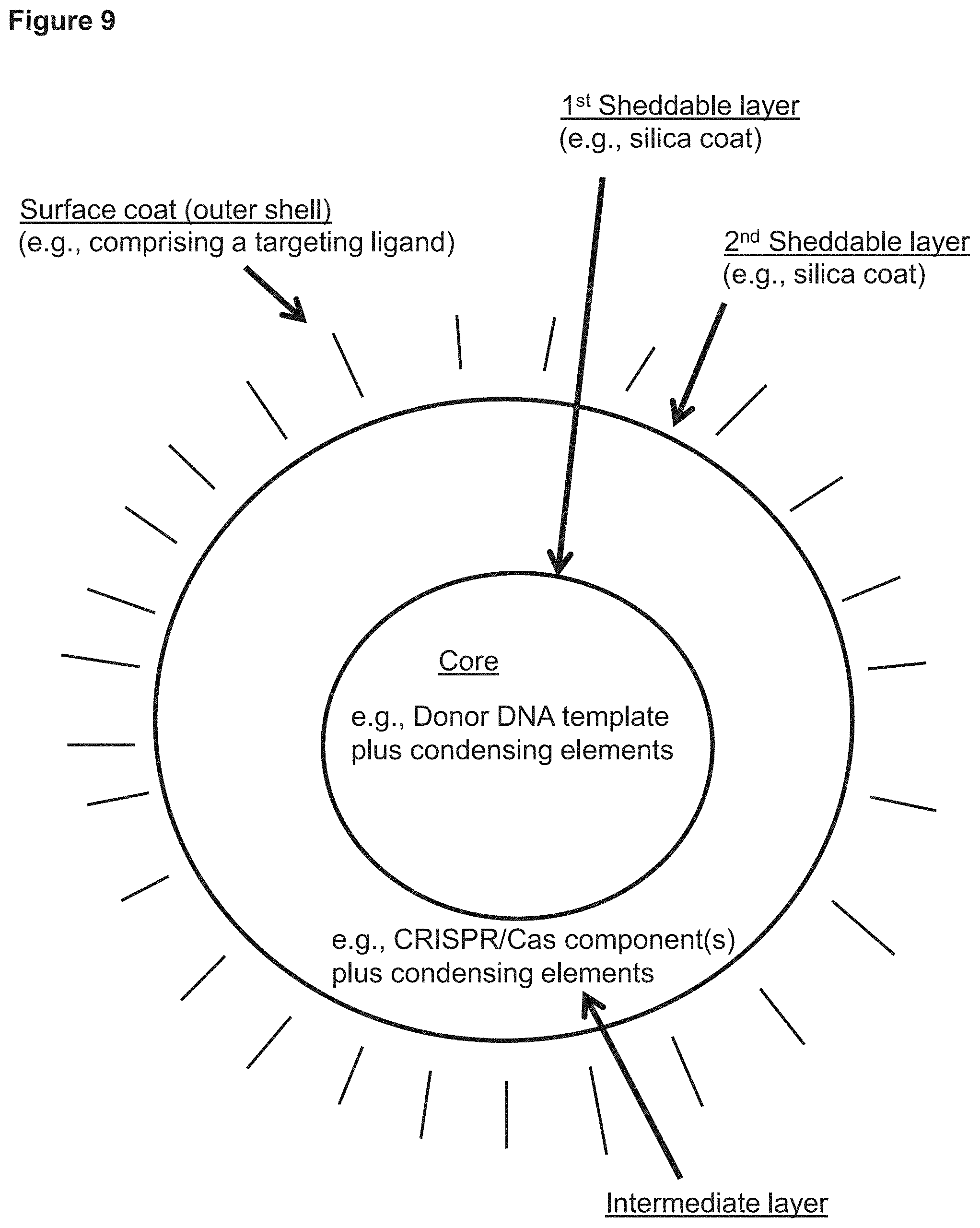
D00011
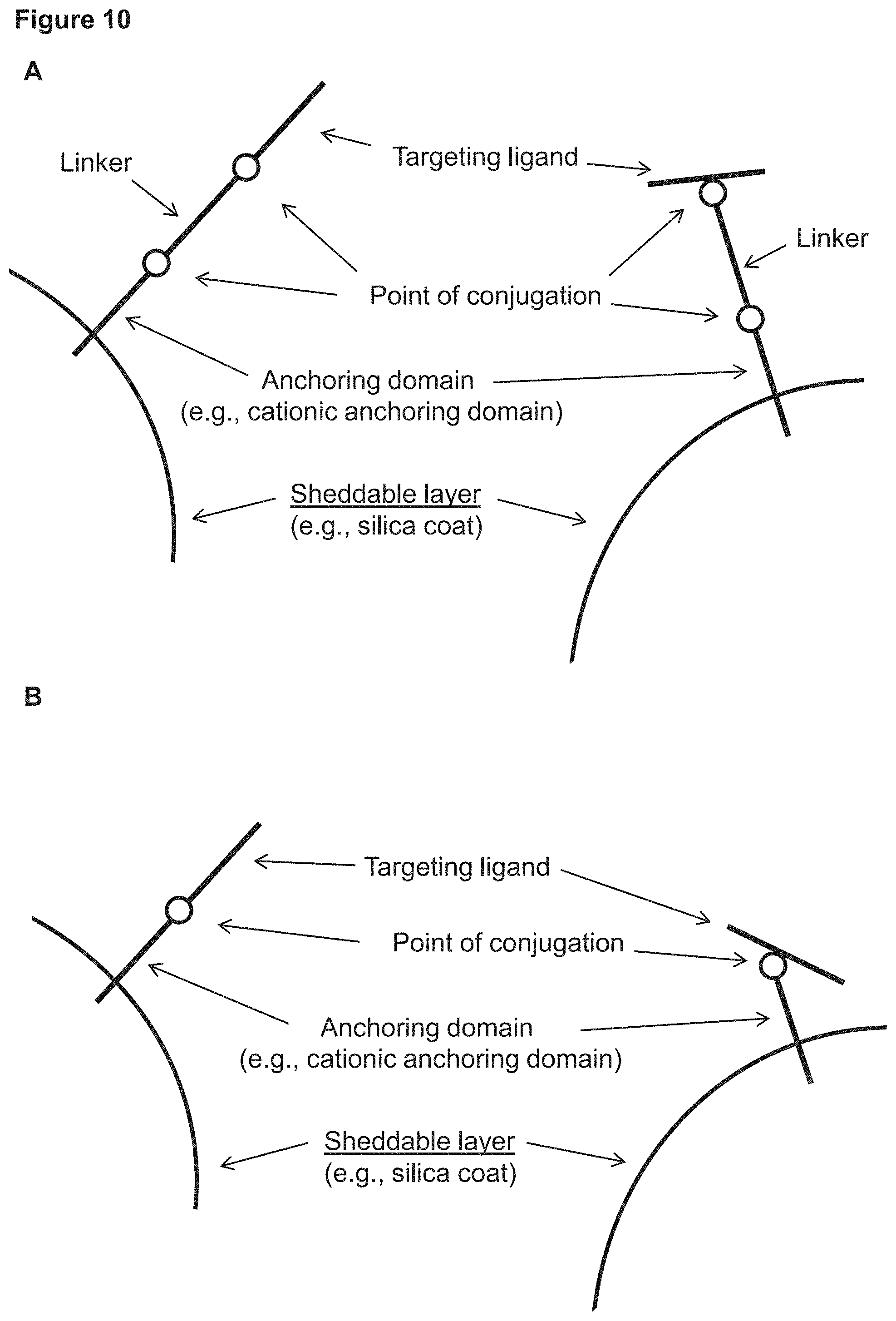
D00012

D00013

D00014

D00015
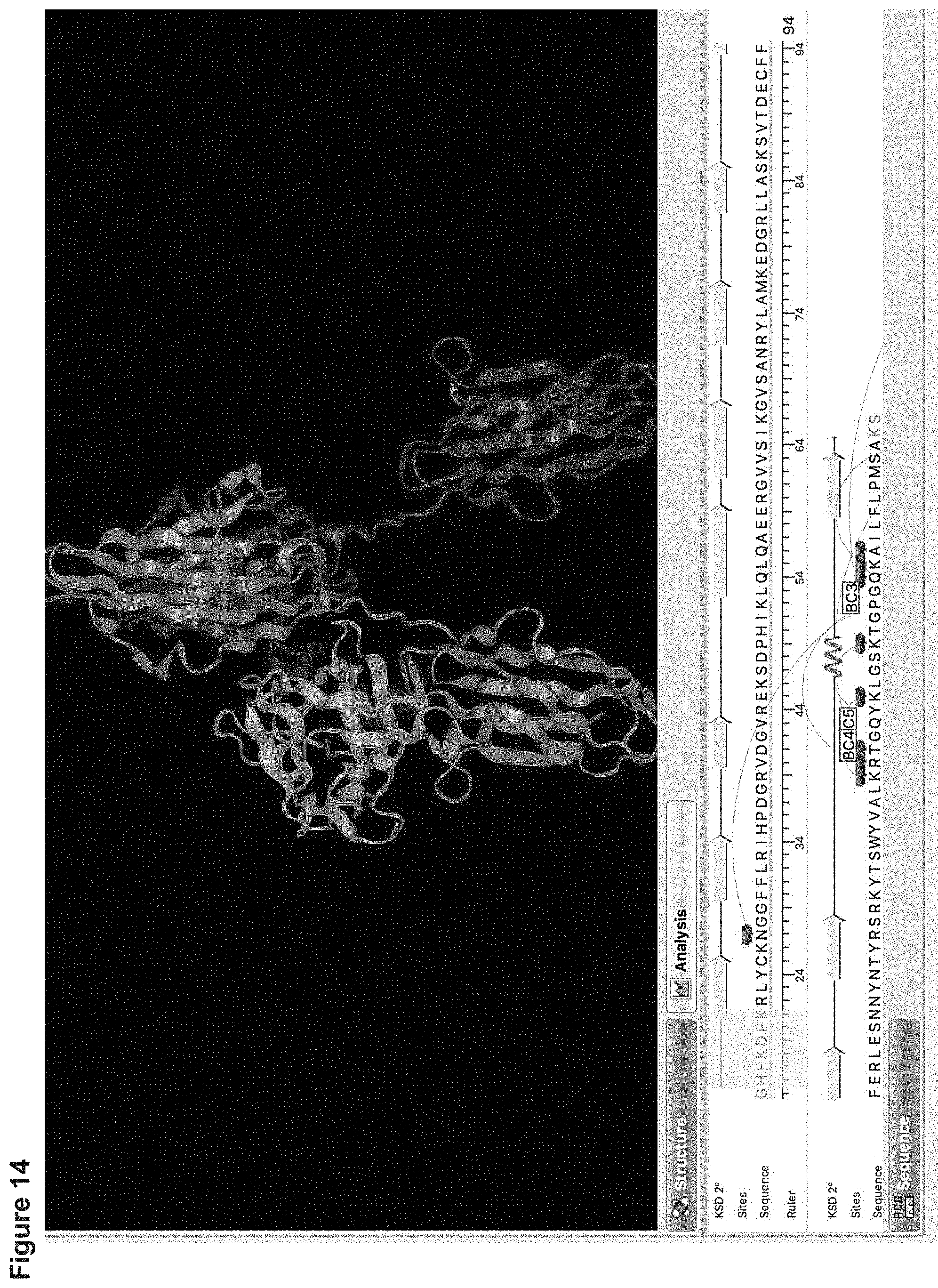
D00016
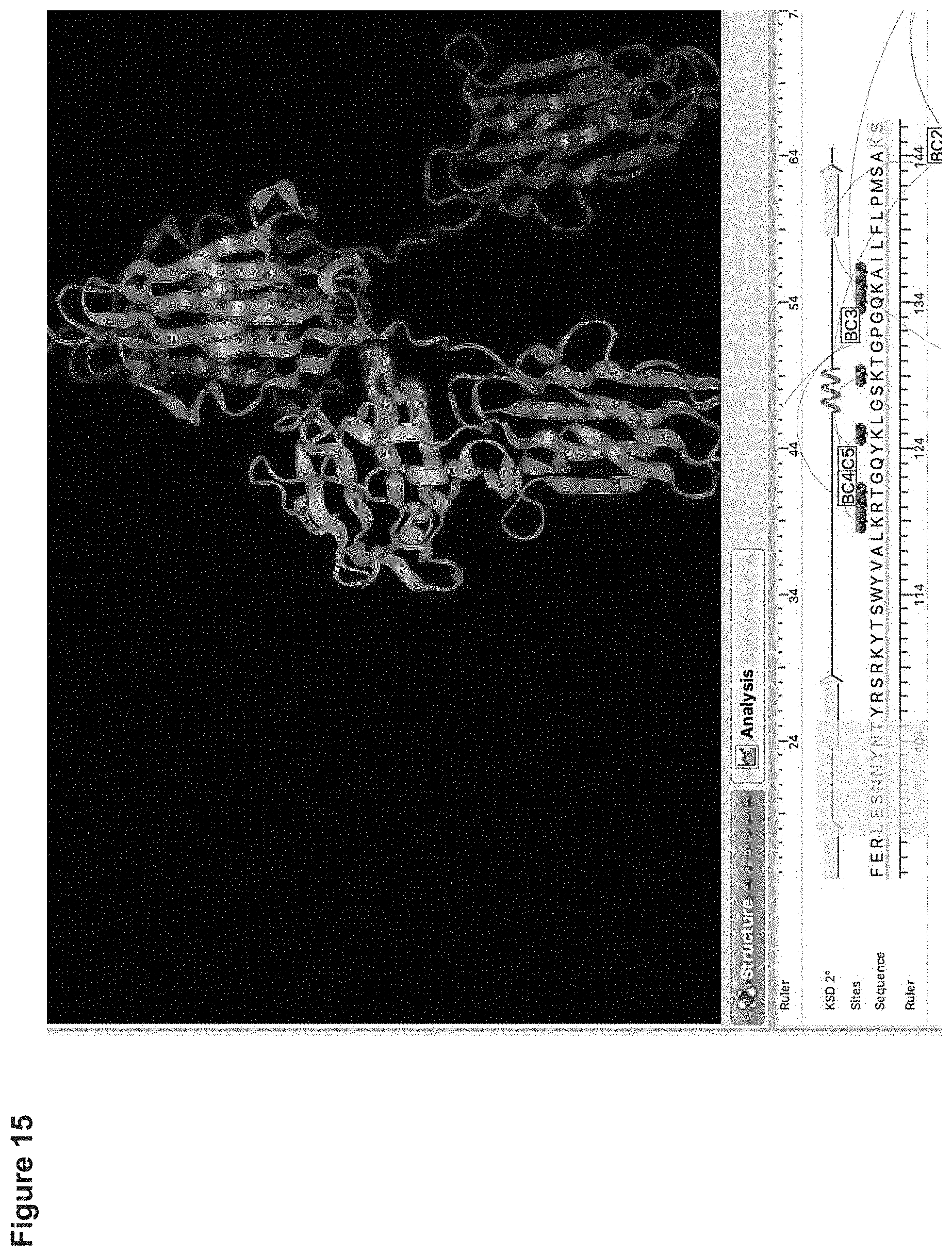
D00017
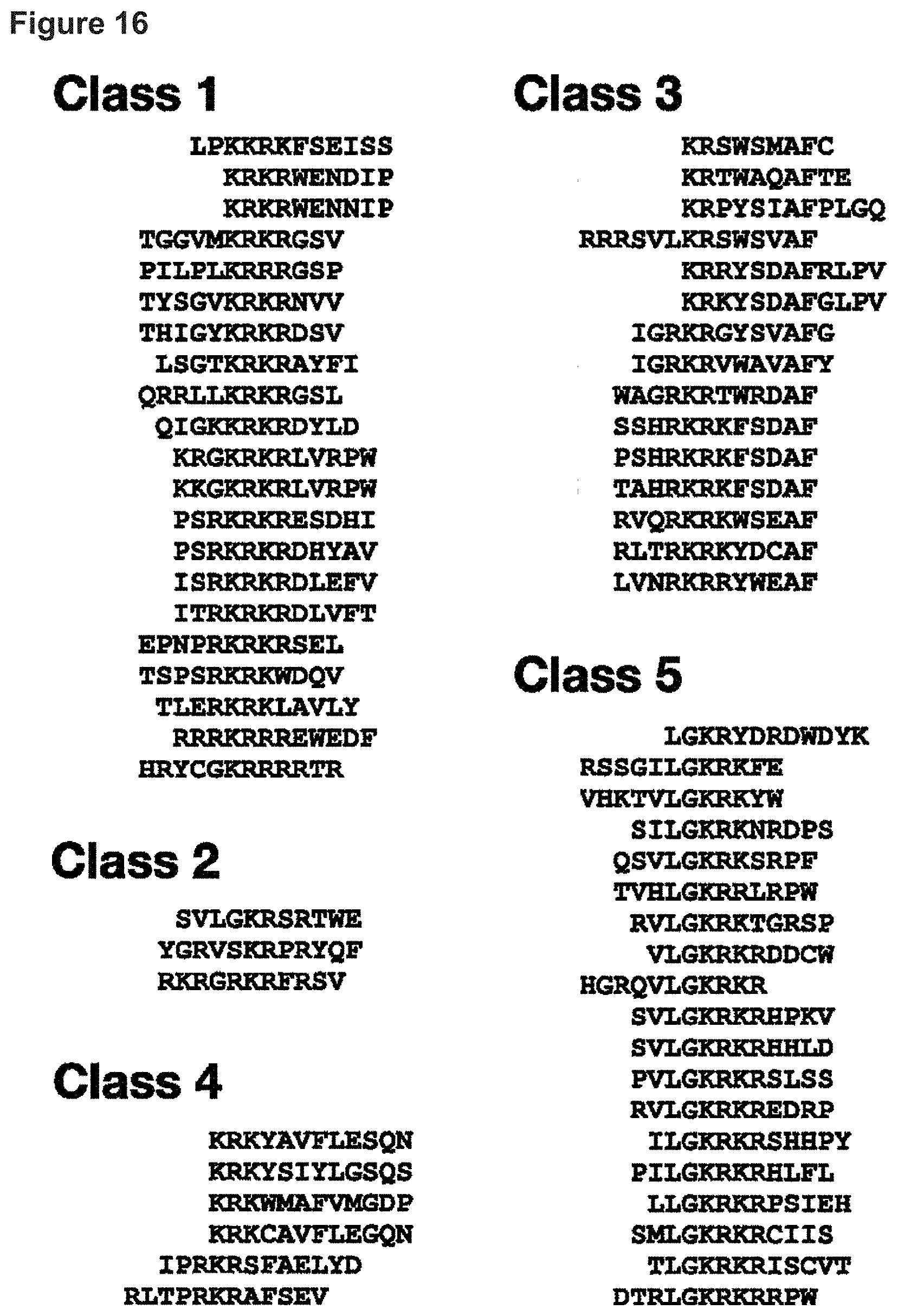
D00018
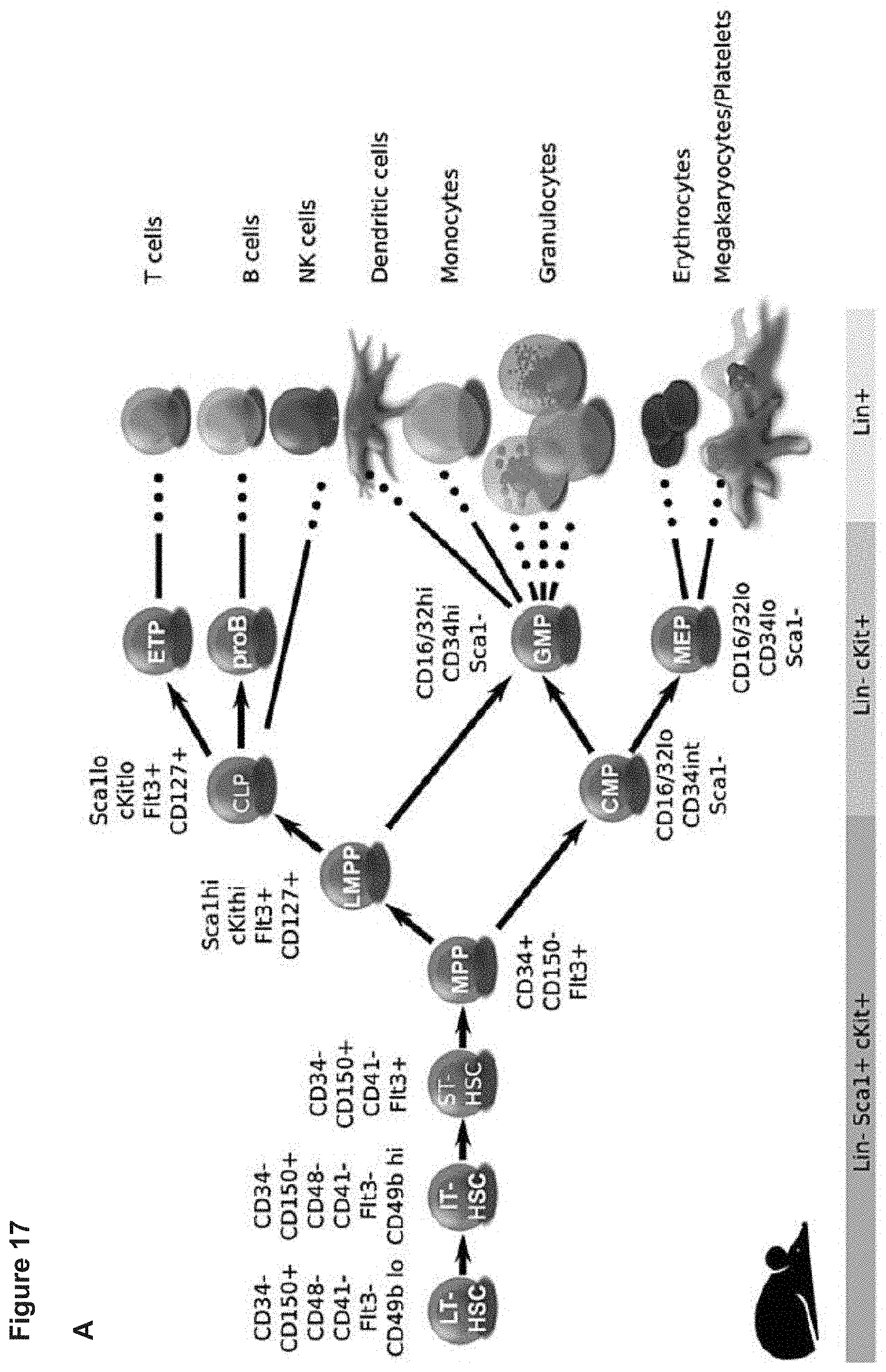
D00019
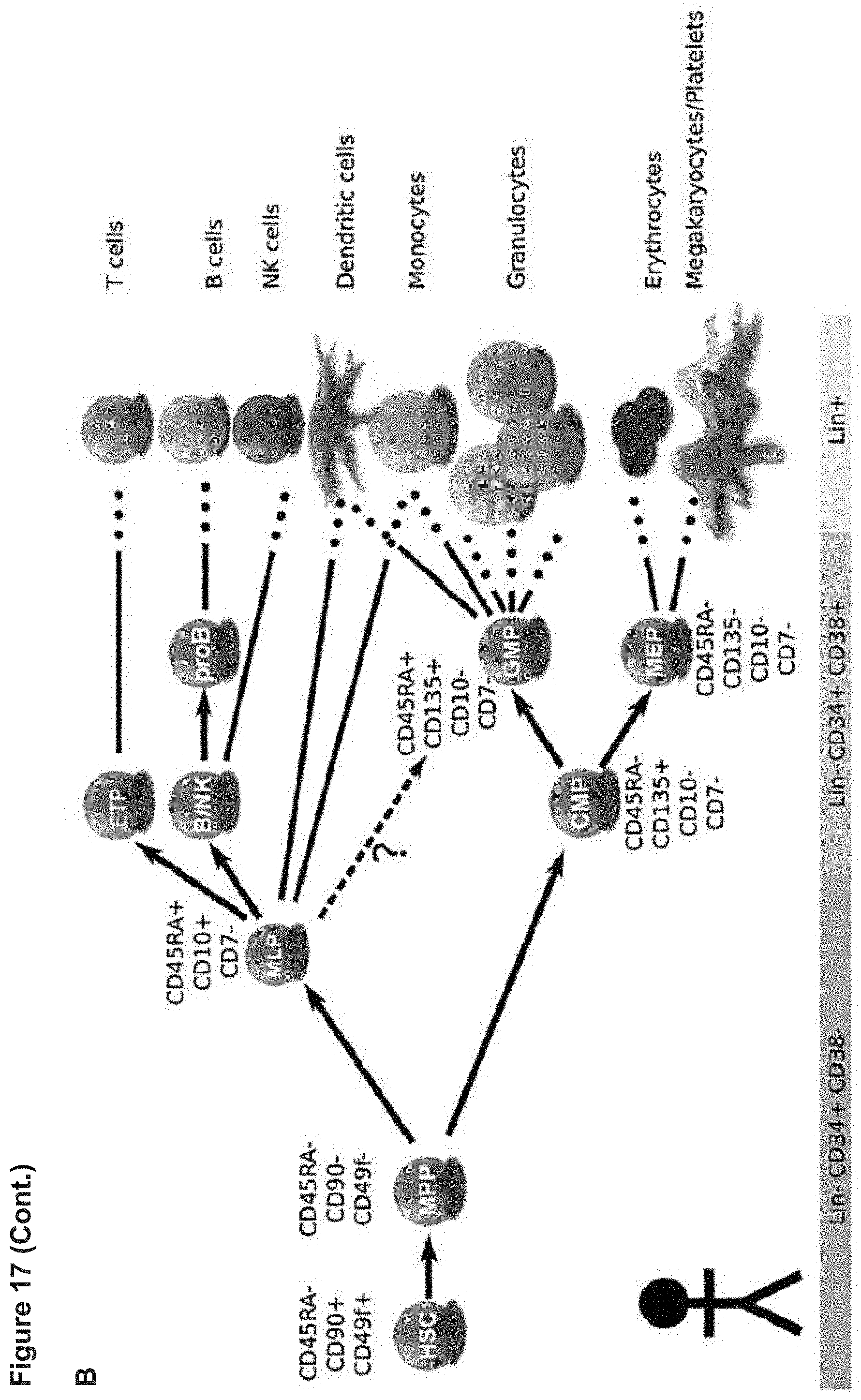
D00020
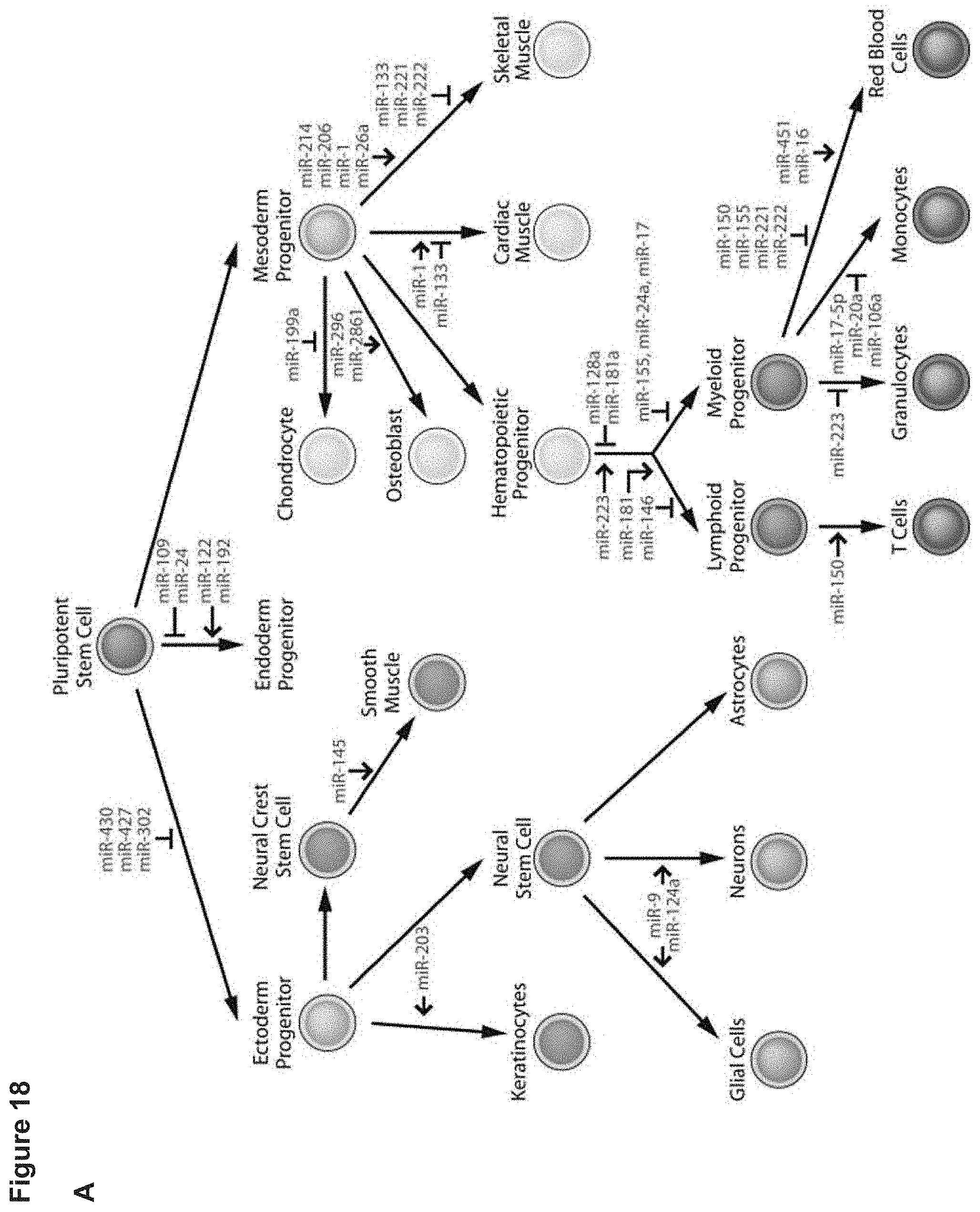
D00021
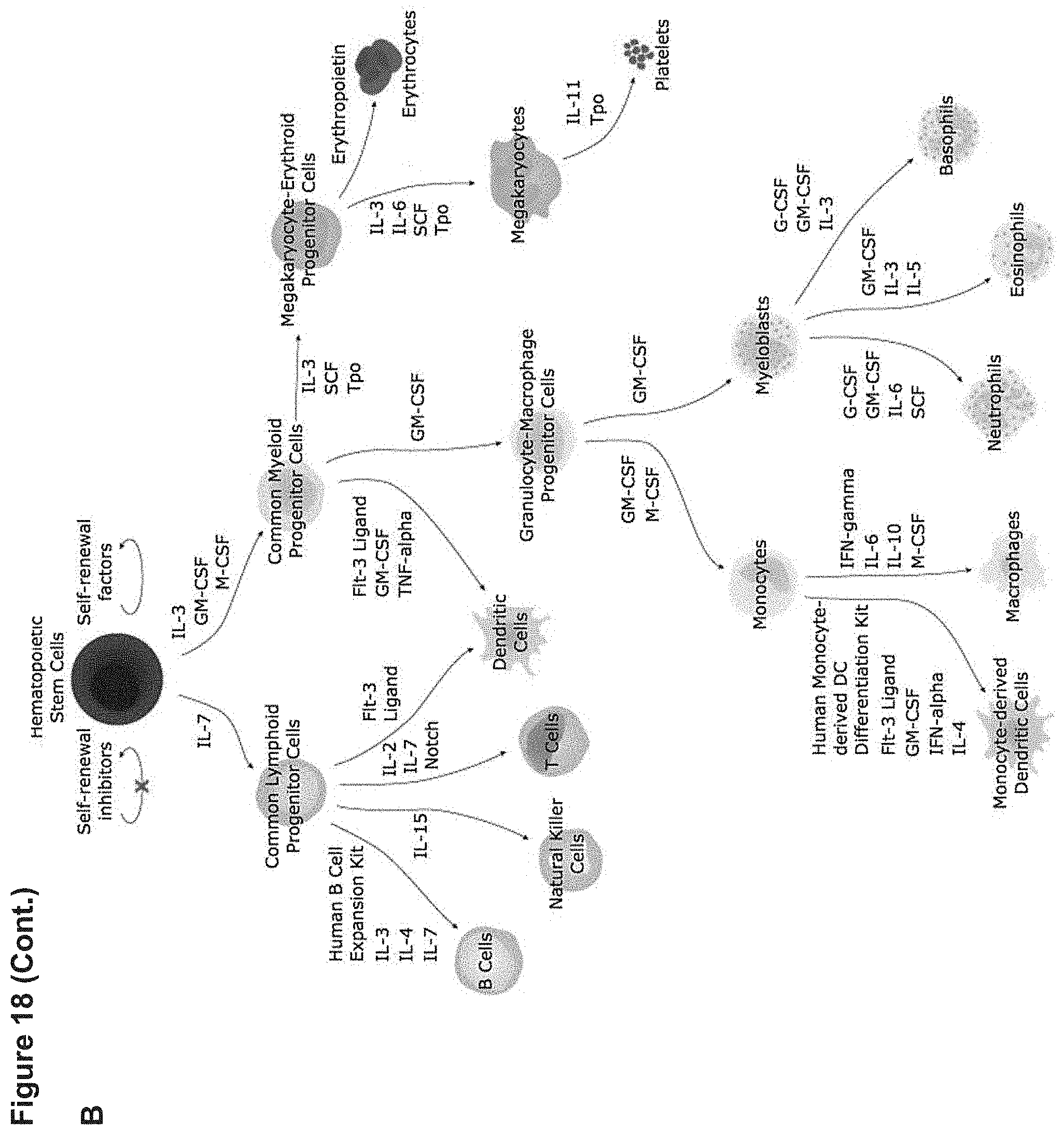
D00022
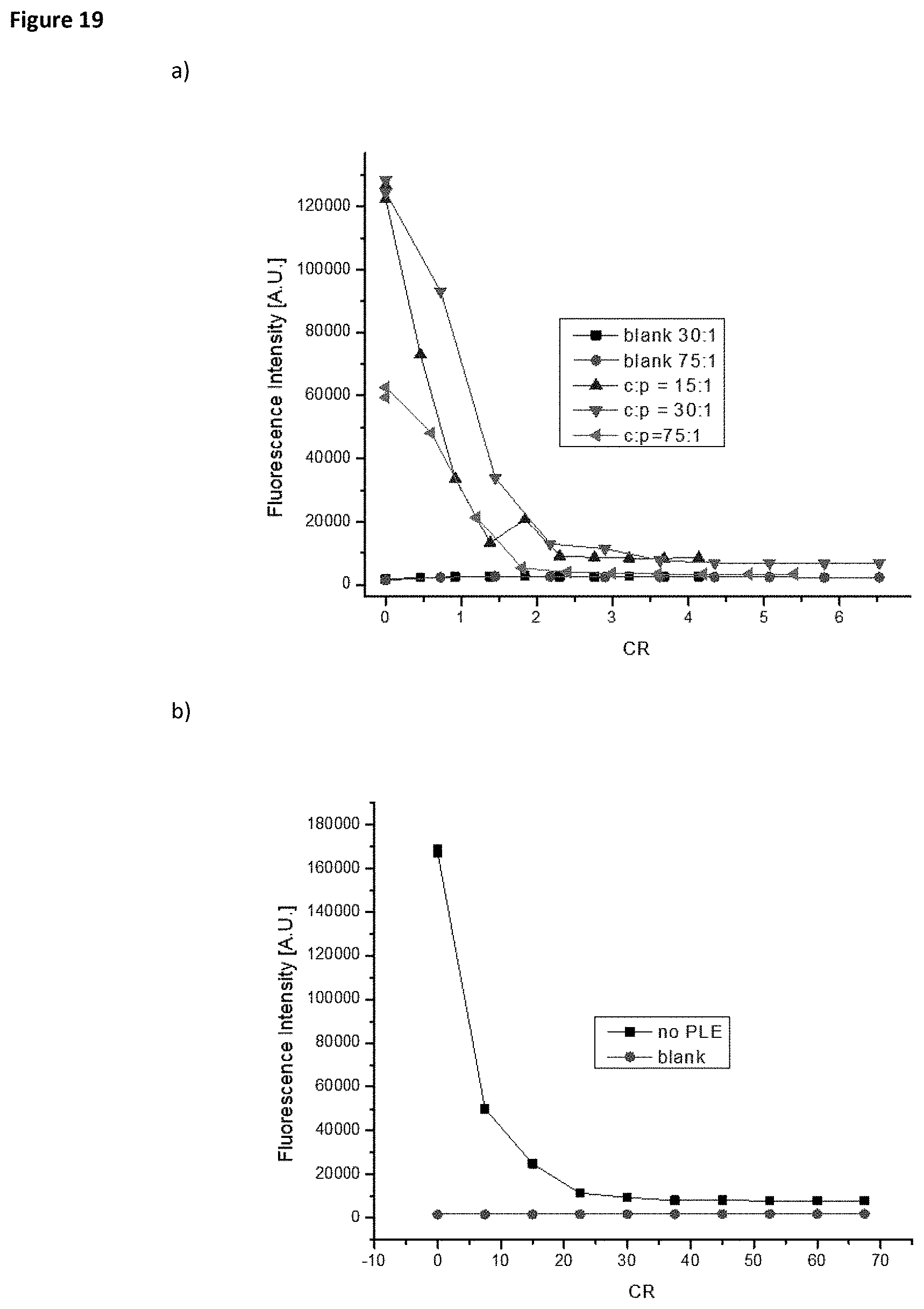
D00023
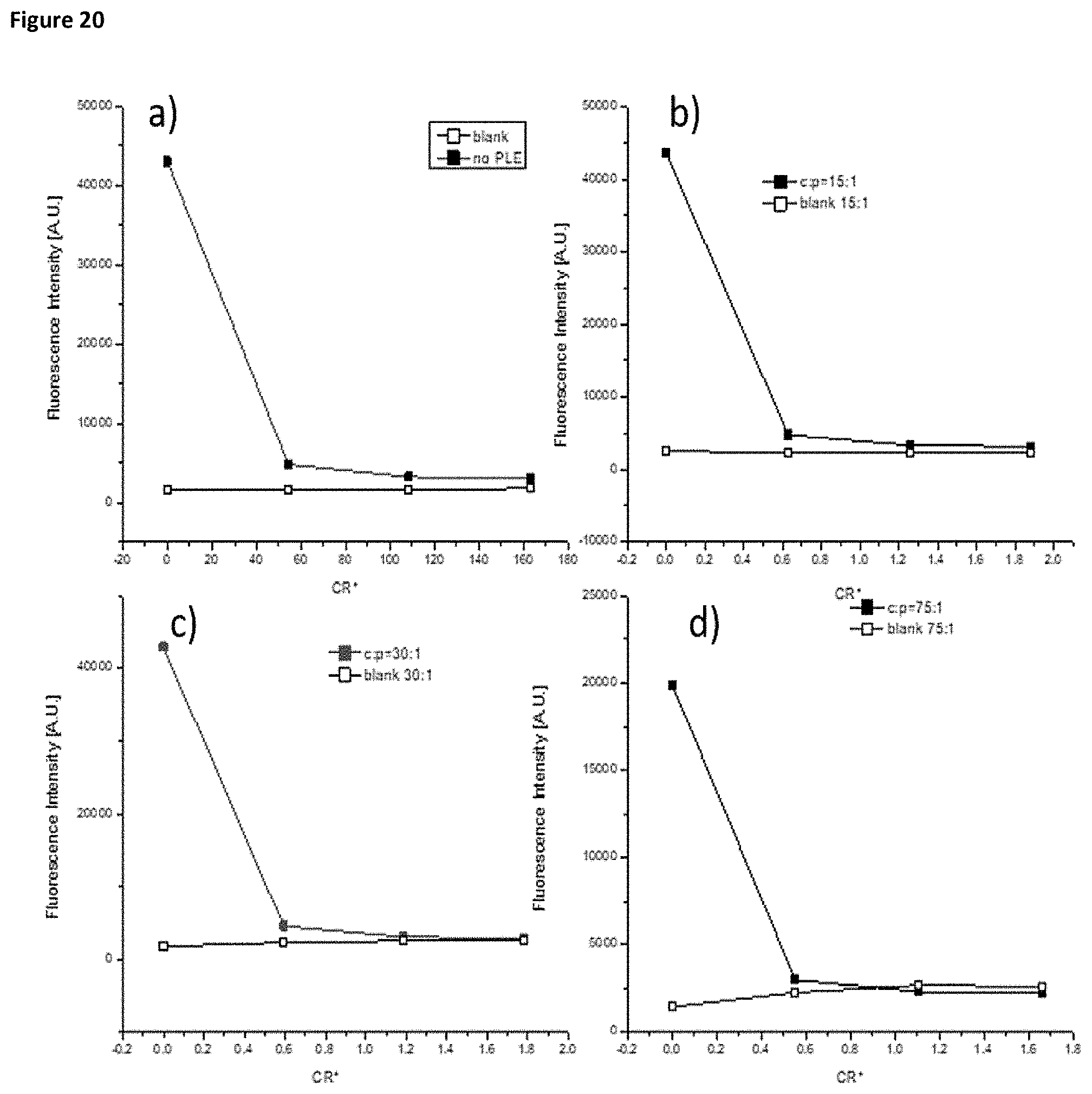
D00024
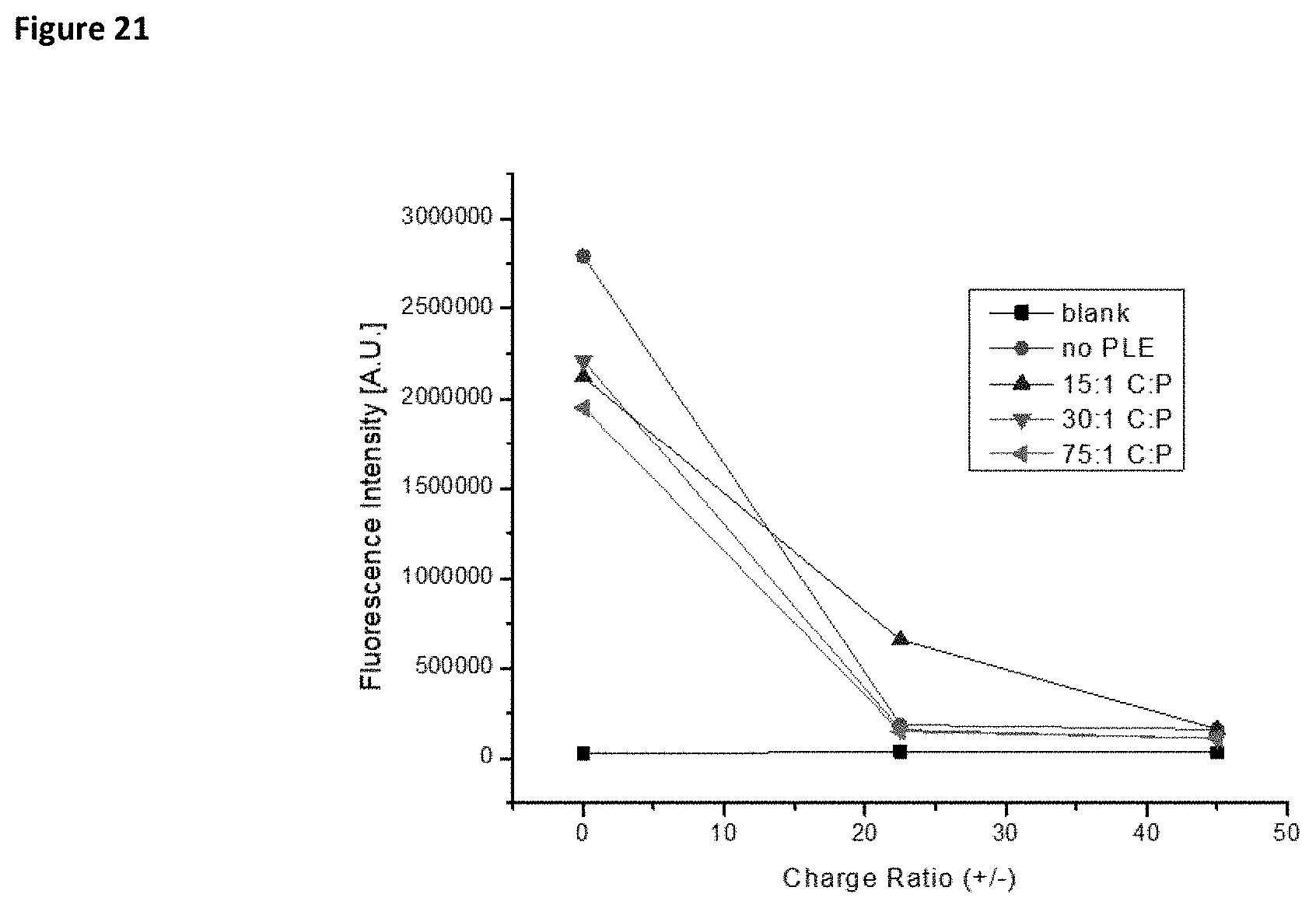
D00025
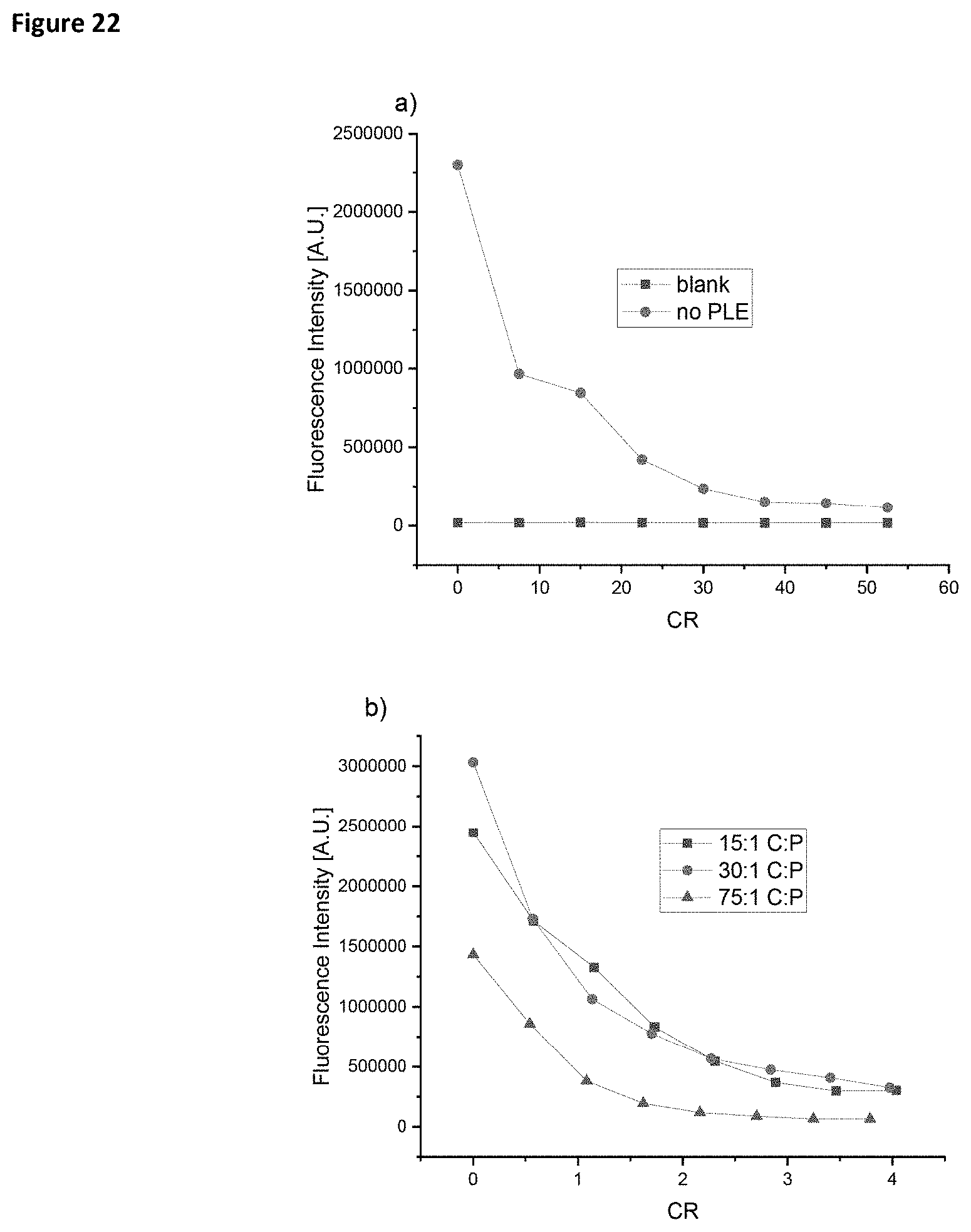
D00026

D00027
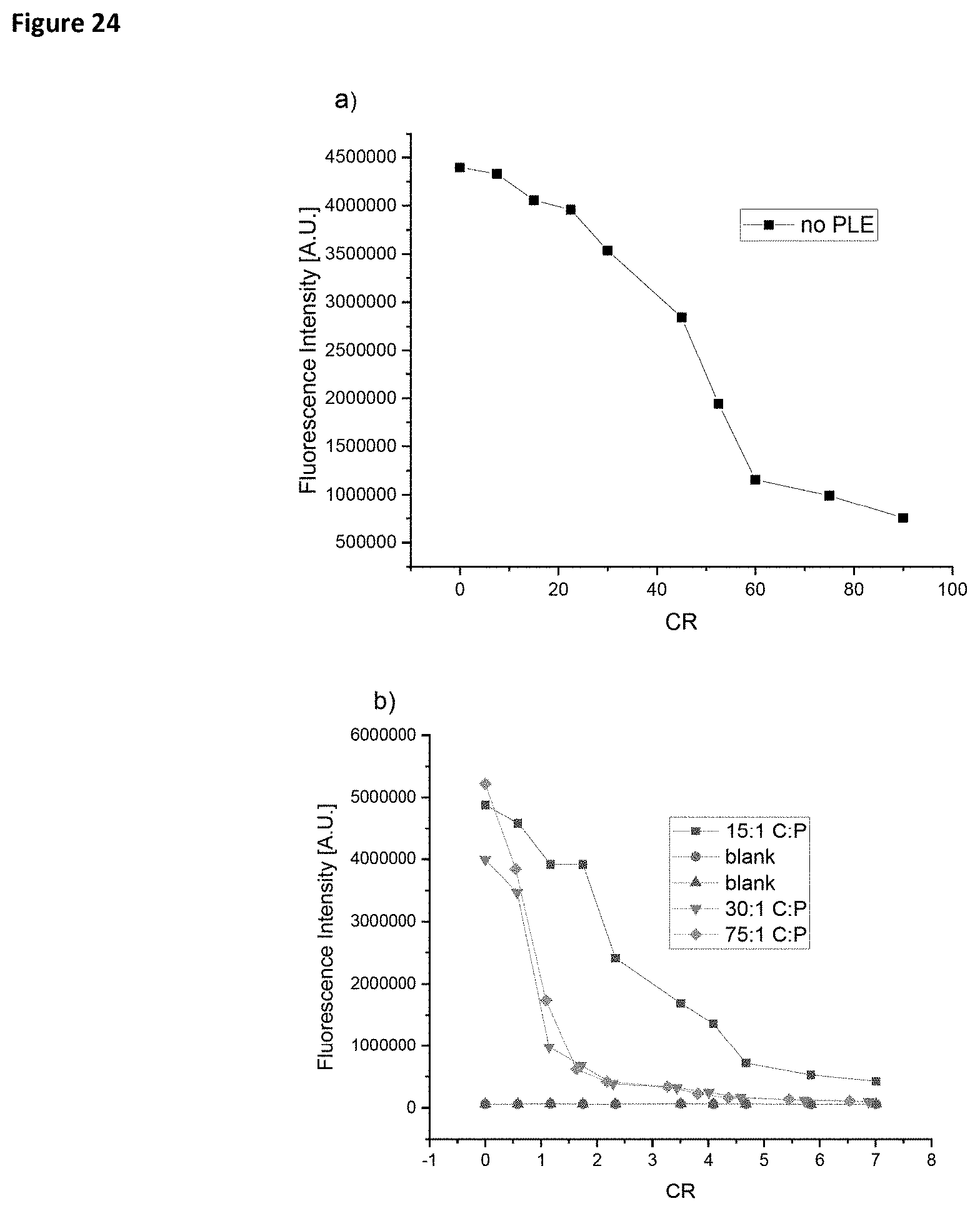
D00028
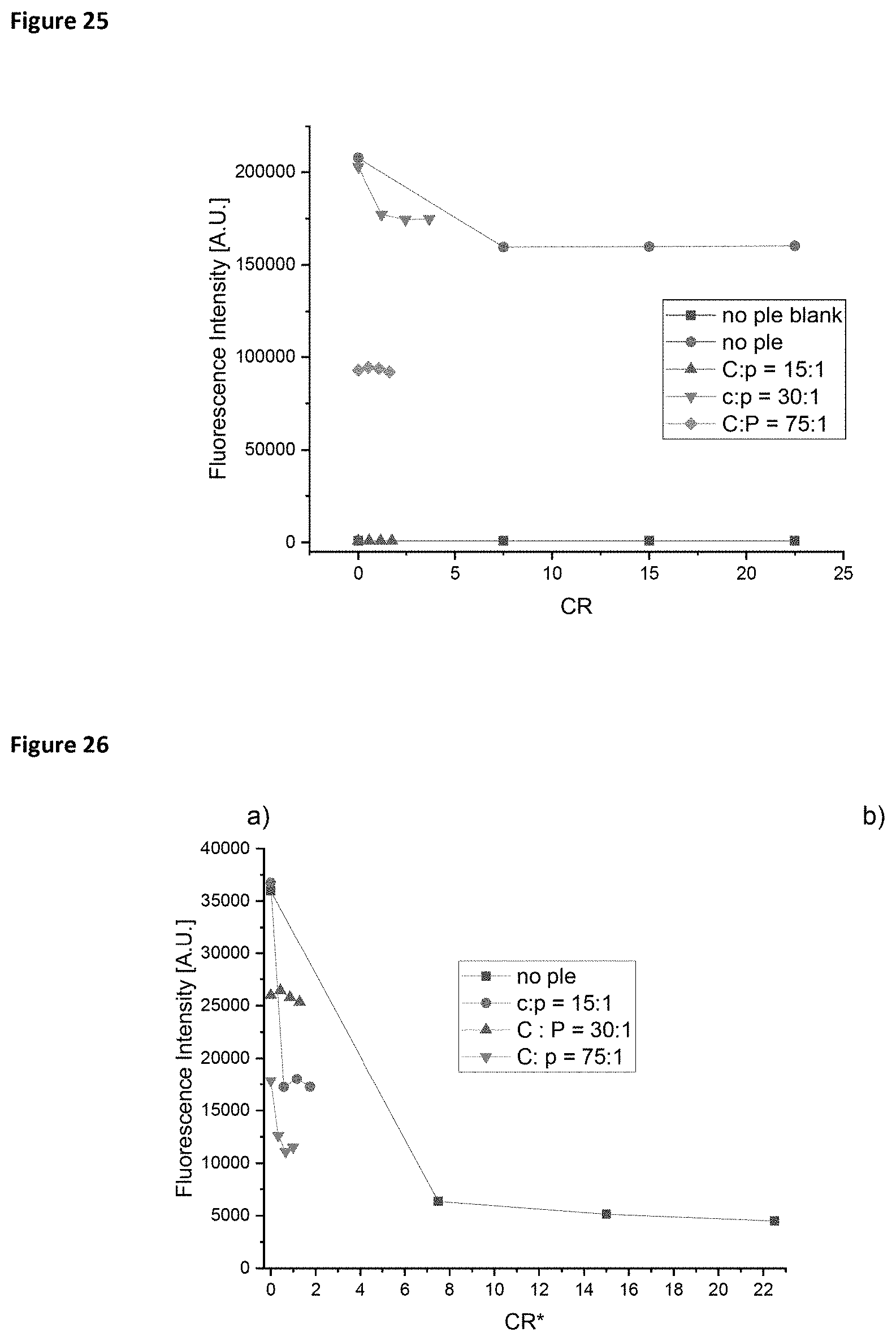
D00029
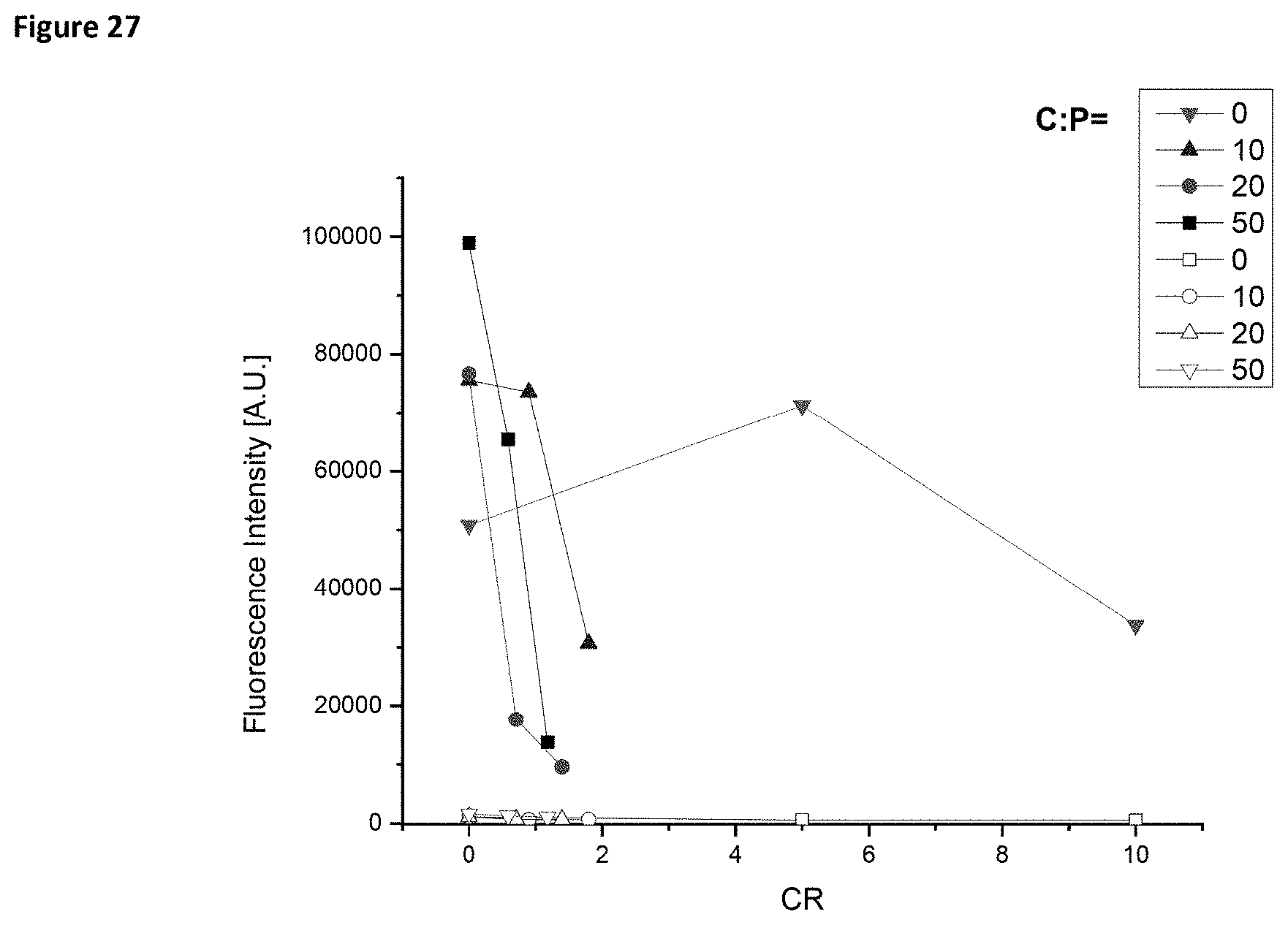
D00030
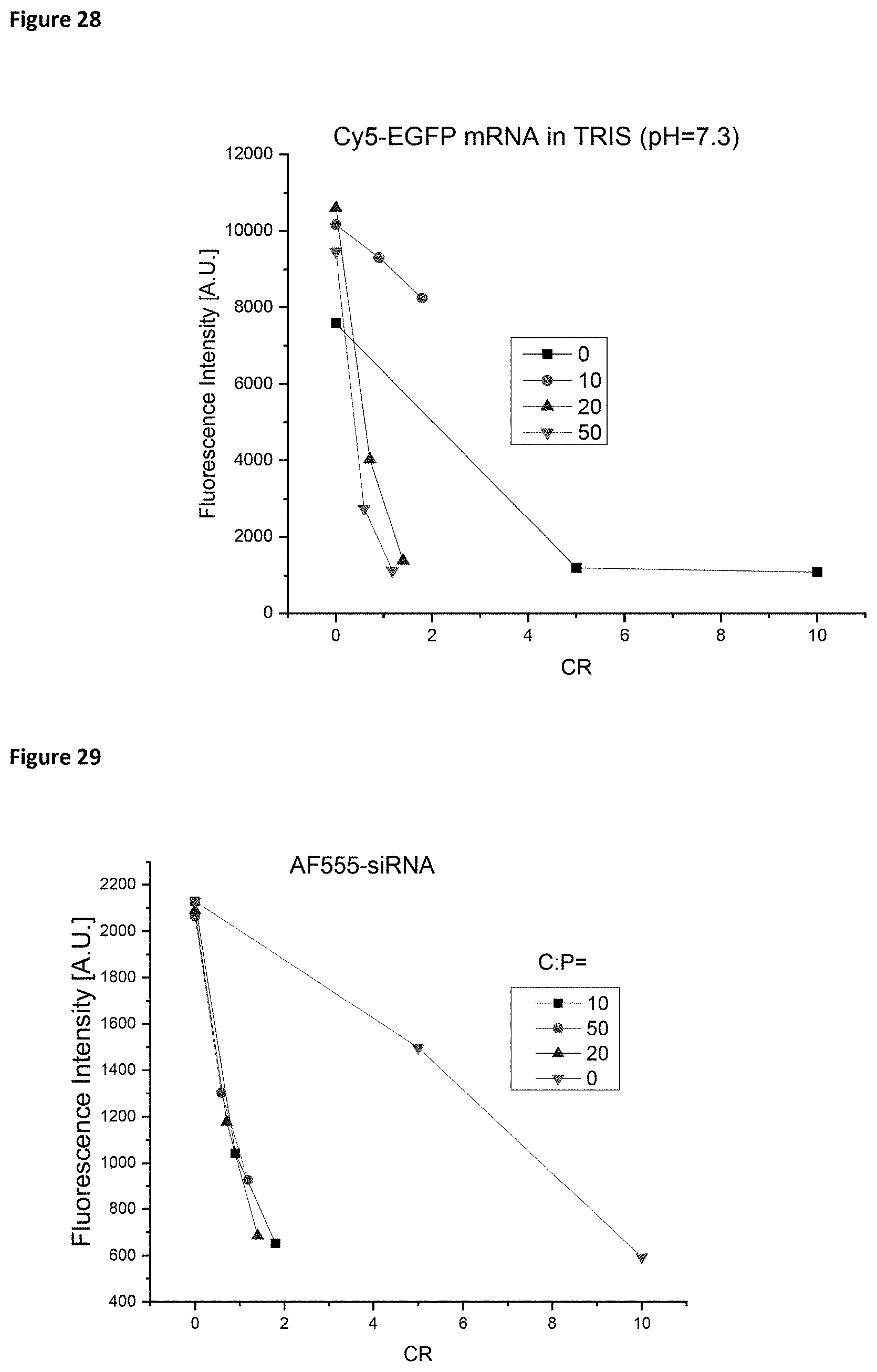
D00031
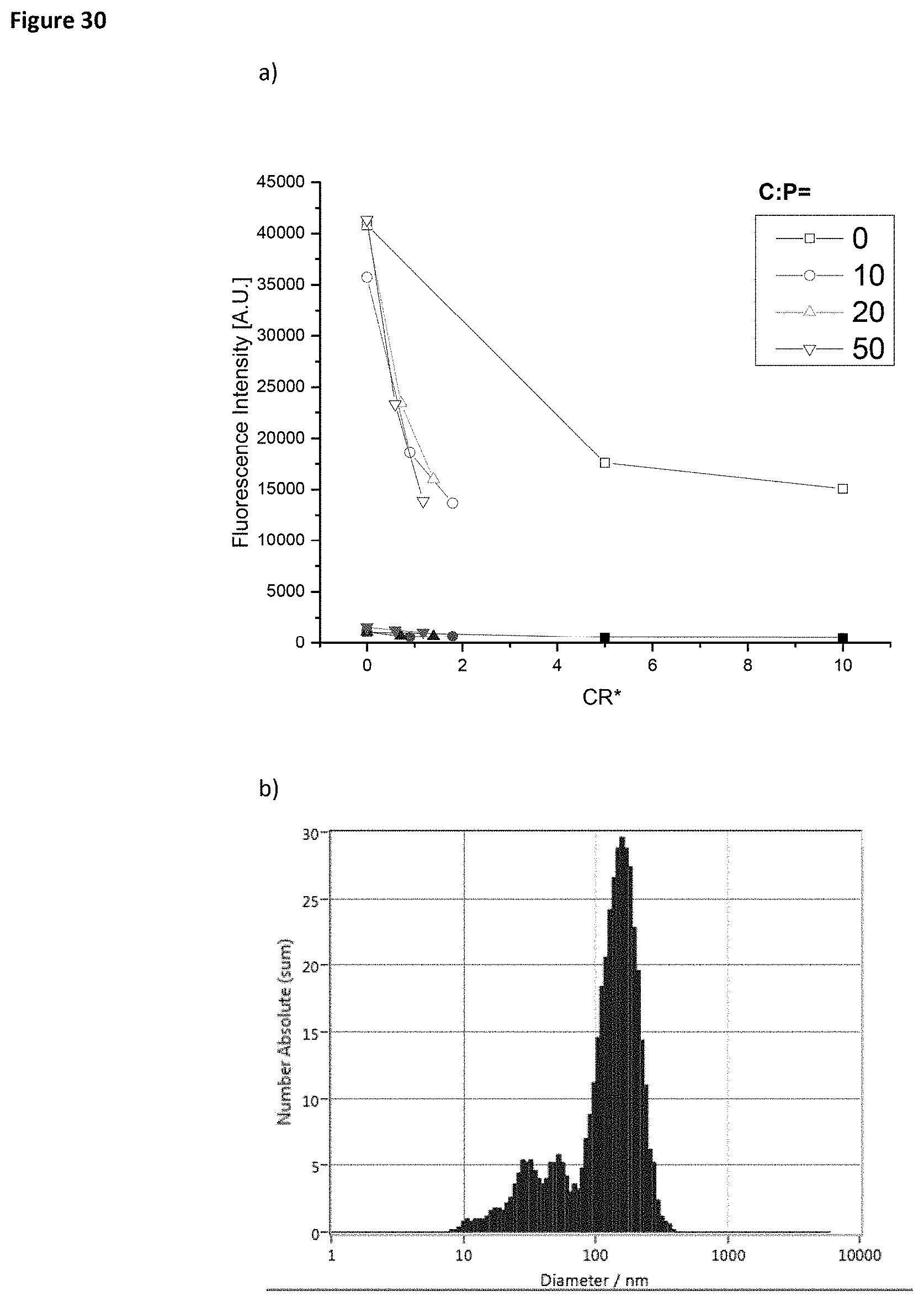
D00032

D00033
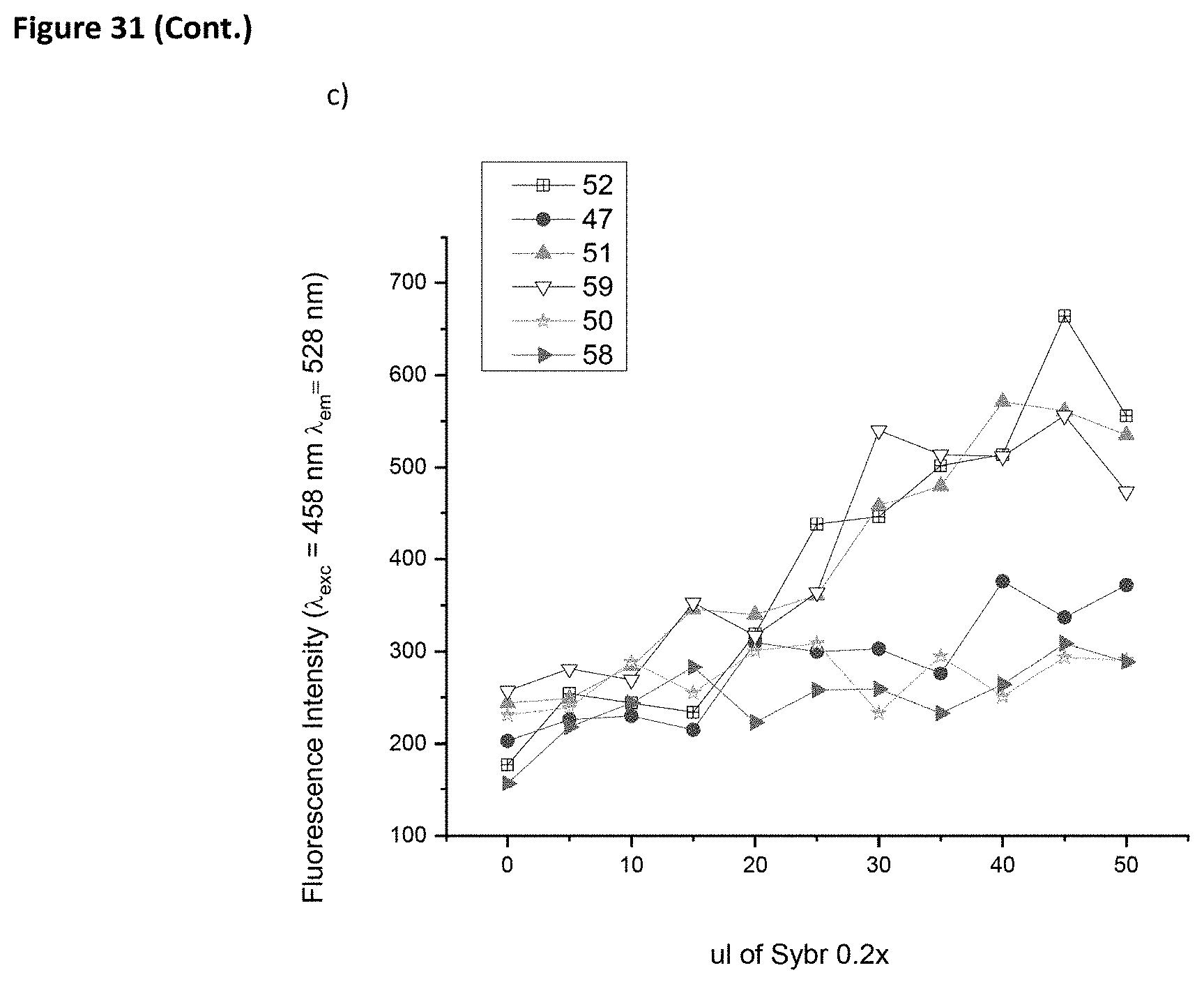
D00034
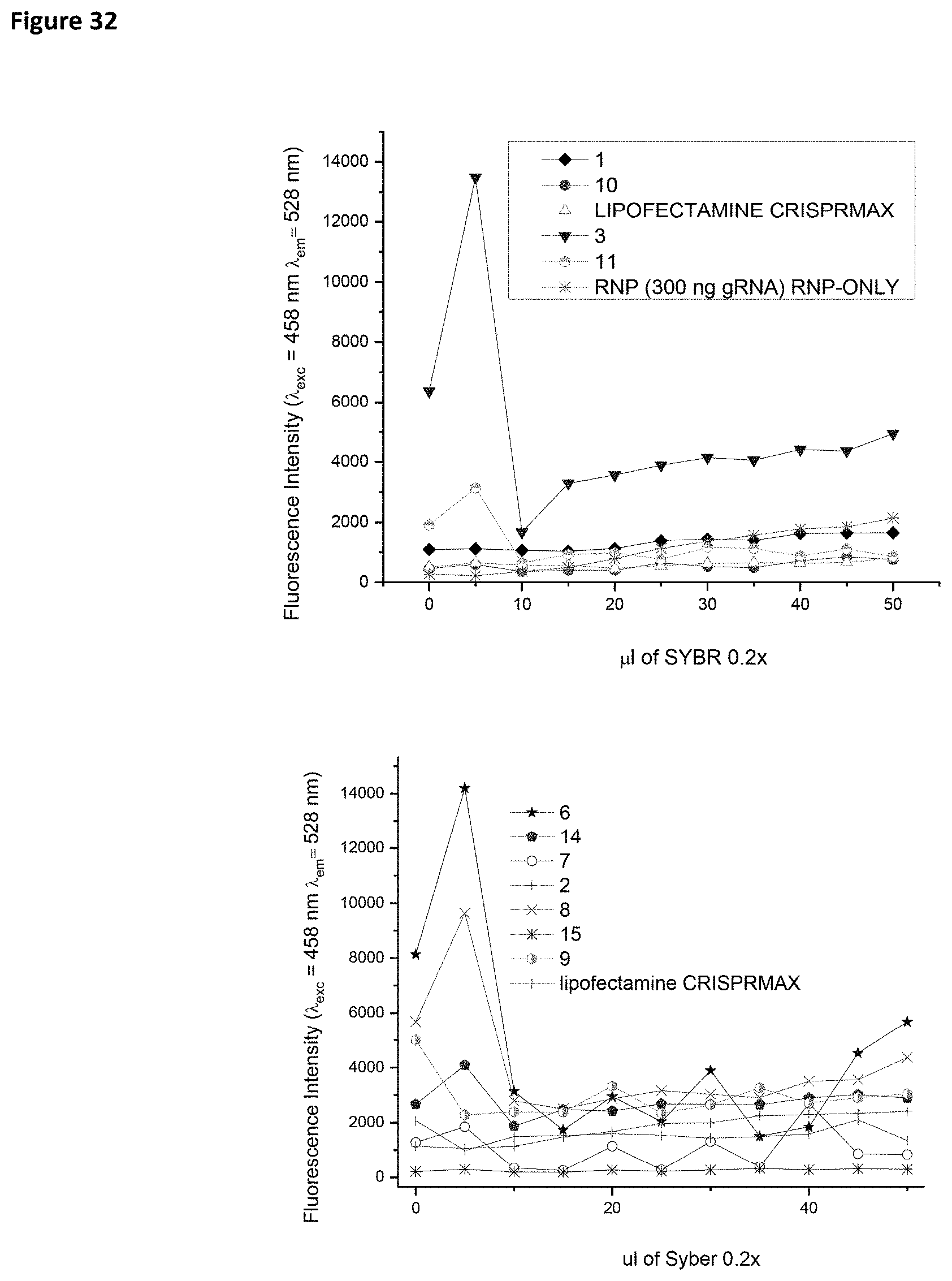
D00035
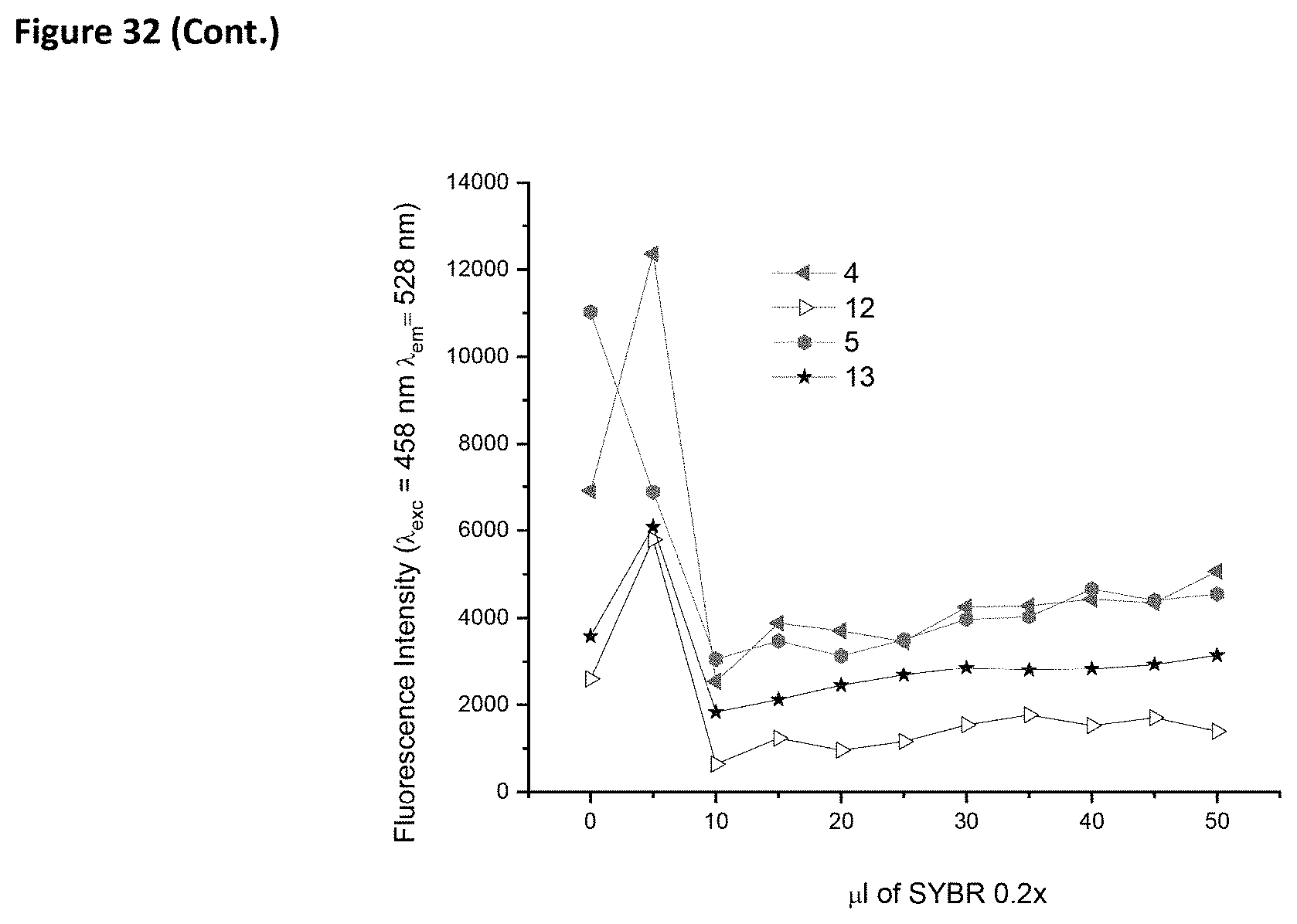
D00036
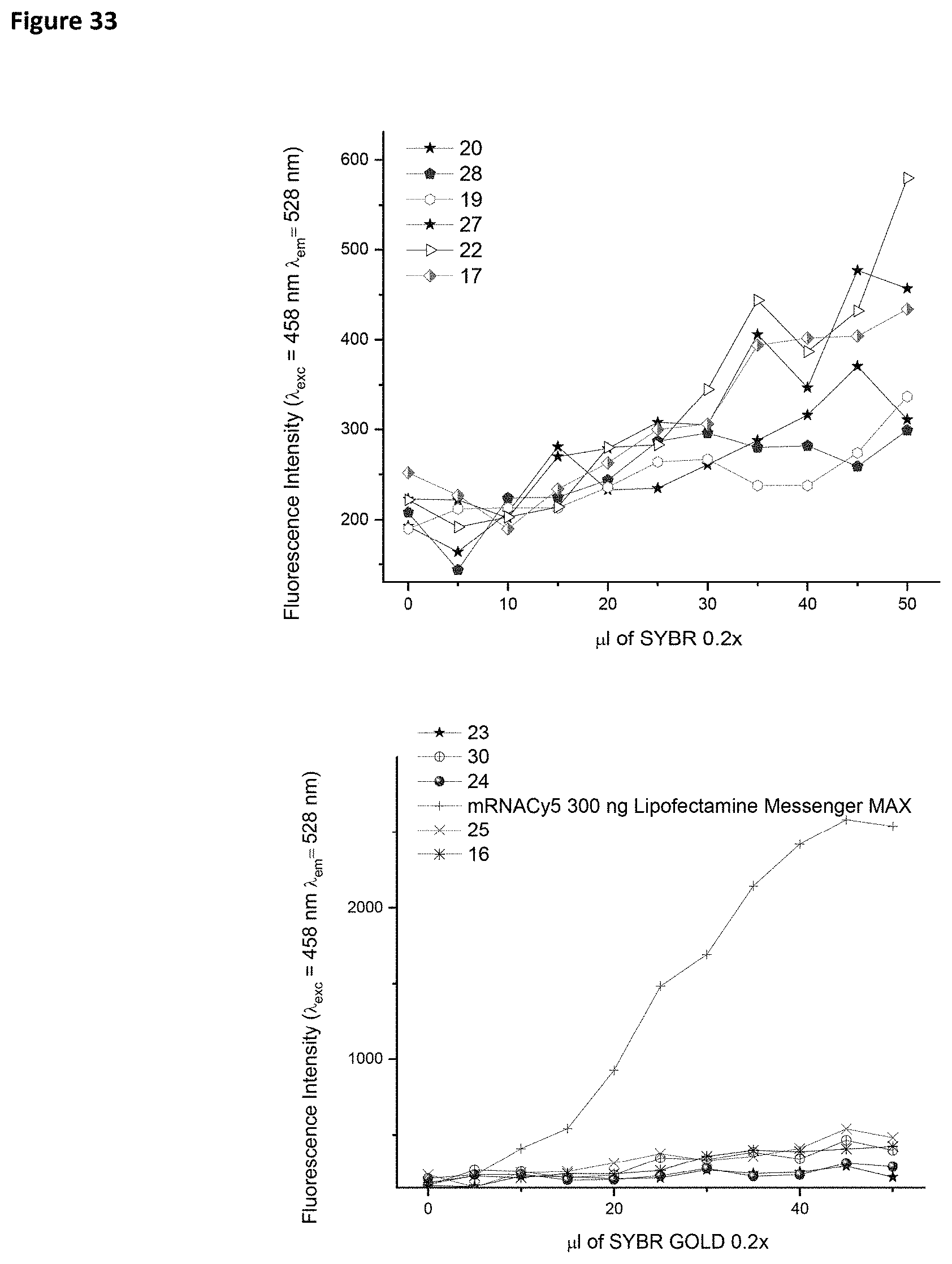
D00037
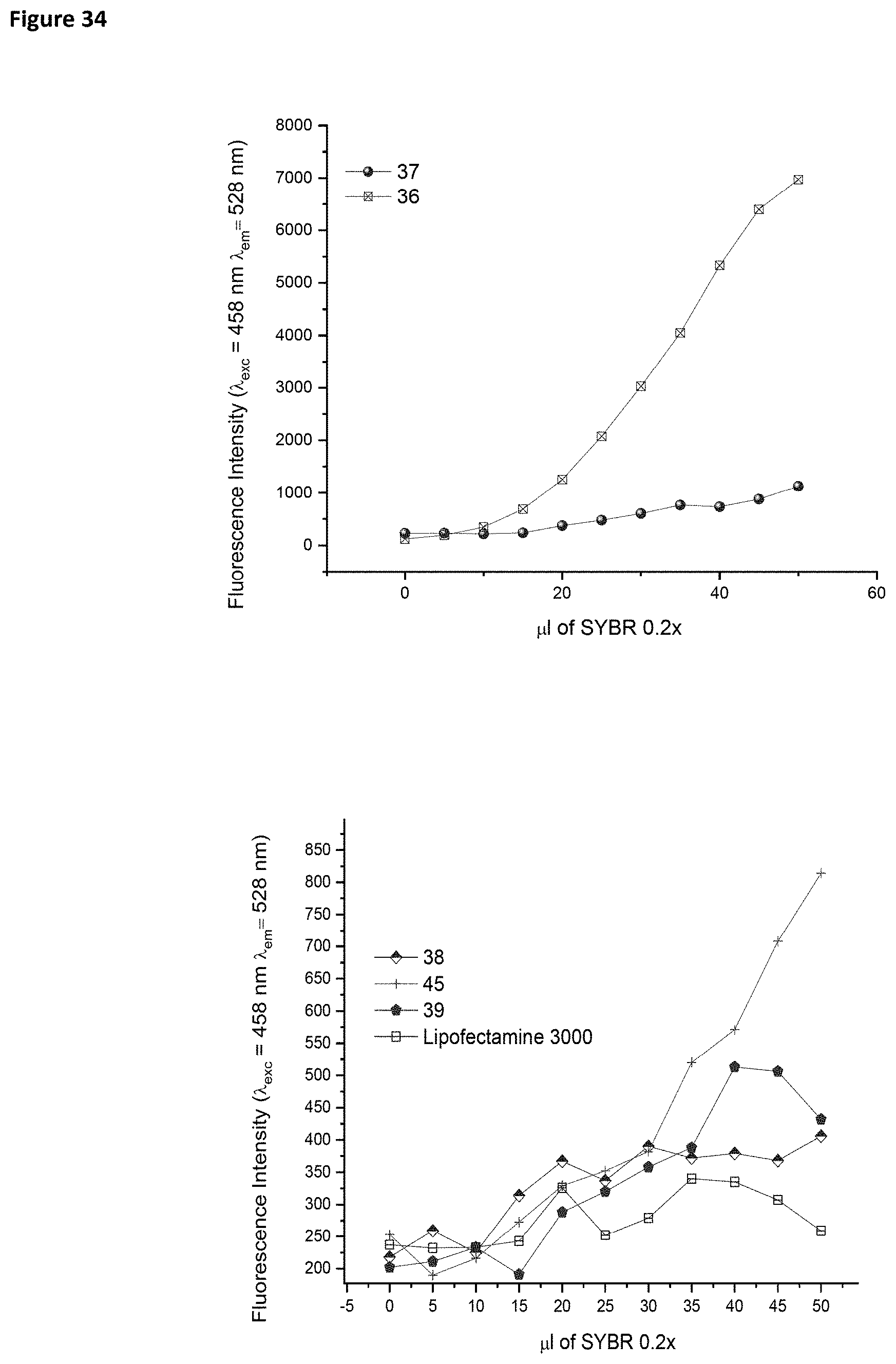
D00038
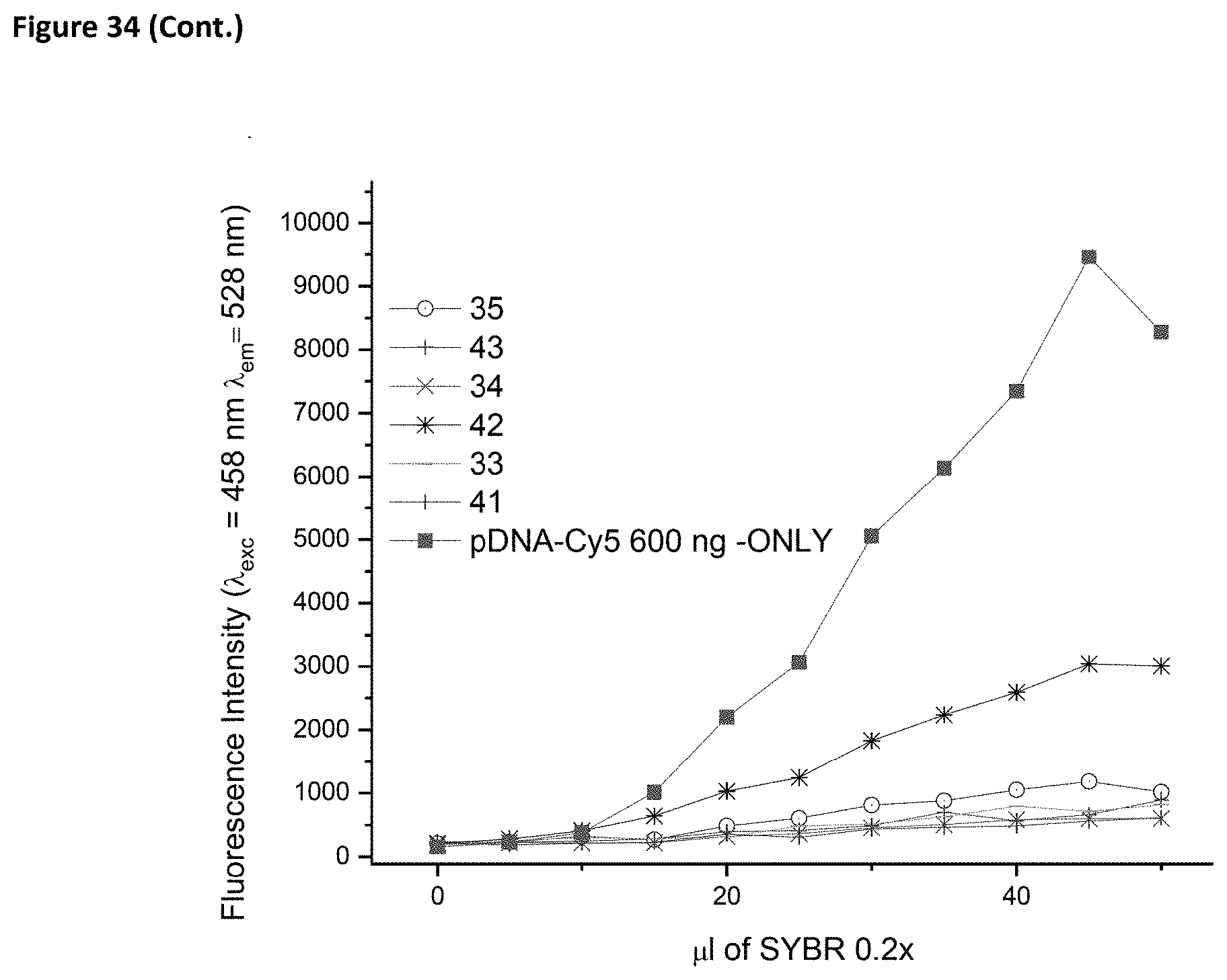
D00039
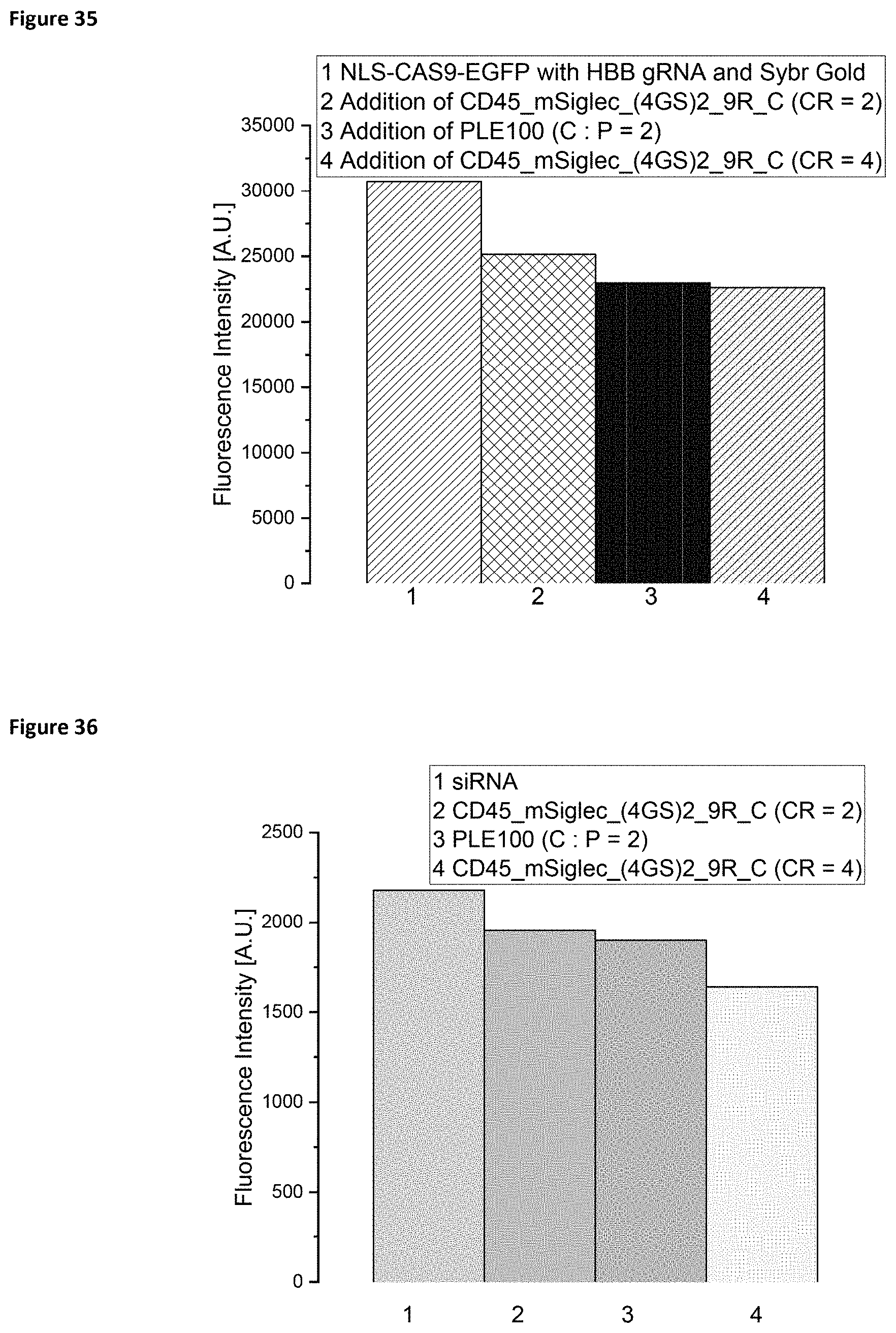
D00040

D00041

D00042
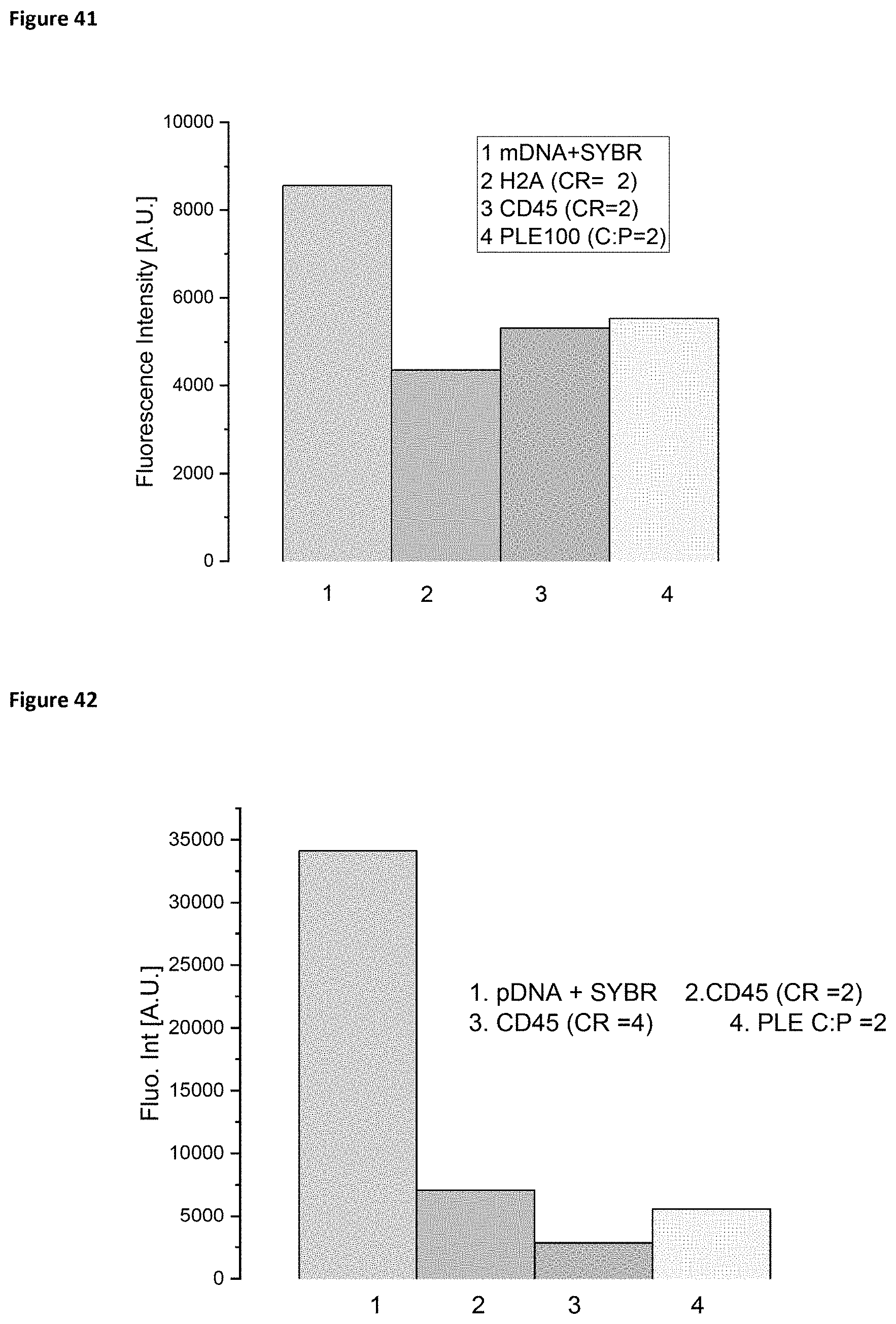
D00043

D00044
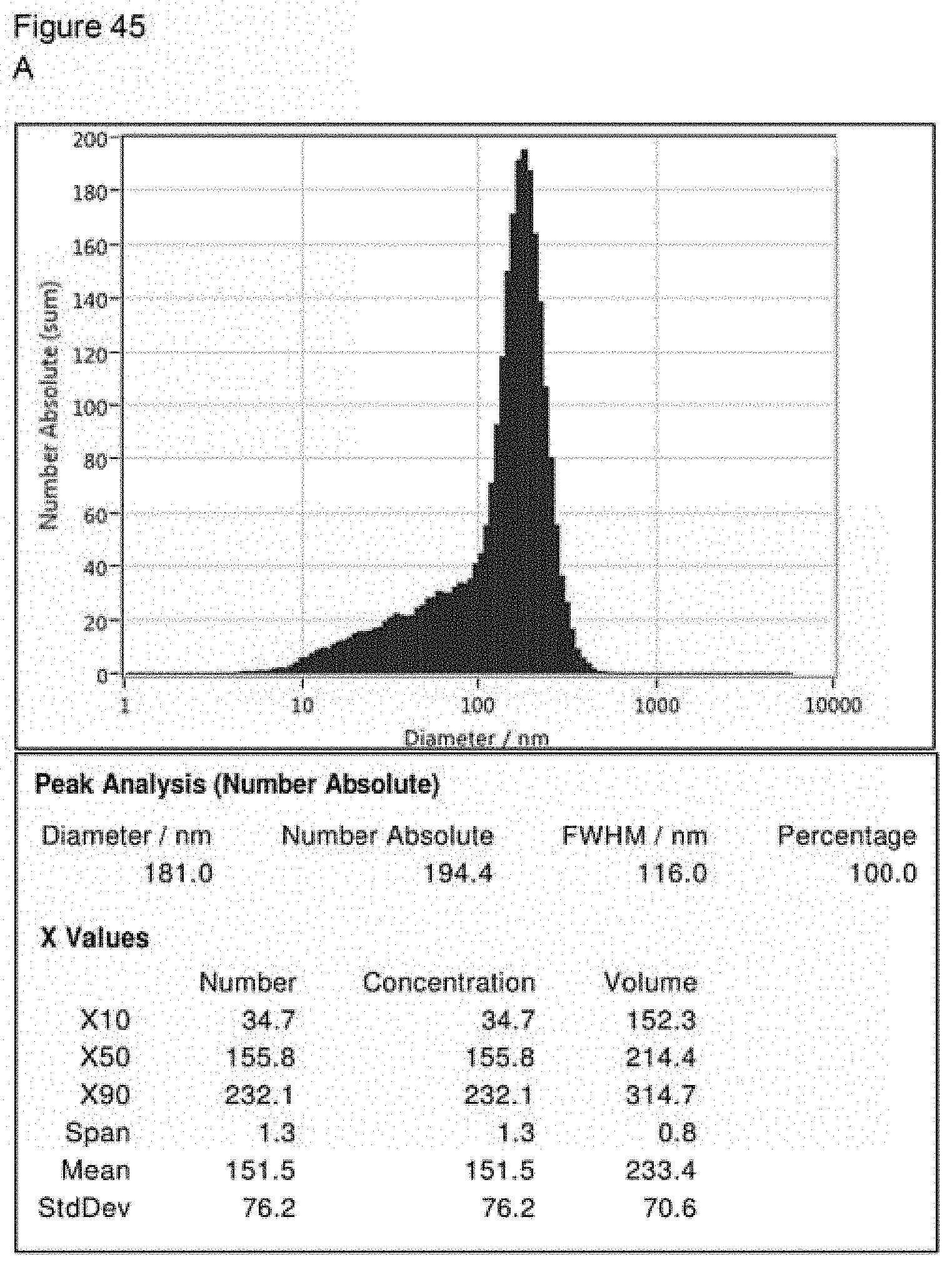
D00045
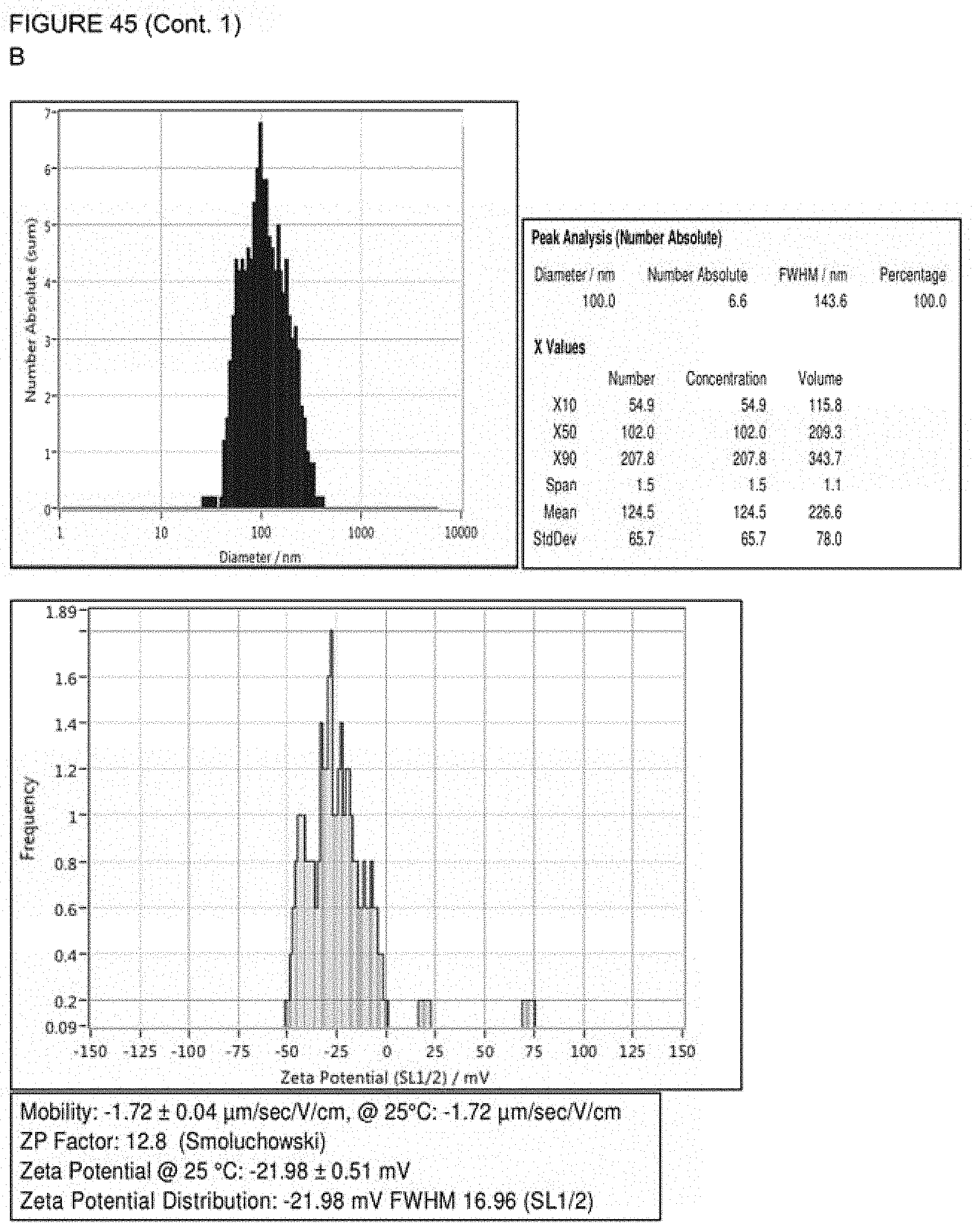
D00046
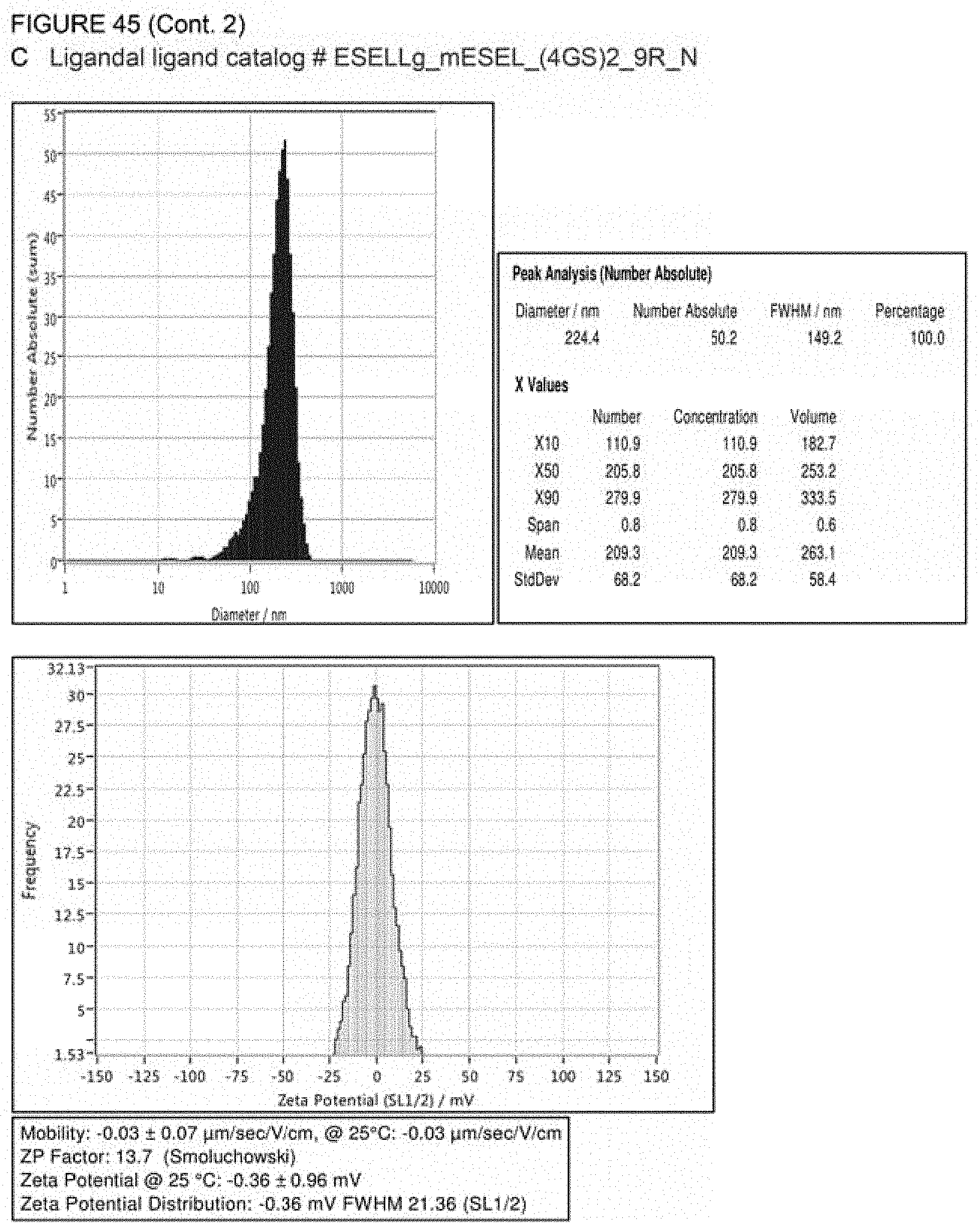
D00047
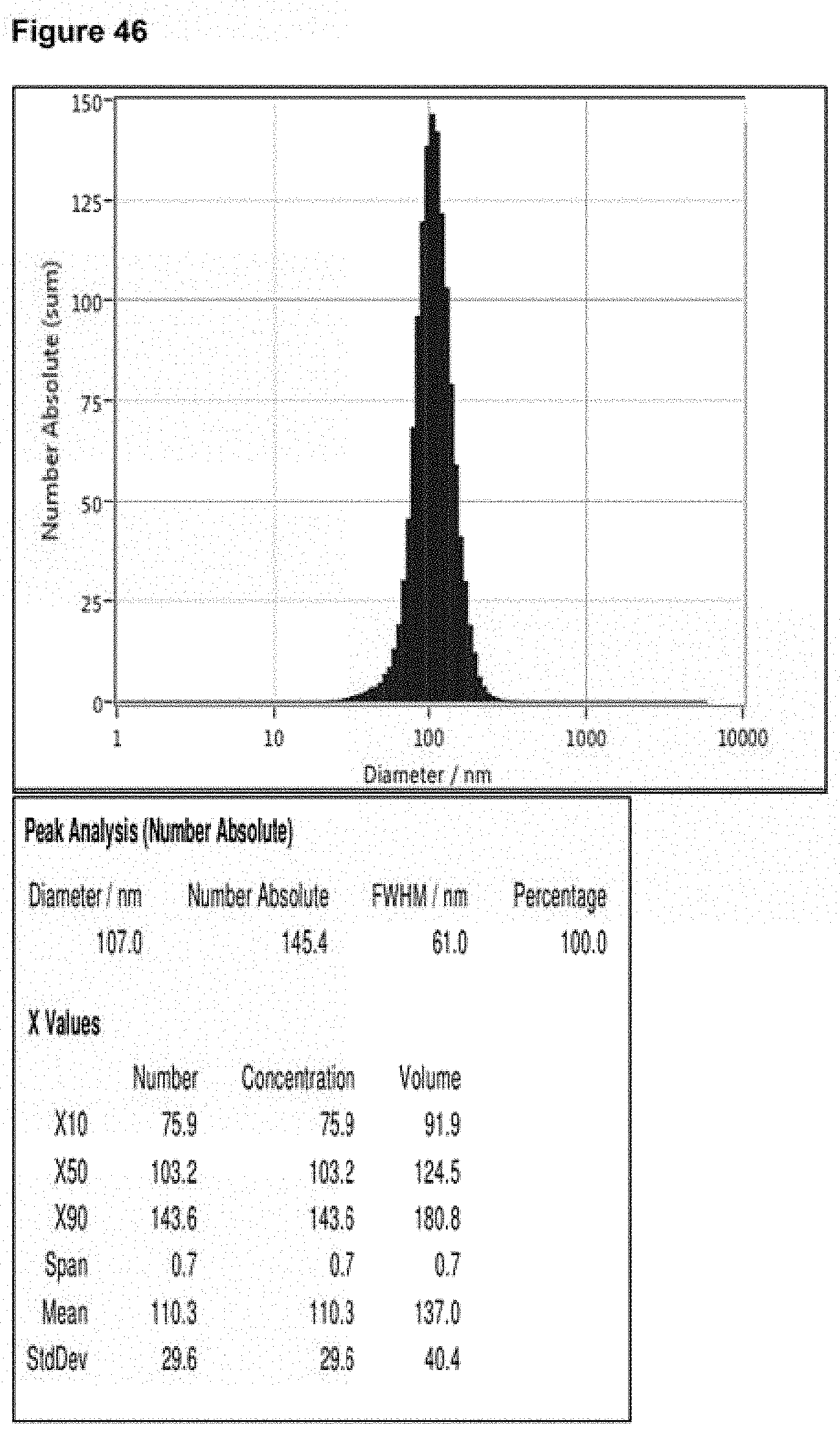
D00048
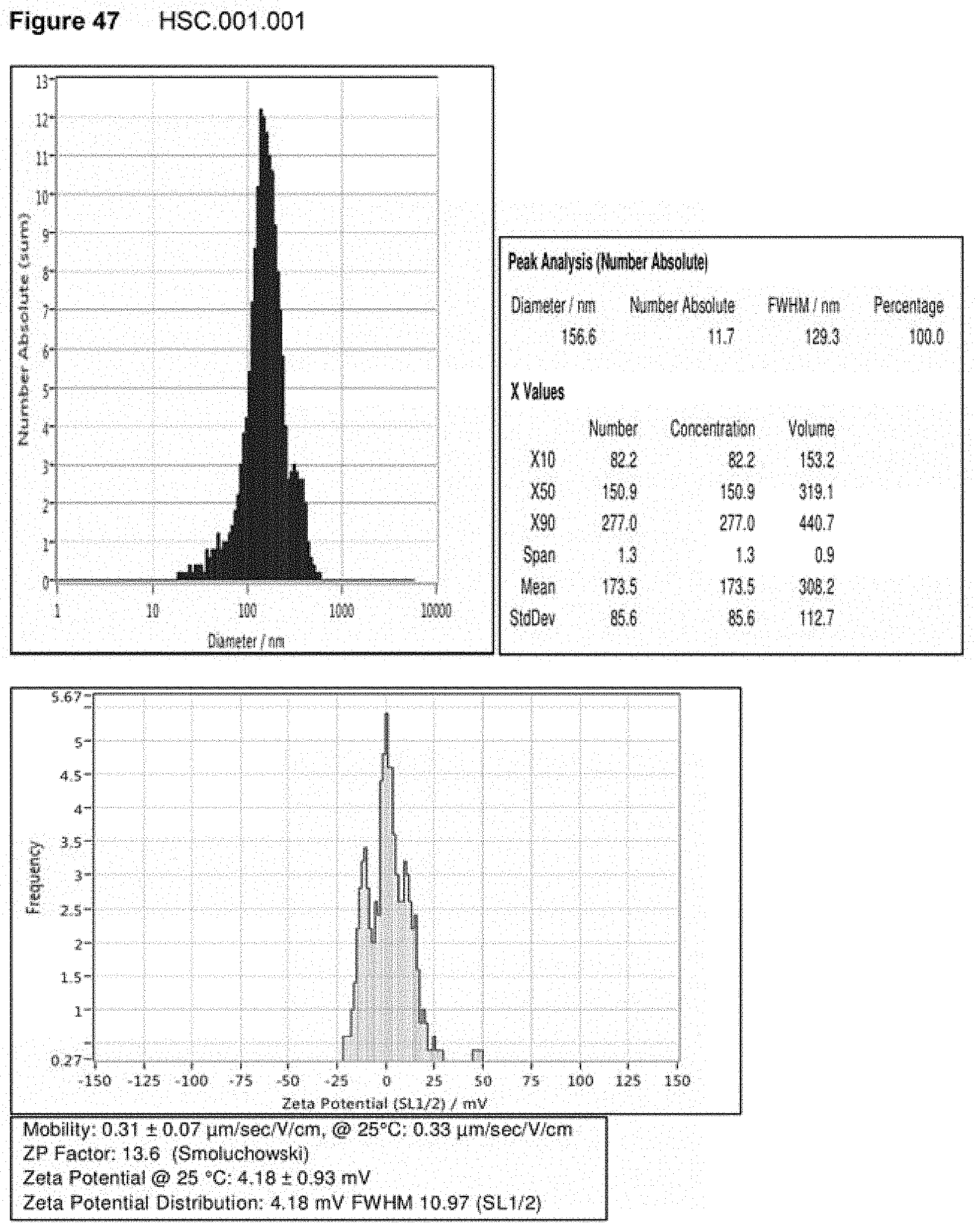
D00049

D00050
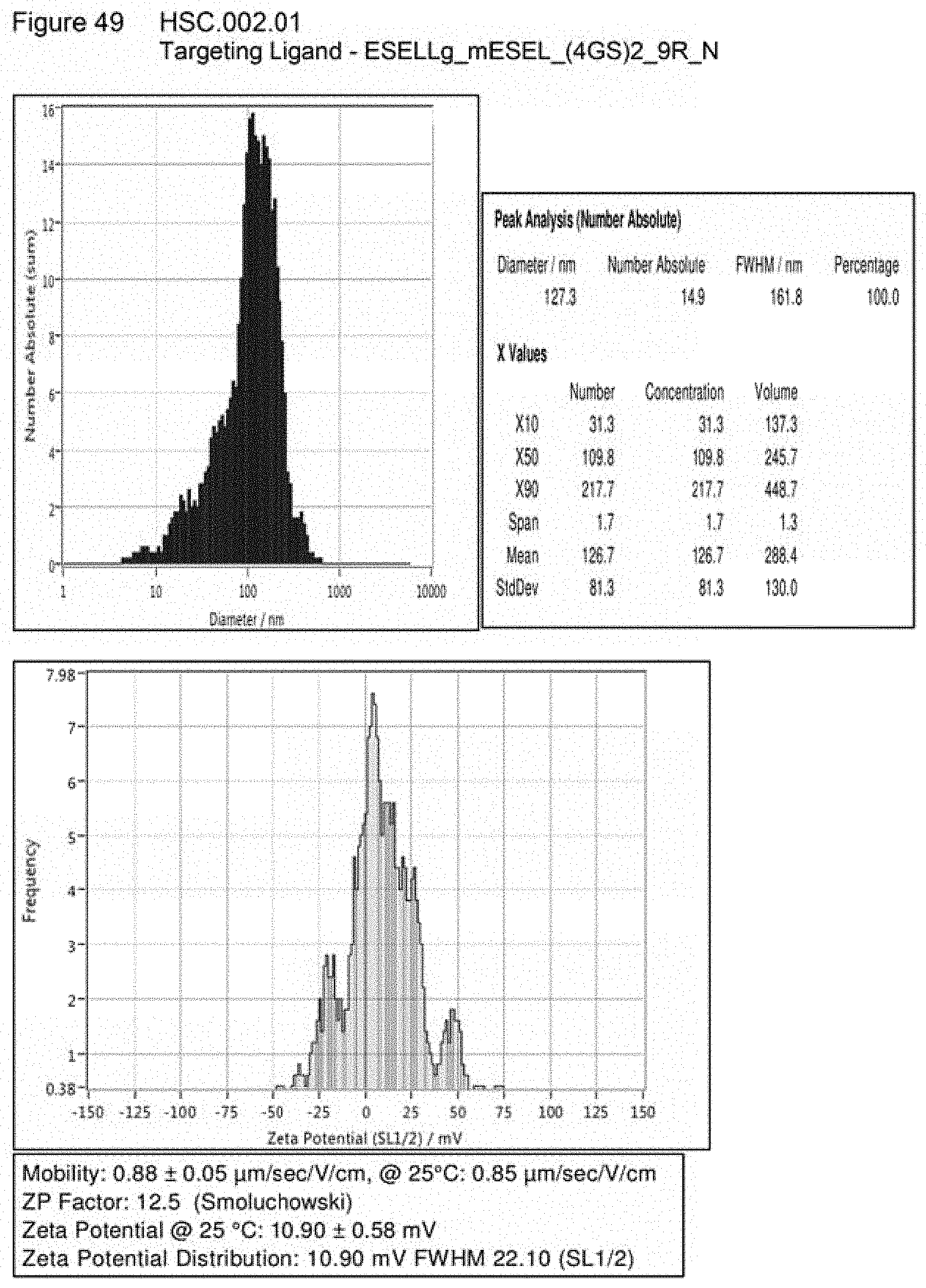
D00051

D00052

D00053

D00054
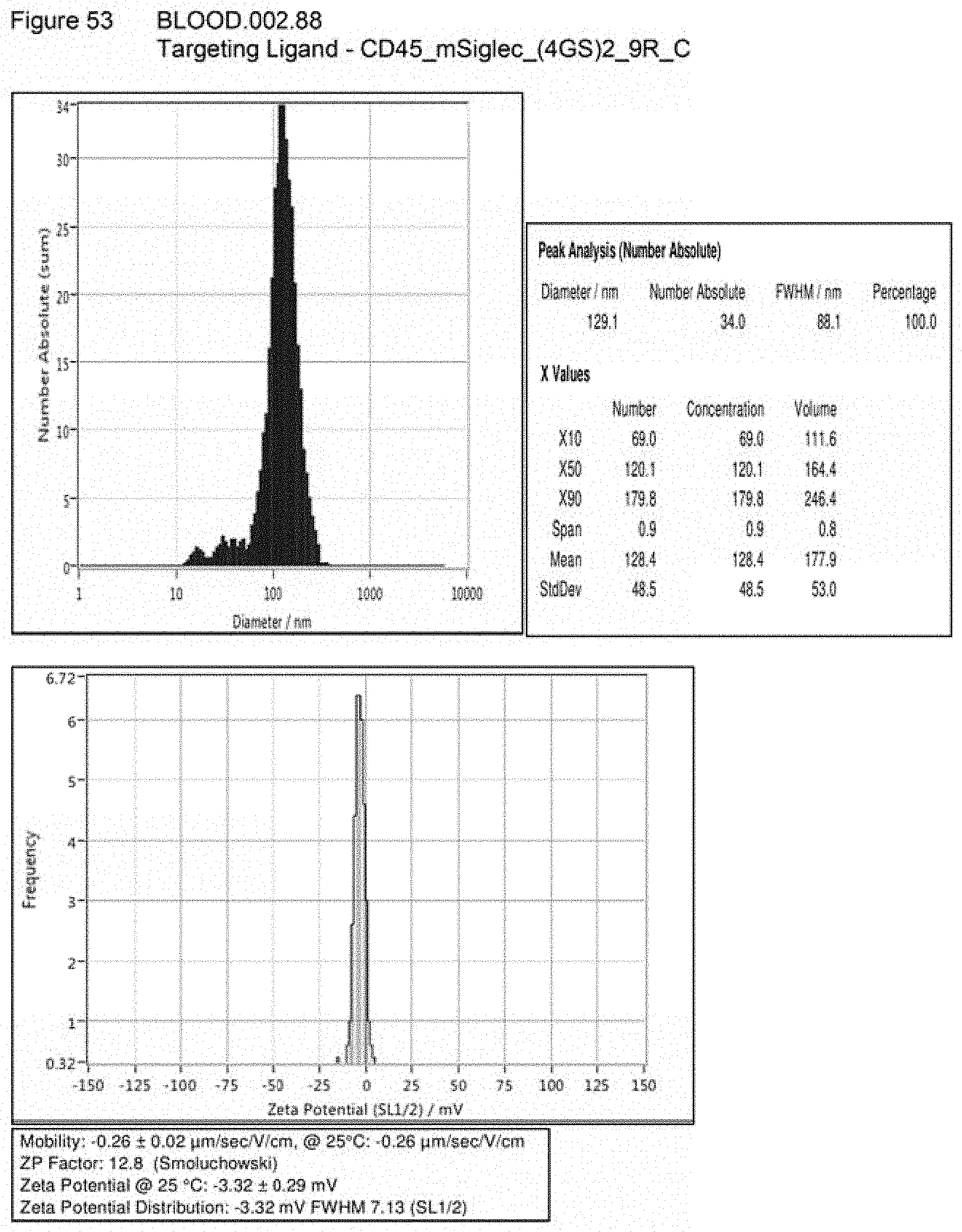
D00055
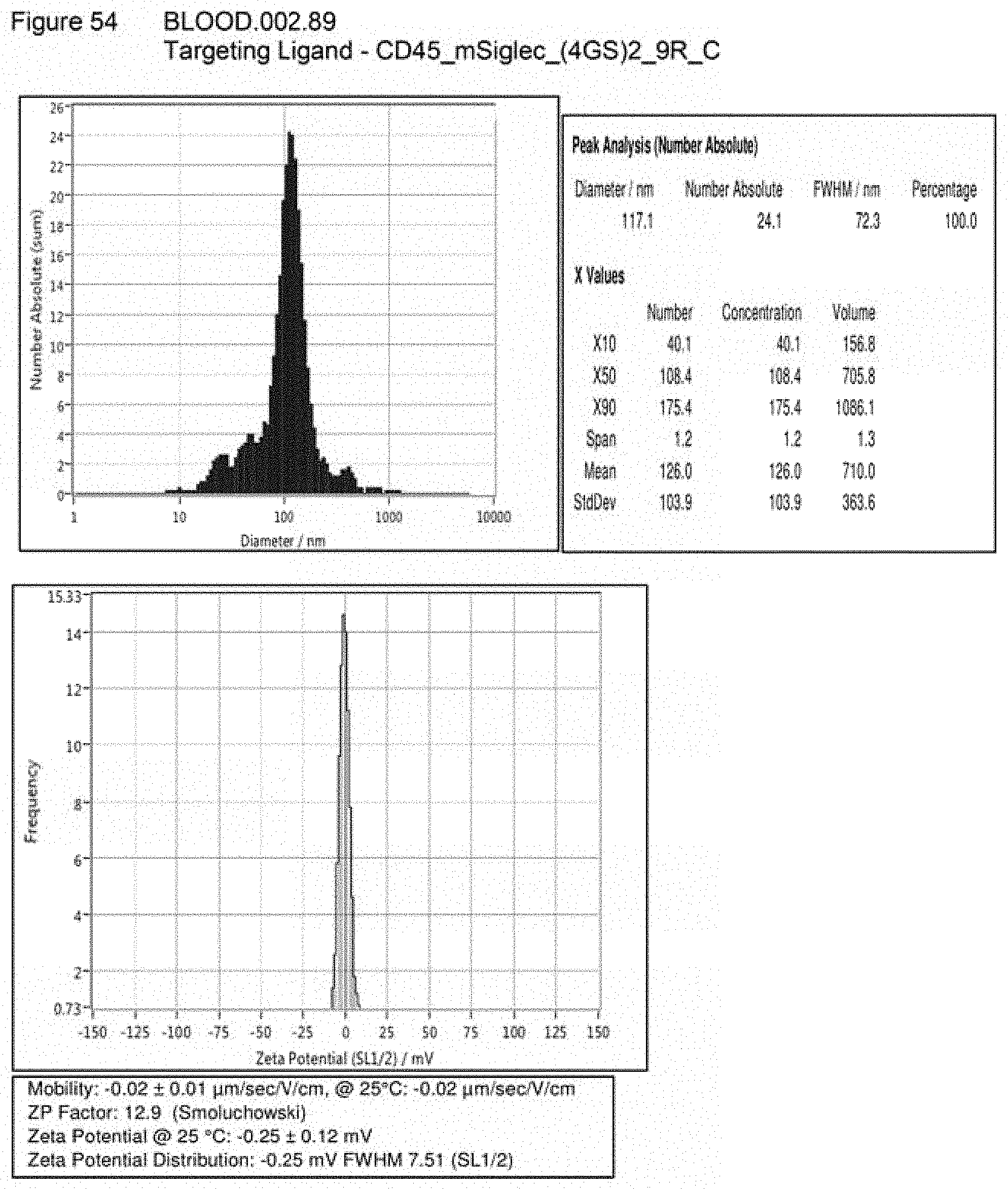
D00056

D00057
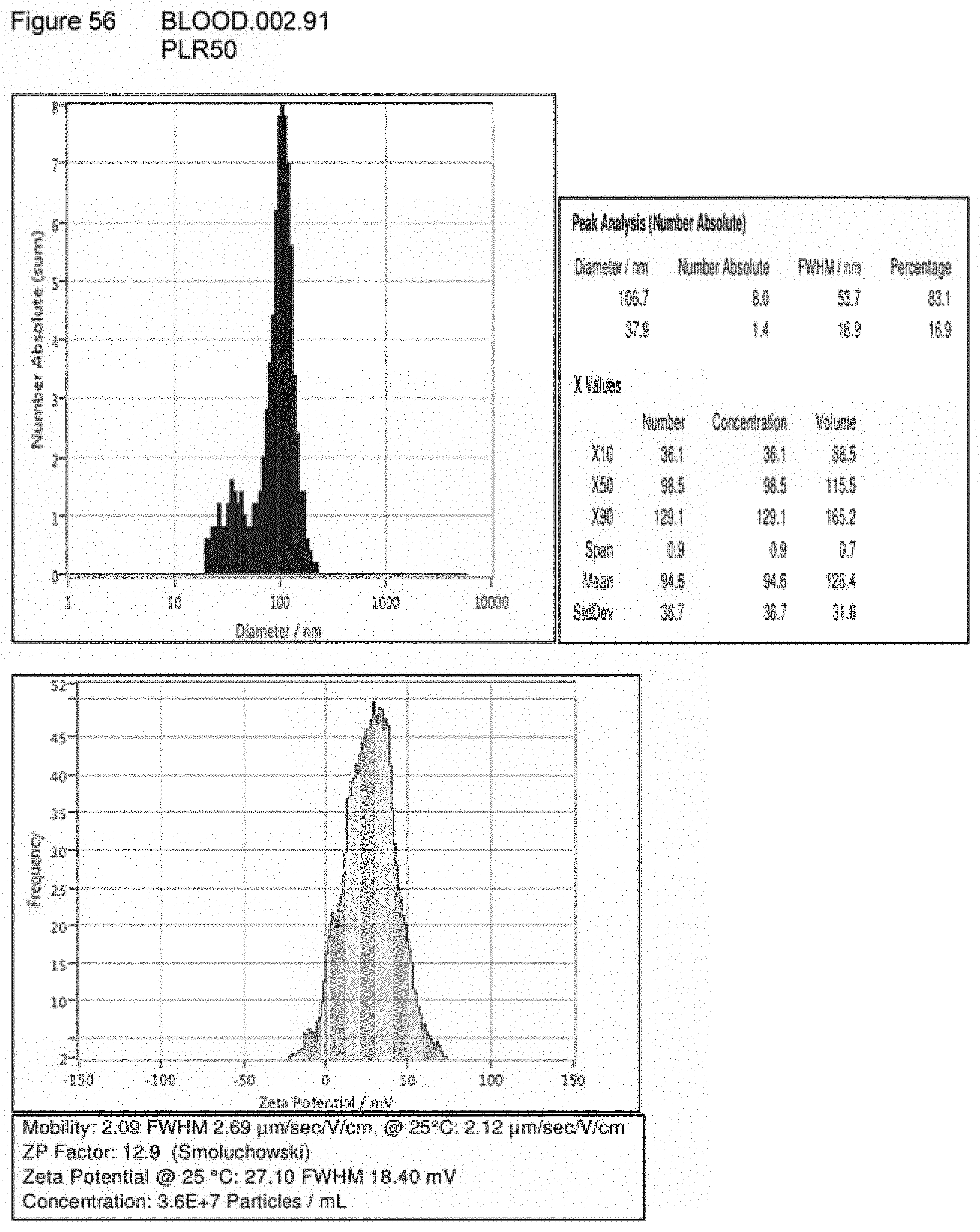
D00058
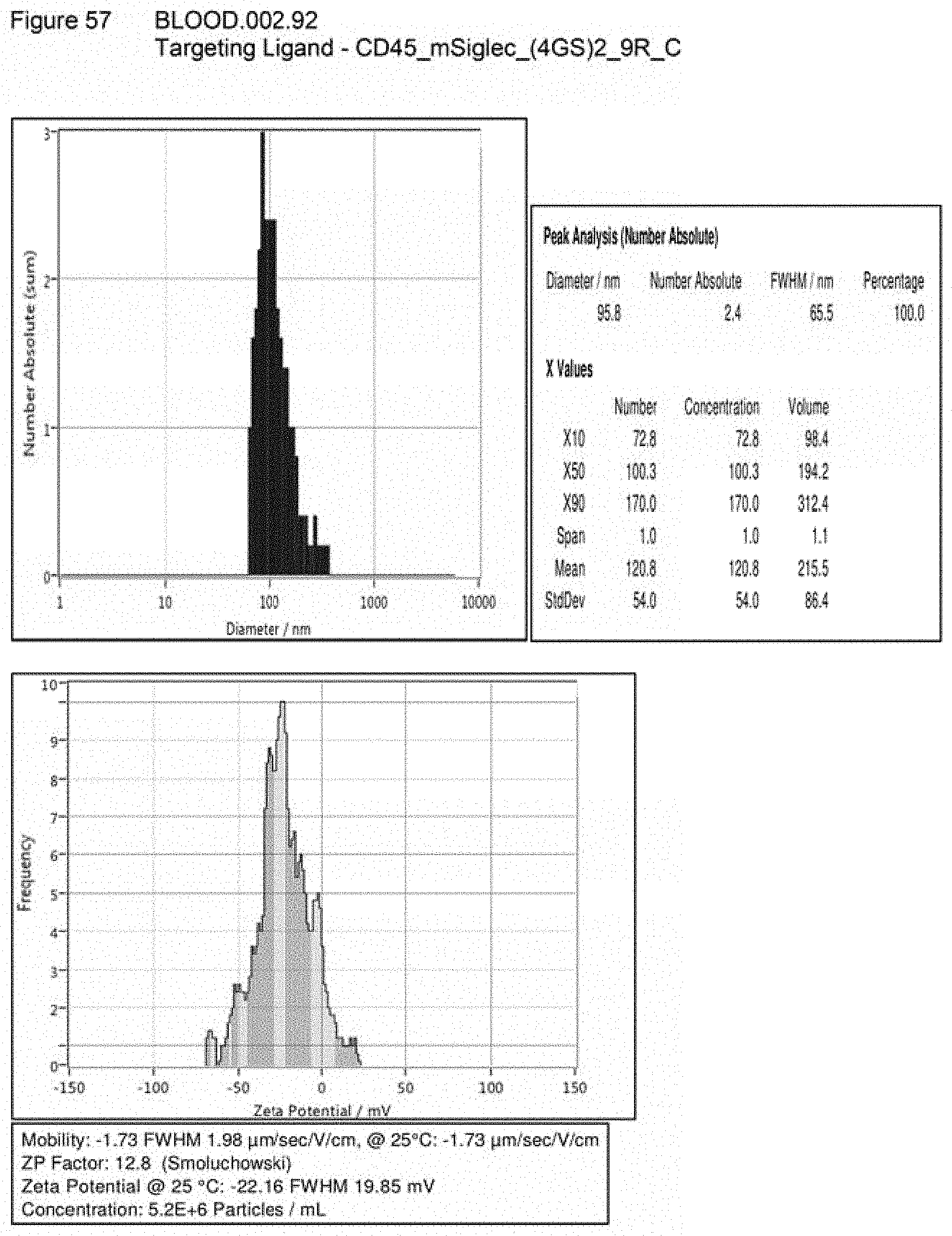
D00059
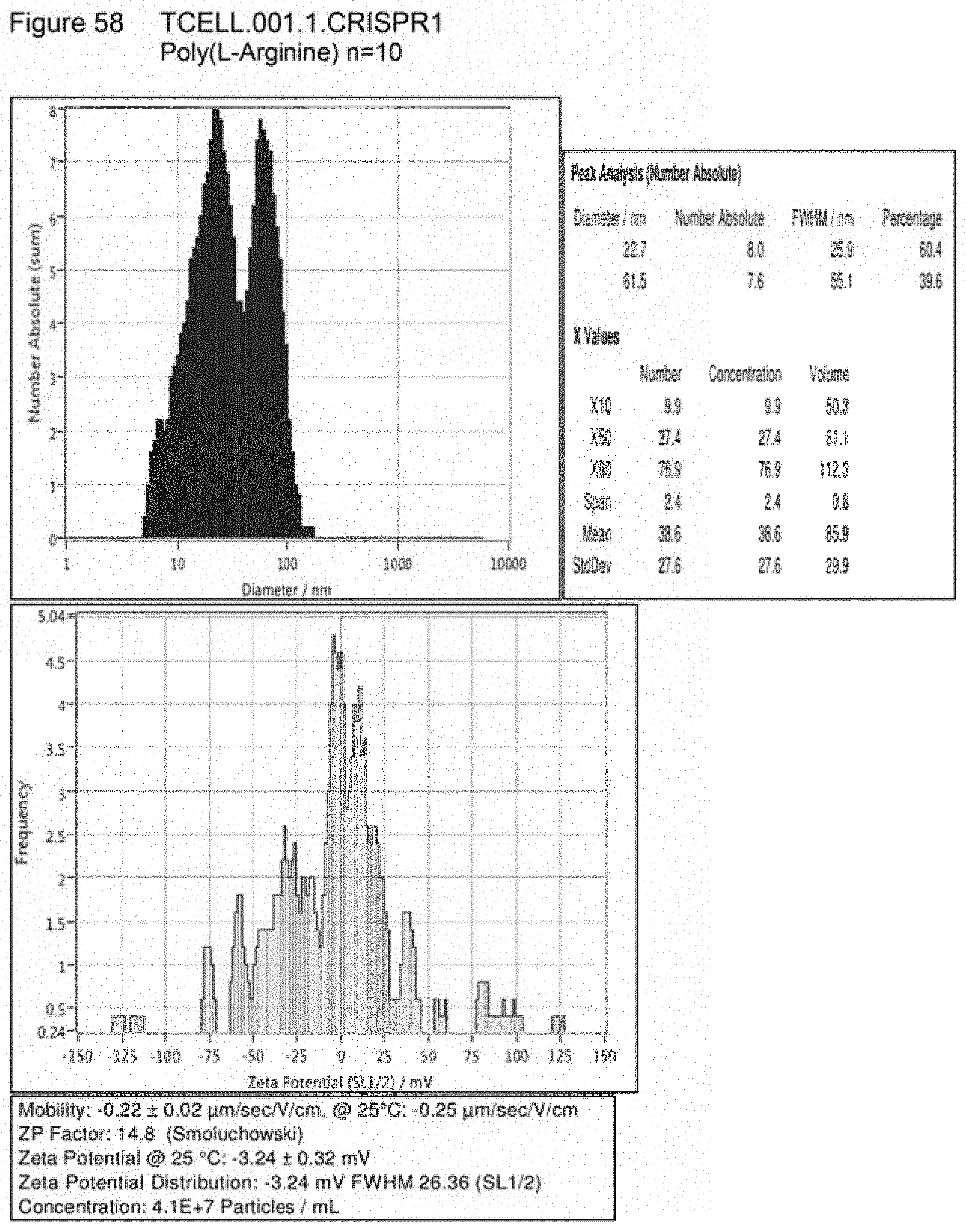
D00060

D00061

D00062
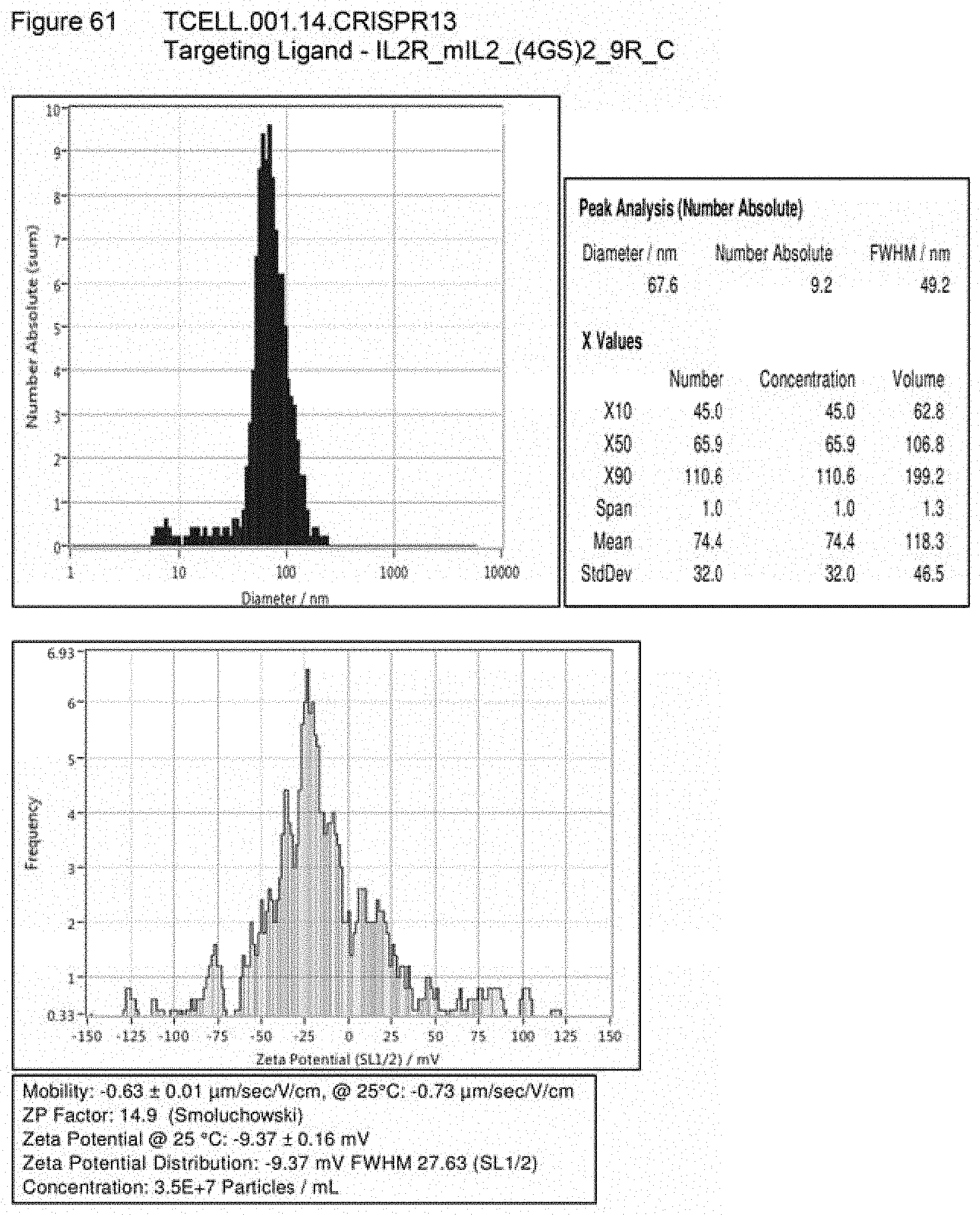
D00063
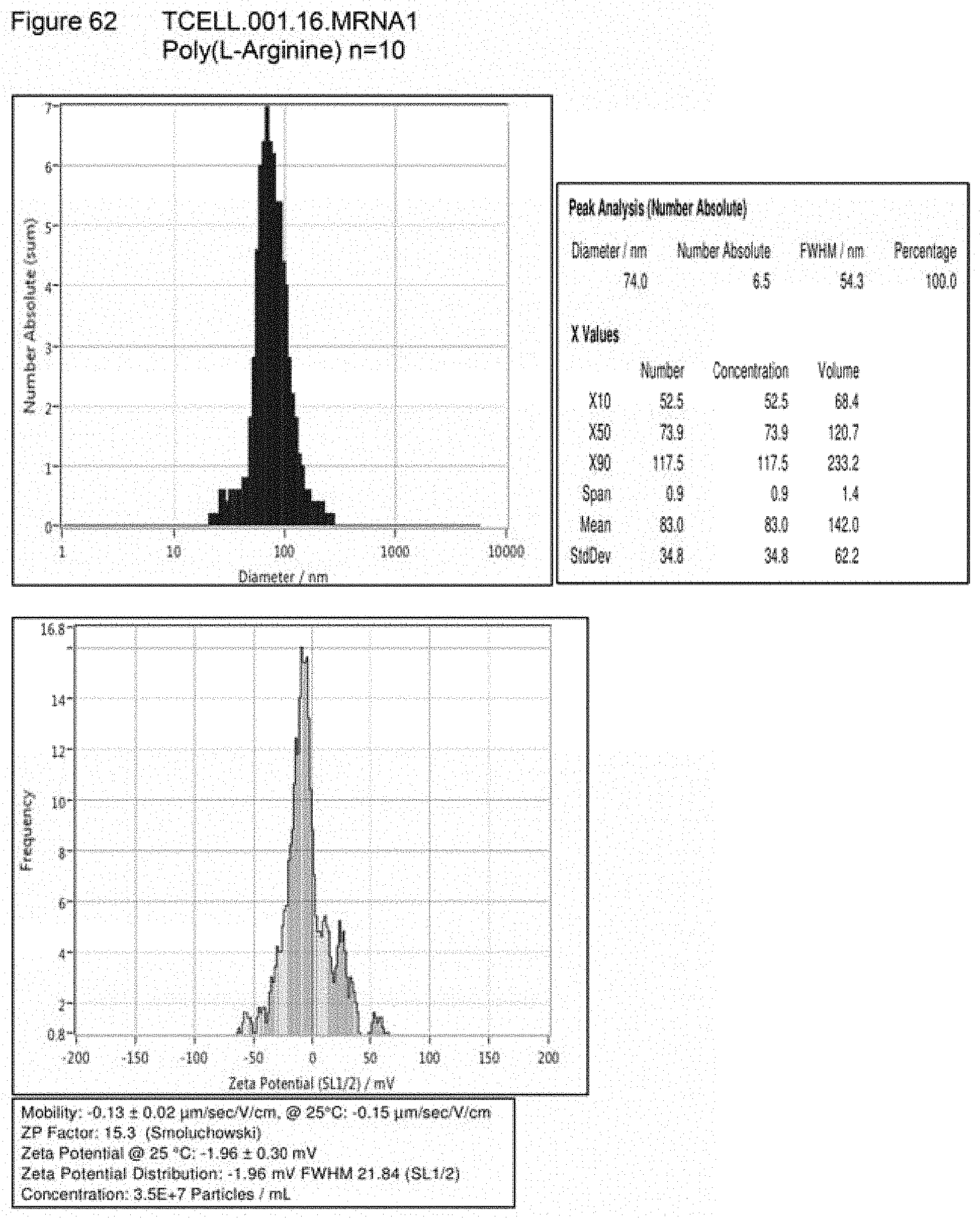
D00064

D00065

D00066

D00067

D00068

D00069

D00070
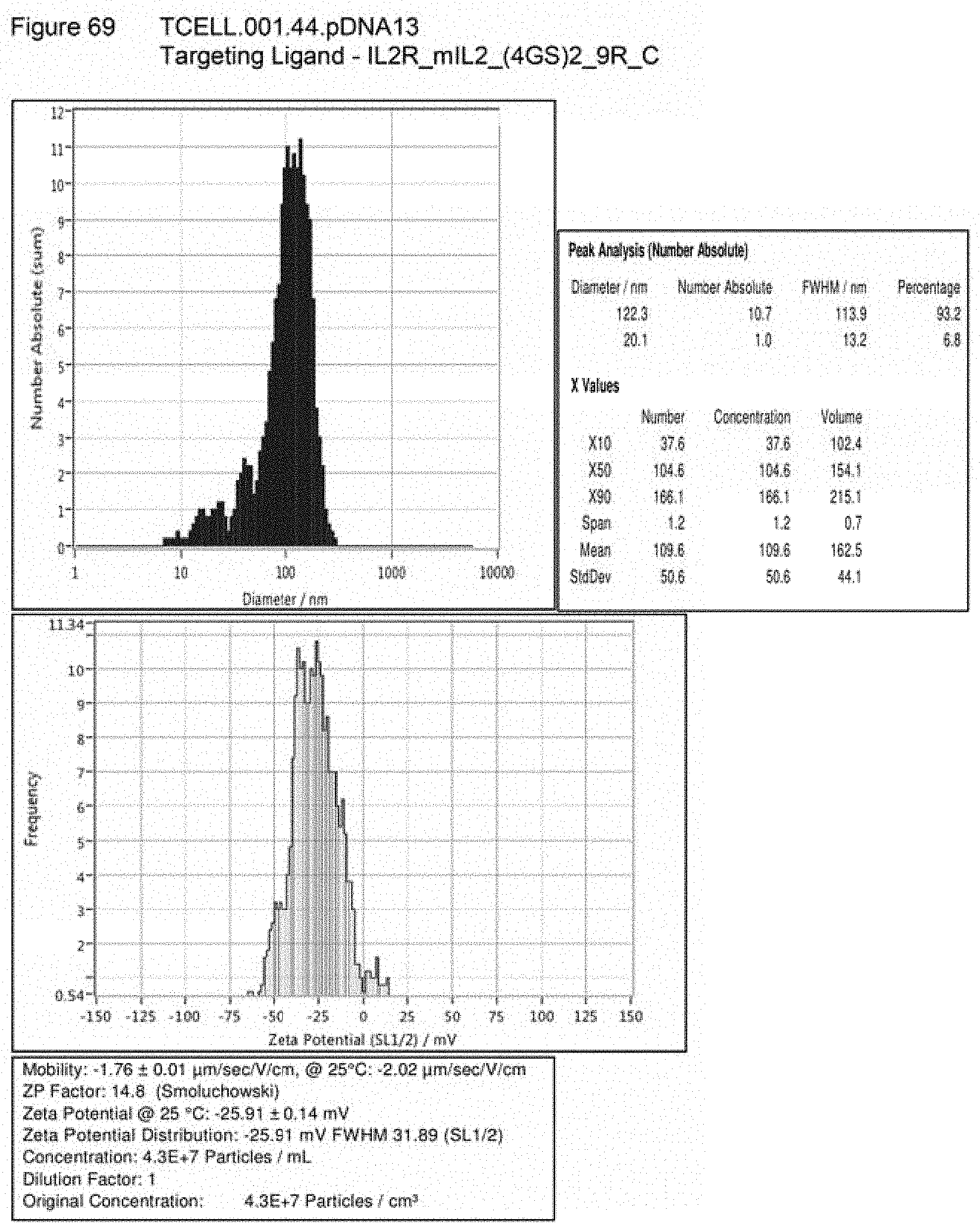
D00071
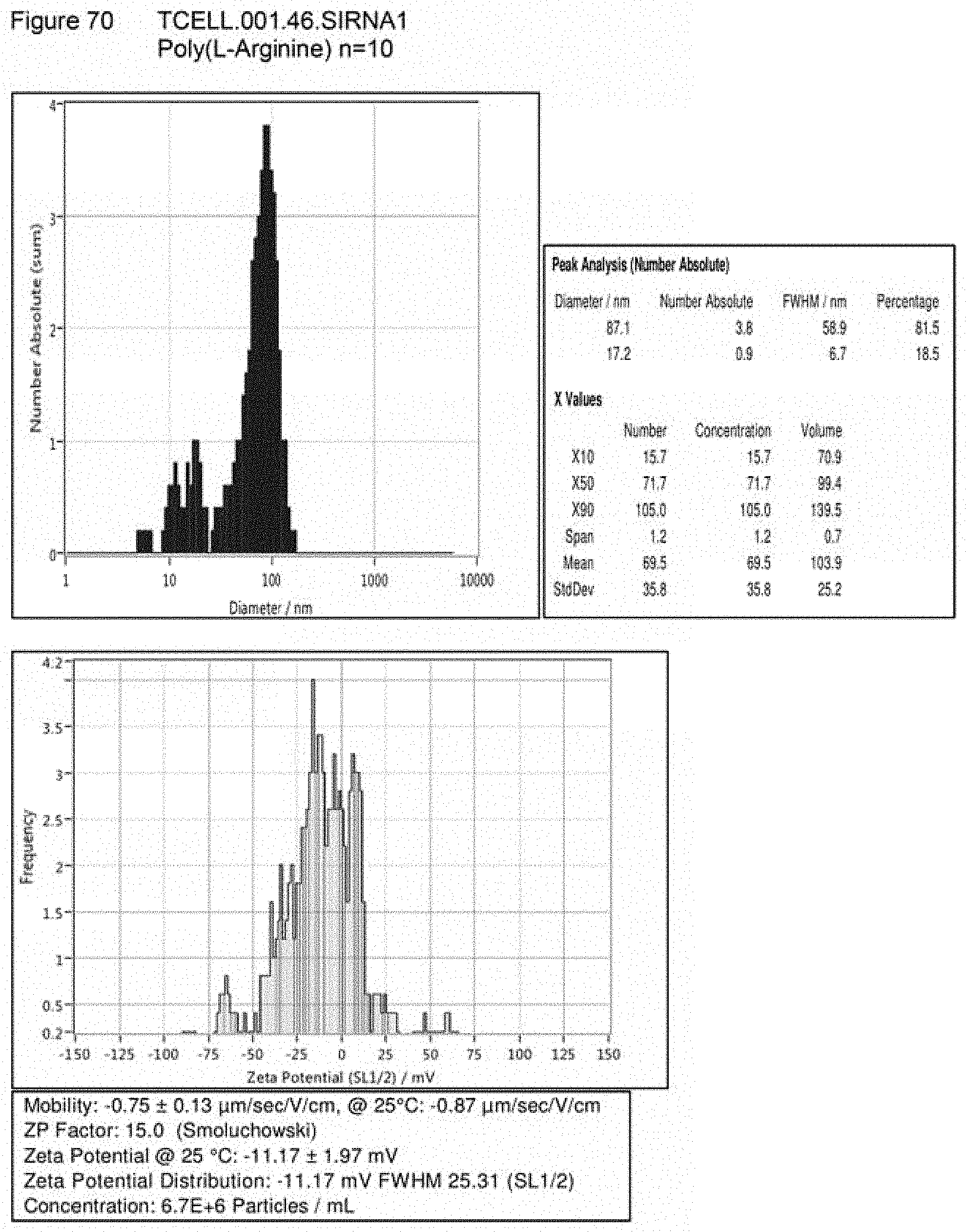
D00072

D00073

D00074
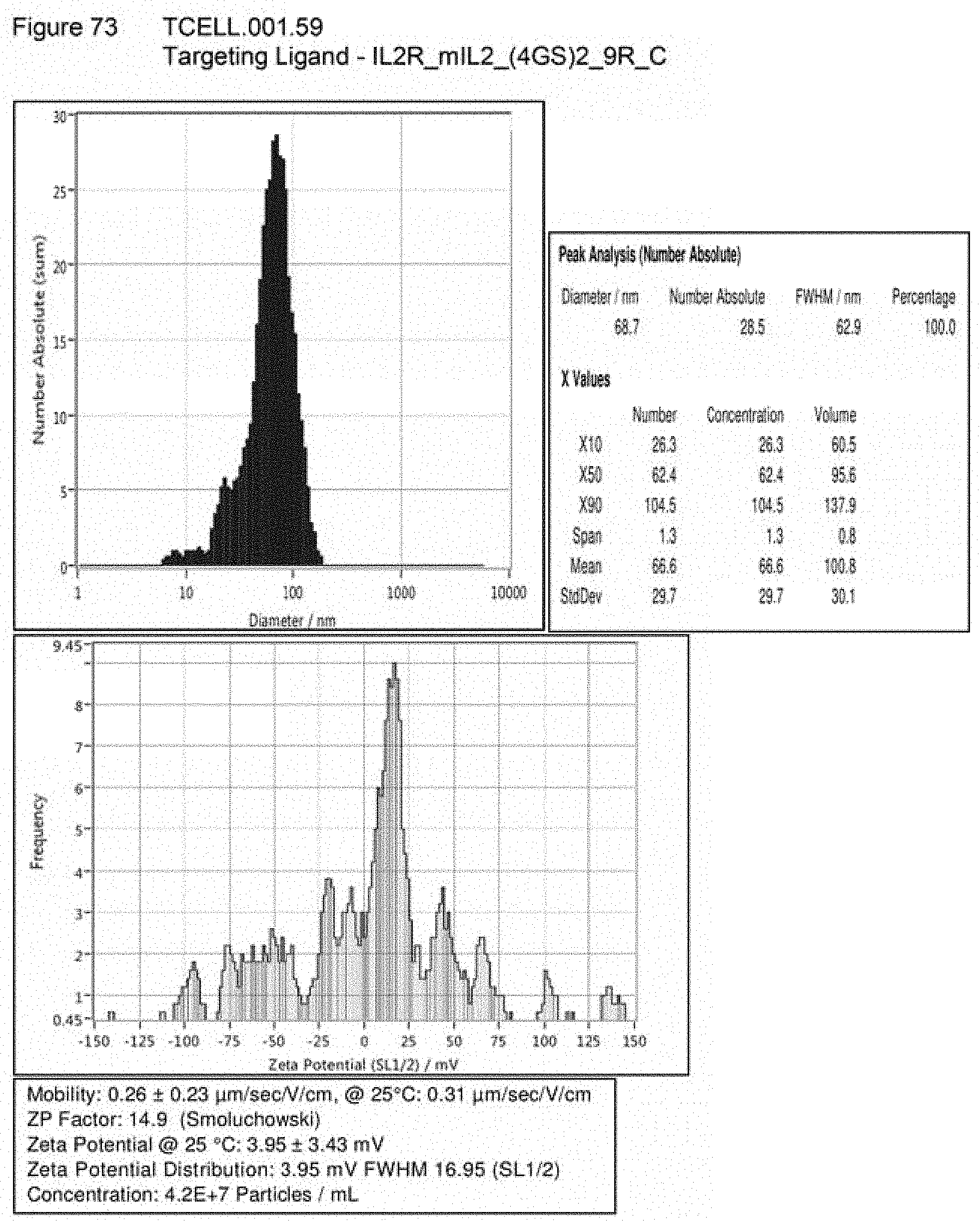
D00075

D00076

D00077
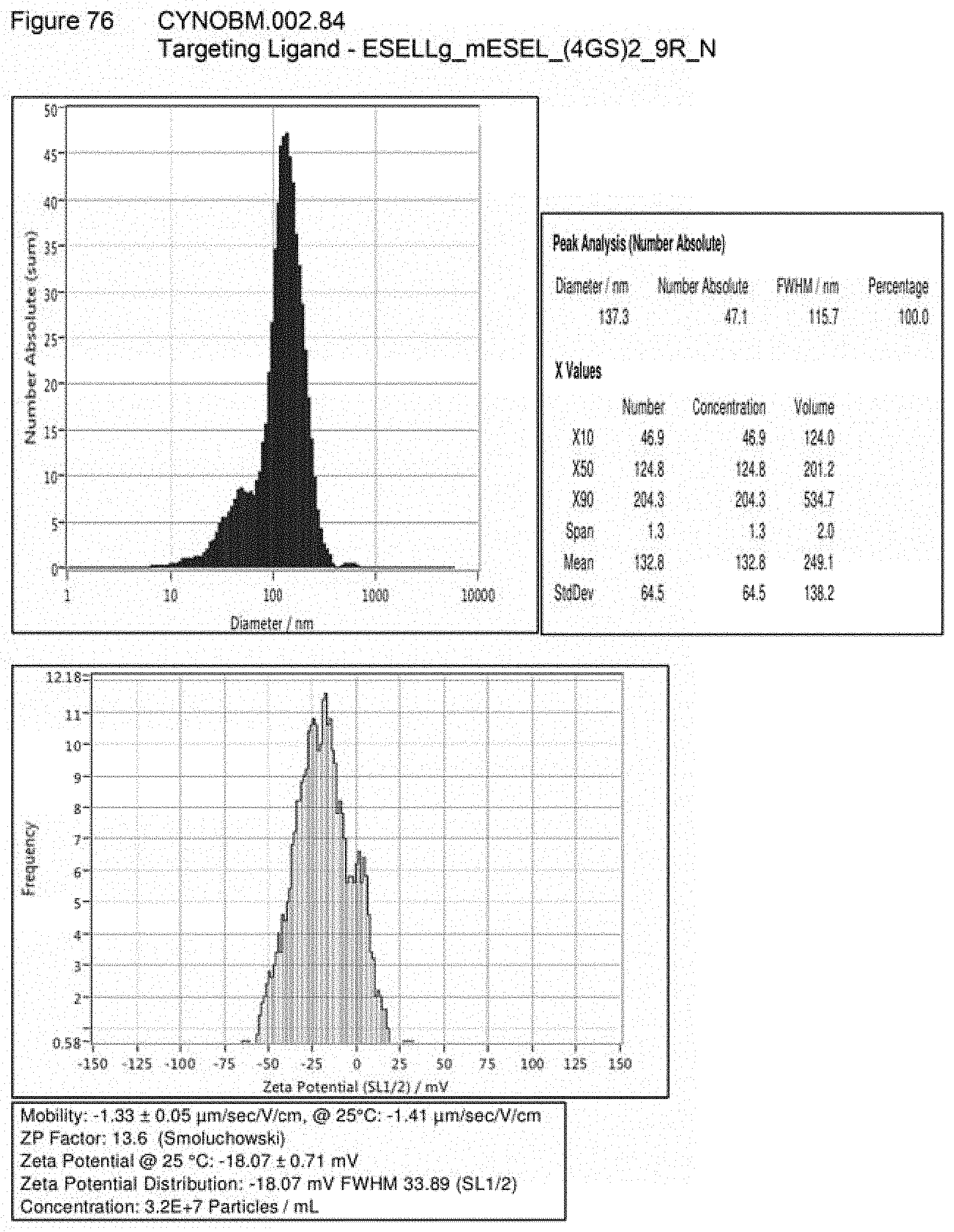
D00078
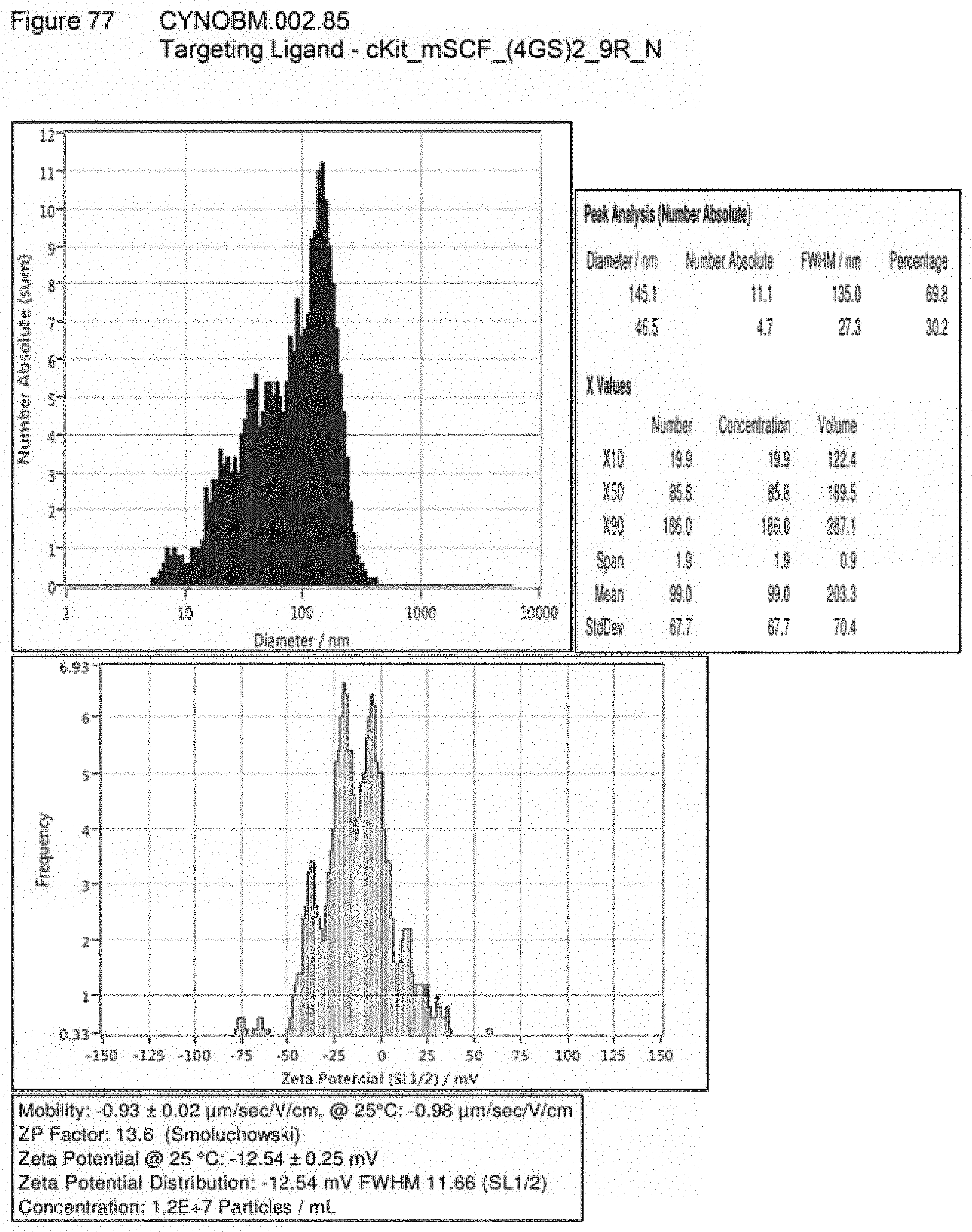
D00079

D00080

D00081
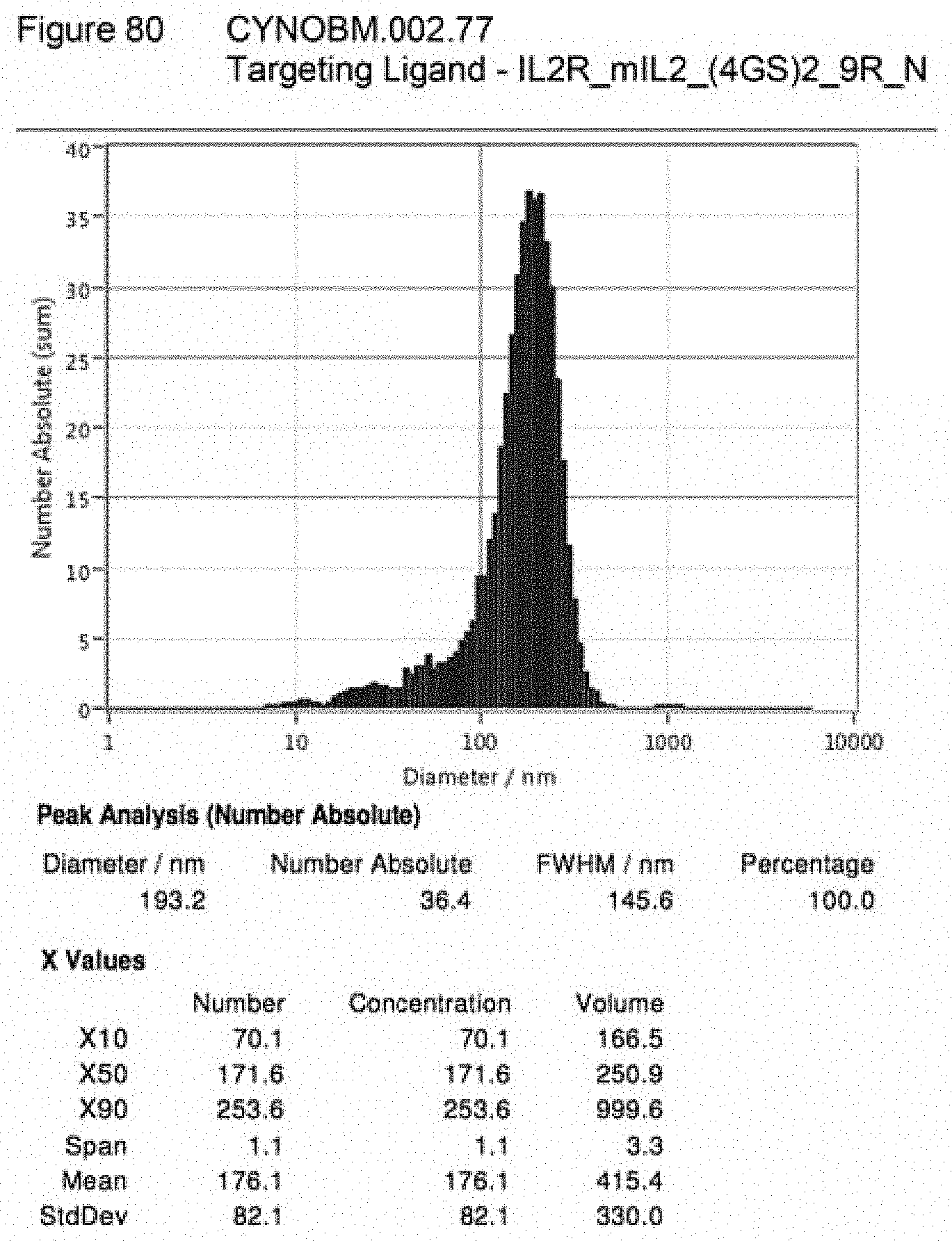
D00082
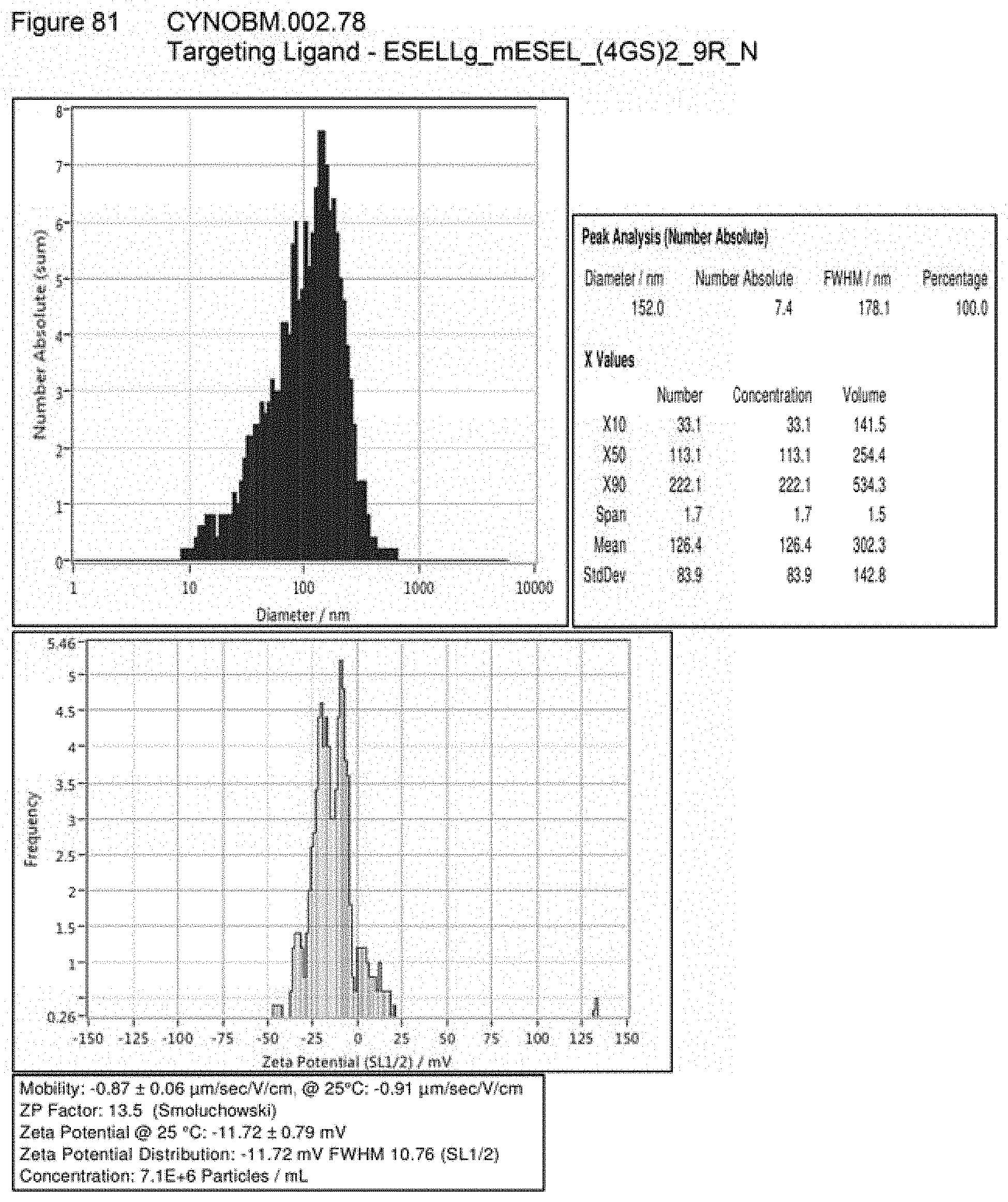
D00083
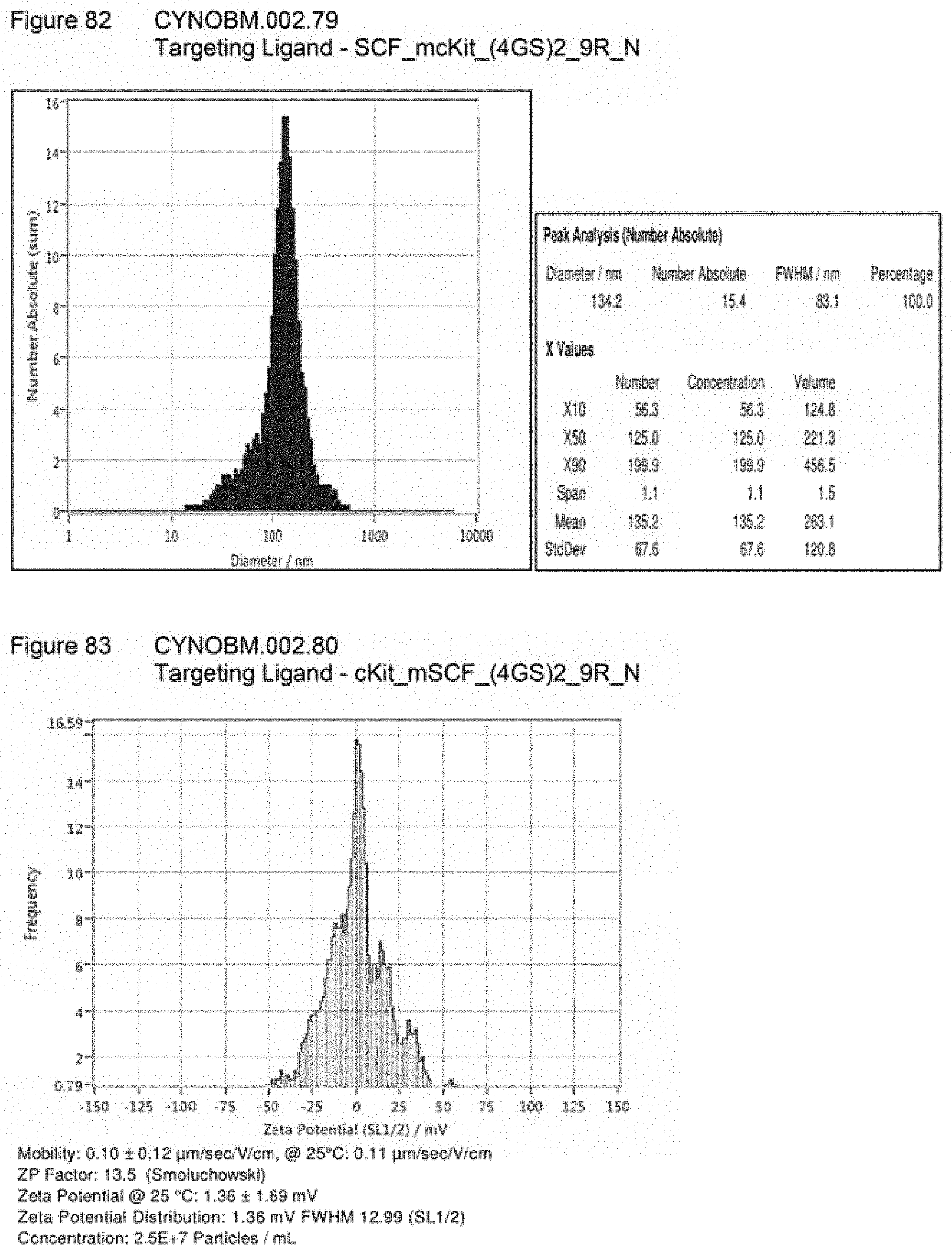
D00084
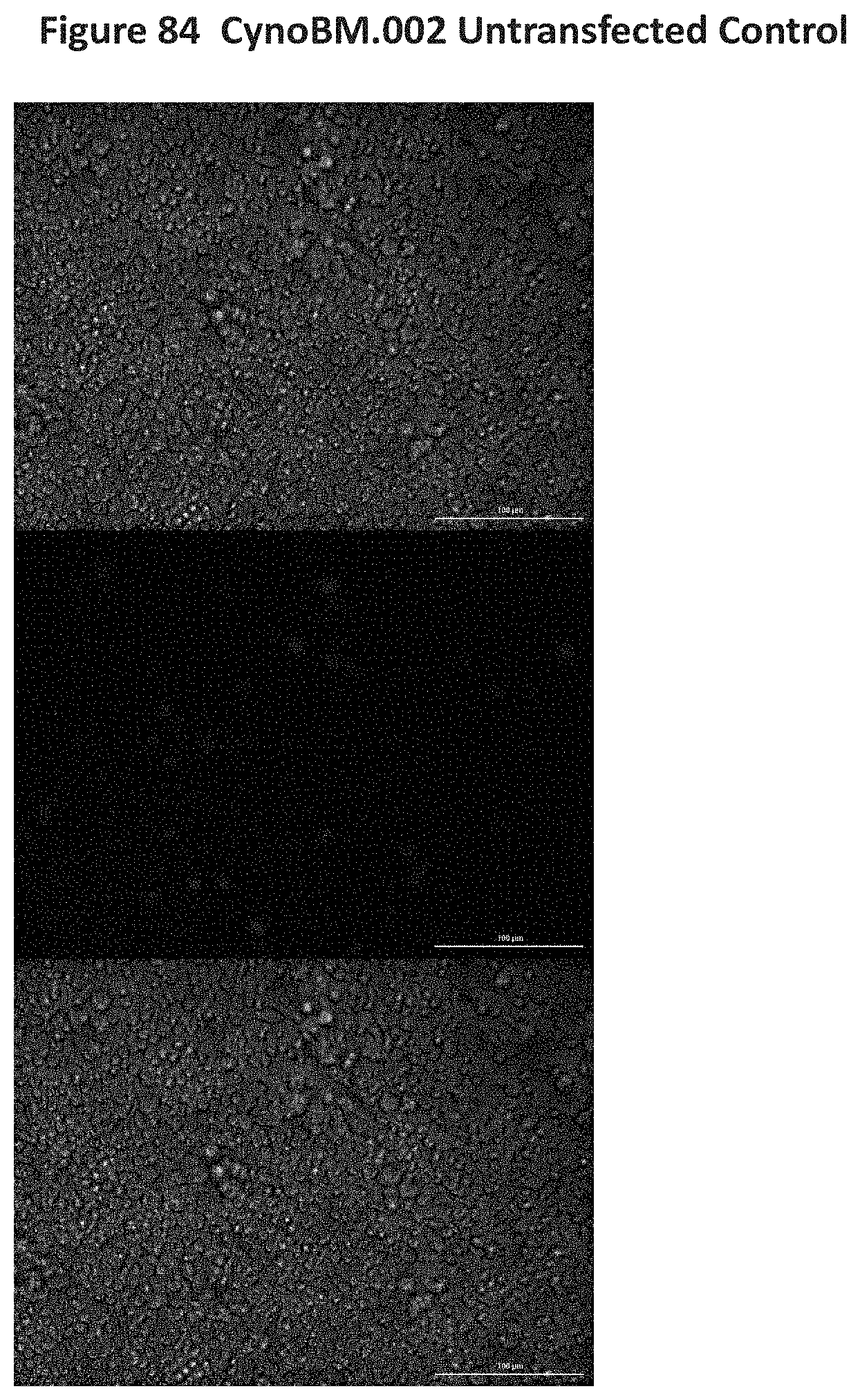
D00085

D00086
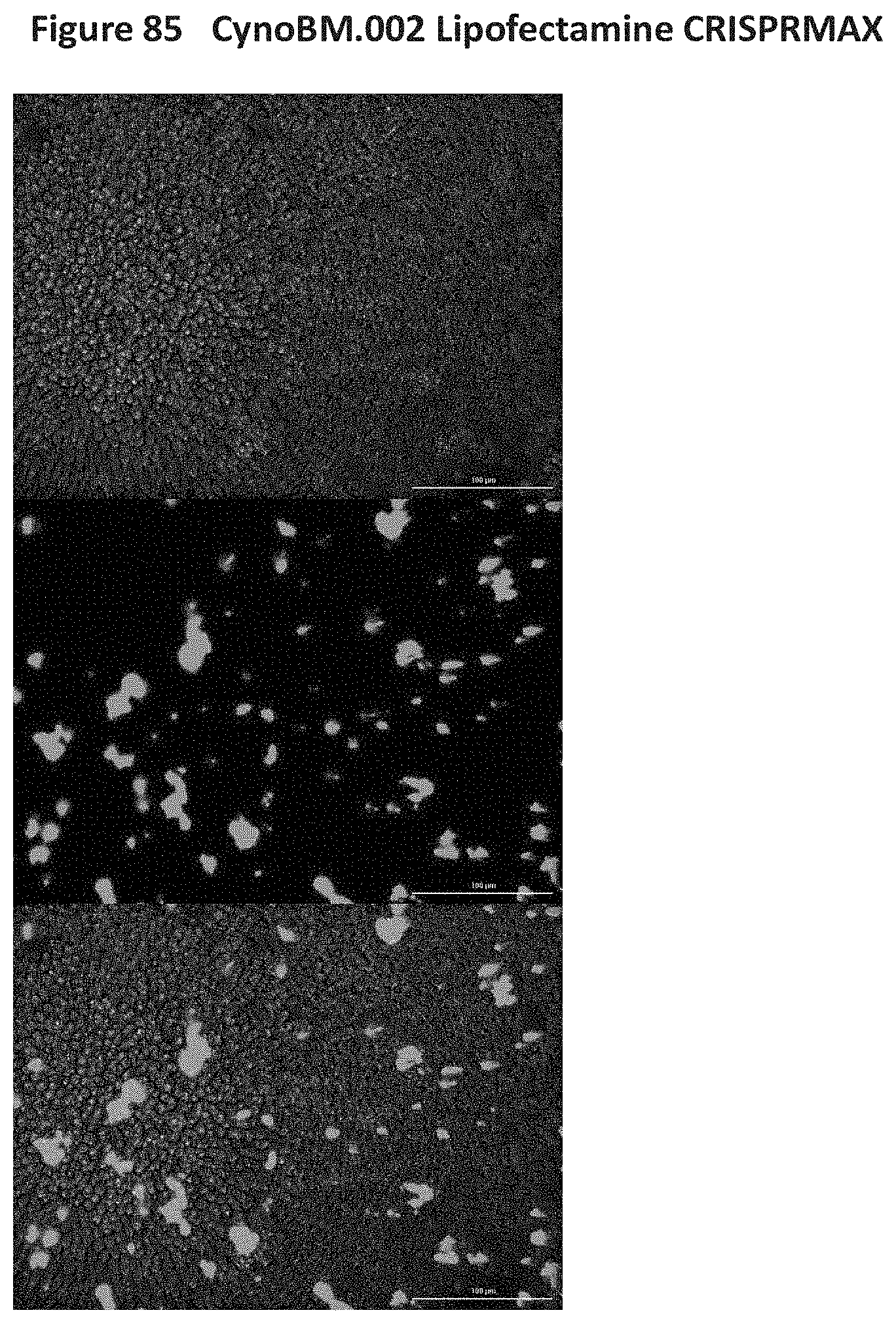
D00087

D00088
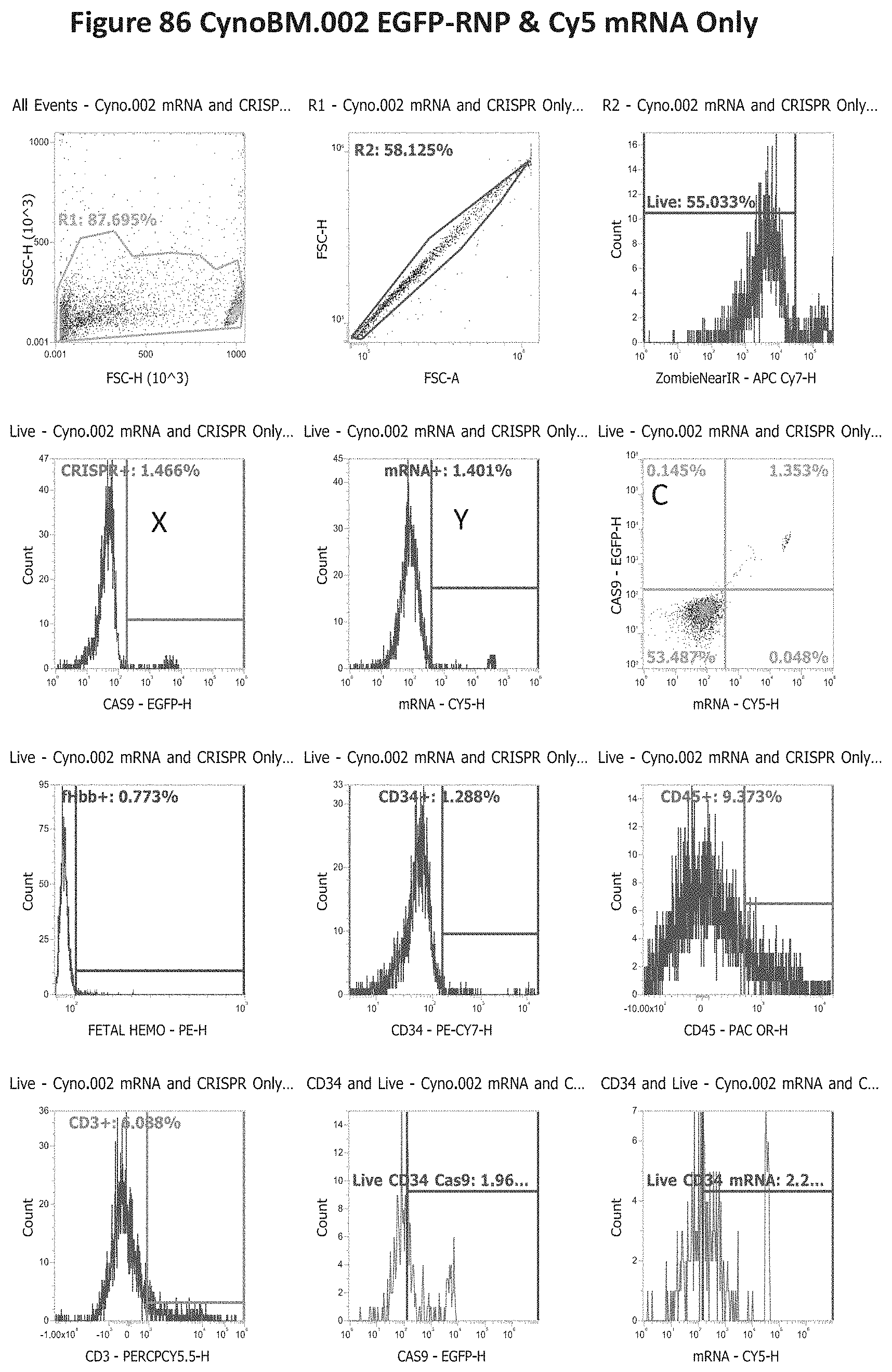
D00089

D00090
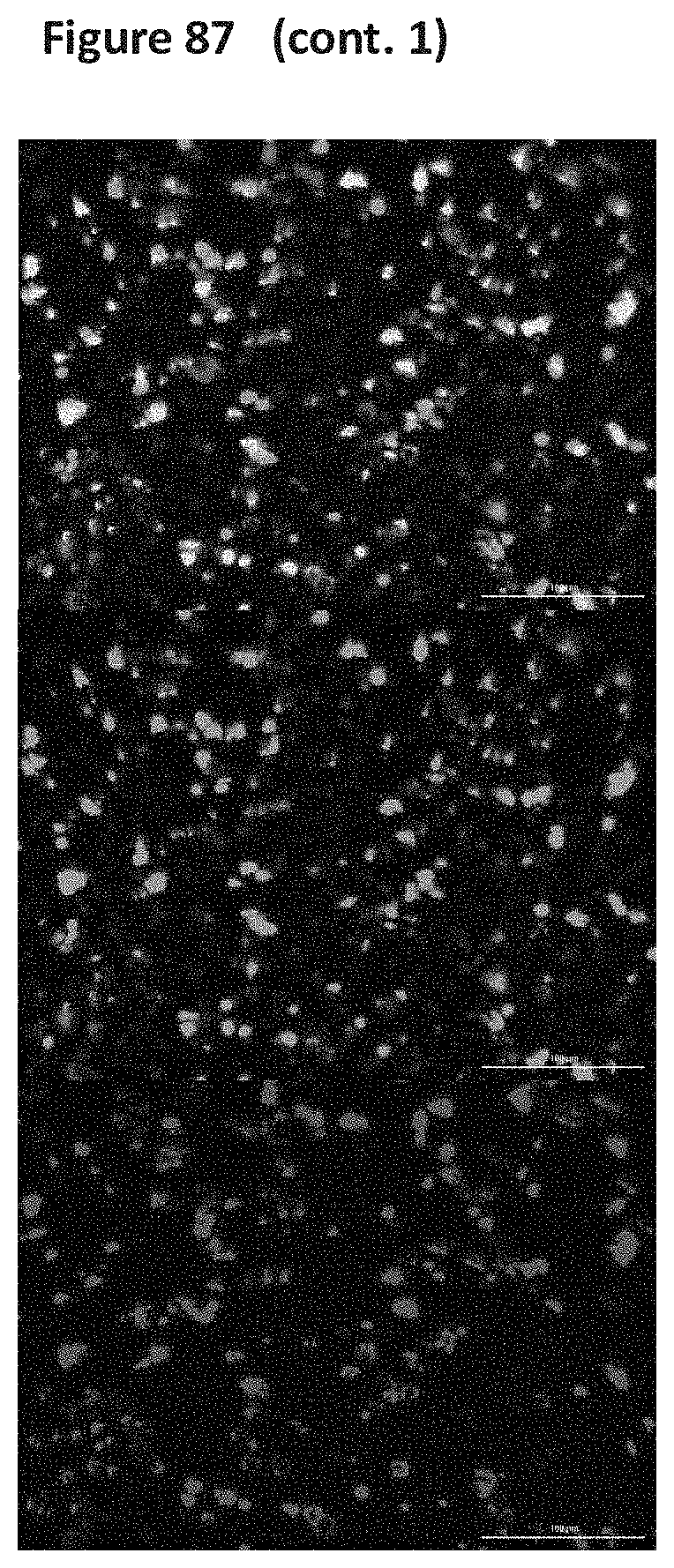
D00091

D00092
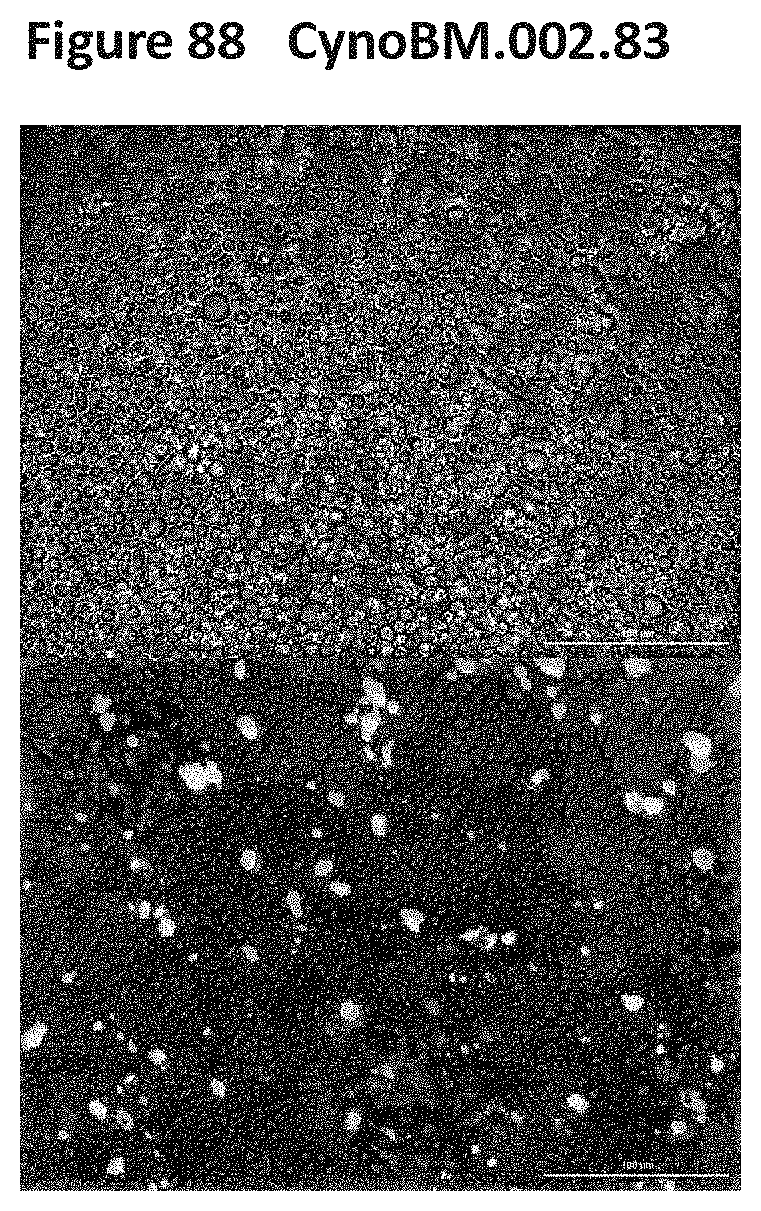
D00093
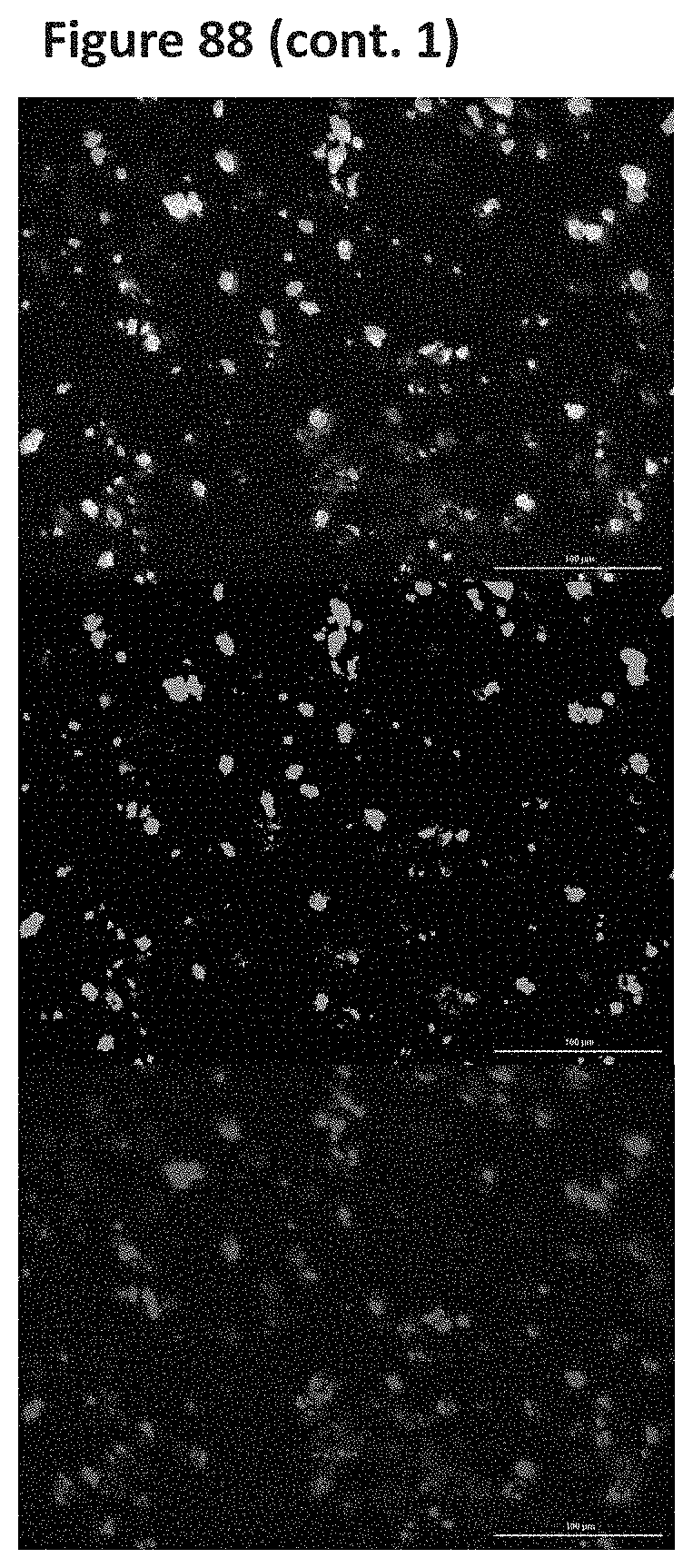
D00094
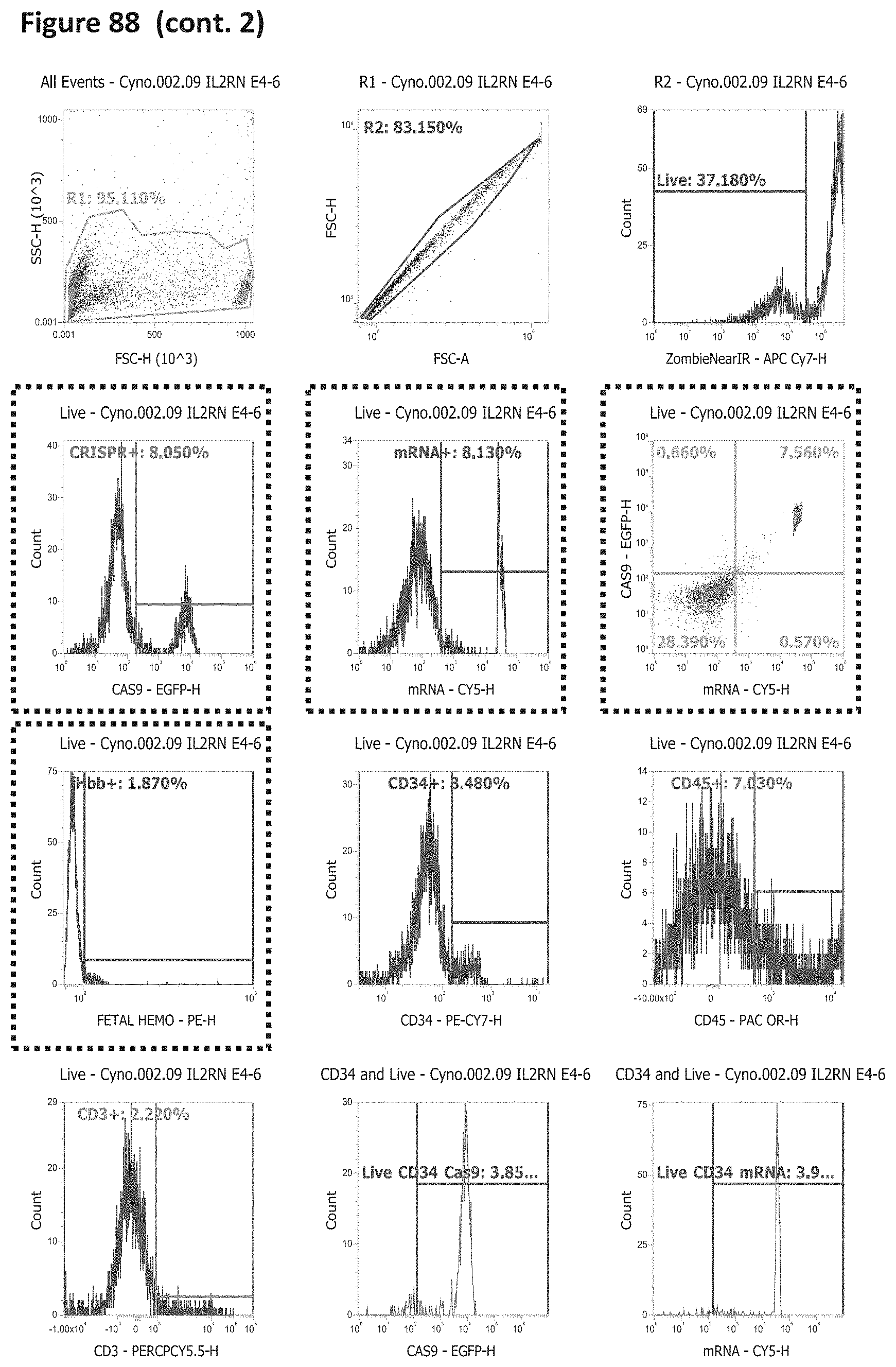
D00095
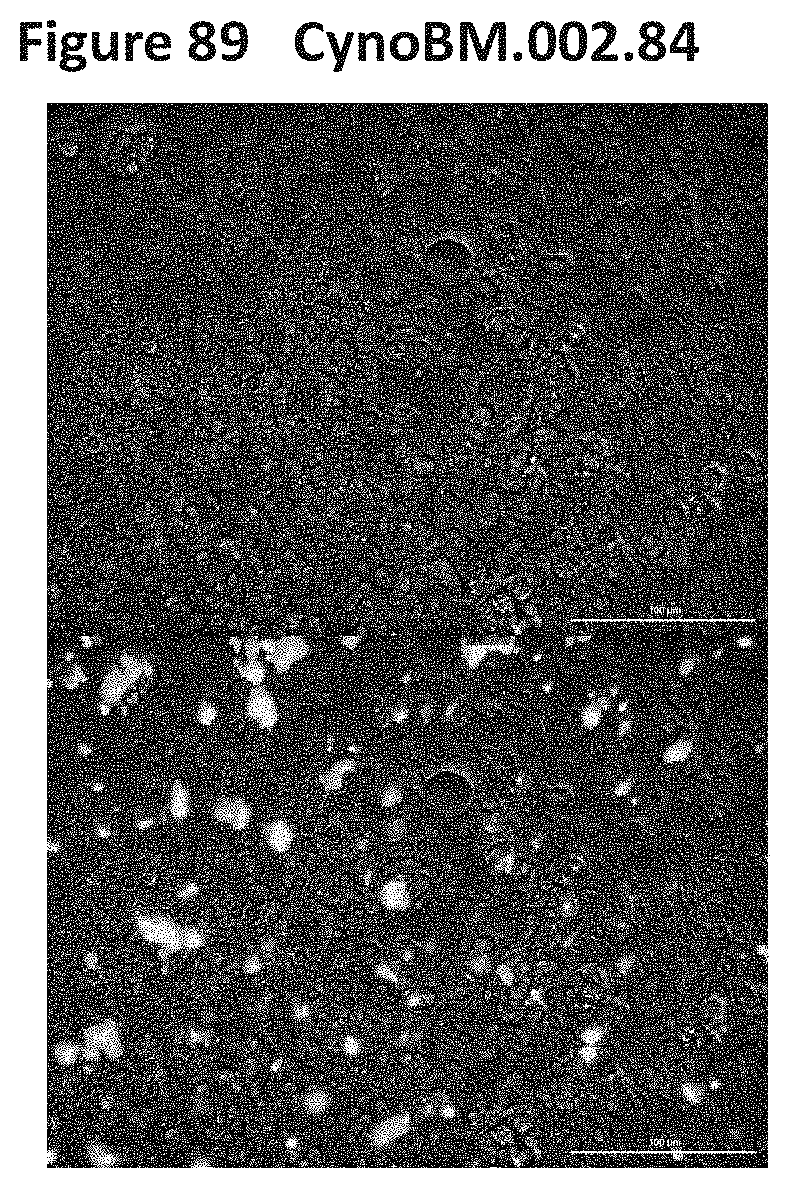
D00096
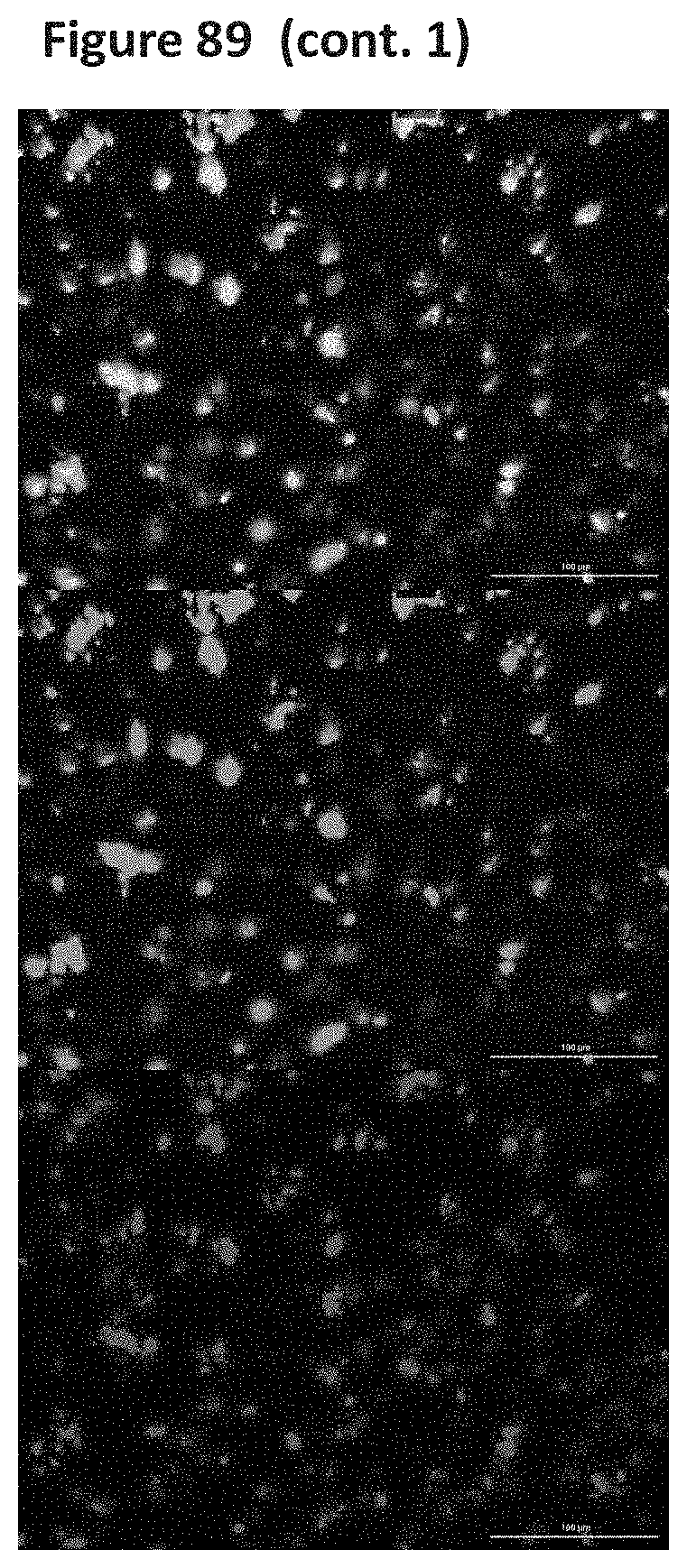
D00097
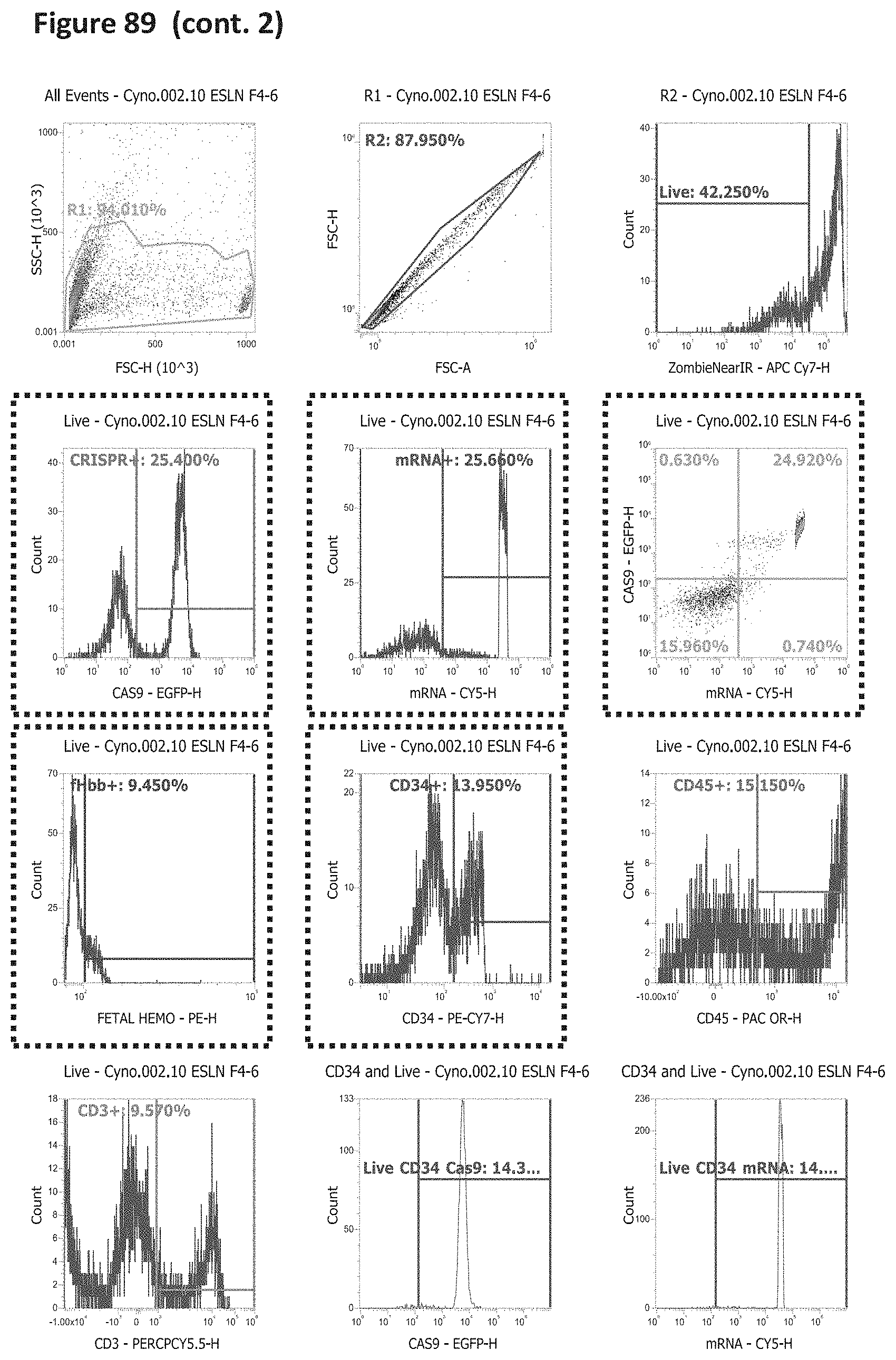
D00098
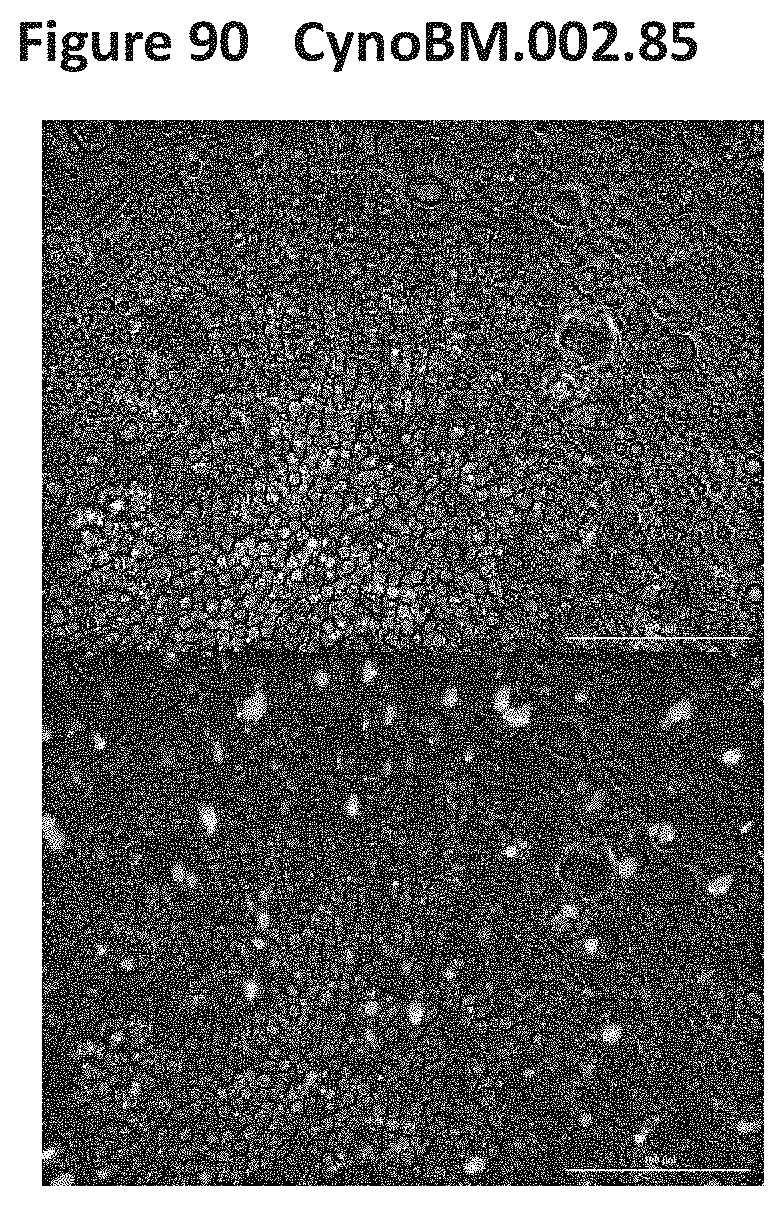
D00099

D00100

D00101

D00102

D00103
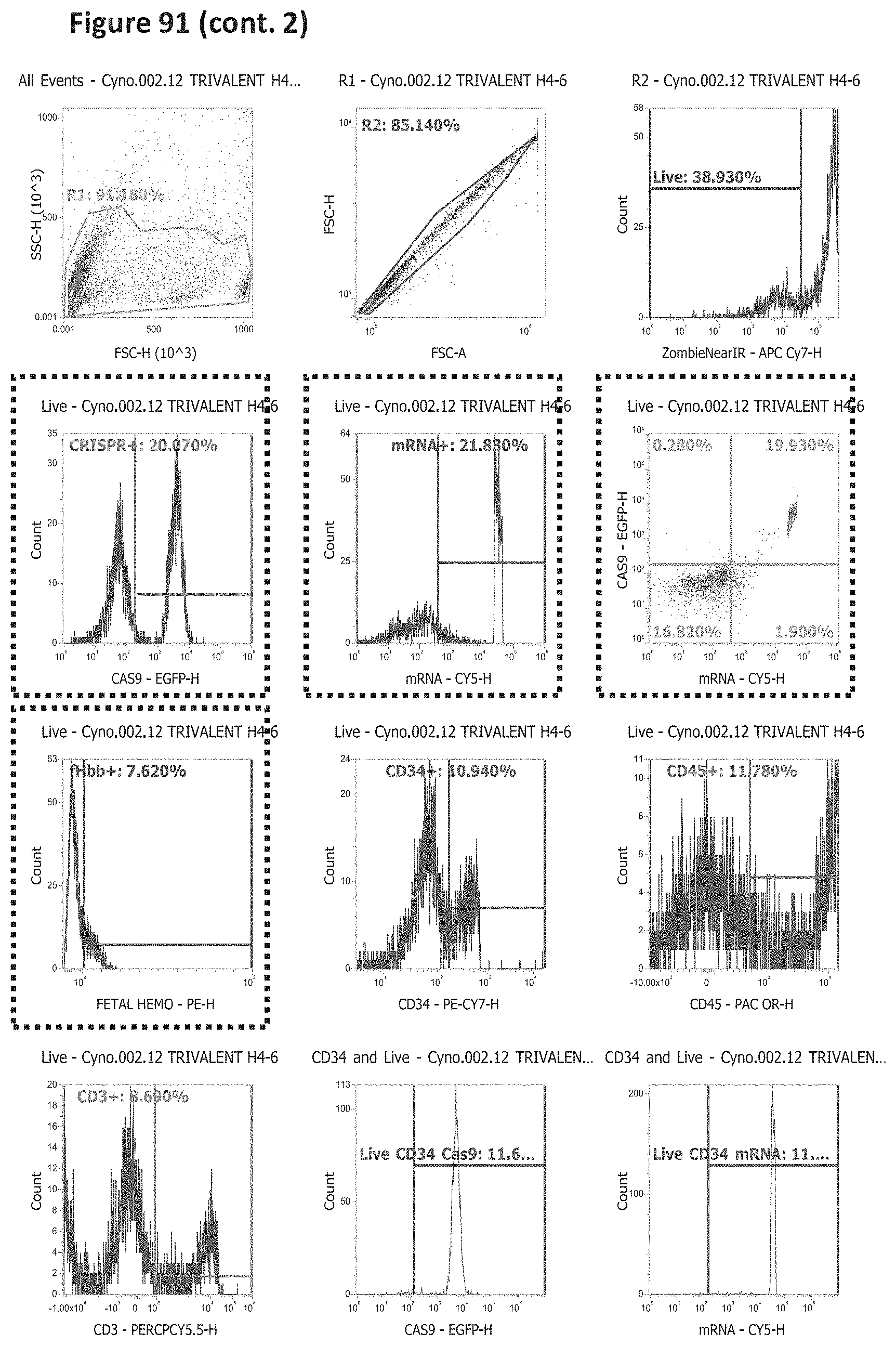
D00104

D00105
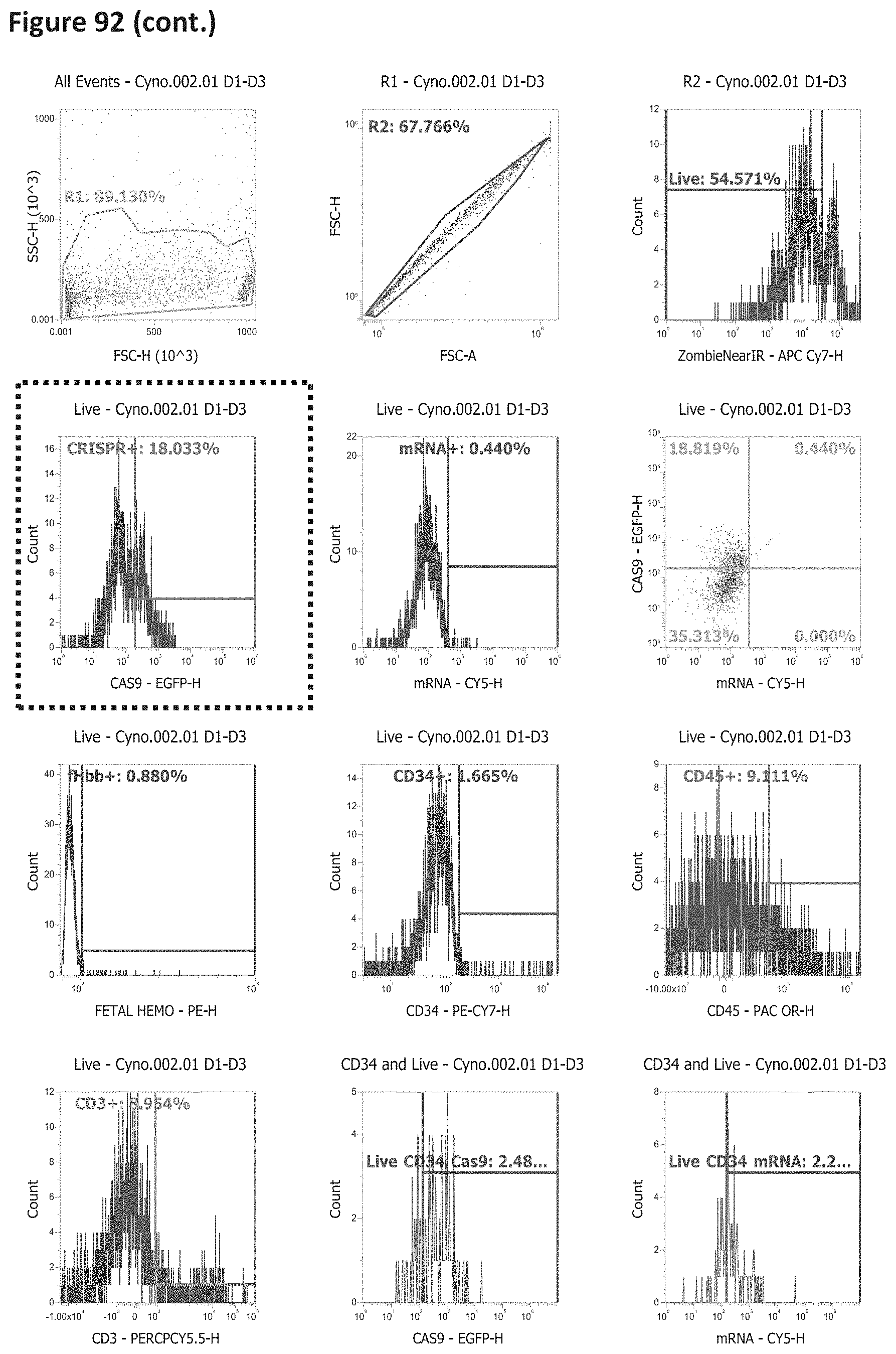
D00106
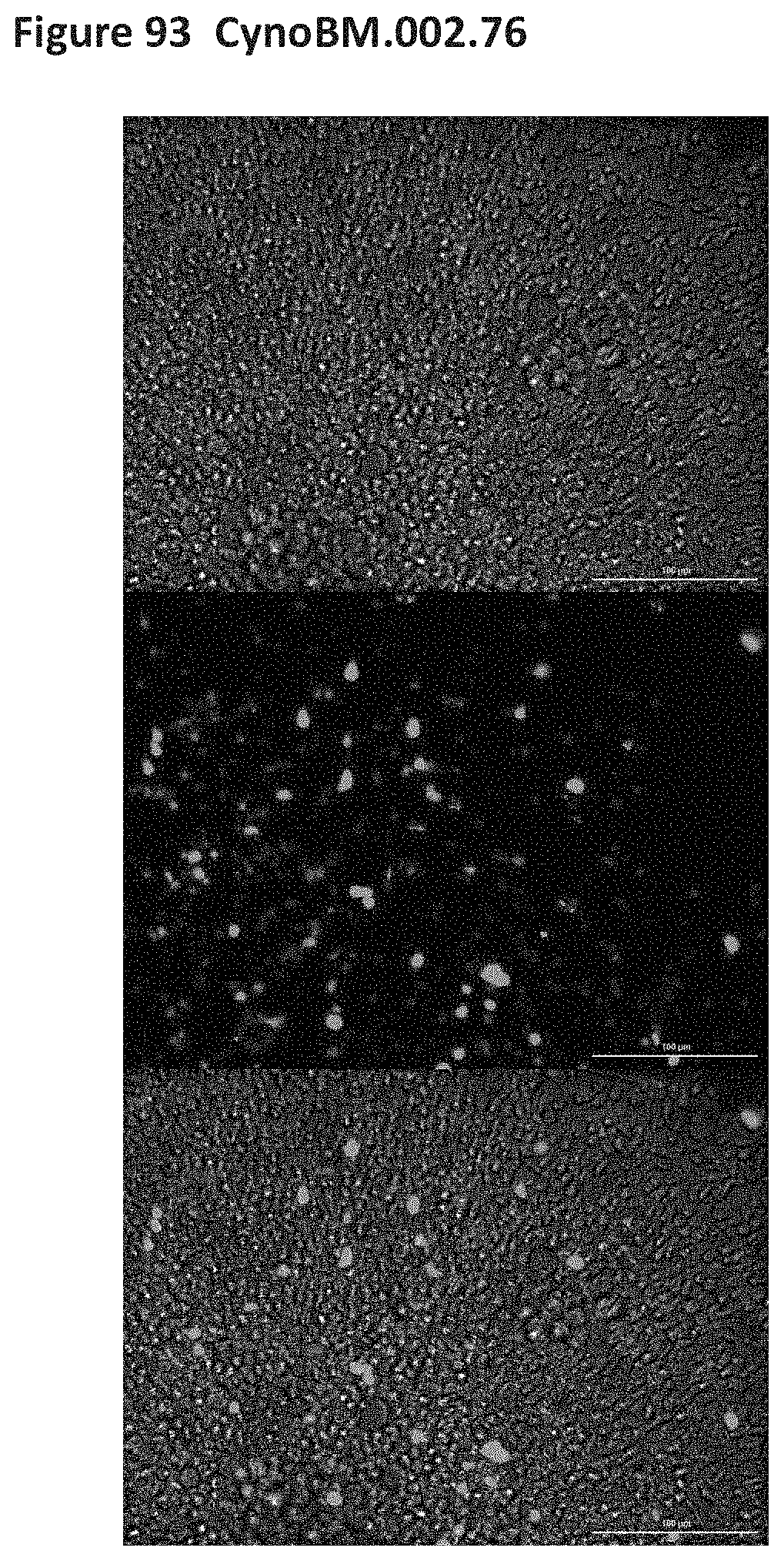
D00107
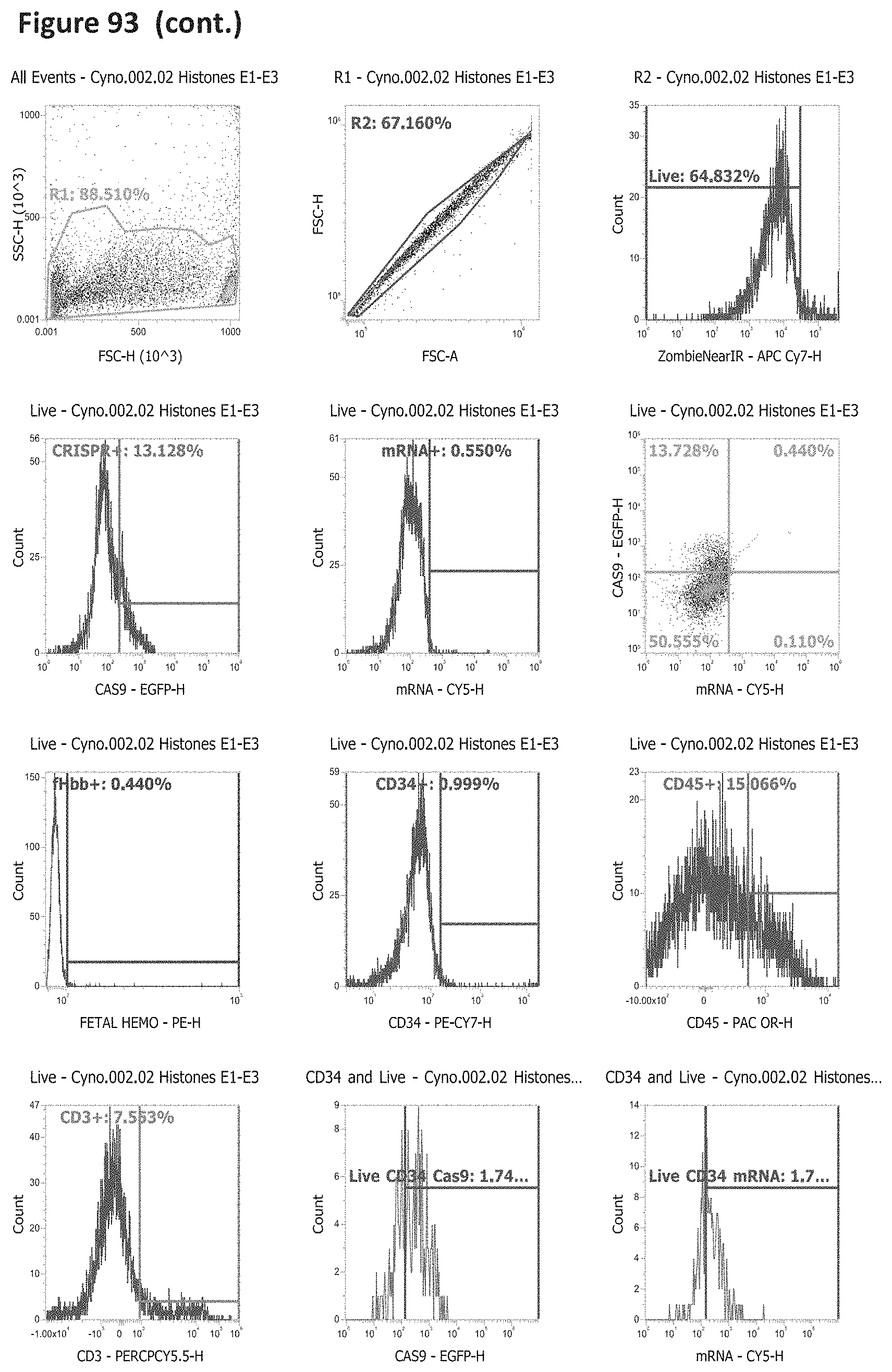
D00108
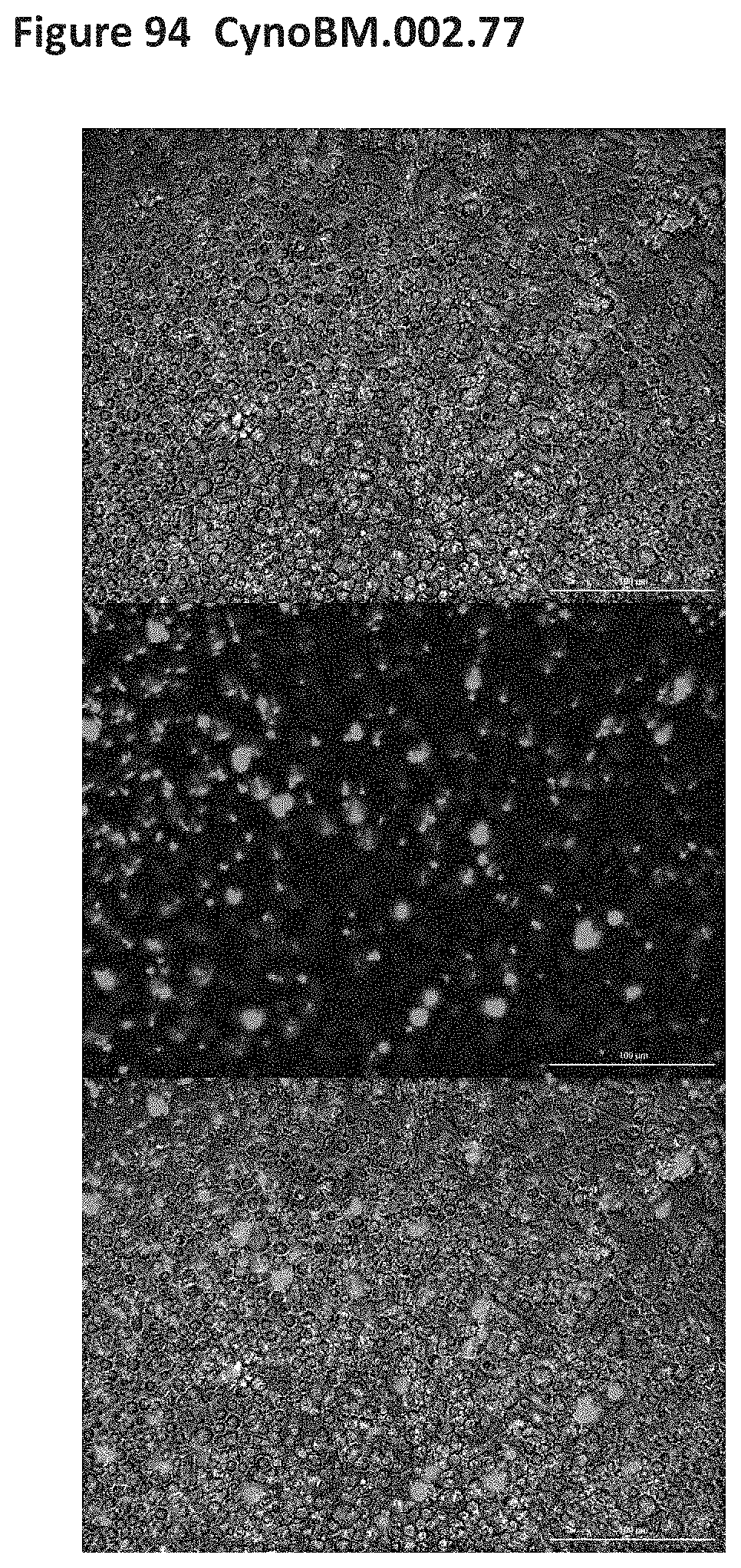
D00109
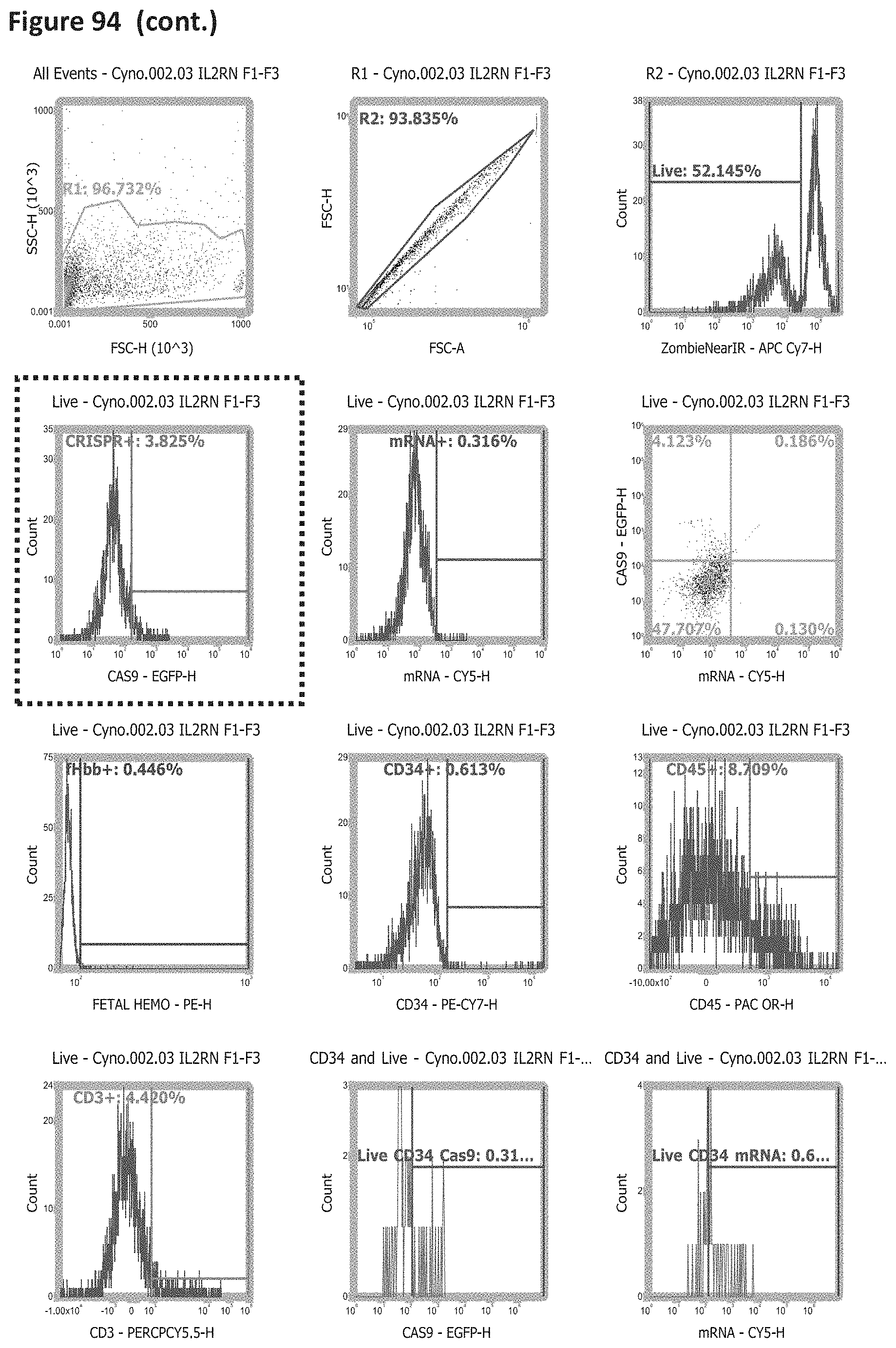
D00110
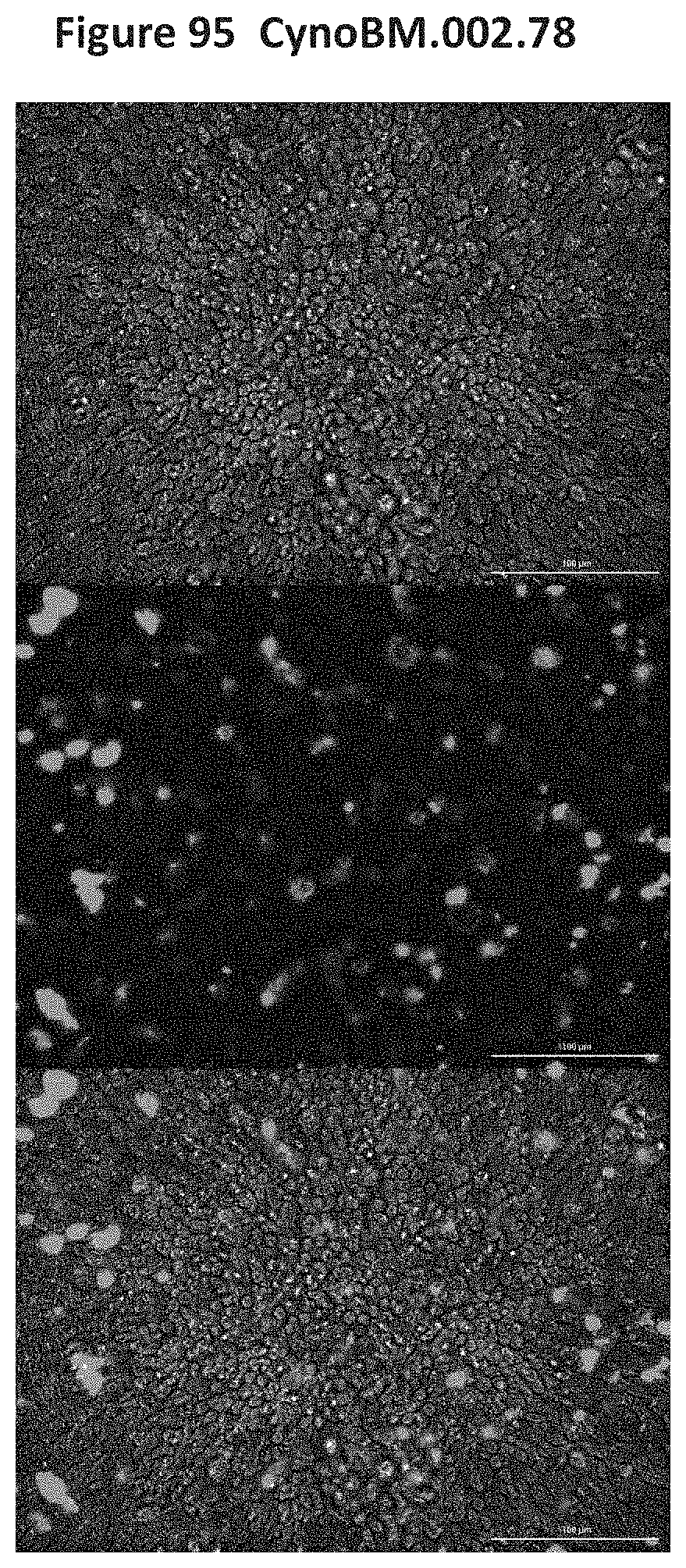
D00111

D00112
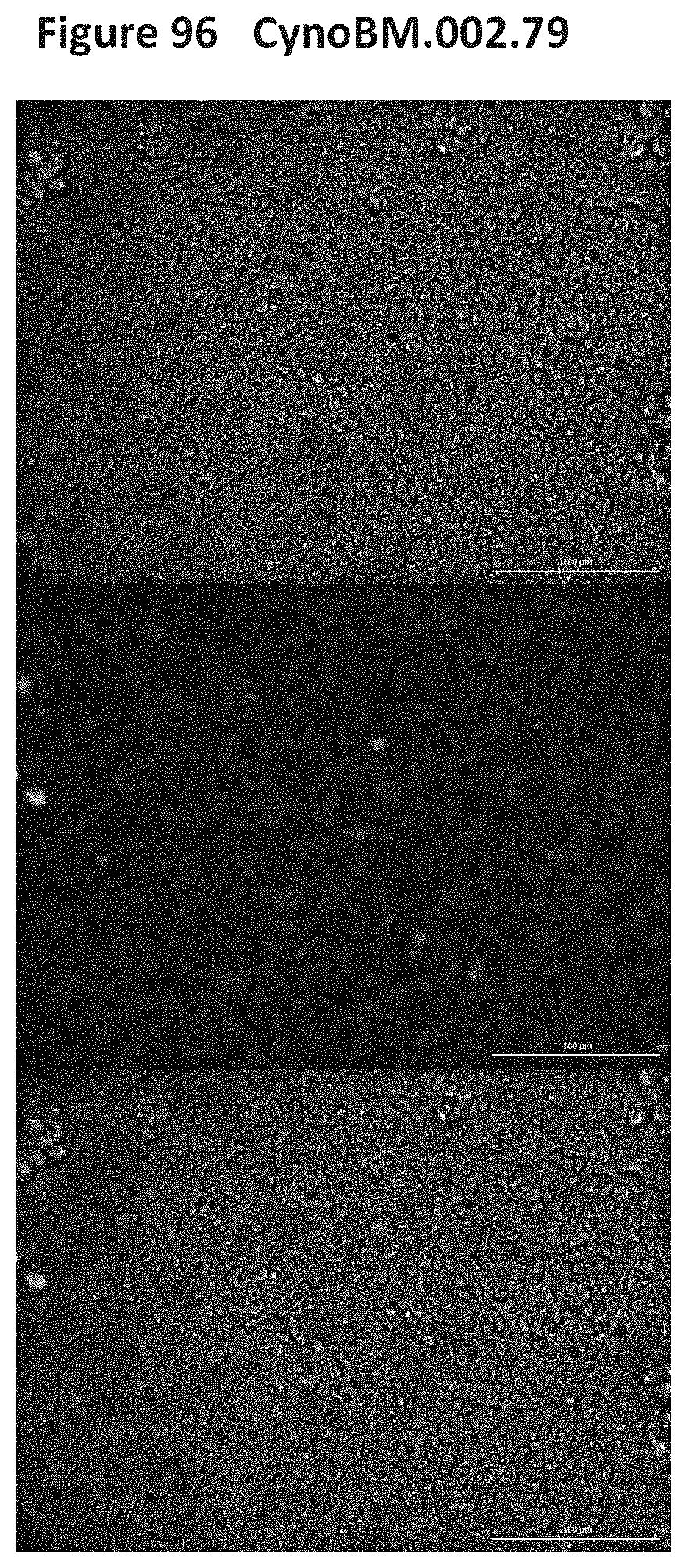
D00113
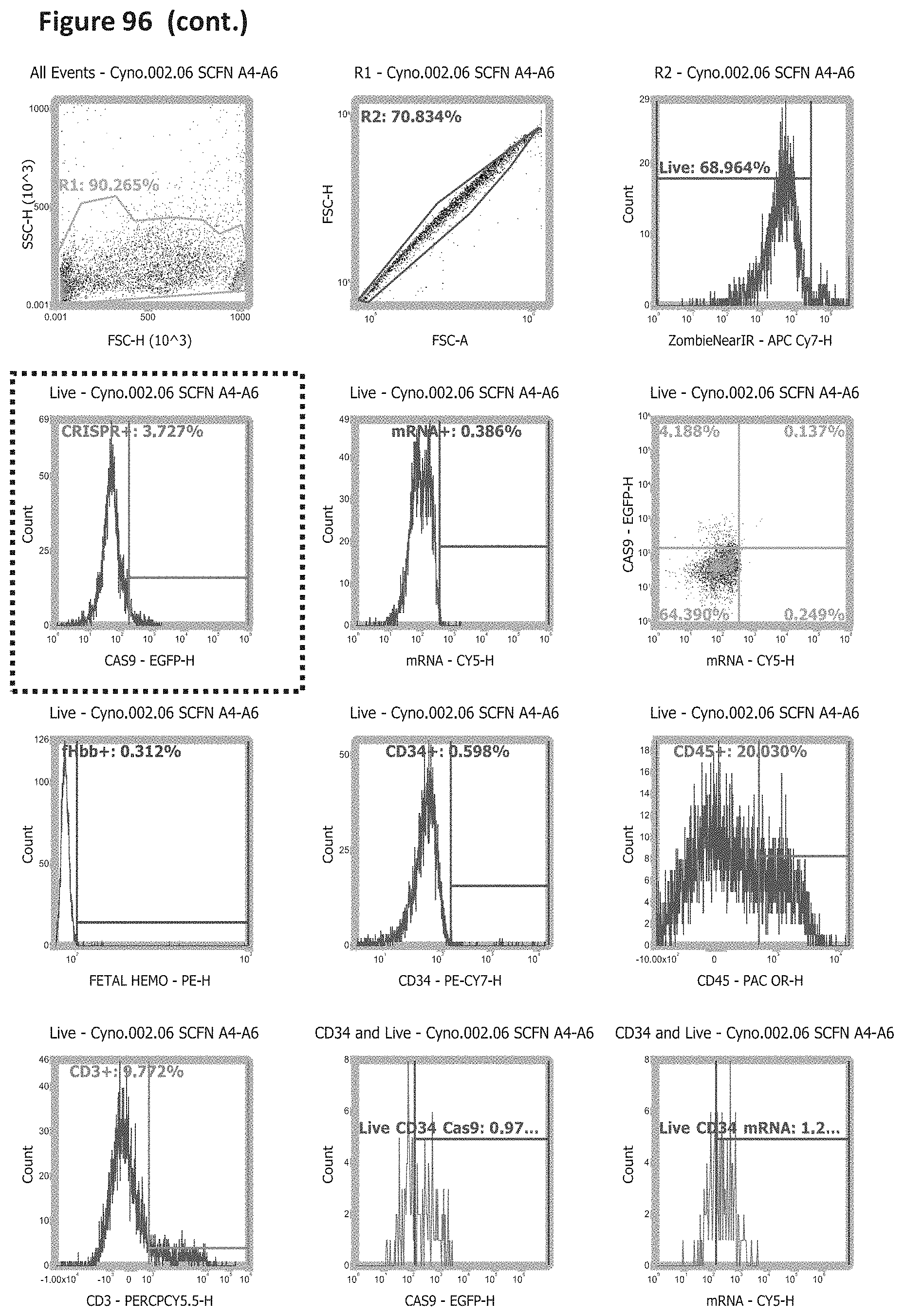
D00114
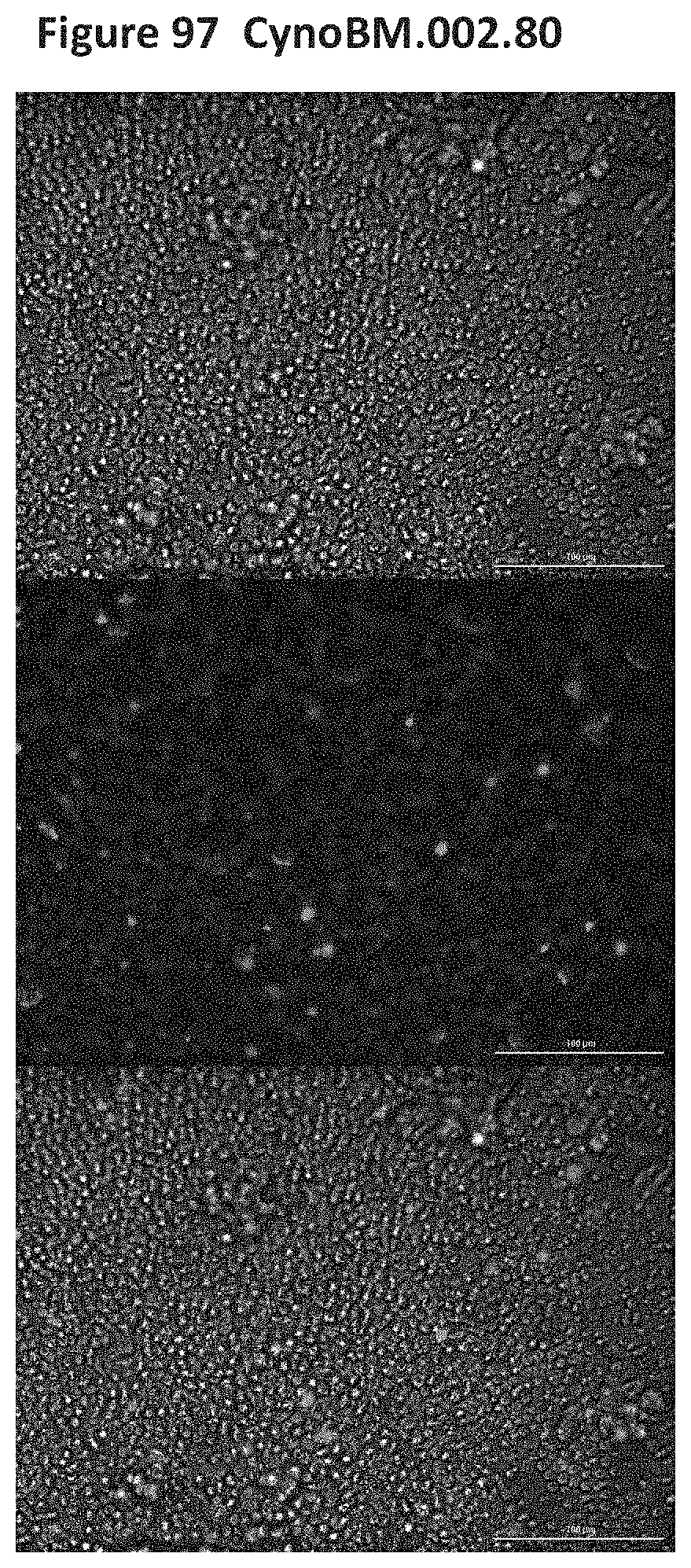
D00115

D00116
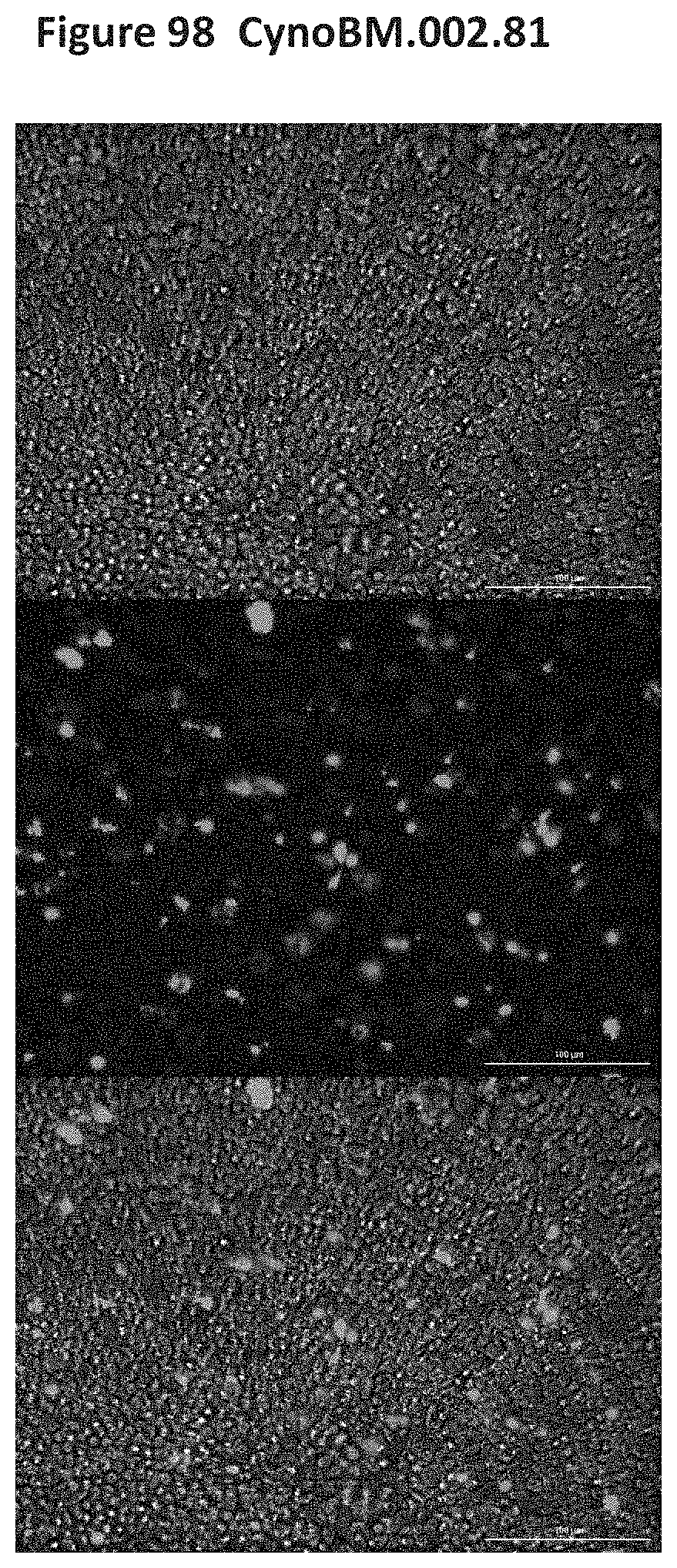
D00117

D00118

D00119

D00120
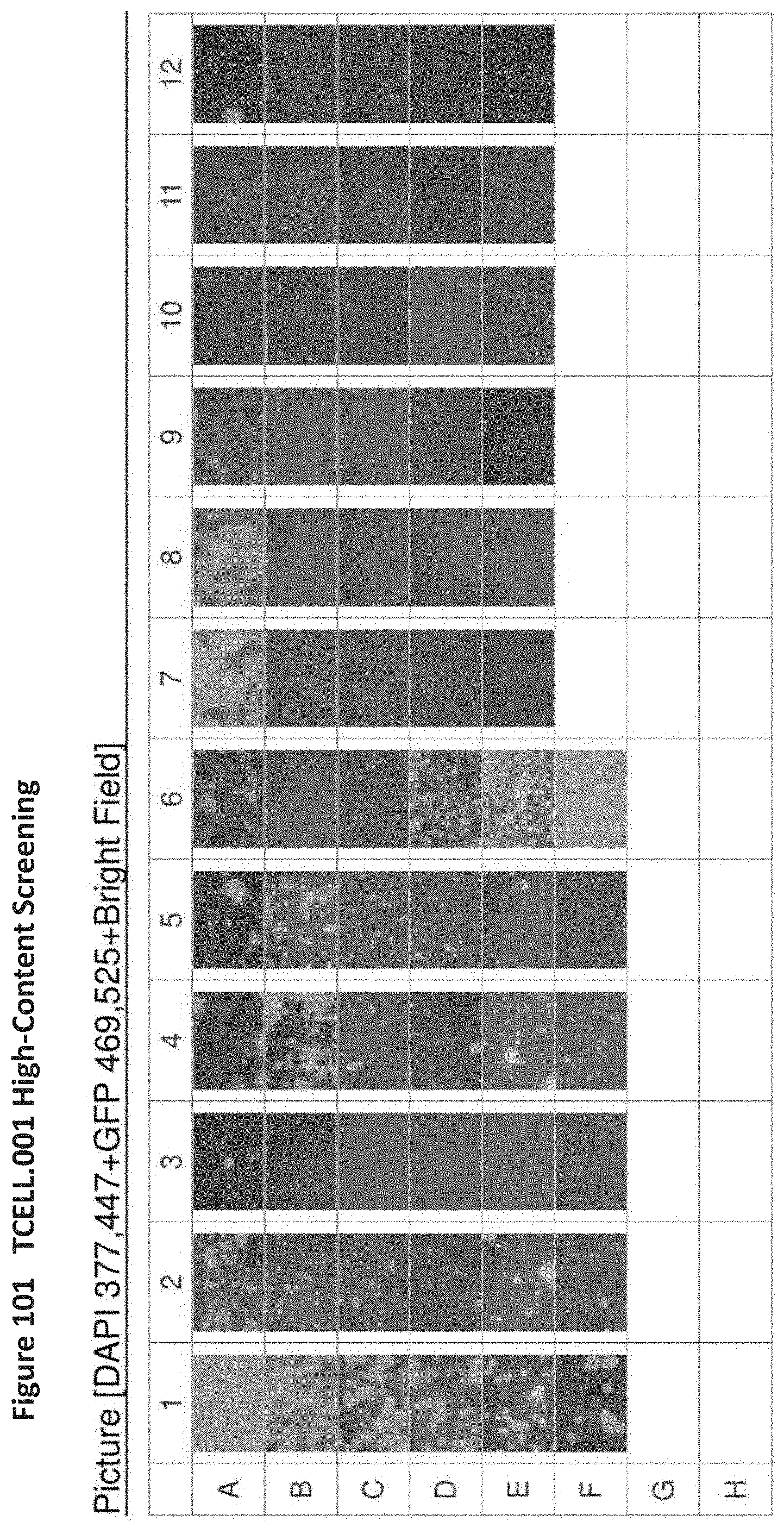
D00121

D00122

D00123
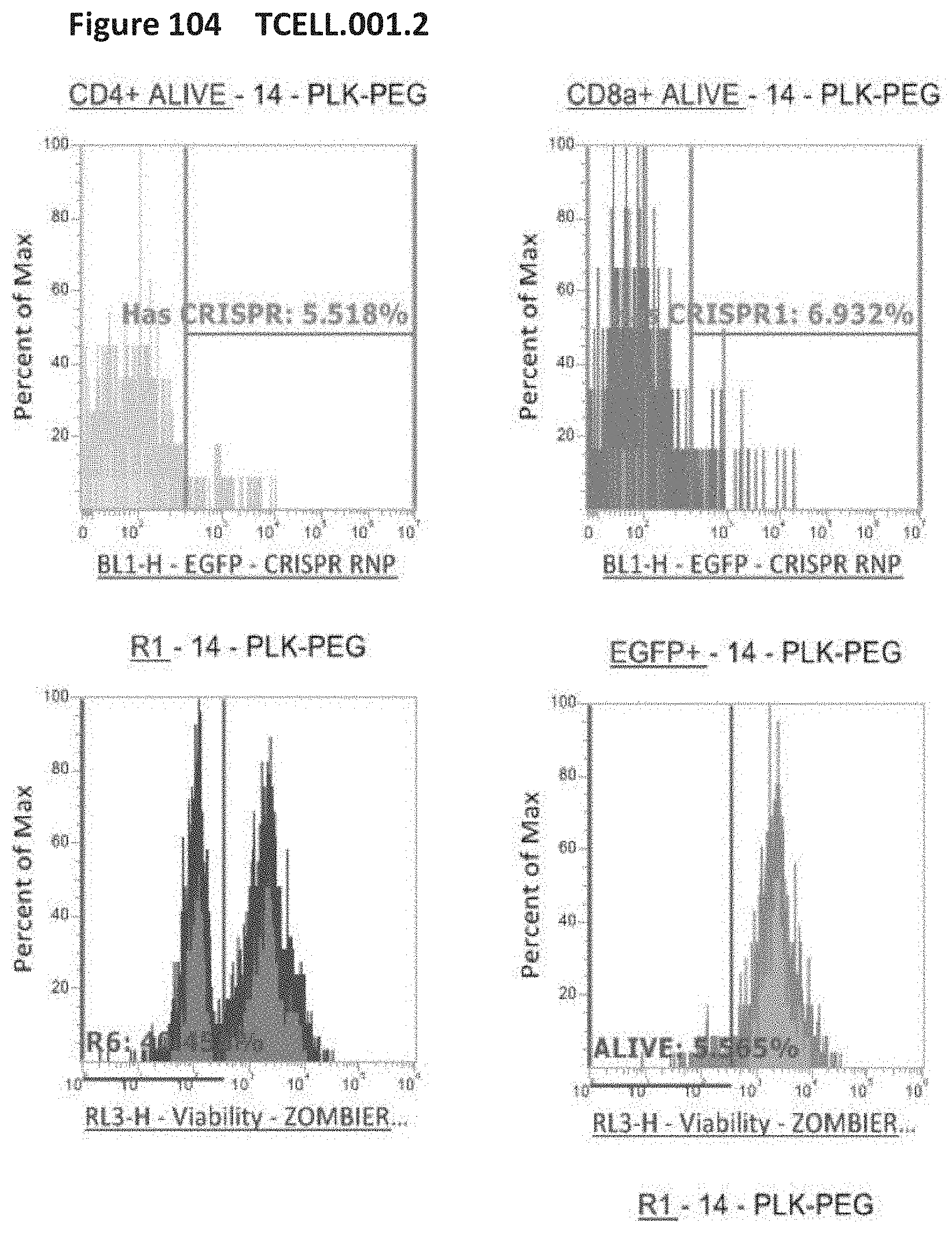
D00124
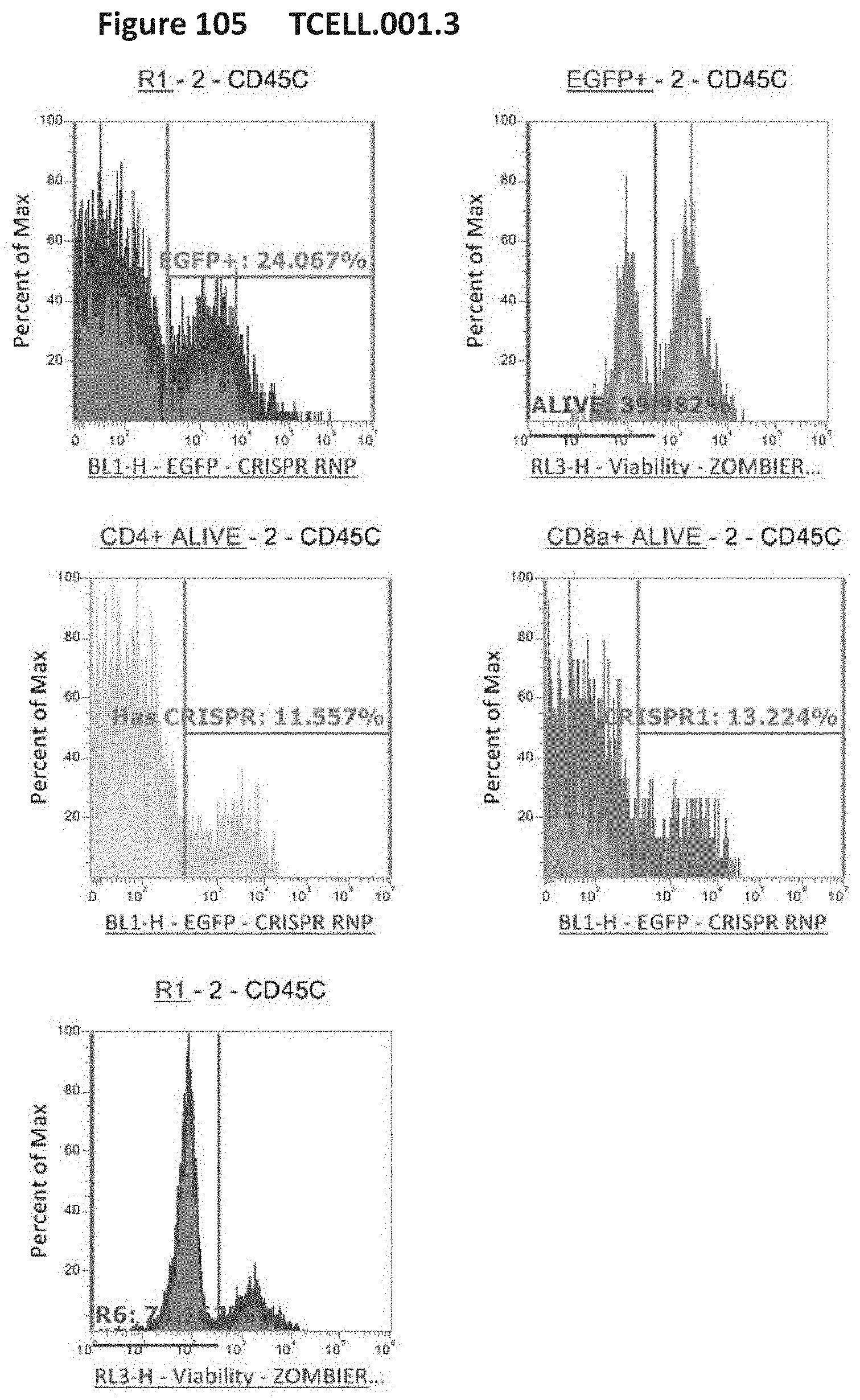
D00125
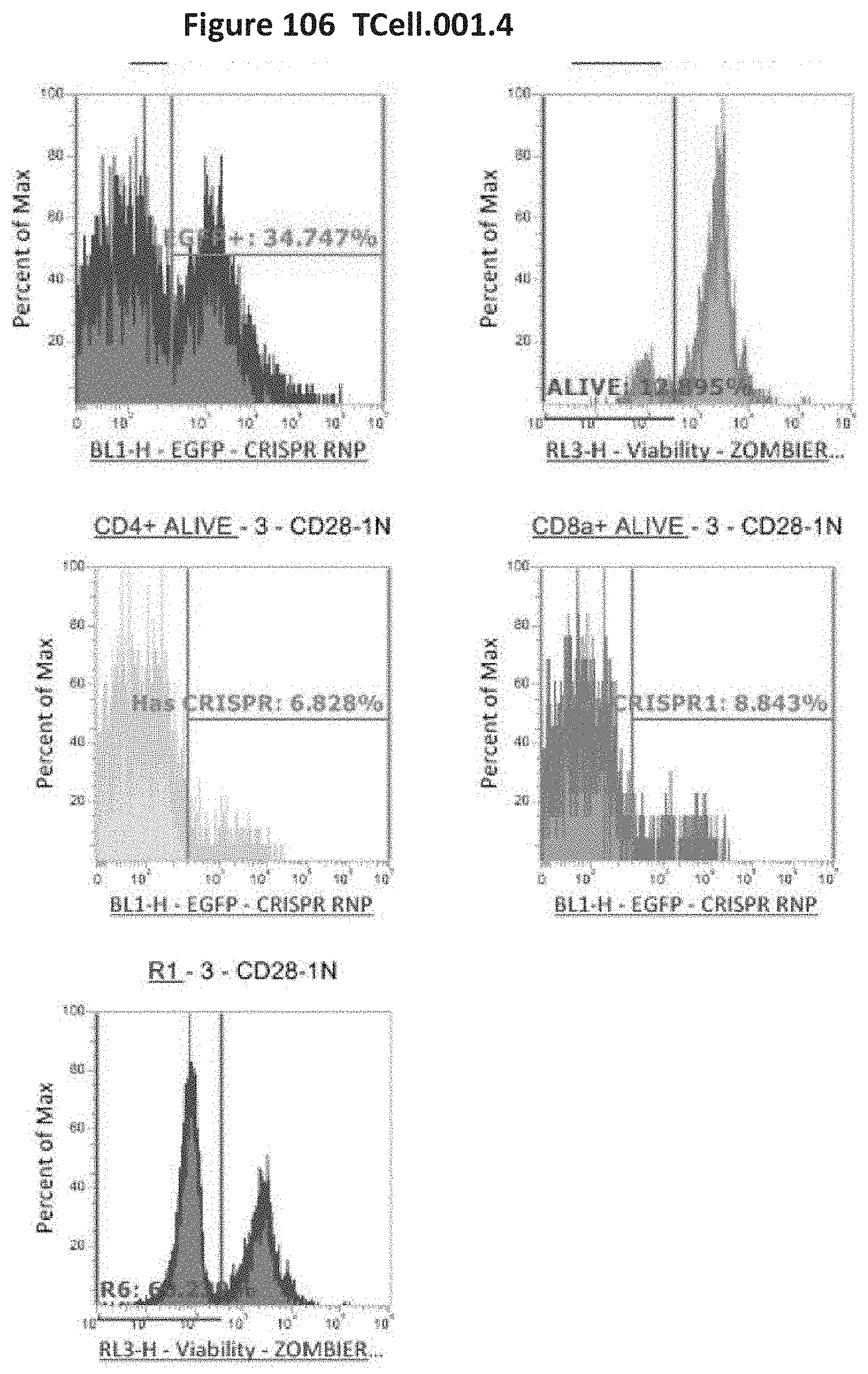
D00126

D00127

D00128
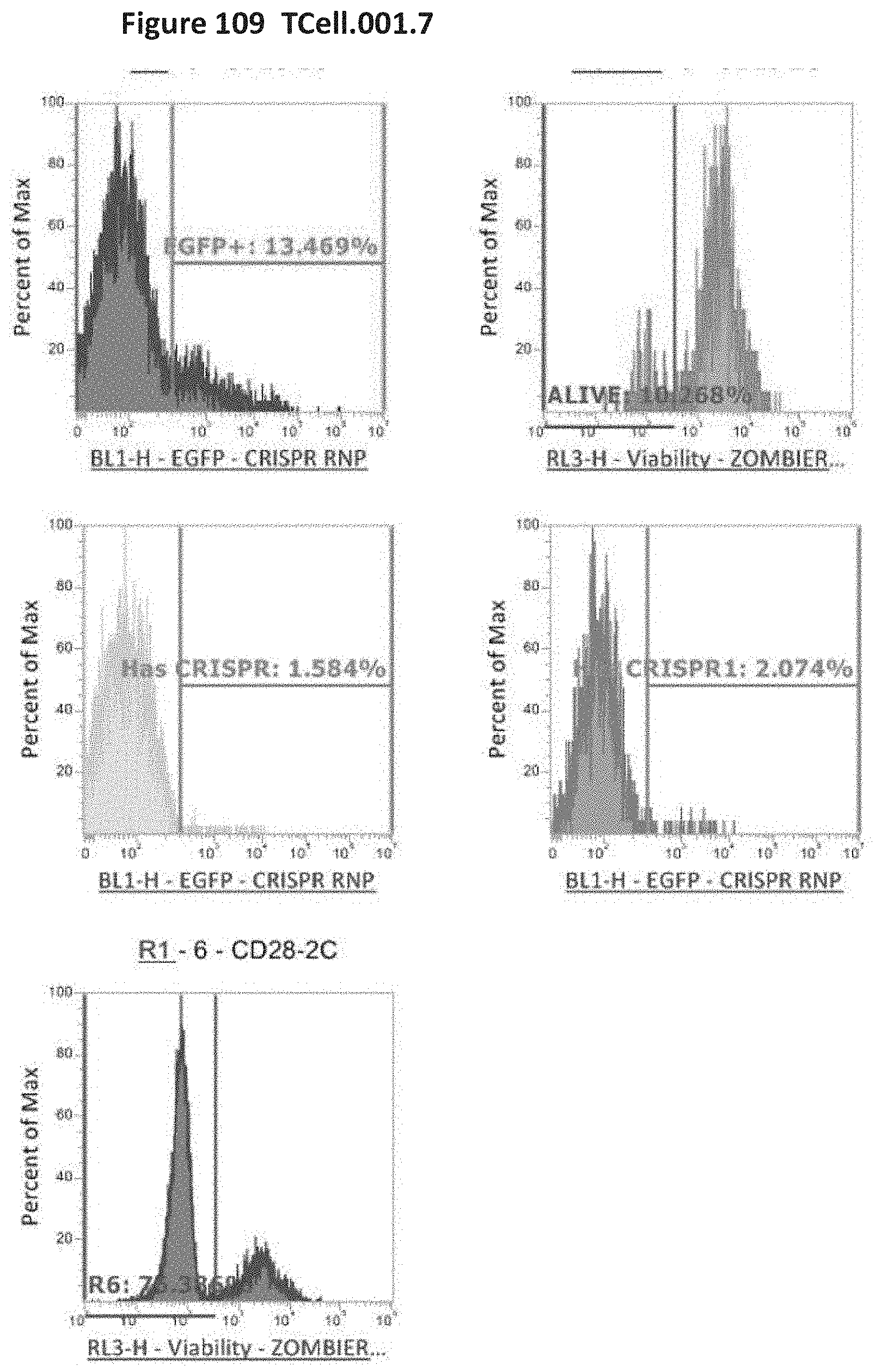
D00129
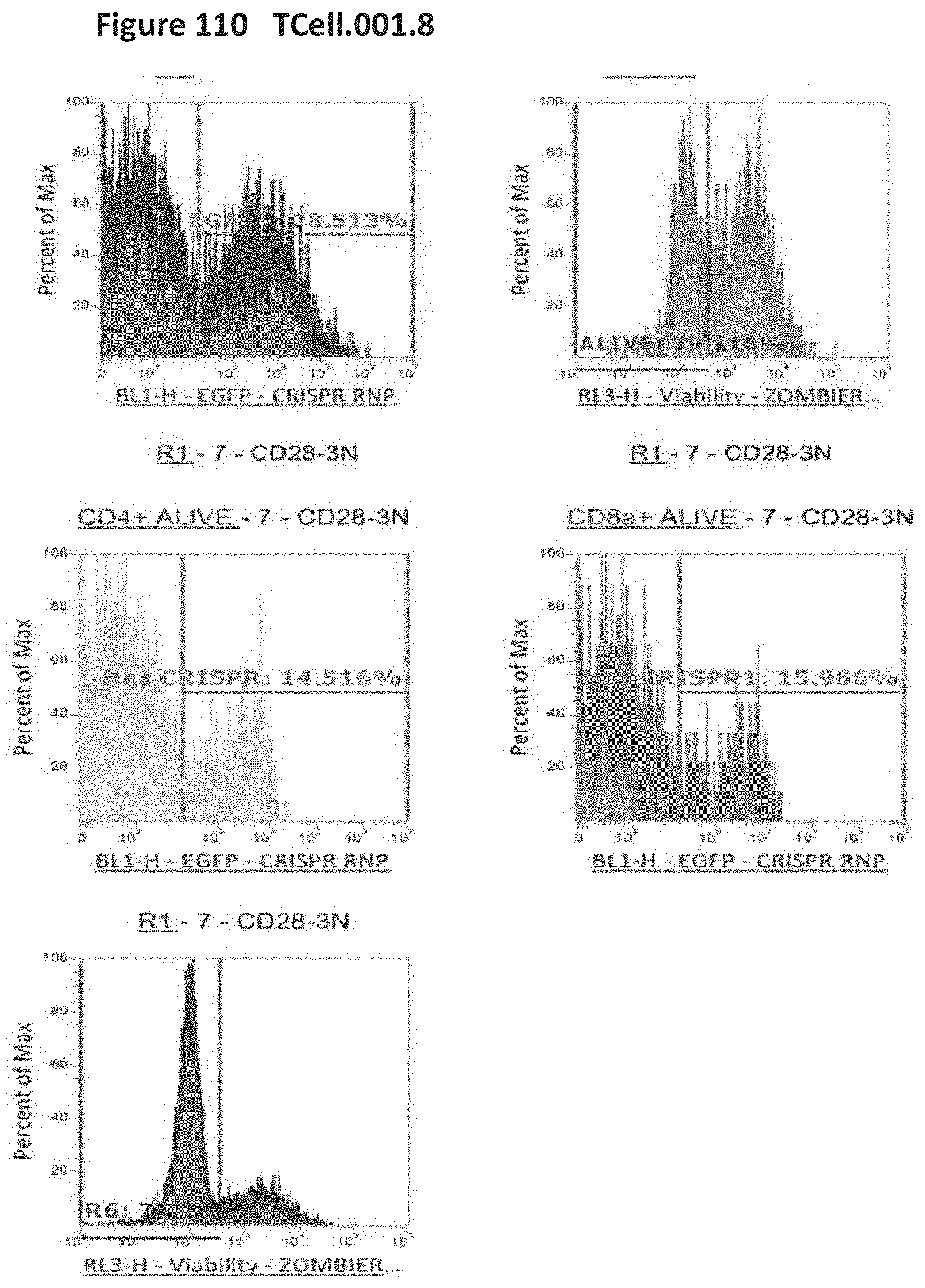
D00130
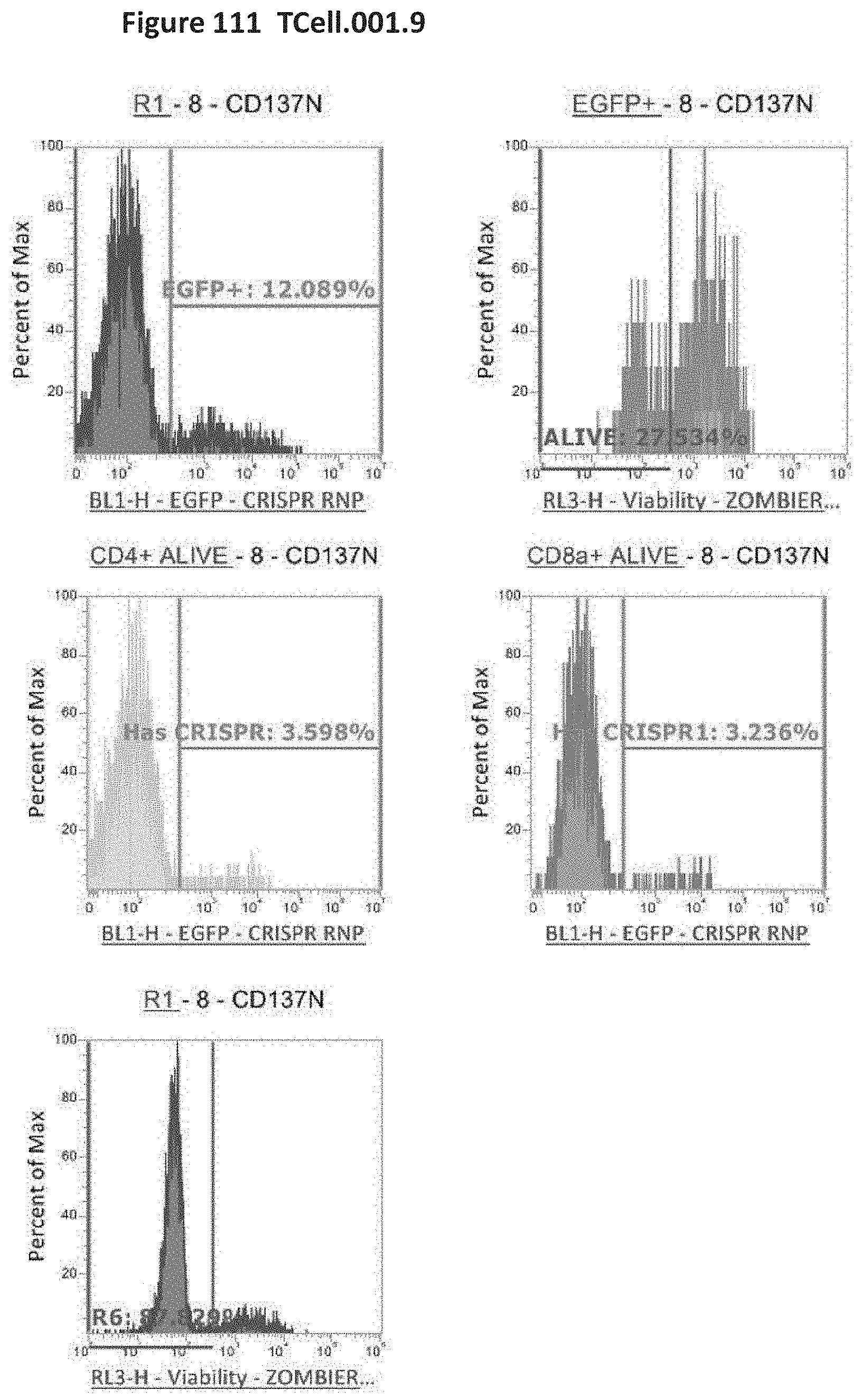
D00131
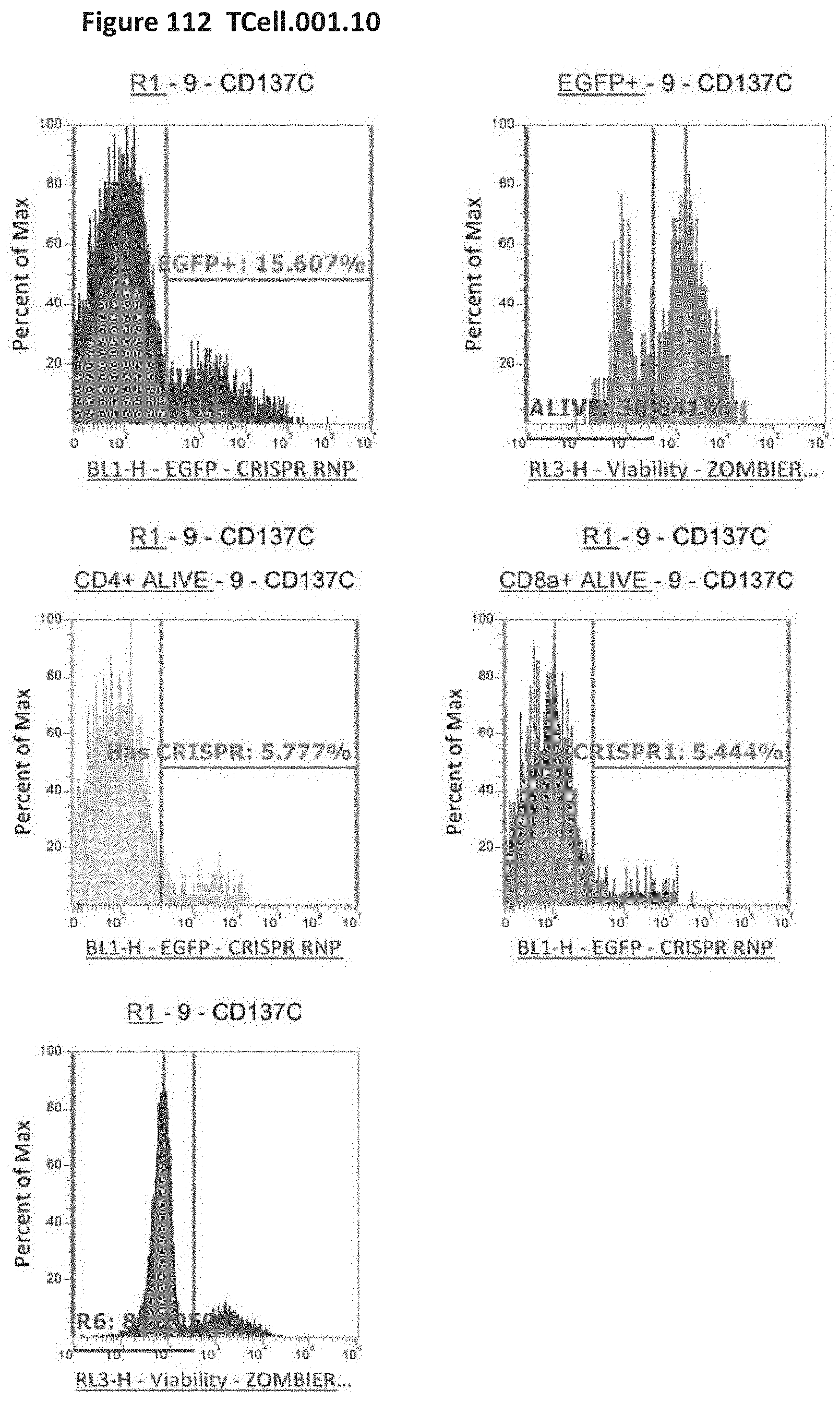
D00132
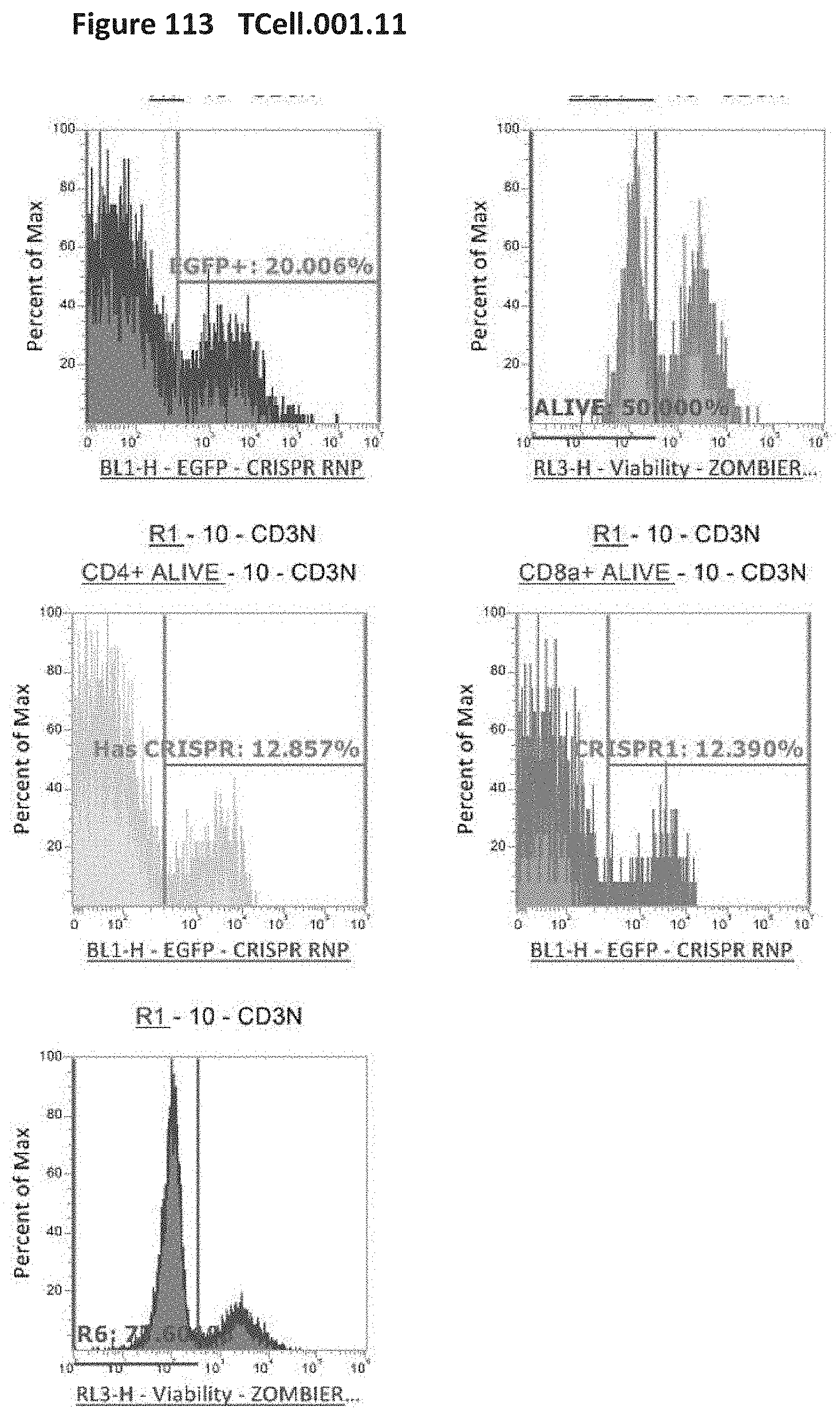
D00133
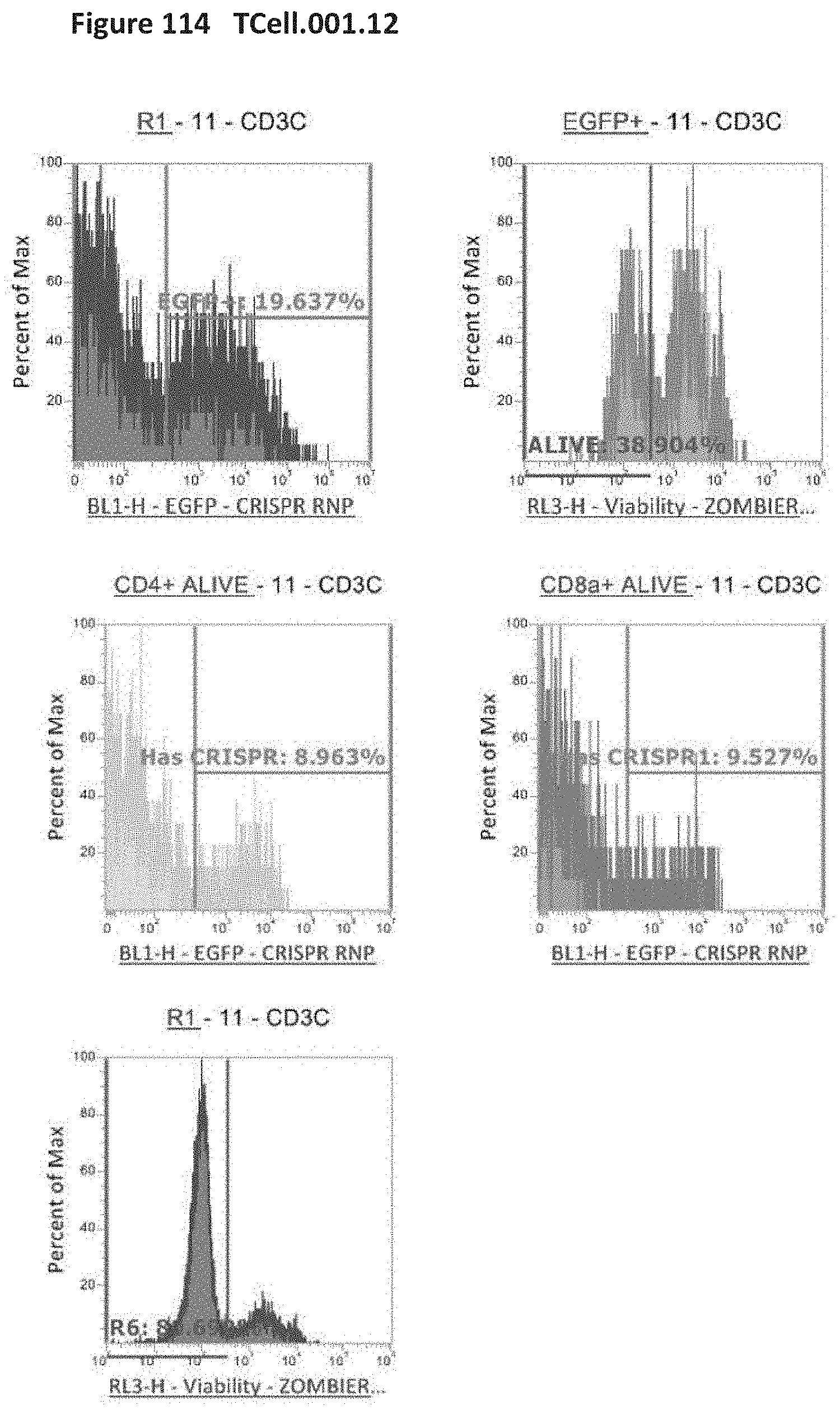
D00134

D00135
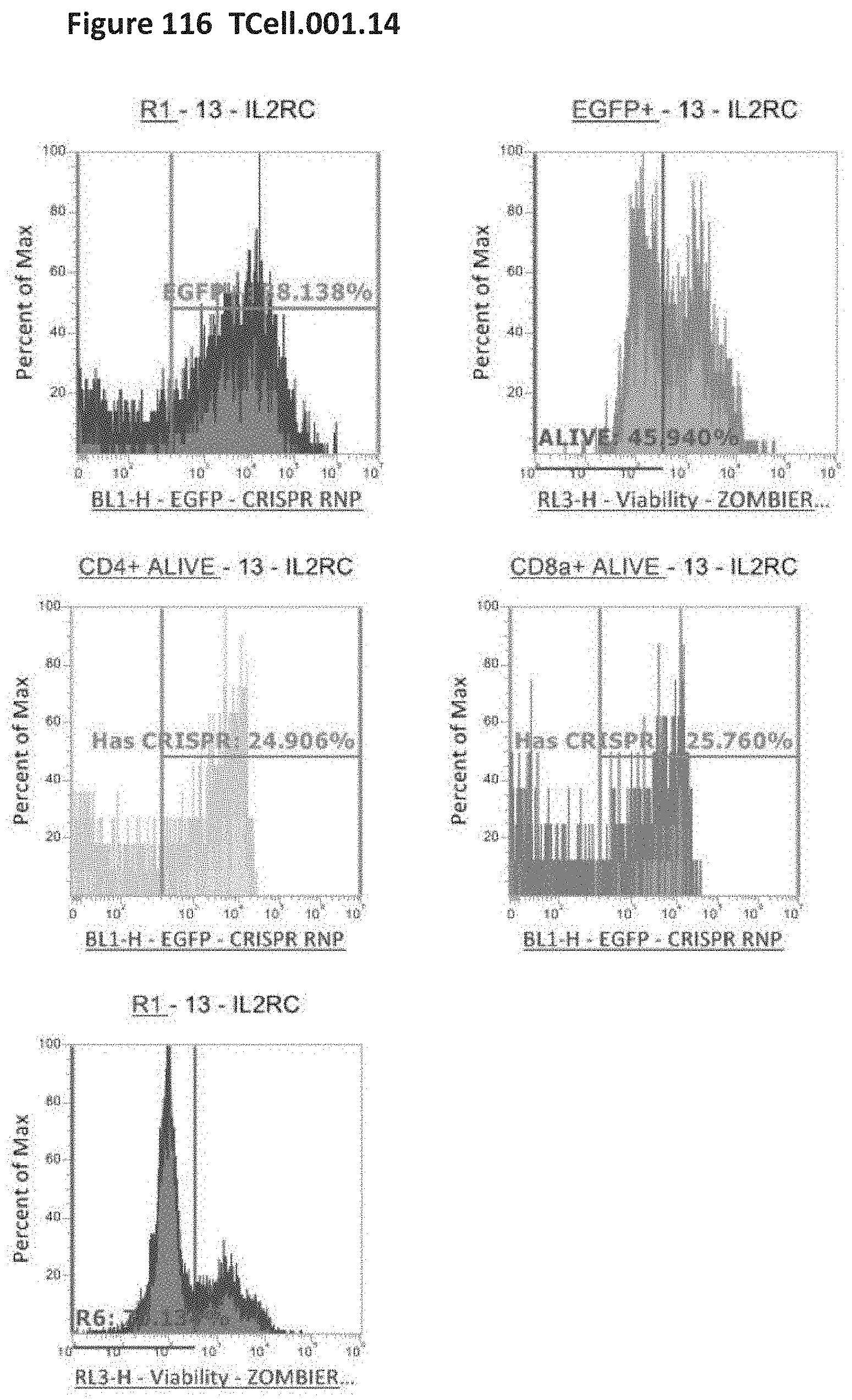
D00136

D00137

D00138

D00139
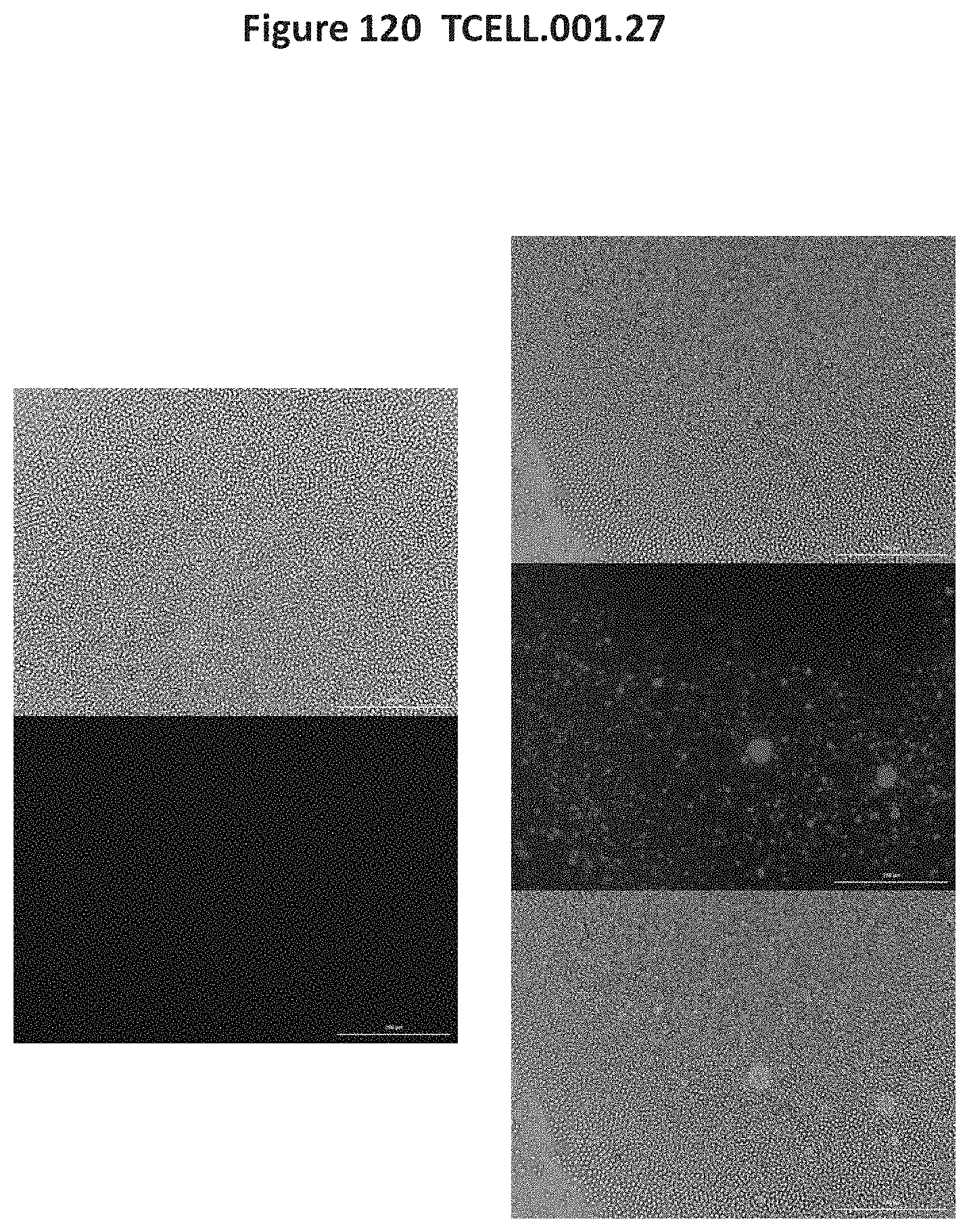
D00140
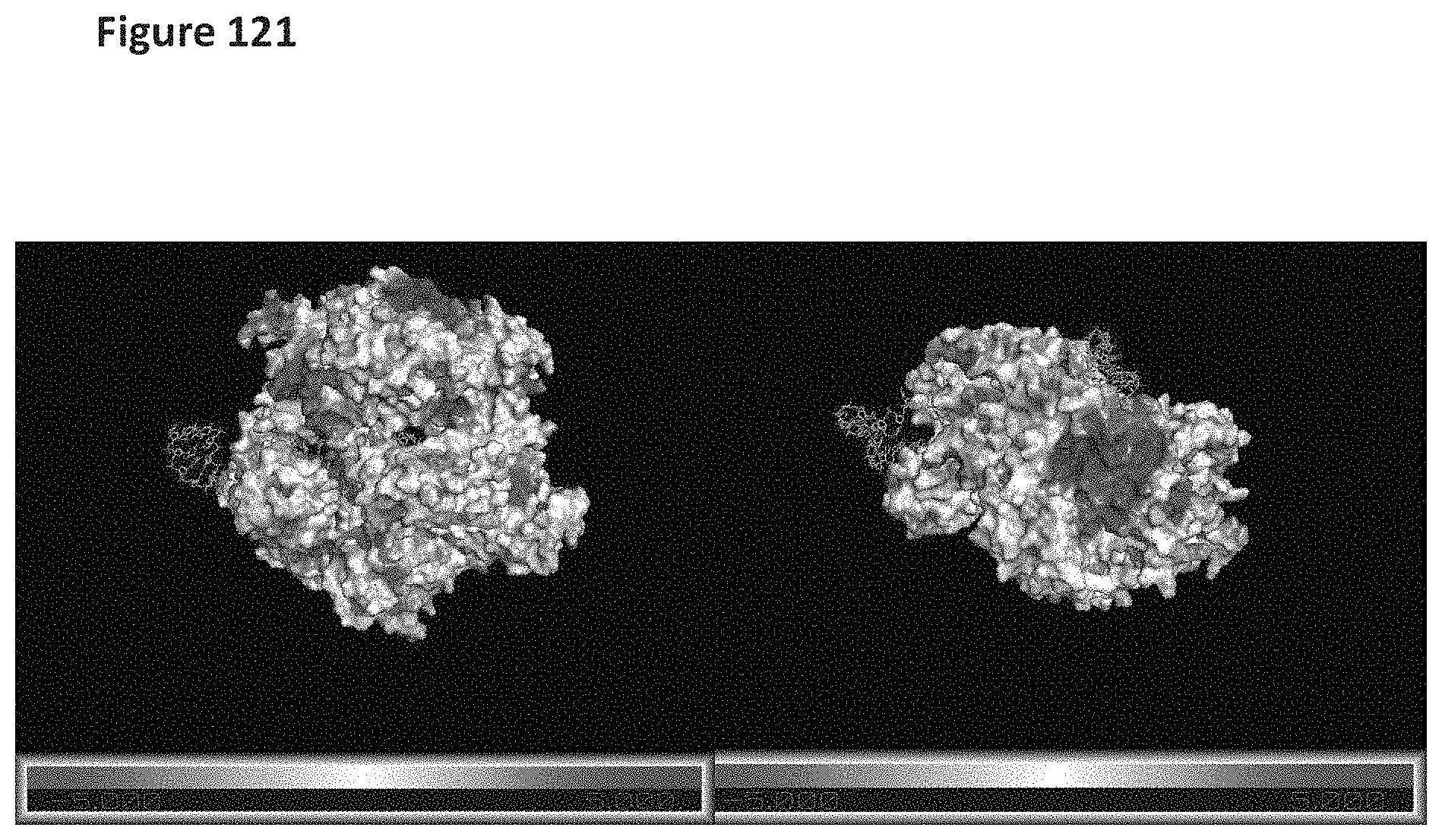
D00141

D00142

D00143

D00144
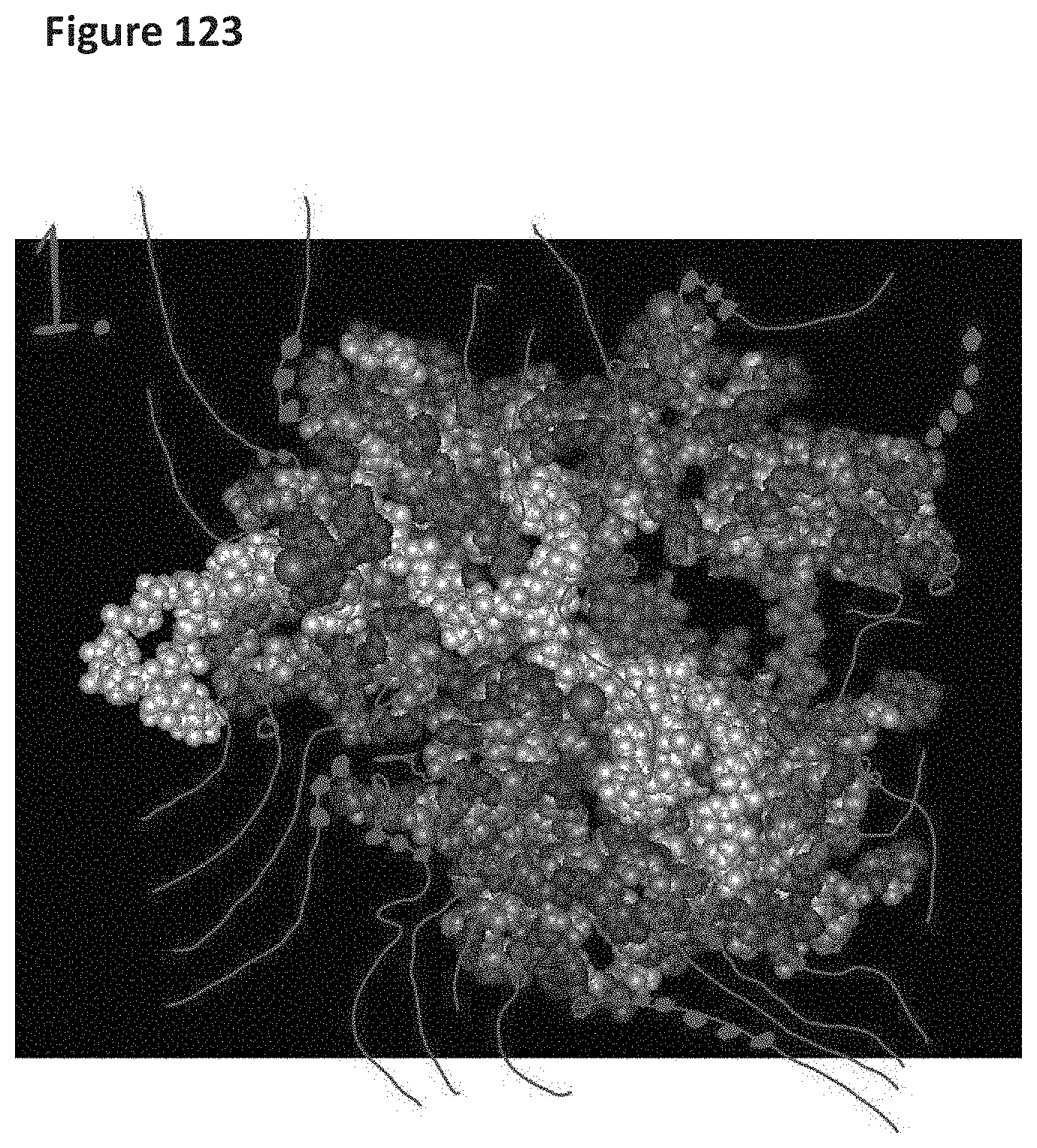
D00145

D00146

D00147

D00148

D00149
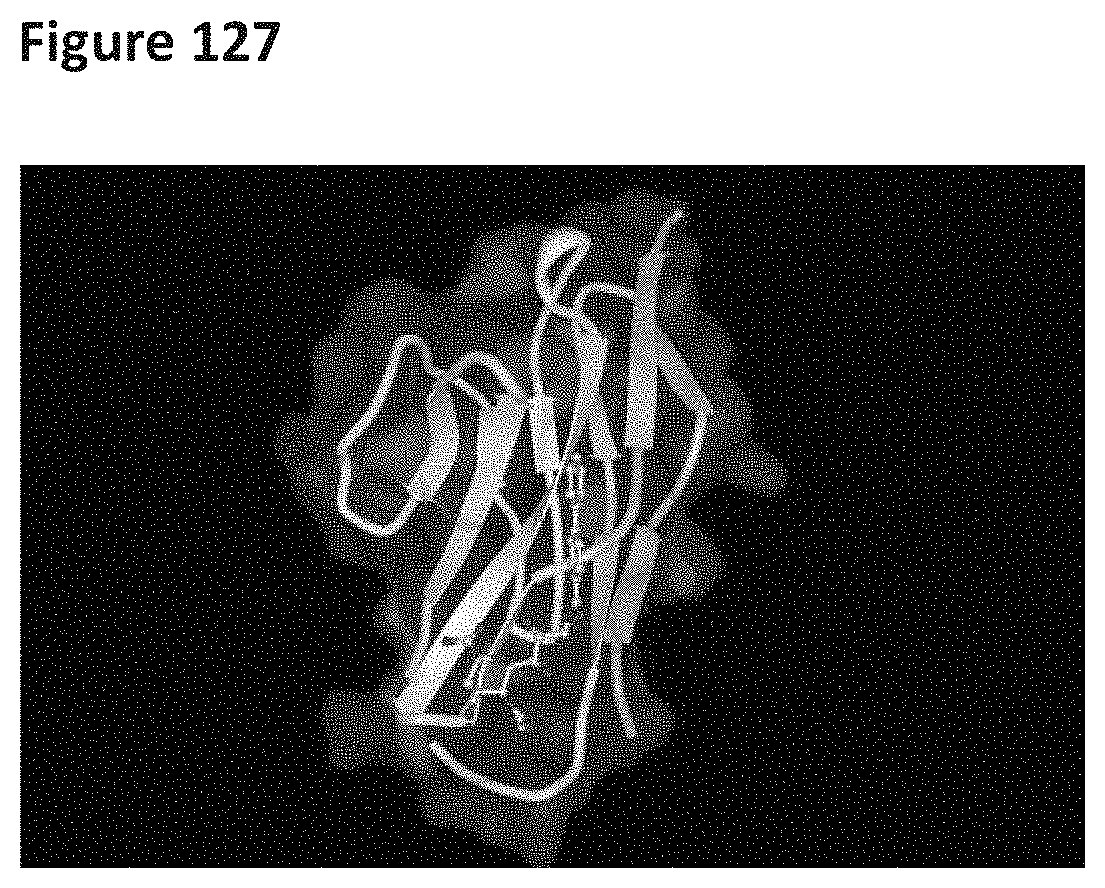
D00150
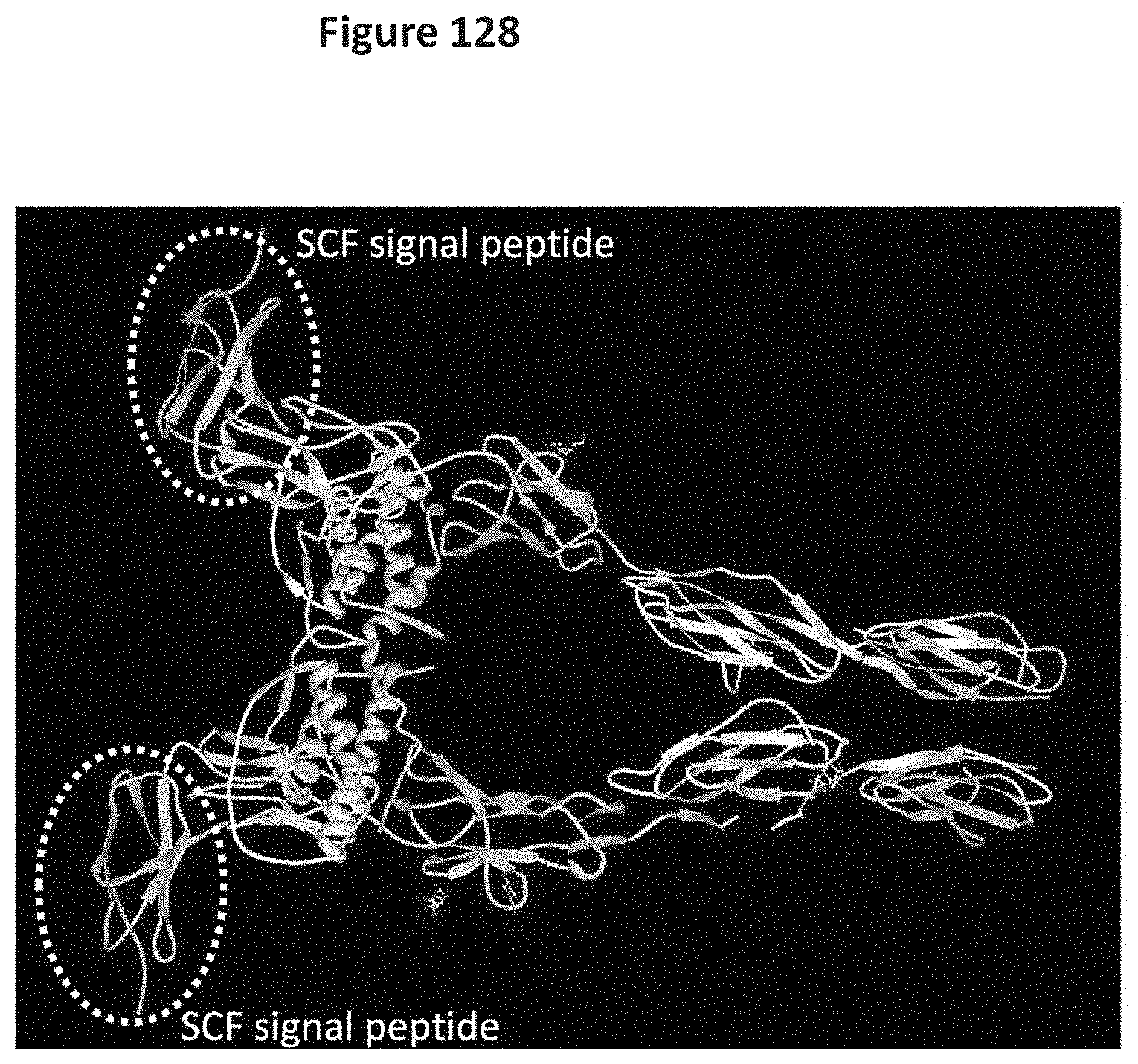
D00151

D00152
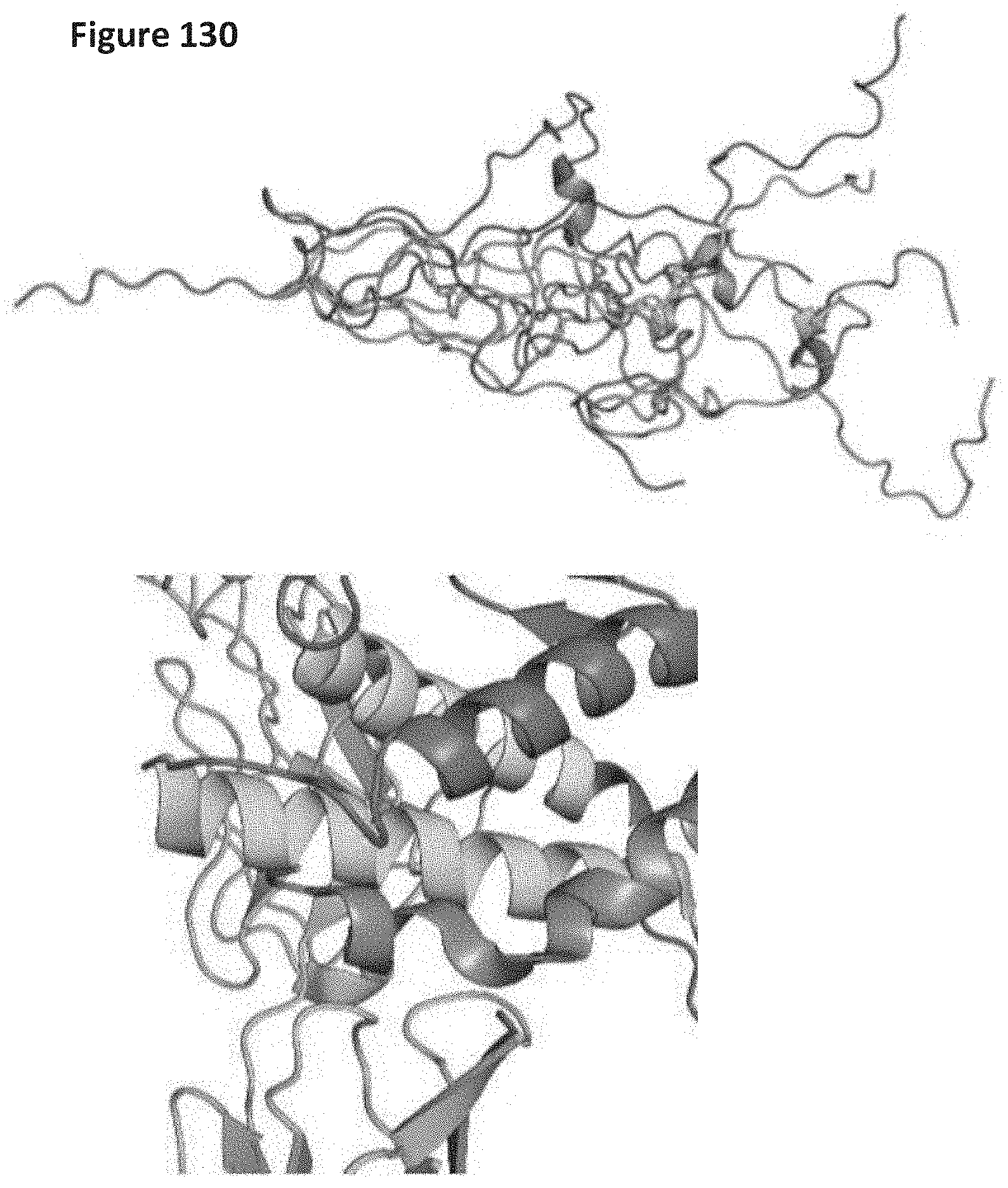
D00153

D00154
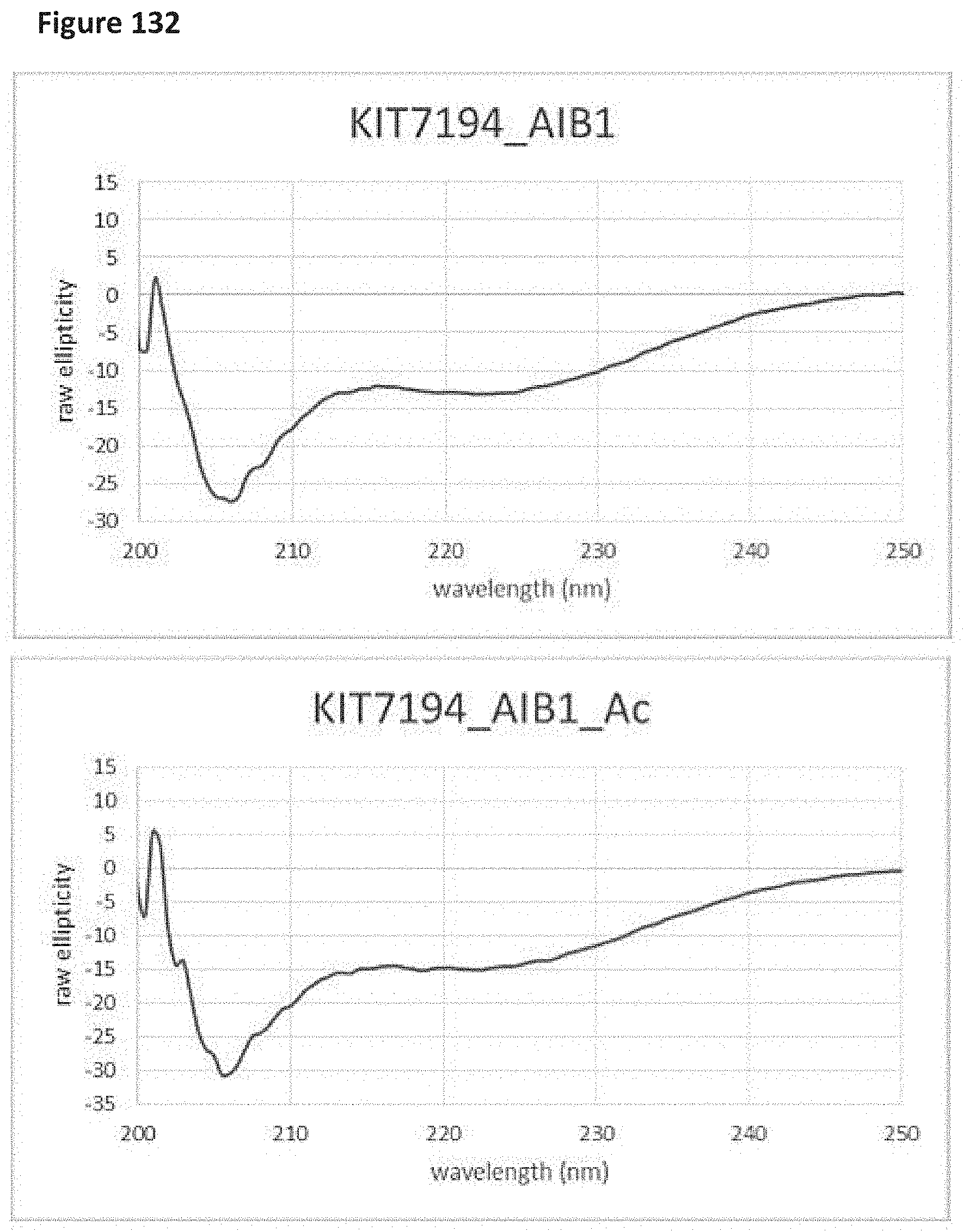
D00155
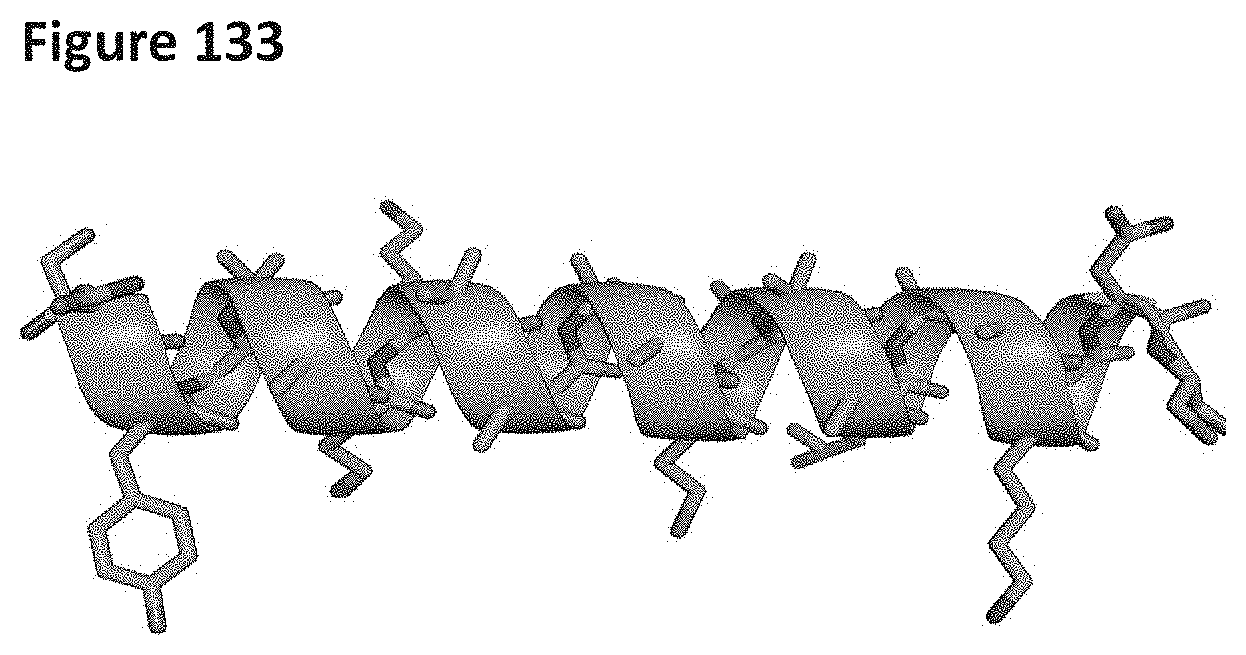
D00156

S00001
XML
uspto.report is an independent third-party trademark research tool that is not affiliated, endorsed, or sponsored by the United States Patent and Trademark Office (USPTO) or any other governmental organization. The information provided by uspto.report is based on publicly available data at the time of writing and is intended for informational purposes only.
While we strive to provide accurate and up-to-date information, we do not guarantee the accuracy, completeness, reliability, or suitability of the information displayed on this site. The use of this site is at your own risk. Any reliance you place on such information is therefore strictly at your own risk.
All official trademark data, including owner information, should be verified by visiting the official USPTO website at www.uspto.gov. This site is not intended to replace professional legal advice and should not be used as a substitute for consulting with a legal professional who is knowledgeable about trademark law.